| | |
131
|
 131 (Barcelona and Lleida) is a collaborative project between Pau Llop and Esteve Padilla. Their typefaces include Equilibrio (2019: a bespoke typeface for Proyectos Euiamor and Museo del Prado) and La Pionera (2019: for Ajuntament de Barcelona). [Google]
[More] ⦿
131 (Barcelona and Lleida) is a collaborative project between Pau Llop and Esteve Padilla. Their typefaces include Equilibrio (2019: a bespoke typeface for Proyectos Euiamor and Museo del Prado) and La Pionera (2019: for Ajuntament de Barcelona). [Google]
[More] ⦿
|
17 Dandi
|
Studio in Ypsilanti, MI. They created custom typefaces such as Jam Space (2014, brush style) and Molly may (2014, modular display face). [Google]
[More] ⦿
|
29 Letters
[Pascal Naji Zoghbi]
|
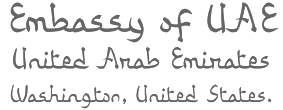 Madrid (and before that, Lebanon)-based Arabic type designer who runs the Arab type news and blog site called Arabic Typography. KHTT link. An ex-student of the KABK in 2006, he currently is a part time instructor of design and typography at Notre Dame University, Louaize, Lebanon, as well as a part time instructor of typography at the American University of Beirut (AUB), both since 2007. His Arabic type foundry is called 29letters.
Madrid (and before that, Lebanon)-based Arabic type designer who runs the Arab type news and blog site called Arabic Typography. KHTT link. An ex-student of the KABK in 2006, he currently is a part time instructor of design and typography at Notre Dame University, Louaize, Lebanon, as well as a part time instructor of typography at the American University of Beirut (AUB), both since 2007. His Arabic type foundry is called 29letters. At ATypI 2008 in St. Petersburg, he ran a workshop on the Arabic Kufi script. Speaker at ATypI 2010 in Dublin on the topic of political resistance and expression through graffiti in Lebanon and Palestine. His contributions to type design: - Massira. He has embarked on a project with Martin Majoor to design some Arabic fonts that fit Majoor's designs. He writes: Massira is my graduation typeface at Type&Media postgraduate course at The Royal Academy of Arts [KABK] in The Hague. Huda AbiFares contacted me while I was finalizing Massira and presented the opportunity to collaborate with the Dutch type designer Martin Majoor to design an Arabic typeface, which is part of the Typographic Matchmaking 01 project organized by Khatt Foundation. At first I was a bit worried due to the fact that it would be my first professional type design work and that the due date was too close. However, after taking a closer look at Martins type FFSeria and analyzing its characteristics, I noticed that the treatment of the stroke and the structure of the letters shared similarities with Massira. In both fonts the use of sharp broken curves and crispy feel is present. Consequently, I grew confident in project and decided to use Massira as a starting point for the new Arabic companion of FFSeria. Echo, which is Sada in Arabic, is the repetition of a sound caused by the reflection of sound waves from a surface. Accordingly, Sada is the echo of FFSeria. The modifications on Massira consisted of making Sada perform like FFSeria. It had to have the same point size, line space, color, contrast and feel as FFSeria. Concerning the details of Sada and the inclined angle of the vertical strokes, it was derived from the FFSeria Italic. So Sada has the same feel as the Roman but is inspired from the Italic. More on the Sada project. In 2009, Sada was renamed FF Seria and published by FontFont.
- Another project of Zoghbi involves a type family being developed for newspaper headlines.
- In 2007, he created a 3-style Phoenician type family called Fniqiya.
- Alef Pixel Caps Type for Alef Magazine (2008). Done with Huda AbiFares. This is a Latin ornamental type family.
- Al Rouiya Arabic Type for the Al Rouiah Newspaper in Kuwait, 2008.
- Bukra display type for Ibn Battuta Mall in Dubai, 2008. This Futura-like typeface saw a variable part added in 2020. Adrien Midzic and Swiss Typefaces aided with the Latin.
- A corporate font under the heading, Arabic for Univers (2008). Zoghbi: An Arabic corporate typeface for a global shipping and transport company. The Arabic is intended to work with the Latin type Univers. Unfortunately, I can't mention the name of the company nor the design firm I did this Arabic type work for. I was the Arabic type consultant/specialist and associate type designer alongside Leah Hoffmitz. The font will used in all Arabic publications, ads and packaging for the company.
- Baseet (2009) is a hybrid Neo-Naskh / Modern Kufi geometric typeface. It is a mixture of straight vertical, horizontal and diagonal pen stokes incorporated in-between curved corners and edges. In 2020, Pascal Zoghbi (29LT) and Ben Wittner released the monospaced Arabic / Latin typefaces 29 LT Baseet Variable and 28 LT Zawi Variable.
- At FontStruct, he made Arapix (2009).
- UAE Embassy Corporate Type (2010). This is a commissioned Latin typeface based on the same concept as of an Arabic font. Each of the 26 Latin letters has Caps, Initial, Medial and Final shape enabling the letters to connect as in the Arabic script. The drawing of the letters was all done using the Arabic calligraphic bamboo stick and based on the Naskh Calligraphic Style. Opentype help from Erik van Blokland.
- The Mathaf Corporate Arabic-Latin Font (2011). Mathaf Arab Museum of Modern Art opened its doors to contemporary Arab art lovers in December 2010 in Doha, Qatar.
- Nada Debs (2010): a contemporary geometric Kufi type commissionewd by Nada Debs.
- For Ascender, he did Droid Arabic Naskh (see OFL), Droid Persian Naskh, and Droid Arabic Kufi (2010, OFL).
- 29LT Azer, done with Ian Party and Wael Morcos: Azer in Arabic means friendly, ready to assist and lend a hand. This multilingual typeface combines simple lines with careful detailing to create a serious but approachable look. The Arabic is a Naskh / Kufi hybrid and retains a balance between calligraphic angular cuts and unadorned construction. The Latin is a humanist sans-serif with crisp cuts based on the broad nip pen calligraphic structure and contemporary outlines. The fonts include Arabic, Farsi, Urdu and Latin variants. Azer won an award at TDC 2014.
- Pascal Zoghbi revived the 1950s font system by Nasri Khattar called Unified Arabic as UA Neo B and UA Neo B.
- LT Makina. An old typewriter font.
- LT Kaff.
- LT Zarid (+Sans, +Stencil, +Slab, +Serif). Pascal Zoghbi designed all Arabic components. 29LT Zarid Display won an award at 23TDC in 2020. The whole family has variable styles since 2020. Jan Fromm designed the Latin for Slab, Sans and Stencil. Regarding the Latin parts: Zarid Serif Display and Text Upright were designed by Ramiro Espinoza; Serif Upright was designed by Ramiro Espinoza and Khajag Apelian; Serif Slanted and Text Slanted were designed by Jan Fromm. The Cyrillic and Greek extensions were designed by Krista Radoeva and released in July 2020. Finally, 20 LT Zarid Sans features a variable style with a single (weight) axis.
- LT Zeyn. A great high-contrast fashion mag style typeface.
- Other custom types include Expo 2020 Dubai, Swatch, Noor, MIA, Noto Naskh, Shawati, Hamsa, Fdx, Emirates Headlines, AlWatan Headlines.
Speaker at ATypI 2011 in Reykjavik. Speaker at ATypI 2013 in Amsterdam. Klingspor link. [Google]
[More] ⦿
|
4th February
[Sergiy Tkachenko]

|
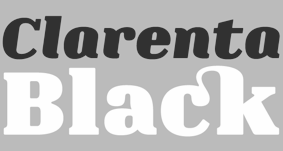 Sergiy Tkachenko (b. 1979, Khrystynivka, Cherkasy region, Ukraine) lives in Kremenchuk, Ukraine, and has been a prolific type designer since 2008. Sergiy graduated from Kremenchuk State Polytechnic University in computer systems and networks in 2007. Various other URLs: Microsoft link, Identifont, 4th February, Behance, Klingspor link, Revision Ru, Russian creators, CPLUV Fontspace, Twitter. Kernest link. Sergey Tkachenko's typefaces:
Sergiy Tkachenko (b. 1979, Khrystynivka, Cherkasy region, Ukraine) lives in Kremenchuk, Ukraine, and has been a prolific type designer since 2008. Sergiy graduated from Kremenchuk State Polytechnic University in computer systems and networks in 2007. Various other URLs: Microsoft link, Identifont, 4th February, Behance, Klingspor link, Revision Ru, Russian creators, CPLUV Fontspace, Twitter. Kernest link. Sergey Tkachenko's typefaces: - 2008: the techno typefaces Bladi One 4F, Bladi One Slab 4F, Bladi Two 4F, Abia Wide 4F Thin.
- 2009: Wrongo 4F, Zantiqa (an über-serif), Serifiqo (a (free) thin didone fashion mag display face), Codename Coder 4F (monospace programming font), Droporado 4F (using circles only), Tovstun (futuristic, ultra-fat and rounded), Perfocard 4F, Modularico (five modular typefaces based on a logo from Master Kremenchug a company for which Sergiy worked for 4 years), Boldesqo Serif 4F (a splendid informal fat didone, now with Greek support), Tkachenko Sketch, Unicase Slab (a techno slab), Laftatic, Logofontik 4F (techno), PC.DE Stencil (+Italic; custom stencil font), Stenciliqo 4F, Tiap Liap 4F (handwriting), Nut Kit 4F, Rezzzistor 4F, the inline modular face Grand Hotel, and Bijou 4F.
- 2010: Roboo 4F (a bubblegum typeface family), PädIn (a custom typeface for Pädagogische Initiative e.V.: rounded fat informal face), Fat Quad (in the fatty trend), Veselka (a free multiline face), Smeshariki Black (+ Gleams: a bubble gum font made for an animation company), Republica 4F (a fat family), Rodeqa Slab 4F, ComFi (semi-octagonal), Grotesqa 4F, Nowy Geroy 4F, Fabryka 4F (a monospaced typewriter family), Placarto4F-Italic (an ultra fat art deco), Lavina 4F (a hairline sans with lachrymal terminals).
- 2011: Squartica (octagonal), Decomart (free), Model 4F Unicase (a unicase fat didone released in 2013 only), Fontatigo 4F, Kylie 4F (bilined and geometric), Waldemar 4F (a large didone style fat typeface family), Dinesqo (2011, a monoline sans of utter simplicity), Qargotesk (+Cyrillic) [images: i, ii, iii, iv], Neultica 4F (black unicase family), Squartiqa 4F (2011, constructivist), Clarenta 4F Black (after Clarendon---a great family), Designosaur (free sans), Perfopunto (based on perforated circles and squares), OlaScript 4F, Bayadera 4F (a tamed upright monoline script), Febrotesk4FUnicase (squarish unicase family).
- 2012: Targo 4F (rounded typeface with stencil and non-stencil styles), Myra (free font), Myra 4F Caps (free), Cedra (wide monolined sans face), Fontatica 4F (rounded techno grotesk), Akzentica 4F, Ukraintica 4F Wide (a monoline wide-bowled sans family), Laventa 4F, Sports World (free athletic lettering font), Web Serveroff (free computer geek font), Octin Spraypaint Cyrillic (a rough stencil done exclusively for Ninja Theory).
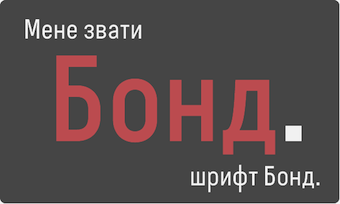 2013: Condesqa (modular sans), Esqadero (an uncomplicated monoline sans), Vanyla 4F Unicase (monoline), Esqadero FF CY (a free wide sans, Cyrillic), Bond (a confident no-frills sans), Attentica (free sans font for Latin and Cyrillic), Cedra 4F Wide Thin. 2013: Condesqa (modular sans), Esqadero (an uncomplicated monoline sans), Vanyla 4F Unicase (monoline), Esqadero FF CY (a free wide sans, Cyrillic), Bond (a confident no-frills sans), Attentica (free sans font for Latin and Cyrillic), Cedra 4F Wide Thin. - Cyrillizations: several typefaces such as Lavoisier (by Alec Julien), Budmo Jiggler (Ray Larabie) and JoAnne Display (Sandy Cerovich), Gnuolane (of a Ray Larabie font), Paranoid Cyrillic (based on Kevin Lo's Paranoid), Movavi Grotesque Black (+Cyrillic; image; numerals), Azoft Sans (made for Azoft, and free here and here).
- Custom fonts: Blue Pill, Sansus Webissimo (since 2011 free at Open Font Library), Minaeff ECT (2011, a free legible family for Latin and Cyrillic, custom-made for and downloadable from WebhostingRating.com), Webhostinggeeks.Com (2011), Web Serveroff, OnlinePharmacyCheck.Com (2011), 1800Flowers.com (2011), DesignStudio.com (2011, free), ArchyStudio.Com (2011, free download, Movavi Grotesque (2011, free), Azoft Sans, PÄd In, Smeshariki, Fat Cow (2010: free condensed sans), ComFi (2010, free), PC.de (2009: free techno family, including a stencil face), League Gothic (2009-2011, The League of Movable Type) Cyrillic, Paranoid Cyrillic, 28 Days Later Cyrillic, Acid Label Cyrillic, Dead Secretary Cyrillic, Rezland Cyrillic, Sweet Leaf Cyrillic, Droid Cyrillic, Jo Anne Display Cyrillic, Gnuolane Free Cyrillic, Bosox Cyrillic, Budmo Jiggler Cyrillic.
- Typefaces from 2014: Laqonic 4F (unicase sans), Cubynets 4F, Blogger Sans (free rounded organic sans), Boncegro (free Western typeface, briefly called Vaquero before a name change), Motor 4F (based on Russian car license plates), Monitorica (a futuristic typeface made for ipHostMonitor.com, free at OFL), Areqo (condensed titling sans), Architect's Daughter Cyrillic (architectural lettering), GetVoIP Grotesque (a free typeface commissioned by GetVoIP), Meeneralca (unicase sans inspired by the logo of the mineral water Borjomi from Georgia), Glasoor (free oil spill or jelly bean font), Robotesqa.
- Typefaces from 2015: Croogla (a circle-based informal sans), Blackentina 4F (free ultra-black squarish typeface), Dart 4F (neo-grotesque), Kent 4F (a layered family for letterpress emulation).
- Typefaces from 2016: Brent 4F (original design going back to 2013), a custom typeface for the labels used in the Ukrainian Armed Forces, Economica Cyrillic Pro (with Vicente Lamonaca).
- Typefaces from 2018: Indi Kazka 4F (Indic simulation).
Abstract Fonts link. Dafont link. Creative Market link. Behance link. Hellofont link. Open Font Library link. View Sergiy Tkachenko's fonts. [Google]
[MyFonts]
[More] ⦿
|
A2 Type
[Henrik Kubel]

|
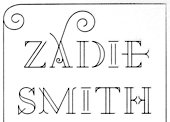 A2-Type (or simply, A2) is a type foundry set up in the autumn of 2010 by the London based design studio A2/SW/HK. The designers are Henrik Kubel and Scott Williams. A2's bespoke type design is mainly the responsibility of Henrik Kubel, though every typeface is developed and approved by both partners. Kubel is self-taught, making his first typefaces while studying at Denmark's Design School from 1992 until 1997. Their typefaces:
A2-Type (or simply, A2) is a type foundry set up in the autumn of 2010 by the London based design studio A2/SW/HK. The designers are Henrik Kubel and Scott Williams. A2's bespoke type design is mainly the responsibility of Henrik Kubel, though every typeface is developed and approved by both partners. Kubel is self-taught, making his first typefaces while studying at Denmark's Design School from 1992 until 1997. Their typefaces: - 4590
- 60 Display.
- Amplify (2013) won an award at TDC 2014.
- Antwerp (2011). A readable text family designed by Kubel during an Expert Type Design Class in 2011 at Plantin Genootschap in Antwerp.
- A2 Archi (2005, Henrik Kubel): an octagonal face.
- A2 Aveny-T (2000, Henrik Kubel): Poster typeface commissioned as aprt of the identity of the Aveny-T theatre in Copenhagen.
- Agriculture.
- Archi.
- Banknote.
- A2 Battersea (1999, Henrik Kubel): inspired by Meta, DIN and Transport Alphabet. Followed in 2012 by Battersea Slab.
- Bauhouse.
- A2 Beckett (2008). A condensed sans family with the masculinity of Impact.
- Boing.
- Copenhagen
- A2 CPH Tram (2009, Henrik Kubel): revival of an odd mini-serifed type found on the exterior of Danish trams, ca. 1920.
- A2 CWM (2008, Henrik Kubel): constructivist type designed for the headlines and cover of Cold War Modern Design 1945-1970. Octagonal.
- Dane.
- A2 Danmark (2008, Henrik Kubel): a display stencil family.
- A2 Ergonomics (2011).
- Flavin Medium. A neon tube font.
- A2 Flowers (2005, Henrik Kubel): arrows, fists, flourishes, ornaments.
- A2 FM: slab serif family.
- Foundation (2018) in Sans (Number 44, Condensed, Wide), Serif, and Serif Didot subfamilies. These are all revivals of skeletal typefaces. Foundation Sans Number 44 was inspired by Circular Gothic No. 44 (1879, Charles E. Heyer, for the Great Western Type Foundry). Foundation Sans Condensed and Foundation Sans Wide are derived from two types described as Caractères pour Marques de Linge (typefaces for marking on linen) in the Signes section of the first volume of Spécimen Général des Fonderies Deberny et Peignot (ca. 1934). Foundation Serif is based on Caractère No. 7, another Caractère pour Marques de Linge in that 1934 Deberny & Peignot specimen book. Kubel's inspiration for Foundation Serif Didot was a sheet of lettering (dated 1939) he discovered in the archive of the influential Danish architect and graphic/industrial designer Gunnar Biilmann Petersen, 1897-1968.
- Grand. A stencil typeface.
- A2 Grot 10 (2009, Henrik Kubel): a take on the Grot Series by Stephenson Blake. Grot 12 followed in 2015.
- A2 Impacto (2005-2011, Henrik Kubel): Impact?
- A2 Klampenborg (1997, Henrik Kubel): industrial style sans.
- Kunstuff.
- London (2010).
- Magna.
- Maximum.
- A2 Mazarin (2017). A2 writes: Originally designed as a Garamond-inspired metal typeface by Robert Girard ca. 1921-1923, and published under the name Astrée by Deberny Peignot, the typeface was soon recut and renamed Mazarin by the English foundry Stephenson Blake in 1926. That single style original has now been expertly restored and reimagined as a contemporary typeface in multiple styles.
- Melissa Script (2010).
- A2 Monday (2003-2016, Henrik Kubel): based on 19th century English vernacular serif signage type.
- Moscow Sans (2014-2015). Award winning custom fonts and pictogram system for Moscow Metro. Art directed and designed by A2 (Scott Williams and Henrik Kubel) with Margaret Calvert as type and pictogram consultant. Cyrillic script designed in collaboration with Ilya Ruderman.
- Naive.
- New Grotesque Square series (2015). A newspaper typeface modeled after a Stephenson Blake typeface. Followed by New Grotesque Round in 2015-2016.
- New Rail Alphabet (2009). A refreshed and expanded version of Margaret Calvert's alphabet from the 1960s which saw nationwide use with British Rail, BAA, and the NHS. Developed in cooperation with Margaret Calvert.
- New Transport (with Margaret Calvert). A digital version of Transport, the Jock Kinnear and Margaret Calvert typeface for the British road signs. New Transport will be commercially released in September 2013.
- Register (2012-2017). A text typeface family inspired by French renaissance types.
- Regular (2012-2016). Think Futura in new clothes. Accompanied by Regular Slab.
- Sans, Slab and Serif typefaces for a redesign of The New York Times Magazine in 2015. The starting point for the Serif font is the Stephenson Blake Garamond-ish metal typeface Mazarin also known as Astrée from French foundry Deberny & Peignot. The slab fonts used for pull quotes and headlines are a continuation of the magazines existing Stymie font but in a condensed format. The sans fonts are linked to the industrial grotesque types, with metal type specimen versions of Futura and Akzidenz fonts as loose models for inspiration.
- Nosferato.
- Ole.
- Outsiders (+Outsiders Light and many other weights). A slab serif family.
- Parsons Green Medium.
- A2 Record Gothic (2019, Henrik Kubel), after Robert H. Middleton's American grotesk, Record Gothic (1027, Ludlow). Kubel writes: In celebration of Record Gothic's eclectic history, we designed four related but independent styles: Slab, Mono, Stencil and Outline.
- Square.
- Staton.
- Tagstyle.
- Test.
- Triumph.
- A2 Typewriter (2000, Henrik Kubel): based on Olivetti Typewriter 22.
- A2 Vogue Floral: a fashion mag modern display face in two styles.
- Vogue Paris. Granshan 09 Type Design Competition. 1st Prize, Display fonts.
- A2 Zadie (2005, Henrik Kubel): inspired by Edwardian railings surrounding the Royal Army Military College in London. Used on the cover of the Zadie Smith bestseller On Beauty (2005, Penguin Press, NY). Granshan 10 Type Design Competition. 3rd Prize, Display fontt described as an ornamental blackboard bold type.
- In 2014, Scott Williams and Henrik Kubel (A2 Type) co-designed A23D, a 3d-printed letterpress font. It was fabricated by model making specialists Chalk Studios. The font is presented by New North Press, which specializes in traditional letterpress printing. Adrian Harrison made a short film about the birth of the font, charting its progress from preliminary sketches to first inking and printing at New North Press. A23D won an award in the TDC 2015 Type Design competition.
- English 1766 (2017). Kubel's take on Caslon.
- Regular (2017). A sans family inspired by Memphis, Karnak, Stymie and Futura.
- Schwiss (2018). Inspired by Akzidenz Grotesk and Helvetica.
Custom type by them include an alphabet for Qantas Airlines (2017), a masthead for Toronto Life (2010), a custom typeface for Banca Sella (2018), Qualcomm (2017), Arne Jacobsen (2018?), Evening Standard Newspaper (2018: 43 fonts), New York Times Magazine's Olympics issue (2018: a monowidth font for stacking), Eurosport Pyeongchang 2018, Weekendavisen (2007-2010), Design Museum London (2010), Faber&Faber (2009-2010), Afterall Publishing (2006-2010), Faulkner Browns Architects (2007), Penguin Press (2005), and Norrebro Bryghus (2005). At ATypI 2013 in Amsterdam, he spoke about New Transport. Winner of the type design prize at the Tokyo Type Directors Club TDC 2019, with Matt Willey, for the New York Times Magazine Olympic font. [Google]
[MyFonts]
[More] ⦿
|
Aad van Dommelen
[Total Identity]
|
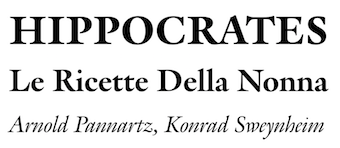 [More] ⦿
[More] ⦿
|
ABC Design
|
Design studio founded in Denmark by Torsten Lindsø Andersen and Rasmus Michaelis. Together with Kontrapunkt, ABC Design created the new global brand typeface family for Nissan under direction from and in close collaboration with Bo Linnemann. Still with Kontrapunkt, ABC Design assisted them in developing the new didone style brand typeface for the Hotel d'Anglettere in Copenhagen (2016), working closely with Mads Quistgaard at Kontrapunkt. They also designed the wonderful Juli Sans (2016) and the more vernacular Barbu (2016-2017). Torsten Lindsø Andersen is based in Copenhagen where he co-runs Kontrapunkt’s type department and type lab together with Rasmus Michaelis. [Google]
[More] ⦿
|
ABC ETC INC
[Nazareno Crea]
|
 ABC ETC INC. is a font and logo design service (est. 2018) based in New York City, run by Nazareno Crea. Nazareno Crea (b. Cinquefrondi near Reggio Calabria, 1983) is a Brooklyn, NY-based book and type designer, who studied at ECAL/University of Art and Design Lausanne (class of 2006) and the Royal College of Art in London (class of 2010). His typefaces:
ABC ETC INC. is a font and logo design service (est. 2018) based in New York City, run by Nazareno Crea. Nazareno Crea (b. Cinquefrondi near Reggio Calabria, 1983) is a Brooklyn, NY-based book and type designer, who studied at ECAL/University of Art and Design Lausanne (class of 2006) and the Royal College of Art in London (class of 2010). His typefaces: - At Lineto, he released LL Gulliver (2008-2018), which was renamed LL Catalogue in 2019. A new serif family with 3 weights/6 styles based on Miller & Richard's Antique Old Style (1858), LL Gulliver was first used in print in an early version in 2008, and was to be published by Lineto in early 2019.
- The custom sans typeface Gabellini Sheppard.
- Zug (Regular and Light). A custom typeface done for the Ski Brand Matek (matek.clothing). Inspired by Walter Haettenschweiler's lettering work for Lettera 2, published by Niggli in 1961.
- Waldorf Astoria. Waldorf Astoria is a custom display typeface inspired by the façade engravings of the homonymous hotel building in New York City. Expanded into a full set of upper and lower cases. Designed for the relaunch of the residential project of the Waldorf Astoria in New York City. Inspired by the work of the architects Weaver & Schultze who designed the building and the original lettering in 1931.
- Pan Display and Pan Text. Corporate typefaces designed for the jewellery brand Pandora A/S. Developed in collaboration with Chi-Long Trieu and engineered by Alphabet Type, Pan is loosely inspired by the work of Percy Smith.
- BBB Neu. Created for the identity of French artist Stephane barbier Bouvet. A brutalist adaptation of Helvetica.
- Olivetti (2020). Based on a 1934 logo design by Bauhaus artist Xani Schawinsky for the Italian typewriter company Olivetti.
- Plantin Rounded (2020).
[Google]
[More] ⦿
|
ABC Typo (was: Bonté Divine)
[Olivier Nineuil]

|
Olivier Nineuil (b. 1964) created Bonté Divine around 1998, and renamed it ABC typo in 2001. He teaches at the La Sorbonne Nouvelle University in Paris. Olivier does custom work and has published fonts in the Agfa Creative Alliance such as Comedia. Other typefaces by Nineuil: P'tit François, Bolobolo, Cassecroute, Garatoi, Maboul, Fiston, Jeuve-upa, Faidodo, Badaboum, Bigoudi, Japapeur, Giboulette, Garamome. Custom work: Club Med (1996), Hachette Multimédia (1998), Polaris (1995, Autoroutes). Bonté Divine fonts: Picasso (1997), Bonté Divine! 007 (1996), Bonté Divine! 015 (1996), Bonté Divine! 022 (1996), Bonté Divine! 031 (1996), Bonté Divine! 036 (1996), Bonté Divine! 044 (1996), Bonté Divine! 061 (1997), Bonté Divine! 066 (1997), Bonté Divine! 077 (1997), Bonté Divine! 092 (1997), Bonté Divine! 097 (1997), Bonté Divine! 105 (1998), Bonté Divine! 112 (1998), Bonté Divine! 117 (1998), Bonté Divine! 121 (1998). [Google]
[MyFonts]
[More] ⦿
|
Adam Katyi
[Hungarumlaut (was: Cila Design)]

|
 [MyFonts]
[More] ⦿
[MyFonts]
[More] ⦿
|
Adicto
|
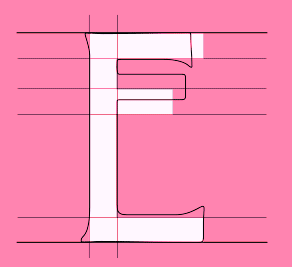 Adicto Multichannel Agency is a studio located in Sankt Gallen, Switzerland. For the new restaurant Werk 1 in a renovated industrial building built in 1900 Adicto created the new typeface Werk1 (2014). For this typeface, they used the art nouveau font Quaint as a model. The font was developed by Nicolas Duran, Pierre Lippuner and Christian Woelk. Behance link. [Google]
[More] ⦿
Adicto Multichannel Agency is a studio located in Sankt Gallen, Switzerland. For the new restaurant Werk 1 in a renovated industrial building built in 1900 Adicto created the new typeface Werk1 (2014). For this typeface, they used the art nouveau font Quaint as a model. The font was developed by Nicolas Duran, Pierre Lippuner and Christian Woelk. Behance link. [Google]
[More] ⦿
|
Adrien Menard
[Edition Studio]
|
[More] ⦿
|
Adrien Midzic

|
 Fatnobrain was Adrien Midzic's design studio in Paris. Born in 1982, he co-founded Pizza Typefaces with Luc Borho in 2018. Midzic designed these typefaces or type families: Fine (lineal), Blokus (free pixel font, 2009), Cimen (strong sans, designed for Smacl Entraide), Mesquine (lineal), Blitz, Cucha, Stencil Reverse, Huit (2009, a gorgeous didone headline face), Stenha (stencil).
Fatnobrain was Adrien Midzic's design studio in Paris. Born in 1982, he co-founded Pizza Typefaces with Luc Borho in 2018. Midzic designed these typefaces or type families: Fine (lineal), Blokus (free pixel font, 2009), Cimen (strong sans, designed for Smacl Entraide), Mesquine (lineal), Blitz, Cucha, Stencil Reverse, Huit (2009, a gorgeous didone headline face), Stenha (stencil). Fonts made in 2010: The ETH family (art deco sans). Custom typefaces by Midzic: Aquitaine (2013, for Région Aquitaine), Nilka (2013, for his personal identity), No End (2013, a fat didone), Ethon Serif (2013, a perked up serif typeface for Penguin Books), Kasai Est (2011, for the Congo-based Kasai Est Magazine), Festival De Film Documentaire (2011), Nevenka (2011, condensed sans). In 2014, Adrien Midzic, Jason Vandenberg, Jérémie Hornus, Julien Priez and Alisa Nowak co-designed the creamy script Vanilla FY. It was renamed Vanille FY after a few days. Still in 2014, Adrien Midzic, Jérémie Hornus and Alisa Nowak co-designed the very humanist sans family Saya FY and Saya Semisans FY. Adrien Midzic and Joana Correia co-designed Saya Serif FY (2015). At the free font cooperative Velvetyne, he published the sans typeface Lack (2014). In 2015, he made the 3-style sans typeface Suber for an art fair in Paris. The roman transitional typeface Bota Serif (2015), which was inspired by Cochin (designed by Charles Peignot in 1912) is a custom font designed for Hotel des ventes de Poitiers. In 2017, it was finally released for retail. In 2016, Adrien designed the bold titling typeface Debeo and the modern condensed Latin/Arabic typeface 29LT Adir (with Naji El Mir; at 29 Letters). In 2017, he published the piano key typeface Mixal, which became a large experiment on variable fonts and is free for everyone. Typefaces from 2018: Kern, Kern Office (a sans with some Futura features), Forno (sans), VTF Lack (a free single weight monoline geometric sans for Latin, Greek and Cyrillic, published by Velvetyne), Metal (an all caps multi-width variable font originally designed for marché Dauphine), Orelo (a 120-style high-contrast fashion mag font family; +Orelo Hangul, 2020). Typefaces from 2019: Ultra Solar (experimental), 1871 Mane (a custom sans typeface), Wasa (a tense sans in seven styles), Shrill, Gangster Grotesk (free), Stupid (a hacker / hipster font), Kern (geometric sans). Typefaces from 2020: Shreck Issue (very tall and ultra-condensed), Metal (brutalist), Version ACT (a two-axis variable font), Debeo (a heavy sans), Dozza (a hybrid family named after ITC Mendoza by Jose Mendoza Almeida), XMX (experimental). Typefaces from 2021: Campingo (a roundish informal typeface inspired by camping and outdoor life), Bota (with Ines Davodeau: first designed for Boissnot&Tailliez, Bota is a modern interpretation of Georges Peignot's Cochin (2012)), Pleasure (hipsterism pushed to the fringe of addiction), Model Standard (ModelStandard Mono, ModelStandard SemiMono, ModelStandard Sans). Dafont link. Klingspor link. Behance link. Another Behance link. Hellofont link. Velvetyne link. [Google]
[MyFonts]
[More] ⦿
|
Adtypo
[Andrej Dienes]

|
 Andrej Dienes is a type designer in Bratislava, Slovakia. He set up the commercial type foundry Adtypo in 2013. Creator of these typefaces:
Andrej Dienes is a type designer in Bratislava, Slovakia. He set up the commercial type foundry Adtypo in 2013. Creator of these typefaces: - Akceler (2012). Advertised as a type system for sports. The text that accompanies this large typeface family: Elasticity of glyphs reflected adrenalinous shapes of latest bikeframes, skies or sportcars. Maximum open arches guaranteed good readability in very small sizes and prevented interchanges of glyphs "o, c, e" per poor reading conditions. Softness of minuscules is at capitals balanced in bottom arches, that are subtly kicked-up. Numerals are important component of sport communication, so here have expressive design, different from numerals of book typefaces. Every font have 10 kinds of numerals. Character case contains between 1000 glaphs sport icons and othes signs creating sport feeling.
- Densit (2012). An ultra-black display family that includes a Sans and a Serif. It was designed for Reco, Senica.
- Fazeta (2015). An angular traditional Czech typeface family in which each font has an impressive 1140 glyphs, and the family is divided into Display, Text and Caption subfamilies. He calls it a text typeface without sentiment. It was followed a bit later in 2015 by the companion font Fazeta Sans.
- Resonay (2021, at Typemates), an award winner at 25 TDC in 2022. Resonay is a layerable display typeface family that combines elegant details from stone carving with the flow of calligraphy, a sharp attitude with exuberant Bézier curves.
- Cosan (2021). A variable sans-serif typeface with a broad range of weights and adjustable contrast.
[Google]
[MyFonts]
[More] ⦿
|
Agence France Presse (or: AFP)
|
In 2006, AFP commissioned some custom fonts like AFP Sans Pro and AFP Square Pro. [Google]
[More] ⦿
|
Agyei Archer
|
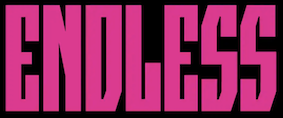 Graphic designer in Trinidad, who co-founded Unqueue, a mobile app designed to improve retail experiences in the Caribbean. Past clients include Google, RISD, the Government of Trinidad and Tobago, and the Caribbean Mental Health Foundation. He designed a few, mostly custom, typefaces. These include Crispy (2020: an angular design started in 2017 that has mushroomed into an 8-axis variable font, built based on David Berlow's proposal for parametric variations, combining axes such as X-Transparency, X-Opacity, and Y-Opacity to generate masters for styles such as widths, weights, grades, and optical sizes; it is planned as a Google Font), and Ephemeral (2018: a layered color font based on the lettering style of Bruce Cayonne). [Google]
[More] ⦿
Graphic designer in Trinidad, who co-founded Unqueue, a mobile app designed to improve retail experiences in the Caribbean. Past clients include Google, RISD, the Government of Trinidad and Tobago, and the Caribbean Mental Health Foundation. He designed a few, mostly custom, typefaces. These include Crispy (2020: an angular design started in 2017 that has mushroomed into an 8-axis variable font, built based on David Berlow's proposal for parametric variations, combining axes such as X-Transparency, X-Opacity, and Y-Opacity to generate masters for styles such as widths, weights, grades, and optical sizes; it is planned as a Google Font), and Ephemeral (2018: a layered color font based on the lettering style of Bruce Cayonne). [Google]
[More] ⦿
|
Ainsifont
|
 French digital type foundry, est. 2007, located in Lille. The type coop includes Stéphane Meurice, Xavier Meurice, Sébastien Delobel (the three founders), as well as Jérémie Perrin and Baptiste Servais.
French digital type foundry, est. 2007, located in Lille. The type coop includes Stéphane Meurice, Xavier Meurice, Sébastien Delobel (the three founders), as well as Jérémie Perrin and Baptiste Servais. Commercial fonts include these made by Atelier Télescopique: Stone Heure (2007, multiline), Ader, Bepierre (pixel), Beye (pixel), Birinte (experimental), Boureuse (an elegant geometric sans), Byme, Capulco, Ciceron (dot matrix), Delory (clean sans), Dicion (dot matrix), Dixca (pixel), Fisher, Fluo (2012-2014, a stencil font by Xavier Meurice and Sébastien Delobel), Hic, Kune (sans family), Lailuya, Lienne, Mentable (dot matrix), Mento (clean sans), Merik, Miante, Micale, Mulette, Naconda, Nalfabait (dings), Natomi (techno), Nibalsmith (ultra-fat), Norak, Normal, Peindice, Rabik (paperclip face), Raoul, Rijsel (2013, sans), Rondie (kitchen tile), Rubal, Scard, Screenex, Stone Heure (prismatic), Singolo, Sphiquesy, Steroid, Stuce, Tino, Tomica, Treen, Varo, Velinge (dings), Veu, Vrette, Vure, Yoli (dings), Xatif, Zofage. Corporate typefaces by them include the Quechua family (for the sports company Quechua in Domancy, France), which consists of four typefaces, Bionnassay (for cross-country skiing), Forclaz (mountain hiking), Arpenaz (for recreational hiking) and Capcir (for Nordic skiing). News. [Google]
[More] ⦿
|
Ainsifont (was: Atelier Telescopique, or: Fonderie Nordik)
[Xavier Meurice]
|
 Fonderie Nordik was a French type foundry in Wasquehal near Lille, which published some fonts such as Tomica (2009, a geometric sans done for Wéo Télé Nord Pas de Calais), Le Dixca, Le Cicerond, LaNormal, La Lienne. Founded in 1998 by Xavier Meurice and Sébastien Delobel, it changed its name in 2007 to Atelier Telescopique and then to Ainsifont. Stéphane Meurice and Guillaume Berry are also involved.
Fonderie Nordik was a French type foundry in Wasquehal near Lille, which published some fonts such as Tomica (2009, a geometric sans done for Wéo Télé Nord Pas de Calais), Le Dixca, Le Cicerond, LaNormal, La Lienne. Founded in 1998 by Xavier Meurice and Sébastien Delobel, it changed its name in 2007 to Atelier Telescopique and then to Ainsifont. Stéphane Meurice and Guillaume Berry are also involved. Font list: Font list: Scard (2000, Xavier Meurice), Stonehenge, Dixca (free pixel font), Fish, Delory, Lienne (2001, with Delobel), Bizeau, Raoul, La Cidulée, Ader (Xavier Meurice, 2002), Tex (2002, pixel font by Xavier Meurice), Normale (free), PSUS (Xavier Meurisse, 2000), Bépierre, Péro, SV01 (dings), Cicerond (free dot matrix font), Réka (2001, Meurice and Delobel), Nuk, Stéroide, Rosoir (2002, Xavier Meurice, dingbats), Equinox, Acropik, Wazemmes, Kune, Stoneheure (2001, Xavier Meurice), Sphiquesie (Xavier Meurice, 2002, an octagonal font), Nyctalope (2002). Xavier Meurice participates in the type cooperative Ainsifont in Lille. His typefaces there include: - The rounded sans typeface Fluo (2012, with Stéphane Delobel).
- AF Singolo (2012, with Stéphane Delobel). A stencil typeface created for Lille Design.
- Mento (2015, with Stéphane Delobel). Original from 2007.
- Playtime (2012-2018). A stackable sans typeface by Xavier Meurice and Sébastien Delobel.
- Raoul (2007, with Stéphane Delobel). Original created for the Kursaal in Dunkirk, and named in honor of Lille-based singer Raoul de Godewarsvelde.
- Rubal (2011).
- Screenex.
- Stone Heure (2011). A prismatic typeface.
[Google]
[More] ⦿
|
A.J. Dimarucot
|
T-shirt artist in Pasig, Philippines. His typefaces: - Maroons Type. A free octagonal sports font family developed over the years for the Fighting Maroons at the University of the Philippines by AJ Dimarucot, Joanna Malinis of Plus63 Design Co., and Dan Matutina of Plus63 Design Co. The most recent update was in 2019.
- In 2021, he published the free blackletter typeface Panata, which was inspired by a local religious movement.
[Google]
[More] ⦿
|
Akira Kobayashi
[Sony Design]
|
[More] ⦿
|
Alain Rodriguez
|
 In 2012, Parisian graphic designers Thomas Bizzarri and Alain Rodriguez co-designed Feu (a sans face) and Thermidor (a revival based on the work of French type designer Charles Beaudoire (end of the nineteenth century), custom designed for the Feu Sacré books). Feu is an original typeface designed for the visual identity and the books of the publishing house Le Feu Sacré. [Google]
[More] ⦿
In 2012, Parisian graphic designers Thomas Bizzarri and Alain Rodriguez co-designed Feu (a sans face) and Thermidor (a revival based on the work of French type designer Charles Beaudoire (end of the nineteenth century), custom designed for the Feu Sacré books). Feu is an original typeface designed for the visual identity and the books of the publishing house Le Feu Sacré. [Google]
[More] ⦿
|
Alan Cloiseau
|
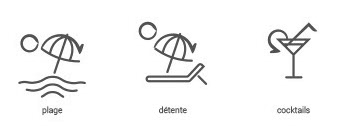 Paris-based designer of the free comic book typeface ACL (2020) and the commissioned typeface Club Med Pictograms (2017). [Google]
[More] ⦿
Paris-based designer of the free comic book typeface ACL (2020) and the commissioned typeface Club Med Pictograms (2017). [Google]
[More] ⦿
|
Albert Folch
[Folch Studio]
|
[More] ⦿
|
Alberto Romanos
[Branding with Type]

|
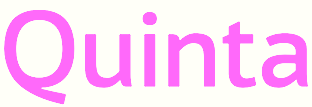 [MyFonts]
[More] ⦿
[MyFonts]
[More] ⦿
|
Aldo de Losa
[Tipitos Argentinos]

|
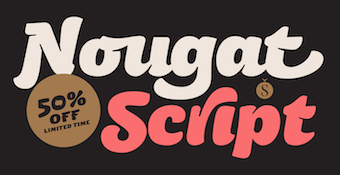 [MyFonts]
[More] ⦿
[MyFonts]
[More] ⦿
|
Aleksandra Korolkova

|
 Graduate of Moscow University of Printing Arts in 2006 where she studied under Alexander Tarbeev. She teaches type design and typography there. In 2007, her book for Russian students on typography was published (English title: Alive Typography). She received many awards for her work and is a frequent speaker at type design conferences. In particular, she received the prestigious Prix Charles Peignot in 2013. After that she became Type Director at ParaType in Moscow.
Graduate of Moscow University of Printing Arts in 2006 where she studied under Alexander Tarbeev. She teaches type design and typography there. In 2007, her book for Russian students on typography was published (English title: Alive Typography). She received many awards for her work and is a frequent speaker at type design conferences. In particular, she received the prestigious Prix Charles Peignot in 2013. After that she became Type Director at ParaType in Moscow. Designer of the beautiful Cyrillic serif family Leksa (a winner at Paratype K2009) and the accompanying Leksa Sans family from 2004 until 2007. This was followed by equally gorgeous families such as Fence (2009, an ultra-fat artistic beauty). Skoropix is an experimental pixel typeface done with FontStruct. She also made Belladonna (2008, a stunning modern typeface for Latin and Cyrillic; a winner at Paratype K2009 and Grand Prize winner at Granshan 2011), Skoropix (with FontStruct), and the experimental typeface Cless (2009). She spoke about Cyrillic at ATypI 2008 in St. Petersburg. She received a TypeArt 05 award for the display family Fourty-nine face. Alternate URL. At MyFonts, one can buy Gorodets [2009: a Russian decoration typeface based on traditional wood-painting style from the town Gorodets on the Volga river, Russia], Leksa and Leksa Sans], Blonde Fraktur (2010: written with a quill by Alexandra Korolkova and prepared in digital form by Alexandra Pushkova), Airy (2010, a curly script), Airy Pictures (2010, animal and plant dingbats), Bowman (2010: a blackboard children's script), PT Serif (2011, Paratype's superfamily of 38 fonts, co-designed with Vladimir Yefimov and Olga Umpeleva; Open Font Library link), PT Circe (2011, a geometric sans family with a neat Thin weight; Third Prize for Cyrillic text typefaces at Granshan 2011), and Cless (2010: ultra fat and counterless). Together with Isabella Chaeva, she made PT Mono (2012, Google Web Fonts and Open Font Library). In 2012, Vasiliy Biryukov and Alexandra Korolkova co-designed the Christmas dingbat font Gingerbread House, together with a plump display face, Gingerbread. In 2013, Vasily Biryukov and Alexandra Korolkova co-designed the soft roundish sans typeface Kiddy Kitty (link). In 2014, she cooperated with Maria Selezenava on a revamped Journal Sans typeface at Paratype, called Journal Sans New (Latin and Cyrillic). This geometric sans in the style of Erbar Grotesk and Metro Sans is a major extension of the Journal Sans typeface (1940-1956, SPA, in metal form, and 1990s in digital form). Still in 2014, she co-designed Stem, a geometric large x-height Latin / Cyrillic sans serif with optical sizing, with Isabella Chaeva and Maria Selezeneva at Paratype. This was followed in 2015 by Stem Text. In 2015, she and Alexander Lubovenko co-designed Circe Rounded, which is an extension of her earlier Circe typeface (2011), both published by Paratype. In 2018, Paratype extended that family with Circe Slab (by Alexandra Korolkova and Olexa Volochay). Still in 2015, Alexandra Korolkova and Alexander Lubovenko published Aphrosine at Paratype, a typeface based on pointed pen script and situated somewhere between handwriting and calligraphy. Many alternatives and smart OpenType features help Aphrosine look like real handwriting. Codesigner of Kudryashev Display (2015, Isabella Chaeva, Alexandra Korolkova and Olga Umpeleva). Kudryashev Display is a set of light and high-contrast typefaces based on Kudryashev text typeface. In addition to Kudryashev Display and Kudryashev Headline typefaces, the type family includes also two Peignotian sans-serif typefaces of the same weight and contrast, with some alternates. The serif styles were designed by Olga Umpeleva in 2011, the sans styles were created by Isabella Chaeva in 2015 with the participation of Alexandra Korolkova. In 2016, she designed FF Carina, a delicate and absolutely stunning decorative didone. In 2018, Alexandra Korolkova and Manvel Shmavonyan designed Fact at Paratype. Fact (2018) is based on Frutiger. The Fact type system contains 48 upright styles with variations in width and weight and eight italics of normal width. At the end of 2018, Alexandra Korolkova, Alexander Lubovenko, and the Paratype team finished Six Hands, which is a collection of six handcrafted typefaces: Black, Brush, Chalk, Marker, Condensed and Rough. In 2019, Vitaly Kuzmin and Alexandra Korolkova co-designed the free sans serif typeface Golos Text at Paratype. It was originally commissioned by Smena (AIC Group) for state and social service websites. Typefaces from 2020: Sber (the type system for Russia's Sber Bank; by Korolkova and the Paratype team), Tupo Vyaz (a free modular closed sans serif font with very simple design and some elements from the northern variant of Vyaz slavonic calligraphic hand), Grrr (at Paratype, with Dmiry Goloub; a techno family characterized by an oversized lower case f). MyFonts interview. Kernest link. Klingspor link. View Alexandra Korolkova's typefaces. Speaker at ATypI 2019 in Tokyo. [Google]
[MyFonts]
[More] ⦿
|
Aless Alcala
|
Art director in Guadalajara, Mexico, who created the spurred typeface San Andres (2013) for a Mexican brewery. [Google]
[More] ⦿
|
Alessandro Tartaglia
[FF3300]
|
[More] ⦿
|
Alessio Pompadura
|
 The Due Studio (or: Due Collective) of Alessio Pompadura and Massimiliano Vitti, both based in Perugia, Italy, co-designed the grid-based stencil typeface Nodo in 2017.
The Due Studio (or: Due Collective) of Alessio Pompadura and Massimiliano Vitti, both based in Perugia, Italy, co-designed the grid-based stencil typeface Nodo in 2017. In 2018. they developed PVF Display for the identity of Palazzo Vertemate Franchi. In 2019, they designed Grotta, and wrote: Grotta is an irreverent contemporary neo-grotesk typeface with strong geometric accent and sharp contrast in its form. Characterized by tight apertures and an overall dynamic feeling it is suited for both display and text sizes. It is our interpretation of the 21st century grotesk, exuberant, irruptive and [...] winks at [...] Venus-Grotesk and Monotype Grotesque. It shows influences of hipstertism in the way strokes are joined in the 1, N, M, V, W, and other letters. The semi-pixel typeface Analo Grotesk was codesigned in 2019 by Alessio Pompadura and Massimiliano Vitti. In 2020, he released Decay White: Decay is a modern serif that brings the idiosyncratic philosophy of Decadent Movement into our darkest future, mixing sinuous curves with eccentric pointed serifs and drastic ligatures between multiple and single letters. A typeface on the border between irrational aesthetics and rational function. Typefaces from 2021: Autaut Grotesk. [Google]
[More] ⦿
|
Alexander Colby
[xyz.ch]
|
[More] ⦿
|
Alexander Örn
|
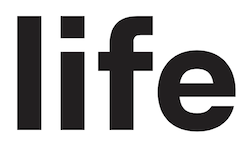 Malmö, Sweden-based designer, who set up Kanon Foundry in 2019 together with Tor Weibull. During his studies in Malmö, Sweden, Alexander Örn (b. 1993) designed the monoline sans typeface Prokrastina (2016). In 2017, he made the angular wedge serif typeface Rakel and the vernacular sans typeface Folke. In 2018, he added a typeface specially designed Amplitud for aircraft cockpits: there are many diagonal lines, which are less influenced by the (horizontal and vertical) vibrations of the airplane.
Malmö, Sweden-based designer, who set up Kanon Foundry in 2019 together with Tor Weibull. During his studies in Malmö, Sweden, Alexander Örn (b. 1993) designed the monoline sans typeface Prokrastina (2016). In 2017, he made the angular wedge serif typeface Rakel and the vernacular sans typeface Folke. In 2018, he added a typeface specially designed Amplitud for aircraft cockpits: there are many diagonal lines, which are less influenced by the (horizontal and vertical) vibrations of the airplane. At Kanon Foundry, he designed the retail typeface Operand (2021, by Alexander Örn; a low contrast, almost monolinear sans serif that draws inspiration from the 1930s Scandinavian functionalist design era) and co-designed these corporate typefaces with Tor Weibull: the angular sans typefaces Bedow Head and Bedow Hand (2020), NLTG Wave Display & NLTG Wave Serif (for the Nordic Leisure Travel Group). [Google]
[More] ⦿
|
Alexander Slobzheninov
|
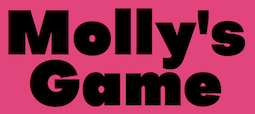 Designer from Siberia who graduated from Ladislav Sutnar Faculty of Design and Art, University of West Bohemia and is now based in Prague, Czechia. Type, graphic and motion graphics designer who created these typefaces:
Designer from Siberia who graduated from Ladislav Sutnar Faculty of Design and Art, University of West Bohemia and is now based in Prague, Czechia. Type, graphic and motion graphics designer who created these typefaces: - Octarine (2017). A geometric sans typeface family with two free weights).
- Fivo Sans (2017, free) and Fivo Sans Modern (2017, free).
- Wacom (2017). This is a simplified techno sans concept font not actually used by Wacom.
- Objective and Subjective, two mischievous typeface families published in 2018. Objective was slightly altered and merged with Chris Simpson's Metropolis (2015) in 2020 by Cristiano Sobral in Metropolitano.
- The 42-font sans family Agrandir (2018). Available from Pangram Pangram.
- The 7-weight Swiss neo-grotesk Gestalte (2018) that is characterized by mathematically precise horizontal and vertical strokes and terminals.
- The Baskerville grandchild AS Grafier (2018). A corporate typeface for the identity of Other Poets Society. There is a free beta version, and comes with a variable font option. Published by Pangram Pangram in 2019. The variable font Grafier can also be purchased from Type Tomorrow.
- The Latin / Cyrillic Object Sans (2018), which is in the Swiss sans style. For the Cyrillic, he was helped by Sonya Yasenkova. Available from Pangram Pangram.
- The cyrillization of Jeremy Landes's Le Murmure in 2019.
- Relaate (2019-2020). A multi-genre typeface in which the lower case t and e try to reach for the sky.
- Right Grotesk (2020, Pangram Pangram). Neutral, functional, slightly hipsterish. First in 51 styles, and then extended to 130 styles, and some variable fonts as well.
- In 2021, he set out to design one typeface per day for 36 consecutive days. The typefaces explore various ideas and cover almost every imaginable type style: Casual Digital Goose, Chill Out, Damn Low Tech, Flying, Gravity Itself, Ligatureless, Ploite Green Finger, Pretty Dumb Idea, Rembrandt, Those Games, Weird, What A Feature.
- Typefaces from 2022: Right Sans, Right Gothic (a 98-style variable type family), Weird Serif (a didone for vampires).
Future Fonts link. Type Tomorrow link. [Google]
[More] ⦿
|
Alexandra Mendes
|
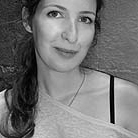 Since 2003, Alexandra Mendes runs Blank, a Porto, Portugal-based brand identity and graphic design agency.
Since 2003, Alexandra Mendes runs Blank, a Porto, Portugal-based brand identity and graphic design agency. Licht Punt (2010) is the geometrically precise custom typeface used in the Sky High project for the Radisson Blu hotel in Hasselt, Belgium. In 2011, she published the art deco family Rosetta, and wrote: Rosetta font was designed by Alexandra Mendes for an upcoming branding project. The typeface design is inspired in all things lovely and luscious of the female intimate universe: lingerie, lace, blush powder, négligé, bustier, lip gloss and other lavish niceties. Should feel as a flirt, the subtle wink of the eye, a roseate glow. Rosetta is a coquette who flirts with life, winking her eyes, batting her lashes, flicking her hair, leaving her scent behind as she passes on the street, turning heads, with her whispering lips and waddling feline walk. Teasing and feigned disinterest to test the reliability of her admirers. Tall slenderizing lines and delicate curves shape the form of Rosetta. The typeface look is minimal and contemporary but reminiscent of a certain "je ne sais quoi" of Art Deco. There's a pure linear geometric symmetry to the font, to create a look of elegant modernity, that exudes a flair for glamour. Rosetta is a font family set composed by the styles: Rosetta, Rosetta Blush, Rosetta Bloom, Rosetta Bud. Images of Rosetta: i, ii, iii, iv, v, vi, vii, viii, ix, x. [Google]
[More] ⦿
|
Alexandre Saumier Demers
[Coppers & Brasses]
|
 [More] ⦿
[More] ⦿
|
Alexey Kuzmenko
|
Zaporozhchyne, Ukraine-based designer of these custom (logo) typefaces in 2016: Sage (modular), Sport (techno), Space (futuristic)Shark (techno), Get Better, Juno (multiline headline face), Impossible (sans), Vintage, Faster Stronger (techno), Sheriff (Western), Airborn. [Google]
[More] ⦿
|
Alfab
[Bruno Bernard]

|
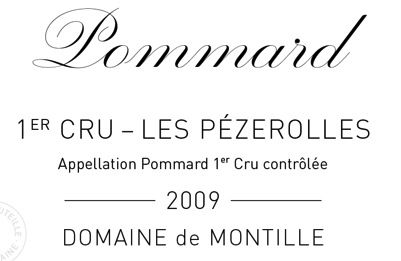 French type and graphic designer (b. 1974) who lives in Asnières-sur-Seine and works in Paris. Educated at Ecole Estienne, Paris, and ANRT, Nancy, he designs custom-made typefaces and has released several commercial fonts including Adso and Mihaly. He co-founded BAT foundry in 2009 and set up Alfab in 2019. His typefaces:
French type and graphic designer (b. 1974) who lives in Asnières-sur-Seine and works in Paris. Educated at Ecole Estienne, Paris, and ANRT, Nancy, he designs custom-made typefaces and has released several commercial fonts including Adso and Mihaly. He co-founded BAT foundry in 2009 and set up Alfab in 2019. His typefaces: - Acheminé: for the French railway, the SNCF.
- Adso: a hookish family done at the ANRT, and published at BAT Foundry in 2010.
- Anima (2013).
- Chanson: a serif revival from the 19th century.
- Departure: a dot matrix face.
- Dinette: commissioned by the graphic design studio Malte Martin.
- Mazette (2013). A high-contrast stencil typeface.
- Mgetine: for the corporate identity of MGET.
- Mihaly Display (2019) and Mihaly (2013). A fine geometric sans family originally created for the Mihaly exhibition.
- Montille: a formal calligraphic typeface for the Domaine de Montille.
- Piccolo (1998): for the Figaro newspaper.
- Posthume: a set of nice symbols for the Side One Posthume Theatre.
- LFDJ (2010): a corporate organic all caps sans typeface for La Française des Jeux, art directed by Anja Krohne.
- Quadrile (2013). A semi-stencil typeface for the visual identity of Quadrant.
At ATypI Montreal 2017 Bruno Bernard spoke on Excoffon Book, the last typeface by Roger Excoffon? [Google]
[MyFonts]
[More] ⦿
|
AlfaType
[Joseph Miceli]
|
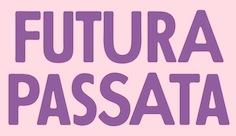 Graduate of the Rietveld Academie in Amsterdam. Born in Syracuse, Sicily, he spent half of his life in New York City, and studied for four years in The Netherlands. He worked in Lithuania with a group called Alfa60, and is now based in Turin.
Graduate of the Rietveld Academie in Amsterdam. Born in Syracuse, Sicily, he spent half of his life in New York City, and studied for four years in The Netherlands. He worked in Lithuania with a group called Alfa60, and is now based in Turin. His typefaces: - Equo (2006). A VAG Round style display family which also includes Equo Stencil Caps, Equo Extended and Equo Extra Fat.
- Shaolin Caps.
- Stout Caps (revised in 2015).
- Frank-Latin. A wide wedge-serifed face.
- Crasto. A serif family.
- MM Vinny. A multiple master family designed for use by the cosa nostra.
- Yorker. Based on The NewYorker.
- MM Charlie or Charlie Grotesque (2013). A sans typeface family in the American style of Morris Fuller Benton.
- Artissima Condensed. A dada poster font, now called Altissma Condensed.
- Romano Grotesque. Angular, chiseled: revised in 2015.
- Futura Passata. A rounded all caps version of Futura that combines two widths of a wood type version of Futura for use in posters.
- Novalis Condensed.
- Bianco. A bespoke sans created for Nero magazine). Accompanied by Bianco Serif (used in some sections of The New York Times).
- Lago Sans. A geometric superfamily.
- Arial Grotesque.
- Tratto (2018). A sans.
- Beaux. An all caps display typeface. /UL> [Google]
[More] ⦿
|
Alfredo Marco Pradil
[Hanken Studio]

|
 [MyFonts]
[More] ⦿
[MyFonts]
[More] ⦿
|
Alias
[Gareth Hague]

|
Alias is a type foundry and graphic design agency founded in 1996 by David James and Gareth Hague. It is based in London. Their fonts can be bought through T-26, ITF and/or FontWorks UK. They also did substantial corporate type design work. Partial font list: AES (1995, David James), August (1996, a fifties font by Gareth Hague), Caustic (2012, calligraphic script family), Elephant (1994-1995, Gareth Hague), Enabler (1995, David James), Factory, Granite (1995, Gareth Hague), Harbour (1998, Gareth Hague), Intimo (2000), Jackdaw (1997, Gareth Hague), Jude, Key, Klute (1997, Gareth Hague), Mantis (1996, Gareth Hague), Metropolitan (1996, Gareth Hague), Metsys, Sister (1995, Gareth Hague), Text (1995, Gareth Hague). Typefaces from 2015: AnoStencil, Capo (a pinched sans family), Sabre (an incised wedge serif). Corporate typefaces include Prada Candy (2012). Old link. View the Alias typeface library. [Google]
[MyFonts]
[More] ⦿
|
Alice Glenane
|
Together with Remy Chard, Alice Glenane (Gold Coast, Australia) created the experimental typeface Shadow Line (2013) which was inspired by the architecture of The Queensland Museum. [Google]
[More] ⦿
|
Alice Savoie
[Alice Savoie, Frenchtype]

|
 [MyFonts]
[More] ⦿
[MyFonts]
[More] ⦿
|
Alice Savoie, Frenchtype
[Alice Savoie]

|
 Alice Savoie is an independent typeface designer and researcher, b. 1984, based in Lyon. She studied graphic design and typography in Paris at Ecole Duperré and Ecole Estienne, and in 2006 graduated from the MA in typeface design from the University of Reading (UK). In 2014 she was awarded a PhD from the University of Reading for the research she carried out in collaboration with the Musée de l'imprimerie in Lyon (France). Her research focuses on the design of typeface in France, the UK and the USA in the postwar period, and for phototypesetting technologies in particular: International cross-currents in typeface design: France, Britain, and the US in the phototypesetting era, 1949-1975. She collaborates with international type foundries such as Monotype, Process Type Foundry, and Tiro Typeworks, and specializes in the design and development of typefaces for editorial and identity purposes. She also designs multi-script type families, including Latin, Greek, Cyrillic and Hebrew. She intends to sell her typefaces via 205 Corp.
Alice Savoie is an independent typeface designer and researcher, b. 1984, based in Lyon. She studied graphic design and typography in Paris at Ecole Duperré and Ecole Estienne, and in 2006 graduated from the MA in typeface design from the University of Reading (UK). In 2014 she was awarded a PhD from the University of Reading for the research she carried out in collaboration with the Musée de l'imprimerie in Lyon (France). Her research focuses on the design of typeface in France, the UK and the USA in the postwar period, and for phototypesetting technologies in particular: International cross-currents in typeface design: France, Britain, and the US in the phototypesetting era, 1949-1975. She collaborates with international type foundries such as Monotype, Process Type Foundry, and Tiro Typeworks, and specializes in the design and development of typefaces for editorial and identity purposes. She also designs multi-script type families, including Latin, Greek, Cyrillic and Hebrew. She intends to sell her typefaces via 205 Corp. Between 2008 and 2010 Alice joined Monotype as an in-house type designer, working mainly on custom type designs for international clients (The Times, Turner Broadcasting, Ogilvy, etc.). She has also contributed to the design of new typefaces for the Monotype library, such as the Ysobel type family (in collaboration with Robin Nicholas), and Rotis II Sans. Her type family Capucine is distributed by Process Type Foundry. In 2012 she collaborated with John Hudson/Tiro Typeworks over the development of the Brill typeface family for the Dutch publisher Brill. Since September 2013 she teaches typeface design at the Atelier National de Recherche Typographique in Nancy, and at ESAD Amiens (France). Her type foundry is called French Type. She holds an MA and a PhD from the University of Reading (UK). She collaborates with design studios and type foundries on the design of multi-script typeface families. In 2018 she released the typeface family Faune, commissioned by the Centre national des arts plastiques (CNAP) in partnership with the Groupe Imprimerie Nationale. Alice teaches and supervises research projects at ANRT Nancy and ENSBA Lyon (FR). She is the principal Post-doctoral Researcher on the Leverhulme-funded project Women in Type under the supervision of Fiona Ross at the University of Reading. Her typefaces: - Her graduation typeface at Reading, Capucine Greek (2007) has been awarded as the best text typeface of the Greek alphabet exhibition, taking place during the 3rd international conference on typography and visual communication in Thessaloniki, Greece, 2007. Capucine is a very informal, almost hand-printed family covering both Latin and Greek in many styles. In 2010, finally, she published Capucine at Process Type Foundry (Grand Valley, MN), where she was briefly part of Eric Olson's team.
- The constructivist typeface Pozor (2005).
- The connected handwriting typeface Jeanine, done in 2006 at the École Estienne in Paris, where she studied from 2004 until 2006.
- In 2009, she co-designed Ysobel (Monotype; winner of an award at TDC2 2010) with type designers Robin Nicholas, head of type design at Monotype, and Delve Withrington. The sales pitch: According to Nicholas, the idea for the Ysobel typefaces started when he was asked to create a custom, updated version of the classic Century Schoolbook typeface, which was designed to be an extremely readable typeface - one that made its appearance in school textbooks beginning in the early 1900s. Buy it from Monotype.
- Brill (2012), co-designed with John Hudson for Koninklijke Brill NV, Leiden, The Netherlands, won an award at TDC 2013.
- The Royal Docks typeface was developed in 2012 for the London-based design studio APFEL (A practice for everyday life) as part of a wider architectural project by the London Development Agency, which proposed a new vision for the Royal Docks in East London. The strong-willed sans display typeface draws inspiration from the kind of industrial lettering frequently found around the Docklands, such as on cranes and containers. The typeface was used for a number of publications in relation to the redevelopment of the Royal Docks, and remains to this day exclusive to APFEL.
- The Fred Fredburger family was conceived by Monotype as a custom design for the identity of a children's TV channel. Conceived to be fun, friendly and adventurous, Fred Fredburger is a distinctive family of five styles: The Headline versions are conceived to be visually striking and appealing to children, while the Roman, Bold and Condensed weights are a touch quieter in order to be comfortable to read at text sizes. All five weights are also designed to work harmoniously across five different scripts: Latin, Greek, Cyrillic, Hebrew (designed by Alice Savoie) and Arabic (designed by Patrick Giasson).
- Egra Tiflex was designed in collaboration with London-based Fraser Muggeridge Studio. The starting point for the design came from an unidentified set of old stamping capital letters produced by Tiflex, a French company specialised in industrial signage. A set of lowercase letters was later designed to accompany the caps, which was inspired from Grotesk wood types from the beginning of the twentieth century.
- In 2014, she worked on the typeface family Bogartes, which is a contemporary tribute to French typographic history, from Garamond, Fournier, and Didot to the idiosyncratic shapes of the 19th century. As a result of its mixed genetic make-up, the typeface family is rather playful. The project was started with the support of the Centre National des Arts Plastiques.
- Romain Vingt (2016) is a modern reinterpretation of a foundry face originally released by the Fonderie Alainguillaume at the beginning of the twentieth century. Alice writes: An elegant and voluptuous design with a resolutely French touch, this digital interpretation departs in places from its original model, just enough to withstand modern taste.
- In 2016, she designed Faune for Centre National Des Arts Plastiques. It is freely available from Fontsquirrel and at the Microsite. Faune won an award at the Type Directors Club's Type Design Competition 2019.
- Lucette (2021, Future Fonts). Alice writes: Lucette revisits the heavy top idea, a concept dear to French type designers throughout the last century. The typeface toys with the theory that emphasizing the top part of letterforms increases legibility, taking the concept to an extreme in Lucette Black. Lucette is loosely inspired by a variety of designs such as Gill Sans Double Elefans, Antique Olive, and the unreleased Nordica by Ladislas Mandel. Its name was chosen as a tribute to Lucette Girard, a talented letter-drawer who assisted some renowned designers throughout the second part of the twentieth century, including Adrian Frutiger, Roger Excoffon and Raymond Loewy.
Typecache link. Klingspor link. At ATypI 2014 in Barcelona she spoke about phototypesetting. Speaker at ATypI 2016 in Warsaw on Typefaces for telephone directories, a talk in which she and Dorine Sauzet describe Ladislas Mandel's oeuvre. Speaker at ATypI 2018 in Antwerp. Behance link. Estienne link. Reading link. Another link for the University of Reading. Fontsquirel link. [Google]
[MyFonts]
[More] ⦿
|
Altered Ego Fonts (was: Sooy Type Foundry, STF)
[Brian Sooy]

|
 Altered Ego Fonts is the 2003-born sibling of STF, the Sooy Type Foundry. See also Sooy Co. Brian Sooy is the Elyria, OH-based designer of font families such as Chevron (1994, a condensed font), Eclectics (dingbats: Bundle, Medley, Pixelweb, Web), VerveMM (1999, multiple master font at Adobe), Acolyte, Veritas (1995, multiple master text fonts), Benderhead (Garagefonts; Benderhead AEF followed in 2006), ITC Coventry (1998, grunge font), EclecticWeb (dingbats), American Spirit STF (2001, American symbols), ArkeoBT (2003, Bitstream, a readable bitmap font family), Lil Milton (2006), AE Prosperity (2011, a slightly aged old map style script), and Greenbriar AEF (2005, a 12-style hypnotic and gothic family).
Altered Ego Fonts is the 2003-born sibling of STF, the Sooy Type Foundry. See also Sooy Co. Brian Sooy is the Elyria, OH-based designer of font families such as Chevron (1994, a condensed font), Eclectics (dingbats: Bundle, Medley, Pixelweb, Web), VerveMM (1999, multiple master font at Adobe), Acolyte, Veritas (1995, multiple master text fonts), Benderhead (Garagefonts; Benderhead AEF followed in 2006), ITC Coventry (1998, grunge font), EclecticWeb (dingbats), American Spirit STF (2001, American symbols), ArkeoBT (2003, Bitstream, a readable bitmap font family), Lil Milton (2006), AE Prosperity (2011, a slightly aged old map style script), and Greenbriar AEF (2005, a 12-style hypnotic and gothic family). Brian, who also runs Brian Sooy&Co, calls his fonts trendy and neo-humanist. Check Alphabets Inc for EclecticOne, EclecticTwo, EclecticPixel (2004, pixel dingbats), Greenbriar (hexagonal), Temerity, Chevron and Veritas, and the Bitstream Type Odyssey CD (2001) for most of his collection. FontShop link. Corporate work includes the Lucerna Bible Font for the New Living Translation Bible of Tyndale House Publishers in 1995, which was based on Veritas. Showcase of Brian Sooy's typefaces at MyFonts. [Google]
[MyFonts]
[More] ⦿
|
Amy Hood
[Hoodzpah]
|
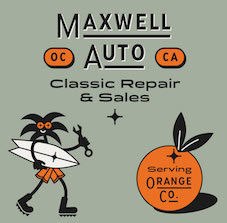 [More] ⦿
[More] ⦿
|
Ana Laura Ferraz
|
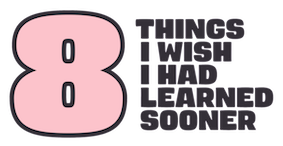 Brazilian graphic designer at Plau (Rio de Janeiro, Brazil), who lives in Köln, Germany.
Brazilian graphic designer at Plau (Rio de Janeiro, Brazil), who lives in Köln, Germany. In 2019, she co-designed Muda, a corporate typeface for the fashion brand Oficina Muda with Carlos Mignot, Gabriel Menezes and Rodrigo Saiani. In 2021, Ana Laura Ferraz, Valter Costa, Carlos Mignot and Rodrigo Saiani designed the handcrafted black poster and branding typeface Vinila for the identity of grammar teacher Eduardo Valladares' personal brand EDU VLLD (Edu stands for Eduardo and Education while VLLD represents Valladares and Vulnerability). [Google]
[More] ⦿
|
Anagrama
|
Anagrama are a brand and design agency based in Mexico. They developed a sans typeface for Sofia in 2012 [Sofia is a building designed by architect Cesar Pelli for One Development Group l ocated in San Pedro, Mexico]. [Google]
[More] ⦿
|
Anand Naorem
|
A graphic designer, typographer and typeface designer, Naorem has worked in brand identity and editorial and typeface design. He has been commissioned by Dorling Kindersley, The British Council Library, Picador, Harper Collins, National Geographic Channel, Microsoft, Alliance Française, Nestle, Pebble Road (Singapore), I Wish World (UK), Creative Black Country (UK), World Policy Journal (USA), Google, and The World Institute of Slowness (Norway). A graduate of the National Institute of Design, India, Naorem attended the Type@Cooper program at the Cooper Union, New York City. Co-founder in 2019 of Brand New Type together with Neelakash Kshetrimayum (creative director) and Sidharth Loyal (managing director). The BNT studio develops typefaces, creates type for corporations, and runs a BNT School (in Goa and other places). [Google]
[More] ⦿
|
Anastasia Kulazhenko
|
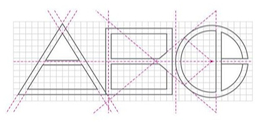 Vilnius-based designer of Aliboni (2012), a corporate typeface made for the identity of Italian architecture/construction company Aliboni Costruzioni. [Google]
[More] ⦿
Vilnius-based designer of Aliboni (2012), a corporate typeface made for the identity of Italian architecture/construction company Aliboni Costruzioni. [Google]
[More] ⦿
|
And A Half
|
Branding and deasign studio in Pasig, The Philippines. In 2016, they designed the custom typeface Sofa Display for the branding of The School of Fashion and The Arts (SoFA) in the Philippines. [Google]
[More] ⦿
|
Anderson Maschio

|
Batel, Curitiba, Brazil-based foundry of Anderson Maschio (b. 1980, Curitiba). Creator of the ultra-fat decorative typeface Chumbitos (2007, a winner in the experimental type category at Tipos Latinos 2008), available from MyFonts (this was followed by Chumbit02). He also made the experimental type family consisting of Anark Diet Stencil, Anark Fat Stencil, and Anark Natural Stencil (2007). Creator of Magricela (2009, octagonal). He is working on Austera (2007, a basic sans) and Phyta (2007, an experimental typeface with stretched out connected letters). In 2016, he made a custom font for Juliano Monteiro Studio. Check also his gorgeous art work based on Chumbitos. Link to Fictilia. [Google]
[MyFonts]
[More] ⦿
|
Andie Wise
|
American designer of LIT Skinny (2018) for the Lit Catering Co. [Google]
[More] ⦿
|
Andrea Cerboneschi
[Monofonts (or: Monocromo Creative Factory)]
|
[More] ⦿
|
Andrea Tinnes
[Typecuts]

|
 [MyFonts]
[More] ⦿
[MyFonts]
[More] ⦿
|
André Mooij
|
 Graphic and type designer in Monterrey, Mexico. In 2012, he created the rounded monoline sans typeface Milla. In 2015, he designed the typewriter typeface Lerslie Horvitz as aprt of the identity of novel and non-fiction writer Leslie Horvitz in New York City, and the display typeface El Cielo as part of the branding for El Cielo, a boutique spa based in Monterrey.
Graphic and type designer in Monterrey, Mexico. In 2012, he created the rounded monoline sans typeface Milla. In 2015, he designed the typewriter typeface Lerslie Horvitz as aprt of the identity of novel and non-fiction writer Leslie Horvitz in New York City, and the display typeface El Cielo as part of the branding for El Cielo, a boutique spa based in Monterrey. Behance link. Another Behance link. [Google]
[More] ⦿
|
Andreas Engelbreckt Kamp Bünger
|
 Copenhagen-based designer of the rounded sans headline typeface Faktur OTF (2013) in four styles. He also made Hundested (2013, octagonal typeface done for the Danish brewery Halsnaes Bryghus), Victor (2013, a clean geometric all caps sans: Victor is a bespoke typeface for One Nutrition, created as part of an identity re-design. The typeface is inspired by mid 20th century sports event posters), and Curator (2013, sans).
Copenhagen-based designer of the rounded sans headline typeface Faktur OTF (2013) in four styles. He also made Hundested (2013, octagonal typeface done for the Danish brewery Halsnaes Bryghus), Victor (2013, a clean geometric all caps sans: Victor is a bespoke typeface for One Nutrition, created as part of an identity re-design. The typeface is inspired by mid 20th century sports event posters), and Curator (2013, sans). In 201, he created Panneau (a high-contrast sans typeface). Behance link. [Google]
[More] ⦿
|
Andreas Nymark
[Nymark Type]
|
[More] ⦿
|
Andreas Steinbrecher
|
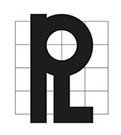 Aka Ando Karambo. Illustrator and graphic designer in Düsseldorf, Germany, who designed Samson (2013) and Aquazoo (2014: a rounded sans and paperclip typeface rolled into one; designed together with g31 for the Aquazoo Löbbecke Museum Branding).
Aka Ando Karambo. Illustrator and graphic designer in Düsseldorf, Germany, who designed Samson (2013) and Aquazoo (2014: a rounded sans and paperclip typeface rolled into one; designed together with g31 for the Aquazoo Löbbecke Museum Branding). Typefaces from 2016: the non-conformist typeface family Caractère Anal (the name was chosen in reference to people with an anal personality. Some may prefer the equivalent name Caractère Trumpiste), Baechlemeid (a handcrafted typeface for the Bächlemeid architects in Konstanz) and Japanische Populärkultur (stretchable gridded letters). [Google]
[More] ⦿
|
Andrej Dienes
[Adtypo]

|
 [MyFonts]
[More] ⦿
[MyFonts]
[More] ⦿
|
Andres Pulido
|
Art director in San Jose, Costa Rica, who created the high-contrast didone custom typeface Radar (2014). [Google]
[More] ⦿
|
Andreu Balius Planelles
[Type Republic]

|
 [MyFonts]
[More] ⦿
[MyFonts]
[More] ⦿
|
Andreu Balius Planelles

|
 Born in Barcelona in 1962, Andreu Balius studied Sociology in the Universidad Autonoma de Barcelona (1980-1984), and graphic design at IDEP in Barcelona (1985-1989). He holds a PhD in Design from the University of Southampton (UK). He founded Garcia Fonts&Co in Barcelona in 1993 to show his experimental designs. He cofounded Typerware in 1996 with Joancarles P. Casasín. Typerware existed until 2001 and was based in Santa Maria de Martorelles, a village near Barcelona. He cofounded Type Republic (see also here), and ran Andreu Balius (tipo)graphic design. He is presently an associate professor at Pompeu Fabra University in Barcelona.
Born in Barcelona in 1962, Andreu Balius studied Sociology in the Universidad Autonoma de Barcelona (1980-1984), and graphic design at IDEP in Barcelona (1985-1989). He holds a PhD in Design from the University of Southampton (UK). He founded Garcia Fonts&Co in Barcelona in 1993 to show his experimental designs. He cofounded Typerware in 1996 with Joancarles P. Casasín. Typerware existed until 2001 and was based in Santa Maria de Martorelles, a village near Barcelona. He cofounded Type Republic (see also here), and ran Andreu Balius (tipo)graphic design. He is presently an associate professor at Pompeu Fabra University in Barcelona. Balius won a Bukvaraz 2001 award for Pradell. Pradell also won an award at the TDC2 Type Directors Club's Type Design Competition 2002. SuperVeloz (codesigned with Alex Trochut) won an award at the TDC2 2005 type competition. At ATypI 2005 in Helsinki, he spoke on Pradell and Super-Veloz. Speaker at ATypI 2006 in Lisbon. At ATypI 2009 in Mexico City, he spoke about the Imprenta Real. Coorganizer of ATypI 2014 in Barcelona. Author of Type at work. The use of Type in Editorial Design, published in English by BIS (Amsterdam, 2003). FontFont link. Linotype link. Behance link. His production: - Garcia/Typerware offers about 50 fonts, including some very artsy typefaces, such as Fabrique (Andreu Balius), Futuda, Garcia Bodoni (Typerware), Alkimia (Estudi Xarop), Ariadna (pixel font, 1988-1989), Garcia Bitmap (1993), Playtext (Andreu Balius, 1995), Matilde Script (Andreu Balius, 1994: an embroidery face), Fabrique (1993, Andreu Balius) and Dinamo (1993, Balius and Casasin at Typerware), Helvetica Fondue (1993-1994), Futuda (1993), Ozo Type (1994), Tiparracus (1994, dingbats), Mi mama Me Soba Script (1994), Parkinson (1994), Garcia Bodoni (1995), Garcia snack's (1993-1995), Juan Castillo Script (1995, irregular handwriting), and Vizente Fuster (1995), all by Andreu Balius and Joancarles Casasin, 1993-1995; Water Knife (Laudelino L.Q., 1995); Alquimia (Estudi Xarop, 1995); Jam Jamie (Malcolm Webb, 1996); Network (Alex Gifreu, 1996); Panxo-Pinxo (David Molins, 1996); Euroface 80 mph (Peter Bilak, 1996); Inmaculatta (Roberto Saenz Maguregui, 1997); Proceso Sans (by Argentinan Pablo Cosgaya, 1996); Afligidos deudos (Adria Gual, 1996); Route 66 (Francesc Vidal, 1997); Popular (Sergi Ibanez, 1997); Visible (handwriting by Fabrice Trovato, 1997); SoundFile (Reto Brunner, 1998); Ninja type (kana-lookalike alphabet by Charly Brown, 1995); Vertigo (Charly Brown, 1996); Loop UltraNormal (Franco and Sven, 1996); Inercia (Inigo Jerez, 1996).
- Fontshop: FF Fontsoup.
- ITC: ITC Temble (1996, a great subdued ghoulish face). With Joancarles P. Casasin, he created ITC Belter (1996) and ITC Belter Mega Outline (1996).
- Typerware: Czeska was developed from Vojtech Preissig's woodtype typefaces. Andreu Balius completed the design and included an italic version and a large variety of ligatures (both for regular and italic).
- Type Republic: Pradell, Trochut, SuperVeloz, SV Marfil Caps (2004), SV Fauno Caps. Pradell was freely inspired from punches cut by catalan punchcutter Eudald Pradell (1721-1788), and is considered to be Balius' main work. Trochut is based on specimens from the 1940s by Joan Trochut. SuperVeloz is a collection of the type modules designed by Joan Trochut and produced at José Iranzo foundry in the beginning of the 40's, in Barcelona. Digitized and recovered by Andreu Balius and Alex Trochut in 2004. Example of such composition of modules include the great art nouveau typefaces SV Fauno Caps and SV Marfil Caps. In 2007, he added Taüll, a blackletter type. Still in 2007, he did the revival Elizabeth ND, which was based on an old type of Elizabeth Friedlander.
- In 2008, he created the Vogue mag like family Carmen (Display, Fiesta, Regular), which are rooted in the didone style. Carmen, and its flirtatious companion Carmen Fiesta, were both reviewed by Typographica.
- Barna (2011) and Barna Stencil (2011).
- In 2012, Trochut was published as a free font family at Google Web Fonts. It was based on Joan Trochut-Blanchard's Bisonte.
- Lladro (2012) is a custom sans typeface done for the Lladro company.
- Rioja (2013) is a grotesque typeface that was custom-designed for Universidad de La Rioja.
[Google]
[MyFonts]
[More] ⦿
|
Andrew Byrom
|
 Andrew Byrom was born in Liverpool, England in 1971. After Graduating from the University of East London in 1996 he opened his own design studio and worked for various clients including Penguin Books, The British Academy of Composers and Songwriters, The Industrial Design Centre, Time Out Online and The Guardian Newspaper. Around this time he also began teaching graphic design at The University of Luton and Central Saint. Martins. Byrom moved to the USA in 2000 to teach at Northern Illinois University in DeKalb, IL. He has recently been commissioned to design typefaces and type treatments for Elle Decoration, The New York Times Magazine, McGraw-Hill, and Turner Classic Movies. In 2006 he moved to Long Beach to take up an Associate Professor position at California State University, where he is currently the Area Head of the Graphic Design Department. He created the experimental typeface Interiors (2002), about which AIGA writes: Interiors (3D type) is a collaboration between type designer Andrew Byrom and designer Joel Wolter. It was originally conceived as a digital font (Interiors) and was inspired by an old wooden chair in Byrom's office that, when looked at from a certain angle, resembled the letter h. Using the three-dimensional principles of this simple form, and closely adhering to type design conventions, 26 letters of the alphabet were drawn and generated as a font. The characters were then constructed in three dimensions using tubular steel into full-scale furniture frames. Because the underlying design concept is typographical, the end result becomes almost freestyle furniture design. Letters like m, n, o, b and h can be viewed as simple tables and chairs, but other letters, like e, g, a, s, t, v, x and z, become beautifully abstract pieces of furniture. He also made the distressed font Bloodclot, the stencil family Byro Stencil (free), Byro Sans, 1byrosquare (2000), 2byroround (2000), ByroBlock Stencil (2000, stencil), Concussion (dot matrix with various size dots), Easy Vie, Venetian (2009, like Venetian blinds), Fresh (1995, scratchy type), Ply, Rage, St. Auden, Bandaid (2006), 3D Dot Matrix. He divides his time between teaching, designing for various clients and playing with his sons, Auden and Louis. He has recently been commissioned to design typefaces and type treatments for Elle Decoration, The New York Times Magazine, McGraw-Hill, and Turner Classic Movies. In 2006 he moved to Long Beach to take up an Associate Professor position at California State University, where he is currently the Area Head of the Graphic Design Department. Speaker at ATypI 2009 in Mexico City. [Google]
[More] ⦿
Andrew Byrom was born in Liverpool, England in 1971. After Graduating from the University of East London in 1996 he opened his own design studio and worked for various clients including Penguin Books, The British Academy of Composers and Songwriters, The Industrial Design Centre, Time Out Online and The Guardian Newspaper. Around this time he also began teaching graphic design at The University of Luton and Central Saint. Martins. Byrom moved to the USA in 2000 to teach at Northern Illinois University in DeKalb, IL. He has recently been commissioned to design typefaces and type treatments for Elle Decoration, The New York Times Magazine, McGraw-Hill, and Turner Classic Movies. In 2006 he moved to Long Beach to take up an Associate Professor position at California State University, where he is currently the Area Head of the Graphic Design Department. He created the experimental typeface Interiors (2002), about which AIGA writes: Interiors (3D type) is a collaboration between type designer Andrew Byrom and designer Joel Wolter. It was originally conceived as a digital font (Interiors) and was inspired by an old wooden chair in Byrom's office that, when looked at from a certain angle, resembled the letter h. Using the three-dimensional principles of this simple form, and closely adhering to type design conventions, 26 letters of the alphabet were drawn and generated as a font. The characters were then constructed in three dimensions using tubular steel into full-scale furniture frames. Because the underlying design concept is typographical, the end result becomes almost freestyle furniture design. Letters like m, n, o, b and h can be viewed as simple tables and chairs, but other letters, like e, g, a, s, t, v, x and z, become beautifully abstract pieces of furniture. He also made the distressed font Bloodclot, the stencil family Byro Stencil (free), Byro Sans, 1byrosquare (2000), 2byroround (2000), ByroBlock Stencil (2000, stencil), Concussion (dot matrix with various size dots), Easy Vie, Venetian (2009, like Venetian blinds), Fresh (1995, scratchy type), Ply, Rage, St. Auden, Bandaid (2006), 3D Dot Matrix. He divides his time between teaching, designing for various clients and playing with his sons, Auden and Louis. He has recently been commissioned to design typefaces and type treatments for Elle Decoration, The New York Times Magazine, McGraw-Hill, and Turner Classic Movies. In 2006 he moved to Long Beach to take up an Associate Professor position at California State University, where he is currently the Area Head of the Graphic Design Department. Speaker at ATypI 2009 in Mexico City. [Google]
[More] ⦿
|
Andrew Footit
[Arkitype (was: Virtue Creative)]

|
 [MyFonts]
[More] ⦿
[MyFonts]
[More] ⦿
|
Andrew Keating
|
Dublin, Ireland-based creator of a custom sans typeface for the Memento Circus Museum in 2013. In 2015, he designed the DIN-like typeface Persona. Behance link. [Google]
[More] ⦿
|
Andrew Nendel
|
Evansville, IL-based designer of Urban Block (2013) and Marquee Lights (2013). [Google]
[More] ⦿
|
Andrey Kochetov
|
 Russian designer of the rounded Latin / Cyrillic sans typeface family Inglobal (2014), together with Denis Davydov and Evgeny Yurtaev. This typeface was either commissioned for Inglobal, or was based on its logo. In any case, it can be freely downloaded at Dafont. [Google]
[More] ⦿
Russian designer of the rounded Latin / Cyrillic sans typeface family Inglobal (2014), together with Denis Davydov and Evgeny Yurtaev. This typeface was either commissioned for Inglobal, or was based on its logo. In any case, it can be freely downloaded at Dafont. [Google]
[More] ⦿
|
Andy Chen
|
Andy Chen created Gravur Conflict (2012), a custom typeface for the identity of the Center for Civilians in Conflict, which is a non-profit organization that cooperates with NATO and heads of warring states. The scarred design visualizes the terror of conflict while upholding the dignity of the civilians represented. Collaborators in this project included Camila Afanador and Wael Morcos. [Google]
[More] ⦿
|
Anita Lam
|
Graphic designer. She created the display typeface Penguin (2012) and received a Creative Summit award for the packaging design for Kikkoman, in large part due to the effective use of a fantastic custom typeface. She also created the board game Typopoly in 2012. [Google]
[More] ⦿
|
Anna Sahakyan
|
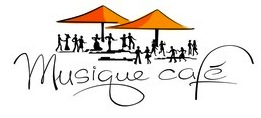 Graphic designer and illustrator in Yerevan, Armenia. Creator of a techno typeface for the branding of MSHAK TV (2012). [Google]
[More] ⦿
Graphic designer and illustrator in Yerevan, Armenia. Creator of a techno typeface for the branding of MSHAK TV (2012). [Google]
[More] ⦿
|
Anne Ulku

|
 Anne Ulku is an established designer based in Minneapolis, MN. She graduated from Minneapolis College of Art&Design in 2007. Her typefaces include Kazootie (2011, Chank Foundry), which was inspired by cut-paper shapes and named after the hand puppet character Rootie Kazootie in a 1950s children's television show. Together with Chank Diesel, she created an exclusive custom typeface design for the 2011 Target Halloween campaign---a complement to the cut-paper art designs of Andrea Deszö. She also made Vintage Noveau Italian (2012), the collage typeface Particulate (2012, free at Chank Diesel's place), Indian (2012, a retro motorcycle script font done with Chank Diesel), and the sewing machine font Stitch (2012).
Anne Ulku is an established designer based in Minneapolis, MN. She graduated from Minneapolis College of Art&Design in 2007. Her typefaces include Kazootie (2011, Chank Foundry), which was inspired by cut-paper shapes and named after the hand puppet character Rootie Kazootie in a 1950s children's television show. Together with Chank Diesel, she created an exclusive custom typeface design for the 2011 Target Halloween campaign---a complement to the cut-paper art designs of Andrea Deszö. She also made Vintage Noveau Italian (2012), the collage typeface Particulate (2012, free at Chank Diesel's place), Indian (2012, a retro motorcycle script font done with Chank Diesel), and the sewing machine font Stitch (2012). In 2015, she hooked up with Olson for a new typeface for Porsche. Anne writes: Porsche has always had a very clean and structured, well-known visual brand. Their custom headline font, Porsche Franklin Gothic, happens to be the exact same as Franklin Gothic. In order to create a refresh of the Porsche brand, while still maintaining the established look, there was opportunity for a new typeface. The core of the new typeface is based on the Porsche logo, as well as typeface Deutsches Institut für Normung 145---a precise, technical typeface; also the standard for German road signs. With a strong racing history, additional visual cues were also used in creating a truly unique, custom Porsche typeface. Dribble link. Twitter link. [Google]
[MyFonts]
[More] ⦿
|
Anouk Pennel
[Studio Feed (or: Feedtype)]
|
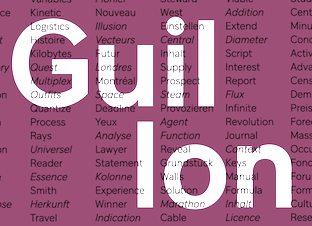 [More] ⦿
[More] ⦿
|
Anthony Balanza
|
Graphic designer in San Diego, CA. Creator of the display sans Disconnected (2013): Disconnected is a typeface that was designed for Disconnected Salon in North Park, San Diego. The typeface was created to mimic the letters of Disconnected Salon's original logo. This typeface will also be used for a lot of Disconnected's upcoming marketing campaigns including Graphic Ts, billboards, and more. Behance link. [Google]
[More] ⦿
|
Antoine Brun
|
Antoine Brun is a French graphic designer based in Paris. After a bachelors in graphic design at LTAA Auguste Renoir Paris (class of 2019), he specialized in identity, editorial graphics and typography. Designer of the phantasmagoric typeface Kaliste (2020) at Lift Type. During a workshop led by Yoann Minet, he designed Liza, which was inspired by Benguiat Caslon, and under the supervision of Julien Priez, he created the letterpress typeface Emily. Commissioned typefaces by Brun include Hic&Nunc (a brush type), and Opie. Finally, he created the modular typeface Module. [Google]
[More] ⦿
|
Anton Koovit
[Fatype]

|
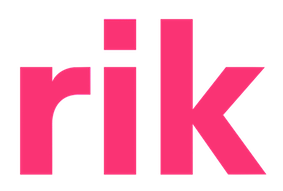 [MyFonts]
[More] ⦿
[MyFonts]
[More] ⦿
|
Anton Moglia
[Maous Studio]
|
[More] ⦿
|
Antonio Lechuga
[Antonio Mejia Lechuga]

|
 Mexico City-based designer, b. Huauchinango. He studied graphic design at Universidad del Valle de Mexico in Queretaro City, and received a diploma in corporate identity from LISAVA in Barcelona in 2005. He opened his own graphic design studio in Mexico City in 2016.
Mexico City-based designer, b. Huauchinango. He studied graphic design at Universidad del Valle de Mexico in Queretaro City, and received a diploma in corporate identity from LISAVA in Barcelona in 2005. He opened his own graphic design studio in Mexico City in 2016. With the Latinotype team, he designed the high-contrast fashion mag headline typeface family Gabriela Stencil (2016), which was inspired by 19th century didones. Gabriela Stencil won an award at Tipos Latinos 2018. In 2018, Antonio Mejia Lechuja designed the handwriting typeface Handasa (programming by Ivan Moreno, Veracruz, Mexico). Handasa imitates the handwriting of architect Pedro Pablo Velasco Ochoa in his thesis Handasa: La epica en la arquitectura. In 2019, he added Gabriela (Latinotype) and Trust Sans (Latinotype Mexico: for corporate branding). Typefaces from 2021: Planetazul (a corporate font for Planeta Azul), Bruna (a 16-style sans family named after Dutch children's book illustrator Dick Bruna (1927-2017)). In 2021, he designed Gatopardo Display for the Mexican magazine Gatopardo, as well as Mestiza (a 12-style serif with sharp terminals). Typefaces from 2022: Mestiza Sans (a 12-style flared lapidary sans). [Google]
[MyFonts]
[More] ⦿
|
Antonio Mejia Lechuga
[Antonio Lechuga]

|
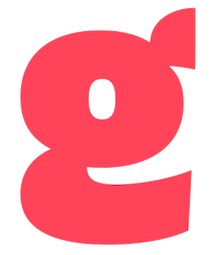 [MyFonts]
[More] ⦿
[MyFonts]
[More] ⦿
|
Ape to Zebra
|
Studio in Amsterdam. In 2016, they designed an art deco typeface for the new identity of The Wilpsche Dijk. Behance link. [Google]
[More] ⦿
|
Apfel Type Foundry
|
Apfel Type Foundry (London, UK) was launched in 2020. The initial team consists of Kirsty Carter (Director), Emma Thomas (Director), Daniel Griffiths (Associate Director), Joanna Rutter (Senior Designer), Olivia Diaz (Senior Designer), Matt Kay (Junior Designer) and Jason Wolfe. Apfel stands for A Practice for Everyday Life. It engages in custom and retail type. Initially, in 2020, it had four retail typefaces: - Marquis (2021). A humanist sans by Jason Wolfe. This is a contemporary reinterpretation of the Stephenson Blake typeface Granby (1930), which was itself influenced by the letter forms of Johnston and Futura.
- Certeau. A sans typeface with a short-legged e. They write: Influenced both by geometric Modernist monoline typefaces and by examples of Dutch and German sans-serif typography from the 1930s, Certeau evolved through research into type styles that strike a balance between rationality and idiosyncrasy.
- Lining. A sans with large counters designed by Jason Wolfe. Apfel writes: A contemporary reinterpretation of a sans-serif typeface family first advertised by the American Type Founders Company in 1897.
- Remnants. Remnants is a skyline style typeface that is based on a display type found on an old Serbian book cover, and was expanded to encompass a full Latin character set which captures a sense of the beauty of the Cyrillic alphabet.
- Periferia. An experimental stencil typeface.
Apfel also released these typefaces made by Jason Wolfe: Asia Art Archive, the various Camper typefaces, and Friedel (2021). Custom typefaces include Piloti (a light flared sans with large x-height, for Feilden Fowles), Elle Play Display (2017, a headline typeface for Elle UK), House of Voltaire, Apfel AB (a quadrangulated typeface done with Anthony Burrill), Camulodunum (2011; Display and Stencil), Camper (2014; in SS15, SS16 and AW15 styles), V&A Dundee (stencil), Royal Docks, Asia art Archive Display. [Google]
[More] ⦿
|
AppD Sans
|
Based in San Francisco, AppDynamics is an enterprise software company specialising in application performance monitoring software that ensures the smooth running of business-critical applications In 2019, a rebranding of AppDynamics led to the corporate typeface AppD Sans, which was jointly developed by Göran Söderstrom (Sweden), Paul Russell (New Zealand), Kallan & Co (Finland), Brett King (Finland) and Hannu Koho (Finland). [Google]
[More] ⦿
|
Apple Watch Font (or: the San Francisco Font)
|
 In September 2014, Apple announced the imminent arrival of the Apple Watch, which came with a new neo-grotesque sans-serif typeface developed in house. It has a legible, open DIN-like look, but the name of its designer was not released. The 35 fonts are grouped into subfamilies San Francisco Text and San Francisco Display, and are available to designers of Apple Watch applications here.
In September 2014, Apple announced the imminent arrival of the Apple Watch, which came with a new neo-grotesque sans-serif typeface developed in house. It has a legible, open DIN-like look, but the name of its designer was not released. The 35 fonts are grouped into subfamilies San Francisco Text and San Francisco Display, and are available to designers of Apple Watch applications here. The reaction of the curmudgeon society, aka The Typophiles, is quite predictably negative, with opinions including Susan Kare's original San Francisco (also done for Apple) was better [note: Kare's was a ransom note font]. I really wonder why the typophiles bother---it's not their magazine or their web page---companies are free to use anything they like, including "not wasting a lot of effort on new typefaces". Some San Francisco fonts are free from Apple's web site. These come in four groups, SF Pro Text, SF Pro Display, SF Compact Text, and SF Compact Display. Developed between 2015 and 2017, these fonts have become the Apple System fonts for basically all Apple machines. San Francisco has gradually replaced most of Apple's other typefaces on their software and hardware products and for overall branding. It was the original system typeface of watchOS and tvOS and has replaced Helvetica Neue and Lucida Grande as the system typeface of macOS and iOS since OS X El Capitan and iOS 9. Apple uses it on its website and for its product wordmarks, where it replaced Myriad Pro. It is also used on the keyboard of the 2015 MacBook and on the 2016 MacBook Pro, replacing VAG Rounded. It is also used as Apple's corporate typeface. Apple restricts the usage of the typeface by others. It is licensed to registered third-party developers only for the design and development of applications for Apple's platforms. The San Francisco typeface has four variants: "SF" (or "SF UI") for macOS, iOS, and tvOS; "SF Compact" for watchOS; "SF Mono" (based on SF Compact) for the Xcode application; and "SF Serif" for Apple Books. The main difference is that the sides of letters with round shapes, such as o, e, and s, are round in SF, whereas they are flat in SF Compact. The flat sides allow the letters to have more space between them, thereby making the text more legible at small sizes, which is particularly important for the Apple Watch. Both SF and SF Compact each have two optical sizes: "display" for large and "text" for small text. Compared to display, the letters in text have larger apertures and more generous letter-spacing. The operating system automatically chooses the display optical size for sizes of at least 20 points, and the text optical size otherwise. Additionally, included in macOS Sierra and iOS 10 is a new variant named "SF Compact Rounded". It is used in the new contact placeholder icons introduced in the OSes. The "SF Serif" variant was showcased in June 2018 when the all-new Apple Books app was introduced. This variant is exclusive to Apple Books in iOS 12 and macOS Mojave, is not mentioned in Apple's Typography design guidelines, and is not publicly downloadable like other variants of the San Francisco typeface. Open Font Library link where one can download the SF UI Text family (2015). Postscript: The 2014 San Francisco font should not be confused with Susan Kare's ransom note bitmap font San Francisco which was created in 1984 for Apple. An official TrueType version was never made, and Kare's San Francisco was rendered obsolete with the arrival of Apple's System 7. Wikipedia link. Apple font download site where one can find San Francisco Compact (this sans-serif typeface is the system font for watchOS, and includes a rounded variant), San Francisco Pro (this sans-serif typeface is the system font for iOS, macOS, and tvOS, and includes a rounded variant), and New York (a large transitional typeface family with optical and width sizing; 2017-2018, that won an award at the Type Directors Club's Type Design Competition 2019). Also included is the variable font San Francisco Rounded, which includes a weight axis and a grade axis for adjusting the stroke weight without changing glyph widths. [Google]
[More] ⦿
|
Approximate Type
[Kasper Pyndt Rasmussen]
|
 Danish graphic and type designer in Copenhagen, who studied at The Royal Danish Academy of Fine Arts, School of Design (2010-2016) and The Royal Academy of Art, The Hague (2014-15). In 2020, he set up Approximate Type. His typefaces:
Danish graphic and type designer in Copenhagen, who studied at The Royal Danish Academy of Fine Arts, School of Design (2010-2016) and The Royal Academy of Art, The Hague (2014-15). In 2020, he set up Approximate Type. His typefaces: - He made various typefaces in 2010, including a monoline sans caps face, a Peignotian high-contrast caps face, a paper fold face, and the geometric typeface Ottoman, which was part of the visual identity made for a nightclub named Ottoman, located at Dunkel in the heart of Copenhagen. Wondair (2011) is a rounded monoline logotype made for a fictituous airline. Gemini (2011) is a bilined geometric art deco typeface.
- In 2012, Pyndt designed the soft neo-grotesque Husaar, which has subtle, sharp ink-traps.
Dalat (2013) is a typeface inspired by Vietnamese visual culture. I believe that at some point it was called Kieu. He writes about Dalat: Dalat is a typeface that looks back on Vietnam's visual history and attempts to form a synthesis of style. As French Art Deco and Russian Constructivism have been prominent actors in Vietnam, the letters are constructed in a similarly geometric way. By contrast, the soft serifs are derived from Vietnamese calligraphy whose brush strokes tend to thicken and pool towards the end. - Clerk (2015) is a stencil display typeface based on a sign type (most likely) drawn by Samuel de Clerq in the 1920s for the savings bank of The Hague. This uppercase-only font features, among other things, an array of 'O'-ligatures as well as a flat-top '8'.
- Aguzzo (2016). A roman capitalis typeface loosely based on Aldo Novarese and Alessandro Butti's Augustea (1951).
- Celebrating the 100-year anniversary of Danish furniture design legend Hans Wegner, Tønder Museum asked Pyndt to visually interpret his work, which led to Pyndt's Wegner Alphabet depicting chairs.
- Edwin (2016?) is a text typeface drawn from the simple notion of replacing the ball-terminal with a square. A font that retains character despite its functional merits.
- Reply (2020). A neutral sans family with nearly monolinear strokes and large open counters.
- The bespoke sans typeface family Shed (2021).
Behance link. Home page. [Google]
[More] ⦿
|
Aral
|
The house font of Aral, designed for them by URW. [Google]
[More] ⦿
|
Ariel Di Lisio
[Negro]

|
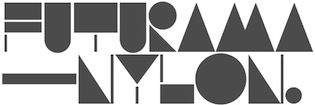 [MyFonts]
[More] ⦿
[MyFonts]
[More] ⦿
|
Aring Typeface
[Måns Grebäck]

|
 Måns Grebäck (Aring Typeface, Örebro, Sweden) is a prolific Swedish designer (b. Lindesberg, Sweden, 1990), who lives in Borlänge, Sweden. Måns Grebäck has a bachelor's degree in graphic design from the University of Dalarna (2012). In 2010, he went commercial, and started selling fonts through MyFonts. In 2011 he started Mawns Design. In 2013, that was renamed to Aring Typeface. In 2011 he already had over seven million downloads of his fonts, which were featured at websites such as Dafont and Myfonts. He also does custom type work. His typefaces, both free and commercial:
Måns Grebäck (Aring Typeface, Örebro, Sweden) is a prolific Swedish designer (b. Lindesberg, Sweden, 1990), who lives in Borlänge, Sweden. Måns Grebäck has a bachelor's degree in graphic design from the University of Dalarna (2012). In 2010, he went commercial, and started selling fonts through MyFonts. In 2011 he started Mawns Design. In 2013, that was renamed to Aring Typeface. In 2011 he already had over seven million downloads of his fonts, which were featured at websites such as Dafont and Myfonts. He also does custom type work. His typefaces, both free and commercial: - Acryle Script (2014).
- Actonia (2016). A monoline script.
- Adielle (2018).
- Aerofoil (2017). A vintage bottom-heavy script.
- Airways (2016). A signage script.
- Akayla Script (2018). Calligraphic.
- Aliey (2021). A 4-style Victorian copperplate serif.
- Aliment (2018). A sharp geometric sans.
- Amertha (2020). a fat finger font.
- Amplify (2013). A signage script.
- Angars Runes (2019: medieval, with gothic cathedral curves).
- Angilla Tattoo (2013). A connected spurred tattoo typeface. Followed by Angilla Script (2020).
- Antlers (2012). A calligraphic script.
- Aquate Script (2019).
- Arachnids (2011, graffiti face)
- Artely Inks (2016).
- Artisual Deco (2021). Pure art deco.
- Artographie (2020). An all caps art deco typeface family.
- Atelas (2015). Signage type, baseball script.
- Atures (2018). Futuristic and monoline.
- Autograf (2015) and Autografia (2021). Signature typefaces.
- Ave (2016) in styles called Ave Utan, Ave Betwan and Ave Fedan. A family of baseball scripts.
- Avelana. A connected script.
- Backpack (2014). A thick signage script typeface.
- Backyard (2016). A blackletter typeface.
- Barkants (2011, elegantly hand-printed family).
- Barley Script (2017). A signage script.
- Baystar Script (2021).
- Beautiful Trouble (2012). A rabbit-eared upright connected script.
- Beaked Tyrant (2014). A copperplate calligraphic script.
- Beckasin (2011, signage face)
- Before The Rain (2011, calligraphic) Before The Rain Arabic (2016).
- Belladio (2021). An urban script.
- Bellino (2018).
- Bezar (2020). A script.
- Billion Dreams (2020, by Mans Grebäck and Rangga Subekti). A heavy signage script.
- Billion Stars (2013). A tattoo script font.
- Bira (2012). A retro connected brush / signage script.
- Blaak (2019).
- Black Fox (2014). A sirupy brush face.
- Black Signature (2021). A bold signature font.
- Black Larch (2016) and Dark Larch (2016).
- Bloc Boy (2016). Like handwriting.
- Blockography (2011). A sketched typeface.)
- Block Talk (2011, with Zaydek Michels-Gualtieri)
- Blods (2011, a great blotty brush face)
- Blueberry Script (2017; with Noah Kinard).
- Botanink (2011)
- Bouncy (a cartoon font).
- Bourdos2022). A script typeface.
- Brannboll (2011, baseball signage face), Brannboll NY (2013), Brannboll Connect (2020), Brannboll Stencil (a baseball script) (2020).
- Bready (2011). A retro signage script with art nouveau aroma.
- Brev Script (2014). A connected secretary hand from the 19th century.
- Bronze Script (2014).
- Brother Tattoo (2012).
- Bumblebees (2012). A plump curvy script.
- Bunya (2016). A geometric slightly deco sans typeface family.
- Calendary Hands (2012).
- Caligraf (2020).
- Canela Bark (2015, co-designed with Luis Miguel).
- Caneletter Sans and Script (2013). Upright unconnected and connected scripts.
- Cantona Script (2019).
- Canyon (2021). A wide elliptical sans in 18 styles, featuring a coathanger lower case f.
- Capoon (2018). A ten-style sans family.
- Caprica Sans (2014) and Caprica Script. A plump script.
- Caravela (2020). A pirate map script.
- Casat Cap (2017). An all caps brush typeface family.
- Caster (2019). A heavy poster script.
- Castro Script (2012).
- Catchland (2021). A retro baseball script.
- Celebrater (sic) (2012). An oily font.
- Cellos Script (2013).
- Centeria Script (2012).
- Channel (2011, connected upright script)
- Chapel Script (216). For signage.
- Characteristic (2011).
- Chavenir (2011).
- Chinal (2018).
- Choko (2011, released in 2016). Chocolate and cream-themed decorative typeface.
- Christmas Miracle (2018), Christmas Reign (Tuscan, all caps) (2020), and Christmas Sparkle (2018).
- Chrysante (2020). A monoline flowing pen script.
- Clear Line (2012). A fat finger / signage typeface.
- Clipper Script (2011).
- Clothe (2017).
- Coneria Script (2012). A connected script.
- Conture Script (2018). Elegant, classical, and with exaggerated capitals.
- Crackin (2011).
- Crunchy (2016). An upright connected script.
- Cruz Quaste (2020). A handcrafted blackletter typeface.
- Cubest (2021). A squarish monospaced techno family.
- CutScript (2011, connected script).
- Danbury (2022). A speed-emulating sans.
- Dark Crow (2020). a dry brush script.
- Dollie Script (2013).
- Ebbing (2018).
- Echinos Park Script (2012).
- Ederson (2018). A vintage signage script.
- Ekologie Hand (2012).
- Ekorre 2021). Aa vintage decorative serif.
- Elaya Script (2019). A creamy signage script.
- Electronics (2017). A retro signage script.
- Elevate (2016).
- Emiral Script (2017). A baseball script.
- Encina Script (2016). A thin calligraphic typeface.
- Enlighten (2011)
- Delinquente (2012).
- Denigan (2011, hairline)
- Equal Sans (2012).
- Espesor Olas (2011, fine hand-printed calligraphic family)
- Esplanade Script (2015, by Mario Arturo).
- Ethernal (2017). A connected script.
- Europe Underground (2010, geometric sans with a hairline weight).
- Fabulous (2017) and Fabulous Gold (2017). Signage script.
- Falkin Sans (2016), Falkin Script (2016), Falkin Serif (2016).
- Faltura (2011, constructivist), Faltura Alien (grunge), Faltura Guerra (grunge)
- Faltura Animals (2011)
- Feathergraphy Decoration (2011, calligraphic).
- Duera (2016). A variable width sans typeface family.
- Fargo (2021). A cursive script.
- Fat Wandals (2018). A graffiti font.
- Feathergraphy Clean (2011).
- Fibography (2013). A caps typeface composed of fibers.
- Filbert Brush (2012), Filbert Color (2013, a soft brush font).
- Finition (2017). A connected brush script.
- Fireplace (2020). A connected script.
- Firstly (2020). A flowing calligraphic signature script.
- First Lyrics (2011).
- First Reign (2022). A medieval typeface. Second Reign (2022), Third Reign (2022) and Fourth Reign (2022) are further medieval typefaces.
- Flighter (2018). A retro airplane font.
- Fondy Script (2018).
- Frankentype (2013). An all-caps brush typeface for signage.
- From Skyler (2016).
- Funkygraphy (2011, fat and counterless).
- Gecko (2015, a fine creamy signage script).
- Geza Script (2017). A great angular almost Arabic-looking script.
- Ghang (2011, graffiti family).
- Gingo (2020). A script.
- Goatskin Brush (2015). A great brush typeface.
- Golden Hopes (2021). A signature script.
- Gonzi (an 31-style sans). Published in 2021.
- Graced Script (2016). A wide calligraphic connected brush script.
- Grandi (2016). A ten-style display sans.
- Gready (2021). A fat signage script.
- Greback Grotesque (2012). The Thin is very very thin.
- Gretoon (2011, cartoon family)
- Griphite (2018). A rough brush typeface.
- Guld Script (2015).
- Habanero (2016). A fat signage typeface.
- Handtalk (2010, silhouettes)
- Harbell (2013).
- Hard Block (2011, Western slab face).
- Hastafi (2022). An 8-style sharp-edged display serif.
- Haydon Brush (2016).
- Heavy Rain (2021). Decorative initials, and an all caps wedge serif.
- Hemicube (a wide squarish all caps sans) (2020).
- Hemmet (2013). A signage script.
- Hierograf (2016). A layered textured handcrafted poster typeface family.
- Hitalica (2011).
- Honeymoon (2017). A connected script.
- Housegrind (2013, connected script).
- House of the Dragon (blackletter). Published in 2021.
- Hoyle (2020). A slab serif.
- Hundred Miracles (a signage script). Published in 2021.
- Impregnable (2013). A connected script.
- Indiana Script (2017). A baseball script.
- Inked Bones (2019). a hand-painted blackletter font.
- Intrique Script (2013). A baseball script.
- Isle Body (2019), Isle Headline (2019).
- Jacked Eleven (2011), Jacked Eleven Highlight (2011), Jack Pirate (2020: a tattoo blackletter typeface), January Script (2013).
- Jaymont (2018). A sharp-edged wedge serif typeface family.
- Jengotan (2021). A dry brush script.
- Jumper (2021). A 13-style sans. Free download for personal use only.
- Kandira (2018). A sleek sans family.
- Kanvas (2020). A script typeface.
- Kerater (2011, sans)
- Lace 2.0 (2012). A thin connected script co-designed with Matteo Milazzo.
- Lacosta (2020). A signage script.
- Kompar (2018).
- Krinkes (2015, baseball script). A connected swashy signage script.
- Kurri Island (2020).
- Lakesight (2014). A connected script.
- Larch (2016). A crisp script typeface.
- Largelake (2021). A signage script.
- Las Enter (2013). A neon light script.
- Leaders (2020). A blackletter font.
- Ledare (2021). A 14-style bold and expressive sans.
- Letric (2021).
- Let Me Ride (2011)
- Levitee (2011, a lively connected script).
- Lighthouse (2013). A bold high-contrast script face.
- Lina Script (2012). A tattoo script done with Vicky Mardian.
- Lourino (2018).
- Low Casat (2017) and Low Casat Fat (2017).
- Lyrics Movement (2011, tall-ascendered hand).
- Lyster (2020).
- Mandoul Script (2021) and Mandoul Black (2021: a brush script).
- Mainland (2018). A sans family.
- Mainstream (2017). Graffiti style.
- Manofik (a 4-style warm retro serif with a coathanger lower case f; for Latin, Cyrillic and Arabic). Published in 2021.
- Martyric (2014, brush script),
- Masteries (2013). A connected formal script.
- Mastoc (2014).
- Mauritz Caps (brushed) and Mauritz (a great wild script family), both published in 2021. Followed by Mauritz Sans (a brush script with a strong personality and a cartoon vibe) in 2022.
- Mean Casat (2018).
- Medish Script (2018). A great calligraphic handwriting typeface.
- Together with Noah Kinard, he designed the calligraphic typeface Melay Script (2016).
- Middle Ages (2019). A Lomardic blackletter in Regular and Deco styles.
- Milasian Circa (2015) and Milasian. A connected script.
- Merry Christmas (2015). A retro script in Flake and Star styles. Followed in 2017 by the color script font Merry Christmas Color.
- Milkyway Hotel (art deco sans).
- Miraikato Hand (2022) and Miraikato Script (a rustic script) (2022).
- Mistuki (2015). An oriental brush simulation font.
- Mochary (2016). A signage or tattoo script.
- Molly Sans (2019). Caps only.
- Monsta Tag (2013): a graffiti font.
- Motion Picture (2013). A heavy connected retro script.
- Mount (2012).
- MAWNS Graffiti (2010) and MAWNS Serif (2010)
- MAWNS Handwriting (2010).
- Made With B (2011, sketched face).
- Mardian (2012). A calligraphic tattoo script done with Vicky Mardian.
- Markera (2011, marker pen family)
- Many Weatz (2011)
- Mawns Rock (2011)
- Monoment (2011). A fat upright connected script.
- Moneymachine (2022).
- Monosphere (2012-2016). A futuristic monospaced typeface.
- Murality (2022). A readable graffiti or mural typeface.
- Myteri Tattoo (2021) and Myteri Script (2021: a calligraphic script).
- Nacinth (2020). A script.
- Nino Script (2018). A tattoo font.
- Nobella (2021). A retro baseball script.
- Normale (2014). A set of distressed typewriter fonts.
- Notera (2014). A connected handwriting font. Followed by Notera 2 in 2018.
- Odenburgh (2020). A medieval calligraphic typeface.
- Optien (2011, techno face)
- Ordinatum (2011, a severe sans).
- Original Black (2021). A fat blackletter typeface.
- Ornamental Versals (2011, ornamental caps)
- Painter (2016). A sign painting script.
- Patched (2021).
- Pennybridge 1563 (2010, blackletter)
- Pharmount (2014). A calligraphic connected script.
- Phraell (2013). A great italic formal calligraphic script with optional swashes.
- Pigeon (2016).
- Pineapple (2012).
- Plates Napery (2015).
- Plicata (2016).
- Pligo (2016). A balloon or cartoon font.
- Preside (2017).
- Prime Script (2012).
- Prognostic (2011)
- Qaskin (2015). A semi-formal connected script typeface with Black and White (outlined) styles.
- Qhuman (2021). A 6-style Victorian serif.
- Qraxy (2016). Quache Variable (2020) and Quache (2020). A 28-style flexible sans family.
- Quanton (2022). An 8-style angular serif.
- Querino Sans (2019). A very bold sans. Followed by Querino Script (2019).
- Quickier Pro (2012). A swashy calligraphic script face.
- Quincho Script (2016).
- Quintal Script (2021). A retro signage font.
- R-2014 (2011, LED face).
- Rabento (2021). A 6-style condensed display slab serif.
- Race Fever Pro (2015, in Brush and Pen versions) and Race Fever Brush (2015).
- Radio 187.5 (2010, techno family)
- Rakoon (2014). A creamy ultra-fat upright script. Followed by Rough Rakoon in 2016.
- Rangly (2017-2018). A paint roll font.
- Raspberry Script (2017).
- Recorda Script (2013). A formal calligraphic script.
- Reditum (2014). A decorative script.
- Reeler (2014, with Noah Kinard).
- Remachine Script (2013). Retro signage script. In 2020, Mans added Remachine Script Arabic.
- Respective (2011, calligraphic script, +Swashes).
- Respondent (2021). A script.
- Rider (2011, a 30-style "versal" sans family)
- Ringer (circle and arc-based sans)
- Ristella (2017). A baseball script.
- Rivera 2022). A narrow sans in 10 styles.
- Rodrigues (2021). A script typeface.
- Roona Sans (2018: modernist and organic curves).
- Ropest (2018). A rope font.
- Roskrift (2011, calligraphic; + Roskrift Clean).
- Rougant (2021). An organic display font.
- Roughen (2020).
- Rurable (2015).
- Ruthless Wreckin (graffiti typefaces), Ruthless Drippin' (dripping paint family)
- Safir Script (2016). A fat baseball script.
- Saker Sans (2017).
- San Andre (2021) and San Andreas (2021), the free version. A baseball script.
- Santa Claus (2019). A blackletter typeface, accompanied by Santa Claus Deco, a snow crystal font.
- Scantype (2016).
- Sculptor's Hand (2011, connected chancery hand).
- Second Lesson (2022). A wide script.
- Second Lyrics (2011, Treefrog-style handwriting)
- Sequal (2020). Graffiti style.
- Sicret (2020) and Sicret Mono (2020). An all caps family.
- Servin' for Salute (2011)
- Shaded Larch (2016).
- Sharpe (2019). A sharp-edged high-contrast serif typeface family. See also Sharpe Variable (2020).
- Shenandoah (flowing signage script).
- Shimes (2015).
- Shipped Goods (2011). A copperplate calligraphic script.
- Shortbrush (2011)
- Signerica (2011, connected flowing hand)
- Sketchica (2011, sketchy face)
- Skyzhi (2016). An advertising headline typeface.
- Society Editor (2013, connected script).
- Snacker Comic (2013).
- Snowstreet (2013, an octagonal typeface) and Snowy (2013).
- Some Weatz (2011, calligraphic, copperplate; +Swashes)
- Sonika (2018).
- South African (2014). A movie poster brush typeface.
- Southern Aire (2013, connected script face).
- Specify (2016). A 40-style sans family. Download, free for personal use.
- Spoken (2019). A graffiti font.
- Sponger (2021). In the VAG Round genre.
- Square Worm (2011)
- Stackyard (2015). A script.
- Stainy (2013). A signage script.
- Starella Script (2019) and Starella Tattoo (2019).
- Starge (2019).
- Starkey (2020).
- Stormland (2021). A wide monoplinear sans.
- Stormline (2021). All caps, wide and outlined.
- Strawberry Script (2017).
- String Lines (2018).
- Stroke Dimension (2011). A 3d typeface.
- Struck Base (2021). A baseball script.
- Suecos Locos (2011---yummy!).
- Sultan Cafe (2014). An interlocking poster typeface.
- Sunny Sam (2020). A script typeface.
- Sverige Script (2012). Calligraphic wedding font.
- Tall Casat (2018).
- Tamoro Script (2014).
- Taylor Hand (2020). A signature script.
- Tevegraphy (2011, elliptical)
- The Hills (2017).
- The World is Yours (2011, quaint)
- Throwupz (2011)
- Toley Hand (2019).
- Tipbrush Script (2011).
- Tomino (2016).
- Top Comic (2013). A very fat cartoon bubble face.
- Treehouse (2011, upright connected script; +Snowhouse for a snow-covered version)
- Tusch Touch 1 (2011)
- Two and Three (2011: a tattoo parlor blackletter family)
- Typographic Onedalism (2011, graffiti simulation face).
- Undergone (2014). Decorative and calligraphic.
- Unthrift (2015). A pen script.
- Vacer Sans and Vacer Serif (2016). The latter is a slab serif.
- Validity Script (2020, with Misti Hammers).
- Ventography (2013). A bold signage script.
- Vinho De Amora (2021). A vintage all caps wedge serif and a stencil version.
- Waiter (2017).
- Walk Da Walk One
- Wandals (2018). A graffiti font.
- Wankstaberg Battles (2010, a tall fat script)
- White Dream (2021). A retro script.
- White Larch (2016). A connected script typeface.
- Wholecar (2021). An unerground train graffiti typeface family.
- Wild Growth (2011).
- Wildline (2021).
- Winfield Script (2019).
- World Series (2021). A baseball script.
- Xtreem (2012) and Xtreem2 (2014).
- Yanty, Yanty Big, Yanty Script, and Yanty Script Big (2012).
- Yaquote Script (2014).
- Yaty (2019).
- Yoghurt (2011).
- Zoney (2021).
View Mans Grebäck's typefaces. Abstract Fonts link. Fontspace link. MyFonts link. Another URL. Dafont link. Klingspor link. Buy fonts directly from Måns Grebäck. Old URL. [Google]
[MyFonts]
[More] ⦿
|
Arkitype (was: Virtue Creative)
[Andrew Footit]

|
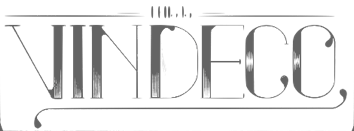 Andrew Footit (b. 1984) runs his own type foundry in Johannesburg, South Africa. He is also known as Arkitype. Until 2014, his type studio was called Virtue Creative and before that, Virtue84. In 2017, he set up Arkitype. His typefaces:
Andrew Footit (b. 1984) runs his own type foundry in Johannesburg, South Africa. He is also known as Arkitype. Until 2014, his type studio was called Virtue Creative and before that, Virtue84. In 2017, he set up Arkitype. His typefaces: - The very simple monoline rounded geometric typeface Modulus (2011). Updated to Modulus Pro in 2019.
- The stunning art deco typeface Vindeco (2011).
- Gigafont (2011): a free bubblegum font.
- FunFair (2012): hand-printed.
- Virtus Sans (2012): a clean 4-style sans family.
- the Western family Westro (2012, +Inline).
- The free rounded sans drafting font Struct (2013).
- The four-style vintage poster typeface The Woods (2013).
- The spurred letterpress typeface family Roper (2014). Roper evolved into the octagonal typeface family Hudson NY (2015) and Hudson NY Pro (2020). Hudson NY Regular, Serif and Slab are athletic lettering / octagonal typeface families.
- Bosk Hand.
- Roves (2016). A camping style set of fonts, including several stencil typefaces.
- Anchor Script (2016). Inspired by classic cursive connected handwriting.
- Navigator (2016). Inspired by the early explorers.
- Bowline Script (2016). A vintage monoline cursive script typeface.
- Saveur Sans (2017) and Saveur Sans Round (2017). A lovely sans typeface family that is inspired by art deco and French cafes.
- Comply Slab (2017). All caps and octagonal, with possible applications in athletic lettering.
- 3 Stripe Type (2017) and Adidas Nemeziz (2017). Prismatic typefaces.
- Technol (2018).
- Statewide (2018). An all caps squarish techno display sans family.
- ESPN Next (2018). An octagonal inline custom typeface. ESPN Heroes (2019) is a six-lined prismatic typeface.
- Poster Compressed (2019). A piano key typeface.
- Neumatic Compressed (2019), Neumatic Gothic Round (2020) and Neumatic Gothic (2019).
- Protrakt Variable (2019). Nine variable width all caps fonts, of different thicknesses.
- Coastal (2020). A twelve-style all caps sans.
- Compose. An 18-style minimalist sans with elliptical curves and quite open counters.
- Storica (2021). A 9-style all caps vintage serif.
Behance link. Creative Market link. Home page. View Andrew Footit's typefaces. Home page. [Google]
[MyFonts]
[More] ⦿
|
Art Lebedev
[Artemius Lebedev]

|
Art Lebedev is Artemis Lebedev's large design studio in Moscow, est. 1995. In 2020, it had 300 employees, and oiffices in New York, Kiev (Ukraine) and Moscow. It has a subsection on Russian typography. A listing of their retail typefaces: - Agrus (2007, Andrij Shevchenko).
- Alumna (2016, Ksenia Erulevich).
- Arc (2019, Konstantin Lukyanov).
- Beast (2019, Alexey Malkov).
- Bingley (2012, Elena Novoselova).
- Brevier (2019, Konstantin Lukyanov).
- Chalk & Honey (2011, Kirill Sirotin).
- Contract (2018, Ksenia Erulevich).
- Departure (2018, Ksenia Erulevich).
- Dereza (2010, Elena Novoselova).
- Direct (2008, Vera Evstafieva).
- Dulsinea (2007, Vera Evstafieva).
- Echelon (2019, Daniil Vidmich).
- Ekibastuz (2007, Zakhar Yaschin).
- Finlandia Script (2015, Julia Sysmäläinen).
- Flai (2015, Taisiya Lushenko and Vera Evstafieva).
- Fuchsia (2012, Ksenia Erulevich).
- Gross Kunst (2011, Kirill Sirotin).
- Hauss (2019, Alexey Malkov).
- Heino (2008, Elena Novoselova).
- Horizon (2019, Taisiya Lushenko).
- Ivolga (2018, Taisiya Lushenko).
- January (2019, Konstantin Lukyanov).
- Junior (2019, Konstantin Lukyanov).
- Kalamos (2019, Michael Gorenshtein).
- Klementina (2011, Elena Novoselova).
- Klinkopis (2008, Irina Smirnova).
- Kraft (2008, Irina Smirnova).
- Lamon (2017, Dima Lamonov).
- Lavanda (2018, Ksenia Erulevich).
- Malina (2013, Ksenia Erulevich).
- Meringue (2009, Taisiya Lushenko and Olga Balina).
- Mezzo (2009, Elena Novoselova).
- Mio (2019, Mio Horii).
- Mirta (2008, Elena Novoselova).
- NF64 (2018, Konstantin Lukyanov).
- Neuch (2009, Igor Mustaev).
- Pobeda (2015, Julia Sysmäläinen).
- Rundgang (2005, Dominik Heilig).
- Schlange Sans and Schlange Slab (2013, Olga Umpeleva).
- Sector (2017, Ksenia Erulevich).
- Span (2020, Alexey Malkov).
- Story (2008, Zakhar Yaschin and Taisiya Lushenko).
- Syys Script (2012, Julia Sysmäläinen).
- Tongyin (2007, Zakhar Yaschin).
- Wagon (2019, Alexey Malkov).
- Zet (2014, Ksenia Erulevich).
- Zheldor (2009, Oleg Tischenkov and Elena Novoselova).
- Zum-zum (2020, Pavel Zyumkin).
- Zwoelf (2008, Oleg Pashchenko, Irina Smirnova and Zakhar Yaschin).
Additional custom typefaces: 19oclock (2004, Yuri Gordon: for Vernost Kachestvu confectionery factory), BBPlay (2006: a pixelish typeface by Pavel Radyuk for Ergo screens), Copycat (2019, Ksenia Erulevich), CSKA (2016, Erken Kagarov), Hyundai (2016), MVideo (2013, Olga Umpeleva and Ksenia Erulevich), Permian (2011: sans, serif and slab: a free family by Ilya Ruderman done for the city of Perm via Art Lebedev Studio), Russian Premier League (2018, Ksenia Erulevich, Nikolay Nedashkovsky, and Konstantin Lukyanov), Scripticus (2013, Julia Sysmäläinen), SPb (2015, Ksenia Erulevich), Vlas (2018, Konstantin Lukyanov), Yandex (2013, Ksenia Erulevich, Taisiya Lushenko, and Elena Novoselova), Zaryadye (2017, Taisiya Lushenko). View the typefaces designed by Art Lebedev Studio. [Google]
[MyFonts]
[More] ⦿
|
Artemius Lebedev
[Art Lebedev]

|
[MyFonts]
[More] ⦿
|
Arthur
|
Arthur is a bespoke font for Guinness, dated 2011. Produced by the Jones Knowles Ritchie studio in London. [Google]
[More] ⦿
|
Artur Schmal
[Original Type]
|
[More] ⦿
|
Asenso
[Romain Diant]

|
Asenso is the design studio of Romain Diant (art director; he founded Asenso in 2005) and Samuel Roger, located in Béziers, France. In 2018, Romain Diant designer the art deco typeface Braciola for the branding of Le Boucanier, a bistro in Sète, France. Typefaces from 2021: Baissanoi (a curly all caps typeface by Romain Diant and Samuel Roger). [Google]
[MyFonts]
[More] ⦿
|
Associated Typographics (or: Public Type)
[Michael Cina]

|
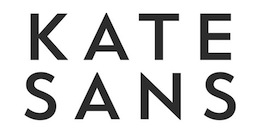 Head of Cina Associates, Michael Cina (Minneapolis, MN), has started many a typographic and graphic design enterprise in his long career. Associated Typographics was founded in 2012.
Head of Cina Associates, Michael Cina (Minneapolis, MN), has started many a typographic and graphic design enterprise in his long career. Associated Typographics was founded in 2012. Typefaces from 2012 include the gas pipe modular typeface family Ramsey, which was followed in 2015 by Ramsey Condensed and in 2021 by an updated version of Ramsey to a 54-style rounded squarish typeface. In 2013, he published the eight-style bold geometric stencil family Skol, and created the custom sans typeface family Matterhorn with Matthew Desmond for Disney. In total, Cina made nine custom typefaces for Disney in 2013. In 2014, he published the squarish sans family Ramsey. In 2015, he published Atelier (octagonal), Reileta and Stadt. Also in 2015, he designed the custom sans typeface Kate Sans for Kate Spade in New York. Typefaces from 2016: YWFT Roamer. Typefaces from 2018: Query (2018). A sans family that is insired by civil rights posters from 1968. Typefaces from 2020: Ghostly Gothic. Klingspor link. Additional URL. Behance link. [Google]
[MyFonts]
[More] ⦿
|
Atelier Olschinsky
[Peter Olschinsky]
|
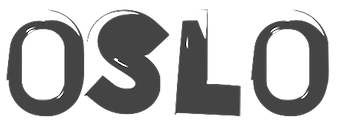 Vienna, Austria-based design studio, est. 2002 by Peter Olschinsky and Verena Weiss. They published the type family Ato (2012), which has Sans, Slab and Display (art deco) subfamilies. Outer Space (2012), Sato (2012, a bilined display typeface), Neopolis (2012, futurismo), Deconstruct (2012), Chaos (2012) and Construct (2012) are experimental. Bato (2012) is an alchemic type family. And Vato (2012) is a wonderful brushy poster headline face.
Vienna, Austria-based design studio, est. 2002 by Peter Olschinsky and Verena Weiss. They published the type family Ato (2012), which has Sans, Slab and Display (art deco) subfamilies. Outer Space (2012), Sato (2012, a bilined display typeface), Neopolis (2012, futurismo), Deconstruct (2012), Chaos (2012) and Construct (2012) are experimental. Bato (2012) is an alchemic type family. And Vato (2012) is a wonderful brushy poster headline face. In 2017, he published the bespoke typeface BirdYard, the free AO Grotesk (with poygonal outlines), free display sans typeface family Matol, the free geometric solid typeface AOX, which comes in Stencil and Regular styles, the free polygonal typeface family AO Mono, and the free monospaced Minimal Mono. Typefaces from 2020: Kaomo (monlinear, monospaced), AO Mono (polygonal). Behance link. [Google]
[More] ⦿
|
Atipo
|
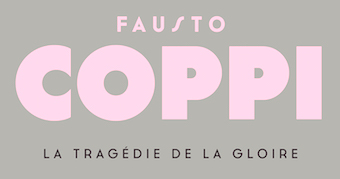 Design studio in Gijon, Spain, set up by Asturian designers Raul Garcia del Pomar and Ismael Gonzalez. One of them studied graphic design in Salamanca. Atipo produced the donationware typeface Cassannet in 2012. This beautiful sans typeface is modeled after art deco lettering by Cassandre. It was adjusted and expanded to six styles in 2016 as Cassannet Plus.
Design studio in Gijon, Spain, set up by Asturian designers Raul Garcia del Pomar and Ismael Gonzalez. One of them studied graphic design in Salamanca. Atipo produced the donationware typeface Cassannet in 2012. This beautiful sans typeface is modeled after art deco lettering by Cassandre. It was adjusted and expanded to six styles in 2016 as Cassannet Plus. In 2012, they published the free twitterware round sans family Bariol, which has its own dedicated web page. This was followed by the wonderful set of icons called Bariol Icons. In 2015, they published the tweetware / donationware rounded typeface family Bariol Serif. Typefaces from 2013: Salomé (a fat didone, +Stencil, +Italic, +Deco). Dedicated web page. The text typeface Calendas (2011, Paula Gutierrez). Additional weights were custom-made for the magazine Town & Country. They created a bespoke wayfinding font / icon set for London Luton Airport in 2014. Typefaces from 2015: Geomanist---I guess the name comed from geometric and humanist. In general, I can't imagine a worse marriage but this one actually works. Typefaces from 2016: Seville (a custom font for Fitbit Blaze, based on Bariol), Semcon (for the Swedish engineering firm Forsman & Bodenfors). Typefaces from 2017: Archia (a technical / architectural sans family), Noway (Noway was originally designed as a corporate and signage typeface for London Luton Airport. It has 159 icons and five weights, and is an ideal wayfinding font family), Noway Round. Typefaces from 2018: Solano & Catalan (a corporate typeface), Aceña (a corporate typeface), Silka (a geometric descendant of Futura), Musetta (a fashion mag thin sans), Basier (a Helvetica-style neutral sans family with horizontal and vertical terminals, with a choice of round or square tittles). Typefaces from 2019: Parking (an all caps art deco by Marc Valli), Basier Mono, Bould, Chaney (caps only, for display). Typefaces from 2020: Sawton (a 15-style monolinear condensed geometric sans family consisting of Circular, Industrial and Bauhaus subfamilies), Silka Mono, Wotfard (a malleable geometric sans: time for soulful functionality), Argesta (a fashion mag typeface). Typefaces from 2021: Novela ( a rational serif for use in texts), Izoard and Izoard Soft (a monolinear sans inspired by the text on the monument atop the mythical Col d'Izoard in France which is frequently featured in the Tour de France), Strawford (a 14-style monolinear neo-geometric sans), Scilla Display ( an elegant high-contrast serif typeface inspired by the shapes of the flowers with sharp edges and organic curves). Typefaces from 2022: N27 (an over-the-top hipster sans classified as avant-garde by Atipo), Stampa (an all caps sans serif typeface inspired by La Stampa's nameplate used by the weekly's sports supplement in Turin in 1902). Behance link. Bariol site. Interview in 2012 by Unostiposduros. [Google]
[More] ⦿
|
Atlantic Condensed
|
Peter Mendelsund of The Atlantic talks about the bespoke (Scotch) typeface Atlantic Condensed, that was created for the redesign of the Atlantic in 2019. [Google]
[More] ⦿
|
Audrey Gould
|
Audrey Gould (Audrey Gould Design, San Francisco, CA) created several customn typefaces in 2013 and 2014. Several of these seem to have been for Nike. [Google]
[More] ⦿
|
Australian Type Foundry (ATF)
[Wayne Thompson]

|
The Australian Type Foundry was launched in January 2002 by Wayne Thompson (b. 1967), who is art director at an ad agency in Newcastle, NSW, and is located in Merewether. He holds a Masters of Type Design from the University of Reading, UK. Commercial fonts at this ex-signpainter's site include Arum Sans (2009, an elegant humanst sans family), Halvorsen (2006), Fuse Box (2005), Architect (handprinting, now at T-26), Axiom, ATF Bosin (2003, casual hand script; see also Bosin Nova, 2021), Barkpipe, ATF Iperion (2003), McNeilBlok (2003), Not Sassure, Spud (handprinting), Wobbly Boot (2007, boozy script), Zoobie (2007, handprinting), Virus, Otis and Otis Condensed (since 2007 at T-26), Ogre, Fresh, ATF Euron (2003). ITC fonts by Wayne Thompson: ITC Panic (grunge), ITC Dont Panic (2000, grunge font), ITC Django (handprinting). [T-26] fonts by him include many of the above, plus also DallasPlain (1998, handwriting). Free font page: pick up a free font (was Spud Italic, currently is the grunge font Virus). Another free font by them is Mallee Wooden (Western typeface). Interview. At Phat Phonts, Wayne Thompson created Jungle Bones (2005) and Ratbag (2005). Stuart Brown designed the Neutraliser family, a versatile collection of geometric-based fonts with 24 styles. Artist Paul McNeil has designed the McNeil family of blocky display typefaces. He has previously produced designs for Mambo and currently works in Sydney. Another designer working for them, out of Indonesia, is Mendiola B. Wiryawan. Custom typefaces by ATF include Django Modified, Honda Prototype (2012), OBrien Glass (2012), Travel Bats (for Sensis) and JWT Vodafone (grunge). The retail fonts at the start of 2012: ArumSans, Halvorsen Pro, ITC Django, Grimsby Hand, Bosin, Carbon Credit, Carbon Tax, Chowdahead, Decon, Demented Avenger, ITC Don't Panic, Equaliser, Equaliser Stencil, Euron, Fresh, Fuse Box, Guttersnipe, Iperion, Barkpipe, ITC Panic, Not Sassure, Ogre, Otis Condensed, Pontoon, Ratbag, Spud, Stakeout, Tully, Virus, Wobbly Boot, Zoobie. In 2013, Thompson created the custom sans typeface Tonsley and participated in the Canberra Centennial Typeface Competition. In 2014, he designed the brush script typeface Quencher, and the custom sans typeface O'Brien Glass. In 2015, ATF created Maccas (+Inline) for McDonalds Australia, via their agency DDB Sydney, by modifying, with permission, Cindy Kinash's True North typeface family. For a South East Asian nation's law enforcement agency, he custom-designed Personaliyty (2015). He designed ABC Sans (2016-2018) for Australia's media conglomerate. Typefaces from 2020: Deka (a logical rounded sans family). Typefaces from 2021: Lurline (a reverse stress display typeface), Mandy Hand. Behance link. I Love Typography link. MyFonts site. Linotype link. View Wayne Thompson's typefaces. View the typefaces made by the Australian Type Foundry. [Google]
[MyFonts]
[More] ⦿
|
Ayako Ito
[Ayako Ito (and: Type for Ukraine)]
|
 [More] ⦿
[More] ⦿
|
Ayako Ito (and: Type for Ukraine)
[Ayako Ito]
|
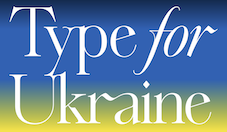 Ayako Ito is based in New York City and Tokyo, and graduated from Type@Cooper. She creates brand identities, books & magazines, typefaces, and illustratis in the fields of art, lifestyle and fashion. Ayako Ito set up Type for Ukraine in 2022 to help the people in Ukraine. All proceeds are donated to Doctors without Borders and the Voice of Children Foundation. Her typefaces:
Ayako Ito is based in New York City and Tokyo, and graduated from Type@Cooper. She creates brand identities, books & magazines, typefaces, and illustratis in the fields of art, lifestyle and fashion. Ayako Ito set up Type for Ukraine in 2022 to help the people in Ukraine. All proceeds are donated to Doctors without Borders and the Voice of Children Foundation. Her typefaces: - Rinko.
- Flora Roman (a headline serif) and Flora Display (2022). Simply exquisite.
- Jasmine Display (2022). A calligraphic fashion mag serif.
- Gabriel.
- Luna.
Commissioned typefaces include Bubble Tea (a bubblegum typeface designed for Stone And Strand, a NYC based jewelry startup), Kafeteria (a phenomenal geometric sans as part of the brand identity for Kafeteria, a new café at the Statens Museum for Kunst in Copenhagen by renowned Danish restaurateur Frederik Bille Brahe; just like the menu and experience at Kafeteria, the typeface combines Japanese minimalism with Danish culture), Good Girl (a sans designed for Stone And Strand, a NYC based jewelry startup), August KBH (custom typefaces for August Journal Issue 05: Copenhagen), Moet Hennessy, Gemic (a custom stencil typeface for Gemic, a global growth strategy firm with offices in NYC, Helsinki, Toronto, and Berlin). [Google]
[More] ⦿
|
B. Bleu
|
Parisian art director who created the bespoke typeface Institut Laser Biotherm in 2016. [Google]
[More] ⦿
|
Babel Font
[Brahim Boucheikha]
|
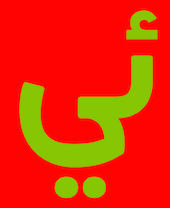 Babelfont is a design studio located in Paris and Casablanca that was co-founded by Gia Tran and Brahim Boucheikha. They were later joined by Salaheddine Bellizi. Their typefaces, mostly bespoke, include:
Babelfont is a design studio located in Paris and Casablanca that was co-founded by Gia Tran and Brahim Boucheikha. They were later joined by Salaheddine Bellizi. Their typefaces, mostly bespoke, include: - Luset (2012). A font commissioned by Dragon Rouge for an actor.Their typeface family is called PSG.
- PSG (2013). A font commissioned by Dragon Rouge to create a typeface family for the soccer club Paris Saint-Germain.
- The Latin/ Arabic sans typeface Gibraltar (2014).
- The Latin / Arabic sans typeface Ines (2013).
- The Latin and Maghrebi Arabic typeface Alegia (2015).
- Mao (2013). A decorative simplified Chinese font.
Gia Tran is a self-taught calligrapher and type designer. He has worked for Dragon Rouge, 4uatre and A&Mcreative in Paris, as well as Saffron Brand Consultants in Madrid. Gia was the Type Director at the French foundry Fontyou. He also teaches calligraphy and type design at various graphic design and visual communication schools such as Strate College Designer, Intuitlab and ESAV Marrakech. Brahim Boucheikha (b. Morocco) studied graphic design at the ECV in Paris and was an apprentice of Arabic calligraphy expert Abdallah Akar. He joined the branding agencies Landor (Dubai) and Dragon Rouge (Paris). He has worked at the ESAV (School of Visual Arts) in Marrakech since 2009 as head of the Arabic typography laboratory. Salaheddine Bellizi is a typographer and 3D designer at Babelfont Studio. He studied at the ESAV (School of Visual Arts) in Marrakech, Morocco, and specializes in Arabic calligraphy and typography. He also works intermittently as an assistant at ESAV Marrakech. [Google]
[More] ⦿
|
Bad Mean Good
[Bjorn Johansson]
|
Bjorn Johansson (Bad Mean Good) created the monospaced typeface family Camcorder (2008-2015), a typeface inspired by old consumer electronics. Camcorder is being used by Gucci, Pixies and Prada, for example. [Google]
[More] ⦿
|
Bahman Eslami

|
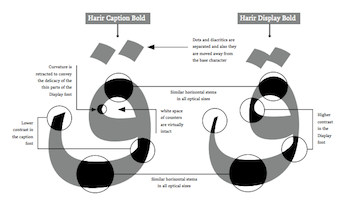 Type designer and kinetic graphic designer born in Tehran, Iran (1985). He holds a BA in graphic design with emphasis on typography from the University of Tehran. Since 2005 he has been working with advertising agencies and specializes in graphical animation. Winner at the Letter 2 competition with Harir (2010, Arabic typeface). This typeface was eventually published in 2013 by Typotheque. Peter Bilak blended Harir in with the Latin typeface Lava: Harir is a modern Arabic text typeface featuring three optical sizes, the first typeface of its kind. Harir is based on the Naskh calligraphy style, but is designed to work well with or without diacritics. Its letter proportions and stroke contrasts have been adjusted to create consistent word shapes, and dots have been carefully positioned to help balance the negative space between the letters. After Bahman Eslami completed Harir, Peter Bilak developed a special version of Lava to serve as Harir's Latin character set, perfectly matching its weight, rhythm and contrast. Designers of non-Latin typefaces are often forced to adapt Latin design principles when they want their fonts to work well in multilingual settings. This can result in distorted lettershapes that deviate from the script's tradition and heritage, impairing readability. Harir and Lava provide a unique combination that enables professional-quality multilingual (Arabic, Latin, Greek and Cyrillic) typesetting with no compromises.
Type designer and kinetic graphic designer born in Tehran, Iran (1985). He holds a BA in graphic design with emphasis on typography from the University of Tehran. Since 2005 he has been working with advertising agencies and specializes in graphical animation. Winner at the Letter 2 competition with Harir (2010, Arabic typeface). This typeface was eventually published in 2013 by Typotheque. Peter Bilak blended Harir in with the Latin typeface Lava: Harir is a modern Arabic text typeface featuring three optical sizes, the first typeface of its kind. Harir is based on the Naskh calligraphy style, but is designed to work well with or without diacritics. Its letter proportions and stroke contrasts have been adjusted to create consistent word shapes, and dots have been carefully positioned to help balance the negative space between the letters. After Bahman Eslami completed Harir, Peter Bilak developed a special version of Lava to serve as Harir's Latin character set, perfectly matching its weight, rhythm and contrast. Designers of non-Latin typefaces are often forced to adapt Latin design principles when they want their fonts to work well in multilingual settings. This can result in distorted lettershapes that deviate from the script's tradition and heritage, impairing readability. Harir and Lava provide a unique combination that enables professional-quality multilingual (Arabic, Latin, Greek and Cyrillic) typesetting with no compromises. In the TypeMedia program at KABK in Den Haag, Bahman designed the graduation typeface Tajrish (2015) for Latin and Arabic. In 2016, he designed the low-contrast Naskh family Diodrum Arabic (Indian Type Foundry). The Latin letterforms in Diodrum are monolinear and of large x-height. Still in 2016, he published the Naskh style Kohinoor Arabic (Indian Type Foundry). Award winner at 25 TDC in 2022 for Amaala Arabic (published at Interval Type). The Arabic part of this custom family is designed to capture the impression of Latin which is an elegant high contrast typeface with round terminals, curly structure, and round counters. The type system comes in three type families, "Sans", "Open Eye" and "Closed Eye". Speaker at ATypI 2018 in Antwerp (on the topic of the symbiosis of Latin and Arabic). Typotheque link. [Google]
[MyFonts]
[More] ⦿
|
Baron von Fonthausen
[Jacques Le Bailly]

|
 Jacques Le Bailly (b. Thionville, France, 1975) is the "Baron von Fonthausen", located in Den Haag, and the self-proclaimed German-French specialist in the fields of both beer and type design. From 1999 to 2003, Le Bailly lived in Berlin, working at Moniteurs graphic design studio and as an independent graphic designer. Having returned to the Netherlands in 2003, Jacques did type production work for The Enschedé Font Foundry. He is now a typographic designer at Bau Winkel's studio in The Hague. He worked for type foundries like Lineto, Monotype, House Industries, and Bold Monday, as well as on custom projects for several brand design agencies. He has been teaching at the WdKA art academy in Rotterdam and Sint Joost in Den Bosch.
Jacques Le Bailly (b. Thionville, France, 1975) is the "Baron von Fonthausen", located in Den Haag, and the self-proclaimed German-French specialist in the fields of both beer and type design. From 1999 to 2003, Le Bailly lived in Berlin, working at Moniteurs graphic design studio and as an independent graphic designer. Having returned to the Netherlands in 2003, Jacques did type production work for The Enschedé Font Foundry. He is now a typographic designer at Bau Winkel's studio in The Hague. He worked for type foundries like Lineto, Monotype, House Industries, and Bold Monday, as well as on custom projects for several brand design agencies. He has been teaching at the WdKA art academy in Rotterdam and Sint Joost in Den Bosch. He was working on commercial fonts such as TyPress, Ballpoint and B-Day. Sardines (2008, Vette Letters) is described by Jan Middendorp as an amusing parade of heavyweight characters crammed into squares. In 2010, that monospaced family was expanded to VLNL Neue Sardines (42 styles). Designer of the pixel font Mekka. Macula (2010) is a trompe l'oeuil typeface that is available from Bold Monday. It was inspired by Oscar Reutersvärd's impossible perspectives and M.C. Escher's optical illusions. In 2016, Jacques Le Bailly extended Vernon Adams's Nunito (2011) to a full set of weights, and an accompanying regular non-rounded terminal version, Nunito Sans, which is free at Google Fonts and Open Font Library. In 2018, he designed the free family Crimson Pro (a major update of Sebastian Kosch's Crimson from 2011) and VLNL Thueringer (at Vette Letters), and wrote: Jacques got inspired by Albrecht Düer's 15th century Fraktur (blackletter) alphabet, and decided to design a contemporary rounded version of it. It's a modern techno-style blackletter with a (beer)truckload of interesting design details. In 2019, he released the free font Livvic. Livvic is a 16-style custom corporate sans typeface designed by Jacques Le Bailly for LV (Liverpool Victoria Friendly Society Limited), an insurance company based in the UK. The typeface is part of a brand redesign. In 2020, Jacques Le Bailly, Cereal and Vernon Adams (posthumously) released the sans typeface family Mulish at Google Fonts. Mulish is a minimalist sans, designed for both display and text typography. It was initially drawn in 2011 by Vernon Adams and then refined until 2014. In 2017 the family was updated by Jacques Le Bailly to complete the work started by Vernon after he passed away, in collaboration with his wife Allison, an artist who holds the trademark on the typeface family name. In August 2019, it was updated with a variable font weight axis. Behance link. Bold Monday link. %Z Liebe Petra, Die Site ist jetzt erstmal dafür gemacht, um Leuten zu zeigen was ich gerade mache. Leider sind die meisten der gezeigten Fonts noch nicht ganz fertig und werden deshalb noch nicht angeboten. neben Schriftgestaltung, mache ich auch noch Grafik-Design. Im Moment arbeite an der Font TyPress, die bei der 1. Ausgabe folgende Schnitte enthalten wird: Roman, Italic, Bold, Bold-Italic, Caps-Roman and Caps-Bold. Unsicher ist noch wo, oder von wem sie vertrieben werden. Der Font B-Day wird 1 Schnitt haben und wenn alles gut geht, wird sie ab Februar 2002 von Lineto (www.lineto.de) verkauft. Wenn Sie interessiert sind an meinen Entwürfen, oder z.B. an Custom-Type, fragen Sie bitte nach. Oder, wenn Sie gerne sehen möchten, wie meine Schriften im Druck aussehen, kann ich Ihnen ein PDF schicken. Freundlichen Grüsse, Greetings, Baron von Fonthausen, auch Jacques Le Bailly [Google]
[MyFonts]
[More] ⦿
|
BaseLAB
[Joancarles P. Casasín]
|
 Barcelona-based foundry involved in custom font work, est. 2005. Original fonts: Inclusive (2007), Urbanium (2005, a bold display face), Handwritten, Eixample (2008, octagonal and rounded), Screech (2008) and Begyptienne. Modified fonts (or re-fonts in their words) include Le Grand Palais (stencil, for La Force de l'Art, Paris, 2006), BeTV (for a Belgian TV channel), and VijfTV (a modification of Chalet for a Flemish TV station). Their custom types include Atrapalo, Kipling (a fashion mag family done in 2011), STM Montreal (2011, for the Montreal transportation system), Dialogue, Kidswa, Hangar and Costa Design. One of the main collaborators is Joancarles P. Casasín. Behance link. [Google]
[More] ⦿
Barcelona-based foundry involved in custom font work, est. 2005. Original fonts: Inclusive (2007), Urbanium (2005, a bold display face), Handwritten, Eixample (2008, octagonal and rounded), Screech (2008) and Begyptienne. Modified fonts (or re-fonts in their words) include Le Grand Palais (stencil, for La Force de l'Art, Paris, 2006), BeTV (for a Belgian TV channel), and VijfTV (a modification of Chalet for a Flemish TV station). Their custom types include Atrapalo, Kipling (a fashion mag family done in 2011), STM Montreal (2011, for the Montreal transportation system), Dialogue, Kidswa, Hangar and Costa Design. One of the main collaborators is Joancarles P. Casasín. Behance link. [Google]
[More] ⦿
|
Bastarda Type (was: No Name Type Foundry)
[Sebastian Castellanos De La Hoz]
|
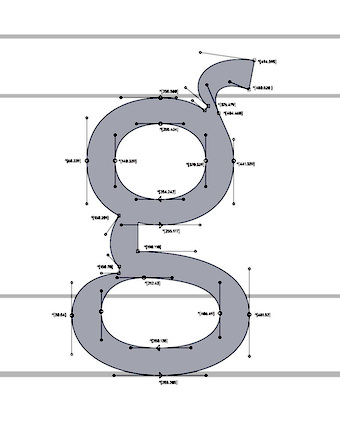 Bogota, Colombia-based outfit, est. 2017 by Jason Guzman, Sebastian Castellanos and Federico Parra. Type designers associated with Bastardatype in 2022 included Oscar Guerrero, Julian Moncada and Fer Cozzi. Sebastian Castellanos graduated from the MATD program at the University of Reading in 2015. His graduation project was Orca (2015). It covers Latin, Greek and Thai: Orca was inspired by alcoholic beverage labels. It is constructed of a blend of sharp serifs and brush out-strokes which create a dynamic combination of angular lines and curves.
Bogota, Colombia-based outfit, est. 2017 by Jason Guzman, Sebastian Castellanos and Federico Parra. Type designers associated with Bastardatype in 2022 included Oscar Guerrero, Julian Moncada and Fer Cozzi. Sebastian Castellanos graduated from the MATD program at the University of Reading in 2015. His graduation project was Orca (2015). It covers Latin, Greek and Thai: Orca was inspired by alcoholic beverage labels. It is constructed of a blend of sharp serifs and brush out-strokes which create a dynamic combination of angular lines and curves. The list of type designs: - Orca and Orca Display (by Sebastian Castellanos and Jason Guzman). The semi-stencil Orca Display won an award at Tipos Latinos 2018. Orca was inspired by alcoholic beverage labels. It is characterized by sharp serifs, a large x-height, moderate ascenders and descenders, and wide proportions. It covers Latin, Greek and Thai.
- Magma (Federico Parra). A psychedelic all caps typeface.
- Central. A handcrafted American gothic custom-designed for Central Cevicheria in Bogota.
- BT Barbara (2018). A flared typeface done with Fernanda Cozzi.
- BT Brutman (2020). An angular text typeface inspired by brutalist architecture.
- BT Orca and BT Orca Display.
- BT Lamina (2019).
- BT Salsa (2019).
- Kiffo Sans (2019), later called BT Kiffo.
- Stewar Variable (2022). Unknown designer.
- Gregor (2021, Oscar Guerrero). A hybrid sans serif typeface family with two variants, Upright and Slanted. The design is inspired by some advertising graphic designs used in the United States during the 60's and 70's.
- Super BT (2022). Unknown designer.
Old URL. [Google]
[More] ⦿
|
Beau Thein
|
For the rebrand of Diversion Dimensions, Beau Thein (Sydney, Australia) created a kitchen tile typeface (2017). Behance link. [Google]
[More] ⦿
|
Bee Creations
[Eran Bacharach]
|
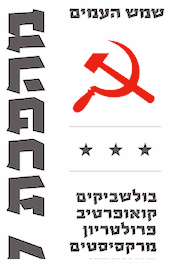 Eran Bacharach (Bee Creations) created Socialism Hebrew Typeface (2012): Inspired by typographic elements in Hebrew Socialist posters from the 1940s, the font was created as part of a branding campaign for a law office specializing in labor laws, social security and workers' rights. [Google]
[More] ⦿
Eran Bacharach (Bee Creations) created Socialism Hebrew Typeface (2012): Inspired by typographic elements in Hebrew Socialist posters from the 1940s, the font was created as part of a branding campaign for a law office specializing in labor laws, social security and workers' rights. [Google]
[More] ⦿
|
Belfast City Council
|
The typeface Moment was commissioned by the Belfast City Council for its brand. Unknown designer, but free download. [Google]
[More] ⦿
|
Ben Buysse
|
Art director, type designer and illustrator working in Brooklyn, New York, who does mainly custom work for clients such as Entertainment weekly, ESPN, Fortune Magazine, grantland, GQ and NBC. His typefaces include - Zeedraak (2012). A free typeface inspired by sea monsters and blackletter typography.
- World Cup Typeface (2016). For ESPN Magazine World Cup special issue.
- Fancy Pants (2016). A classy stylish sans.
- Beach Drink Icons (2016).
Behance link. Creative Market link. [Google]
[More] ⦿
|
Ben Kiel

|
 Graduate of the type design program at the University of Reading, who joined House Industries (Wilmington, DE) in 2006 to work as a typeface designer, director, and developer. He also worked with Ken Botnick at emdash. He runs Typefounding, a typeface design and production studio in St. Louis, Missouri. He teaches at Washington University in St. Louis and the Type@Cooper certificate program at Cooper Union, and has taught at the Maryland Institute College of Art and the University of Delaware. He is a partner at XYZ Type with Jesse Ragan.
Graduate of the type design program at the University of Reading, who joined House Industries (Wilmington, DE) in 2006 to work as a typeface designer, director, and developer. He also worked with Ken Botnick at emdash. He runs Typefounding, a typeface design and production studio in St. Louis, Missouri. He teaches at Washington University in St. Louis and the Type@Cooper certificate program at Cooper Union, and has taught at the Maryland Institute College of Art and the University of Delaware. He is a partner at XYZ Type with Jesse Ragan. He designed Katje and Cimarron (2005, University of Reading, a serif family with support for Latin and Greek). Speaker at ATypI 2006 in Lisbon on Python scripts for FontLab and RoboFab. Image. In 2011, Vincent Pacella, Ben Kiel and Adam Cruz created the fat slab serif face Goliath, based on Film No. 6206 in the PhotoLettering archive. West Barnum Ultra, designed by Dave West and digitized by Ben Kiel&Adam Cruz in 2011, was film no. 5494 in the original Photo-Lettering archive. At House Industries, he redesigned the iconic Rea Irvin lettering for The New Yorker in September 2013. The typefaces are named New Yorker Irvin and New Yorker Neutraface. In 2012 at House Industries he revived the Photo Lettering Inc font Worthe Numerals, which pushed fat didone to its limits. Still at House Industries, Christian Schwartz, Mitja Miklavcic and Ben Kiel co-developed Yorklyn Stencil. Cortado Script (2014) was designed by Jesse Ragan and Ben Kiel. It was inspired by Swedish illustrator's Cecilia Carlstedt's hand-painted lettering. It follows one year after a similar signage script typeface, Carlstedt Script (2013), also co-designed by Jesse Ragan and Ben Kiel---it was a custom signage typeface for Aldo Shoes. In 2015, Mark van Bronkhorst set up TypoBrand LLC in Berkeley, CA. As part of TypoBrand, he published several typefaces that are modern digital reinterpretations of ATF typefaces. The collection is published by TypoBrand LLC under the names ATF Type or American Type Founders Collection. Ben Kiel co-designed, sometimes with others, classics such as ATF Alternate Gothic (2015), ATF Brush (2015), ATF Egyptian Antique (an expansion of Schraubstadter's Rockwell Antique by Mark van Bronkhorst, Igino Marini, and Ben Kiel), ATF Railroad Gothic (2016), ATF Garamond (2015), ATF Headline Gothic (2015), ATF Livermore Script (by Mark van Bronkhorst, Igino Marini, and Ben Kiel), ATF Poster Gothic (2015) and ATF Wedding Gothic (2015). At XYZ Type, Ben Kiel co-designed Cortado Script in 2013 with Jesse Ragan and designed the sans typeface Grep (2017). In 2019, Ben Kiel participated in the development of ATF Franklin Gothic (Mark van Bronkhorst, Igino Marini, and Ben Kiel). A broad and multi-weight interpretation of Morris Fuller Benton's classic from 1905, Franklin Gothic, which only had bolder weights. For the lighter styles, the designers were inspired by Benton's Monotone Gothic. Girard Sky (2019) is based on Alexander Girard's original typeface for his redesign of Braniff Airways. Working with the original drawings for the photoset typeface found in the Girard archive, the design was revived as part of the Alexander Girard collection. Followed by Girard Slab (2019). Typefaces from 2020: Ballast (Future Fonts: a condensed slab serif). [Google]
[MyFonts]
[More] ⦿
|
Ben Whitla
|
Boston-based designer. He occasionally designs custom typefaces, such as, e.g., for Mattel Hot Wheels. Behance link. [Google]
[More] ⦿
|
Benjamin Campana
|
During his graphic design design studies in Marseille, France, Benjamin Campana co-designed Helado (2014) together with Sabrina Ekecik and Simon Becker. He created the thin sans titling typeface Kim (2014) with Julia Lambert for the Lana del Rey's video clip Summertime Sadness. Behance link. [Google]
[More] ⦿
|
Benjamin Gomez
[Dépli]
|
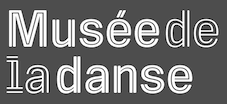 [More] ⦿
[More] ⦿
|
Bergfest Design
|
 Creative art direction studio in Hamburg, Germany. They created the corporate typeface family Wempe in Antiqua and Grotesque styles. The fonts are called GDW Antiqua and GDW Grotesque (2015).
Creative art direction studio in Hamburg, Germany. They created the corporate typeface family Wempe in Antiqua and Grotesque styles. The fonts are called GDW Antiqua and GDW Grotesque (2015). Together with Kontrastmoment, Bergfest created BMW Display, Mini Display and Rolls Royce Display (2015). Behance link. [Google]
[More] ⦿
|
Berton Hasebe

|
 Berton Hasebe (b. 1982, Honolulu, HI) moved from Hawaii to study and work in Los Angeles, where he obtained a BA from Otis College of Art and Design in 2005.
Berton Hasebe (b. 1982, Honolulu, HI) moved from Hawaii to study and work in Los Angeles, where he obtained a BA from Otis College of Art and Design in 2005. In 2007 he moved to the Netherlands to study type design through the Type and Media Masters course at The Royal Academy of Art in the Hague (KABK). Berton has resided in New York since 2008, and was a staff designer with Commercial Type from 2008 to 2013, when he left to start his own studio. Berton's typefaces have been awarded by the New York and Tokyo Type Directors Club, the ATypI, and the Brno Biennial. In 2012 he was awarded Print magazine's 20 Under 30 Award. Berton currently teaches typography at Parsons and has taught type design at The University of the Arts in Philadelphia and the Type@Cooper Extended Program at The Cooper Union in New York. His typeface Alda was designed to function at very small sizes while remaining expressive. The bold is macho and delicate at the same time. Alda won an award at TDC2 2009. In the same year Alda was also selected by the Tokyo Type Directors Club to be included in its annual publication. It was published by Emigre. At Commercial Type he co-designed the extensive family Stag with Christian Schwartz and Ross Milne. Stag started as a small family of slab serifs commissioned for headlines by the US edition of Esquire magazine and eventually grew into a sprawling multi-part family including a flexible sans companion and two additional special effects display variants. Stag Stencil followed in 2009. In 2010, he published the geometric sans serif family Platform at Commercial Type. It has a gorgeous circle-based hairline. In 2013, he published a 4-family 20-style French Renaissance typeface family called Portrait (+Text, +Inline, +Text), still at Commercial Type: Portrait started out as an experiment in drawing a display typeface that managed to be both beautiful and brutal, and both classical and minimalist. While its lighter weights are quietly elegant, the heavier weights show the influence of chiseled woodcut forms. Portrait draws its primary inspiration from the Two-line Double Pica Roman (equivalent to 32pt in contemporary sizes) cut by French punchcutter Maître Constantin around 1530 for the printer Robert Estienne. Portrait replaces the delicately modeled serif treatments of Constantin's original with simple, triangular Latin serifs, reimagining the Renaissance forms in a contemporary light. Portrait Text resembles the text types attributed by the printing historian Hendrik Vervliet to Constantin and used by the printer Estienne in the 1530s, which had a lighter and more open texture than the text types that preceded them, and marking the move to more elegant type that culminated in the work of Claude Garamont. The stripped-back simplicity of the Latin serifs gives Portrait a cleaner and sharper tone than a typical Renaissance oldstyle-influenced text face, bringing an active personality to text. In 2015, he created the sans headline typeface families Druk, Druk Text, Druk Wide, Druk Condensed and Druk Text Wide: Druk is a study in extremes, featuring the narrowest, widest, and heaviest typefaces in the Commercial Type library to date. Starting from Medium and going up to Super, Druk is uncompromisingly bold. It was meant as a companion of Neue Haas Grotesk. Of the families in the Druk collection, Druk Condensed is the most explicit homage to Willy Fleckhaus. Originally designed for the 2011 Year in Review issue of Bloomberg Businessweek, its flat sides make letters and words snap together in a clean and satisfying way. For MittMedia, he made the corporate sans typeface Duplex (2016). Still in 2016, Berton Hasebe published Styrene at Commercial Type. Their blurb: Styrene, a new sans serif by Berton Hasebe, is his latest exploration of proportion and simplicity in type design. The initial inspiration for the family was a charmingly awkward sans serif shown in an early 20th century Dutch type specimen. However, Styrene has an entirely ahistorical attitude. Its name was inspired by the purposefully synthetic feeling to its curves and geometry. The family is characterized by its proportions: typically narrow characters like f j r and t are hyperextended and flattened, adding openness in unexpected places. Styrene's two widths offer different textures in text: version A is dogmatically geometric, with a stronger overall personality, while version B is narrower for more reasonable copyfit, though not truly condensed. Schnyder (Commercial Type) was designed by Berton Hasebe and Christian Schwartz for the 2013 redesign of T, the New York Times Style Magazine by creative director Patrick Li and his team. Schnyder has the high contrast typical of a fashion typeface and has a large number of alternates. The stem thicknesses in each weight are identical across the widths, an unusual feature that allows the widths to be mixed freely in headlines, even within single words. It features three weights, four widths, and four optical sizes. Production assistance by Hrvoje Zivcic and Miguel Reyes. Schnyder Wide, Condensed and X Condensed were published in 2018. In 2020, he released Review (Condensed, Poster, Regular) at Commercial Type, which writes: Berton Hasebe originally drew Review (née Kippenberger) for T: The New York Times Style Magazine. In 2018, a new editor in chief pushed for a complete reimagining of the magazine. What had primarily been an image-focused publication evolved into a text-driven one, with the squarish, commanding Review doing much of the heavy lifting. To facilitate tight setting both horizontally and vertically, Hasebe sheared off Review's overshoots and blunted its exterior curves, producing a dynamic tension with its round counters. Produkt (2014, Christian Schwartz and Berton Hasebe) is Graphik with slabs added on. Christian Schwartz and Berton Hasebe originally designed Feature for T: The New York Times Style Magazine in 2018, and wrote: Diagonal stress, mismatched contrast between main strokes and serifs, and sharply angled head serifs conspire to give the face tension, dynamism, and immediacy. The collection has been expanded in 2021 for release by Hrvoje Zivcic, who expanded the weight range and drew italics for the entire collection. Feature Collection now includes Feature Text, Feature Display and Feature Deck. Feature [Google]
[MyFonts]
[More] ⦿
|
Bharat KV
|
Bangalore-based creator of the custom illustrated font Kolaveri Di (2011). Home page. [Google]
[More] ⦿
|
Bianca Berning
|
 Graduate of the MA Typeface Design program at the University of Reading in 2011 who was born in Germany. Her graduation typeface was Clint (2011), a text family for Latin, Greek and Cyrillic. Clint is characterized by multiple personalities, with asymmetric serifs, a daring axis, some timid ball terminals, and other exogenetic details.
Graduate of the MA Typeface Design program at the University of Reading in 2011 who was born in Germany. Her graduation typeface was Clint (2011), a text family for Latin, Greek and Cyrillic. Clint is characterized by multiple personalities, with asymmetric serifs, a daring axis, some timid ball terminals, and other exogenetic details. Bianca specializes in the technical aspects of type design. As a font engineer with a background in civil engineering, communication and typeface design, she joined the Brixton, UK-based Dalton Maag type foundry in 2011. Until 2018 she headed their Skills & Process team, responsible for training and development, knowledge management, and for the implementation of font development processes. In 2018, she was appointed Creative Director and became responsible for ensuring that Dalton Maag remains at the forefront of type innovation. She directed the design of brand typefaces and complex type systems for international clients such as the Amazon, AT+T, BBC, Bodyform, Goldman Sachs [Goldman Sans], and Jacobs Engineering Group [Jacobs Chronos], and oversaw the design and refinement of wordmarks and font modifications. Speaker at ATypI 2018 in Antwerp, at ATypI 2017 in Montreal and at ATypI 2016 in Warsaw. [Google]
[More] ⦿
|
Bjorn Johansson
[Bad Mean Good]
|
[More] ⦿
|
Björn Larsson
|
Creator of EGC New Baskerville Display (2012) for exclusive use of Electrolux Grand Cuisine. [Google]
[More] ⦿
|
Black Foundry
[Jérémie Hornus]

|
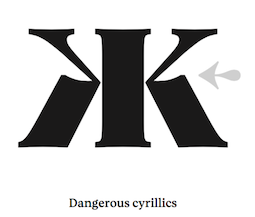 Type foundry in Paris, est. 2016 by Jérémie Hornus, who is the design lead. Type designers associated with Black Foundry include Alisa Nowak and Ilya Naumoff. They initially bought the font collection of FontYou. Typefaces not included in the original FontYou collection:
Type foundry in Paris, est. 2016 by Jérémie Hornus, who is the design lead. Type designers associated with Black Foundry include Alisa Nowak and Ilya Naumoff. They initially bought the font collection of FontYou. Typefaces not included in the original FontYou collection: - Angus (2018). A multiplexed rounded sans typeface family by Elliott Amblard that includes a variable font.
- In 2018, Elliott Amblard and Jérémie Hornus co-designed the information design humanist sans typeface family Drive. It is accompanied by the more typewriter-styles families Drive Mono and Drive Prop, and published by Black Foundry. The fiorms in Drive Mono and Prop are great, but all fonts in Drive are too widely spaced (as are several other fonts in the Black Foundry collection).
- Clother (Jeremie Hornus, Julie Soudanne, Ilya Naumoff, 2017). This geometric sans workhorse covers also Cyrillic, Hebrew and Arabic.
- Vesterbro (Jeremie Hornus, Alisa Nowak, Ilya Naumoff, 2017). High-contrast Latin / Cyrillic typeface with a Viking feel that won an award at Granshan 2017.
- Jeremie Hornus, Gregori Vincens, Yoann Minet, and Roxane Gataud (and possibly Riccardo Olocco) designed the free Google web font Atma for Latin (in comic book style) and Bengali. Github link.
- In 2016, Google Fonts published the free Latin / Bengali signage font Galada (2015). It is based on Pablo Impallari's Lobster (for Latin). The Bengali was developed as a studio collaboration by Jeremie Hornus, Yoann Minet, and Juan Bruce at Black Foundry.
- In 2016, Franck Jalleau designed the monospace sans typeface family Aubusson. Initially designed as a custom typeface by Franck Jalleau for the Cité internationale de la tapisserie d'Aubusson, the monowidth proportions are linked to pattern and tiles arrangements used in tapestry. The retail version of Aubusson offers four weights with matching italics. It was published by Black Foundry.
- Drive (2016). A corporate sans serif family.
- Dragon (2016). A clean sans typeface.
- Galien (2019). By the Black Foundry team, a mix with didone elements in the roman and garalde features in the italic. There is also a variable font with a weight axis.
- A custom sans font family for DS Automobiles (2019).
- Finder is a multiscript typeface developed in 2020 at Black Foundry by Jérémie Hornus, Gaëtan Baehr, Changchun Ye and Zhang Miao. This neutral sans is intended for interface design, and covers Arabic, Cyrillic, Greek, Hangul, Hebrew, Japanese, Latin, Simplified Chinese, Thai and Traditional Chinese.
- Screen Sans (2020). A 14-style sans by Jérémie Hornus and Ilya Naumoff published by Indian Type Foundry.
- Alpine Script: a variable font with four axes including boldness, humanity, and irregularity, made for the identity of the French (Renault) Alpine sports cars.
- Maif (2020). A sans family for the corporate identity of the Mutuelle d'Assurance Automobile des Instituteurs de France.
- In 2017, Jérémie Hornus, Théo Guillard, Morgane Pambrun, Alisa Nowak and Joachim Vu co-designed Bespoke Sans, Bespoke Serif and Bespoke Slab at Fontstore / Fontshare. In 2020, Bespoke Stencil was added.
- Egitto (2020). A huge Egyptian (slab serif) family together with a handy variable font. By Jérémie Hornus and Solenn Bordeau.
- Rowton (2021) is a humanist sans in black, regular and hairline weights, named after Arthur Eric Rowton Gill. It is accompanied by two stencil styles.
- NouvelR (2021). A corporate geometric sans typeface for Renault covering Latin, Greek, Cyrillic, Hebrew, Arabic and Korean. Characterized by a totally square lower case r. All terminal angles are 28 degrees, to align with the angle in Renault's logo.
- Enedis (2022). A commissioned sans.
Creative Market link for Black Foundry. [Google]
[MyFonts]
[More] ⦿
|
Blackletra
[Daniel Sabino]

|
 Brazilian type designer Daniel Sabino de Souza studied under Laura Meseguer at the Eina-Escuela Superior de Disseny in Barcelona. His foundry in Sao Paulo is called Blackletra (est. 2012). He has taught type design at IED/Sao Paulo.
Brazilian type designer Daniel Sabino de Souza studied under Laura Meseguer at the Eina-Escuela Superior de Disseny in Barcelona. His foundry in Sao Paulo is called Blackletra (est. 2012). He has taught type design at IED/Sao Paulo. He won an award at Tipos Latinos 2012 and at TDC 2013 for Karol. In 2012, he won the Silver Prize in the Latin category of the Morisawa Type Design Competition for Hashar, a beautiful angular connected script face. In 2013, he published Karol at Type O Tones. Falado (2013) is a delicate display typeface commissioned by Estudio Mucho for the graphic identity of the Spanish orchestra La Filarmónica. It won a Gold Medal at Laus'13. In 2014, he designed the superb angular script typeface Haltrix (Village). Karol Sans was published at Type-o-Tones in 2014. Haltrix, Gandur (which was inspired by other geometric texturas, specially Max Bittrof's Element (1933)) and Karol Sans all won awards at Tipos Latinos 2014. Expectedly, Haltrix won an award in the TDC 2015 Type Design competition. Gandur New (German expressionist) and Gandur Alte (closer to Textura) followed in the summer of 2014. In 2015, he released Silva (Text, Display), a typeface co-designed with Chester Jenkins. Gothiks (2015, Village), Gothiks Compressed (2016) and Gothiks Condensed (2016), a family of condensed typefaces of varying widths and thicknesses that hearken back to the gothic wood types, and Latam Sans (2015, a custom typeface for Latam Airlines) won awards at Tipos Latinos 2016. Typefaces from 2016 include Ofelia Std, a corporate sans family characterized by a lower case f that looks like a stretched s. Typefaces from 2017: Noka (a sci-fi geometric sans characterized by its curvy f and hipster g). Typefaces from 2019: STC Forward (a bespoke sans typeface for Saudi Telecom Company), Gothiks Round Compressed, Gothiks Round Condensed, Gothiks Round. Typefaces from 2020: Elizeth and Elizeth Condensed (a slab serif by Daniel Sabino, Lucas Gini and Henrique Beier), Skol Display (a forceful poster sans), Ofelia Text and Display, Ekos (an all caps typeface designed for the Natura Ekos brand). Typefaces from 2021: Silva Display (a 16-style serif). Winner at Tipos Latinos 2018 of a type design award for Elizeth. Village link (since 2014). Behance link. [Google]
[MyFonts]
[More] ⦿
|
Blondina Elms Pastel

|
 Blondina lived and worked in Martinique, France for eight years. She graduated in 1999 from Insitut régional d'art visuel de la Martinique (IRAVM). Blondina founded Atelier Elms in Cave Hill, Barbados, in 2002. Her clients can be found in the United States, the British Virgin Islands, Martinique, Dominica and Barbados. She returned to settle in Barbados in November 2003. Graduate of the University of Reading in 2011. Her graduation typeface there was Naej (2011), a typeface family for recreational children's storybooks. Lively and bouncy, it blends script and sans into a refreshing breakfast. She calls the family calligraphic and neohumanist. Blondina finally published Naej in 2012 at a German foundry, URW.
Blondina lived and worked in Martinique, France for eight years. She graduated in 1999 from Insitut régional d'art visuel de la Martinique (IRAVM). Blondina founded Atelier Elms in Cave Hill, Barbados, in 2002. Her clients can be found in the United States, the British Virgin Islands, Martinique, Dominica and Barbados. She returned to settle in Barbados in November 2003. Graduate of the University of Reading in 2011. Her graduation typeface there was Naej (2011), a typeface family for recreational children's storybooks. Lively and bouncy, it blends script and sans into a refreshing breakfast. She calls the family calligraphic and neohumanist. Blondina finally published Naej in 2012 at a German foundry, URW. In 2013, she graduated from the Plantin Institute's type design program under Frank E. Blokland. Her graduation typeface there was the children's storybook font Calina. At Plantin, she also attempted a Jacques Francois rosart revival. She writes that for Google Fonts, she developed Dinah (for Latin and Devanagari), but there is no record of that at Google Fonts. Custom fonts by Blondina include Barefoot (for bare Greetings greeting cards) Presently, she is a PhD student at the Aix-Marseille University, and is based in Aix-en-Provence. Since 2015, she organizes Typote, mobile workshops for training in calligraphy, lettering, typeface design and graphic design. [Google]
[MyFonts]
[More] ⦿
|
BMW Motorrad
|
A corporate sans designed in 2007 by URW for BMW. Download. [Google]
[More] ⦿
|
Bo Linnemann
[Kontrapunkt]
|
[More] ⦿
|
Bob Anderton

|
 British designer of these typefaces:
British designer of these typefaces: Linotype link. FontShop link. Klingspor link. [Google]
[MyFonts]
[More] ⦿
|
Bold
[Oskar Lübeck]
|
Founding creative director of Differ Design in Stockholm. Founder and Creative Director of the Swedish design agency Bold (in 2011). Prior to Bold he was the Design Director at The Brand Union's Stockholm office. He has many years of international experience having worked and studied in Japan, New York, Dubai and London. His typefaces include Nordea Sans (for Nordea Bank), Labyrinyth (pixel style), Lateral (vertically striped face), Pop-Up, Fine Line, and Basic Shapes (a geometric experiment). [Google]
[More] ⦿
|
Bold Monday
[Pieter van Rosmalen]

|
 Bold Monday is an independent font foundry established by Paul van der Laan and Pieter van Rosmalen and based in Eindhoven, The Netherlands (and before that, The Hague). Pieter van Rosmalen (Eindhoven, The Netherlands) studied advertising and graphic design at Sint Lucas in Boxtel and graduated from the postgraduate Type & Media program at the Royal Academy of Art (KABK) in The Hague in 2002. He runs Bold Monday's Eindhoven office.
Bold Monday is an independent font foundry established by Paul van der Laan and Pieter van Rosmalen and based in Eindhoven, The Netherlands (and before that, The Hague). Pieter van Rosmalen (Eindhoven, The Netherlands) studied advertising and graphic design at Sint Lucas in Boxtel and graduated from the postgraduate Type & Media program at the Royal Academy of Art (KABK) in The Hague in 2002. He runs Bold Monday's Eindhoven office. In 2018, Bold Monday joined The Type Network. Pieter van Rosmalen has designed retail as well as custom typefaces for clients worldwide, such as NBC Universal, Audi AG, General Electric and KPN. One of Pieter's designs is used for street signs in South Korea. Pieter's retail typefaces in the Bold Monday catalog include - Aniek (2009: a children's script).
- Bilo (2018: a grotesque).
- Capibara (2007).
- Dico (2004-2020). A varied suite of 45 typefaces by ncompassing eight proportional and monospaced sub-families (Sans, sas Soft, Mono, Code One, Code Two, Typefwriter, Slab, Mono Slab). It circles around a sans-serif van Rosmalen started in 2004 for design studio Teldesign, comprehensively updated and expanded upon in 2020. The monospaced script styles are loosely based on Corinthian Script for the IBM Selectric.
- Nitti (2008: monospaced), Nitti Grotesk (2012-2014), Nitti Mostro (2015, +Stencil, +Disco, a splendid multiline headline typeface), Nitti Typewriter (2009).
- Panno (2008, a sans), Panno Sign, Panno Text (2008-2010). By Van Rosmalen and van der Laan).
- Pinup (fat rounded sans, done in 2008). In 2013, he published Pinup Dotted (a textured typeface).
- Stanley (headline face, done in 2008; includes a stencil).
- Puffin, Puffin Display (rounded informal sans families) and Puffin Arcade (a large bitmap font family).
Bold Monday also has typefaces by other designers. In 2012, Bold Monday published the trompe l'oeuil typeface Macula (Jacques Le Bailly) which is based on designs by Oscar Reutersvärd. Oskar (2002-2013). They write: Oskar, designed by Paul van der Laan, is a typeface inspired by Dutch architectural and advertising lettering from the early 20th century. Particularly the style of lettering that was painted on walls and shopfronts, or executed in metal on buildings. This kind of typography did not exist as metal printing types, but was instead painted manually by sign painters, or drawn by architects. Initially the typeface was designed in 2002 for the lettering of a monumental school in The Hague, designed by architect Jan Duiker in 1929. In 2012, they published the trompe l'oeuil typeface Macula (Jacques Le Bailly) which is based on designs by Oscar Reutersvärd. Further typefaces include Feisar (techno), Flex (sans), Naomi (1999) and Pixel Package. GE Inspira Sans and Serif (Mike Abbink, Paul van der Laan and Pieter van Rosmalen, Bold Monday) won an award in the TDC 2015 Type Design competition. In 2018, Pieter published the experimental pixel-inspired typeface family Alterego. Typefaces from 2021: Stanley: Bold and broad-shouldered, Stanley is a poster typeface collection in three styles rooted in the first sans-serif designs of the 19th century---the grotesques. Stanley is available in Normal, Stencil, and Stencil Rough. Pieter designed custom typefaces for worldwide clients amongst others Agis, Audi, Teldesign, KPN, The government of South Korea (road signing), The Ministry of Transport, Public Works and Water Management (OV Chipcard), USA Today (Futura Today, 2012, with Paul van der Laan), and NBC Universal. For Holland Festival in 2014, Paul van der Laan designed the stencil typeface HF Stencil (in collaboration with design studio Thonik, Amsterdam, and Diana Ovezea), a design inspired by Glaser Stencil. Logo. FontShop link. Adobe link. Type Network link. [Google]
[MyFonts]
[More] ⦿
|
Bonjour Monde
[Lucas Descroix]
|
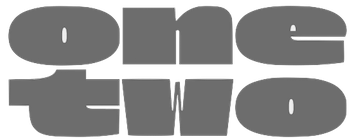 Lucas Descroix is graphic and type designer based in France. After researching at the National Institute for Typographic Research in Nancy, France, and graphic design degrees at Ecole Estienne (2012) and at HEAR (Haute Ecole des Arts du Rhin) in Strasbourg (2015, Masters), he started designing typefaces, books, posters and visual identities. His typefaces:
Lucas Descroix is graphic and type designer based in France. After researching at the National Institute for Typographic Research in Nancy, France, and graphic design degrees at Ecole Estienne (2012) and at HEAR (Haute Ecole des Arts du Rhin) in Strasbourg (2015, Masters), he started designing typefaces, books, posters and visual identities. His typefaces: Future Fonts link. Gitlab link. Type Tomorrow link. Fontsquirrel link where one can find some free fonts such as Syne. [Google]
[More] ⦿
|
Boris Petrovitch Njegosh
|
 Parisian designer of these fonts:
Parisian designer of these fonts: Behance link. [Google]
[More] ⦿
|
Borutta (or: Duce Type)
[Mateusz Machalski]

|
 Borutta (or Duce Type) is the creative studio of über-talented Warsaw-based designer Mateusz Machalski (b. 1989), a graduate of Wydziale Grafiki ASP in 2014, and of Warsaw Academy of Fine Arts. His oeuvre is simply irresistible, charming and a worthy representative of the Polish poster style---witness Alergia (2016), Magiel Pro (2017) and Madiso (2017).
Borutta (or Duce Type) is the creative studio of über-talented Warsaw-based designer Mateusz Machalski (b. 1989), a graduate of Wydziale Grafiki ASP in 2014, and of Warsaw Academy of Fine Arts. His oeuvre is simply irresistible, charming and a worthy representative of the Polish poster style---witness Alergia (2016), Magiel Pro (2017) and Madiso (2017). He is the creator of the blackletter-inspired typeface Raus (2012), which also could pass for a Cyrillic simulation font. It was possibly made with Pawel Wypych. He also made Kebab (2012, a fat caps face), Duce (2012, art deco: withdrawn from MyFonts after Charles Borges complained that it was a rip-off of his own Gloria), Fikus (2012), Woodie (2012, a condensed rough wood type face), Polon (2012), Aurora (2012, a German expressionist poster face), Musli (monoline connected script), HWDP (2012, poster font), Wieczorek Script (2012, hand-printed), Hamlet (2012, a sword and dagger typeface, renamed to Prince), Caryca (2012, Cyrillic simulation, done with Pawel Wypych), Bezerro (2012, poster face), Bitmach (2012, pixel face), Meat Script (2012, a caps only market signage brush script), Krac (2012, a tall poster font), Hermes (2012: Ten Dollar Fonts), Berg (2012, a roughened blackletter face), Buldog (2012), Dudu (2012, tall condensed face). In 2012, Polish designer Wojciech Freudenreich and Mateusz Machalski combined forces to design the techno typeface SYN, which is based on an earlier De Stijl-genre alphabet by Freudenreich. In 2020, they released the free typeface family SYN Nova, which includes additional styles and a variable font. Machalski likes old wood types, which inspired him in 2012 to publish a wood type collection of weathered display typefaces: Condom, Hype, Whore, Banger, Buka. Elo (2012) and Duce (2012) are fat weathered wood types. Typefaces made in 2013: Wood Type Collection 2 (which includes Brie, Kaszti, Mader, Modi, Rena, Roast, Ursus), Zigfrid (headline face), Salute (letterpress style), Benito (a letterpress or geometric wood typeface), Bojo (heavy wood style poster face), Picadilly (heavily inktrapped open counter sans family), GIT (a manly headline sans), Lito (an eroded poster typeface), Haine (vernacular caps), Aneba (an organic sans family, renewed in 2016 as Aneba Neue), Vitali (sans), Korpo Serif (slab serif), Korpo Sans (elliptical family; +Greek, +Cyrillic). Typefaces from 2014: Adagio Slab, Adagio Serif, Adagio Sans (a superfamily not to be confused with the 2006 typeface Adagio Pro by Profonts), Adagio Sans Script, Adagio Serif Script, Adagio Slab Script, Tupperware Pro. Tupper Pro (42 styles) was designed by Mateus Machalski and the RR Donnelley team. Typefaces from 2015: Tupper Serif (again with RR Donnelley: a custom superfamily for pairing Latin, Cyrillic, Hebrew an Greek; for Tupperware), Vitali Neue, Legato Serif, Corpo Serif, Corpo Sans, Zigfrid, Picadilly (a great ink-trapped sans typeface family with an erect g). Typefaces from 2016: Nocturne (just like Magiel, this free typeface was designed as part of the Warsaw Types project: this wedge serif text typeface is inspired by the lettering on stone tablets commemorating the victims of World War II, and prewar Jewish shop signage), Favela (an experimental, geometric sans, for headline and fashion magazine use), Gangrena (a weathered typeface system co-designed with Ania Wielunska), Migrena Grotesque (earlier named Enigma Grotesque but probably in view of a clash with the name Enigma used by Jeremy Tankard changed to the appropriately named Migrena Grotesque), Alergia Grotesk (a take on the classical geometric grotesque style, in 60 weights, for Latin, Greek and Cyrillic), Alergia Remix (a hipster / hacker / Futura take on Alergia Grotesque). Typefaces from 2017: Nocturne Serif, Massimo (copperplate semi-serif influenced by New York; originally called Madison, they were frced to change the name to Massimo), Magiel Pro (a geometric display family influenced by Polish banners from the Russian occupatuon era, 1945-1989; it has a charming Black and a hairline, and covers Cyrillic too). A particularly intriguing project in 2017 was Bona, which set out to revive and extend Andrzej Heidrich's old typeface Bona. Mateusz Machalski contacted him for advice on the revival project. The resulting typeface families were published by and are available from Capitalics. The centerpiece is the warm and wonderful text typeface Bona Nova. It is supplemented by the extreme contrast typeface family Bona Title and the inline typeface family Bona Sforza. Participants in the project also include Leszek Bielski, Ania Wielunska and Michal Jarocinski. Google Fonts link for Bona Nova. Github link for Bona Nova. Typefaces from 2018: Bilbao (an innovative blend of sans, slab and mono genres in 18 styles), Cukier (a logo font family inspired by the vernacular typography from Zanzibar). In 2018, Mateusz Machalski, Borys Kosmynka and Przemek Hoffer co-designed the six-style antiqua typeface family Brygada 1918, which is based on a font designed by Adam Poltawski in 1918. Free download from the Polish president's site. The digitization was made possible after Janusz Tryzno acquired the fonts from Poltawski's estate. The official presentation of the font took place in the Polish Presidential Palace, in presence of the (right wing, ultra-conservative, nationalist, law and order) President of Poland, Andrzej Duda. Calling it a national typeface, the president assured the designers that he would use Brygada 1918 in his office. It will be used for diplomas and various other official forms. In 2021, with Anna Wielunska added to the list of authors, it was added as a variable font covering Latin, Greek and Cyrillic to Google Fonts. Github link. Typefaces from 2019: Gaultier (a sans family that is based on the styles of Claude Garamond, Robert Granjon and Eric Gill---a serifless Garamond and Gill Sans hybrid; includes a fine hairline weight), Aioli (a commissioned type system), Promo (a rounded sans family), Sigmund (the main style is inspired by the Polish road signage typeface designed in 1975 by Marek Sigmund: With the increase of weight, Sigmund turns into a geometric display in the spirit of vernacular typography from the signs of Polish streets; followed in 2022 by Sigmund Pro (15 styles)), Podium Sharp (based on Dudu, this 234-style family is a hybrid between different old Polish modular and geometric woodtypes such as Rex, Blok and Bacarat; note that 234=2x9x13, so fonts are numbered in Univers style from 1,1 (ultra-compressed hairline) to 9,13 (ultra expanded heavy)), Harpagan (an experiment in reverse and unusual stresses). Typefaces from 2020: Tyskie (a custom sans for Tyskie Magazine), Habibi Display (an ultra-fat display typeface inspired by bold Arabic headline typefaces), Podium Soft, Afronaut (an experimental Africa-themed font). In 2020, the team at Capitalics in Warsaw, namely Mateusz Machalski, Borys Kosmynka and Ania Wielunska, revived Adam Poltawski's Antykwa Poltawskiego (1928-1931) as Poltawski Nowy. Typefaces from 2021: Alfabet (a 20-style Swiss-inspired sans with narrow connectors, with support for Latin (+Vietnamese), Greek and Cyrillic scripts, including Ukrainian, Bulgarian and Serbian forms), Change Serif (a 10-style Robert Granjon-genre garalde designed as a part of Mateusz Machalski's PhD project, carried out in 2015-2021; the main goal was to create a typeface allowing for the typesetting of complex humanistic texts, containing many historical letterforms; each font contains 4000 glyphs and covers Latin, Cyrillic and Greek), Engram (a soft geometric sans family in 22 styles; close to his own earlier font, Enigma, 2016). Typefaces from 2022: Yalla (inspired by Arabic headline type). Home page. Behance link. Personal Behance link. Behance link for Duce Type. Another link. Fontsquirrel link. [Google]
[MyFonts]
[More] ⦿
|
Brahim Boucheikha
[Babel Font]
|
[More] ⦿
|
Brand New Type
|
The co-founders of Brand New Type in 2019 are Anand Naorem (creative director), Neelakash Kshetrimayum (creative director) and Sidharth Loyal (managing director). This studio develops typefaces, creates type for corporations, and runs a BNT School (in Goa and other places). [Google]
[More] ⦿
|
Branding with Type
[Alberto Romanos]

|
 Alberto Romanos is a Zaragoza, Spain-based type designer who is co-located in London. First he founded the type foundry Alberto Romanos. In 2015, that morphed into Branding with Type.
Alberto Romanos is a Zaragoza, Spain-based type designer who is co-located in London. First he founded the type foundry Alberto Romanos. In 2015, that morphed into Branding with Type. Alberto designed a font for an imaginary language. For his MA degree, he worked on variations of Frutiger (2009). His first commercial typeface is Bw Quinta Pro (2015, a sans family). In 2015, he created the variable width condensed grotesque and poster typeface Bw Stretch, and the bespoke retro-futuristic elliptical sans typeface Flat Sans for the Spanish digital agency Flat101. During Typeclinic 11th International Type Design Workshop, he created the typeface Stretch Caps (2015). In 2016, he designed Bw Darius (a sharp-edged high-contrast 4-style typeface family), Bw Surco (humanist sans for Latin and Cyrillic), Bw Modelica (a minimal, robust, reliable and pragmatic geometric sans in 64 styles), Bw Modelica Ultra Condensed, Bw Modelica Condensed, Bw Modelica Expanded, and Bw Mitga (a sans with strong personality and a 16 degree angle that dominates the design). Typefaces from 2017: Bw Nista (Grotesk, International and Geometric), the Cyrillic / Greek expansion of Modelica, called Modelica LGC, Bw Helder (an 18-style sans typeface developed with Thom Niessink), Bw Gradual (an eccentric ink-trapped hipster sans), Bw Glenn Sans and its Egyptian companion, Bw Glenn Slab. Typefaces from 2018: Bw Seido Round (a rounded almost-but-not-quite monoline sans in 12 styles that takes elements from DIN 1451; fiollowed in 2019 by Bw Seido Raw), Bw Vivant (a Peignotian typeface co-designed wih Moritz Kleinsorge). Typefaces from 2019: Bw Beto (a text family in two optical sizes, the larger one being called Bw Beto Grande), Bw Aleta (geometric sans). Typefaces from 2021: Bw Pose (Bw Pose No 3 and Bw Pose No 5, two times twelve fonts: didone typefaces with additional features such as uninterrupted slabs in the No3 family, and occasional wedges in the uppercase). Behance link. Creative Market link. Home page of Alberto Romanos. Typefaces from 2022: Bw Fusiona (a workhorse sans family). [Google]
[MyFonts]
[More] ⦿
|
Brew Master
|
The house font of Budweiser. [Google]
[More] ⦿
|
Brian Johnson
[Design Concern]
|
[More] ⦿
|
Brian Kaszonyi
[Circus Design]
|
[More] ⦿
|
Brian Sooy
[Altered Ego Fonts (was: Sooy Type Foundry, STF)]

|
[MyFonts]
[More] ⦿
|
Bric Type
[Yomar Augusto]

|
 Bric Type is a typography consultant company based in Brazil and The Netherlands, run by Yomar Augusto, who holds a BA in graphic design (University of Rio de Janeiro, 2000) and MA in type design (Type & Media at the Royal Academy of Art in The Hague, 2005). Personal URL. As a Brazilian graphic artist, he has been involved in two Rojo ArtStorm projects. Yomar lives in Rotterdam. At ATypI 2008 in St. Petersburg, he ran an experimental calligraphy workshop called Kalligraphos.
Bric Type is a typography consultant company based in Brazil and The Netherlands, run by Yomar Augusto, who holds a BA in graphic design (University of Rio de Janeiro, 2000) and MA in type design (Type & Media at the Royal Academy of Art in The Hague, 2005). Personal URL. As a Brazilian graphic artist, he has been involved in two Rojo ArtStorm projects. Yomar lives in Rotterdam. At ATypI 2008 in St. Petersburg, he ran an experimental calligraphy workshop called Kalligraphos. His typefaces include Den Dekker (2006), and the roundish liquid creations such as Virgem, Rejane, Liquida (2002) and Dizain. No downloads. More recent typefaces: Duin (2007, octagonal), REMF (2006, stencil), DC (2007, ultra-fat), Fake Human (2005, script), Jana (2006, unicase), War (2007, octagonal), Fuck Shit Up (2007, stencil), Charlie Dee (2002, hairline stencil), Marina Lima (2002), Lasagna (2008, Re-Type: a fat geometric poster family, produced with the help of Miguel Hernandez). In 2009-2010, he created the Adidas Unity typeface [images: i, ii, iii]. In 2011, he designed the multiline headline typeface Andoverpis. The Dog House Nike (2010) is a custom typeface for The Dog House Athlete center for runners in Amsterdam. Klingspor link. [Google]
[MyFonts]
[More] ⦿
|
Brody Fonts (was: Brody Associates, Research Studios, Research Arts UK)
[Neville Brody]

|
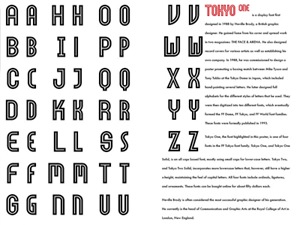 Neville Brody (b. 1957, North London) is a famous graphic designer who has influenced the practice of design in the 1990s. He created record covers, did magazine design and was art director for projects for companies like Christian Dior, Nike, and the BBC. His company was first called Research Studios, and then morphed into Brody Associates. In 2018, Brody joined Type Network with a new foundry, Brody Fonts.
Neville Brody (b. 1957, North London) is a famous graphic designer who has influenced the practice of design in the 1990s. He created record covers, did magazine design and was art director for projects for companies like Christian Dior, Nike, and the BBC. His company was first called Research Studios, and then morphed into Brody Associates. In 2018, Brody joined Type Network with a new foundry, Brody Fonts. Largely focused on typography, Brody has been at the forefront of many developments in type culture, from his hand-drawn headlines for The Face magazine and experimental typographic platform FUSE to global fonts for Coca-Cola, Samsung, and Channel4. Iconic posters by him include the Tyson vs Tubs Tokyo poster from 1988. Check also Pat Tmhu's Brody-style Weather Forecast poster (2012). Other people working on Brody's original site include Mike Williams and Simon Staines. His early type was experimental, and was collected under the name FUSE fonts. Direct access. He did the following FUSE fonts: in FUSE 1, he started with the experimental font State; in FUSE 5, he published Virtual; at FUSE 6, he published Code; at FUSE 7, he drew Crash (Regular and Cameo); in FUSE 8, he showed us Religion (Order, Obidience, Loss of Faith); at FUSE 9, he did F-AutoSuggestion (1994); in FUSE 11, he published Peep, a font only showing parts of letters; in FUSE 13, Ritual, in FUSE 14, CyberStatic, in FUSE 15, F-City Avenue (1997), in FUSE 16, GeneticsSecond Generation, in FUSE 17, Echo Downloaded, Page Three, in FUSE 18, Lies. Born in 1957 in London, his fonts include FF Autotrace (1994, a sans family progressively distorted by Fontographer's autotrace feature), F Cyber Static (1997, letters based on layered sequences of halftone dots), Arcadia (1990), Industria (1990, readapted in 2012 by Yautja into the free font Instrumenta), Insignia (1990), Blur (1991; FF Blur is from 1992; see poster), FF Pop (1991, a rectagular font originally made for a German music TV program), FF Dirty (1994), Gothic (1991), Harlem (1991). In 1993, Neville Brody published the poster font family FF World (FontFont), which used his lettering from his Tyson versus Tubbs Tokyo match poster (1988). This became a free web font in 2010 over at FontFont under the name FF World Wide Web. In 2006, Neville Brody published Times Modern, designed for The Times. The press release states: The new typeface, called "Times Modern", encapsulates the paper's heritage while adapting to the demands of the new compact format. Like The Times' previous typeface, Times Classic, Times Modern has been designed as a bespoke type family. The Times is the only newspaper to create and use bespoke fonts, all other UK newspapers purchase ready-to-use fonts. The project has been led by Ben Preston, Deputy Editor of The Times, in partnership with Neville Brody, formerly art director of The Face, and lead designer on Actuel, City Limits and Arena magazines. Brody also worked on the redesign of Times2 in 2005. Collaborating with Neville is lead designer Jon Hill supported by Research Studios' Luke Prowse. Jon has worked on many large editorial projects, including the design of supplements for The Guardian, the redesign of Swiss newspaper Le Temps and UK business-to-business magazine Media Week. Twenty-three year old Prowse has created the new Times Modern headline font for the newspaper. That press release has been blasted by the typophiles for being plainly wrong ("The Times is the only newspaper to create and use bespoke fonts, all other UK newspapers purchase ready-to-use fonts." What, and how about The Guardian, for example?) and disrespectful of its designers (you really have to dig through it to learn that Luke Prowse actually did the type work). And controversy keeps following Neville Brody: in 2009, New Deal, a constructivist typeface, was made for the Micheal Mann film "Public Enemies", starring Johnny Depp and Christian Bale. The bloggers comment that the type is "rubbish" (sic), and that others such as Chank beat him to this type style. In 2012, Research Studios published Vetena (HypeForType). For FIFA's World Cup in 2014, Neville Brody custom-designed Case Brody for England's Nike kit. In 2015, Neville Brody designed Horseferry and Chadwick for the new visual identity for UK broadcaster Channel 4. In 2018, Brody Associates announced their custom font, TCCC Unity, for Coca Cola. It was jointly designed by Neville Brody and Luke Prowse. The first fonts at Brody Fonts in 2018 are BF Bonn (1989-2018) and BF Buffalo. Neville Brody originally designed the geometric sans BF Bonn for The Boon Ausstellungshalle and the Bundeskunsthalles signage and identity systems in 1989-1991. BF Buffalo (2009-2018) is a soft octagonal punk-meets-sci-fi design debuted as an editorial type in 2009 in Arena Homme Plus. It later appeared as the signature face for London's Anti Design Festival. Brody significantly reworked Buffalo with the help of David Jonathan Ross. Linotype link. Klingspor link. FontShop link. FontFont link. Short bio. Check out another biography at FontNet. Type Network link. View Neville Brody's typefaces. [Google]
[MyFonts]
[More] ⦿
|
Bruno Bernard
[Alfab]

|
 [MyFonts]
[More] ⦿
[MyFonts]
[More] ⦿
|
Bruno Maag
[Dalton Maag]

|
 [MyFonts]
[More] ⦿
[MyFonts]
[More] ⦿
|
Bruno Rodrigues
|
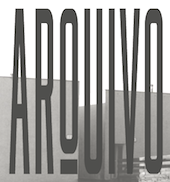 Graphic and type designer from Portugal who studied at the University of Algarve. He created Double Typeface (2012, outlined caps), Memoria (2013, a modular typeface done with Joao Miranda), Big (2013, a headline sans done with Joao Miranda), Silo (2013), Mutant Sans Sense (2014, made at Burocratik), Angles (2015, a shadow typeface), Arquivo Typeface (2015, a set of custom condensed industrial sans typefaces done for Terry Allen), Nomada Typeface (2015, also made at Burocratik).
Graphic and type designer from Portugal who studied at the University of Algarve. He created Double Typeface (2012, outlined caps), Memoria (2013, a modular typeface done with Joao Miranda), Big (2013, a headline sans done with Joao Miranda), Silo (2013), Mutant Sans Sense (2014, made at Burocratik), Angles (2015, a shadow typeface), Arquivo Typeface (2015, a set of custom condensed industrial sans typefaces done for Terry Allen), Nomada Typeface (2015, also made at Burocratik). Home page. Burocratik link. [Google]
[More] ⦿
|
Bruno Selles
[Vasava Fonts]

|
[MyFonts]
[More] ⦿
|
Building Paris
[Guillaume Grall]
|
Design studio in Paris that has created several typefaces, often as part of a branding project. These include La Vallée and Knife. It is run by Benoît Santiard and Guillaume Grall. [Google]
[More] ⦿
|
Buildshape
[Mauro Paolozzi]
|
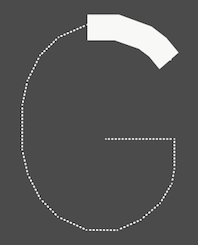 Mauro Paolozzi (b. 1975) studied at Luzern School of Art and Design and graduated from the Royal Academy of Art in The Hague in 2000. After completing the postgraduate class Type & Media (2000-2001), he maintained a platform for audio and visual art in The Hague (2001-2006). He has also been teaching at Fachklasse Grafik in Luzern since 2001. At the Swiss type foundry Lineto, he was co-designer of both LL Prismaset A and LL Prismaset B, roughly between 2006 and 2019. LL Prismaset is based on Rudolf Koch's Prisma (Klingspor, 1930). Mauro has designed identities for cultural institutions such as Kulturbeiz Wohlen, Schloss Lenzburg, and the Swiss Federal Office of Culture. He ran Buildshape.
Mauro Paolozzi (b. 1975) studied at Luzern School of Art and Design and graduated from the Royal Academy of Art in The Hague in 2000. After completing the postgraduate class Type & Media (2000-2001), he maintained a platform for audio and visual art in The Hague (2001-2006). He has also been teaching at Fachklasse Grafik in Luzern since 2001. At the Swiss type foundry Lineto, he was co-designer of both LL Prismaset A and LL Prismaset B, roughly between 2006 and 2019. LL Prismaset is based on Rudolf Koch's Prisma (Klingspor, 1930). Mauro has designed identities for cultural institutions such as Kulturbeiz Wohlen, Schloss Lenzburg, and the Swiss Federal Office of Culture. He ran Buildshape. In 2015, Raphael Koch and Mauro Paolozzi co-designed GT Cinetype at Grilli Type. This typeface has outlines consisting of many short straight line segments, thus mimicking the now obsolete pre-digital age technique of laser printing subtitles in movies. At small sizes, the font looks very smooth, but at larger sizes, the straight segments become apparent. His custom typefaces include Blindalley (2001), Backdoor (2001), Spins (200) and Panty Boy (2000), Scsibar (2000). [Google]
[More] ⦿
|
Bureau Borsche
[Mirko Borsche]
|
Bureau Borsche, a graphic design studio in München, Germany, was founded in 2007 by Mirko Borsche. They made almost exclusively bespoke typefaces. These include: - Isar, Tush Extra (2012: a flared typeface), Archive and Alston (2012, The Entente) for Tush Magazine.
- A custom typeface for Tunica Magazine.
- Tweety for Korakrit Arunanondchai.
- Super Paper Grotesque for Super Paper.
- Moroi (2013, by Galle Renaudin) for (R)evolution by Danton Denk Raum.
- Libreville (2012: derived from Libre Baskerville) for SEPP Magazine.
- Felipe (by Geoffrey Pellet) for I Iz Felipe Fanzine.
- Muenchen Regular (2012, by Bureau Borsche and Tobias Weber: a Trajan caps typeface). For the Bavarian State Opera.
- Harial for the Bavarian State Opera.
- Andri3000 for BR Orchestra.
- Dalhem for Bjoern Dahlem Theorie des Himmels.
- Sumatra for Mickey Mao book (ECAL).
- Dorothy for Horst Magazine.
[Google]
[More] ⦿
|
Bureau Bruneau
[Ludvig Bruneau Rossow]
|
 Graphic design bureau in Oslo. In 2015, Ludvig Bruneau Rossow created the geometric sans titling typeface BB Perfume exclusively for Formulae Perfume. Behance link. [Google]
[More] ⦿
Graphic design bureau in Oslo. In 2015, Ludvig Bruneau Rossow created the geometric sans titling typeface BB Perfume exclusively for Formulae Perfume. Behance link. [Google]
[More] ⦿
|
Bureau Brut (was: Extra Brut)
[Yoann Minet]
|
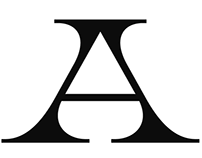 Bureau Brut was founded in 2015 by Julia Joffre, Yoann Minet and Camille Prandi. In 2017 Bureau Brut opened up Extrabrutshop to sell their typefaces. Both are located in Montreuil, France. The original collection of typefaces were all done by Yoann Minet. They include Droulers, Matorral (2016-2019, with the help of Baptiste Lecanu: Matorral is based on the fiery single-weight bespoke typeface Bureau Brut designed for the identity of Musée de la Poterie de La Borne. It draws inspiration from Fritz H. Ehmcke's Ehmcke Antiqua (Flinsch, 1908: the lower case t) and William F. Capitain's Caxton Old Style (Marder, Luse & Co., 1889: the R), and features an M with a distinctive Marseille vibe as in the monogram of René Dufaure de Montmirail, founder of the Olympique de Marseille football club in 1899), Ostia Antica, Totentanz and Traulha. In 2016, Minet designed the custom ultra-condensed typeface Scories Mono. Dr (2017) was published by Production Type. In 2018, they added the floarting-in-the-wind typeface Bourrasque. In 2020, Bureau Brut released Brut Grotesque (the original design started in 2015), and designed the compressed arts and crafts custom font MySen for the jewelry brand MySen. In 2021, Bureau Brut published the chamfered typeface family Round and the experimental Roman Grotesque without revealing who designed it. [Google]
[More] ⦿
Bureau Brut was founded in 2015 by Julia Joffre, Yoann Minet and Camille Prandi. In 2017 Bureau Brut opened up Extrabrutshop to sell their typefaces. Both are located in Montreuil, France. The original collection of typefaces were all done by Yoann Minet. They include Droulers, Matorral (2016-2019, with the help of Baptiste Lecanu: Matorral is based on the fiery single-weight bespoke typeface Bureau Brut designed for the identity of Musée de la Poterie de La Borne. It draws inspiration from Fritz H. Ehmcke's Ehmcke Antiqua (Flinsch, 1908: the lower case t) and William F. Capitain's Caxton Old Style (Marder, Luse & Co., 1889: the R), and features an M with a distinctive Marseille vibe as in the monogram of René Dufaure de Montmirail, founder of the Olympique de Marseille football club in 1899), Ostia Antica, Totentanz and Traulha. In 2016, Minet designed the custom ultra-condensed typeface Scories Mono. Dr (2017) was published by Production Type. In 2018, they added the floarting-in-the-wind typeface Bourrasque. In 2020, Bureau Brut released Brut Grotesque (the original design started in 2015), and designed the compressed arts and crafts custom font MySen for the jewelry brand MySen. In 2021, Bureau Brut published the chamfered typeface family Round and the experimental Roman Grotesque without revealing who designed it. [Google]
[More] ⦿
|
Camelot Typefaces GbR
|
Camelot is an independent type collective and self-publisher of typefaces based in Leipzig, Germany, and founded by Maurice Göldner, Katharina Köhler and Wolfgang Schwärzler. Their typefaces include Lelo and Rosart by Katharina Köhler, Gräbenbach by Wolfgang Schwärzler and the text typefaces Rando and Rando Display (by Maurice Göldner), about which we read: Rando Display is the crispy companion of Rando, a contemporary homage to German romanesque typefaces from the late 19th/early 20th century such as Anker Romanisch (Schelter & Giesecke) or Hamburger Römisch (Schriftguss AG). In 2020, they released Eliza and Eliza Mono by Pawel Wolowitsch and the Camelot crew. Between 2018 and 2021, they developed a new bespoke typeface, Gus, for MoCa (The Museum of Contemporary Art in Cleveland). [Google]
[More] ⦿
|
Cameron Johnston
|
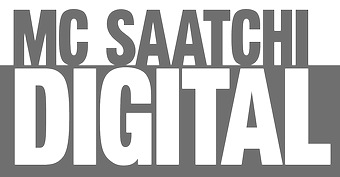 Graphic designer in Sydney, Australia. In 2015, he spruced up the old corporate typeface MC Saatchi. [Google]
[More] ⦿
Graphic designer in Sydney, Australia. In 2015, he spruced up the old corporate typeface MC Saatchi. [Google]
[More] ⦿
|
Cami Naccarato
|
Fort Collins, CO-based designer of Roofroots (2015), a typeface custom-made for Roofroots. Behance link. [Google]
[More] ⦿
|
Camilla Høgemark
|
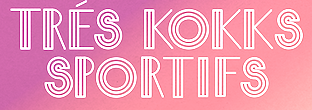 During her studies in Stavanger, Norway, Camilla Høgemark created the bilined typeface Futuristic Font (2014) and as a student in Brisbane, Australia, she created the trilined custom typeface Tres Kokks Sportifs (2016). Behance link. [Google]
[More] ⦿
During her studies in Stavanger, Norway, Camilla Høgemark created the bilined typeface Futuristic Font (2014) and as a student in Brisbane, Australia, she created the trilined custom typeface Tres Kokks Sportifs (2016). Behance link. [Google]
[More] ⦿
|
Carl Dacko
|
Designer in Stockholm, Sweden, who specilaizes in corporate branding. In 2012, he designed a cold war sans for the Spionage Museum in Berlin. Behance link. [Google]
[More] ⦿
|
Carles Rodrigo
|
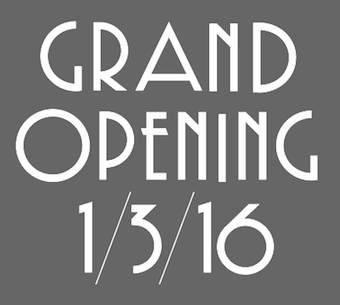 Carles Rodrigo (Mucho) won a D&AD 2011 award in the typeface design competition for his Art Out. He set up Carles Rodrigo Studio in London, and specializes in branding and corporate type design. His creations there are visually striking:
Carles Rodrigo (Mucho) won a D&AD 2011 award in the typeface design competition for his Art Out. He set up Carles Rodrigo Studio in London, and specializes in branding and corporate type design. His creations there are visually striking: - Splash Rounded. Corporate type design for Barcelona-based LED screen display company. Planned as a rounded version of Avant Garde.
- Peppurat Outline (2011). Headline typeface especially designed for the book "Pepe Andreu---Thinking Furniture". The typeface was planned as an outline version of Akkurat.
- Primera Bold. A stencil didone designed for the Primero Primera Hotel.
- Lexus Inline. Corporate identity type design for Lexus Design Awards, which took place in Tokyo.
- Art Out (2010). A blackboard bold typeface that was created for Fundación Arte y Mecenazgo in Spain.
- Monaco Book (2015). An art deco sans based on Geo Ham's racing posters from the 1930s.
- Zarzuela Poster (2009). Typeface developed for hypothetical rebirth of Zarzuela. an important genre of Spanish folklore. The structure of the typeface is based on the genre's 17th century origin, and is a hybrid between the transitional roman and the didone.
- Bhldn Display (2015). An extreme contrast custom fashion mag and wedding typeface in five styles based on Hoefler Display. It was created for an American clothing company.
- Sarda Display. This display typeface was especially developed for the book "Andres Sarda Moda Amor Arte". It is based on ITC Grouch (1970, Ronne Bonder and Tom Carnase).
Behance link. [Google]
[More] ⦿
|
Carlos Mignot
|
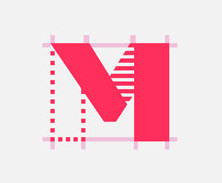 Graphic designer in Rio de Janeiro associated with Plau Design. At Miami Ad School, as a student, he created Minimal Fraktur (2015). In 2018, he designed the corporate art deco typeface Chez Lalu 70. In 2019, he co-designed Muda, a corporate typeface for the fashion brand Oficina Muda with Ana Laura Ferraz, Gabriel Menezes and Rodrigo Saiani. In 2020, still at Plau, he designed the custom all caps sports company typeface Brio. With Rodrigo Saiani, Carlos Mignot designed the video game font family (+stencil, +Cyrillic) either called Killing Sans or Nine to Five (2020). Still in 2020, Mignot designed the flared Koch Antiqua-style custom typeface Xilo.
Graphic designer in Rio de Janeiro associated with Plau Design. At Miami Ad School, as a student, he created Minimal Fraktur (2015). In 2018, he designed the corporate art deco typeface Chez Lalu 70. In 2019, he co-designed Muda, a corporate typeface for the fashion brand Oficina Muda with Ana Laura Ferraz, Gabriel Menezes and Rodrigo Saiani. In 2020, still at Plau, he designed the custom all caps sports company typeface Brio. With Rodrigo Saiani, Carlos Mignot designed the video game font family (+stencil, +Cyrillic) either called Killing Sans or Nine to Five (2020). Still in 2020, Mignot designed the flared Koch Antiqua-style custom typeface Xilo. In 2021, Ana Laura Ferraz, Valter Costa, Carlos Mignot and Rodrigo Saiani designed the handcrafted black poster and branding typeface Vinila for the identity of grammar teacher Eduardo Valladares' personal brand EDU VLLD (Edu stands for Eduardo and Education while VLLD represents Valladares and Vulnerability). Carlos Mignot and Felipe Casaprima designed the corporate family iN Serif and iN Sans (+Mono) for iN Consultoria de Marcas in 2021. Still in 2021, Carlos Mignot and Rodrigo Saiani designed a few hip typefaces for the Brazilian TV channel Canal Brasil. At Plau, he published the 10-style humanist ans typeface Redonda. [Google]
[More] ⦿
|
Carole Gautier
[My Name is Wendy]
|
[More] ⦿
|
Carolina Laudon
[Laudon Type]
|
 [More] ⦿
[More] ⦿
|
Carrois Type Design
[Ralph du Carrois]
|
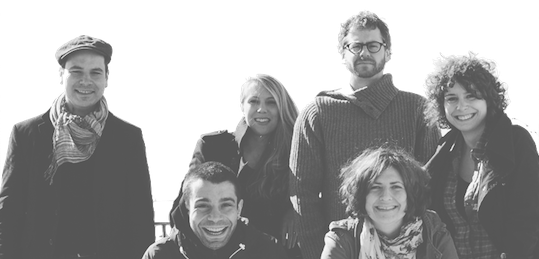 Carrois Type Design (Berlin, Germany) started up officially ca. 2010, although Ralph du Carrois has been designing typefaces since ca. 2002. This dynamic company in Germany has three art directors, Jenny du Carrois, Anja Meiners and Botjo Nikoltchev. All three also design typefaces, as well as Adam Twardoch, Andreas Eigendorf and Ralph du Carrois himself. The company specializes in custom type.
Carrois Type Design (Berlin, Germany) started up officially ca. 2010, although Ralph du Carrois has been designing typefaces since ca. 2002. This dynamic company in Germany has three art directors, Jenny du Carrois, Anja Meiners and Botjo Nikoltchev. All three also design typefaces, as well as Adam Twardoch, Andreas Eigendorf and Ralph du Carrois himself. The company specializes in custom type. Typefaces (a *very* incomplete list, with apologies, but I can't tell from the web site who made what...): - Allzweck MvdR (2010-2011), a revival of a sans typeface influenced by Planzkissen by Mies van der Rohe. This was commissioned by Neue Nationalgalerie.
- The corporate typeface Cisco Sans (2010), which is positioned midway between Helvetica and Akzidenz Grotesk.
- Fira Sans (2013, for Firefox; with Erik Spiekermann). Google Web Font link. Mozilla download page. Google web Fonts published Fira Sans Condensed and Fira Sans Extra Condensed (2012-2016) in 2017. CTAN link.
- Krikrikrak and Blumenkohl (2013, children's scripts).
- PTL Manohara (2010, Primetype: a humanist sans by Botio Nikoltchev), Sadgirl(2006, Primetype), and PTL Maurea (2005, Primetype). Ralph du Carrois made many more fonts at Primetype prior to the establishment of Carrois Type design.
- Free Google Web Fonts made in 2012: ABeeZee (Anja Meiners: a sans typeface created to help children), Carrois Gothic, Carrois Gothic SC, Finger Paint (brush face).
- Icon fonts for a number of companies: Bosch (2011), Herzberger Bäckerei (2011), Hybride Iconwelt (2007), Ponce, Russian Rail, Sentres Wettericons, ZDF Nachrichten.
- Several typefaces were created in cooperation with Erik Spiekermann's group between 2007 and 2012. These include work on Meta Serif Pro (2011), Meta Science (2012: done for De Gruyter, it is based on Meta and Meta serif), FF Meta (2008: some thin italic weights), TERN or Trans European Road Network (2007-2008), ZDF Nachrichten (2009, plus many icons), Lautschrift (2012: a phonetic script done for Erik Spiekermann to add to his Meta and Meta Serif families), and Unit Slab Pro (2009).
- Inarea Sans (2003) and Inarea (2003-2005).
- FR Classic (2002). This typeface was used in the redesign of the Frankfurter Rundschau. This didone is based on a reworking of LT Gianotten by Antonio Pace.
- Two condensed sans typefaces done for the subway system in Rome in 2005. Some icons were also made in that project.
- Share (2006). A free techno monospaced family made for the TYPO3 Association.
- An angular grotesk done in 2008 for the Russian Railways. This work was carried out with Dmitri Lavrow, and invloved Andreas Eigendorf and Ralph du Carrois.
- Suzuki (2006) is a corporate gothic font that replaces Franklin Gothic at Suzuki as house style.
About Ralph du Carrois, b. 1975: He graduated at the Staatliche Hochschule für Gestaltung Karlsruhe in 2004 with his first typeface family PTL Maurea. Since 2000 he has worked for different companies or agencies. In 2003 he founded the studio seite4 in Berlin with its main focus on type design and corporate identity design. [Google]
[More] ⦿
|
Carter & Cone
[Matthew Carter]

|
Boston-based company started in 1991 by Matthew Carter and Cherie Cone that published typefaces such as Mantinia, Elephant, Sophia (1993) and the beautiful Galliard CC. They produced type on commission for Apple (Skia), Microsoft (the screen fonts Verdana, Georgia, Nina and Tahoma), Time, Newsweek (Vincent, 1999), Wired, U.S.News&World Report, Sports Illustrated, The Washington Post, The Boston Globe, The Philadelphia Inquirer, The New York Times, El País and the Walker Art Center. In particular, these are their typefaces for The New York Times: NYT Cheltenham (2001, 2008-2014), NYT Franklin (2012-2014), NYT Imperial (2007, 2008-2014), NYT Karnak (1993-2014: Font Bureau and later Carter and Cone), NYT Stymie (1990-2014). MyFonts site. Type Network link. The Type Founders link. Linotype link. View Carter&Cone's typefaces. [Google]
[MyFonts]
[More] ⦿
|
Catapult
|
Catapult is the graphic design studio of Anton De Haan and Philippe Pelsmaekers in Antwerp. Other people involved in Catapult include Karen Van Puymbroeck, Tom Vanwelkenhuyzen, Omar Chafai and Luk Mestdagh. For the house style of Zonienwoud, they designed Son Grotesque and Son Grotesque Stencil in 2010. [Google]
[More] ⦿
|
César Puertas
[Typograma]

|
 [MyFonts]
[More] ⦿
[MyFonts]
[More] ⦿
|
Celya Bendjenad
|
Graphic designer in Paris who created a custom typeface for GQ France in 2015. [Google]
[More] ⦿
|
Characters (or: Character Type)
[René Verkaart]

|
 René Verkaart (Maastricht, The Netherlands, b. 1970) established Characters in 2004. He also has an office in Düsseldorf, Germany. His type designs:
René Verkaart (Maastricht, The Netherlands, b. 1970) established Characters in 2004. He also has an office in Düsseldorf, Germany. His type designs: - Accelerator. A techno / Startrek typeface solds via T-26.
- Ballet Mechanique (2006). A custom-designed unicase font for musician Jeroen Borrenbergs, aka Ballet Mechanique.
- Corporaet (2019). A 5-style humanistic sans intended for corporate branding.
- Cucaracha (2005, Volcano Type). It includes Cucaracha Icons. A typeface commissioned by Boris Kahl for Kahl's Bastard Project.
- Encrypted Wallpaper (2006) is a playful squarish typeface for creating textual wallpapers and decorations. Free at MyFonts.
- Insider (2004). A custom sans face done for Insider Consulting in Duesseldorf, German. It became retail in 2011, and is sold as a warm grotesque family.
- Insignety. a fashion stencil typeface for Amsterdam-based jeweler Insignety.
- Jekyll, a sans typeface René describes as follows: CFF Jekyll Pro is a schizophrenic grotesk typeface with an edge. Its bright side is a versatile corporate font with an unexpected twist. Its dark side is awakened by creepy OpenType features, ligatures, swashes, and alternate glyphs, making it mutate into the evil Mr. Type.
- Kris (2014). A vampire script or haunted house typeface co-designed with Corrie Smetsers.
- Maastricht Sport. A suite of retail & customized fonts for Maastricht Municipality's Sports department. Based on Insider.
- Maestricht. A highly personal script font, custom made from the handwriting of Maastricht-based film producer Jean-Paul Toonen, dating back to 1992. His handwriting is very dynamic, artistic and a tasteful blend between roman and italic style.
- Motorman. A hand lettered logo font for the electric Meijs Motorman moped. This typeface was commissioned by design agency Stoere Binken Design.
- Nantua (2003), Nantua Flava XL (2003, a futuristic display typeface originally sold through Union Fonts). In 2011, the octagonal typeface Nantua was offered for free download at Dafont.
- Nordic Narrow is a clean, stylistic font with a Scandinavian touch. For an early development of the Nordic series, see Nordic A (2003, sans, sold through Fountain). Nordic Narrow Pro was published in 2014.
- Plan (2005). A corporate typeface made for Plan A Ontwerp, a graphic design studio based in Eindhoven, The Netherlands, based on sketches by Frank Vogt.
- Porta. a modular monoline unicase typeface.
- Reethi Rah (2006). A great text typeface for editorial use, named after a resort on The Maldives.
- Savant (2012). A free informal face.
- ShellShock (2005). A military stencil typeface.
- SidB. An educational typeface commissioned by Noordhoff Publishers. SidB stands for Schrijven in de Basisschool (writing in elementary school) and is an independent method to teach kids elementary school writing. Not for sale. René also designed another eductaional font, Plantijn Schrift.
- Siventi Logo Wide (2005). A Startrek face. Verkaart writes: This custom font was created from the Siventi Products BV logo, which was part of a Brand Identity concept done by Stoere Binken Design (SBD). The concept behind the handlettered Siventi logo was a playful concept, a colorful corporate identity that would change appearance like a chameleon to fit its purpose. Fresh and friendly on poppy plastic products, serious and distinguished on office desk materials.
- Vagebond (2003) is a monoline elliptical geometric font that is inspired by 60s television design.
- Other fonts designed by René Verkaart include BorVer, Bionix, FatBoy One, Freaky Animals, Kryptonite (1998), Porta, SBD Block (a corporate typeface for his own design studio, Stoere Binken Design).
He co-founded Stoere Binken Design. Blog. Klingspor link. Behance link. Dafont link. I Love Typography link. Volcano Type link. Fountain Type link. View René Verkaart's typefaces. [Google]
[MyFonts]
[More] ⦿
|
Charles Daoud
[North Type (was: Charles Daoud Type, or: CD Type)]

|
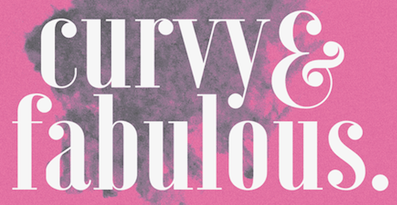 [MyFonts]
[More] ⦿
[MyFonts]
[More] ⦿
|
Chester Jenkins
[Cooper Hewitt]
|
[More] ⦿
|
Chester Jenkins
[Constellation]
|
 [More] ⦿
[More] ⦿
|
Chester Jenkins

|
 With just one name (the other one was lost in an accident!), Chester, the type designer, was born in Montreal in 1971. In 1995 Chester moved to Chicago to work with Rick Valicenti and eventually become a partner in his digital type foundry, Thirstype. In 2004, he started up the type coop Village in New York together with his wife and partner, tracy Jenkins. Chester's published designs have been used for branding programs including AT&T, Starwood Hotels, CBS Television, Nike, the San Francisco Ballet, Columbia University Business School, and the National September 11 Memorial & Museum. He has created bespoke typefaces for Blackberry, Cooper Hewitt Smithsonian Design Museum, and the National Football League.
With just one name (the other one was lost in an accident!), Chester, the type designer, was born in Montreal in 1971. In 1995 Chester moved to Chicago to work with Rick Valicenti and eventually become a partner in his digital type foundry, Thirstype. In 2004, he started up the type coop Village in New York together with his wife and partner, tracy Jenkins. Chester's published designs have been used for branding programs including AT&T, Starwood Hotels, CBS Television, Nike, the San Francisco Ballet, Columbia University Business School, and the National September 11 Memorial & Museum. He has created bespoke typefaces for Blackberry, Cooper Hewitt Smithsonian Design Museum, and the National Football League. His fonts include Syzygy, Schmelvetica (at FontShop), Psyche (unreleased), Orbit (2003, with Rob Irrgang), Rheostat (1996, a grunge dot matrix font family), HateNote, Panderella (2000-2001, ultra geometric), Eclogues (1999, an absolutely stunning romantic high-ascender-descender family), LoveHateCollection, JohnHadANightmareLastNight (2001), Alexey (2003, a stencil family, with Rick Valicenti), Apex Serif (2003, with Rick Valicenti), Exchange (dot matrix), Pizzelle Italic, Phatso (2003), Satchel Paige (2003, a wood type typeface made with Tracy Jenkins), Pixella (2003, pixel font), Nillennium (2000, an octagonal family), Freedumb (2004), Galaxie Polaris (2004, a sans) and Virgil, the last twelve fonts at Thirstype. At Village, he published Mavis (2005), Apex Sans (2004, with Rick Valicenti), and then Apex New (2006), which has a hairline weight, Apex Thin, and Apex Rounded (2010). In 2009, he co-designed the large x-height text family Galaxie Copernicus with Kris Sowersby at Village. In 2010, he and Jeremy Mickel made the poster type family Aero, which took inspiration from Roger Excoffon's Antique Olive. It won an award at TDC2 2011. His custom-made typefaces from 2006-2007 include these: Rewards (with Kris Sowersby), Always Radio (with Markus Rakeng), 2Wice Egyptian, Apex Compact, Apex New Condensed, Baro Heavy, Baro Light, Baro Medium, Baro Super, DPA Gothic, Endzone, Galaxie Ariane, Galaxie Copernicus, LMVDR, Modernismo, Snickers. [Google]
[MyFonts]
[More] ⦿
|
Chiara Di Terlizzi
|
Visual designer in Milano, who created the (virtual) type and identity for Agfa in 2012 starting from their old logo. Around the same time, Mirko Landi, another designer in Milan, did a similar thing. I wonder if they were not doing a school assignment. In 2014, she created the lapidart sans typeface Xanto. Behance link. [Google]
[More] ⦿
|
Chiharu Tanaka

|
 Chiharu Tanaka was born and raised in Japan. She completed her Bachelor's degree of Textile Design in Tokyo and worked at design companies for a few years. She subsequently received her MFA in Graphic Design from the Academy of Art University in San Francisco in 2009, and remained in San Francisco area ever since. She worked as a graphic and type designer for John McNeil Studio (2009-2010), Landor Associates (2009-2010), Psy/Ops (2010-present) and Morisawa (2016-present). Her typefaces:
Chiharu Tanaka was born and raised in Japan. She completed her Bachelor's degree of Textile Design in Tokyo and worked at design companies for a few years. She subsequently received her MFA in Graphic Design from the Academy of Art University in San Francisco in 2009, and remained in San Francisco area ever since. She worked as a graphic and type designer for John McNeil Studio (2009-2010), Landor Associates (2009-2010), Psy/Ops (2010-present) and Morisawa (2016-present). Her typefaces: - The roman and ornamental retail typeface family HaruNami (2010, Psy Ops). She writes: HaruNami (spring wave) is a family of decorative typefaces which fuse together Japanese ornamentation with the Roman alphabet. My purpose with this project is to find a balance between the designs of the West and the East. My hope is to share the Japanese aesthetic with an International audience. HaruNami has a unique stylistic system that ranges from Simple to Ornate.
- Corporate typefaces for Tokyu Hands (an icon set, dated 2002), Landor (San Diego Zoo), Psy/Ops (Chevrolet; Bollinger Motors). Louis, done for Chevrolet under the creative direction of Rodrigo Cavazos at Psy/Ops, is a six-style DIN-like industrial grotesque for Latin and Cyrillic.
- The corporate typefaces Reitmans Script.
- Tegaki. An experimental brush script.
- Mie. A hand-drawn font that attempts to obfuscate the border between letters and art.
- Txt 1010 (2014). An experimental typeface to make fancy borders using opentype prowess. Done together with Carolina de Bartolo while working at Psy/Ops.
[Google]
[MyFonts]
[More] ⦿
|
Chris Klee
|
Chris Klee, a graphic designer from Missouri, now based in Austin, TX, created Renaissance Modern (2012): Renaissance Modern draws inspiration from the magnificent architecture of the pillars, windows, ledges and openings [of the Porta Nigra city gate in Trier, Germany] while also pulling from the modernity surrounding Trier. For Whole Foods, he designed the corporate typefaces Whole Sketch and Whole Sketch Sans in 2014. Behance link. [Google]
[More] ⦿
|
Chris Maclean
|
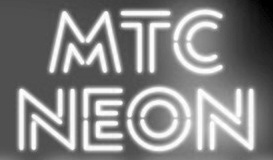 Creative Director for Interbrand Australia. For Melbourne Theatre Company (MTC) he created MTC Neon (2013, with Joao Peres). Many of his other corporate identity projects also involve custom-designed typefaces. [Google]
[More] ⦿
Creative Director for Interbrand Australia. For Melbourne Theatre Company (MTC) he created MTC Neon (2013, with Joao Peres). Many of his other corporate identity projects also involve custom-designed typefaces. [Google]
[More] ⦿
|
Chris Rogers
|
Christopher Rogers is a multidisciplinary designer in New York. After working for three years as a sign maker in Virginia, Chris moved to New York, attending SVA for Graphic Design, studying in the area of graphic identity, information design, illustration, packaging, and book design. Chris Rogers made the sans typeface Indicator in 2010 for Best Made. [Google]
[More] ⦿
|
Christian Schwartz
[Commercial Type (Was: Schwartzco)]

|
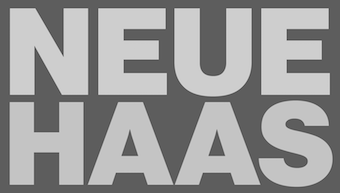 [MyFonts]
[More] ⦿
[MyFonts]
[More] ⦿
|
Christophe Badani
[Typophage]

|
 [MyFonts]
[More] ⦿
[MyFonts]
[More] ⦿
|
Christopher McMachen
|
Graphic designer in McLean, VA. Creator of Blade (2013), a proprietary hexagonal typeface designed for AFTA shaving products. [Google]
[More] ⦿
|
Cinketype
[Tibor Szikora]
|
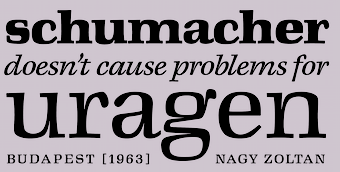 Tibor Szikora is a Budapest, Hungary-based type designer specializing in custom typefaces and lettering. He runs Cinketype. His typefaces:
Tibor Szikora is a Budapest, Hungary-based type designer specializing in custom typefaces and lettering. He runs Cinketype. His typefaces: - Kass (2021). An informal typeface that was based on the handwriting and etchings of Hungarian illustrator Janos Kass.
- Crow Script (2021). A display typeface with calligraphic Dr. Caligari-style roots.
- Margaret Neue (2021). Inspired by Zoltán Nagy's Margaret from 1963.
- Szikora Sans (2021). A humanist sans.
- Luttor Variable (2020): This type family was inspired by the prim, but quirky, familiar, but often surprising letterforms of Ignac Luttor's writing system, the so-called Zsinoriras', from the late 1930's Hungary. The main source of inspiration was the first figure in the booklet "A Luttor-fele uj irasmod" [1936], where he compares the three levels of his writing system, from an unconnected, printed style to a connected, cursive hand.
- Cinke Sans (2021). A workhorse sans used on his own web site.
Future Fonts link. [Google]
[More] ⦿
|
Circus Design
[Brian Kaszonyi]
|
Finnish art director Brian Kaszonyi is the designer of CircusRootbeer, Circus Robot and Circus Mouse (1992). Co-designer with Tomi Haaparanta of the FUSE95 experimental font FutuRoman. Codesigner with Peter Kaszonyi of CircusRex (1993). All these fonts are still available from FontHaus. Codesigner with Tomi Haaparanta and Klaus Haapaniemi of the 15-font War family in 1999-2000. In 2013, in cooperation with Tomi Haapranta, he created a decomposed monoline layered text face, Tee Franklin. His corporate typefaces include designs done for Finnish pulp and packaging giant Stora Enso. Cargo Collective link. [Google]
[More] ⦿
|
City of Melbourne
|
Enjoy the great use of the letter M for the branding of the city of Melbourne in 2009 by a team of designers at Landor: Jason Little, Ivana Martinovic, Jefton Sungkar, Malin Holmstrom, Sam Pemberton. [Google]
[More] ⦿
|
Colin Philippe-Jan
|
Paris-based art director. Creator of the free octagonal typeface Thedus (2020). Thedus is a powerful all caps font that was inspired by the Weyland-Yutani logo, from the saga Alien. For Havas Paris, he designed the corporate hipster typeface Havas Paris (2020). [Google]
[More] ⦿
|
Colophon Foundry
[Edd Harrington]
|
 Colophon Foundry was a London and Los Angeles-based digital type foundry established in 2009. Its members comprised Benjamin Critton (US), Edd Harrington (UK), and Anthony Sheret (UK). The foundry's commissioned work in type design was complemented by independent and interdependent initiatives in editorial design, publishing, curation, and pedagogy. It grew out of the Brighton-based design studio, The Entente (Anthony Sheret&Edd Harrington) in April 2009. Benjamin Critton (Brooklyn, NY) joined them later. In December 2023, it was acquired by Monotype.
Colophon Foundry was a London and Los Angeles-based digital type foundry established in 2009. Its members comprised Benjamin Critton (US), Edd Harrington (UK), and Anthony Sheret (UK). The foundry's commissioned work in type design was complemented by independent and interdependent initiatives in editorial design, publishing, curation, and pedagogy. It grew out of the Brighton-based design studio, The Entente (Anthony Sheret&Edd Harrington) in April 2009. Benjamin Critton (Brooklyn, NY) joined them later. In December 2023, it was acquired by Monotype. Fonts: - Aperçu (2010, +Mono), a sans family by Anthony Sheret / The Entente.
- Archive (2013). A text family by Anthony Sheret and Edd Harrington.
- Basis Grotesque (2015). Influenced by Akzidenz Grotesk.
- Burgess (2014). A Times-Roman-like typeface family by The Entente and Benjamin Critton.
- Castledown (2014). A sans family for educational purposes. They write: From 2012-2014 we collaborated closely with Castledown Primary School, Hastings, UK. The project began as a custom typeface commission for the school but soon developed into an initiative to develop and unify typography within primary education. Extended in 2020.
- Central Avenue (2011). By Studio Makgill.
- Coign (2018-2021). An extensive study of ultra condensed forms based on the DeLittle type foundry's Elongated Sans.
- DM Mono (2020). A free 3 weight, 3 style family designed for DeepMind. DM Mono was loosely based off of Jonny Pinhorn's DM Sans, with a reduction in contrast and less geometric proportions. The type design and font development was commissioned from Colophon Foundry, with Creative Direction from the DeepMind team. Design by Edd Harrington and Anthony Sheret. They also developed DM Sans, DM Serif Text and DM Serif Display (2019). The Serif families are derived from Source Serif Pro. The Sans family is derived from Jonny Pinhorn's Poppins (2014-2017). Github link. Google Fonts link.
- Fann Grotesque (2019). A 9-weight sans family inspired by the 19th century British Grotesque types from British type foundries such as Stephenson Blake, Day & Collins and Miller & Richard.
- Fortescue (2009): a text family with triangular serifs commissioned for the identity of artist and printmaker, Jake Spicer.
- La Fabrique Pro (2012-2017). A sans by The Entente.
- Goodall. A 10-style take on the geometric slab serif genre; bringing together a melting pot of 19th century wood type influences and more contemporary reference points such as Memphis (Rudolf Wolf, 1929) and Rockwell (Monotype, 1934).
- Grenette (2020). Colophon writes: Combining influences from Windsor (from Stephenson Blake & Co's Wood Letter Specimen, 1915) and Richmond Old Style (from DeLittle's Wood Type Specimens, 1966), Grenette's imposing serifs contrast with the serif-less interiors of certain forms such as n, h and v.
- Leroy (2012). By Stockholm-based Oscar & Ewan.
- Lisbon (2013, Anthony Burrill). Lisbon is a geometric stencil typeface based on an original metal stencil that Burrill found in a sign makers shop in Lisbon, Portugal. The font was first used in a series of posters commissioned by the British Council for Experimenta cultural biennale in Lisbon (2010).
- Lydia Bold Condensed (2013, Benjamin Critton) revives an angular typeface by Warren Chappell from 1946.
- Mabry (2018, Benjamin Critton): Originally commissioned in 2014 for Los Angeles-based apparel company Nasty Gal---named as such after the 1975 album and song of the same name by influential funk singer Betty Davis (b. Betty Mabry, 1945)---Mabry is the commercial iteration of the former NG Grotesque.
- MAD Sans and MAD Serif (2011-2017) by Dries Wiewauters.
- Marché (2014). By The Entente, inspired by Eurostile.
- Midnight sans (2021). Colophon writes: Midnight Sans was initially drawn for Gary Green's "When Midnight Comes Around", published by our friends at Stanley/Barker in 2020. The condensed-only style embodied a warm but idiosyncratic flavour: a reflection of the publication's photographs, which document the burgeoning downtown alternative music scene of 1970s New York City.
- Monosten (2011). A rounded monospace sans by Anthony Sheret that includes a couple of stencil styles.
- Montefiore (2009): a grotesque with wood type influences.
- One Night Sans (2020). A bespoke typeface for condom manufacturer Durex.
- Pantograph: Pantograph is an authentic redraw of the typeface employed by the British pantograph etching process. Designed by Hamish Makgill in 2009.
- Peggs (2009): typewriter style for the identity of Peggs&Son, designed by Edd Harrington.
- PDU (2010). By Dries Wiewauters. PDU stands for Plaque Découpée Universelle, a stencil system patented in 1876 by Joseph A. David.
- Perçu (2010): a full sans family that is---in their own words---an amalgamation of classic humanist typefaces such as Johnston and Gill Sans with Neuzeit and Franklin Gothic.
- Perfin (2009, by Alison Haigh).
- PIN (2015). By Hoon Kim / Why Not Smile LLC.
- Raisonné (2010). By Benjamin Critton. Raisonné is a 7-weight geometric sans-serif type initially designed in 2010 and subsequently expanded upon, first in 2012 and again in 2018-2019. Colophon writes: The typeface is parodic-serious, intended to be blunt, candid, and affable all at the same time. It outwardly pays homage to noteworthy precedents, among them Rudolf Koch's Kabel (1927) and Victor Caruso's later redrawing for ITC (1976), Joseph Churchward's Crossbred (1970s), Paul Renner's Futura (also 1927), and Herb Lubalin's Avant Garde (1968).
- Reader (2009): Reader is a neo-grotesque typeface initially created in a medium weight, and now re-cut into a base family of six weights with an additional seventh in the form of Reader Black. The typeface itself has been referenced from an RSPB letter dating 1972. The original typeface, which is unknown, was a monospaced, rounded face. It had geometric proportions which felt like they wanted to break free of the restrictions of a monospaced grid.
- Relative (2011). By The Entente: Initially drawn in August 2010 for Outside In by Stephen Gill; a book designed for the Brighton Photo Biennale 2010. Includes monospaced styles.
- System85 (+Mono). A sans family.
- Transcript Pro (2017).
- Value Sans and Value Serif (2012): Value Sans borrows in style and behaviour from precedents like Elegant Grotesk and Granby. Value Serif pays homage to forebears like Plantin Infant and Italian Old Style. The Sans was drawn first by The Entente (Edd Harrington & Anthony Sheret, UK). The Serif was drawn shortly after, by Benjamin Critton (US). Each borrows their geometries from the other, and nuances were finalised by all parties as Colophon Foundry.
- Visuelt (2013-2016, The Entente). Originally created as a bespoke face for the 2013 and 2014 identity for Visuelt, Oslo, Norway, Visuelt spawned from a more considered and constrained version of Aperçu. Visult Pro (2019) covers Cyrillic and Greek as well.
Bespoke projects: - Battlebridge for the area of King's Cross, London (2016).
- Burberry Apercu Bespoke (2010-2017).
- Chelsea Basis (2015) and Chelsea Basis Chiselled (2018). For FC Chelsea.
- Corona Headline for Corona (2016).
- Europa Nuova & Europa Mono (2016). For UEFA's Europa League.
- Fanta Playful for Fanta (2017).
- Fulham First XI & Substitute XI for Fulham Football Club (2013). Stencil types.
- FQ Value for New Covent Garden Market (2016).
- GF Smith for paper manufacturer and merchant G.F. Smith (2014).
- Grey Goose for the French Vodka Producer (2014).
- Helen for Race Against Dementia (2016).
- Mondial for Rapha's Magazine (2015).
- NG Grotesque for LA-based fashion label, Nasty Gal, with Benjamin Critton (2014).
- Poynings, for printer Generation Press (2014).
- Tesco Modern, Tesco Modern Condensed, Tesco Slab and Tesco Serif for supermarket chain Tesco (2016-2017).
- Ubisoft Sans for French games publisher, Ubisoft (2016).
- Unify for the English Rugby Football Union (2013).
- Wales and Cymru Sans for Visit Wales / Welsh Government (2015).
[Google]
[More] ⦿
|
Commercial Type (Was: Schwartzco)
[Christian Schwartz]

|
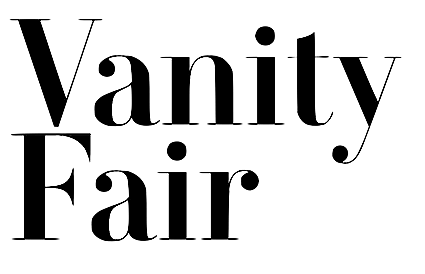 Foundry, est. 2009 or 2010 by Paul Barnes (London and New York) and Christian Schwartz (New York). Their own blurb: Commercial Type is a joint venture between Paul Barnes and Christian Schwartz, who have collaborated since 2004 on various typeface projects, most notably the award winning Guardian Egyptian. The company publishes retail fonts developed by Schwartz and Barnes, their staff, and outside collaborators, and also represents the two when they work together on typedesign projects. Following the redesign of The Guardian, as part of the team headed by Mark Porter, Schwartz and Barnes were awarded the Black Pencil from the D&AD. The team were also nominated for the Design Museum's Designer of the Year prize. In September 2006, Barnes and Schwartz were named two of the 40 most influential designers under 40 in Wallpaper. Klingspor link.
Foundry, est. 2009 or 2010 by Paul Barnes (London and New York) and Christian Schwartz (New York). Their own blurb: Commercial Type is a joint venture between Paul Barnes and Christian Schwartz, who have collaborated since 2004 on various typeface projects, most notably the award winning Guardian Egyptian. The company publishes retail fonts developed by Schwartz and Barnes, their staff, and outside collaborators, and also represents the two when they work together on typedesign projects. Following the redesign of The Guardian, as part of the team headed by Mark Porter, Schwartz and Barnes were awarded the Black Pencil from the D&AD. The team were also nominated for the Design Museum's Designer of the Year prize. In September 2006, Barnes and Schwartz were named two of the 40 most influential designers under 40 in Wallpaper. Klingspor link. In house type designers in 2010: Paul Barnes, Christian Schwartz, Berton Haasebe, and Abi Huynh. Typefaces sold by them: - Austin (+Cyrillic): Designed for British style magazine Harper's&Queen, Austin is a loose revival of the typefaces of Richard Austin of the late 18th century for the publisher John Bell. Working as a trade engraver Austin cut the first British modern and later the iconoclastic Scotch Roman. Narrow without being overtly condensed, Austin is a modern with the styling and sheen of New York in the 1970s. Designed by Paul Barnes and Ilya Ruderman from 2007 until 2009. Has a Cyrillic.
- Giorgio (+Sans): Giorgio and its matching sans were designed for Chris Martinez at T, the New York Times Style Magazine, bringing runway proportions to the page in contrasting ways. Designed by Christian Schwartz, 2008-2009.
- Graphik: The dominant trend of the mid twentieth century simple sans serifs still reverberates in visual culture. Graphik proves that it is still possible to create something refreshing inspired by this era. Taking cues from the less-known anonymous grotesques and geometric sans serifs, Graphik is perfectly suited for graphic and publication design. Originally designed for the Schwartz's own corporate identity, it was later finished for Condé Nast Portfolio and then expanded for Wallpaper and later T, the New York Times Style Magazine. Designed by Christian Schwartz in 2009.
- Guardian (Egyptian Headline, Sans Headline, Egyptian Text, Agate Sans): What happens when you try to make a new sans serif by chopping the slabs off of an Egyptian? That was the original inspiration behind this modern classic designed for Mark Porter and the Guardian newspaper. Comprised of several interrelated families: Sans and Egyptian for headlines; a Text Egyptian; and an Agate Sans, every possible typographic need of a daily paper is fulfilled. Serious news headlines, expressive features, readable text, tiny financial listings, info graphics, and everything in between can be capably handled with ease. Designed by Paul Barnes and Christian Schwartz, 2009.
- Lyon Text: Begun as Kai Bernau's degree project on the Type + Media course at the Royal Academy of Art (KABK) in The Hague, Bernau extensively revised the typeface in time for its debut in the New York Times Magazine in 2009. Like many of the great seriffed typefaces it draws intelligently from the work of Robert Granjon, the master of the Renaissance, while having a contemporary feel. Its elegant looks, are matched with an intelligent, anonymous nature, making it excellent for magazines, book and newspapers. Designed by Kai Bernau, 2009.
- Neue Haas Grotesk (2011).
- Stag (+Sans, Dot, Stencil, Sans Round): Stag started as a small family of slab serifs commissioned for headlines by the US edition of Esquire magazine and eventually grew into a sprawling multi-part family including a flexible sans companion and two additional display variants that are probably best described as special effects. Designed by Christian Schwartz, Berton Hasebe and Ross Milne, 2008, 2009.
- Atlas Grotesk (2012, by Kai Bernau, Susan Carvalho and Christian Schwartz, Commercial Type). A revival of Dick Dooijes's Mercator. Extended to Atlas Typewriter in 2012.
- VF Didot (2013) is a custom Didot by Paul Barnes and Christian Schwartz for Vanity Fair, as requested by its design director, Chris Dixon. Based on work of Molé Le Jeune, a punchcutter used by the Didot family in the early part of the 19th century, VFDidot has 7 optical sizes and up to 5 weights in each size, plus small caps and even a stencil style.
- Zizou or Clouseau (2011). A reworking (from memory) of Antique Olive (1960, Roger Excoffon). This was published at the end of 2013 as Duplicate (2013, with Miguel Reyes). In three styles, Slab, Sans and Ionic. Commercial Type writes: Christian Schwartz wanted to see what the result would be if he tried to draw Antique Olive from memory. He was curious whether this could be a route to something that felt contemporary and original, or if the result would be a pale imitation of the original. Most of all, he wanted to see what he would remember correctly and what he would get wrong, and what relationship this would create between the inspiration and the result. Though it shares some structural similarities with Antique Olive and a handful of details, like the shape of the lowercase a, Duplicate Sans is not a revival, but rather a thoroughly contemporary homage to Excoffon. Duplicate Sans was finally finished at the request of Florian Bachleda for his 2011 redesign of Fast Company. Bachleda wanted a slab companion for the sans, so Schwartz decided to take the most direct route: he simply added slabs to the sans in a straightforward manner, doing as little as he could to alter the proportions, contrast, and stylistic details in the process. The bracketed serifs and ball terminals that define the Clarendon genre (also known as Ionic) first emerged in Britain in the middle of the 19th century. While combining these structures with a contemporary interpretation of a mid-20th century French sans serif seems counterintutive, the final result feels suprisingly natural. The romans are a collaboration between Christian Schwartz and Miguel Reyes, but the italic is fully Reyes's creation, departing from the sloped romans seen in Duplicate Sans and Slab with a true cursive. Mark Porter and Simon Esterson were the first to use the family, in their 2013 redesign of the Neue Züricher Zeitung am Sonntag. Beecause the Ionic genre has ll ong been a common choice for text in newspapers, Duplicate Ionic is a natural choice for long texts.
- Kommissar (2014, Schwartzco). A condensed sans family with little contrast that was inspired by 1920s type styles like Vertikal and Paul Renner's Plak.
- Produkt (2014, Christian Schwartz and Berton Hasebe). This is Graphik with slabs added on.
- Sanomat (2013-2017). This custom typeface by Paul Barnes was originally commissioned by Sami Valtere in 2013 for his acclaimed redesign of Helsinging Sanomat in Finland. Sanomat is now available for retail via Commercial Type in two subfamilies, Sanomat (serif) and Sanomat Sans.
- Schnyder (Commercial Type) was designed by Berton Hasebe and Christian Schwartz for the 2013 redesign of T, the New York Times Style Magazine by creative director Patrick Li and his team. Schnyder has the high contrast typical of a fashion typeface and has a large number of alternates. The stem thicknesses in each weight are identical across the widths, an unusual feature that allows the widths to be mixed freely in headlines, even within single words. It features three weights, four widths, and four optical sizes. Production assistance by Hrvoje Zivcic and Miguel Reyes.
- The Commercial Classics series from 2019:
- Brunel (Paul Barnes): Elegant and hardworking, Brunel is the Anglo variant of the high contrast Modern style. Based on designs that were cut first for Elizabeth Caslon at the end of the eighteenth century, we have expanded them to encompass a range of weights and sizes: from a roman to an emphatic black and from a text to a hairline for the largest sizes.
- Caslon Doric (Paul Barnes): The sans was the natural progression of nineteenth-century innovations. From the pioneering faces of Caslon and Figgins in the second and third decades, they quickly became a phenomenon across Europe and the United States, but it was only in the second half of the century that the British foundries would embrace lowercase forms and make faces that could be used in multiple sizes. Caslon Doric is the synthesis of these styles, from narrow to wide and from thin to heavy.
- Caslon Italian (Paul Barnes, Tim Ripper, Christian Schwartz): Perhaps the strangest and ultimate example of experimentation in letterforms during the early nineteenth century was the Italian. Introduced by Caslon in 1821, it reverses the fat face stress---thins becomes thicks and thicks become thins---turning typographic norms on their heads. This new version extends the forms into new territory: a lowercase, an italic, and another one of the more unusual ideas of the time, the reverse italic or Contra.
- Isambard (Paul Barnes and Miguel Reyes): The boldest moderns were given the name fat face and they pushed the serif letterform to its extremes. With exaggerated features of high contrast and inflated ball terminals, the fat face was the most radical example of putting as much ink on a page to make the greatest impact at the time. These over-the-top forms make the style not only emphatic, but also joyful with bulbous swash capitals and a wonderfully characterful italic.
- Caslon Antique (Paul Barnes and Tim Ripper): The slab serif or Egyptian form is one of the best letters for adding a drop shadow to. Its robust nature and heaviness support the additional weight of a prominent shading. First appearing in the 1820s, the style was pioneered and almost exclusively shown by the Caslon foundry, who introduced a wide range of sizes and, eventually, a lowercase.
- Caslon Sans Serif Shaded (Jesse Vega and Paul Barnes): The addition of graphic effects to typefaces was one of the most popular fashions of the nineteenth century, with the most common being the shaded form. Fashionable throughout this period, they largely disappeared from the typographic landscape, but their simple graphic qualities offer much potential today.
- Christian Schwartz collaborated with Richard Turley, the art director behind the famous redesign of Bloomberg Businessweek (for which Druk was initially commissioned), in 2019 on a custom typeface for the windows of Barneys, a near-century-old New York department store, which recently filed for bankruptcy. AIGA link.
- In 2019, Christian Schwartz, Paul Barnes and Mark Porter were asked by the Nature journal to develop a new typeface, Harding.
The crew in 2012 includes Paul Barnes (Principal), Christian Schwartz (Principal), Vincent Chan (type designer), Berton Hasebe (type designer, who worked at Commercial type from 2008 until 2013) and Mark Record (font technician). Miguel Reyes joined in 2013. Greg Gazdowicz joined in 2014. Hrvoje Zivcic helps with font production. View Christian Schwartz's typefaces. [Google]
[MyFonts]
[More] ⦿
|
Connary Fagen
[Connary Fagen Fonts]

|
 [MyFonts]
[More] ⦿
[MyFonts]
[More] ⦿
|
Connary Fagen Fonts
[Connary Fagen]

|
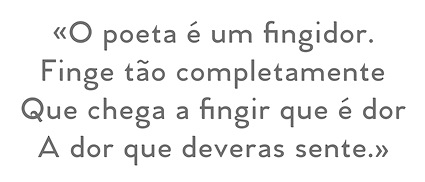 Art director, designer and consultant who grew up in Colorado and is now based in Heber City (was: Park City and before that Salt Lake City), UT. In 2021, he joined The Type Founders. He created the commercial Latin / Cyrillic geometric sans font family Venti CF in 2014---Venti can be purchased here. His second typeface is the geometric / techno typeface Filter CF (2014).
Art director, designer and consultant who grew up in Colorado and is now based in Heber City (was: Park City and before that Salt Lake City), UT. In 2021, he joined The Type Founders. He created the commercial Latin / Cyrillic geometric sans font family Venti CF in 2014---Venti can be purchased here. His second typeface is the geometric / techno typeface Filter CF (2014). In 2015, he created Waverly (avant garde caps), Articulat CF (an 18-style Swiss sans typeface), Argent CF (a 13-style display serif family), Ironfield (bold husky brutalist display font), Visby CF (geometric sans), Visby Round CF, Quincy CF (a warm serif text face), and Manifold CF (a squarish cold utilitarian sans with 16 styles; extended to the corporate typeface Manifold DSA in 2017). See also Manifold Extended CF (2022; 16 styles). Typefaces from 2016: Vanguard CF (a strong ultra-compressed sans in 16 styles), Addington CF (a 14-style text typeface family), Cartograph CF (monospaced sans), Greycliff CF (sans), Turismo CF (a wide rounfded open sans inspired by midcentury motorsports, technology, and business). Typefaces from 2017: Gryffith (angular), Visby Slab CF, Filter v2 CF (hipster style), Couplet CF (humanist sans), Integral CF (an all caps titling font). Typefaces from 2018: Argent Pixel (free), Artifex CF (a 9-weight serif family), Artifex Hand CF (a flared version of Artifex), Criteria CF (a geometric sans with horizontal and vertical terminal endings), Roxborough CF (a sharp-edged roman typeface). Typefaces from 2019: Wayfinder CF (a sharp-edged display typeface). Gumroad site, where one can download free trial versions of many of his fonts, and purchase licenses for the other ones. Typefaces from 2020: Hexaframe CF, Olivette CF (a sharp-edged angular and contrast-rich typeface family), Ellograph CF (a rounded monoline sans in 16 styles). Typefaces from 2021: Mielle CF (a monolinear script), Greycliff Thai CF, Greycliff Arabic CF, Greycliff Hebrew CF, Quiverleaf CF (ten flared / lapidary styles). Typefaces from 2022: Quiverleaf Arabic CF. Interview by MyFonts in 2021. [Google]
[MyFonts]
[More] ⦿
|
Constellation
[Chester Jenkins]
|
 Constellation is a creator and publisher of contemporary typefaces and is run by its two partners, Chester Jenkins (based in New York, born in Montreal) and Tracy Jenkins. They also feature typefaces by Magnus Rakeng, Patrick Giasson, Kris Sowersby, Rick Valicenti, and Jeremy Mickel. Constellation contains the main elements of the previous Village and Thirstype foundries. Typefaces including bespoke typefaces by Chester Jenkins:
Constellation is a creator and publisher of contemporary typefaces and is run by its two partners, Chester Jenkins (based in New York, born in Montreal) and Tracy Jenkins. They also feature typefaces by Magnus Rakeng, Patrick Giasson, Kris Sowersby, Rick Valicenti, and Jeremy Mickel. Constellation contains the main elements of the previous Village and Thirstype foundries. Typefaces including bespoke typefaces by Chester Jenkins: - Aero (2011, Chester Jenkins and Jeremy Mickel). Based on Roger Excoffon's Antique Olive.
- Apex Sans (2003), Apex Serif (2003), Apex New (2005) and Apex Rounded (2010). All by Chester Jenkins. Apex Serif and Apex Sans were co-designed with Rick Valicenti.
- Apollo. A bespoke multiline typeface for the Apollo Theater.
- Arbor (2010). Arbor was originally commissioned by the New York Times magazine for use in their 2008 Hollywood special issue. The source was Rob Roy Kelly's book of woodtype samples, and the D and H from Caslon's Italian of the 1820s. An original representative of this Western genre.
- Barclays Center (2012). A bespoke athletic lettering and stencil family.
- Brooklyn (2013, a brutalist typeface) and Brooklyn Stencil (2013, an octagonal stencil). The original was commissioned in 2007 by Michael Bierut for a sports complex.
- The Cooper Hewitt Smithsonian Design Museum in New York City is giving away for free its bespoke house typeface, a sans designed in 2014 by Chester Jenkins. Even the original UFO files are made available.
- Cosmica (2018).
- Endzone Slab (+Condensed) and Endzone Sans (2017) are bespoke typeface done for the NFL.
- Galaxie Cassiopeia (2006). A round connected upright script. By Chester Jenkins.
- Galaxie Copernicus (2009). An interpretation of Christophe Plantin's Plantin (cut by Robert Granjon) and Frank Hinman Pierpont's Monotype revival of Plantin. By Chester Jenkins and Kris Sowersby.
- Indestructible Language (2006, with Mary Ellen Carroll): The Precipice Alliance, a non-profit corporation collaborating with artists to direct public attention to global warming, launched with this inaugural artwork by the contemporary artist Mary Ellen Carroll. This lettering was a collaboration with Ms. Carroll to design letterforms that could be rendered 8-feet tall in neon tubing. Each neon letter was to be placed, in a 900-foot-long installation, in the window bays of all five former American Can factory buildings in Jersey City, New Jersey to be exhibited from November 2006 to April 2007. The 8-foot high, carbon neutral neon letters were clearly visible (and legible) to drivers on both the Pulaski Skyway and the New Jersey Turnpike, and by planes heading to and from Newark International Airport.
- Maharam (ca. 2017). A bespoke Futura revival typeface for Maharam.
- A bespoke sans titling typeface for the NYC Opera.
- Galaxie Polaris, Galaxie Polaris Condensed (2004-2013). Two sans families by Chester Jenkins.
- Oz (1999). A round typeface family by Patrick Giasson. Designed as an homage to Oswald Cooper (whose nickname was Oz), whose Oswald Cooper inspired the fat shapes.
- Pink Sans, Pink Slab and Pink Outline are bespoke typefaces for Victoria's Secret Pink campaign.
- Radio (1998). A retro script family by Magnus Rakeng.
- Robledo Stencil. For Slanted Magazine.
- Sharpie Script. a bespoke script typeface for the identiy of Michael Kors.
- A revival of Frederic Goudy's lost Sherman type for Syracuse University with Michael Bierut and his team at Pentagram.
- For Snickers, Chester designer Chiat Day.
[Google]
[More] ⦿
|
Contrast Type Foundry (or: CoFo)
[Maria Doreuli]
|
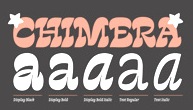 Contrast Type Foundry (London) was a joint venture of Maria Doreuli, Krista Radoeva and Lisa Rasskazova (Moscow). In 2019, now based in Moscow, the team members are Maria Doreuli, Lisa Rasskazova, Anna Khorash and Nikita Sapozhkov. They do custom and retail type design. Their client list includes Tretyakov Gallery, Strelka Institute, Théâtre de Belleville, The Art Newspaper, Mail.ru, Fader Magazine, Tsaritsino Museum, Weber Grills, Naked Heart Foundation, LaModa, Kaspersky, Rambler&Co, Gosha Rubchinsky, White Russian and Tsentsiper.
Contrast Type Foundry (London) was a joint venture of Maria Doreuli, Krista Radoeva and Lisa Rasskazova (Moscow). In 2019, now based in Moscow, the team members are Maria Doreuli, Lisa Rasskazova, Anna Khorash and Nikita Sapozhkov. They do custom and retail type design. Their client list includes Tretyakov Gallery, Strelka Institute, Théâtre de Belleville, The Art Newspaper, Mail.ru, Fader Magazine, Tsaritsino Museum, Weber Grills, Naked Heart Foundation, LaModa, Kaspersky, Rambler&Co, Gosha Rubchinsky, White Russian and Tsentsiper. Maria Doreuli (Moscow) earned her Masters degree in graphic design from Moscow State University of Printing. During that time she attended Alexander Tarbeev's type design workshop. During 2009-2012 she worked on RIA Novosti's corporate identity projects. Winner at the Letter 2 competition in 2011 with the serif text family William (2011), which was her graduation project. This contemporary interpretation of Caslon also won First Prize in the Cyrillic typeface category at Granshan 2011. William Headline won at New Cyrillic 2012. Finally, in 2016, William was published by Typotheque. It is available in three optical sizes, a Text version with a large x-height for smaller text from 7 to 12pt, a Subhead version for use at 14 to 30 points, and Display version for text larger than 36 points. In 2011 she was named a designer of the year by the Russian newspaper Akzia. In 2012, Maria started type design studies at the KABK in Den Haag. Her graduation typeface there was the reverse contrast display typeface Chimera (2013). Chimera won an award at TDC 2014. It won the Silver Prize in the Latin category at the Morisawa Type Design Competition 2014. In 2014, Maria Doreuli, Krista Radoeva, and Elizaveta Rasskazova co-designed Sputnik Display for Sputnik News. This organic sans typeface family covers Latin, and various brands of Cyrillic, including the ones used in Uzbekistan, Tajikistan, Abkhazia and Mongolia. It won a Special Mention at the 2015 Granshan competition. Speaker at ATypI 2013 in Amsterdam: The contrast between Russian and Bulgarian Cyrillic. Fit (2017, by David Jonathan Ross and Maria Doreuli) is a tall black display family that runs from ultra-compressed to very wide. It screams Use me for the Oscars! Fit was first developed as a variable font. It won an award at Granshan 2017. CoFo Sans was designed by Maria Doreuli between 2016 and 2018. Lisa Rasskazova designed CoFo Robert between 2012 and 2018. Named after Robert Beasley, it is inspired by Clarendon. In 2019, Maria Doreuli and Anna Khorash released the variable font CoFo Peshka at Future Fonts. Inspired by the industrial and military lettering in the Soviet era, it is named after the Pe-2 aircraft also called the Peshka. CoFo Peshka features weight and width axes. CoFo Plusha (2020) is a creamy super-fat typeface for Latin and Cyrillic. In 2021, she published CoFo Kak, a Latin / Cyrillic sans family with a name that raises eyebrows in Belgium, South Africa and the Netherlands. Future Fonts link. [Google]
[More] ⦿
|
Cooper Hewitt
[Chester Jenkins]
|
The Cooper Hewitt Smithsonian Design Museum in New York City is giving away for free its bespoke house typeface, a sans designed in 2014 by Chester Jenkins, the founder of the Village type foundry. Even the original UFO files are made available. They write: Cooper Hewitt is a contemporary sans serif, with characters composed of modified-geometric curves and arches. Initially commissioned by Pentagram to evolve his [Galaxy] Polaris Condensed typeface, Chester Jenkins created a new digital form to support the newly transformed museum. The museum's director, Caroline Baumann, says distributing the typeface for free was a way to demonstrate the Cooper Hewitt's commitment to its mission. Quoting her: We're all about giving the public access to great design---to our collection online, to our typeface, to our programs---and this was a natural step for us. Open Font Library link. Cristiano Sobral's Tanohe Sans (2020) has re-worked style numbers, a shorter J, and a true italic lower case a. Fontsquirrel link. [Google]
[More] ⦿
|
Coppers & Brasses
[Alexandre Saumier Demers]
|
 Quebec-based type type foundry Coppers & Brasses was set up in 2011 by Alexandre Saumier Demers and Étienne Aubert Bonn in the plateau area of Montreal. Both graduated from the graphic and type design program at UQAM in Montreal and went on do the Type and Media program at KABK in The Hague, The Netherlands.
Quebec-based type type foundry Coppers & Brasses was set up in 2011 by Alexandre Saumier Demers and Étienne Aubert Bonn in the plateau area of Montreal. Both graduated from the graphic and type design program at UQAM in Montreal and went on do the Type and Media program at KABK in The Hague, The Netherlands. Creators of these typefaces in 2012: Martha (monospaced slabby grotesque done by both founders), Sardine (fat signage typeface by Bonn), Freitt (blackletter typeface by Bonn). Nicole (2012) is an elegant basic sans typeface by Olivier Mercier-Chan Kane. In 2013, Etienne graduated from the Type & Media program at KABK in Den Haag. In 2014, Alexandre in turn graduated from the Type & Media program at KABK. For his graduation, Alexandre developed the didone typeface family Lewis. He writes: Lewis is a typeface designed for mathematical typesetting, specifically for the TeX typesetting system. It consists of 3 text styles (Roman, Bold, Italic) and 3 math styles (Math Italic, Greek, Blackboard) for use as variables. The text Italic relates to the Roman while the Math Italic stand out with its cursive construction. Likewise, the Greek differentiate easily from Latin characters. The Blackboard inlines are adapted for text sizes with their wide and open cut. Lewis features many size variants and extending shapes, ideal in displayed equations. The list of their retail and custom fonts: - Guillon (2016). Manufactured for Studio Feed.
- GSM Grotesque (2016). A custom typeface by Coppers and Brasses and Studio Feed, for GSM Project.
- Caserne (2015). A custom stencil typeface designed with Samuel Larocque for the Montreal-based studio Caserne.
- CCM Grotesk (2015, Latin and Cyrillic). A custom typeface for Canadian sporting goods brand CCM, with a textured version. The Cyrillic was overseen by Russian type designer Maria Doreuli.
- VLNL Wurst (2015, VetteLetters). This wurst-themed typefaces comes in three styles, Brat, Blut and Bier Wurst. The interesting aspect of this font is that Demers developed a special Wurst Schreiber software for drawing segments as sausages in RoboFont.
- Double (2015, Alexandre Saumier Demers and Étienne Aubert Bonn). A retail typeface family from condensed to wide with wedge serifs, a copperplate feel, and slight flaring. Ideal for display work.
- Canal (2015, Étienne Aubert Bonn). A fantastic retail sans typeface family: Canal is a typeface family inspired by the blue collar, hard working people that were the late 19th and early 20th centuries labor force of the new continent. It is a sturdy workhorse with a wink of humanism.
- Martha (2014, Alexandre Saumier Demers and Étienne Aubert Bonn). A retail typeface family with curvy typewriter influences, some monospaced styles and a grotesque to boot.
- Klaus (2014, Étienne Aubert Bonn). Developed for personal web and paper work.
- Théorie (2014, Alexandre Saumier Demers and Étienne Aubert Bonn). A techno stencil typeface commissioned by UQAM's Bureau de Design for the Bâtisseurs of the science faculty award.
- Lewis (2014, Alexandre Saumier Demers). A font system for typesetting mathematics in TeX, developed at KABK.
- Alphonse (2014, Alexandre Saumier Demers). An elegant garalde custom text typeface.
- Nurraq (2013, Étienne Aubert Bonn). Developed as a school project at KABK, Nurraq is a multi-script typeface system that matches a Latin serif text typeface with a Canadian aboriginal syllabics character set for the Inuktitut language.
- Compass (2013, Étienne Aubert Bonn). A revival based on the early drawings of Monotype Plantin series 110 by Frank Hinman Pierpont and Fritz Stelzer.
- MLS Soccer (2012). A handcrafted custom typeface by Alexandre Saumier Demers and Étienne Aubert Bonn, commissioned by Sid Lee.
- Radio Canada (2017). A custom corporate humanist sans typeface for the French TV network in Quebec, co-designed by Charls Daoud and Alexandre Saumier-Demers of Coppers and Brasses. Google Fonts link. Github link.
- Mortier (2021): A typeface inspired by old hand-painted advertisements on brick walls---many of which still exist as ghost signs in cities across the world. This unique style of lettering was influenced by precomputer techniques wherein sign painters would use the brick wall on which they were painting as a reference for laying out their text.
Alexandre spends most of his time since 2016 working on variable font projects for The Type Network (ex-Font Font Bureau). Home page of Alexandre Saumier Demers. Behance link for Coppers and Brasses. [Google]
[More] ⦿
|
Cornel Windlin
[Lineto]

|
[MyFonts]
[More] ⦿
|
Craig Ward
|
Craig Ward is a British graphic designer and art director wjho moved to New York City in 2009, where he set up Words and Pictures in 2011. In 2015, he created the experimental typeface Fe203, and wrote: To form the glyphs, a tiny amount of ferrofluid was placed between two glass plates and subjected to a combination of spinning vertical and horizontal magnetic fields. The result is an array of complex hieroglyphics and shapes - each one as unrepeatable as a snowflake - that simultaneously call to mind ancient indigenous markings or symbols from science fiction. Designer of nice typographic examples, such as his Hairy Futura (2008). He designed the fat didone display typeface Lovechild (2009) and the spurred typeface Killer (2013). Other typefaces: Go Vote (2012, a brush poster and modular typeface for the American elections), Dark White (didone), Epitaph (alchemic), NM Serif (2015, for the branding of Dior's new perfume, Sauvage), England World Cup Kit (2018). Home page. [Google]
[More] ⦿
|
Creative Head Design Studio
|
 Studio in Moscow. In 2015, it created the fat rounded display sans typeface Smartfont for Latin and Cyrillic. It has Inline and Outline versions. [Google]
[More] ⦿
Studio in Moscow. In 2015, it created the fat rounded display sans typeface Smartfont for Latin and Cyrillic. It has Inline and Outline versions. [Google]
[More] ⦿
|
Credit Suisse Type
|
The house font of Credit Suisse, based on Basic Commercial. [Google]
[More] ⦿
|
Cristóbal Henestrosa
[Estudio CH]

|
 [MyFonts]
[More] ⦿
[MyFonts]
[More] ⦿
|
Cruz Fonts
[Ray Cruz]

|
 Cruz Fonts was established in Oakland, NJ, in 2004 by Ray Cruz (Ramon Cruz), who was a designer of custom lettering and custom typefaces to major ad agencies, publishers and corporate clients in the New York City area for almost 30 years. Ray Cruz (b. Ponce, Puerto Rico, 1943) died at his home in Lewes, Delaware, in 2025. His obituary read: Ray Cruz, beloved husband, father, grandfather, celebrated graphic artist, and military veteran, died peacefully at his home in Lewes, Delaware, on March 26, 2025. He was 81. Born in Ponce, Puerto Rico, on August 31, 1943, Ray was a lifelong student and teacher of design. A graduate of New York City's High School of Art & Design, he honed his craft in several of the city's top custom lettering studios before rising to prominence in the graphic arts world. His career spanned more than five decades, during which he left a lasting mark on advertising, publishing, package design, and corporate identity. In the 1980s, Ray was commissioned to create corporate typefaces and logos for the United States Postal Service—iconic designs still seen on mail trucks today. After co-founding and leading Cruz & Slowik Associates, Ray served as Type Director at the renowned Young & Rubicam advertising agency, his sharp typographic eye elevated countless national campaigns. His work earned him more than 30 awards from the Type Directors Club, AIGA, ADC, and other respected art associations. Ray was also a dedicated educator, serving as an adjunct professor at Parsons School of Design, FIT, Kean University's Robert Busch School of Design, County College of Morris, and Marywood College. He believed in a "Learn by Doing" approach, favoring hands-on exploration. His students remember him not only for his technical knowledge but for his passion, clarity, and mentorship. He was a member of several professional organizations including the Type Directors Club, Society of Typographic Aficionados (SoTA) and the Association Typographique Internationale (ATypI). Ray lived for two things: graphic arts and his family. He was also an active and energetic man who loved the gym, tennis, skiing, boating, fishing, music, and working with wood---pursuits that reflected his creativity, craftsmanship, and love for the outdoors. He is survived by his wife, Janet; his sons David and wife Jamie Lynn, Jamie and wife Hermilyn; and their sons, Daniel and wife Melany and Matthew and wife Marilyn. He is also survived by his grandchildren Avery, Hyland, Ardyn, Talyn, and Cornelia. He is reunited with two grandchildren, Reign and Parker, and his mother, Carmen, in peace.
Cruz Fonts was established in Oakland, NJ, in 2004 by Ray Cruz (Ramon Cruz), who was a designer of custom lettering and custom typefaces to major ad agencies, publishers and corporate clients in the New York City area for almost 30 years. Ray Cruz (b. Ponce, Puerto Rico, 1943) died at his home in Lewes, Delaware, in 2025. His obituary read: Ray Cruz, beloved husband, father, grandfather, celebrated graphic artist, and military veteran, died peacefully at his home in Lewes, Delaware, on March 26, 2025. He was 81. Born in Ponce, Puerto Rico, on August 31, 1943, Ray was a lifelong student and teacher of design. A graduate of New York City's High School of Art & Design, he honed his craft in several of the city's top custom lettering studios before rising to prominence in the graphic arts world. His career spanned more than five decades, during which he left a lasting mark on advertising, publishing, package design, and corporate identity. In the 1980s, Ray was commissioned to create corporate typefaces and logos for the United States Postal Service—iconic designs still seen on mail trucks today. After co-founding and leading Cruz & Slowik Associates, Ray served as Type Director at the renowned Young & Rubicam advertising agency, his sharp typographic eye elevated countless national campaigns. His work earned him more than 30 awards from the Type Directors Club, AIGA, ADC, and other respected art associations. Ray was also a dedicated educator, serving as an adjunct professor at Parsons School of Design, FIT, Kean University's Robert Busch School of Design, County College of Morris, and Marywood College. He believed in a "Learn by Doing" approach, favoring hands-on exploration. His students remember him not only for his technical knowledge but for his passion, clarity, and mentorship. He was a member of several professional organizations including the Type Directors Club, Society of Typographic Aficionados (SoTA) and the Association Typographique Internationale (ATypI). Ray lived for two things: graphic arts and his family. He was also an active and energetic man who loved the gym, tennis, skiing, boating, fishing, music, and working with wood---pursuits that reflected his creativity, craftsmanship, and love for the outdoors. He is survived by his wife, Janet; his sons David and wife Jamie Lynn, Jamie and wife Hermilyn; and their sons, Daniel and wife Melany and Matthew and wife Marilyn. He is also survived by his grandchildren Avery, Hyland, Ardyn, Talyn, and Cornelia. He is reunited with two grandchildren, Reign and Parker, and his mother, Carmen, in peace. Cruz created many display typefaces for Agfa/Monotype, Bitstream, Phil's Fonts and Garage Fonts. Presently Ray Cruz is working as Type Director at Y&R NY, and is an adjunct professor at FIT and Kean University teaching type design. Bio at Garagefonts. His oeuvre: - Garagefonts: Cruz Grafica (1999), Cruz Grafica Inline, Troubadour.
- Agfa/Monotype: Bandolera, Bandolero, Cruz Handy (2001) and Cruz Swinger. Swinger, in fact, was produced in film type for the John Schaedler Studio in New York in the 1970s. Also, Elegante, Romantica (didone).
- Bitstream: CruzCanteraBT (2003, a stylish informal sans family), Homeland BT (2004, a text typeface with a large x-height), Vera Cruz (2003, a playful display serif), and Fat Albert (2004).
- Cruz Fonts: Satchmo (2016), Cruz Handy (2004), Troubadour (2004), Cruz Stencil (2012), Cantina, Bandolero, Cruz Swinger (fat semi-psychedelic signage face), Bandolera, Romantica Pro (2013, a condensed didone), Dot Script (2013, dot matrix face), Cruz Script Pro (2013: original from 2005), Bouncing Checks Layers (2014, octagonal and layered; includes 40 dingbats by Seymour Chwast).
- P22: P22 Cruz Ballpoint, P22 Cruz Calligraphic, P22 Cruz Brush.
- BarracudaPlain.
- Custom typefaces for Camel Cigarettes, Estee Lauder (1994), New York Life Insurance, The NFL Detroit Lions, Pella Windows, USPS, and Xerox.
Bio at Garagefonts. P22 link. FontShop link. PDF catalog. View Ray Cruz's typefaces. Klingspor link. [Google]
[MyFonts]
[More] ⦿
|
Crystian Cruz
[Promodesign]
|
 [More] ⦿
[More] ⦿
|
CTV Sans
|
 The Canadian television station CTV uses Font Bureau's CTV Sans family and Icomoon's Webiconfont v7 for its online presence. Links to their web site:
The Canadian television station CTV uses Font Bureau's CTV Sans family and Icomoon's Webiconfont v7 for its online presence. Links to their web site: [Google]
[More] ⦿
|
CyberGraphics
[Jan Erasmus]

|
 Foundry, est. ca. 2009 in Johannesburg, South Africa, by Jan Erasmus. Jan currently resides in Johannesburg and taught font design for 10 years at University of Johannesburg and Stellenbosch University. His professional activities include typography, websites, brochure design, packaging, branding and type design. He also designed custom fonts for corporations of which Menyaka (for the FIFA world cup soccer 2010) and Nando's fast foods (1999; done together with Cross Colours) are the most noted.
Foundry, est. ca. 2009 in Johannesburg, South Africa, by Jan Erasmus. Jan currently resides in Johannesburg and taught font design for 10 years at University of Johannesburg and Stellenbosch University. His professional activities include typography, websites, brochure design, packaging, branding and type design. He also designed custom fonts for corporations of which Menyaka (for the FIFA world cup soccer 2010) and Nando's fast foods (1999; done together with Cross Colours) are the most noted. Jan's debut display font family was Thornface (1997, a beautiful medieval font). He then released Transition, Lalibela (2009, didone), Pixeluxe and Azania (Tuscan, Western). Other fonts include Sade (a relative of Garamond), Export Unicase (1999, stencil), Mzansi (2007, an African look font), Shaftciti (2008, military stencil), Pixeluxe (2010), Giramundo (2010), Transition (2006), Ethereum (2015, a Cyrillic emulation typeface). [Google]
[MyFonts]
[More] ⦿
|
Cybertype (was: Western Commercial Arts Company (WCA Co))
[Kevin Simpson]

|
 Cybertype is Kevin Simpson's web presence. He used to run a site called the Western Commercial Arts Company (WCA Co). Kevin is a freelance designer in Wokingham, East Berkshire, U.K. He used to do custom type design. His fonts include Dead Oak, Emphive, Stainless Steel, Faux, Fiftyfour, Jonathan, Optika, MrJones, Remington, Shel, Stewart, diGriz, Shel, Optika (hoowee!), Obscura (great target vision font), Swiss92, Chatham, Eadwy, Jonathan, Hoopy Frood.
Cybertype is Kevin Simpson's web presence. He used to run a site called the Western Commercial Arts Company (WCA Co). Kevin is a freelance designer in Wokingham, East Berkshire, U.K. He used to do custom type design. His fonts include Dead Oak, Emphive, Stainless Steel, Faux, Fiftyfour, Jonathan, Optika, MrJones, Remington, Shel, Stewart, diGriz, Shel, Optika (hoowee!), Obscura (great target vision font), Swiss92, Chatham, Eadwy, Jonathan, Hoopy Frood. Agfa-Monotype, he published Aitos (2000), a beautiful fat lettering display font. Portobello is a connected children's educational font. Kevin offers a host of type services. In 2014, he created the free bespoke typeface Red Kite for Kinetik Design. Home page. FontShop link. Behance link. Kinetik Design link. [Google]
[MyFonts]
[More] ⦿
|
Daan Spangenberg
|
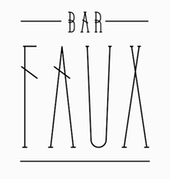 Daan Spangenberg (Den Haag, the Netherlands) created the identity, the (hipster) typeface and the web site for Bar Faux Amsterdam, to be opened in 2015. The work was carried out in cooperation with Borre Akkersdijk. As art director, he created many other identities as well. [Google]
[More] ⦿
Daan Spangenberg (Den Haag, the Netherlands) created the identity, the (hipster) typeface and the web site for Bar Faux Amsterdam, to be opened in 2015. The work was carried out in cooperation with Borre Akkersdijk. As art director, he created many other identities as well. [Google]
[More] ⦿
|
Dafne Martinez
|
 Letterer and designer in Mexico City. In 2017, she designed the text typeface Tessitura especially for small print sizes. Co-founder of the Tipas Type type foundry in Mexico City together with Monica Munguia (who by 2020 has left the studio), and Sandra Garcia. Dafne Martinez studied graphic design at Facultad de Artes y Diseño, UNAM, and has a Masters in typography from Centro de Estudios Gestalt. She specializes in calligraphy and lettering. In 2019, Dafne Martinez, Monica Munguia, and Sandra Garcia co-designed the roundish informal children's book typeface Xantolo and the wood type / slab serif typeface Xihtli. In 2019, Dafne Martinez and Sandra Garcia designed the copperplate calligraphic typeface Especial for a common Mexican beer brand
Letterer and designer in Mexico City. In 2017, she designed the text typeface Tessitura especially for small print sizes. Co-founder of the Tipas Type type foundry in Mexico City together with Monica Munguia (who by 2020 has left the studio), and Sandra Garcia. Dafne Martinez studied graphic design at Facultad de Artes y Diseño, UNAM, and has a Masters in typography from Centro de Estudios Gestalt. She specializes in calligraphy and lettering. In 2019, Dafne Martinez, Monica Munguia, and Sandra Garcia co-designed the roundish informal children's book typeface Xantolo and the wood type / slab serif typeface Xihtli. In 2019, Dafne Martinez and Sandra Garcia designed the copperplate calligraphic typeface Especial for a common Mexican beer brand Member of the Sic Typus Creatus Est team (Dafne Martinez, Jorge George, Leonardo Delgado, Iordan Evair and Federico Biagioli) that designed Calmadita in 2020 for the Torneo tipografico competition. Calmadita is an angular slab serif meant for Ipads and Kindles. In 2021, Dafne Martinez and Sandra Garcia published Achtli (Book, Didactic), a rounded sans typeface for early readers. [Google]
[More] ⦿
|
Daimler Benz

|
 The Daimler Benz font series by Kurt Weidemann, created from 1985-1989 for Stuttgart's Daimler Chrysler company which markets Mercedes, is sold by URW++ in A (antiqua), S (sans serif) and E (Egyptian) styles: Corporate A bold, Corporate A bold italic, Corporate A demi, Corporate A demi italic, Corporate A family, Corporate A light, Corporate A light italic, Corporate A medium, Corporate A medium italic, Corporate A regular, Corporate A regular italic, Corporate ASE family, Corporate E bold, Corporate E bold italic, Corporate E demi, Corporate E demi italic, Corporate E family, Corporate E light, Corporate E light italic, Corporate E medium, Corporate E medium italic, Corporate E regular, Corporate E regular italic, Corporate S bold, Corporate S bold italic, Corporate S demi, Corporate S demi italic, Corporate S extra bold, Corporate S extra bold italic, Corporate S family, Corporate S light, Corporate S light italic, Corporate S medium, Corporate S medium italic, Corporate S regular, Corporate S regular italic, Corporate Small Caps A bold, Corporate Small Caps A demi, Corporate Small Caps A light, Corporate Small Caps A medium, Corporate Small Caps A regular, Corporate Small Caps E bold, Corporate Small Caps E demi, Corporate Small Caps E light, Corporate Small Caps E medium, Corporate Small Caps E regular, Corporate Small Caps S bold, Corporate Small Caps S demi, Corporate Small Caps S light, Corporate Small Caps S medium, Corporate Small Caps S regular.
The Daimler Benz font series by Kurt Weidemann, created from 1985-1989 for Stuttgart's Daimler Chrysler company which markets Mercedes, is sold by URW++ in A (antiqua), S (sans serif) and E (Egyptian) styles: Corporate A bold, Corporate A bold italic, Corporate A demi, Corporate A demi italic, Corporate A family, Corporate A light, Corporate A light italic, Corporate A medium, Corporate A medium italic, Corporate A regular, Corporate A regular italic, Corporate ASE family, Corporate E bold, Corporate E bold italic, Corporate E demi, Corporate E demi italic, Corporate E family, Corporate E light, Corporate E light italic, Corporate E medium, Corporate E medium italic, Corporate E regular, Corporate E regular italic, Corporate S bold, Corporate S bold italic, Corporate S demi, Corporate S demi italic, Corporate S extra bold, Corporate S extra bold italic, Corporate S family, Corporate S light, Corporate S light italic, Corporate S medium, Corporate S medium italic, Corporate S regular, Corporate S regular italic, Corporate Small Caps A bold, Corporate Small Caps A demi, Corporate Small Caps A light, Corporate Small Caps A medium, Corporate Small Caps A regular, Corporate Small Caps E bold, Corporate Small Caps E demi, Corporate Small Caps E light, Corporate Small Caps E medium, Corporate Small Caps E regular, Corporate Small Caps S bold, Corporate Small Caps S demi, Corporate Small Caps S light, Corporate Small Caps S medium, Corporate Small Caps S regular. Picture of Gottlieb Daimler and his son Paul. [Google]
[MyFonts]
[More] ⦿
|
Dalton Maag
[Bruno Maag]

|
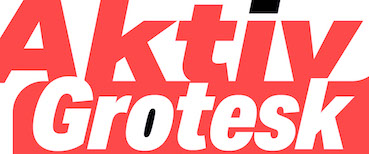 Swiss designer Bruno Maag (b. Zürich) founded Dalton Maag in 1991, and set up shop in Brixton, South London. He serves the corporate market with innovative type designs, but also has a retail font line. Ex-Monotype designer Ron Carpenter designs type for the foundry. In the past, type designers Veronika Burian worked for Dalton Maag. A graduate of the Basel School of Design, who worked at Stempel and was invitedd by Rene Kerfante to Join Monotype to start up a custom type department. After that, he set up Dalton Maag with his wife Liz Dalton. He has built the company into a 40-employee enterprise with offices in London, Boston, Brazil (where the main type designer is Fabio Luiz Haag), Vienna and Hong Kong.
Swiss designer Bruno Maag (b. Zürich) founded Dalton Maag in 1991, and set up shop in Brixton, South London. He serves the corporate market with innovative type designs, but also has a retail font line. Ex-Monotype designer Ron Carpenter designs type for the foundry. In the past, type designers Veronika Burian worked for Dalton Maag. A graduate of the Basel School of Design, who worked at Stempel and was invitedd by Rene Kerfante to Join Monotype to start up a custom type department. After that, he set up Dalton Maag with his wife Liz Dalton. He has built the company into a 40-employee enterprise with offices in London, Boston, Brazil (where the main type designer is Fabio Luiz Haag), Vienna and Hong Kong. The Dalton Maag team designed these commercial fonts: - Airbnb Cereal (2018). A sans typeface commissioned by Airbnb. Dalton Maag describes it as playful, open and simple.
- Aktiv Grotesk (2010). Published as an alternative to Helvetica, a typeface Bruno hates with a passion. It also covers Chinese, Japanese and Korean. In 2020, it became a 3-axis (weight, width, italic) variable font.
- Aller Typo.
- Almaq.
- Blenny (2014). A fat face didone by Spike Spondike.
- Bligh (2015). A three-weight sans family.
- Co (2007): a rounded monoline minimalist sans co-designed by Bruno Maag and Ron Carpenter.
- Cordale: a text family.
- Dedica (2007): a didone face.
- Effra and Effra Italic (2007-2009): sans family by Jonas Schudel and Fabio Luiz Haag. Followed in 2013 by Effra Corp.
- Elevon (2012). By Bruno Maag and Marconi Lima.
- Fargo (2004): a humanist sans in 6 weights.
- Foco. A sans family.
- Grueber (2008): a slab serif.
- InterFace (2007): an extensive sans family; one weight is free (2001). See also InterFace Corporate (2007).
- Kings Caslon (2007). By Marc Weymann and Ron Carpenter.
- Lexia (1999, Ron Carpenter and Dalton Maag): a slab serif family (Dalton Maag mentions the date as 2007). In 2019, Dalton Maag added Lexia Mono.
- Magpie (2008). A serifed family by Vincent Connare for Dalton Maag.
- Objektiv.
- Oscine (2014, by Bruno Maag, Ron Carpenter, Fernando Caro and Rafael Saraiva). A rounded organic sans typeface.
- Pan (1996). A text family at 1500 US dollars per style.
- Plume (2004): a display typeface inspired by calligraphy, co-designed with Ron Carpenter.
- Prometo. An organic stressed sans.
- Royalty (1999, +Royalty Obese, 2007): a stunning art deco display family.
- Scope One (2015). A free Google Font. It has a single light weight, whose slab serifs make it useful for headlines.
- Setimo (2015). By Fernando Caro. A distinguished sans.
- Soleto (2014, a simple sans by Bruno Mello, Fabio Haag, Fernando Caro, Rafael Saraiva and Ron Carpenter). Soleto won an award at Tipos Latinos 2014.
- Southampton.
- Sparkasse Serif (2003-2005). A custom typeface.
- Stroudley (2007): a sturdy large counter condensed sans by Bruno Maag, Ron Carpenter and Veronika Burian.
- Tephra (2008): a collaboration with Hamish Muir. This is an experimental multi-layered LED-inspired family.
- Tondo (2007, at Dalton Maag): a rounded information design sans family designed by Veronika Burian for Dalton Maag.
- Tornac (2013). A casual script.
- Ubuntu (2010): this is a team effort---a set of four styles of a free font called Ubuntu. This font supports the Indian rupee symbol. Some work for the Ubuntu Font Family was done by Rodrigo Rivas Costa in 2010. Download via Fontspace.
- Verveine (2009). A casual script by Luce Averous.
- Viato. A simple sans family co-designed by Bruno Maag and Ron Carpenter in 2007. This tapered terminal sans family includes Viato Corp (2007) and Viato Hebrew (2013).
Fonts sold at Fontworks, and through the Bitstream Type Odyssey CD (2001). At the ATypI in 2001 in Copenhagen, he stunned the audience by announcing that he would never again make fonts for the general public. From now on, he would just do custom fonts out of his office in London. And then he delighted us with the world premiere of two custom font families, one for BMW (BMWType, 2000, a softer version of Helvetica, with a more virile "a"; some fonts are called BMWHelvetica), and one for the BMW Mini in 2001 (called MINIType: this family comprises MINITypeRegular-Bold, MINITypeHeadline-Regular, MINITypeHeadline-Bold, MINITypeRegular-Regular). Other custom typefaces: Tottenham Hotspur (2006), Teletext Signature (by Basten Greenhill Andrews and Dalton Maag), Skoda (Skoda Sans CE by Dalton Maag is based on Skoda Formata by Bernd Möllenstädt and MetaDesign London), UPC Digital, BT (for British Telecommunications), Coop Switzerland (for Coop Schweiz), eircom, Lambeth Council, Tesco (2002), PPP Healthcare, ThyssenKrup (Dalton Maag sold his soul to these notorious arms dealers; TK Type is the name of the house font), Co Headline (2006), Co Text (2006, now a commercial font), Telewest Broadband, Toyota Text and Display (2008), TUIType, HPSans (for Hewlett-Packard, 1997). His custom Vodafone family (sans) (2005) is based on InterFace. In 2011, Dalton Maag created Nokia Pure for Nokia's identity and cellphones, to replace Erik Spiekermann's Nokia Sans (2002). The Nokia Pure typeface has rounder letters, and is simultaneously more legible and more rhythmic. In 2010, the Dalton Maag team consisted of Bruno Maag and David Marshall as managing and operations directors, and Vincent Connare as production manager. The type designers are Amélie Bonet, Ron Carpenter, Fabio Haag, Lukas Paltram and Malcolm Wooden. In 2015, Kindle picked the custom serif font Bookerly by Dalton Maag for their typeface. Still in 2015, Dalton Maag custom designed the sans typeface family Amazon Ember for Amazon for use in its Kindle Oasis. Free download of both Amazon Ember and Bookerly. Dalton Maag created the custom typeface family Facebook Sans in 2017. Bressay (2016). Stuart Brown led the design and did the engineering for Bressay (design by Tom Foley, Selma Losch, and Spike Spondike, at Dalton Maag, London), which won an award at TDC 2016. Later additions include Bressay Arabic [designers not identified by Adobe] and Bressay Devanagari [designers not mentioned by Adobe]. ATT Aleck is a large custom typeface family designed in 2016. Netflix Sans (2018): Netflix replaced Gotham to combat spiraling licensing costs and commissioned its own bespoke typeface: Netflix Sans under design lead Noah Nathan. Free download. The family include Netflix Sans Icon (2017). Comments by designers at The Daily Orange. In 2018, Dalton Maag designed the custom typefaces Itau Display and Itau Text for Itau Unibanco, a large Brazilian bank. In 2019, Dalton Maag produced a corporate typeface for Air Arabia. Venn (2019, Bruno Maag). A 5 weight 5 width corporate branding sans typeface, with an option to get Venn Variable. Typefaces from 2020: Dark Mode VF (a humanist sans designed specifically for digital user interfaces, offering subtle grade adjustments to counteract the effects of setting light type on a dark background, as is common with many dark mode digital reading environments; it has two axis in its variable type format---weight and dark mode), Highgate VF (a variable humanist sans inspired by traditional British stone carving), Goldman Sans (a free clean sans family that includes three variable fonts; Goldman Sachs lets you use it except to criticize the company or any other capitalist pigs). Interview in 2012 in which he stresses that typefaces should above all be functional. View the Dalton Maag typeface library. Speaker at ATypI 2016 in Warsaw and at ATypi 2015 in Sao Paulo, where he gave an electrifying talk on type design for dyslexics (with Alessia Nicotra). Speaker at ATypI 2016 in Warsaw. Speaker at ATypI 2017 Montreal and at ATypI 2018 in Antwerp. Adobe link. [Google]
[MyFonts]
[More] ⦿
|
Dan Matutina
[Plus63 Design Co]
|
[More] ⦿
|
Daniel Carsten
|
Art director at Acne in Stockholm. Designer of the corporate playing card text typeface Gnuf (2010). [Google]
[More] ⦿
|
Daniel Sabino
[Blackletra]

|
 [MyFonts]
[More] ⦿
[MyFonts]
[More] ⦿
|
Danilo De Marco
|
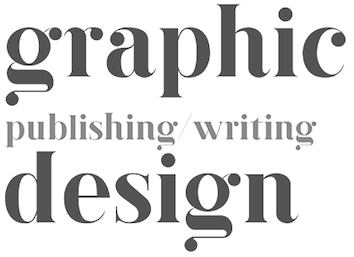 Web designer in Milano, Italy (and before that, Lugano, Switzerland, and Catania, Sicily), who created the didone typeface Rachel and the partly tweetware sans typeface family DDM in 2014. With Meedori Studio in Catania, he created the tweetware Futura-inspired caps-only typeface Meedori Sans (2015).
Web designer in Milano, Italy (and before that, Lugano, Switzerland, and Catania, Sicily), who created the didone typeface Rachel and the partly tweetware sans typeface family DDM in 2014. With Meedori Studio in Catania, he created the tweetware Futura-inspired caps-only typeface Meedori Sans (2015). In 2017, he designed the free wayfinding sans typeface Agané, which is based on Adrian Frutiger's Frutiger and Avenir, FF Transit by Erik Spiekermann and Bob Noorda's Noorda. With Giulia Gambino, he co-designed the free icon font Agane Icons. In 2018, Danilo De Marco and Giulia Gambino codesigned the free blackboard bold typeface K95 for K95, a communication and graphic agency based in Catania, Italy. In 2019, De Marco designed the didone display typeface family Herbert, which is named after Herbert Lubalin. Herbert Regular is free. Still at K95, he published Points & Lines (2019). Still in 2019, he also designed the free geometric color typeface Huber Alphabet, which is named in honor of Max Huber. [Google]
[More] ⦿
|
Dave Farey
[HouseStyle Graphics]
|
[More] ⦿
|
Dave Hänggi
|
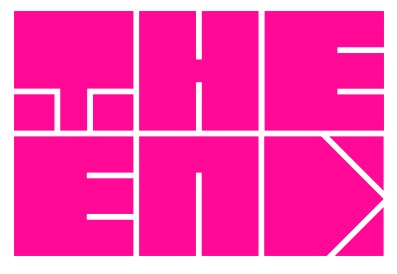 Berlin, Germany-based designer of Loqi (2016, an organic circle-based monoline sans custom-designed for a brand of bags), Moe (2015, decorative hipster caps), Satellites (2014, outlined geometric font inspired by the logo of DLR---the Deutsche Gesellschaft für Luft und Raumfahrt), Turna Round (2014, a roundish display alphabet), and Living Rooms (2014, an interlocking square-shaped blocky alphabet inspired by floor tiling). Behance link. [Google]
[More] ⦿
Berlin, Germany-based designer of Loqi (2016, an organic circle-based monoline sans custom-designed for a brand of bags), Moe (2015, decorative hipster caps), Satellites (2014, outlined geometric font inspired by the logo of DLR---the Deutsche Gesellschaft für Luft und Raumfahrt), Turna Round (2014, a roundish display alphabet), and Living Rooms (2014, an interlocking square-shaped blocky alphabet inspired by floor tiling). Behance link. [Google]
[More] ⦿
|
David Galasse
|
Portuguese-Brazilian multidisciplinary graphic designer in Santos / Sao Paulo, who created the expressionist typeface Dora (2015) and the sticky tape typeface Marker (2015). In 2016, he designed the pen emulation typeface Dora, the octagonal typeface tick tack, which was inspired by alarm clocks from the 1990s. It wa originally created for the visual identity of the video channel Tick Tack. Behance link. Link to Congaa. Behance link for Congaa. Newer Behance link. [Google]
[More] ⦿
|
David Galasse
|
Sao Paulo-based Brazilian Portuguese creator from Portugal, of Dora (2012, calligraphic caps). He also made a series of unnamed display typefaces in paperfold, ocragonal and gridded styles. In 2013, he made Joy, a bespok typeface for Brazilian furniture maker Artesian. Behance link. [Google]
[More] ⦿
|
David Williams
[Manchester Type]

|
[MyFonts]
[More] ⦿
|
Dépli
[Benjamin Gomez]
|
 Design and type design studio in Paris founded in 2007 by Vadim Bernard, Aurélie Gasche and Benjamin Gomez (who is the main type designer in this group). Their typefaces are mostly commissioned, but include a few retail typefaces as well:
Design and type design studio in Paris founded in 2007 by Vadim Bernard, Aurélie Gasche and Benjamin Gomez (who is the main type designer in this group). Their typefaces are mostly commissioned, but include a few retail typefaces as well: - Mondara (2011). A Latin / Arabic typeface done for l'Institut du monde arabe designed by Benjamin Gomez, Mathieu Réguer, Aurélie Gasche and c-album. The Arabic has both Naskh and Kufi styles. Both the Latin and Arabic are absolutely gorgeous.
- Pernod Ricard (2008-2012). A slab serif done for Watson Moustache (2012 version) by Benjamin Gomez and Sonia Da Rocha. The 2008 version, based on ITC Lubalin Book, done for Beevy, was designed by Benjamin Gomez.
- Kufica (2008). Arabic typeface by Aurélie Gasche, with help of Mathieu Réguer, Antoine Barjini and Amir Dhia.
- Treza (2010). Distributed by Die Gestalten, this playful display typeface was designed by Benjamin Gomez and Maroussia Jannelle.
- Veolia Italic (2009). By Benjamin Gomez for Piaton Conseil.
- Fraktur (2007). By Benjamin Gomez.
- Insight Team (2008). A dot matrix typeface designed by Aurélie Gasche and Laurent Ungerer.
- Musée de la danse (2009). An inline typeface by Benjamin Gomez.
- Ink No (2006). An experimental typeface by Benjamin Gomez.
- Muséum de La Rochelle (2004).
- MAC VAL (2005). By Benjamin Gomez for Incident. MAC VAL stands for musée d'art contemporain du Val-de-Marne.
- Studio Apeloig (2006). Benjamin Gomez did several typefaces for Studio Apeloig, inluding Serpent à Plumes and Octobre.
- La Ferme du Buisson (2005). A modular counterless typeface by Benjamin Gomez and Maroussia Jannelle.
- Octobre (2006). By Benjamin Gomez and Philippe Apeloig, who conceived the font.
- Caractère (2004). Interactive type experiment by Benjamin Gomez.
[Google]
[More] ⦿
|
DecoType
[Thomas Milo]

|
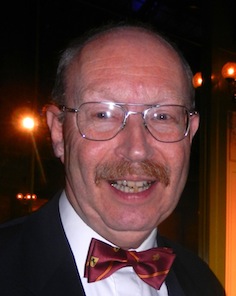 Thomas Milo founded DecoType in Amsterdam in 1985, together with Peter Somers and Mirjam Somers. They introduced the notion of dynamic fonts, and developed Ruqaa (1987), licensed by Microsoft. They also developed the DecoTypeSetter, which was included in Adobe PageMaker MiddleEast. Deco Type is perhaps best known for its extensive DTP Naskh family, which has hundreds of variations of all letterforms, and permitted people to typeset calligraphic Arabic, as it is in a style emulating the hand of the Ottoman calligrapher Mustafa Izzet Efendi. Part of that package is the DecoType Authentic Naskh typeface. DecoType donated a custom version of Naskh to the Unicode Consortium for printing the Arabic parts of their manuals. Other fonts include DTP Nastaaliq. Thomas Milo is also a specialist of Turkic and Slavic linguistics. His company's beautiful fonts sell for 125 USD: P.O. Box 55518, 1007 NA Amsterdam, The Netherlands. Thomas Milo's talks about Arabic fonts at the 1998 RIDT in Saint-Malo and at ATypI in Copenhagen in 2001 were masterful performances---entertaining and insightful from start to finish. From Milo's site: DecoType contributes fonts and Arabic Calligraphy applications to Microsoft Office Arabic Edition; to Adobe PageMaker Middle East DecoType provides a special interface for Calligraphic typesetting; to the MacOS 9 it contributes Arabic fonts.
Thomas Milo founded DecoType in Amsterdam in 1985, together with Peter Somers and Mirjam Somers. They introduced the notion of dynamic fonts, and developed Ruqaa (1987), licensed by Microsoft. They also developed the DecoTypeSetter, which was included in Adobe PageMaker MiddleEast. Deco Type is perhaps best known for its extensive DTP Naskh family, which has hundreds of variations of all letterforms, and permitted people to typeset calligraphic Arabic, as it is in a style emulating the hand of the Ottoman calligrapher Mustafa Izzet Efendi. Part of that package is the DecoType Authentic Naskh typeface. DecoType donated a custom version of Naskh to the Unicode Consortium for printing the Arabic parts of their manuals. Other fonts include DTP Nastaaliq. Thomas Milo is also a specialist of Turkic and Slavic linguistics. His company's beautiful fonts sell for 125 USD: P.O. Box 55518, 1007 NA Amsterdam, The Netherlands. Thomas Milo's talks about Arabic fonts at the 1998 RIDT in Saint-Malo and at ATypI in Copenhagen in 2001 were masterful performances---entertaining and insightful from start to finish. From Milo's site: DecoType contributes fonts and Arabic Calligraphy applications to Microsoft Office Arabic Edition; to Adobe PageMaker Middle East DecoType provides a special interface for Calligraphic typesetting; to the MacOS 9 it contributes Arabic fonts. In 2009, Thomas Milo received the second Dr. Peter Karow Award for Font Technology&Digital Typography for the development of the ACE layout engine (the heart of the Tasmeem plugin for InDesign ME) for Arabic text setting. The citation reads: Thomas Milo and his company DecoType developed with ACE, which is an acronym for 'Arabic Calligraphic Engine', new advanced technology for Arabic text setting, which needs a far more sophisticated approach than for instance the Latin script, based on a thorough analysis of the Arabic script. Not only served Milo's typographic research as the fundament for the ACE technology, clearly it also formed a basis for the development of the OpenType format, although this is a less known and acknowledged fact. In 2017, he developed the new electronic Mus'haf Muscat at the behest of the Ministry of Endowments and Religious Affairs of the Sultanate of Oman. Speaker at ATypI 2010 in Dublin. Speaker at ATypI 2011 in Reykjavik. Speaker at ATypI 2013 in Amsterdam. MyFonts page. Speaker at ATypI 2008 in St. Petersburg. Personal link. [Google]
[MyFonts]
[More] ⦿
|
DendaNew
|
The house font of Canon. [Google]
[More] ⦿
|
Denis Masharov

|
 Born in Moscow in 1973, he emigrated to Israel in 1990 and has a Bachelor of Arts degree from the Bezalel Jerusalem Academy of Arts, 1996. A professional designer since 1996, he designs type and is involved in typographic projects.
Born in Moscow in 1973, he emigrated to Israel in 1990 and has a Bachelor of Arts degree from the Bezalel Jerusalem Academy of Arts, 1996. A professional designer since 1996, he designs type and is involved in typographic projects. At Google Font Directory, we can download his Latin/Cyrillic poster font Ruslan (or Rusland) Display (2011), the freehand lettering typeface Marck Script (2011, based on the hand of Marck Fogel), and the angular Kelly Slab (2011). Bolster (2011) is a unicase fat Western face. Forum (2011) is a free classical roman face. TeX support. Ruslan Display (2011) was co-designed with Vladimir Rabdu, this decorative typeface is in the poluustav style dating from the 16th century. In 2011, he set up the Denis Masharov foundry at MyFonts. Free fonts published at Google Web Fonts in 2012: Ledger (Ledger was likened to Zapf's Melior by Nick Shinn, but Masharov says that it is closer to Swift), Glass Antiqua. This is a revival of the 1913 typeface Glass Antiqua by Genzsch & Heyse (original by Franz Paul Glass, 1912). Poiret (2012, free at Google Web fonts) is a Latin / Cyrillic geometric grotesque that combines art deco with avant garde. TeX support for Poiret One. Bolster (2012) is a great Italian wood type face. Tenor Sans (2012) is a Peignotian typeface (free at Google Web Fonts). In 2017, Denis Masharov and Roman Shchyukin co-designed the custom squarish sans typeface Match TV for the Russian TV sports channel MachTV. Still in 2017, he designed TNT Sans for the Russian entertainment TV channel TNT (on commission for Elena Shanovich, Shandesign). Denis did the logo and typeface for the bakery brand Volkonsky in 2017. In 2019, he created the Elzevir style titling typeface Matilda Titling for Coronation, а historical TV seriеs by Alexei Uchil. It was inspired by typefaces from Georges Revillon's type foundry, ca. 1860. Klingspor link. Behance link. Fontsquirrel link. Google Plus link. Fontspace link. [Google]
[MyFonts]
[More] ⦿
|
Denis Serebryakov
[Serebryakov Type Foundry (or: Serebryakov TF, S TF; was Onetypethree Foundry, or: Dzianis Serabrakou)]

|
[MyFonts]
[More] ⦿
|
Design Concern
[Brian Johnson]
|
 Scottsdale, AZ-based creator of the hand-lettered tattoo typeface Xibalba (2014) and the squarish De Stijl-related typeface family Adaptype (2016). In cooperation with Stan Can Design in Reno, NV), Adaptype was extended to Adapt for the visual identity for the annual DICE Design Conference in northern Nevada. [Google]
[More] ⦿
Scottsdale, AZ-based creator of the hand-lettered tattoo typeface Xibalba (2014) and the squarish De Stijl-related typeface family Adaptype (2016). In cooperation with Stan Can Design in Reno, NV), Adaptype was extended to Adapt for the visual identity for the annual DICE Design Conference in northern Nevada. [Google]
[More] ⦿
|
Design Observer
[Michael Bierut]
|
A design site where one sometimes finds discussions on type. The founding writers are Michael Bierut, William Drenttel (an ex-typographer practicing law), Jessica Helfand and Rick Poynor. From Bierut's CV: Michael Bierut studied graphic design at the University of Cincinnati's College of Design, Architecture, Art and Planning. Prior to joining Pentagram in 1990 as a partner in the firm's New York office, he worked for ten years at Vignelli Associates, ultimately as vice president of graphic design. His clients at Pentagram have included The Council of Fashion Designers of America, Harley-Davidson, The Minnesota Children's Museum, The Walt Disney Company, Mohawk Paper Mills, Motorola, Princeton University, the Brooklyn Academy of Music, and the New York Jets. Bierut's work is represented in the permanent collections of the Museum of Modern Art and the Metropolitan Museum of Art in New York, and the Musee des Arts Decoratifs, Montreal. He has served as president of the New York Chapter of the American Institute of Graphic Arts (AIGA) from 1988 to 1990 and is president emeritus of AIGA National. Michael was elected to the Alliance Graphique Internationale in 1989, and was elected to the Art Directors Club Hall of Fame in 2003. Michael is a Senior Critic in Graphic Design at the Yale School of Art. He writes frequently about design and is the co-editor of the four-volume series Looking Closer: Critical Writings on Graphic published by Allworth Press. In 1998 he co-edited and designed the monograph Tibor Kalman: Perverse Optimist. His commentaries about graphic design in everyday life can be heard nationally on the Public Radio International program "Studio 360." He received the AIGA Medal in 2006, and was a winner in the Design Mind category at the 2008 Cooper-Hewitt National Design Awards. He is a cofounder of the website Design Observer. Michael's book 79 Short Essays on Design was published in 2007 by Princeton Architectural Press. His collection of new essays, Now You See It, was published in the fall of 2017. In 2018, Michael Bierut and Village type director Chester Jenkins talk collaborated on the Sherman typeface designed as the linchpin of the new identity for Syracuse University. The typeface revives a design created by Frederic Goudy in 1912 which ended up in the possession of the University. Additional material and links on Bierut: The Atlantic Talks Typography: interview with M. Bierut, Pentagram link, Reasons to Choose a Particular Typeface For a Project. In 2013, Bierut redesigned the New York City parking signs. [Google]
[More] ⦿
|
Design Studio
|
Founded in 2009, by designers Ben Wright and Paul Stafford, DesignStudio is a global brand and design agency with offices in London and San Francisco. For AirBNB, they commissioned Lineto to create a typeface family Circular Air Pro (based on Circular LL). [Google]
[More] ⦿
|
Deutsche Bank Univers
|
The house font of Deutsche Bank, based on Univers (obviously). [Google]
[More] ⦿
|
Didem Ogmen
|
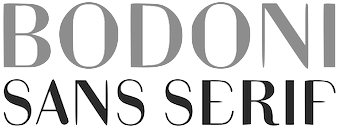 Graphic and lettering designer in Istanbul, who created these typefaces:
Graphic and lettering designer in Istanbul, who created these typefaces: - Bodoni Sans Serif (2013). A beautiful serifless Bodoni.
- Siamese Webfont (2013). To save space in web pages, a lot of glyph contractions are proposed by Didem.
- A custom brush script typeface for Tropic Labs (2018).
- An inline football shirt typeface for a local apparel company (2018).
- The color font family Terrazzo (2018). See also Terrazzo Mono (2019).
[Google]
[More] ⦿
|
Diederik Corvers
[Ogentroost]

|
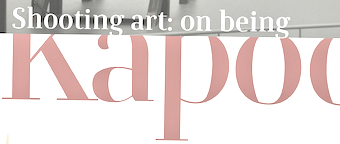 [MyFonts]
[More] ⦿
[MyFonts]
[More] ⦿
|
Dieter Hofrichter
[Hoftype]

|
 [MyFonts]
[More] ⦿
[MyFonts]
[More] ⦿
|
Digby Banks
|
Kyneton, Australia-based designer of a vintage custom logotype for The Argus Dining Room in Hepburn Springs (2014). [Google]
[More] ⦿
|
Dilworth Typographics Inc
[Silas Dilworth]

|
 Type designer (b. New York, 1975) who used to be on the staff at T-26 in Chicago from 2001-2004. His bio at MyFonts: Silas Dilworth focused his typographic vision as font technician and resident type designer at [T-26] from 2001 through 2004, producing various custom typefaces and overseeing the production of hundreds of new releases. In 2005 he started laying the groundwork for TypeTrust LLC, a font distribution partnership co-founded with fellow type designer, Neil Summerour. Silas has produced custom type for such clients as The Food Network, Converse, Cartoon Network, Caterpillar, Aon Corporation, Time Out Chicago, and Columbia College Chicago. In 2007 he joined VSA Partners in Chicago, producing exclusive type for the acclaimed design firm's private use. One such project, an expansive sans-serif text family, was chosen to anchor IBM's refreshed identity system in the iconic corporation's award-winning 2006 Annual Report. He co-designed Adriane Text with Marconi Lima in 2007.
Type designer (b. New York, 1975) who used to be on the staff at T-26 in Chicago from 2001-2004. His bio at MyFonts: Silas Dilworth focused his typographic vision as font technician and resident type designer at [T-26] from 2001 through 2004, producing various custom typefaces and overseeing the production of hundreds of new releases. In 2005 he started laying the groundwork for TypeTrust LLC, a font distribution partnership co-founded with fellow type designer, Neil Summerour. Silas has produced custom type for such clients as The Food Network, Converse, Cartoon Network, Caterpillar, Aon Corporation, Time Out Chicago, and Columbia College Chicago. In 2007 he joined VSA Partners in Chicago, producing exclusive type for the acclaimed design firm's private use. One such project, an expansive sans-serif text family, was chosen to anchor IBM's refreshed identity system in the iconic corporation's award-winning 2006 Annual Report. He co-designed Adriane Text with Marconi Lima in 2007. He co-designed Iskola (2002, T-26) with Amondó Szegi. In 2005, he set up Dilworth Typographics Inc, where his own creations include Bridge (his version of Bank Gothic), Cooter, Dilworth (a sans family), Everafter, Lump, Midinote (futuristic), Oberon (heavy Bank Gothic-style typeface with great body), Soren, Trauen, Vandermark and Yesterday. His collaborative typefaces are Diego, Fatty (stencil/headline family, designed together with Chris May), Rickety (outline face, done with Chris May), Alphaben (comic book style), Elidel, Majestos Wide, and Sansarah (commissioned handwriting for Columbia College Chicago, based on the hand of Sarah Faust). At The Type Trust, which he helped set up in 2005 with Neil Summerour, we find Diego, Fatty, Cooter, Cooter Deuce (stylish art deco pair of typefaces, Regular and Plugged), Cooter Slim (like the other Cooters, this makes me think of Pacman), Facebuster (2008, fat slab serif, typeTrust), Vandermark, Everafter, Reservation Wide (2006), Lump, and Rickety. In 2007, he added Breuer Text, Condensed and Breuer Headline (corporate geometric sans families) to The Type Trust. This was followed in 2008 by the 16-weight sans family Heroic Condensed. MyFonts catalog. [Google]
[MyFonts]
[More] ⦿
|
Dimitri Bruni
[Norm]
|
[More] ⦿
|
Dinamo
[Johannes Breyer]
|
 Dinamo is a Swiss type foundry in Heiden established by Johannes Breyer and Fabian Harb after graduation from schools in Zurich, Basel and Amsterdam. Johannes and Fabian were visiting teachers at the Estonian Academy of the Arts, Tallinn. Johannes is teaching type design at University of the Arts Berlin (UDK) and HfG Offenbach. Fabian is lecturing typography at the School of Design St. Gallen. Their typefaces:
Dinamo is a Swiss type foundry in Heiden established by Johannes Breyer and Fabian Harb after graduation from schools in Zurich, Basel and Amsterdam. Johannes and Fabian were visiting teachers at the Estonian Academy of the Arts, Tallinn. Johannes is teaching type design at University of the Arts Berlin (UDK) and HfG Offenbach. Fabian is lecturing typography at the School of Design St. Gallen. Their typefaces: - ABC Diatype (+Mono) (2020). A Swiss sans by Elias Hanzer, Johannes Breyer and Fabian Harb.
- Favorit (2014) and Favorit Mono (2017). A basic sans family by Johannes Breyer and Fabian Harb.
- Grow (2013). An experimental collaborative font family. Many of the members are multilined and even prismatic.
- The heavy sans typeface Heureka (2009-2013).
- Laica (2020). By Alessio D'Ellena.
- ABC Maxi (2020). A hipster typeface by Andree Praat, Johannes Breyer and Fabian Harb. They write: With an underlying skeleton referencing mid-century and post-modern Swiss designs---including Josef Müller-Brockmann's CWS word mark (1958) and Marlyse Schmid and Bernard Müller Swatch logo (1981)---ABC Maxi's forms can by altered and animated by the user, stretching from Hairline to Black to everything in-between.
- Pareto (2016). Western style typefaces by Erkin Karamemet, Fabian Harb and Johannes Breyer.
- Prophet (2016). Prophet is designed in 2016 by Johannes Breyer, Fabian Harb & Erkin Karamemet. Technical support and mastering by Chi-Long Trieu. It is inspired by Joseph Churchward's Georgina.
- In 2019, Johannes Breyer, Fabian Harb and Erkin Karamemet released Whyte and Whyte Inktrap at Dinamo.
- Custom typefaces for Kunsthalle Zurich (CH), Warp Records (UK), Elton John (US), Yale Architecture (US), Manifesta 11 (CH), Harvard Graduate School of Design (US), Universal Music (GER), IBA Thüringen (GER), Festival B:om (KR), Gagosian Gallery (US), Planet Mu/Knives (GER/UK), LayTheme (GER) or the German, Estonian and Cyprus Pavillions at the 55th and 56th Venice Biennale.
Johannes Breyer. Fabian Harb. [Google]
[More] ⦿
|
Dino dos Santos
[dstype]

|
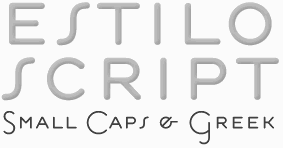 [MyFonts]
[More] ⦿
[MyFonts]
[More] ⦿
|
Dirk Zwaneveld
|
 Maastricht, The Netherlands and now, Antwerp, Belgium-based designer of the commercial typeface L'Oiseau de Feu (2013), a mysterious vintage typeface with a Russian look. Human Made Font (2013) was inspired by gothic architecture.
Maastricht, The Netherlands and now, Antwerp, Belgium-based designer of the commercial typeface L'Oiseau de Feu (2013), a mysterious vintage typeface with a Russian look. Human Made Font (2013) was inspired by gothic architecture. In 2014, he designed the creamy typeface Goggles. In 2016, he designed the constructivist typeface Stookplaats for the renovation of an old military hospital in Antwerp. Behance link. [Google]
[More] ⦿
|
Displaay
[Martin Vacha]
|
 Displaay is Martin Vacha's type foundry in Prague set up in 2014. Martin Vacha studied at the Academy of Arts, Architecture and Design in Prague. His early fonts were designed during his studies at UMPRUM in Prague. His typefaces:
Displaay is Martin Vacha's type foundry in Prague set up in 2014. Martin Vacha studied at the Academy of Arts, Architecture and Design in Prague. His early fonts were designed during his studies at UMPRUM in Prague. His typefaces: - Greed (2020). A narrow sans (+variable font with a weight axis) originally commissioned by Anymade Studio for Polansky Gallery.
- Ofform (2019). A modular folded paper font by Marek Suchanek, Kristina Jandova and Martin Vacha that started out as a custom typeface for the fashion brand Ofform 3D.
- Dazzed (2019).
- Gellix BMM.
- Matter (2016-2017). A sans inspired by Akzidenz-Grotesk (1896, Berthold Type Foundry), Theinhardt (2009, François Rappo), Classic Grotesque (1926, Frank Hinman Pierpont), Neuzeit Grotesk (1928, Wilhelm Pischner), Helvetica (1957, Max Miedinger and Eduard Hoffmann), Unica (Team '77, Lineto), Plain (2013, François Rappo), Futura (1927, Paul Renner) and Avenir (1988, Adrian Frutiger). Matter Mono was added in 2021. Haffer (2021) is a cold version of Matter with strict horizontal or vertical terminals.
- Hellix (2011). A geometric sans with hipster elements. By 2020, he completed Fellix, Gellix, Hellix and Yellix.
- Natron (2012). A sans and its display companion, Natron Alt.
- Reckless (2012-2017). A text typeface inspired by Plantin and Times New Roman.
- Wallop (2013). A sans.
- Documan (2013). A rounded typeface that is part sans, part slab serif.
- In 2016, Marek Pistora and Martin Vacha published the technical, almost typewriter, sans typeface BC Sklonar at Briefcase Type: The Sklonar typeface was originally designed exclusively for Zdenek Sklenar's S Gallery's corporate identity, conceived by Studio Najbrt in 2011. Two years later however, the gallery, including several works of art, was destroyed in a gas explosion. During the time of its use, the typeface appeared in promotional materials, in exhibitions, and also in artistic publications. But first and foremost, it excellently complemented the clean gallery space created by architect Josef Pleskot.
- Roobert (2017). A bespoke typeface for Moogfest 2017 designed together with Anymade Studio. Roobert PX is a pixel font.
- Teodor (2019-2020). Martin writes: In Teodor you can find certain similarities with Romana (1892 Gustav F. Schroeder), Caslon 224 (1725 William Caslon and Edward Benguiat), Grouch (1970 Tom Carnase and Ronne Bonder) and Perpetua (1925 Eric Gill). It has a variable type option.
- Tobias (2019-2020), a transitional typeface with elements of Times, Times New Roman and Baskerville. Plus a variable font with a weight axis.
- Github link.
- Avantt (2021).
[Google]
[More] ⦿
|
Dmitry Rastvortsev

|
 Ukrainian type designer (b. 1977, Buryn) who graduated from Sumy State University in 1999. Since 2002, he creates digital fonts. He also works at Dancor advertising in Sumy, Ukraine, since 1997. Very prolific, his work includes a substantial number of commissioned typefaces for magazines and companies.
Ukrainian type designer (b. 1977, Buryn) who graduated from Sumy State University in 1999. Since 2002, he creates digital fonts. He also works at Dancor advertising in Sumy, Ukraine, since 1997. Very prolific, his work includes a substantial number of commissioned typefaces for magazines and companies. He received a TypeArt 05 award for the display family DR Galushki (and DR Galushki Hole, 2011), which was designed for children's books. Other creations: LQ Wow and LQ Anisett (2010, for women's magazine LQ), LQ Didot (2011, also for LQ), Dekapot (grunge), Gomorrah (2013), Usquaebach (2013), Kinescope (2013), Goshen (2013), Rhode Black (2014), UT Magazine (2014), Madmix (2014, for Esquire), Variety Square (2015, for the nmagazine Variety), DR Agu (comic book face), DR Agu Sans (2013), DR Agu Script (2016), DR Trafaret (army stencil face), DR Vixi, DR UkrGotika Sans, DR UkrGotika Serif, Tsar Peter, Pelican (for Esquire magazine), Fugue. In 2014, Gayaneh Bagdasaryan and Dmitry Rastvortsev created the Latin / Cyrillic sans typeface family Brutal Type (Brownfox) that is genetically linked to DIN. His funny DR Krokodila won an award at Paratype K2009. In 2014, Dmitry Rastvortsev, Lukyan Turetsky, and Henadij Zarechnjuk cooperated on the design of the free Latin / Cyrillic handwriting typeface Kobzar KS, which is based on the handwriting of Taras Shnvchenko, a famous Ukrainian poet, artist and philosopher. In 2016, he designed the op-art typeface family DR Lineart. In 2017, he published the military stencil font DR Zhek. In 2018, he designed DR Ukrainka, which is inspired by the lettering works of these Ukrainian artists of the 1920s: Vasyl Yermilov, Vasyl Krychevscky, Heorhiy Narbut. He also designed Sumy for the branding type for the city of Sumy, Ukraine. Rastvortsev won an award in the kanji category at the 22nd Morisawa Type Design competition in 2019 for DR Kruk Single. In 2019, on commission for Banda for the National Art Museum of Ukraine, Dmitry Rastvortsev designed the Cyrillic (and Latin) family Namu, which has substyles according to various eras, from 1400 until today. On commission for Vinnytsia, he designed the free typeface family Vinnytsia ((a lapidary) Serif, Sans, City). He finished 2019 with the free sans-serif-display superfamily Kyiv Type, which consists of KyivType Variable, KyivType Sans, KyivType Serif, and KyivType Titling. Typefaces from 2020: DR Krapka Rhombus, DR Krapka Round, DR Krapka Square (a set of dot matrix typefaces). Behance link. Klingspor link. [Google]
[MyFonts]
[More] ⦿
|
Dominik Pichler
|
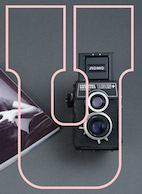 Graphic designer in Vienna, Austria. In 2015, he created the Lobo Lumitel typeface for the launch of a camera. Behance link. [Google]
[More] ⦿
Graphic designer in Vienna, Austria. In 2015, he created the Lobo Lumitel typeface for the launch of a camera. Behance link. [Google]
[More] ⦿
|
DooType
[Eduilson Wessler Coán]

|
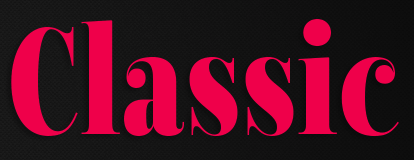 Curitiba-based Brazilian digital type foundry, est. in 2008 by the successful and talented type designer Eduilson Wessler Coan (b. 1983, Curutiba). Myfonts link. Coan joined Fabio Haag Type. Their fonts:
Curitiba-based Brazilian digital type foundry, est. in 2008 by the successful and talented type designer Eduilson Wessler Coan (b. 1983, Curutiba). Myfonts link. Coan joined Fabio Haag Type. Their fonts: - Estado Serif (2006), co-designed with Ericson Straub (Straub Design) and Fabio Augusto for use in the Jornal O Estado do Paraná.
- DooSans (2006): custom design for the magazine abcDesign.
- Ninfa (2006-2008), an organic serif face. He calls it a modern semi-serif. Whatever. Ninfa won an award at Tipos Latinos 2008 in the non-text typeface category. Ninfa Serif followed in 2012. Ninfa Serif won an award in the typeface family category at Tipos Latinos 2012.
- Encorpada Black (2011) is a fat didone display face. It was extended to Encorpada Pro in 2012. Encorpada Classic was published in 2013. Encorpada Classic and Encorpada Pro won awards at Tipos Latinos 2014. In 2014, he published Encorpada Essential. In 2015, Eduilson added Encorpada Classic Compressed and Encorpada Classic Condensed.
- Fluence (2012) is a calligraphic typeface family. Fluence won an award at Tipos Latinos 2012.
- Tres Tres Chic (2012) is a very thin geometric fashion mag headline face.
- Maestra (2012) is a calligraphic copperplate script. Gorgeous, mouthwatering, heavenly, just about the perfect font. Future brides and grooms need look no further than this for wedding invitations.
- Niks Sans (2012).
- dT Delicatta (2012, revised in 2017) is a formal connected calligraphic script face, destined to win many awards.
- Unimed Sans, Unimed Slab and Unime Serif (2013) is a bespoke typeface family done for a Brazilian health insurance company, Unimed.
- Typefaces from 2014: Bommer Slab and Bommer Slab Rounded. Bommer Slab won an award at Tipos Latinos 2014. Accura (2014, a sans typeface created together with Thiago Bellotti).
- In 2015, he designed the techno sans family Sica (+Expanded, +Condensed) with Volnei Antonio Matrté Coan at DooType. Sica won an award at Tipos Latinos 2016.
- Bommer Sans (2016). A Latinized (i.e., curvy) humanist sans.
- dT Jakob (2017). This typeface started out in 2007 as a revival by Gustavo Soares in Paul van der Laan's class at KABK of Jakob Erbar's grotesk from 1927. It was refined and completed in 2017 at dooType with the help of Eduilson Wessler Coan. In 2018, Gustavo Soares and Eduilson Coan developed the variable inline and shadow font dT Jakob Variable Concept.
- dT Ampla (2018). A sans with some warmth.
- Salva (2021, Fabio Haag Type). A versatile workhorse sans family: Eduilson Coan was the lead designer. He was assisted by the Fabio Haag Type team of Henrique Beier, Ana Laydner and Fabio Haag himself.
- Seiva (2021, by Henrique Beier, Eduilson Coan and Fabio Haag). A distant relative of Didot, this exotic sans family is partitioned into Text, Display and Poster subfamilies, and welcomes variable font technology.
Klingspor link. Creative Market link. Behance link. MyFonts interview. [Google]
[MyFonts]
[More] ⦿
|
Dr. Oetker Tiffany
|
The house font of Dr. Oetker, based on Tiffany. [Google]
[More] ⦿
|
Dries Wiewauters
|
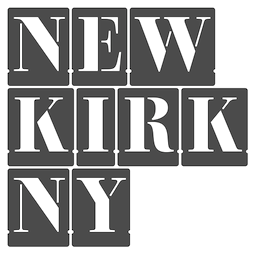 Belgian designer who has a bachelors in graphic design from St. Lucas, Gent (Belgium) and ArtEZ Arnhem (The Netherlands), and a Masters in the same area from both places. He lives in Gent and loves mussels (or, at least, he loves to make posters of mussels). The list of his typefaces:
Belgian designer who has a bachelors in graphic design from St. Lucas, Gent (Belgium) and ArtEZ Arnhem (The Netherlands), and a Masters in the same area from both places. He lives in Gent and loves mussels (or, at least, he loves to make posters of mussels). The list of his typefaces: - Nib (2019, Colophon). A wedge serif originally designed for the Museum of Fine Arts in Ghent. It was developed in close collaboration with Ruud Ruttens, the head of their design department.
- LUCA School of Arts. A custom typeface, ca. 2015.
- Newkirk (2012). A custom all-caps stencil typeface for Scott Newkirk Art Studio in New York.
- PDU, or Plaque Découpée Universelle (2010, Colophon). Dries writes: After reading the excellent essay by Eric Kindel: The Plaque Découpée Universelle: a geometric sanserif in 1870s Paris (Typography Papers 7, Reading, 2007), both James Goggin and I got fascinated by the idea of a stencil with which you can draw every letter of the alphabet: uppercase, lowercase, numbers, punctuation. The original stencil was invented in 1876 by Joseph A. David (USA). In order to experience the stencil first hand and because the original is really fragile and very hard to come by, 3 prototypes were laser cut out of 0,5 mm steel. To comply with friends' demand, a small edition of 50 copies was made. To enable smoother drawing these were cut out of 0,2 mm flexible steel.
- PDP, or Plaque Découpée Personnalisée, is the result of further experimentation with the Plaque Découpée Universelle. These 18 fonts were made as part of Feed the Library, an installation by the Werkplaats Typografie during the 2010 NY Art Book Fair.
- Norwich (2005, pixel family).
- Gütz (2006, blackletter).
- Rietveld Fatface (2007, fat sans titling face).
- Hafssól (2007, pixel face).
- Grey Text, Grey Display, Ultra Black (2008-2009). Done for his Masters at St Lucas Academy in Ghent, and The Grey Press. Grey Text is a text face, Grey Display a set of six inline / blackboard bold typefaces, and Ultra Black a fat brush poster face.
- Interieur2010 (2010): a type family that started out by modeling a chair.
- MAD (2009). A multiline typeface family started from Machine Aided Design typefaces. It evolved over the years into MAD Sans ans Serif and now includes Fill versions well. It will be published by Colophon in 2017.
- Scribe. A custom typeface for the identity and house style of Museum voor Schone Kunsten Gent.
Home page. [Google]
[More] ⦿
|
dstype
[Dino dos Santos]

|
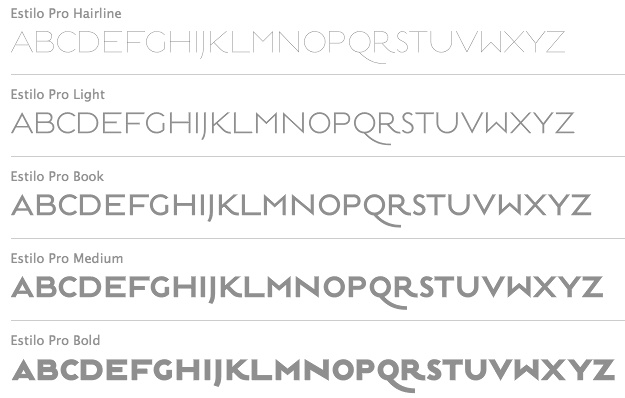 Established in 1994, dstype used to offer free fonts but has gone commercial now. It is run by Dino dos Santos (b. 1971, Oporto) from Oporto, Portugal. He graduated in Graphic Design at ESAD, Matosinhos. He received a Masters degree in Multimedia Arts at FBAUP, Porto. MyFonts place. In 2006 he won the Creative Review Type Design Competition in the Revival/Extension Family. At ATypI 2006 in Lisbon, he spoke about Portuguese lettering since 1700. Interview in 2007. Klingspor link. Author of A Letra Portuguesa, a book about Portuguese calligraphy. Dino created these typefaces:
Established in 1994, dstype used to offer free fonts but has gone commercial now. It is run by Dino dos Santos (b. 1971, Oporto) from Oporto, Portugal. He graduated in Graphic Design at ESAD, Matosinhos. He received a Masters degree in Multimedia Arts at FBAUP, Porto. MyFonts place. In 2006 he won the Creative Review Type Design Competition in the Revival/Extension Family. At ATypI 2006 in Lisbon, he spoke about Portuguese lettering since 1700. Interview in 2007. Klingspor link. Author of A Letra Portuguesa, a book about Portuguese calligraphy. Dino created these typefaces: - Access (1997).
- Acta, Acta Display and Acta Poster (2011, +Poster swashes). A didone fashion mag family. First designed for Chilean newspaper La Tercera in 2010, DSType's Acta family is a clean information design type system. It includes Acta Symbols, an extensive dingbat family. Acta Var (2020) has two axes, weight and optical size.
- Acto (2012). Acto is a type system designed as the sans serif counterpart of the previous released Acta. Both type families were designed in 2010 for the redesign of the Chilean newspaper La Tercera.
- Andrade Pro (a modern) and Andrade Script Pro: based on the calligraphy of Andrade de Figueiredo, ca. 1722.
- Anubis (2003): a unicase face.
- Aparo (2013). A plumpish elegant high-contrast script face.
- Apice (2022). A highly structured calligraphic typeface with five optical sizes.
- Apud and Apud Display (2010): a high-contrast serif family.
- Aquila (2004).
- Ardina (2016). Done with Pedro Leal, this text typeface family has three optical sizes.
- Boldina (2004). A fat informal poster family with 18 weights and styles.
- Braga (2011, Dino dos Santos and Pedro Leal). This is a layered font design family. Dino writes: Braga is an exuberant baroque typeface, named after a portuguese city, also known as the baroque capital of Portugal. Our latest typographic extravaganza comes with a multitude of fonts designed to work like layers, allowing to insert color, lines, gradients, patterns, baroque, floral swashes, and many other graphic elements. Starting with Braga Base, you can add any of the twenty-three available styles, to create colourful typographic designs.
- A type system from 2014: Breve News, Breve Display, Breve Slab Title, Breve Sans Title, Breve Title, Breve Slab Text, Breve Sans Text, Breve Text. The Breve system includes modern design elements in the skeleton and ball terminals, transional elements, almost wedge-serifs in the serifed styles. As with most of dos Santos's typefaces, even the sans and slab styles exhibit Latin warmth and exuberance.
- Capsa (2008): a family that was inspired by, but is not a revival of the Claude Lamesle types Gros Romain Ordinaire and Saint Augustin Gros Oeil.
- Ception (2001): a futuristic sans family.
- Cimo (2017). A distinguished condensed sans.
- Cultura, and its improved version Cultura New (2013), a text book typeface family.
- Decline (1996).
- Denso (2019). By Dino dos Santos and Pedro Leal: a great condensed variable font with weight, serif and optical size axes.
- Digno (2022). A fuzzy text typeface family.
- Dione (2003): a sans; redone in 2009 as Dobra at TypeTrust. See also Dobra Slab (2009).
- Enorme (2020). Ultra massive and modular 3000-glyph mastodont of a constructivist font, by Pedro Leal and Dino dos Santos.
- Esta (2004-2005): extensive (transitional) text and newsprint family.
- Estilo (2005): a gorgeous and simple art deco-ish geometric headline face. This was accompanied by Estilo Script (2006), Estilo Text (2007, a 6-style rounded sans family), and later, Estilo Pro (2010, +Hairline).
- Ezzo: a sans family.
- Factor (1997).
- Finura (2009): this typeface has hints of University Roman.
- Firme (2014). A geometric sans for corporate use.
- Fragma (2003): squarish techno family.
- Girga (+Italic, +Engraved, +Banner, +Stencil) is a strong black Egyptian family designed in 2012 together with Pedro Leal at DS Type.
- Glosa (2008): Glosa is a meaty multi-style didone family. Glosa Text and Glosa Headline all followed a bit later in 2008, and Glosa Display in 2009.
- Hades (2012). A yummy and free blackletter typeface.
- Hypergrid (2002): octagonal.
- Ines (2015). A classic 7-style text typeface.
- Isento and Isento Slab (2017). Both are loosely based on ATF's Times Gothic.
- Lucius (Sans, Serif) (2022). The Lucius type family began as an attempt to reproduce the Principios Methodicos para as Letras Aldina e Roman---Typo Portuguez, but went went way beyond that in its multi-faceted execution.
- The Quase family (2017): Quase is a very free interpretation of the types found in the Specimen of Printing Types by William Caslon from 1785. We wanted to start with Caslon and then transform it into an editorial typeface, hence the increase of the x-height and the radical reduction of the ascenders and descenders. Subfamilies: Quase Headline (12 styles), Quase Poster, Quase Display, Quase Text.
- Idem and idem Display (2021).
- Dino dos Santos and Pedro Leal published Jules in the summer of 2015---a fat fashion mag didone 45-style family inspired by several plates from Portuguese calligrapher Antonio Jacintho de Araujo; it comes in Big, Colossal and Epic. They followed up in 2017 with Jules Text.
- Kartago (2005): based on Roman inscriptions from Cartago.
- Keiss (2017) and Keiss Text (2021). A Scotch roman with a lot of contrast. Keiss Text comes in twelve styles and features short descenders and ascenders, along with three very distinct optical sizes. It was designed with contemporary newspapers in mind. In 2021, he added Keiss Title, Keiss Condensed, Keiss Big (14 styles) and Keiss Condensed Big.
- Large (1999) and Large Pro (2006).
- In 2020, Dino dos Santos and Pedro Leal designed Larga, which was inspired by the typefaces shown in the specimens of the Fundiçãao Typographica Portuense from 1874. Larga is a wide all caps family and comes with a variable opentype format.
- Leitura, Leitura Headline, Leitura News, Leitura Sans, Leitura Symbols, Leitura Display (2007): the 31 styles were all made in 2007.
- Logica (2016). A classical text typeface.
- Maga (2012). A text family.
- Methodo (2005): calligraphic penman typefaces.
- Missiva (2004).
- Monox and Monox Serif (1998-2000): a monospaced family.
- Ni Sans, Ni Slab, Ni Serif (2018).
- Musee (2006): a transitional family with ornaments and borders.
- Nerva (2004). A subdued Trajan typeface with flaring.
- Nitida (2017). A 114-font family with five optical sizes.
- Nyte (2012). A serifed text family.
- Otite (1995).
- Outside (1996): grunge.
- Parco (2021). A compact headline typeface with large x-height.
- Plexes (2003). See also Plexes Pro (2006).
- Pluma (2005): a series of three exquisite calligraphic flowing scripts called PlumaPrimeyra, PlumaSegunda and PlumaTerceyra). Inspired by the typographic work of Manuel de Andrade de Figueiredo that was published in 1722: "Nova Escola para Aprender a Ler, Escrever e Contar, offerecida a Augusta Magestade do Senhor Dom Jao V, Rey de Portugal".
- Poesis (1999).
- Pratico UI and Pratico Slab UI (2022).
- Prelo (2008): A sans family for magazines, it has styles that include Hairline, Hairline Italic, Extra Light, Extra Light Italic, Light, Light Italic, Book, Book Italic, Medium, Medium Italic, Semi Bold, Semi Bold Italic, Bold, Bold Italic, Extra Bold, Extra Bold Italic, Black, Black Italic, Slab and Prelo Condensed.
- Priva Pro (2006): a sans family that includes Greek and Cyrillic).
- Prumo (2011-2012). A 92-font family originally created for the redesign of the Argentinian newspaper La Nacion. Released to the public in 2013, it covers low and high contrasts, and has slab serif styles as well as Scotch Roman styles. So, it is more a type system or type collection than one single typeface: Prumo Banner, Prumo Deck, Prumo Display, Prumo Poster, Prumo Slab, Prumo Text.
- Quadricula (1998).
- Quaestor and Quaestor Sans (2004). Roman inscriptional typefaces.
- Recita (2019). A sturdy oldstyle text typeface family.
- Resea (2004) and Resea Consensed: Bank Gothic style typefaces.
- Solido (2012) is a versatile type system with five widths: Solido, Solido Constricted, Solido Condensed, Solido Compressed and Solido Compact. In total there are 35 fonts. In 2020, a variable font was added to Solido. Codesigned with Pedro Leal.
- Synuosa (1999): an experimental typeface showing only the top half of the characters.
- Tecla (2018). After Printype, a typeface developed in the early twentieth century for the Oliver Typewriter.
- Terminal (1996).
- Titan and Titan Text (2003).
- User (2012), User Upright (2012), and User Stencil (2012). Monospace type families.
- Velino (2010): an extensive family including Velino Text, Velino, Velino Condensed, Velino Compressed, Velino Poster, Velino Sans, Velino Sans Condensed, Velino Display (+Compressed Display, +Condensed Display). This didone superfamily is sure to win a ton of awards.
- Ventura (2007): based on the calligraphy of Portuguese calligrapher Joaquim José Ventura da Silva, ca. 1802, who wrote Regras methodicas para se aprender a escrever os caracteres das letras Ingleza, Portugueza, Aldina, Romana, Gotica-Italica e Gotica-Germanica in 1820. It had a "Portuguese Script". Do not confuse Ventura with Dieter Steffmann's font by the same name made many years earlier. Ventura won an award at TDC2 2008).
- Viska (2015, by Dino dos Santos and Pedro Leal) is designed for small print.
- Volupia (2005): a connected advertising face.
DS Type also has typefaces by other type designers, such as Pedro Leal. They worked with leading companies, world scale events and well-known design agencies including: Appetite, Banco CTT, Banco Economico, BBDO, CondéNast, CTT Correios de Portugal, Electronic Arts, Errea Communicacion, Erste Bank, ESPN, Expo 2020 Dubai, Fifa World Cup 2018 Russia (the Ducha typeface), Garcia Media, Gatorade, Gruner + Jahr, Hearst, Innovation, King Games, McCann-Erickson, Meredith, Palmer Watson, Pentagram, Sagres, Starbucks, The New York Times (the Nyre typeface), Vox Media and Wolff Olins. View Dino dos Santos's typefaces. DS Type's typeface library. [Google]
[MyFonts]
[More] ⦿
|
DTP Types Limited
[Malcolm Wooden]

|
 DTP Types Ltd was launched in 1989 by Malcolm Wooden (b. London, 1956) from Crawley, West Sussex, England. Wooden worked at Monotype for over 20 years just before that. Malcolm Wooden joined Dalton Maag early 2008 to work on font engineering and production. DTP Types does/did custom font work, and sells hundreds of retail fonts.
DTP Types Ltd was launched in 1989 by Malcolm Wooden (b. London, 1956) from Crawley, West Sussex, England. Wooden worked at Monotype for over 20 years just before that. Malcolm Wooden joined Dalton Maag early 2008 to work on font engineering and production. DTP Types does/did custom font work, and sells hundreds of retail fonts. In the Headline Font Collection (50 fonts), we find reworked and extended designs (Apollo, New Bodoni (1996-2002), Camile, Engravers, and so forth), as well as fresh typefaces (Hellene handwriting, Finalia Condensed, Birac, Delargo Black, Delargo DT Rounded (comic book family), Dawn Calligraphy). In the Elite Typeface Library, there are type 1 and truetype typefaces for Western and East-European languages. For example, Elisar DT (1996, see also Elisar DT Infant) is a humanist sans family made by Malcolm and Lisa Wooden. Fuller Sans DT (1996) is a grotesk family by Malcolm Wooden. Greek and Cyrillic included. Other typefaces: Garamond 96, Pen Tip (Tekton-like). Fonts distributed by ITF and MyFonts.com: Berstrom DT, Beverley Sans DT (2007, comic book style face), Birac DT, Century Schoolbook DT, Convex DT, Delargo DTInformal, Delargo DT Infant, Engravers DT (1990), Finalia DT Condensed, Garamond DT, Garamond Nine Six DT, Goudy Old Style DT, Graphicus DT (1992, a 24-style geometric sans family), Kabel DTCondensed, Leiden DT (1992: after Dick Dooijes's Lectura), Macarena DT, Modus DT (2007), New Bodoni DT (1992), Newhouse DT (1992, a large neo-grotesque family), Office Script DT (1994, copperplate script), Pelham DT (1992), Pen Tip DT, Pen Tip DT Infant, Pretorian DT (a revival of an old Edwardian font by P.M. Shanks done by Ron Carpenter and Malcolm Wooden in 1992; for a free version, see Vivian by Dieter Steffman), Solaire DT, Triest DT, Vigor DT (2000---a slab serif family). Discussion: Something I don't get is that Vecta DT (2006) is based on Vecta (2005, Wilton Foundry)---same name, same sans family, what gives? Duet DT (2006, a calligraphic script) is by Robbie de Villiers of Wilton, based on his own Duet (2004). MyFonts page. The typophiles reserve harsh judgment: I recognize these designs by their original names. Slightly manipulating Times Roman, Optima, Icone, Franklin Gothic, Sabon, Tekton, does not make them new or original. Many of the designs are identical to the originals they're derived from (Carl Crossgrove), The DTP Types outfit sells the usual rip-off fonts under new and old names (e.g. Century Schoolbook DT, Engravers DT, Goudy Old Style DT, Kabel DT, etc.) (Uli Stiehl). Typefaces from 2007: Rustikalis DT (after a phototype by VGC from the 1960s), Appeal DT (a revival of the Victorian typeface Apollo designed ca. 1900 by Aktiengesellschaft für Schriftgiesserei und Maschinenbau), Fatbrush DT, Kardanal DT, Pamela DT (semi-blackletter). In 2008, DTP announced a new newspaper and magazine text family, Arbesco DT (PDF), based on a 1980s photolettering family (see also here), and a simple 24-style architectural sans family called Sentico Sans DT (elliptical). They also published the marker family Pen Tip DT Lefty in 2008. In 2009, the calligraphic Trissino DT was published: it was named after Gian Giorgio Trissino (1478-1550) the Italian Renaissance humanist, poet, dramatist, diplomat and grammarian who was the first to explicitly distinguish I and J as seperate letter sounds. In 2020, he released Hastrico DT (a 13-style grotesque family), Hastrico DT Condensed. View the DTP Types typeface library. [Google]
[MyFonts]
[More] ⦿
|
Due Studio
|
Graphic and type design studio in Perugia, Italy, founded by Massimiliano Vitti and Alessio Pompadura. They co-designed the grid-based stencil typeface Nodo in 2017. In 2018. they developed PVF Display for the identity of Palazzo Vertemate Franchi. In 2019, they designed Grotta, and wrote: Grotta is an irreverent contemporary neo-grotesk typeface with strong geometric accent and sharp contrast in its form. Characterized by tight apertures and an overall dynamic feeling it is suited for both display and text sizes. It is our interpretation of the 21st century grotesk, exuberant, irruptive and [...] winks at [...] Venus-Grotesk and Monotype Grotesque. It shows influences of hipstertism in the way strokes are joined in the 1, N, M, V, W, and other letters. In 2021, they added the pixel font Analo Grotesk. Type Department link. [Google]
[More] ⦿
|
DW Interstate
|
The house font of Deutsche Welle, based on Interstate (1993, Tobias Frere-Jones). That company also uses Bembo. [Google]
[More] ⦿
|
Dyana Weissman
[Kerns&Cairns]

|
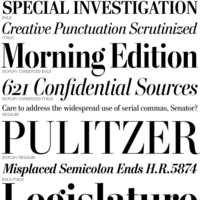 [MyFonts]
[More] ⦿
[MyFonts]
[More] ⦿
|
Edd Harrington
[Colophon Foundry]
|
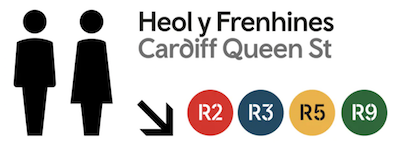 [More] ⦿
[More] ⦿
|
Edgar Valenzuela
|
 Designer in Vancouver who specializes in corporate identities. His typefaces include:
Designer in Vancouver who specializes in corporate identities. His typefaces include: - Nebula (2013) is a sans serif typeface family.
- Brisa (2013) is low-contrast ink-trapped angularly designed serif typeface for large bodies of text. Not to be confused with Brisa, a script typeface made in 2004 by Alejandro Paul / Sudtipos.
Behance link. [Google]
[More] ⦿
|
Edgar Walthert
|
 Type and graphic design pages by Edgar Walthert, b. Sursee, Switzerland. In 2007, he graduated from the TypeMedia program at KABK in Den Haag. Since then he is free-lancing. He completed TazIII in 2008 for Lucas de Groot in Berlin. In 2008, he moved to Amsterdam to work as an independent graphic and type-designer. In Amsterdam, he hosts Letterspace Amsterdam, a monthly series of lectures about experimentation, innovation and research in type. In 2021, he set up Font Spectrum together with Daniel Maarleveld.
Type and graphic design pages by Edgar Walthert, b. Sursee, Switzerland. In 2007, he graduated from the TypeMedia program at KABK in Den Haag. Since then he is free-lancing. He completed TazIII in 2008 for Lucas de Groot in Berlin. In 2008, he moved to Amsterdam to work as an independent graphic and type-designer. In Amsterdam, he hosts Letterspace Amsterdam, a monthly series of lectures about experimentation, innovation and research in type. In 2021, he set up Font Spectrum together with Daniel Maarleveld. His typefaces include Agile (2007, a sans family done at KABK), Grosse Pläne, Instant Schrift (2000: Redesign of Isonorm 3098 matching the radical restrictions of the Instant design-manual), and Sonic Waves (an experimental typeface that was created for dublab, a radio station based in Los Angeles, and was drawn using sound waves that can actually be played as an audio file). Agile was further developed in 2011 with weights ranging from hairline to fat, and appeared in 2013 as a retail typeface at Incubator / Village. He published the constructed sans typeface family Logical in 2018 at Bold Monday / Type Network. His typefaces at FontSpectrum: - Purple Haze (2021-2022). Purple Haze is an experimental variable typeface with a readable regular weight and decorative dot matrix-themed extremes. The font works best when being animated or interacted with.
His corporate typefaces: - Toneelmakerij typeface by Edgar Walthert in collaboration with Esther de Boer for the identity of the Dutch theater company De Toneelmakerij. Contains many icons.
- Alpen Display and Text (2018), custom typefaces for Bühne Burgäschi by Edgar Walthert. Inspired by classic Swiss tourism posters from the 1930s and '40s. Alpen Display and Alpen Text is currently being further developed and will be released as Arosa Display, Arosa Text and Arosa Script.
- De Patronenmaker typeface. For a website designed by Johannes Verwoerd, Walthert created a variable font based on the open source typeface Publica by Gustavo Ferreira, by pushing its extremes to 0 and 11. The website uses the same 26kb font file for all animations, menu and body text.
- This Is Africa typeface for Ghetto Radio in Nairobi by Edgar Walthert, with Esther de Boer.
[Google]
[More] ⦿
|
Edition Studio
[Adrien Menard]
|
 Adrien Menard is a graphic and type designer first based in Paris and now in Brooklyn, NY, where he set up Edition Studio. Adrien studied at the ECV Paris and at the KABK in Den Haag, The Netherlands. He holds a Master in Art Direction. His typefaces:
Adrien Menard is a graphic and type designer first based in Paris and now in Brooklyn, NY, where he set up Edition Studio. Adrien studied at the ECV Paris and at the KABK in Den Haag, The Netherlands. He holds a Master in Art Direction. His typefaces: - Haarlem AM (2015). A serif typeface family based on the letters used in Origines Typographicae, Meerman Fleishman, 1765, from the Enschedé font foundry.
- Paraag AM (2015). A monospaced sans.
- Keller Stencil (2015). A classy stencil typeface based on a Garamond skeleton. Developed with Xavier Lecuyer and Anton Haesendonck. Perhaps renamed Klod AM in 2016, and republished at Edition Studio in 2018.
- Continua (2018). A modulated display sans.
- Sample and Sample Cursive (2018).
Custom typefaces were done via Edition Studio for NY Nike Headquarters and Darcstudio. [Google]
[More] ⦿
|
Eduardo Manso
[Emtype]

|
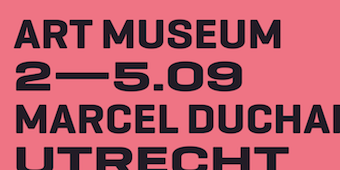 [MyFonts]
[More] ⦿
[MyFonts]
[More] ⦿
|
Eduilson Wessler Coán
[DooType]

|
 [MyFonts]
[More] ⦿
[MyFonts]
[More] ⦿
|
Eifoni
[Eivind Fonnaas Nilsen]
|
 Eifoni is the studio of Eivind Fonnaas Nilsen in Oslo. Elvind has done several complete typefaces. These include a corporate typeface called Supersexy (2010), for Laid, the only Norwegian producer of high-end sex toys. For his master project at KHiB (Bergen National Academy of the Arts), under the guidance of Andrea Thinnes and Rachel Troye, he used graffiti as a starting point to create the pair of typefaces called the Bomber and the Artist (2007). His typefaces include Supersexy and Oslo Sans.
Eifoni is the studio of Eivind Fonnaas Nilsen in Oslo. Elvind has done several complete typefaces. These include a corporate typeface called Supersexy (2010), for Laid, the only Norwegian producer of high-end sex toys. For his master project at KHiB (Bergen National Academy of the Arts), under the guidance of Andrea Thinnes and Rachel Troye, he used graffiti as a starting point to create the pair of typefaces called the Bomber and the Artist (2007). His typefaces include Supersexy and Oslo Sans. At Skin Design Studio, he created the all caps DIN-like typeface Skin Extra Regular for in-house use. Behance link. Typecache link. Cargocollective link. [Google]
[More] ⦿
|
Eivind Fonnaas Nilsen
[Eifoni]
|
[More] ⦿
|
EK Type
[Sarang Kulkarni]
|
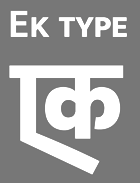 Type design collective in Mumbai, India, est. 2013, managed by Mumbai-based Sarang Kulkarni (b. 1980). Sarang studied at the Sir J J Institute of Applied Art in Mumbai, class of 2002. He worked with R.K. Joshi at the National Centre for Software Technology and Design Temple in 2002. In that same year, he assisted R.K. Joshi with the design of the Jana Gurmukhi typeface. In 2008 and 2009, he created 11 Indic typefaces for Vodafone India. In 2009-2010, he created an additional eight typefaces for Virgin Mobile India. Kulkarni also runs White Crow Designs.
Type design collective in Mumbai, India, est. 2013, managed by Mumbai-based Sarang Kulkarni (b. 1980). Sarang studied at the Sir J J Institute of Applied Art in Mumbai, class of 2002. He worked with R.K. Joshi at the National Centre for Software Technology and Design Temple in 2002. In that same year, he assisted R.K. Joshi with the design of the Jana Gurmukhi typeface. In 2008 and 2009, he created 11 Indic typefaces for Vodafone India. In 2009-2010, he created an additional eight typefaces for Virgin Mobile India. Kulkarni also runs White Crow Designs. Typefaces at Ek Type from 2011 by Hanif Kureshi include Painter Umesh, Painter Kafeel, and Painter Suhail. In 2013, Girish Dalvi and Yashodeep Gholap co-designed Ek Devanagari at Ek Type for Hindi, Marathi, Sanskrit, Konkani and Nepali. It is a contemporary, humanist, monolinear typeface available in seven weights. Its companion, also designed by them, is the humanist sans typeface family Ek Latin (2013). Designer of Modak (2013, Ek Type), a Latin / Devanagari bubblegum typeface that was published in the Google Web Font collection in 2015. Modak Devanagari was designed by Sarang Kulkarni and Maithili Shingre and Modak Latin by Noopur Datye with support from Girish Dalvi and Pradnya Naik. Github link. Another Github link for Modak. In 2012, he designed Star Jalsha, a Bengali television screen font for Star India Pvt Ltd. In 2016, Ek Type designed the free Latin / Devanagari / Gujarati font Mukta Vaani. More precisely, it was designed by Noopur Datye and Pallavi Karambelkar with support from Sarang Kulkarni and Maithili Shingre. Google Fonts link. Github link. In 2017, EK Type released Jaini and Jaini Purva designed by Girish Dalvi and Maithili Shingre: Jaini is a devaagari typeface based on the calligraphic style of the Jain Kalpasutra manuscripts. The design of this font is based on the 1503 Kalpasutra manuscript. In 2020, EK Type published the devanagari typeface Gotu at Google Fonts. Niranjan collected these EK fonts: - Mukta (Girish Dalvi, Yashodeep Gholap)
- Baloo (Sarang Kulkarni)
- Modak (Sarang Kulkarni, Maithili Shingre)
- Jaini (Girish Dalvi, Maithili Shingre)
In 2022, Ek Type released a multi-script (variable) Indic typeface family that includes Anek Telugu, Anek Malayalam, Anek Latin, Anek Kannada, Anek Gurmukhi, Anek Tamil, Anek Odia, Anek Gujarati, Anek Devanagari, and Anek Bangla. Contributors of this project are: Maithili Shingre (Anek Malayalam, Anek Kannada), Yesha Goshar (Anek Latin, Anek Odia), Kailash Malviya (Anek Devanagari), Aadarsh Rajan (Anek Tamil), Sulekha Rajkumar (Anek Bangla), Vaishnavi Murthy (Anek Kannada), Omkar Bhoir (Anek Telugu), Mrunmayee Ghaisas (Anek Gujarati), Mahesh Sahu (Anek Odia), and Sarang Kulkarni (Anek Gurmukhi). Project management and design assistance by Noopur Datye, and Font engineering and design assistance by Girish Dalvi. Ek Type won an award at 25 TDC in 2022 for Anek. The designers mentioned in the TDC press release are Girish Dalvi, Noopur Datye, Sarang Kulkarni, Aadarsh Rajan, Kailash Malviya, Mahesh Sahu, Maithili Shingre, Mrunmayee Ghaisas, Omkar Bhoir, Sulekha Rajkumar, Vaishanvi Murthy, and Yesha Goshar. Github link for Anek. Behance link. White Crow Designs link [White Crow was established in 2005 in Mumbai by Sarang Kulkarni]. Typophile link. Behance link. White Crow Designs. Fontsquirrel link. Github link. Fontsquirrel link. [Google]
[More] ⦿
|
Elena Perea
|
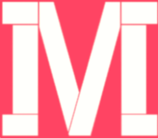 Bilbao, Spain-based of the modular typeface McDonald's Custom Type (2014). [Google]
[More] ⦿
Bilbao, Spain-based of the modular typeface McDonald's Custom Type (2014). [Google]
[More] ⦿
|
Elena Ramirez
|
Spanish graphic and web designer. In 2016, with Octavio Pardo, she designed Cubit, a custom monospaced typeface for a Chicago-based interior design Studio. [Google]
[More] ⦿
|
Ellmer Stefan
[The Pyte Foundry]
|
 [More] ⦿
[More] ⦿
|
Ellmer Stefan & Johannes Lang
[Stefan Ellmer]

|
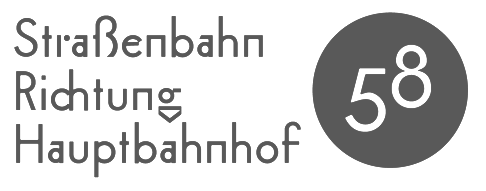 Stefan Ellmer is a Norwegian type designer based in Oslo. In 2014, he set up the commercial type foundry Ellmer Stefan & Johannes Lang with Johannes Lang.
Stefan Ellmer is a Norwegian type designer based in Oslo. In 2014, he set up the commercial type foundry Ellmer Stefan & Johannes Lang with Johannes Lang. Codesigner with Joakim Jansson and Dag Laska of the bespoke typeface Aker Brygge Display (2012). For an architecture magazine, he created Corvus Corax at Skin Designstudio. The Science typeface family was commissioned by Work AS. In 2013, Stefan is in the stages of publishing Essay, a wonderful very readable angular text typeface, at Type Together. Ellmer was finally published in 2014 as Essay Text. Other typefaces in development include Amalgam and Yorrick Tristram (a baroque typeface). He also designed the grotesque typeface family Georges. Still in 2013, Johannes Lang and Stefan Ellmer co-designed the free display typeface Brevier Viennese (Langustefonts). It is based on a Victorian typeface called Viennese by the Fann Street Foundry from 1874. In 2014, he created Ur 1927 and writes: Ur 1927 is a digital reanimation of the original sketches by Paul Renner made for the typeface that later became Futura as part of the social-housing program Das Neue Frankfurt in 1927. Ur 1927 is not an auto-traced imitation neither an interpretation of the original source---like other revivals of pre-digital type---but an attempt to grasp the inherent design principles of the original design and the ideological impetus intended by its maker. Ur 1927 is sticking stubbornly to the sketches made in 1927---not performing any optical compensations or deviations from geometrical construction. In addition it incorporates all (!) alternative---radical even to contemporary eyes---letter shapes drawn by Renner. Schouss Plass (2014) is an angular display typeface developed for Schous Plass, a youth café and concert hall in Grünerløkka, Oslo. In 2014, Johannes Lang and Stefan Ellmer revived the frilly Victorian typeface Stencil Gothic originally designed by John West in 1885. Sentralen Oslo (2016). They write: A set of 3 text and one display typefaces for the branding of a new multidisciplinary cultural site based in the old town of Oslo, Kvadraturen. The text styles are based on the former stationary of the Oslo Sparebank, which later became the foundation responsible for the redefintion of the old bank building. The display typeface is a derivate of the logotype (not shown) and is intended for use in the site's wayfinding system. These typefaces were commissioned by and developed in close collaboration with Metric Design, Oslo. Levvel Script (2016) is a brush script based on illustrator Bjørn Rune Li's distinct handwriting style. It was commissioned by Scandinavian Design Group. Gustav Display (2018) is an exclusive (lapidary, roam, inscriptional, wedge serif, all caps) typeface for the celebration of Gustav Vigeland's 150th birthday in 2019. Commissioned by the Vigeland Museum in Oslo, it was designed by Ellmer Stefan under the Art Direction of Anders Hofgaard (NODE Berlin Oslo), and is based on an inscription accompanying one of Vigeland's sculptures. In 2018, Ellmer Stefan designed a custom sans typeface for Diller Scofidio + Renfro. Behance link. [Google]
[MyFonts]
[More] ⦿
|
Elsa Lorich
|
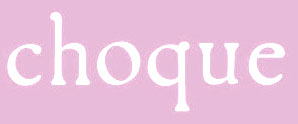 Paris-based designer of the Bodoni revival Hello (2015), the warm rounded text typeface Zebu (2016) and the modular condensed sans typeface ModuloOuLipo (2016). For Citroen, she co-designed the wide sans typeface Cabrio (2016) with Philippe Gauthier. She also did a Bodoni revival called Bodoni 1818 (2016). [Google]
[More] ⦿
Paris-based designer of the Bodoni revival Hello (2015), the warm rounded text typeface Zebu (2016) and the modular condensed sans typeface ModuloOuLipo (2016). For Citroen, she co-designed the wide sans typeface Cabrio (2016) with Philippe Gauthier. She also did a Bodoni revival called Bodoni 1818 (2016). [Google]
[More] ⦿
|
Emtype
[Eduardo Manso]

|
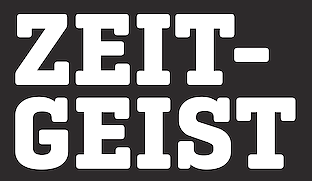 Emtype is the foundry in Barcelona that was founded in 1997 (in Buenos Aires) by Eduardo Manso. Eduardo was born in Buenos Aires in 1972 and studied graphic design at the Escuela de Artes Visuales Martín A. Malharro and at the Universidad Nacional de Mar del Plata, both in Mar del Plata. Art director of the Argentinian graphic design mag "el Huevo". He currently lives in Barcelona. His typefaces include the pixel font family Dixplay (2003, Emtype), the grunge font Eroxion (1997) and Rina Linea and Rina (2001), all at Bitstream, the Scotch roman text family Bohemia (2004), Andromeda ([T-26]), Garadonis, Fluxus, Ovalus (2005, free dot matrix face), Relato (2005, advertised as a muscular serif family), Relato Sans (2005, which won an award at TDC2 2006), Merss (2000, ITC), Argot (2004, winner of an award at TDC2 2004), Flour, and Flour Inline.
Emtype is the foundry in Barcelona that was founded in 1997 (in Buenos Aires) by Eduardo Manso. Eduardo was born in Buenos Aires in 1972 and studied graphic design at the Escuela de Artes Visuales Martín A. Malharro and at the Universidad Nacional de Mar del Plata, both in Mar del Plata. Art director of the Argentinian graphic design mag "el Huevo". He currently lives in Barcelona. His typefaces include the pixel font family Dixplay (2003, Emtype), the grunge font Eroxion (1997) and Rina Linea and Rina (2001), all at Bitstream, the Scotch roman text family Bohemia (2004), Andromeda ([T-26]), Garadonis, Fluxus, Ovalus (2005, free dot matrix face), Relato (2005, advertised as a muscular serif family), Relato Sans (2005, which won an award at TDC2 2006), Merss (2000, ITC), Argot (2004, winner of an award at TDC2 2004), Flour, and Flour Inline. Argot was renamed Bohemia (published in 2004 with Linotype), and won an award at the Linotype International Type Design Contest 2003. EMT Lorena won an award at TDC2 2007. He custom designed Sunday Times Modern (2008) for the Sunday Times. Still in 2008, he published Geogrotesque, a semimodular geometric display typeface in 7 styles. Geogrotesque won an award at Tipos Latinos 2010. This was followed in 2009 by Geogrotesque Stencil and in 2015 by Geogrotesque Stencil Italic, Geogrotesque Compressed, Geogrotesque Condensed, and Geogrotesque Extra Compressed. In 2016, he added Geogrotesque Slab, in 2018 Geogrotesque Cyrillic, in 2019 Geogrotesque Expanded and in 2020 Geogrotesque Sharp (98 styles, and a variable font). He created the custom typeface La Grilla. Periodico (Text, Display) was originally commissioned by the Spanish daily newspaper 'ABC', and was published as a 30-font family with lots of old Spanish ingredients in 2011. In 2012 the London agency GBH commissioned Emtype to develop a custom typeface for the Puma football teams for use in the Brazil World Cup 2014 as well as in the national competitions. Ciutadella (2012) was originally commissioned by Mario Eskenazi's studio. It is a versatile geometric sans serif, a simple, clean and direct family. In 2015, Emtype published Ciutadella Rounded and in 2016 Ciutadella Slab and Ciutadella Display. Typefaces from 2014: Shentox. This squarish nearly monoline typeface family started out from British license plates. Camber (2015) is a workhorse sans typeface, slightly squarish and on a geometric base. Eduardo's keen eye strikes again in the variable width grotesque typeface family Akkordeon (2017), whose black weight will give Impact serious competition. Akkordeon Slab< (2017) is equally impressive. Other typefaces from 2017: Isotonic (a rounded almost monoline sans typeface based on Ciutadella). Corporate typefaces: Sunday Times, Lorena Serif (newspaper type; certificate of excellence in TDC2 2007). Typefaces from 2018: Steradian (a geometric sans), Aribau Grotesk (a low contrast geometric sans). Typefaces from 2019: Approach (a low contrast sans in the style of the earliest grotesques, with slightly angled terminals and plenty of elbow pipes, and a characteristic snub nose "1"). Typefaces from 2020: Approach Mono (a typewriter or programming font family derived from Approach), Majorant (a stocky monoline avant-garde geometric sans). Typefaces from 2021: Classike (a 13-style high contrast squarish display typeface inspired by art deco), Chiaroscura (Eduardo writes: inspired by an art technique, Chiaroscura is a display typeface that conveys elegance and finesse; it has high contrast, sharp terminals and compact vertical proportions that makes it ideal for headlines), Inklination (a low x-height neo-grotesque with five romans, ten italics, five monospaced versions and 50 fun fists and icons). Interview in 2013. Myfonts page. Linotype page. Behance link. FontShop link. Klingspor link. Catalog of Eduardo Manso's typefaces. View Eduardo Manso's typefaces. View even more of Eduardo Manso's typefaces. [Google]
[MyFonts]
[More] ⦿
|
Enigma Design
|
Design consortium in Puebla, Mexico. Behance link. They created some logotypes and typefaces for branding, such as a type family, UDLAP, for the Universidad de las Americas Puebla. Croqueta (2012) is an informal sans typeface. Tentempié (2012) is custom designed for a Spanish restaurant by that name. [Google]
[More] ⦿
|
EPS51
|
 Design studio of Ben Wittner, Sascha Thoma and Daniel Fürst, located in Berlin. Custom fonts made by them include Newface 51 (for M4 Models / Newfaces), Rayon51 (2011, a monoline sans for the magazine Animated), Futur-A-Script (2010), Bodoni Stencil (2009, for Chris Holzinger), Baseet (2009, an Arabic script typeface done with Pascal Zoghbi), Holzinger51 (2008), and the Talib family of typefaces (2008, Arabic simulation fonts). [Google]
[More] ⦿
Design studio of Ben Wittner, Sascha Thoma and Daniel Fürst, located in Berlin. Custom fonts made by them include Newface 51 (for M4 Models / Newfaces), Rayon51 (2011, a monoline sans for the magazine Animated), Futur-A-Script (2010), Bodoni Stencil (2009, for Chris Holzinger), Baseet (2009, an Arabic script typeface done with Pascal Zoghbi), Holzinger51 (2008), and the Talib family of typefaces (2008, Arabic simulation fonts). [Google]
[More] ⦿
|
Eran Bacharach
[Bee Creations]
|
[More] ⦿
|
Eric de Berranger

|
 French designer (b. 1973) whose early fonts could be bought from 2Rebels in Montreal, and at La Fonderie. These are now available via FontHaus. Some creations at 2Rebels: Malcom Light and Malcom Light Expert, Coeval (1998), Coeval Expert (1998), Garaline (1998), Garaline Expert (1998), Hector 1, Hector 2, Helwissa, Jandoni (great didone titling face!), Malcom (1999), Malcom Expert, Troiminut (1998, perhaps created in under three minutes).
French designer (b. 1973) whose early fonts could be bought from 2Rebels in Montreal, and at La Fonderie. These are now available via FontHaus. Some creations at 2Rebels: Malcom Light and Malcom Light Expert, Coeval (1998), Coeval Expert (1998), Garaline (1998), Garaline Expert (1998), Hector 1, Hector 2, Helwissa, Jandoni (great didone titling face!), Malcom (1999), Malcom Expert, Troiminut (1998, perhaps created in under three minutes). He also made typefaces at ITC. These include ITC Octone (1998, a great flared lapidary typeface family), ITC Octone Expert (1998), ITC Berranger Hand and ITC Oldbook. Typefaces at Agfa / Monotype / Linotype include the Mosquito family (Agfa, 2001; Mosquito Formal appeared in 2003), Maxime (garalde family), and Koala. Other typefaces include Yesselair (1998, La Fonderie), Hamely, Klory, Kolinear (2009, angular), Merlin, Collos (hexagonal), Pack Trash (another name for Yesselair?), NLE2B210, EricMainDroite, June (an elegant garalde / antiqua /Venetian crossbreed). With Stéphane Gambini, he started La Fonderie. He does visual identity stuff for companies in France, most notably, the logo and logo font for Renault (2004). In 2005, he revived a 1972 didone of Hollenstein Studio as Natalie (no sales or downloads). In 2006, he created a 6-weight legible sans family for the STIP (Brussels transport society) called Brusseline. In 2007, he created the bold gothic headline typeface LFP Bold for the Ligue de Football Professionnel. In 2008, he published the stunning connected script Hermès Scripte used by the fragrance company by that name, and Martini (for the aperitif brand). Klingspor link. FontShop link. View Eric de Berranger's retail typefaces. [Google]
[MyFonts]
[More] ⦿
|
Eric Liles
|
Kansas City, MO-based designer of Cuna (2019), a custom titling typeface for the band Making Movies. [Google]
[More] ⦿
|
Ericsson Roman and Sans
|
The house fonts of Ericsson, based on Garamond No.3 and Neue Helvetica. [Google]
[More] ⦿
|
Erik Bertell
[Erik Jarl Bertell]

|
 Helsinki, Finland-based Erik Bertell graduated from Lahti Institute of Design. His fonts include Neon, Mama and Mama Round. Born in Helsinki in 1980, Erik was at first a type designer for Fenotype, which was founded by his brother Emil Bertell. He holds an MA in graphic design from aalto University in Helsinki. Around 2012, he set up his own foundry, simply called Erik Bertell.
Helsinki, Finland-based Erik Bertell graduated from Lahti Institute of Design. His fonts include Neon, Mama and Mama Round. Born in Helsinki in 1980, Erik was at first a type designer for Fenotype, which was founded by his brother Emil Bertell. He holds an MA in graphic design from aalto University in Helsinki. Around 2012, he set up his own foundry, simply called Erik Bertell. Erik's fonts EB Base Mono (2009, monospaced), EB Futuretro (2002, bilined art deco techno face), EB Neon (2002), EB Boogie Monster (2002, multiline prismatic op art family), EB Vintage Future and EB Humboldt (2002, ultra fat). EB Martin (2010) is, in his own words, a post modern take on several traditional blackletter types. EB Bellissimo Display (2010) is a rounded monoline geometric sans typeface family. EB Jessica (2011) is part typewriter, part cemetery. Typefaces from 2013: Steamer (which he calls a grimy grotesque), EB Vintage Future, EB Martin (blackletter), EB Jessica Condensed Book. Moomin (2015) is a custom typeface designed for the Moomin brand. It is based the type used in the early comic strips by Tove Jansson, the author and creator of the Moomins. Cavalier (2016) is an avant-garde sans in the style of the 1970s. Typefaces from 2018: Capital (a sans and serif family by Teo Tuominen, Erik Jarl Bertell and Emil Karl Bertell). Typeface from 2019: Portland (a reverse contrast typeface by Emil Bertell, Erik Bertell and Teo Tuominen), Taurus (an all caps logotype family by Emil Bertell, Erik Bertell and Teo Tuominen), Zeit (a transitional text typeface by Emil Bertell, Erik Bertell and Teo Tuominen), Avion (a sans family by Emil Bertell, Erik Bertell and Teo Tuominen), Fabrica (a decorative frilly didone by Emil Bertell, Erik Bertell and Teo Tuominen), Tapas (by Emil Bertell, Erik Bertell and Teo Tuominen: a Serif, Sans, Deco and Script collection), Galatea (a 48-style sans family by Erik and Emil Bertell), Well (Erik Bertell and Toni Hurme: a wavy custom display typeface for Well Coffee), Morison (a great 32-style wedge serif typeface by Erik and Emil Bertell and Teo Tuominen), Frank Sans (grungy). Typefaces from 2020: Laurel (by Teo Tuominen, Emil Bertell and Erik Bertell: a 4 style sans with amnay wedge elements), Resolve Sans (by Teo Tuominen, Emil Bertell and Erik Bertell: an extensive grotesk super family of 124 fonts: from compressed to extended, thin to black), Rockford Sans (2020: an 8-style geometric sans with large x-height and slightly rounded corners; Emil Bertell, Erik Bertell and Teo Tuominen), Walden (a heavy rustic serif typeface by Emil Bertell, Erik Bertell and Teo Tuominen), Klik (a geometric sans family with Bauhaus influences, by the dynamic trio of Emil Bertell, Erik Bertell and Teo Tuominen). Typefaces from 2021: Imagist (a 12-style sharp-edged serif by Emil Bertell, Erik Bertell and Teo Tuominen), Alonzo (a 24-style Peignotian sans by Emil Bertell, Erik Bertell and Teo Tuominen), Maine (a 12-style modernized book antiqua by Emil Bertell, Erik Bertell and Teo Tuominen), Lagom (a 16-style slab serif with some Clarendon charm; by Emil Bertell, Erik Bertell and Teo Tuominen), Wonder (a 12-style rounded serif in the style of Windsor; by Emil Bertell, Erik Bertell and Teo Tuominen), Grand Cru (a refined serif family with 36 styles; by Emil Bertell, Erik Bertell and Teo Tuominen). Link to Bond Creative Agency. Behance link. [Google]
[MyFonts]
[More] ⦿
|
Erik Jarl Bertell
[Erik Bertell]

|
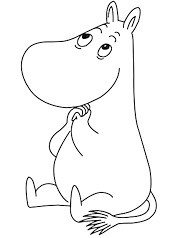 [MyFonts]
[More] ⦿
[MyFonts]
[More] ⦿
|
Erik Spiekermann

|
 German type designer and graphic designer par excellence, born in 1947 in Stadthagen. He set up MetaDesign in Berlin in 1979. In 1988 he set up FontShop, home of the FontFont collection. He holds an honorary professorship at the Academy of Arts in Bremen, is board member of ATypI and the German Design Council, and president of the ISTD (International Society of Typographic Designers). In July 2000, Erik left MetaDesign Berlin. He now lives and works in Berlin, London and San Francisco, designing publications, complex design systems and more typefaces. He collaborated on the publication of the comprehensive FontBook. Author of Stop Stealing Sheep & Find Out How Type Works (2nd Edition) (Adobe Press, Second Edition, 2002, First Edition, 1993). He taught typography at the Art Academy in Bremen, and is guest-lecturer at several schools around the world.
German type designer and graphic designer par excellence, born in 1947 in Stadthagen. He set up MetaDesign in Berlin in 1979. In 1988 he set up FontShop, home of the FontFont collection. He holds an honorary professorship at the Academy of Arts in Bremen, is board member of ATypI and the German Design Council, and president of the ISTD (International Society of Typographic Designers). In July 2000, Erik left MetaDesign Berlin. He now lives and works in Berlin, London and San Francisco, designing publications, complex design systems and more typefaces. He collaborated on the publication of the comprehensive FontBook. Author of Stop Stealing Sheep & Find Out How Type Works (2nd Edition) (Adobe Press, Second Edition, 2002, First Edition, 1993). He taught typography at the Art Academy in Bremen, and is guest-lecturer at several schools around the world. In October 2003, he received the third Gerrit Noordzij Prize, which is given every other year to a designer who has played an important role in the field of type design and typography. It is an initiative of the postgraduate course in Type&Media at the Hague Royal Academy of Art with the Meermanno Museum (The Hague). His essay on information design. Biography. Bio at Linotype. Laudatio by John Walters of Eye Magazine. Blog. Presentation at ATypI 2006 in Lisbon. Presentation at ATypI 2008 in St. Petersburg. Interviewed in 2006 by Rob Forbes. Speaker at ATypI 2010 in Dublin. He made the following typefaces and type families: - Lo-Type (1913, Louis Oppenheim) was digitally adapted by Spiekermann for Berthold in 1979-1980. BERTLib sells it as Adlon Serif ST.
- PT 55 (1986), the precursor of FF Meta.
- Berthold Block
- Berliner Grotesk (1979-1980, Berthold): based on an old Berthold AG typeface from 1923.
- FF Govan (2001, by Ole Schaefer and Erik Spiekermann).
- The huge families FF Meta1, FF Meta2, FF Meta3 (2003), FF Meta Condensed (1998) and FFMetaCorrespondence. The FF Meta families (1985) were originally designed for Bundespost, which did not use it--it stayed with Helvetica for a while and now uses Frutiger. Meta comes with CE, Cyrillic, Greek and Turkish sets as well. Weights like Meta Light (Thin, Hairline) Greek are available too. Spiekermann is a bit upset that Linotype's Textra (2002, a typeface by Jochen Schuss and Jörg Herz) looks like a cloned of Meta. FF Meta Condensed won an award at Modern Cyrillic 2014.
- Meta Serif (2007) by Christian Schwartz, Kris Sowersby and Erik Spiekermann. Later extensions by Ralph du Carrois and Botio Nikoltchev.
- ITC Officina in versions Sans Book (1989-1990) and Serif Book (1989-1990).
- Boehringer Sans and Antiqua (1996): custom types.
- Grid, which appeared in FUSE 3.
- Codesigner with Ole Schaefer (FontShop, 2000) of FF InfoDisplay and FF InfoText in 1997 and of FF InfoOffice in 2000.
- NokiaSans and NokiaSerif (2002, company identity family). This was in cooperation with Jelle Bosma. Before Nokia Sans and Serif, Nokia used Rotis. Nokia Sans and Serif were replaced by Nokia Pure (Bruno Maag) in 2011.
- Glasgow Type (1999), for the city of Glasgow, taking inspiration from the Rennie Macintosh types.
- Heidelberg Gothic (1999).
- Symantec Sans and Serif (2003): custom types.
- FF Unit (2003-2004; see also here), another sans family, which won an award at TDC2 2004. This was followed by FF Unit Rounded. And FF Unit Rounded started according to Erik as Gravis, the largest Apple dealer in Germany. FF Unit Slab (2009) is the product of a cooperation between Kris Sowersby, Christian Schwartz, and Erik Spiekermann.
- ITC Officina Display (2001).
- FF Meta Thin Light and Hairline (2003) and FF Meta Headline (2005). Developed jointly with Christian Schwartz and Josh Darden.
- Bosch Sans and Bosch Serif (2004).
- The SeatMeta family (2003) for Seat.
- DB Type in six styles (Serif, Sans, Head, Condensed, Compressed, News): designed in 2005 in collaboration with Christian Schwartz for the Deutsche Bahn (train system in Germany). Some typohiles say that it reminds them of Bell Gothic and Vesta.
- A Volkswagen company family based on a correction of Futura.
- The DWR House Numbers Series (2006): four fonts with numerals for house numbers: Contemporary House Numbers, Tech House Numbers, Classic House Numbers (based on Bodoni), Industrial House Numbers (stencil). DWR stands for Design Within Reach.
- Tech (2008, FontStruct), a rounded squarish headline face.
- Axel (2009): developed jointly with Erik van Blokland and Ralph du Carrois, it is a system font with these features:
- Similar letters and numbers are clearly distinguishable (l, i, I, 1, 7; 0, O; e, c #).
- Increased contrast between regular and bold.
- High legibility on the monitor via Clear Type support.
- Seems to outperform Courier New, Verdana, Lucida Sans, Georgia, Arial and Calibri, according to their tests (although I would rank Calibri at or above Axel for many criteria).
- In 2012-2013, Ralph du Carrois and Erik Spiekermann co-designed Fira Sans and Fira Mono for Firefox / Mozilla. This typeface is free for everyone. Google Web Font link. Open Font Library link. It is specially designed for small screens, and seems to do a good job at that. I am not a particular fan of a g with an aerodynamic wing and the bipolar l of Fira Mono, though. Mozilla download page. CTAN link. Google Web Fonts download page. Google web Fonts published Fira Sans Condensed (2012-2016) and Fira Sans Extra Condensed in 2017.
- In 2013-204, Erik created HWT Artz, a wood type published in digital form by P22, which is based on early 20th century European poster lettering. Named after Dave Artz, a Hamilton Manufacturing retiree and master type trimmer, the proceeds of the sales will go to the Hamilton Wood Type and Printing Museum.
- In 2015, Fontfont published FF Real, in 13 weights each for FF Real Text and FF Real Head. This typeface family by Erik Spiekermann and Ralph Olivier du Carrois is influenced by the German grotesques from ca. 1900 by foundries such as Theinhardt and H. Berthold AG.
- In 2022, Erik Spiekermann, Anja Meiners, and Ralph du Carrois published the neo-grotesque superfamily Case at Fontwerk. It includes Micro and Text subfamilies.
Picture of Eric Spiekermann shot by Chris Lozos at Typo SF in 2012. FontShop link. View Erik Spiekermann's typefaces. [Google]
[MyFonts]
[More] ⦿
|
Erkin Karamemet
[Studio Karamemet]
|
[More] ⦿
|
ErlerSkibbeTönsmann (and: Character Type)
[Henning Hartmut Skibbe]

|
 ErlerSkibbeTönsmann is an agency for corporate, editorial and typeface design in Hamburg, Germany. Its main type designer is Henning Hartmut Skibbe, a German communications designer located in Potsdam and/or or Hamburg, b. 1979. He studied graphic design at the University of Applied Science Potsdam and was a typeface design student of Luc(as) de Groot. Some time around 2019, Henning Skibbe set up Character Type and joined The Type Department. Skibbe's typefaces:
ErlerSkibbeTönsmann is an agency for corporate, editorial and typeface design in Hamburg, Germany. Its main type designer is Henning Hartmut Skibbe, a German communications designer located in Potsdam and/or or Hamburg, b. 1979. He studied graphic design at the University of Applied Science Potsdam and was a typeface design student of Luc(as) de Groot. Some time around 2019, Henning Skibbe set up Character Type and joined The Type Department. Skibbe's typefaces: - Arctic (2006). A headline font family. Arctic Black Basic is free.
- Haptic (2008): a sans logotype that won an award at TDC2 2009). In 2015, Skibbe followed this up with the connected brush signage family Haptic Script. In 2019, HapticScript and Haptic Pro were rereleased at his own type foundry, Character Type.
- Nautik (2004-2006). A free calligraphic take on Courier. Image by Francisco Baudizzone.
- News Sans (2019). Ninety styles of pure newspaper and information design type.
- Skibfont (2002-2003). A free calligraphic font.
- Codesigner with Johannes Erler in 2009 of FF Dingbats 2.0, a redesign and update of FF Dingbats (1993). This was followed in 2014 by FF Dingbats 2.0 UI and FF Dingbats 2.0 Inverted UI.
- The agency did the typeface design for Sueddeutsche Zeiting in 2011-2012. Its new corporate typeface, SZ (Serif, Sans, Sans Condensed, Text, 40 fonts in all), is described as follows by Henning's codesigner, Nils Thomsen: In 2011 and 2012 I participated on the corporate typeface for the German daily, "Süddeutsche Zeitung", at the office "Bureau ErlerSkibbeToensmann". Hand in hand with type designer Henning Skibbe and art director Christian Tönsmann the different styles and weights were carefully designed. The technical part was edited by fontshop.com. SZ Text is based on Excelsior (Chauncey H. Griffith, 1931). The new typeface got narrower and the capitals smaller and lighter. To this we added lots of new details, which worked better and made it overall more efficient in tight columns and line spacing. SZ Serif is based on SZ Text and replaced the "Times" (Stanley Morison, 1931). Higher contrast and slightly narrower letter shapes makes it more useful for headline typography. SZ Sans is designed for strong headlines and replaces "Helvetica" (Max Miedinger, 1957). Simple and silent shapes gives the right touch to the neutral character of "Süddeutsche Zeitung". SZ Sans Condensed is made for tables in the sport or economy segment. It replaces FF Unit (Erik Spiekermann & Christian Schwartz, 2003-2011).
- In 2019, Skibbe published these four editorial design font families at Character Type: News Sans Compressed, News Sans Condensed, News Sans Extended, News Sans Wide. He writes: The News Sans family was designed to allow for a maximum range of visual shades when creating a typographic look, effortlessly ranging from loud and expressive, to subtle and reserved. The large x-height combined with low ascenders and descenders allows for tight and efficient designs. All sharp corners were trimmed off to add character and a nuance of extra space. NewsSans' strokes link humanist curves with American Grotesque details and solid square stems. Make no mistake, the w and other glyphs reveal fashionista hipster ideas from the 2010s, thus moving these families a bit away from old school American grotesques. In 2020, at The Type Department, News Sans was released under the new name New Sans (Compressed, Extended). Later in 2020, Skibbe released News Serif (20 styles, three optical sizes).
MyFonts page. Linotype page. FontHaus page. Behance link. URL for Skibbe. Klingspor link. [Google]
[MyFonts]
[More] ⦿
|
Esther de Boer
|
Dutch designer who created these corporate typeface with Amsterdam-based Edgar Walthert: - Toneelmakerij typeface (by Edgar Walthert in collaboration with Esther de Boer for the identity of the Dutch theater company De Toneelmakerij). Contains many icons.
- This Is Africa typeface for Ghetto Radio in Nairobi.
[Google]
[More] ⦿
|
Estudio CH
[Cristóbal Henestrosa]

|
 Cristóbal Henestrosa (Estudio CH, Tlalpan, Mexico) is the Mexican designer (b. 1979, Mexico City) who co-founded Círculo de Tipógrafos in Mexico. He is professor at four universities in Mexico and an award-winning type designer [read on for details]. Henestrosa has a bachelor's degree in graphic communications from the National School of Plastic Arts (ENAP) of the National Autonomous University of Mexico (UNAM), where his student project in 2003 was Espinosa, and a Master's degree in typographic design from the Center for Gestalt Studies, Veracruz, August 2009, where his thesis was entitled Fondo. La familia del Fondo de Cultura Económica. He is professor of typography and type design at UNAM. He has also taught at the National Fine Arts Institute's School of Design. In 2012, Cristobal Henestrosa, Laura Meseguer and José Scaglione coauthored Como Crear Tipografias (Brizzolis S.A., Madrid, Spain). He lives in Heroes de Padierna, Mexico.
Cristóbal Henestrosa (Estudio CH, Tlalpan, Mexico) is the Mexican designer (b. 1979, Mexico City) who co-founded Círculo de Tipógrafos in Mexico. He is professor at four universities in Mexico and an award-winning type designer [read on for details]. Henestrosa has a bachelor's degree in graphic communications from the National School of Plastic Arts (ENAP) of the National Autonomous University of Mexico (UNAM), where his student project in 2003 was Espinosa, and a Master's degree in typographic design from the Center for Gestalt Studies, Veracruz, August 2009, where his thesis was entitled Fondo. La familia del Fondo de Cultura Económica. He is professor of typography and type design at UNAM. He has also taught at the National Fine Arts Institute's School of Design. In 2012, Cristobal Henestrosa, Laura Meseguer and José Scaglione coauthored Como Crear Tipografias (Brizzolis S.A., Madrid, Spain). He lives in Heroes de Padierna, Mexico. Designer of Espinosa, mentioned here. Author of Espinosa. Rescate de una tipografía novohispana (México, Designio, 2005), a book about Antonio de Espinosa, a 16th century Mexican typographer, who in all likelihood cut the Espinosa type. The commissioned text family Fondo (2007) won an award in the TDC2 2008 competition and at Tipos Latinos 2008 (for extensive type family). Creator of the angry hand-printed typeface Prejidenjia (2008, with Luis Novoa). Speaker at ATypI 2009 in Mexico City, where he introduced the work of 16th century printer Antonio de Espinosa to the world. Espinosa Nova (2009) won an award at TDC2 2010 and a grand prize at Tipos Latinos 2010. Guaca Rock (2009) is a stone chisel typeface based on the logotype of the rock band Botellita de Jerez. Gandhi (jointly designed with Raul Plancarte) won an award at Tipos Latinos 2012. Soberana Sans (Raúl Plancarte and Cristóbal Henestrosa), made for the Mexican Government in 2012-2013, won an award at Tipos Latinos 2014. Ayotzinapa (2015, by Raul Plancarte and Cristobal Henestrosa) won an award at Tipos Latinos 2016. His titling typeface Royal Charter won an award at Tipos Latinos 2018. This is a digital revival by Cristobal Henestrosa based on an experimental typeface named Charter, designed yet never fully finished by William Addison Dwiggins. It is an upright italic, unconnected script typeface, whose main features are a pronounced contrast, condensed forms and exaggerated ascenders. While Dwiggins worked on this project from 1937 to 1955, he only completed the lowercase and a few other characters. However, it was used to set a specimen in 1942 and a short novel in 1946. The sources that Cristobal used for Royal Charter (and later, Mon Nicolette) were the original sketches by WAD as well as printing trails kept at the Boston Public Library, and a copy of the 1946 edition of The Song-Story of Aucassin and Nicolette. This gorgeous typeface can be used successfully in headlines, subheads and short passages of text from 12 points onwards. It was published in 2020 as Mon Nicolette at Sudtipos, where the help of Oscar Yanez was acknowledged. Fontsy link. Mon Nicolette also comes in a variable format with weight and optical size axes. Dafont link. Klingspor link. [Google]
[MyFonts]
[More] ⦿
|
Estudio Negro
|
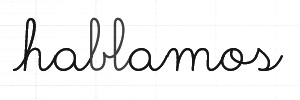 Santiago, Chile-based studio consisting of Tono Luis Rojas Herrera, Pato Patricio Arellano Lufi, Kote José Soto Buzzetti, and Paulina Reyes Naranjo. Kote Soto is the designer of the upright pencil script (school font) typeface TCL Grafito (2016, with Felipe Cceres, ca. 2005) following instructions of the Chilean Minister of Education. They made a corporate typeface called BCH for use by Banco de Chile (2016). Behance link. [Google]
[More] ⦿
Santiago, Chile-based studio consisting of Tono Luis Rojas Herrera, Pato Patricio Arellano Lufi, Kote José Soto Buzzetti, and Paulina Reyes Naranjo. Kote Soto is the designer of the upright pencil script (school font) typeface TCL Grafito (2016, with Felipe Cceres, ca. 2005) following instructions of the Chilean Minister of Education. They made a corporate typeface called BCH for use by Banco de Chile (2016). Behance link. [Google]
[More] ⦿
|
Etienne Aubert-Bonn
|
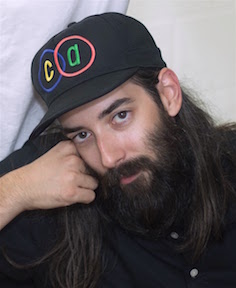 Étienne is a graduate of the graphic and type design program at UQAM in Montreal. Cofounder in 2011 of Coppers & Brasses in Montreal, together with Alexandre Saumier Demers. He studied at Type@Cooper in New York and at KABK in Den Haag, The Netherlands (class of 2013). He also teaches type design at UQAM in Montreal.
Étienne is a graduate of the graphic and type design program at UQAM in Montreal. Cofounder in 2011 of Coppers & Brasses in Montreal, together with Alexandre Saumier Demers. He studied at Type@Cooper in New York and at KABK in Den Haag, The Netherlands (class of 2013). He also teaches type design at UQAM in Montreal. In 2012, he designed the signage typeface Sardine and the blackletter typeface Freitt. Together with Alexandre, he created Martha (a monospaced slabby grotesque), still in 2012. At The Cooper Union, he created Barapa (2012). His fonts at Coppers Brasses: - Double (2015, Alexandre Saumier Demers and Étienne Aubert Bonn). A retail typeface family from condensed to wide with wedge serifs, a copperplate feel, and slight flaring. Ideal for display work.
- Canal (2015). A fantastic retail sans typeface family: Canal is a typeface family inspired by the blue collar, hard working people that were the late 19th and early 20th centuries labor force of the new continent. It is a sturdy workhorse with a wink of humanism.
- Energir (2017). A corporate stencil typeface for Gaz Metro, now called Energir.
- Ilisarniq (2018). Designed for the Kativik School Board---the only school board of Nunavik. The education programs developed by the school board are offered in all schools of the 14 Nunavik communities, in Inuktitut as first language and in French and English as second languages. The school board operates 17 primary and secondary schools as well as 5 adult education centers all over Nunavik. The goal was to create a modern and clean looking typeface that incorporates both the Latin alphabet and the Inuktitut Syllabics characters. The typeface family has been developed with the help of the board and the community to make sure its readability was optimal. The design has also been optimized to make sure that the color of text was similar between the two scripts. The typeface is available for free at Coppers and Brasses.
- With My-Lan, Etienne co-designed Mammouth (2017). Mammouth is a gala on Tele Quebec where teenagers can vote for the people, events, and causes that influenced them the most during the year. This commissioned typeface family contains a heavy and an ultra-fat style.
- Codesigner, with My-Lan Thuong of Maple Leafs (2017), a fast and aggressive typeface commissioned for the Toronto Maple Leafs as a display face to use along with their existing typefaces.
- McGill Sans and McGill Serif (2019), custom designs for McGill University in Montreal.
- Martha (2014, Alexandre Saumier Demers and Étienne Aubert Bonn). A retail typeface family with curvy typewriter influences, some monospaced styles and a grotesque to boot.
- Klaus (2014). Developed for personal web and paper work.
- Théorie (2014, Alexandre Saumier Demers and Étienne Aubert Bonn). A techno stencil typeface commissioned by UQAM's Bureau de Design for the Bâtisseurs of the science faculty award.
- Nurraq (2013). In 2013, Etienne graduated from the Type & Media program at KABK in Den Haag. His graduation typeface is called Nurraq. He explains this Latin/ Inuktitut typeface: Nurraq is a multi-script typeface system that matches a Latin serif text typeface with a Canadian aboriginal syllabics character set for the Inuktitut language. The very different nature and origin of these two scripts creates an interesting context for both typefaces to share influences coming from each other's tradition, and, by doing so, bridging the gap that usually separates these two forms of writing. Nurraq won an award in the Morisawa 2014 type competition.
- Compass (2013). A revival based on the early drawings of Monotype Plantin series 110 by Frank Hinman Pierpont and Fritz Stelzer.
- MLS Soccer (2012). A handcrafted custom typeface by Alexandre Saumier Demers and Étienne Aubert Bonn, commissioned by Sid Lee.
- Triade (2016). A heavy titling or display typeface with tons of personality.
- Hochelaga (2012-2017). In cooperation with Feed Type. An all caps sans inspired by old street signs in Montreal.
- Bookmark (2020). A 2-style geometric sans made for the Canadian mobile company Fizz.
- In 2020, Etienne Aubert Bonn and My-Lan Thuong co-designed Baryton at Coppers and Brasses, a revival of Frank Bartuska's playful photo era didone typeface Century Bartuska.
- Agena and Agena Display (2021). A large display sans family with many hipster traits.
[Google]
[More] ⦿
|
Eugen Papen
|
Chisinau, Moldova-based designer of the dusty textured bespoke typeface Ramuri (2018) for the Romanian Ramuri brand of clothing. [Google]
[More] ⦿
|
Everythinks
|
 Design and corporate identity studio in Lisbon. Creators of the elegant sans headline typeface Caixa Alta (2013), the stencil typeface Caffein (2011), Beedrones (2011, hexagonal), Ink (2012, a heavy brush face), Ecotour Portugal (2012, brush face), Lusofonia (2012, a decomposable typeface), Arte No Feminino (2012, a mosaic typeface), Ponte Romana (2012, a thin avant-garde wine label typeface).
Design and corporate identity studio in Lisbon. Creators of the elegant sans headline typeface Caixa Alta (2013), the stencil typeface Caffein (2011), Beedrones (2011, hexagonal), Ink (2012, a heavy brush face), Ecotour Portugal (2012, brush face), Lusofonia (2012, a decomposable typeface), Arte No Feminino (2012, a mosaic typeface), Ponte Romana (2012, a thin avant-garde wine label typeface). Behance link. [Google]
[More] ⦿
|
Extratype (was: Textaxis)
[Iñigo Jerez Quintana]

|
 Textaxis was Spanish/Catalan foundry run by Barcelona-based Iñigo Jerez Quintana since 1995. In 2015 it was renamed Extratype. Iñigo Jerez's beautiful typefaces include Eina (2013, first designed as a corporate typeface fpr the EINA school in Barcelona), ASM (2013, Type O Tones: ASM stands for the Santa Monica Arts cultural center in Barcelona, where the monospaced typeface ASM has been in use as the custom typeface from 2008 onwards), Poster (2013, plus Display and Monster styles: a fat excessive didone family published by Type O Tones), Scozia (2011, didone), Amy, CX Type, School (fat octagonal face), Hidalgo, 112 Type, Point (2011, rounded typewriter family), Papers (2011, a fat fashion mag didone display family), Slim (2011), Batin (2005, neat garalde family), Palo (2000), Dinamo (1999), Oneline (1998), On Serif (2001), On Sans (2001; with On-Serif, a winner at Bukvaraz 2001), Blok (2004, poster face), Blak (heavy version of Blok), Track (2004, octagonal), Plus (2004, octagonal), Bonus (2004, ink trap face), Interfunktionen (2004, old typewriter), SuiteSerif (2003), Xquare (2003), Interpol (2002), Maeda (2002), Luomo (2002), Borneo (2002), Suite (2001), Self (1999, sans family), Valeria (1997, liquid serif), Inercia (1995, a rounded organic sans done at Garcia Fonts), Latina Sans (1998, a winner at Bukvaraz 2001), Latina Serif (1998), Textaxis (2000, sans).
Textaxis was Spanish/Catalan foundry run by Barcelona-based Iñigo Jerez Quintana since 1995. In 2015 it was renamed Extratype. Iñigo Jerez's beautiful typefaces include Eina (2013, first designed as a corporate typeface fpr the EINA school in Barcelona), ASM (2013, Type O Tones: ASM stands for the Santa Monica Arts cultural center in Barcelona, where the monospaced typeface ASM has been in use as the custom typeface from 2008 onwards), Poster (2013, plus Display and Monster styles: a fat excessive didone family published by Type O Tones), Scozia (2011, didone), Amy, CX Type, School (fat octagonal face), Hidalgo, 112 Type, Point (2011, rounded typewriter family), Papers (2011, a fat fashion mag didone display family), Slim (2011), Batin (2005, neat garalde family), Palo (2000), Dinamo (1999), Oneline (1998), On Serif (2001), On Sans (2001; with On-Serif, a winner at Bukvaraz 2001), Blok (2004, poster face), Blak (heavy version of Blok), Track (2004, octagonal), Plus (2004, octagonal), Bonus (2004, ink trap face), Interfunktionen (2004, old typewriter), SuiteSerif (2003), Xquare (2003), Interpol (2002), Maeda (2002), Luomo (2002), Borneo (2002), Suite (2001), Self (1999, sans family), Valeria (1997, liquid serif), Inercia (1995, a rounded organic sans done at Garcia Fonts), Latina Sans (1998, a winner at Bukvaraz 2001), Latina Serif (1998), Textaxis (2000, sans). Typefaces either made or extended in 2015 when the company was renamed Extratype: ASM (an industrial monospaced sans: ASM stands for the Santa Monica Arts cultural center located in Barcelona where ASM was the corporate typeface from 2008-2013), Blak (a chubby typeface originally designed for the now defunct magazine Suite), Poster (a fat face family, i.e., with ultra-black didone excesses and high contrasts). In 2020, he released the 56-style text family Chamberi (co-designed with Francisco Torres) and wrote: Chamberí is designed to be Vogue Spain's bespoke typeface. An ambitious typographic branding project made for one of the most iconic magazine headers of the world, it defines the Spanish edition's personality through a blending of the functionality of 19th century modern romans (also known as Scotch typefaces) and the gestural expressiveness of typographic Baroque. Chamberi is a peculiar combination of the rational and the delicate, the sturdy and the feminine. It is offered in Text, Headline, Display and (fashion mag) Super Display sub-families. Suite won an award at the TDC2 2003 competition. His Quixote text family (2005) won an award at TDC2 2006 and at Tipo-Q. FontShop link. Klingspor link. [Google]
[MyFonts]
[More] ⦿
|
Eyal & Myrthe
[Eyal Holtzman]

|
 Eyal Holtzman (Den Haag, The Netherlands) is a graphic and type designer who was born in Haifa, Israel in 1969. He studied at the Royal Academy of Art in The Hague, and teaches typography and graphical arts in various places. He set up Studio Eyal and Myrthe together with Myrthe Stel.
Eyal Holtzman (Den Haag, The Netherlands) is a graphic and type designer who was born in Haifa, Israel in 1969. He studied at the Royal Academy of Art in The Hague, and teaches typography and graphical arts in various places. He set up Studio Eyal and Myrthe together with Myrthe Stel. Eyal Holtzman has designed many corporate and some retail typefaces. typefaces for clients such as The Enschedé Font Foundry and Nationale Nederlanden. His work has been exhibited in many places, including in Museum of the Book---Meermanno in Den Haag. MyFonts writes: In the book Ha, daar gaat er een van mij! (Hey, there goes one of mine!, a chronicle of graphic design in The Hague from 1945 to 2000, 010 Publishers, Rotterdam 2002) he is called "one of the most idiosyncratic letter talents from The Hague" and in Dutch Type (010 Publishers, Rotterdam 2004) expert Jan Middendorp describes his letters as being "among the most original alphabets produced in the Netherlands", (...) "tapping into an idiom that no other type designer working in the Netherlands has ever used". His typefaces: - Normandia. Done during his studies at KABK.
- Joel (Book, Display). Done during his studies at KABK.
- Jerusalem (1996). A Latin / Hebrew font that attempts to harmonize the two scripts. This design was part of Eyal's post-graduate type design project at the KABK in 1996 and was later exhibited in Meermanno.
- Rain Birds. Done during his studies at KABK.
- Dille & Kamille. A handwriting font commissioned by a retail chain.
- Soya. A potato cut font done for a book about artist Allie van Altena.
- Rosart. A collaboration with The Enschedé Font Foundry. A revival of the Two Line English Body Rosart, designed in the 18th century by the Belgian type cutter Jacques François Rosart (1714-1777). This revival, based on original type specimens from the J. Enschedé collection, aimed to interpret the spirit of the original design as faithfully as possible. Irregularities in the design had to be kept.
- Staring. A revival of the unknown font used in the poetry book Gedichten van A. C. W. Staring (published by Nicolaas Beets in Zutphen, undated).
- OD 1 2 3. A typeface commissioned by design and advertising agency OD in Rotterdam. The three fonts have identical spacing and can thus be superimposed. Text set this way emulates adhesive tape.
- Sympatico (2016). A special design for the supermarket chain Jumbo, to replace Jumbo The Sans. That work was commissioned by Niels Alkema. The font is in use by the professional bicycle racing team Lotto NL Jumbo.
- Douche (2006). A rounded monolinear sans done originally for the visual identity of theater festival <>Mooi Weer Spelen in Delft. This font mixes upper and lower case, all basically of the same height.
- Kristal (2015, at Bold Monday). This 8-style book typeface with calligraphic roots was published in 2021. It is accompanied by kaleidoscopic ornaments and open caps that are ideal for monumental lettering.
[Google]
[MyFonts]
[More] ⦿
|
Eyal Holtzman
[Eyal & Myrthe]

|
[MyFonts]
[More] ⦿
|
F37 (or: Face37)
[Rick Banks]

|
 Rick Banks (b. 1985, Manchester, UK) established F37 (Face37) in 2010 in London, UK. His typefaces:
Rick Banks (b. 1985, Manchester, UK) established F37 (Face37) in 2010 in London, UK. His typefaces: - F37 Xan (2010). A counterless geometric typeface based on a geometric solid typeface from 1925 by André Vlaanderen.
- F37 Form (2010). A mimimalist circular experimental (Bauhaus?) font. He writes about Form: After looking at Armin Hoffman's Die Gute Form poster and Herbert Bayer's universal typeface I constructed an alphabet based on their letterforms. Inspired by Wim Crouwel's Soft Alphabet, I constructed a grid to create the modular alphabet and programmed very tight letterspacing into the font lending itself to the style of Die Gute Form.
- F37 Bella (2011). An extremely contrasted didone display typeface. He says that he was influenced not only by Didot, but also by Pistilli and by Tschichold's Saskia. F37 Bella won an award at TDC Tokyo 2012. See also F37 Bella Pro (2020), in Text, Hairline, Stencil and Display substyles.
- F37 Ginger (2013). A Swiss geometric sans inspired by the work of Herb Lubalin, Jan Tschichold and Paul Renner. The customized version of F37 Ginger, Boots Sharp (2019), was commissioned by Coley Porter Bell and True Story as part of an extensive rebrand. F37 Ginger Pro was released in 2019.
- F37 Neue Grotesque (2013).
- F37 Stencil Bella (2013).
- F37 Glaser Stencil (2015).
- F37 Bolton (2016). A sans family influenced by the style of Berthold's G.G. Lange.
- F37 Jan (2016). Inspired by Jan Tschichold's geometric sans-serif and Matthew Carter's Bell Centennial font, F37 Jan features pronounced ink traps.
- F37 Jagger (2017). A sans inspired by Edward Johnston's London Underground font.
- F37 Bergman (2017). A Peignotian typeface family that revives a revival Hans Möhring's Florida typeface. The Swedish director Ingmar Bergman consistently used Florida in his films.
- BHF Beats (2018): Working alongside Wolff Olins we were comissioned to create the new font for the British Heart Foundation. The letterforms are based on their iconic logo featuring waves of a heart beat.
- F37 Bobby (2018). A warm text typeface.
- F37 Ping Pong (2018). A 1970s style dot matrix font that was inspired by the 1970s Letraset font Pinball created by Alan Dempsey.
- F37 Factory (2019). Named after Andy Warhol's The Factory in New York City, F37 Factory was inspired by stencil letters etched into marble in what was once a Hovis flour mill in Ramsgate. That building was designed by E. W. Pugin. F37 Factory was originally conceived for a commercial development project for Want Marketing and commissioned by London design studio Bold & Bold.
- F37 Judge (2019). Banks's take on DIN and old wood types.
- F37 Moon (2019). Influenced by Avant Garde and Futura, in 14 styles.
- F37 Flux (2019). Experimental and intestinal.
- F37 Neuro (2019). A Swiss sans family.
- F37 Beckett (2020). A sans based on British road signs from the 1930s. F37 Beckett pays homage to the British Ministry of Transport's 1933 alphabet.
- F37 Stout (2020). An octagonal family base on a letterpress font called Stoutheart.
- F37 Gruffy (2020). A grotesque.
- F37 Hooj (2020). A geometric sans family.
- F37 Wicklow (2020). A 24-style wedge serif inspired by the Gaelic letter carvings by Irish sculptor Michael Biggs in Dublin. It includes a set of stencil fonts as well.
- F37 Snake (2020). an octagonal industrial stencil typeface inspired by John Carpenter's film Escape From New York.
- F37 Caslon (2020). He explains why the world needs another Caslon: F37 Caslon is our personal take on a stone-cold classic. Originally designed by William Caslon in 1726, this old-style serif has fascinated typographers ever since. Over the years, the font has been tweaked, reworked, modernised, pulled, stretched, squashed and embellished, as successive generations have created their own versions of Caslon, particular to their times and tastes. We have taken the best of these seminal Caslon revisions to create our own super family in a huge range of weights and styles. Our cut features a tall x-height, old-style numerals, capital italic swashes, ligatures and discretionary ligatures.
- F37 Grotesc (2021). Inspired by Pica Sans.
- F37 Attila (2021). A sans serif is inspired by Albert Auspurg's Krimhilde (1933).
- F37 Drago (2021). A serif typeface based on Columbus (1892).
- F37 Wyman (2021). F37 Wyman is based on lettering work created by graphic designer Lance Wyman in 1976, which was commissioned as part of the graphic identity marking 200 years of American Independence.
- Corporate typefaces include Dunlop Sans, F37 Selfridges (=F37 Bella), F37 Avid (=F37 Ginger), Pamela (for Foilco), F37 Zip (for the hotel chain), Pizza Pilgrims, Dar Headline (octagonal), Lloyds Bank (icons).
- F37 Lineca (2021). A fifteen-weight geometric sans with a strong emphasis on the horizontal.
- Ocado (2021). A custom sans done for a grocery company.
- Stonewall (2021). A sans font for Stonewall, a cmpany that has championed a world where LGBTQ+ people everywhere are free to be themselves and enjoy life fully.
- F37 Incise (2021). A heavy, experimental display font, inspired by stone cutting.
He also published Type Trumps, a set of playing cards that feature the main typefaces. Behance link. [Google]
[MyFonts]
[More] ⦿
|
Fabian Harb
|
 Dinamo is a Swiss type foundry established by Johannes Breyer and Fabian Harb after graduation from schools in Zurich, Basel and Amsterdam. Johannes and Fabian are visiting teachers at the Estonian Academy of the Arts, Tallinn and regularly teach at UDK Berlin and University of Applied Sciences, St. Gallen. Their typefaces:
Dinamo is a Swiss type foundry established by Johannes Breyer and Fabian Harb after graduation from schools in Zurich, Basel and Amsterdam. Johannes and Fabian are visiting teachers at the Estonian Academy of the Arts, Tallinn and regularly teach at UDK Berlin and University of Applied Sciences, St. Gallen. Their typefaces: - Favorit (2014). A basic sans family by Johannes Breyer and Fabian Harb. It was extended to Favorit Hangul by Mingoo Yoon in 2019.
- Grow (2013). An experimental collaborative font family. Many of the members are multilined and even prismatic.
- The heavy sans typeface Heureka (2009-2013).
- Pareto (2016). Western style typefaces.
- In 2019, Johannes Breyer, Fabian Harb and Erkin Karamemet released Whyte and Whyte Inktrap at Dinamo.
- ABC Maxi (2020, Dinamo). An experimental hipster-inspired gemetric sans family designed by Dinamo (Johannes Breyer and Fabian Harb) and Andree Paat).
- In 2020, Fabian Harb and Seb McLauchlan co-designed the extensive grotesque family Marfa at Dinamo. Marfa contains a monospaced subfamily, and comes with two variable fonts.
- Custom typefaces for Kunsthalle Zurich (CH), Warp Records (UK), Elton John (US), Yale Architecture (US), Manifesta 11 (CH), Harvard Graduate School of Design (US), Universal Music (GER), IBA Thüringen (GER), Festival B:om (KR), Gagosian Gallery (US), Planet Mu/Knives (GER/UK), LayTheme (GER) or the German, Estonian and Cyprus Pavillions at the 55th and 56th Venice Biennale.
- ABC Social done with the Dinamo team in 2021 as a retail version of a custom typeface designed by Fabian Harb and Tina Gabriel for the Australian periodical The Monthly in 2017. Harb writes: Dinamo's co-founder Fabian Harb himself first penned ABC Social as the custom display font for The Monthly, Australia's left leaning independent periodical covering politics, society, and culture. Over many years and many time zones, our super team has now extended it in all directions and for widespread release: Malte Bentzen worked on the very light styles, Fabiola Mejía on its monospaced family, Wei Huang on the regular and bold styles, Erkin Karamemet on Italics, with Rob Janes completing the mastering and production work.
Johannes Breyer. Fabian Harb. [Google]
[More] ⦿
|
Fabio Biesel
[SFB Fonts (or: Studio Fabio Biesel)]
|
[More] ⦿
|
Fabio Haag Type (was: ByType, and: Foco Design)
[Fabio Luiz Haag]

|
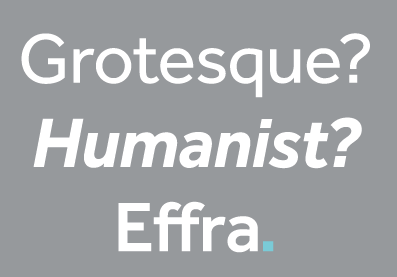 Fabio Haag Type is Fabio Haag's type foundry in Brazil. Earlier, he ran ByType, the type subdivision of Foco Design, and worke for Dalton Maag's Brazilian division. Fabio Luiz Haag (b. 1981, Taquara, Rio Grande do Sul) is located in Sapiranga, Rio Grande do Sul.
Fabio Haag Type is Fabio Haag's type foundry in Brazil. Earlier, he ran ByType, the type subdivision of Foco Design, and worke for Dalton Maag's Brazilian division. Fabio Luiz Haag (b. 1981, Taquara, Rio Grande do Sul) is located in Sapiranga, Rio Grande do Sul. Fabio Haag designed FH After (2006, futuristic display typeface to which After Text and After Headline were added in 2007), FH Foco (2003) (a large x-height sans), this futuristic typeface (2003), and Minas Headline, a custom family made for the government of Minas Gerais. He was working on this display font (2005). In 2006, Foco became a Dalton Maag Ltd font family, and Fabio Haag became the new Creative Director of the Brazilian wing of Dalton Maag in 2008. MyFonts sells Foco and Foco Corp (2007). Designer (with Jonas Schudel) of a grotesque sans at Dalton Maag, 2007-2009, called Effra, which was inspired by a 1816 design from the Caslon font foundry. Discussion at Typophile. Followed in 2013 by Effra Corp (Dalton Maag) which also supports Greek and Cyrillic. In 2007, he created the organic sans typeface IronThree. Cordale (2008) is a workhorse serif typeface jointly done with Lukas Paltram at Dalton Maag. Cordale Corp, the corporate edition, includes Latin Extended A, Greek and Cyrillic characters sets. Cordale Arabic was published in 2013. In 2009, Foco Italics was published. At ATypI 2009 in Mexico City, he spoke about Dalton Maag and about the elements necessary to make it in the type business today. In 2012, the Dalton Maag Brazil team designed the font for the Rio 2016 Olympic Games The 5448-character connected script font Rio2016 was developed by Dalton Maag Brazil, and involved a team that includes Fabio Haag, Fernando Caro and Gustavo Soares. Beth Lula is the Branding Director of the Rio 2016 Olympic and Paralympic Games Organising Committee. Passages of the press release: Each letter expresses a characteristic of Rio 2016 Games, its people and city. The letters are written with a single continuous linework, with a fast and fluid movement, suggesting the movements of the athletes in action. The variety of curves in the letters has a unique informality, inspired by the joyfulness of the Brazilian people. Fabio Haag: As a Brazilian typophile, designing the Rio 2016 font was a dream job. This is a milestone for the design scene in Brazil---it's a great example of how type designers can collaborate with graphic designers, sharing their expertise to strengthen an identity. In 2013, Fabio designed Almaq, a pair of sans display typefaces in cuts called Refined and Rough. Codesigner with Bruno Mello, Fernando Caro, Rafael Saraiva and Ron Carpenter of Soleto (2014, Dalton Maag), a sans typeface that won an award at Tipos Latinos 2014. Setimo (2015) was co-designed by Fernando Caro, Ken Gitschier, Fabio Haag and Lukas Paltram at Dalton Maag, and won an award at Tipos Latinos 2016. In 2016, Fabio Haag published Lembra (a sans that was created specifically for branding, characterized by tapered terminals) at his new type foundry, Fabio Haag Type, set up after he left Dalton Maag after eight years. Fabio Haag Type grew in 2020 to a team of four, now also including Ana Laydner, Henrique Beier and Eduilson Coan. In 2019, a variable font option was added top Lembra. In 2017, he designed the 28-unit legible humanist sans variable font family Margem (Fabio Haag Type), which includes a yummy Rounded subfamily. Still in 2017, he developed the sans typeface Sua, which as a variable option. In 2018, he published pictograms for SporTV, a forceful constructivist font for the World Cup 2018 also for SporTV and Furacão (for Atletico Paranaense). Typefaces from 2019: Suzano Sans (a commissioned rounded branding typeface done for Suzano). Typefaces from 2020: Margem (a fine 7-style rounded sans family by Henrique Beier, Ana Laydner and Eduilson Coan). Typefaces from 2021: Seiva (by Henrique Beier, Eduilson Coan and Fabio Haag: a distant relative of Didot, this exotic sans family is partitioned into Text, Display and Poster subfamilies, and welcomes variable font technology), Salva (2021, Fabio Haag Type). A versatile workhorse sans family: Eduilson Coan was the lead designer. He was assisted by the Fabio Haag Type team of Henrique Beier, Ana Laydner and Fabio Haag himself. View Fabio Haag's typefaces. Fabio Haag Type. [Google]
[MyFonts]
[More] ⦿
|
Fabio Luiz Haag
[Fabio Haag Type (was: ByType, and: Foco Design)]

|
 [MyFonts]
[More] ⦿
[MyFonts]
[More] ⦿
|
Fabrizio Schiavi
[Fabrizio Schiavi Design (or: FSD)]

|
 [MyFonts]
[More] ⦿
[MyFonts]
[More] ⦿
|
Fabrizio Schiavi Design (or: FSD)
[Fabrizio Schiavi]

|
 Fabrizio Schiavi was born in Ponte dell'Olio in the Piacenza province in 1971. FSD Fabrizio Schiavi Design in Piacenza was opened in 1998. With Alessio Leonardi, he co-founded Fontology. He also co-launched the experimental graphics magazine Climax in 1994.
Fabrizio Schiavi was born in Ponte dell'Olio in the Piacenza province in 1971. FSD Fabrizio Schiavi Design in Piacenza was opened in 1998. With Alessio Leonardi, he co-founded Fontology. He also co-launched the experimental graphics magazine Climax in 1994. Bio at FontFont where he made FF Mode 01, FF 0069, FF GeabOil, FF9600, FF Trade 01, FF Steel Mix, FF Steel Ring, FF Steel Jones. [T-26] designer of D44 (1994), Lithium (1994, dingbats), Moore895 (1994), Moore899 (1994), Sidewalker (1994), Exit (1988). Many of his typefaces are grungy such as Washed (1994). Some are minimalist, such as Monica Due (1999), Monica (1999), and Eco (2001, developed from a logo in the 70s for Ageco). The latter three fonts are very geometric in nature. Other fonts: Washed (1994), Parakalein, Aurora Nintendo (1995), Aurora CW (1995), Mode01 (1995), GeabOil (1995), 9600/0069 (1995), Fontology (1995), CP Company (2000: a corporate sans), FSDItems (2001), FSDforMantraVibes (2001), Pragmata (2001, monospace, designed for programs), PragmataFlash (2002, a pixel font), Pragmata Pro (2011, still monospaced), Sys (2002), SysFlash (2002, a pixel font), Sys 2.0 (2012, a condensed sans designed for very small print), Virna (2003, a multiline typeface for Italian MTV, discussed here). The Pragmata and Sys series were optimized for screen usage. In addition, Sys has many ink traps, so it prints well at small sizes, and is more legible than Verdana. He does some custom typeface design, such as the innovative sans serif family called CP Company (2000). Other clients include Al Hamra Complex Kuwait, Nike, MTV, YU, Beretta, Abitare magazine, Ferrari and Philip Morris. In 2007, he produced a stencil and signage font, Siruca (see also here), for the Al Hamra Complex, one of highest skyscrapers in the world, located in Kuwait. Siruca Pictograms (2008) is free. In 2015, he followed that up by a non-stencil rounded sans called Sirucanorm: Designed using golden ratio formulas, it's inspired to DIN and Isonorm typeface. In 2013, he published Sys Falso, Abitare Sans (30 weights, originally commissioned by the group Rizzoli Corriere della Sera. Abitare is an Italian magazine). Typefaces from 2014: Nove (a German expressionist typeface inspired by B movie typography: Nove freshly reworks exploitation film era movie poster lettering, refitting the genre to a contemporary audience. The expressive typeface was done for a Nike Italy spoof campaign featuring 1970s cult film director Enzo Castellari and a recently found film reel from his archives, featuring several current Italian athletes and American basketball star Kobe Bryant). The rounded sans typeface Widiba Bank (2015) was co-designed with Jekyll & Hyde in 2015 for the brand identity of the new bank of Gruppo Monte dei Paschi di Siena. In 2016, he designed the custom corporate typeface R&M in art nouveau style. In 2020, he released the (variable) retail version of CP Company called oook. In 2021, he released Nure (a 54-style sans font family that includes a three-axis (weight, optical, width) variable font). At ATypI in Rome in 2002, he spoke about the need for more fonts. Hellofont link. FontShop link. Font Squirrel link. Showcase of Fabrizio Schiavi's typefaces. [Google]
[MyFonts]
[More] ⦿
|
Familjen Sthlm
[Isabelle Rudström-Österlund]
|
Advertising and design-bureau located in Stockholm, Sweden, est. 2011. As part of their business, they design principally custom and corporate typefaces. These include Vasakronan Serif (2019: design lead Isabelle Rudström-Österlund), AIK Display (2021, with a vintage feel), Karnov Display (2021, an angular lapidary typeface for Norstedts Juridik), Northvolt Grit (+Italic) (2021, for the Swedish battery maker), Ica Rubrik Black (2021), Vattenfall Bold (2021). Designers of the free sans font family Familjen Grotesk (2022, a multi-style inktrapped variable font family by Anders Wikstroem, Jonas Baeckman, Matilda Gysing and Kristian Moeller; Google Fonts). Github link for Familjen Grotesk. [Google]
[More] ⦿
|
Fatype
[Anton Koovit]

|
 Foundry, est. in 2012 by Anton Koovit and Yassin Baggar in Berlin, and in Neuchatel, Switzerland. Fatype has designed typefaces for GQ France (such as GQ Baton), Derzeit (2012, Fashion Week Berlin Daily: a typeface by Yassin Baggar and Manuel Schibli), Google and Journal B. Their typefaces include U8 (2010, Anton Koovit: named after the ghost stations underground that were closed in the good old days of the GDR), Aleksei (Anton Koovit) and Adam BP (2008, Anton Koovit).
Foundry, est. in 2012 by Anton Koovit and Yassin Baggar in Berlin, and in Neuchatel, Switzerland. Fatype has designed typefaces for GQ France (such as GQ Baton), Derzeit (2012, Fashion Week Berlin Daily: a typeface by Yassin Baggar and Manuel Schibli), Google and Journal B. Their typefaces include U8 (2010, Anton Koovit: named after the ghost stations underground that were closed in the good old days of the GDR), Aleksei (Anton Koovit) and Adam BP (2008, Anton Koovit). U8 started out as a Berlin subway system signage project based on found lettering. Some glyphs had to designed from scratch. The result is an early modernist typeface with elements of DIN and Bauhaus. Anton Koovit and Yassin Baggar offer a new take on U8 in their UCity typeface family (2019). Typefaces from 2012 include Adam Serif (a book and magazine typeface family). In 2013, Anton Koovit and Yassin Baggar co-designed the low x-height typeface family Baton. In 2014, he created Aleksei. In 2017, he designed the free sans font family Aino (+Bold, +Headline) for use by the Estonian government. Behance link. Blog. Klingspor link. Google Plus link. [Google]
[MyFonts]
[More] ⦿
|
Federico Salesi
|
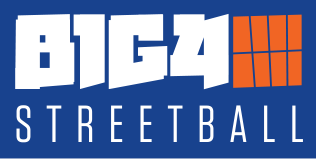 For a branding project for BIG4 streetball, a 3x3 basketball tournament based in La Spezia/East Coast Liguria, Federico Salesi (Florence, Italy) designed the cool custom font Big 4 Streetball (2018). [Google]
[More] ⦿
For a branding project for BIG4 streetball, a 3x3 basketball tournament based in La Spezia/East Coast Liguria, Federico Salesi (Florence, Italy) designed the cool custom font Big 4 Streetball (2018). [Google]
[More] ⦿
|
Feliciano Type Foundry
[Mário Feliciano]

|
 Feliciano Type was established in 2001 by Mario Feliciano. The foundry's main design studio in Lisbon, Portugal, with two additional offices, in Povoa de Varzim, Portugal, and in The Hague, Netherlands. Mário Feliciano (b. 1969, Caldas da Rainha, Portugal). Feliciano studied graphic design at IADE, Lisbon, and began working as a graphic designer at Surf Portugal magazine in 1993, where he stayed as art director until 2000. In 1994 he founded the design studio Secretonix in Lisbon. He has been heavily involved in type design since. In 2005, he joined the type coop Village. John Berry reviews Mario's oeuvre. His gorgeous creations include the following:
Feliciano Type was established in 2001 by Mario Feliciano. The foundry's main design studio in Lisbon, Portugal, with two additional offices, in Povoa de Varzim, Portugal, and in The Hague, Netherlands. Mário Feliciano (b. 1969, Caldas da Rainha, Portugal). Feliciano studied graphic design at IADE, Lisbon, and began working as a graphic designer at Surf Portugal magazine in 1993, where he stayed as art director until 2000. In 1994 he founded the design studio Secretonix in Lisbon. He has been heavily involved in type design since. In 2005, he joined the type coop Village. John Berry reviews Mario's oeuvre. His gorgeous creations include the following: - Escrita ([T-26], a great calligraphic font), Gazz (1997, in Regular, Paint and Stencil styles), MexSans (1997, [T-26]), Aurea Ultra (1997, [T-26]), Bronz (1997, [T-26]), Cepo, Tpac family (1996, [T-26], under the name Mariachi Fontexperience), Strumpf (1994, comic book font family at Adobe), Caligrafia Debula (1997, PsyOps).
- Geronimo (2010, Enschedé; not to be confused with an earlier 2005 font at Canada Type called Geronimo) was started in 1997. He says: Geronimo is a historical revival, a digital interpretation of the types cut by Geronimo Gil in Spain in the eighteenth century. In fact it is not only the first digital version, but as far as I can tell it is also the first typeface family ever designed using Gil's types as a model. Working in Madrid, Geronimo Gil produced an enormous collection of very interesting and idiosyncratic types that can be found in Muestras de los Nuevos Punzones y Matrices para la Letra de Imprenta executados por Orden de S.M. y de su Caudal destinado a la Dotacion de su Real Biblioteca, a specimen from 1787. It shows titling and text typefaces both in italic and roman styles. His typefaces are not only very Spanish but they are also very sophisticated when compared to the ones of contemporaries such as Eudald Pradell and Antonio Espinosa. Geronimo's typefaces have a sense of modernism but they are not modern in a Bodoni or Didot kind of way. Yet they are actually very old style---particularly the lowercase letters--but with reduced contrast and a generous x-height. Even in the bigger cuts, ascenders and descenders are not long but appear to be even shorter than in text sizes. This creates a kind of rolling effect while reading.
- He is working on Espinosa, and Eudaldo (a typeface in the style of and apparently predating the successful Pradell by Andreu Balius Planelles).
- MyFonts sells BsLandscope, BsMonofaked (octagonal), BsKombat (1998), BsLooper (stencil), BsArchae, BsRetchnov (constructivist), BsMandrax (octagonal).
- Stella (2001, a humanist sans family with 26 weights). FTF Stella 2 is a 2005 upgrade of this family.
- The 14-weight Rongel serif family (1998-2004, updated in 2005 as FTF Rongel V2) is his best work. Feliciano states: an interpretation of the types showed in eighteenth century's Spanish catalogue: "Muestras de los Punzones y Matrices de Letra que se funde en el Obrador de la Imprenta Real, Madrid, Ano de 1799", and titled with the name Rongel, whom I suppose, cut them. Another example of these types can be found in "Las Eroticas, y Traduccion de Boecio" by Villegas and printed by António de Sancha in Madrid, 1774.
- Atanasia. Based on a 1771 example by Antinio Espinosa. That same semi-calligraphic example was also used by Carlos Winkow in his famous Elzeviriano Ibarra at Richard Gans's foundry.
- Salustiana. Based on a 1772 type by Antonio Espinosa. Ibarra used that typeface to print Salustio in 1772.
- Monteros (1998-). Based on a 1799 type at Imprenta Real in Madrid.
- In 2003, he won an award for the extensive FTF Morgan family at the TDC2 2003 competition (subfamilies have suffixes Avec, Sans, Sans Condensed, Big, Poster, Poster Avec and Tower). Morgan Sans was originally developed in 2001 with 44 weights. Each version of Morgan has multiple weights as well---for example, Morgan Big (2001) is a 12-weight titling family. Avec denotes Slab Serif.
- FTF Grotzec Headline Condensed (1998, created for Surf Portugal magazine), Grotzec More.
- FTF Merlo (1998-2009): an interpretation of the 18th century Spanish types cut by Ismal Merlo.
- FTF Flama (2002, a neutral sans in 50 styles). Flama is used, along with Greta Text and Sunday Times Modern, by the Sunday Times.
- FTF Garda Titling (1998-2005): an exceptional caps only family with both serifed and sans inscriptional (Trajan) letters.
- Eudald News (1998-2009, Vllg).
- Sueca (2009): a new typeface for the Swedish newspaper Svenska Dagbladet, which writes: Sueca is a family of serif, slab, sans serif, text typeface and typeface for listing. The idea behind Sueca is to be able to talk with the same clear voice but be able to change the tone of voice in different section. During the work with developing Sueca, SvD had help from the design consultants Palmer Watson from Edinburgh, Scotland as the second opinion.
- Villeneuve (2010-2017).
- Marcin Antique and Marcin Typewriter (2017, Vllg). A slightly modulated contrasted, almost Peignotian, pair of typefaces, based on types shown in Gustave Mayeurs's 1894 and 1912 catalogs.
- Mazagan (2019, Vllg). Mazagan gets its inspiration from Marocaines, a novelty type reproduced in the Fonderie Mayeur Type Specimen (Paris, 1912). The face is also featured in other specimen books of the same period, including the FTF (Fonderie Typographique Française) specimens that show a narrower version.
- Crisol (2019). An art deco stencil influenced by Futura Black (1929) and Braggadocio (1930).
- Parnaso (2019), classified as neo-Elzevir.
- Optional (2020-2021). A contemporary elliptical high contrast sans serif available in five weights.
- Hiper Sans (2021). A wide sans in four styles.
- Korrodi (2020). A monolinear version of Otto Weisert's art nouveau typeface Arnold Böcklin (1904), named after Portuguese (Swiss-born) architect Ernesto Korrodi (1870-1944).
- Miletus Grotesk (2021). A contemporary grotesque inspired by Standard Gothic (Keystone Foundry, circa 1906).
- Parafina (2021). An art deco sans remotely inspired by a hand-lettered display-sized alphabet dating back to the mid-20th century by Spanish letterer Miguel Pedraza.
- Penina (2021). A single weight elegant and delicate serifed typeface that is based on some of the work of William Hugh Gordon (1860s-1920). Penina comes in three contrast grades: Small, Medium and High Contrast, plus a variable font.
- Rotep (2020; in Alvor and Bornes versions). A ten-style collection of all-caps typefaces inspired by the lettering used through the ROTEP (Roteiro Turistico e Economico de Portugal) map collection, a mid-century Portuguese map collection of almost 300 maps published for almost two decades.
- Grosa and Grosa Mono (2020-2021). A 12-style modernist sans serif designed originally as the main typeface for Feliciano's website.
- Sebenta (2020-2021). A take on bthe Clarendon genre.
Feliciano designed custom typefaces for the Portuguese weekly newspaper Expresso [a font called Expresso], for the Swedish newspaper Svenska Dagbladet [a font called Sueca], for the Spanish newspaper El Pais [a font called Majrit] and for Banco Espirito Santo [a font called BesSans]. Klingspor link. FontShop link. MyFonts interview. View Mario Feliciano's typefaces. [Google]
[MyFonts]
[More] ⦿
|
Felipe Casaprima

|
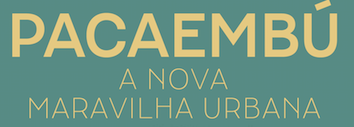 Brazilian graphic and type designer, who co-founded Naipe Foundry with Alvaro Franca in Rio de Janeiro in 2018. A graduate of ESDI Cartapaccio, Felipe has interned at Coppers & Brasses in Montreal. He is also associated with Rodrigo Saiani's type foundry Plau. In 2021, he was located in Perth, Australia.
Brazilian graphic and type designer, who co-founded Naipe Foundry with Alvaro Franca in Rio de Janeiro in 2018. A graduate of ESDI Cartapaccio, Felipe has interned at Coppers & Brasses in Montreal. He is also associated with Rodrigo Saiani's type foundry Plau. In 2021, he was located in Perth, Australia. In 2020, Naipe released Pacaembu. Advertized as a tropical art deco sans, this seven-style sans serif typeface by Alvaro Franca and Felipe Casaprima finds its roots in Brazilian soccer. In particular, it took inspiration from the stone lettering found in the 1940 art deco style Sao Paulo Municipal Stadium, also known as Estadio Pacaembu. A variable style is included. Carlos Mignot and Felipe Casaprima designed the corporate family iN Serif and iN Sans (+Mono) for iN Consultoria de Marcas in 2021. Naipe published Discordia in 2021. Discordia is an experimental type family with various styles of contrast; by Felipe Casaprima and Alvaro Franca; and a Hebrew extension thanks to Ben Nathan. Future Fonts link. [Google]
[MyFonts]
[More] ⦿
|
Felipe Feitosa
|
Designer in Sao Paulo. He created the bone-themed font DVCO for a skateboarding company in 2015. [Google]
[More] ⦿
|
Fernanda Martins
|
Brazilian type designer in Belem, Amazonia who studied at Sao Paulo University, the Basel School of Design (with Wolfgang Weingart and André Gürtler), and UFPA (where she obtained a Masters in vusual culture). She has a PhD in History of Design in ESDI/UERJ, where her thesis was Printing in Para from 1820 to 1910. She does corporate type in general and is the CEO of Mapinguari Design in Belem, a small design business curating, for example, the Floating Letter project. Fernanda created the beautiful Bananas font (2001, letters shaped with bananas), Brasilia (1995, a sans face), the highwage signage typeface Graal (1998), Transbrasil (1999/2000) and Alphanumer (2000, some letters are replaced by mirrored or rotated numbers). She is working on the sans family FM Ruben (2001), which was started in the sixties by her father, Ruben Martins, who died in 1968. Brief CV. Speaker at ATypI 2018 in Antwerp. [Google]
[More] ⦿
|
FF3300
[Alessandro Tartaglia]
|
 Italian design studio run by Alessandro Tartaglia, graphic designer, strategist for FF3300, and professor at Politecnico of Bari.
Italian design studio run by Alessandro Tartaglia, graphic designer, strategist for FF3300, and professor at Politecnico of Bari. Mariarosaria Digregorio and Enzo Ruta are the creators in 2007 of the techno typeface FF3300 Type. FF3300 is also an independent and freely downloadable pdf magazine about graphic design, typography, architecture and design, illustration, photography, street art and writing. Tartaglia's typefaces include minimalist experimental types such as Valdrada (2007), Ipazia (2007) and Zoe (2007), as well as ISIA (custom-made for ISIA in Urbino; slabbed and slabless simple glyphs) and Handwriting (a commissioned grunge typeface for the Pollofriabile magazine in Rome). FF3300 created the Divenire typeface for the Italian Democratic Party. The weights are Divenire Roman, Divenire Italic and Divenire Mono (2012-2013). Subpage. Another subpage. Blog. Story of FF3300. Facebook link. [Google]
[More] ⦿
|
Filthymedia
|
British studio located in Brighton. Creators of the oily display typeface Filthy Black Italic (2011). Filthymedia is mainly into identity and corporate type. They created the sturdy typeface Filthy Seagull Display for the Premier League Football Club Brighton in 2018, and the multiline Filthy Threeway Display for Adidas, also in 2018. In 2019, they designed Filthy Altitude Display for The North Face. Other typefaces include Filthy Blacksmith Display (for Patagonia), Filthy Daylight Display (for Kodak), Filthy Duke Display (a stencil font for Ben Sherman), and the grungy Filthy Desert Display. Hype For Type link. [Google]
[More] ⦿
|
Firebelly Design
|
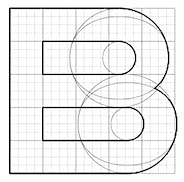 In 2016, Firebelly Design, Will Miller and Ross Burwell, all located in Chicago, co-designed the corporate identity font Flor Mono. Behance link. [Google]
[More] ⦿
In 2016, Firebelly Design, Will Miller and Ross Burwell, all located in Chicago, co-designed the corporate identity font Flor Mono. Behance link. [Google]
[More] ⦿
|
Florian Klauer
[Fonts With Love (was: Heimat Design)]

|
 [MyFonts]
[More] ⦿
[MyFonts]
[More] ⦿
|
Floris
[Lucas de Groot]
|
In 1999 Lucas de Groot was commissioned to design a new headline face for the French daily Le Monde. In 2001, this typeface won an award in ATypI's worldwide Bukvah:Raz! type design competition. de Groot explains: The Le Monde typeface was further developed, resulting in Floris LM, a rather narrow display face in six weights with pronounced vertical stress. Its condensed structure and expressive shapes allow for economic yet attention-grabbing headline setting. In 2007, Floris was redrawn as part of a drastic redesign of the German weekly Jungle World. Floris JW is a headline family in weights, from ExtraLight to Black. The Jungle World project also resulted in Floris Text, a new typeface for publications, which is still under development.. The Floris font has been developed along fours axes, with sixteen masters in all. Retail styles include Floris SP and Floris Text. [Google]
[More] ⦿
|
Folch Studio
[Albert Folch]
|
Albert Folch established Folch Studio in Barcelona in 2004. Folch Studio's typefaces: Typecache link. [Google]
[More] ⦿
|
Fonts in iPhone and iPad apps
|
A certain "LeFly" (first name Arthur) wrote this about finding fonts that are used by iPhone or iPad applications: Many iOS (iPhone, iPad) apps contain ttf or otf fonts, either to add choice over the standard iOS fonts (for instance apps that allow one to set text on photographs or greeting cards), or to apply a corporate identity to the app. Most of the time it's really easy (like, unzip-the app-and-open-a-folder easy) to get to these fonts. Most fonts I found are more or less known freeware stuff, and therefore not too interesting, but some are from commercial foundries and sometimes they are even non-available custom corporate fonts. In about an hour I was able to find and extract several fonts from legitimate and free corporate apps. Actually, most of that time was spent trawling the AppStore to find apps that might have interesting fonts inside. He then proceeds with this list: [Google]
[More] ⦿
|
Fonts With Love (was: Heimat Design)
[Florian Klauer]

|
 Heimat Design in Lage (Bielefeld), Germany, is the design studio and foundry of Florian Klauer, who set up Fonts with Love in 2015.
Heimat Design in Lage (Bielefeld), Germany, is the design studio and foundry of Florian Klauer, who set up Fonts with Love in 2015. . In 2010, Florian made the monoline sans typefaces Florin Sans (2010) and Heimat Grotesk that are characterized by their large x-heights. Iconized (2013) contains more than 220 icons like arrows, filetype, media, eCommerce, network and devices, contact, service navigation and social network-icons. Klartext Mono (2014) is a monospaced monoline sans with a large x-height and superelliptical curves. In 2016, he published the text typeface family Ethos. In 2017, he designed a corporate typeface for the German sports channel Sport1. Klingspor link. Behance link. Fontspring link. Old Heimat Design link at MyFonts. Florian Klauer's personal page. [Google]
[MyFonts]
[More] ⦿
|
Fontsmith
[Jason Smith]

|
 Jason Smith is the British corporate typeface designer who founded Fontsmith in 1997, where he retailed his own designs from his office in London. He has created a typographic identity for the Post Office in the UK. Phil Garnham was one of the in-house type designers. In January 2020, Fontsmith was acquired by Monotype.
Jason Smith is the British corporate typeface designer who founded Fontsmith in 1997, where he retailed his own designs from his office in London. He has created a typographic identity for the Post Office in the UK. Phil Garnham was one of the in-house type designers. In January 2020, Fontsmith was acquired by Monotype. Smith's custom typefaces include Casey, Seat, Tractebel, PPP Healthcare, Powergen, Allied Irish Bank, UUnet, Channel 4, and Saudi Aramco, Champions (2009: for the UEAFA Champions League), Colgate Ready (2014: for Colgate, covering Latin, Cyrillic, Eastern European, Devanagari and Thai), More4 (2005, for the Channel 4 Adult Entertainment channel), ITV (2006, for the ITV network), BBC ONE (2006, for the BBC), Post Office Sans (2003), Severstal (2009), and Moto GP (2020: a custom techno / sports font). Vernon Adams and Fontsmith got into a quarrel about Vernon's Mako, which was submitted and rejected by Fontsmith, which published its own similar typeface Lurpak a few weeks later. Most of Jason Smith's typefaces are now at MyFonts, after Monotype's take-over in 2020: - FS Albert (2002). A soft-edged sans family by Jason Smith, Mitja Miklavcic and Phil Garnham. Followed by Emanuela Conidi's FS Albert Arabic. In 2007, Jason Smith designed the custom typeface Xerox Sans (+Condensed) as a modification of his FS Albert, to which Greek and Cyrillic alphabets were added as well.
- FS Aldrin (2016). A rounded sans by Phil Garnham.
- FS Alvar (2007, Jason Smith and Phil Garnham). A modernist utilitarian headline font family inspired by the work of Alvar Aalto.
- FS Benjamin (2018). A flared sans serif by Stuart De Rozario.
- FS Blake (Emanuela Conidi). A sans with some inherent tension.
- FS Brabo (2015, Fernando Mello). Named after Brabo in Antwerp, FS Brabo was inspired by the Plantin Moretus museum and the garalde styles (Bembo, Garamond, Plantin). FS Brabo won an award at Tipos Latinos 2016.
- FS Clerkenwell (2004, Jason Smith and Phil Garnham). A slab serif.
- FS Conrad (2009). A multiline display face by Phil Garnham.
- FS Dillon. Influenced by the Bauhaus quest for simplicity.
- FS Elliot (2012). By Nick Job.
- FS Emeric (2013, Phil Garnham). A large humanist slightly angular sans family. Dedicated web site.
- FS Hackney. An assertive sans typeface family by Nick Job.
- FS Industrie (2018). A 70-style techno / mechanical sans family by Fernando Mello and Phil Garnham.
- FS Ingrid. A humanist sans family by Jason Smith.
- FS Irwin (2017). An incised typeface inspired by New York, FS Irwin is a sans serif with calligraphic roots.
- FS Jack (2009, Jason Smith and Fernando Mello). A confident sans family that was awarded at Tipos Latinos 2010.
- FS Joey (2009, Jason Smith and Fernando Mello). An organic sans typeface family.
- FS Kim (2018). A joyful display typeface family by Krista Radoeva.
- FS Kitty (2007, Jason Smith and Phil Garnham). In the Japanese kawaii style.
- FS Koopman (2018). A sans family designed by Andy Lethbridge and Stuart De Rozario. A hybrid sans workhorse that takes inspiration from Swiss grotesks, American gothics and early British grotesques
- FS Lola (2006). Originally designed for Wechsler Ross&Portet by Phil Garnham, it is advertised by Fontsmith as a transgender type.
- Lost + Foundry (2018, Pedro Arilla and Stuart de Rozario). The Lost & Foundry family of seven fonts includes FS Berwick, FS Cattle, FS Century, FS Charity, FS Marlborough, FS Portland and FS St James. The campaign was developed by Fontsmith, M&C Saatchi London and Line Form Colour. The crumbling typefaces of Soho were recovered to be sold online as a collection of display fonts, to fund the House of St Barnabas's work with London's homeless. Fontsmith's designers Stuart de Rozario and Pedro Arilla worked with M&C Saatchi London to develop the fonts.
- FS Lucas (2016). A geometric sans by Stuart de Rozario.
- FS Maja. A curvy display typeface.
- FS Matthew. A sans family.
- FS Me. Mencap, a British company that works with people with a learning disability, asked Smith to design a font, FS Mencap (also known as FS Me), for the learning disabled---easy to read, yet elegant. Codesigned by Jason Smith, Mitja Miklavcic and Phil Garnham.
- FS Meridian (by Kristina Jandova). A rhythmic geometric sans family with circular forms.
- FS Millbank (2015). A wayfinding typeface family by Stuart de Rozario.
- FS Neruda (2018, by Pedro Arilla). A transitional storytelling text family named after Chilean poet Pablo Neruda.
- FS Olivia (2012). An angular poetic text typeface family by Eleni Beveratou.
- FS Ostro (2018, Alessia Mazzarella). A modern typeface family in text and display versions. It brings warmth and fresh air to the cold Italian didones. Its more subdued and less contrasted text version was influenced by Scotch romans. There are also genetic elements of Spanish display types.
- FS Pele (2007). An ultra fat typeface by Jason Smith and Phil Garnham.
- FS Pimlico (2011, Fernando Mello). A humanist display sans.
- FS Rigsby (2005). A sans.
- FS Rome (Mitja Miklavcic and Emanuela Conidi). An all caps Trajan typeface.
- FS Rufus (2009). A slab serif by Mitja Miklavcic, Jason Smith and Emanuela Conidi. Described by them as benevolent, quirky, peculiar, offbeat, jelly beans and ice cream, a retro eco warrior.
- FS Sally (Jason Smith and Phil Garnham). FS Sally Pro won an award at Granshan 2016.
- FS Sammy (Satwinder Sehmi, Jason Smith). A script typeface.
- FS Shepton (2015). A calligraphic brush script by Andy Lethbridge.
- FS Siena (2016). A luxurious fashion mag typeface given a new life in 2016 by Krista Radoeva. Jason Smith had started drawing Siena 25 years earlier. It is delicate, oozes style, and shows touches of Peignot in its contrast.
- FS Silas Sans (2008, Jason Smith, Bela Frank, Fernando Mello and Phil Garnham).
- FS Silas Slab (2015, Bela Frank).
- FS Sinclair (2007-2008). A rounded octagonal typeface by Jason Smith and Phil Garnham.
- FS Sophie (2004). A feminine sans typeface.
- FS Split Sans and FS Split Serif (2019, Jason Smith and Fernando Mello). Has a variable type option.
- FS Truman (2012, Jason Smith and Fernando Mello). A sans family.
- FS Untitled (2016, Jason Smith and Fernando Mello). Developed for screens.
[Google]
[MyFonts]
[More] ⦿
|
Ford Fonts
|
One of the house fonts of Ford, Ford Extended, which is based on Helvetica, was designed at FontShop. Ford Antenna Extra Cond (see here) was designed in 2007 by Cyrus Highsmith for The Font Bureau. [Google]
[More] ⦿
|
Fran Berney
|
Graphic designer who creates custom fonts. Located in Seattle, WA. Behance link. [Google]
[More] ⦿
|
Francesco Mistico Canovaro
[Zetafonts (or: Studio Kmzero, or: ZeroFont)]

|
 [MyFonts]
[More] ⦿
[MyFonts]
[More] ⦿
|
Francesco Zorzi
|
Florence, Italy-based illustrator. Designer of Ovo (2014), a font designed to be used for the cultural institutions of the town of Montevarchi, Italy. Its shapes are influenced by the architecture of the medieval town, and is based on arcs and a grid. Behance link. [Google]
[More] ⦿
|
Franco Jonas
[Frncojonastype]

|
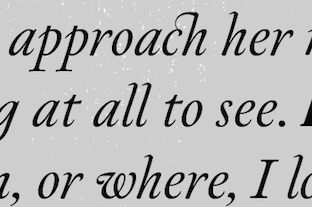 [MyFonts]
[More] ⦿
[MyFonts]
[More] ⦿
|
Fraser Tebbutt
|
Auckland, New Zealand-based designer of the rounded typefaces Rimu (2017, a geometric sans) and Rata (2017), and the condensed headline sans typeface Duke (2017). Black Sans (2017) is a versatile geometric sans-serif designed and produced for TVNZ to use across their brand assets on air, on line and on their new building including TVNZ 1, TVNZ 2, TVNZ Duke, TVNZ On Demand, and TVNZ Corporate. [Google]
[More] ⦿
|
Fresco Type
|
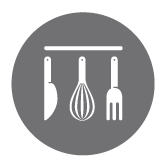 Digital type studio in Santiago de Chile run by by Francisco Galvez Pizarro and Rodrigo Ramirez. Their typefaces:
Digital type studio in Santiago de Chile run by by Francisco Galvez Pizarro and Rodrigo Ramirez. Their typefaces: - gobCL (2010). A type system develped in 2010 for the Government of Chile.
- Nicanor (2008). A custom typeface based on the handwriting of the anti-poet Nicanor Parra, for the documentary Retrato de un Antipoeta. The film was directed by Victor Jimenez and the art direction was by Maria Eugenia Navarro.
- Elemental (1997-2001). Images: i, ii, iii.
- Mayorista 10 (2010). A grotesk corporate typeface for the To-Kio brand. Plus food-related pictograms.
- La Cuarta (2009). A sans typeface for La Cuarta, the most popular Chilean newspaper.
[Google]
[More] ⦿
|
Frncojonastype
[Franco Jonas]

|
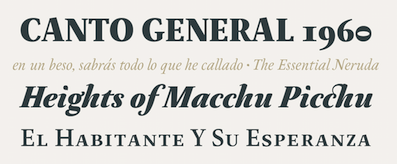 During his studies at the Metropolitan Technological University of the State of Chile, Santiago (2013-2017), Chile-based Franco Jonas Hernandez created the lively text typeface Neftali Pro (2015, Tipotype). He also studied at Pontificia Universidad Catolica de Chile, class of 2015, and at UNAM in Mexico City, class of 2017. In 2020, he set up Frncojonastype.
During his studies at the Metropolitan Technological University of the State of Chile, Santiago (2013-2017), Chile-based Franco Jonas Hernandez created the lively text typeface Neftali Pro (2015, Tipotype). He also studied at Pontificia Universidad Catolica de Chile, class of 2015, and at UNAM in Mexico City, class of 2017. In 2020, he set up Frncojonastype. In 2017, he and Rodrigo Araya Salas (Rodrigo Typo) co-designed the meaty sans display typeface Loyola Pro and the comic book typeface Pintanina. At W Foundry, he published Platz Grotesk (2017). Typefaces from 2018: Squick (a comic book / children's font family by Franco Jonas, Andrey Kudryavtsev and Rodrigo Araya), Glatt, Tobi Pro (with Rodrigo Araya Salas and Andrey Kudryavtsev at Rodrigo Typo), Loyola Round Pro (by Rodrigo Araya Salas and Franco Jonas), Nuby (with Rodrigo Araya Salas and Andrey Kudryavtsev at Rodrigo Typo). His text typeface Ticerz won an award at Tipos Latinos 2018. In 2018, together with Ale Navaro and Raul Israel, he set up The Compania Tipografica de Chile, where he promptly published Passiflora (2018), a unicase rounded brush font inspired by facade inscriptions co-developed with Valentina Pino. Ding (2018) is a great fattish cartoon font that was co-designed by Rodrigo Araya Salas, Andrey Kudryavtsev and Franco Jonas. See also its extension, Ding Extra (2019). Typefaces from 2019: Fonty (a creamy script), Clarence Alt (a an almost bubblegum children's book sans by Franco Jonas, Rodrigo Araya Salas and Andrey Kudryavtsev), Nacho (a Mexican party font by Rodrigo Araya and Franco Jonas), Ryman Gothic (2019, by Diego Aravena Silo and Franco Jonas at W Foundry: inspired by Edwin Allen's wood types and Morris Fuller Benton's gothics). Typefaces from 2020: Clarence Inline (a plump informal typeface family by Rodrigo Araya Salas and Franco Jonas Hernandez), Ancoa Slanted (an angular display family in 15 styles; by Andrey Kudryavtsev, Rodrigo Araya Salas and Franco Jonas Hernandez), Skippie (a comic book family by Andrey Kudryavtsev, Rodrigo Araya Salas, Bruno Jara Ahumada and Franco Jonas, and four sets of dingbats including Skippie Monster Lucha Libre and Skippie Monster Halloween), Ancoa (an angular 19-style layerable typeface by Andrey Kudryavtsev, Rodrigo Araya Salas and Franco Jonas Hernandez). Typefaces published at Frncojonastype: - fj Trance (2020). A reverse contrast Egyptian by Rodrigo Araya Salas, Franco Jonas, Valentina Faundes and Jorge Morales Salas.
- fj Meduza (2020). A 26-style decorative didone-based typeface family.
- fj Platz Groteske (2020). A large neo-grotesk family with wide spacing.
- Willner (2021). A 5-style display sans by Rodrigo Araya and Franco Jonas.
- Clarence Pro (2021). A vernacular supermarket font by Rodrigo Araya Salas and Franco Jonas Hernandez.
- Alabaster Antique FJ (2021). A paella of styles mixed together in a smorgasbord of rijsttafels.
- Proud Grotesk (2020). A custom typeface for a new brand for Pivovar Proud Brewery in Plzen, Czechia.
- Rinno (2021). A rounded geometric display family by Rodrigo Araya Salas and Franco Jonas Hernandez.
- Baked FJ (2021). A custom typeface for the Laforme Bakery&Café in Prague, Czech Republic.
[Google]
[MyFonts]
[More] ⦿
|
Frostype
[Harrison Marshall]
|
Graduate of UCA Farnham. Leicester, UK-based designer who specializes in producing visual identities through branding, editorial and art direction. Creator of the modular multiline typeface Luminous (2015). During his studies at UCA in 2016, he created the sans typefaces Typic, Deep and Camber. In 2017, he designed Wolfgang Sans and Passo (a custom sans for the new Italian restaurant Passo). In 2018, Harrison founded Frostype. His typefaces at Frostype: FT Switch (2018), FT Polar (2018: sans), North (2018: sans), Frigid (2018, a variable font). In 2019, he released FT Base (a sans family) and FT Made (a transitional typeface). Home page. [Google]
[More] ⦿
|
Frutiger
|
Wiki entry on Frutiger, the sans serif typeface created by Swiss type designer Adrian Frutiger in 1968 for the newly built Charles De Gaulle International Airport at Roissy, France. This typeface design was initially prepared by Adrian Frutiger for his friend Alfred deVolz at Sofratype. The working drawings were made by Andre Guertler. The typeface was called Concorde (or Concorde Sofratype) and was released in 1968. When Linotype purchased Sofratype, the typeface was withdrawn, and the rights were returned to Frutiger. The design re-appeared in 1970-1971 on the signage for the Charles de Gaulle airport at Roissy outside of Paris. Linotype purchased the design from Frutiger and it was re-released as the typeface Frutiger in 1976. The new typeface, originally called Roissy, was completed in 1975 and installed at the airport the same year. A very legible family, it was released to the public by Stempel in 1976. Corporations worldwide use it for their identity: Raytheon, the National Health Service in Britain, the British Royal Navy, the Canadian Broadcasting Corporation, the Finnish Defence Forces. Road signs in Switzerland are in Frutiger, and the public transport system in Oslo uses it as well. Extensions of it include - Frutiger Next (1997) made for signage of the Alte Pinakothek in Munich. Linotype released it in 2000.
- Frutiger Symbols (1998) and Frutiger Stones (1998).
- ASTRA Frutiger: a variant of Frutiger used by Swiss authorities as the new font for traffic signs, replacing VSS since 2003. It was based on Frutiger 57 Condensed, but with widening up- and down-strokes, which are intended to give the eye a better hold than was the case with the earlier version. A family of 2 fonts were made, called ASTRA-Frutiger-Standard/standard, and ASTRA-Frutiger-Autobahn/autoroute.
- Frutiger Capitalis (2005), containing only ornamental glyphs of religions, hand signs, astrological signs.
- Frutiger Arabic (2007) designed by Lebanese designer Nadine Chahine as a companion to the Latin typeface Frutiger and with the consulting of Adrian Frutiger. It is based on the Kufi style but incorporates aspects of Ruqaa and Naskh in the letter form designs.
Copies include CG Frontiera Compugraphic, Provencale Autologic, Sigfried AM (Addressograph Multigraph), Freeborn (Boeger), Humanist 777 (Bitstream, now Monotype), Segoe UI (Agfa), Segoe Condensed (Microsoft). [Google]
[More] ⦿
|
g31
|
Design studio in Düsseldorf, Germany. In 2014, together with Andreas Steinbrecher, they designed a curly monoline typeface for the Aquazoo Löbbecke Museum Branding. [Google]
[More] ⦿
|
Gabriel Martinez Meave
[Kimera Type (was: Diseño Kimera)]

|
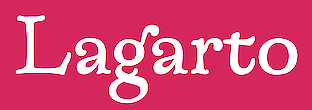 [MyFonts]
[More] ⦿
[MyFonts]
[More] ⦿
|
Galle Renaudin
|
French designer of the corporate sans typeface Moroi Bold (2013), created for (R)evolution by Danton Denk Raum. [Google]
[More] ⦿
|
Gareth Hague
[Alias]

|
[MyFonts]
[More] ⦿
|
Gaspar Muñoz

|
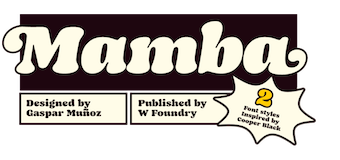 Chilean type designer, also named Gasper Muñoz. His typefaces include:
Chilean type designer, also named Gasper Muñoz. His typefaces include: - The rounded geometric sans typeface Sonny Gothic Vol.2 (2018), co-designer, with Salvador Rodriguez at W Foundry.
- The yummy fat Cooper Black-inspired typeface Mamba (2020, at W Foundry).
- Munchies (2021). A reverse stress Western typeface.
- Herokid (2021, W Foundry). A 96-strong grotesk superfamily with weights ranging from Thin to Heavy and widths from UltraCompressed to UltraExpanded.
- Throwup and Throwup Color (2018). A free font at W Foundry: Throwup is a display typeface inspired by Graffiti culture specifically from "Flops" or "Bombs". These are generally made with spray paint and valves (known as caps or fatcaps) made especially for this practice.
- Cordillera (2019). An angular readable text typeface.
- Asicom (2019-2020). A custom techno font.
[Google]
[MyFonts]
[More] ⦿
|
Geoffrey Pellet
[Large Projects]
|
[More] ⦿
|
Georg Seifert
[Schriftgestaltung]

|
[MyFonts]
[More] ⦿
|
Geovani Arevalo
|
Graphic design student in Los Angles in 2015. While interning, also in 2015, he created a custom kitchen tile font for Playboy. [Google]
[More] ⦿
|
Gerardo Nunez
|
Tijuana, Mexico-based creator of Gnomo (2014, an outline font), which was created for Gnomo Galeria in Tijuana. [Google]
[More] ⦿
|
German Appeal
[Roberto Mannella]

|
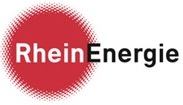 German design studio located in Hennef. In 2013, they created the corporate sans typeface RE Type for Rhein Energie.
German design studio located in Hennef. In 2013, they created the corporate sans typeface RE Type for Rhein Energie. One of the designers is Roberto Mannella. Roberto created the schizophrenic Linotype Sicula (1999) and of Bobotta Icons (2003, Linotype), which won an award at the Linotype International Type Design Contest 2003. Behance link. Linotype link. FontShop link. Bowfin Printworks link. [Google]
[MyFonts]
[More] ⦿
|
Gestu
[Thiago Bellotti]

|
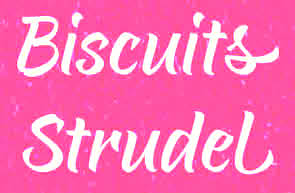 Brazilian type foundry, est. 2016 by Thiago Bellotti. The first typeface by Bellotti at Gestu is the calligraphic pointed brush script Acerola (2016).
Brazilian type foundry, est. 2016 by Thiago Bellotti. The first typeface by Bellotti at Gestu is the calligraphic pointed brush script Acerola (2016). In 2020, he released Closeby (ultra-condensed, rounded, italic) and Tocco (which is based on chunks of wood type; it includes a variable style) at Papanapa. Thiago also created the custom typeface Bib Sans (2021) at Papanapa. [Google]
[MyFonts]
[More] ⦿
|
Gianluca Sandrone
|
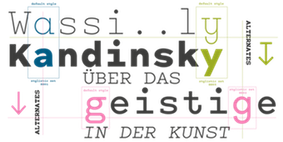 Gianluca Sandrone is a graphic designer in Perugia and Bolzano. He started working at LaMatilde Studio in Turin, and obtained an MA in communication and graphic design from ISIA in Urbino, Italy, in 2014. In 2015 he started working as a collaborator at Bcpt and CoModo coop. in Perugia. In 2018 he began teaching editorial and graphic design at IID in Perugia.
Gianluca Sandrone is a graphic designer in Perugia and Bolzano. He started working at LaMatilde Studio in Turin, and obtained an MA in communication and graphic design from ISIA in Urbino, Italy, in 2014. In 2015 he started working as a collaborator at Bcpt and CoModo coop. in Perugia. In 2018 he began teaching editorial and graphic design at IID in Perugia. His typefaces: - In 2021, CAST released the wonderful monospaced Bauhaus-inspired typewriter family Xanti Typewriter by Gianluca Sandrone.
- BCPT Norcia (2019) is a custom didone stencil typeface designed for the brand identity of Renzini, one of the market leaders in the cold meat industry, a company with deep roots in Umbria.
- BCPT LG Corporate (2017). Sandrone writes: LG Corporate font was created more than 20 years ago, when Listone Giordano decided to move from traditional Bodoni used in its communications to a variation with much visual impact for redesign of its logo. [...] Therefore the studio decided to evolve the trademark into a complete titling font to be used systematically for the entire product collections.
- Issra (2021). A titling typeface.
- CocaCola (2017). A multiline display typeface custom designed for Mauro Bubbico, which now is officially part of the graphic identity of the Cola Cola Museum in Gravina di Puglia. It is inspired by lettering seen in Federico Fellini's d film credits.
[Google]
[More] ⦿
|
Giuseppe Laterza
|
Taranto, Italy-based designer of custom types such as The Cube Bar (2019: free rounded hexagonal type). [Google]
[More] ⦿
|
Göran Söderström
[Letters from Sweden]

|
 [MyFonts]
[More] ⦿
[MyFonts]
[More] ⦿
|
Graham Bradley
[Roxaboxen]
|
[More] ⦿
|
Graham Clifford
|
Graham Clifford is a type director and graphic designer in New York City. He was trained by his father before working for some of London's creative advertising agencies such as CDP and GGT. He moved to New York ca. 1993. President of TDC in 2013. Creator of Clifford AOL, a font made for AOL. In 2014, his typeface Amplify won an award at the Communication Arts 4th Typography Competition. Other (mostly custom) typefaces by Clifford include Tanqueray, Kmart Bold Italic, Digital, Moët&Chandon, Putnam Semi Sans. [Google]
[More] ⦿
|
Graphéine
|
Paris-based designer of corporate typefaces sich as VM (2017, for Vitrine Media). Behance link. [Google]
[More] ⦿
|
Greg Lindy
[Lux Typographics (was: Intersection Studio)]

|
 [MyFonts]
[More] ⦿
[MyFonts]
[More] ⦿
|
Gret Mengelt-Mergenthaler
|
Born in Rheinfelden in 1941, Gret Mengelt-Mergenthaler studied at the famous Schule für Gestaltung (Kunstgewerbeschule) Basel. Since 1962, she works as a graphic designer. She taught at her alma mater from 1975 onwards, and set up an atelier in Blauen, Baselland, in 1987. In 1963, Gret created Texpo with Walter Ballmer for the Schweizer Expo 1964. While this typeface is not generally available, Mindofone made a free version of it, called Hadley Stencil in 2013. [Google]
[More] ⦿
|
Greyletter
[Neil Patel]

|
 Greyletter is Neil Patel's type foundry in Portland, Maine, est. 2009. It morphed into Tetradtype in 2016. Neil Patel is a semiconductor process engineer who was introduced to type design by his wife, a graphic designer. His typefaces:
Greyletter is Neil Patel's type foundry in Portland, Maine, est. 2009. It morphed into Tetradtype in 2016. Neil Patel is a semiconductor process engineer who was introduced to type design by his wife, a graphic designer. His typefaces: - Pinion Display (2010). A Victorian display face.
- Dynatherm (2013). A custom sci-fi stencil font for Cartoon Network's Toonami programming block.
- Rieux (2013). Neil writes: Named after the steadfast doctor from Albert Camus' The Plague, Rieux is an even-tempered slab-serif that is confident without being cocky and approachable without being casual. The aesthetic of Rieux is inspired by the industrial age. While the design is not directly derived from typefaces of that era, the shapes of letter-forms are informed by images of over-sized steel machines and the monolithic brick buildings that housed them.
- Grafton Titling (2014). A classical lapidary titling typeface.
- Custom fonts: Inside Voice (2014, for IDEXX Laboratories), Hugo's (2014: a logotype for Hugo's in Portland).
- Texttile (2014). A system of heavy sans titing typefaces for chromatic overlays and simulating textile textures.
[Google]
[MyFonts]
[More] ⦿
|
Grilli Type
|
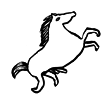 Grilli Type is Noël Leu and Thierry Blancpain, graduates of the University of the Arts in Bern, Switzerland. Grilli Type is an independent Swiss type foundry, founded in 2009, and located in Zürich. They offer a range of display and text typefaces, based either on historical sources or with an experimental background.
Grilli Type is Noël Leu and Thierry Blancpain, graduates of the University of the Arts in Bern, Switzerland. Grilli Type is an independent Swiss type foundry, founded in 2009, and located in Zürich. They offer a range of display and text typefaces, based either on historical sources or with an experimental background. In 2010, their catalog had four type families: GT Walsheim, GT Haptik, GT Skeletor (monoline grotesk) and GT Lena (avant garde sans). In 2013, that number decreased to three, GT Walsheim, GT Haptik and GT Pressura. GT Pressura was designed in 2013 by Moiré and Dominik Huber. In 2014, they added GT Sectra and GT Eesti. GT Sectra won first prize in the TDC 2015 Type Design competition. In 2021, Grilli was asked, in cooperation with Twitter design director Derrit DeRouen, to design Chirp, a new grotesk to replace Helvetica in Twitter. The reactions from Twitter users are quite damning. Jeffrey Jose compares it with GT America, which Noel Leu and Grilli cite as the source of inspiration. Free download. [Google]
[More] ⦿
|
grossstadtkinder.design
|
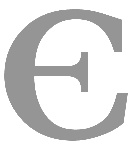 Creators of DrakenFont (2007), a custom typeface done for Radon Labs. Especially the E is remarkable. [Google]
[More] ⦿
Creators of DrakenFont (2007), a custom typeface done for Radon Labs. Especially the E is remarkable. [Google]
[More] ⦿
|
Gudrun Mittendrein
|
Vienna-based designer of FH Joanneum (2008), a corporate information design sans typeface for the university of music and performing arts in Graz, Austria. This was a school project. Behance link. [Google]
[More] ⦿
|
Guido de Boer
[Vormplatform]
|
 [More] ⦿
[More] ⦿
|
Guillaume Allard
|
French graphic designer whose graduation thesis in 2010 contains Alphabet Formel [Google]
[More] ⦿
|
Guillaume Caute
|
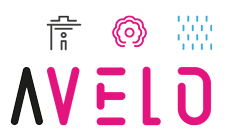 Bordeaux, France-based designer of the rounded stencil typeface Libournavelo (2015, +icons). This font is used to promote bicycling in the city of Libourne. He also made a flowing hand-printed typeface for La Table de Josephine, a restaurant in the Hotel Kyriad in Bègles, France. Behance link. [Google]
[More] ⦿
Bordeaux, France-based designer of the rounded stencil typeface Libournavelo (2015, +icons). This font is used to promote bicycling in the city of Libourne. He also made a flowing hand-printed typeface for La Table de Josephine, a restaurant in the Hotel Kyriad in Bègles, France. Behance link. [Google]
[More] ⦿
|
Guillaume Grall
[Building Paris]
|
[More] ⦿
|
Guillaume Ruiz
|
Graduate of ECV d'Aquitaine. Bordeaux, France-based designer of the hipster typeface Vindra (2014), which was designed for the visual identity of Maisons d'Érivains et des Patrimoines Littéaires. Edith Type is a condensed sans created in 2014 for Edith Store. Behance link. [Google]
[More] ⦿
|
Guillermo Vizzari
[Yaniguille]

|
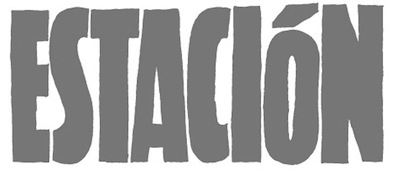 [MyFonts]
[More] ⦿
[MyFonts]
[More] ⦿
|
Gustavo Soares

|
 Graduate of the KABK in Den Haag in 2008 (Masters in Type and Media), and from the University of Reading in 2007 (Masters in Information Design). He joined dooType in 2016. Originally from Sao Paulo but now based in Rio de Janeiro, he created these typefaces:
Graduate of the KABK in Den Haag in 2008 (Masters in Type and Media), and from the University of Reading in 2007 (Masters in Information Design). He joined dooType in 2016. Originally from Sao Paulo but now based in Rio de Janeiro, he created these typefaces: - The text family Pocket (2008). His graduation project at KABK.
- In 2012, the Dalton Maag Brazil team designed the font for the Rio 2016 Olympic Games. The 5448-character connected script font Rio2016 was developed by Dalton Maag Brazil, and involved a team that includes Fabio Haag, Fernando Caro and Gustavo Soares. Beth Lula is the Branding Director of the Rio 2016 Olympic and Paralympic Games Organising Committee. Passages of the press release: Each letter expresses a characteristic of Rio 2016 Games, its people and city. The letters are written with a single continuous linework, with a fast and fluid movement, suggesting the movements of the athletes in action. The variety of curves in the letters has a unique informality, inspired by the joyfulness of the Brazilian people. Fabio Haag, Creative Director at Dalton Maag: As a Brazilian typophile, designing the Rio 2016 font was a dream job. This is a milestone for the design scene in Brazil---it's a great example of how type designers can collaborate with graphic designers, sharing their expertise to strengthen an identity.
- Veja Serif (2013). This is the new typeface for Veja, Brazil's leading weekly news magazine. This project originated from a specific demand to improve the publication's reading experience on screen, while keeping the type visually close to Times Roman. The team consisted of Gustavo Soares (creative direction), Eduilson Coan (type design), Fernando Mello (consultant) and Paratype (hinting). Veja Serif replaces VJ Times.
- dT Jakob (2017). This typeface started out in 2007 as a revival of Jakob Erbar's grotesk from 1927 in Paul van der Laan's class at KABK. It was refined and completed in 2017 at dooType with the help of Eduilson Wessler Coan. In 2018, Gustavo Soares and Eduilson Coan developed the variable inline and shadow font dT Jakob Variable Concept.
Alternate URL. Behance link. Old URL. [Google]
[MyFonts]
[More] ⦿
|
Halo Media
[Hamish McWhirter]
|
Halo Media (Hamish McWhirter) has designed a custom typeface for Beauty UK Cosmetics called You Beauty (2010). [Google]
[More] ⦿
|
Halo Media
|
Halo Media (Hamish McWhirter) has designed a custom typeface for Beauty UK Cosmetics called You Beauty (2010). [Google]
[More] ⦿
|
HamburgerFonts Type Foundry
[Stuart Brown]

|
 Type foundry in London, est. 2004 by Stuart Brown (b. 1976) from Halifax, Yorkshire, England. He works for Dalton Maag. He also did some work for The Australian Type Foundry. His typefaces include:
Type foundry in London, est. 2004 by Stuart Brown (b. 1976) from Halifax, Yorkshire, England. He works for Dalton Maag. He also did some work for The Australian Type Foundry. His typefaces include: - In 2017, Stuart Brown and the Dalton Maag team developed the new in-house typeface for the BBC, BBC Reith.
- Baksheesh (2005, HamburgerFonts).
- Bressay. In 2016, he led the design and did the engineering for Bressay (design by Tom Foley, Selma Losch, and Spike Spondike, at Dalton Maag, London), which won an award at TDC 2016.
- Brown Sans (2009). Humanist sans.
- Intel Clear Cyrillic. Dalton Maag (Tom Foley, Mary Faber, Stuart Brown and Hanna Donker) won a Granshan 2014 award for Intel Clear Cyrillic.
- Neutraliser Alternate (HamburgerFonts).
- Neutraliser Caps (HamburgerFonts). Almost copperplate.
- Neutraliser Sans (2004, HamburgerFonts). A 24-style geometric family.
- Neutraliser Serif (HamburgerFonts).
- Tooting Sans (2009, HamburgerFonts).
MyFonts link. HypeForType link. [Google]
[MyFonts]
[More] ⦿
|
Hamish McWhirter
[Halo Media]
|
[More] ⦿
|
Hamo Design
[Maikel Morais]
|
In 2016, Maikel Morais and Hamel Design (Curitiba, Brazil) created the visual identity typeface Sirene for the bar Sirène de Curitiba. Behance link. Home page foir Maikel Morais. [Google]
[More] ⦿
|
Hanken Studio
[Alfredo Marco Pradil]

|
 Graduate of the College of Architecture and Fine Arts, Batangas State University, The Philippines, who has been working as a graphic designer since 2005. He is currently located in Dubai, UAE and is a prolific type designer. His typefaces:
Graduate of the College of Architecture and Fine Arts, Batangas State University, The Philippines, who has been working as a graphic designer since 2005. He is currently located in Dubai, UAE and is a prolific type designer. His typefaces: - Neue Einstellung (2021). A nine style geometric sans that exudes rigidity and mechanical precision.
- Ouido (2021). A condensed old style serif family with twelve cuts.
- Pianono (2021). A curly typeface named after a Filipino dessert.
- Nuova Volte (2021). A carefully designed sans family.
- Compound Sans (2021). In 45 styles, plus a variable font.
- Trinkle Sans (2020).
- HK Requisite (a 9-style low contrast sans) (2020).
- Terminal Guise (2020). An 8-style monolinear geometric sans with open counters (except on the lower case o).
- Luckybones (2020).
- Action Sans (2020). A free almost monolinear sans.
- Open Sauce Sans, Open Sauce One and Open Sauce Two (2020). He writes about these three large free sans families: Open Sauce is a font superfamily that I developed for Creative Sauce's internal type system. It is a compact typeface that is optimised for better viewing small text on screen and print. Open Sauce (Sans, One and Two) is under the SIL Open Font License and is going to be actively developed, improved and tested. One small modification is Cristiano Sobral's Criativa Sans (2020).
- Yelena (2020). A brush script.
- Keiner (2020). A rigid monolinear sans typeface family.
- Cosmic Octo (2020). A blocky display/poster typeface for an experimental ice cream recipe venture.
- Snah (2020). A playful free all caps typeface.
- Belina Script (2020).
- Itzkarl (2020). An all caps typeface with flared terminals.
- Anahaw (2020). A foliate typeface modeled after palm leaves.
- Batangas (2020). Free.
- Lumi Sans (2019).
- Device (2019). A sans that supports orange-dyed fascists, oil industry buffoons and climate change deniers.
- Stenzel (2019). a stencil typeface.
- Nourd (2019).
- Suprapower SE (a display sans) (2019). Heavy and wide, for posters, packaging, headline and titles.
- Sauce Grotesk (2019). Sauce Grotesk is a sans serif typeface that James Birch and Alfredo Marco Pradil developed for Creative Sauce's internal type system.
- TEG (2019).
- Enreal (2019).
- Arca Sentora (2019). A geometric sans.
- Serif 420 (2019).
- Guise (2019). A Swiss style sans family.
- Grantipo (2019), A sans family inspired by Cerebri Sans, Helvetica and Akzidenz Grotesk. .
- HK Sentiments (2018). A neutral / geometric sans.
- Natrix Sans (2018). A free grotesque family without italics.
- Reminisce (2018). A Peignotian sans typeface family.
- Aeon Hexa (2018). Alfredo explains that he tried to amalgamate the features of Helvetica and Cerebri Sans.
- Acari Sans (2018). A free typeface by Alfredo Marco Pradil (Latin part) and Stefan Peev (Cyrillic portion). Based on HK Grotesk (2015).
- HK Kontrast (2018). An angular wedge serif typeface.
- HK Yavimayan (2018). A text typeface with flaring.
- HK Focus (2017).
- HK Gothic (2017). Twelve styles.
- HK Compression (2017). A bold compressed all caps sans.
- HK Carta (2017). A text typeface with didone elements.
- HK Spec (2017).
- HK Zercon (2017). A free sans.
- HK Concentrate (2017). A sans typeface family.
- Arlene (2017). A didone typeface family.
- Barter Exchange (2017).
- HK Blocker (2017), a heavy rounded sans.
- Zwizz (2017). A Swiss typeface family.
- Cerebri Sans (2017). Free download.
- HK Nova (2017). A geometric sans family inspired by Century Gothic and Futura. The Medium weight is tweetware. See also HK Nova Narrow and HK Nova Rounded.
- Illuma (2017). A free headline sans typeface.
- Number 23 (2017). A text typeface family.
- HK Caslon (2017).
- Polarity (2017).
- Placid Amor (2016). Copperplate style.
- Ludema (2016). An informal sans typeface, made by Joao Symington..
- Alienware (2016). A custom typeface for Dell's Alienware computers.
- Extremis Compakt (2016). A custom typeface for Extremis.
- Number 23 (2016). A Caslon-style text family.
- El Enra Rounded (2016). A condensed headline sans.
- Faldore (2015-2016). A simple sans typeface family.
- Hans Grotesque (2016). A sans designed for long texts.
- Decalotype (2016). A free sans typeface.
- HK Compakt (2016). Inspired by Akzindenz Grotesk.
- HK Serif (2016).
- Jellee (2016). A very soft heavy rounded sans typeface. Download.
- El Enra (2016). A free bold condensed sans.
- Type 36 (2016). A clean geometric sans.
- Arco Perpetuo (2016). A free subtly rounded sans family.
- Industri (2016). A tweetware sans.
- Okomito (2016). A sans with large open counters. Okomito Medium is free. Okomito Next was released in 2020.
- Comprehension Semibold (2016).
- Radnika (2016). Announced as a workhorse sans. Followed in 2017 by Neue Radnika Schriftart, or Radnika Next.
- Hanken Sans (2016).
- ADA Hybrid Display (2016).
- The free geometric sans typeface Orkney (2016, with Samuel Oakes).
- Caslon OS (2015, Open Font Library).
- The basic sans typefaces Now (2015, Open Font Library: geometric), Now Alt (2015), Einstellung Schrift (2015, geometric sans), Neue Einstellung (2015), Elenar (2015; and the free Elenar Love), Amicale (2015), HK Explorer (2015), HK Explorer Soft (2015), HK Explorer Sharp (2015), HK Grotesk (2015: free; extended to HK Grotesk Pro in 2016, and HK Grotesk Light in 2017, HK Grotesk Wide in 2020, and Uacari Legacy by Cristobal Sobral in 2020), Industri (2015, caps only headline face), Monoist (2015, monospaced), Glacial Indifference (2015, Bauhaus-inspired), Malakas (2015), Genome (2015) and Gen Light (2014, OFL).
- Arca Majora (2014) and Arca Majora 2 (2016). A free heavy geometric sans face.
- SAG Block (2014).
- Ahamono and Ahamono Monospaced (2012-2015). Originally, this was a free rounded monospace typeface with typewriter features.
- Neue Hans (2014), Hanken Round (2014, a free rounded sans), Neutrage (2014, a neutral signage sans).
- Hard Edge (2014). An octagonal typeface.
- Teknik (2014). A technical sans typeface.
- Bullet (2014).
- The grotesk typefaces Primary Hans (2014) and Hans Kendrick (2014) and Neue Hans Kendrick (2016). Both have elements of Avenir and Futura, and are characterized by a relatively small x-height. Followed by the art deco sans-inspired Neo Hans in 2019.
OFL link. Hellofont link (for purchasing his fonts). Behance link. Facebook link. He operates as Hanken Studio. [Google]
[MyFonts]
[More] ⦿
|
Hanna Mathilde
|
 Graphic designer in Brisbane who was born in Norway. Creator of the roundish logo typeface QCA (2012) for an identity concept for QCA galleries at Griffith University Brisbane.
Graphic designer in Brisbane who was born in Norway. Creator of the roundish logo typeface QCA (2012) for an identity concept for QCA galleries at Griffith University Brisbane. Behance link. [Google]
[More] ⦿
|
Hanno Bennert
|
 Designer from Düsseldorf, who made Seriph (at fontgrube) and Tram or Tramway (2004, a sans). In 2014, the humanist sans family Tram was published at Village, but quickly renamed Proof. Bennert: The design of Proof has its origins in many tram rides in Düsseldorf, Germany, and is directly influenced by the powerful, industrial charm of these vehicles. Many of the early sketches were drawn on these rides. (For the first several years of its life, the typeface was called Tram; alas, our friend and colleague Henrik Kubel at A2-Type had already published his CPH Tram, and we did not wish to create any confusion in the marketplace between these two vastly different designs.).
Designer from Düsseldorf, who made Seriph (at fontgrube) and Tram or Tramway (2004, a sans). In 2014, the humanist sans family Tram was published at Village, but quickly renamed Proof. Bennert: The design of Proof has its origins in many tram rides in Düsseldorf, Germany, and is directly influenced by the powerful, industrial charm of these vehicles. Many of the early sketches were drawn on these rides. (For the first several years of its life, the typeface was called Tram; alas, our friend and colleague Henrik Kubel at A2-Type had already published his CPH Tram, and we did not wish to create any confusion in the marketplace between these two vastly different designs.). The Subtil logotype was developed for the corporate design of DSW21/public services of Dortmund. The font style is derived from their logo, a stylised uppercase D. The conglomerate DSW21 consists of twelve individual enterprises, such as Dortmund Airport, the harbour and the city's public transport. In 2007 Subtil was awarded the Certificate of Excellence in Type Design by the Type Directors Club, and in 2009 it was awarded the Certificate of Excellence by the International Society Of Typographic Designers. This rounded sans was designed together with Alexander Gialouris and Victor Malsy. Other typefaces include BKH (corporate), NKO 1957, and Bruna Grotesk. In 2010, he added Rota (a squarish sans: since 2010, Rekord is the corporate typeface of the Rotterdam Philharmonic), and Cafe Rekord (done with Lisa Eppinger, this is a squarish logotype). Rheinlogik is a horizontally striped logotype for the software company Rheinlogik. MI Grotesk was custom-designed for Museum Insel Berlin. Cargo Collective link. [Google]
[More] ⦿
|
Hans Christian Øren
|
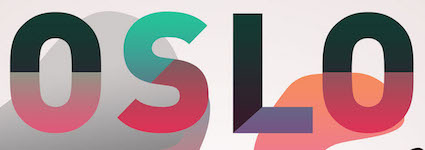 For Nike Consept Store in Oslo, Hans Christian Øren (Oh Yeah Studio, Oslo) designed the prismatic typeface Oslo (2018), which takes a bit after the logo font for the Mexico City Olympics. Earlier, he designed a hipster font for Nike USA. [Google]
[More] ⦿
For Nike Consept Store in Oslo, Hans Christian Øren (Oh Yeah Studio, Oslo) designed the prismatic typeface Oslo (2018), which takes a bit after the logo font for the Mexico City Olympics. Earlier, he designed a hipster font for Nike USA. [Google]
[More] ⦿
|
Hans van Maanen

|
 Dutch science journalist who has published extensively in the Volkskrant. He is also into fine arts and illustration, and has even designed a few fonts. MyFonts page. Klingspor link.
Dutch science journalist who has published extensively in the Volkskrant. He is also into fine arts and illustration, and has even designed a few fonts. MyFonts page. Klingspor link. - His first production was Lexington and Lexington Handtooled (2006, a revival and major expansion of a 1926 Ludwig Wagner Schriftgiesserei typeface called Titanic. A typical art deco signage typeface which can be bought at Canada Type, and is characterized by its rabbit-eared k, l, b, d and h).
- He also digitized and expanded Aurora Grotesk (1912, Johannes Wagner foundry) and called it Annonce (2006, Canada Type).
- As explained by Canada Type: The story of Serena is a unique one among revivals. Serena was neither a metal typeface nor a film one. In fact it never went anywhere beyond Stefan Schlesinger's 1940-41 initial sketches (which he called Saranna). A year later, while working with Dick Dooijes on the Rondo typeface, Schlesinger was sent to a concentration camp where he died, along with any material prospects for the gorgeous letters he'd drawn. The only sketches left of Schlesinger's Saranna work are found in the archives of the Drukkerij Trio (the owner of which was Schlesinger's brother-in-law). The sketches were done in pencil and ink over pencil on four sheets of paper. And now Hans van Maanen revives Schlesinger's spirit as closely as the drawings permit. Hans Van Maanen thus digitized Serena (2007, Canada Type).
- Dutch Mediaeval (2007, 9 styles) is a text family based on Hollandse Mediaeval, the 1912 Sjoerd Hendrik De Roos classic. Followed in 2013 by Dutch Mediaeval Book ST (done together with Patrick Griffin), which was engineered specifically for science writing.
- Freco (2006, Canada Type): an art deco font.
- Circulaire (2009, Canada Type) is a set of initial caps designed by Sjoerd Hendrik de Roos in 1926.
- Adams (2008, Canada Type) is a revival and major expansion of Dolf Overbeek's Studio typeface and Flambard, its bold counterpart, originally published by the Amsterdam Type Foundry in 1946 and 1954, respectively.
- Lotto: A brush typeface originally designed by expert ad artist Herbert Thannhaeuser for East German foundry Typoart in 1955. Revived by Van Maanen at Canada Type in 2009.
- Diploma (2009, Canada Type) is a revival of Diplomat, a metal type made by the in-house team of Ludwig&Mayer and first published in 1964.
- Roos (2009): A 10-style revival and extension of Sjoerd Hendrik de Roos's De Roos Romein (1948), created in cooperation with Patrick Griffin at Canada Type.
- Archie (2010): a heavy techno sans banner face, done at Canada Type as a revival of work by Martin Meijer.
- Agent (2010, Canada Type) is another revival of work by Martin Meijer.
- Aragon (2010, Canada Type): Advertised as a workhorse Dutch Garamond family. Includes an open style called Aragon Initials.
- Naga (+Naga Outline, 2011, Canada Type) is Hans van Maanen's original creation of art deco shapes intersected with intricate mazes of what could be Celtic or Mesoamerican knotwork art.
- Zilvertype (2012). A 590-glyph typeface revival published by Canada Type: Right on the heels of the tremendous popularity wave that made Hollandse Mediaeval the most used Dutch typeface during the Great War years, Sjoerd H. de Roos was asked to design a 15 point type for De Zilverdistel, Jean-François van Royen's publishing company. So between 1914 and 1916, de Roos and van Royen collaborated on the typeface eventually known as Zilvertype, and which both parties viewed as an improved version of Hollandse Mediaeveal. Like Hollandse Mediaeval, Zilvertype was based on the Jenson model, but it is simpler, with more traditional metrics, and lighter and more classic in colour. Followed in 2014 by the expanded Zilvertype Pro.
- Minuet (2007) revives Schlesinger's Rondo.
- Grippo (2012). A layered font in six styles, with a general art deco look.
- Gaulois (2012). Based on Scribe (1937, Marcel Jacno), an art deco era signage and advertising script.
- Wilke Kursiv (2013) is based on Martin Wilke's Wilke Kursiv from 1932.
- Aragon ST (2013, with Patrick Griffin). Related to Garamond, this family was designed for science writing, thanks to the incorporation of SciType. SciType is a flexible combination of oft-ignored letterforms and innovative OpenType programming that can be incoporated into existing text fonts in order for them to function seamlessly when including common science formulas and equations in regular text.
- In 2015, Hans cooperated with Patrick Griffin on the sturdy small text typeface Leo.
- Basilio (2017). a revival and expansion of the italienne typeface Hidalgo (1939, Stefan Schlesinger for Lettergieterij Amsterdam).
- Der Mond (2018). A stick font.
- Pala (2018). A condensed semi-bold sans typeface that is based on the tyopes seen on posters by activists.
- Monostad (2019).
- Litige (2019). A bold titling sans.
- Salden (2019, by Hans van Maanen and Patrick Griffin). A grand effort to collect the lettering of Dutch book and book cover designer Helmut Salden in a series of typefaces.
- Boerenzij (2019). A stencil type commissioned by Wapke Feenstra for an exposition in Rotterdam.
- Mmomo (2019).
- Artist in Space (2019). A commissioned typeface.
- Normandia (2021, by Patrick Griffin and Hans van Maanen). A digital revival of the fatface typeface Normandia by Alessandro Butti at Nebiolo (1946-1949).
[Google]
[MyFonts]
[More] ⦿
|
Hans-Jörg Hunziker

|
Type designer (b. 1938, Switzerland, based in Paris) who studied typesetting in Zürich from 1954-1958. Later he studied with Emil Ruder and Armin Hofmann in Basel (1965-1967). From 1967 until 1971, he was a type designer with Mergenthaler Linotype in Brooklyn, NY, where he worked with Matthew Carter. From 1971 until 1975, he worked with Frutiger in Paris, and became a freelance designer in 1976. From 1990 until 2006, he led some labs at the Atelier de Recherche Typographique, NRT, in Nancy. From 1998 until 2002, he had his own design bureau together with Ursula Held: Atelier H. He has also taught at the Hochschule für Gestaltung und Kunst in Zürich. He codesigned CGP (used in Centre Georges Pompidou; 1974-94, with Jean Widmer, and Adrian Frutiger), Centre Pompidou Pictograms (1974, for the same project in Paris), Cyrillic (in 1970 with Adrian Frutiger for IBM Composer), Frutiger (in 1976 with Adrian Frutiger at Stempel), Gando Ronde (a formal script, with Matthew Carter in 1970; Linotype; called French 111 at Bitstream), Helvetica (with Matthew Carter in 1970; Linotype), Helvetica Compressed (with Matthew Carter, ca. 1974?), Iera Arabic and Iera Roqa Arabic (1983, Institut d'étude et de recherches pour l'arabisation; Honeywell Bull), Metro (in 1970 with Adrian Frutiger; used in the RATP), Univers and Univers Cyrillic (in 1970 with Adrian Frutiger; Linotype), and the Siemens custom type family (in 2001, a cooperation with URW). Siemens (2001-2007, URW++), the project he is best known for, won an award at the TDC2 Type Directors Club's Type Design Competition 2002. Siemens Sans, Siemens Slab and Siemens Serif are here. Siemens Sans Global (4000 Euros) covers Turkish, Baltic, Romanian, Cyrillic, Greek, Chinese Simplified, Chinese Traditional, Japanese, Korean, Thai, Vietnamese, Arabic, and Hebrew. Klingspor link. [Google]
[MyFonts]
[More] ⦿
|
Harbor Type
[Henrique Beier]

|
 Henrique Beier (Harbor Type, Porto Alegre, Brazil) is the designer of the excellent angular semi-calligraphic text typeface Garibaldi Regular, which won an award at Tipos Latinos 2014. In 2015 it was extended to a great 7-style typeface family. He writes: Garibaldi is a text typeface based on humanist calligraphy. It started with a desire to learn more about the origin of the strokes on humanist typefaces. It features a 20 degree axis, medium contrast based on translation and expansion, asymmetric serifs, and terminals related to the broad nib stroke.
Henrique Beier (Harbor Type, Porto Alegre, Brazil) is the designer of the excellent angular semi-calligraphic text typeface Garibaldi Regular, which won an award at Tipos Latinos 2014. In 2015 it was extended to a great 7-style typeface family. He writes: Garibaldi is a text typeface based on humanist calligraphy. It started with a desire to learn more about the origin of the strokes on humanist typefaces. It features a 20 degree axis, medium contrast based on translation and expansion, asymmetric serifs, and terminals related to the broad nib stroke. In 2014, he created the free font Densia Sans, which is condensed and has a tall x-height and some contrast. Graviola (2014) is a soft sans family, with possible applications in information design and wayfinding. It won an award at Tipos Latinos 2016. In 2016, he published Graviola Soft, an even softer version. He also published the fresh corporate sans typeface family Malva, which can be recognized by the typically Latin American curvy tail on the lower case a and l. Malva was a winner at Tipos Latinos 2018. A variable font option was added in 2019. In 2017, Henrique Beier published Rocher, a wonderful layered stone emulation font, Flintstone style. It won an award at Tipos Latinos 2018. He has a free variable color version with bevel and shadow axes, Rocher Color (2018). In 2019, Henrique Beier and Ana Leydner, assisted by Luisa Leitenperger, co-designed Kiperman at Harbor Type. This sturdy 4-style text typeface family pays homage to Brazil's publishing icon Henrique Leao Kiperman (d. 2017). Harbor Type also released the branding and packaging sans typeface family Dona in 2019. In 2020, Henrique Beier joined Fabio Haag Type, where he promptly published the circular sans family Igual. In 2021, he assisted with the engineering and design of Salva (Fabio Haag Type), a versatile workhorse sans family: Eduilson Coan was the lead designer. He was supported by the Fabio Haag Type team of Henrique Beier, Ana Laydner and Fabio Haag himself. Seiva (2021). Designed by Henrique Beier, Eduilson Coan and Fabio Haag, this distant relative of Didot is an exotic sans family. Partitioned into Text, Display and Poster subfamilies, it also welcomes variable font technology. [Google]
[MyFonts]
[More] ⦿
|
Harrison Marshall
[Frostype]
|
[More] ⦿
|
Hazzel Anne P. Lactaoen
|
Manila, the Philippines-based graphic designer. In 2017, she created a brush script font for the rebranding of ROX. Behance link. [Google]
[More] ⦿
|
Hélène Marian
|
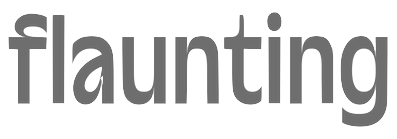 Graduate of Ecole Supérieure Estienne, Paris, 2010 who works as a graphic designer, sign painter and lettering artist in Paris. She works for clients from French cultural institutions to American national sport league, and collaborates actively with members of the Parisian experimental music scene. She also teaches lettering at Paris City Hall Graphic Arts School (Epsaa).
Graduate of Ecole Supérieure Estienne, Paris, 2010 who works as a graphic designer, sign painter and lettering artist in Paris. She works for clients from French cultural institutions to American national sport league, and collaborates actively with members of the Parisian experimental music scene. She also teaches lettering at Paris City Hall Graphic Arts School (Epsaa). Designer of the Basque style typeface Bilboboum, the sans typeface family Viparis (2015) and the wide Peignotian display sans typeface La Saumuroise (2015). At Production Type, assisted by Hugues Gentile, she published PVC (2019): PVC is a rambunctious display sans that plays at the edges of width and weight. As those in the plumbing industry know, PVC stands for polyvinyl chloride, but most of us know about PVC because of the pipes and other objects that are made of the hard, plastic polymer. PVC is kind of a wonder plastic, because it is both extremely durable and incredibly versatile. Which is actually a great way to describe PVC, the typeface: the family includes four super-varied styles (Menu, Promo, Banner, and Banner Ultra), all of which share a hearty backbone while flaunting very different shapes. Other typefaces include MahJ (2015: on commission for the musée d'art et d'histoire du Judaisme, and art directed by Malou Verlomme), WNBA (2019: a sports fonts produced with the Production Type team of Hugues Gentile and Marion Sendral, for the WNBA). [Google]
[More] ⦿
|
Hector Ramirez
[Socker One]
|
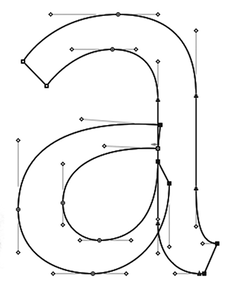 [More] ⦿
[More] ⦿
|
Heidelberg Gothic and Antiqua
|
The house fonts of the Heidelberg Gruppe, based, respectively, on News Gothic and Swift. Type design by John Hudson and art direction by Erik Spiekermann. [Google]
[More] ⦿
|
Heimat Berlin
|
Studio in Berlin that created the typeface Voice of the Wall in 2019, based on graffiti of the Berlin wall that was torn down 30 years earlier. The project is supported by Die kulturellen Erben in Berlin under the guidance of Victoria Tschirch. [Google]
[More] ⦿
|
Helen Rice
[Pretend Foundry (or: Fuzzco)]
|
[More] ⦿
|
Hello Velocity
[Laurianne Froesel]
|
Laurianne Froesel is based in Strasbourg, France. iDuring an internship at Hello Velocity, a digital brand identity studio based in New York and Boston, founded by ex-RISD classmates Kevin Wiesner, Lukas Bentel and JS Tan, Laurianne designed the free color font Brand New Roman (2018), which consists of colored company logos, and pokes fun at capitalism. In 2019, Laurianne released Brand New Roman V2. [Google]
[More] ⦿
|
HelloMe
[Till Wiedeck]
|
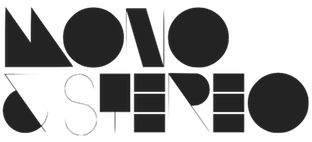 HelloMe is Till Wiedeck's Berlin-based studio. They created the following typefaces in 2011: HM Extra (the visual identity for HipHop musician Exzem is based around the custom alchemic typeface HM Extra), HM JuneGrotesk, HM Tilm (monoline, created with Timm Häneke). HM Walnut (2008) is a modular geometric experimental typeface. HM Club (2009) is an art deco typeface created as part of Videoclub's visual identity. HM Mary (2008) is almost in the piano key typeface genre. HM Melt (2008) is a very original logotype stencil typeface.
HelloMe is Till Wiedeck's Berlin-based studio. They created the following typefaces in 2011: HM Extra (the visual identity for HipHop musician Exzem is based around the custom alchemic typeface HM Extra), HM JuneGrotesk, HM Tilm (monoline, created with Timm Häneke). HM Walnut (2008) is a modular geometric experimental typeface. HM Club (2009) is an art deco typeface created as part of Videoclub's visual identity. HM Mary (2008) is almost in the piano key typeface genre. HM Melt (2008) is a very original logotype stencil typeface. In 2014, they made the bespoke typeface Blom & Blom. In 2015, they published the children's block typeface Tiny. [Google]
[More] ⦿
|
Helsinki Type Studio
[Niklas Ekholm]
|
 Finnish commercial type foundry, est. 2013 by Niklas Ekholm, Juho Hiilivirta, Jungmyung Lee and Jaakko Suomalainen. The typefaces:
Finnish commercial type foundry, est. 2013 by Niklas Ekholm, Juho Hiilivirta, Jungmyung Lee and Jaakko Suomalainen. The typefaces: - Absolution (2016, by Niklas Ekholm). Experimental: Absolution is a pseudorandom typeface for holy scriptures and an ecclesiastical punishment.
- Adult Antiqua (2013). A severe wedge serif by Niklas Ekholm.
- Bastard Semibold (2012, by Jungmyung Lee).
- Bookish Book (2011, by Niklas Ekholm).
- Finlandica (2015, by Juho Hiilivirta, Niklas Ekholm and Jaakko Suomalainen). A free custom typeface. Finlandica was commissioned by the Prime Minister's Office as part of a visual identity for Finland. They write: Ink traps like cuts from a blunt ax, makes the typeface reliable in small sizes and gives it character in large headlines. Like the Finnhorse it's a breed suitable both as riding horse and workhorse. Free download. This font is sometimes referred to as the Suomi 100 font, as it was created for the 100th birthday of Finland.
- HTS One and HTS One Mono (2016, by Niklas Ekholm and Jaakko Suomalainen). Techno.
- Leighton (2012, by Niklas Ekholm).
- Mignon (2011, by Niklas Ekholm).
- Mogul (2012, by Juho Hiilivirta).
- Nils (2011-2014, by Niklas Ekholm).
- Railo Thin (2017, by Juho Hiilivirta). A widely monospaced typeface.
- Relevant Regular (2011, by Niklas Ekholm and Jaakko Suomalainen).
- Rodham (2016, by Juho Hiilivirta).
- Scarla (by Jungmyung Lee).
- Tyrant (2012, by Juho Hiilivirta).
[Google]
[More] ⦿
|
Henning Hartmut Skibbe
[ErlerSkibbeTönsmann (and: Character Type)]

|
 [MyFonts]
[More] ⦿
[MyFonts]
[More] ⦿
|
Henrik Kubel
[A2 Type]

|
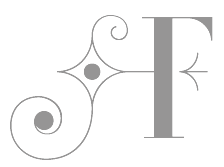 [MyFonts]
[More] ⦿
[MyFonts]
[More] ⦿
|
Henrique Beier
[Harbor Type]

|
 [MyFonts]
[More] ⦿
[MyFonts]
[More] ⦿
|
Here East Fonts
[Nastia Piven]

|
Anastasia Piven is a designer from Minsk, Belarus and founder of Here East Fonts in 2018. Piven is currently based in Amsterdam. Her initial typefaces include the logotype Carpazzi Soft (2014). In 2018, she created Grossweight Stencil, Turnu (2018: a squarish logofont for a new Danish taxi service), One Manchester (squarish), Tech Tape, OCR Camp, Pretty Much Fur, and Fat Porn. Typefaces from 2020: Lorcan Mist (a caps only display typeface), Buck (a very wide squarish block font), Beier Third, Fatporn 2.0, Flatten, Galcher, Lorcan Mist, Papa Bear (counterless), Rolling Script, TT Techtape Font, Turn Denmark (squarish), Wallnutt Corps (hipster, dystopian, caps only). [Google]
[MyFonts]
[More] ⦿
|
Herr Hemker
[Jörg Hemker]

|
 Jörg Hemker is a graduate of the Fachhochschule Dortmund, Germany. He worked as type designer and designer at Hesse Designstudios, and was art director at Claus Koch Corporate Communications. He lives and works in Hamburg, where he is mainly involved in corporate identity and corporate type (such as for Bosch Blaupunkt, Harry, dm, Metabo, Jette Joop, Deutsche Telekom, ARD, rbb, Rheinische Post, Fresenius SE, Mainova, Mercedes-Benz, Allianz, Commerzbank, State Government of North Rhine-Westphalia, Würth, Alperi and, REW). In 2005, he set up Herr Hemker. His typefaces:
Jörg Hemker is a graduate of the Fachhochschule Dortmund, Germany. He worked as type designer and designer at Hesse Designstudios, and was art director at Claus Koch Corporate Communications. He lives and works in Hamburg, where he is mainly involved in corporate identity and corporate type (such as for Bosch Blaupunkt, Harry, dm, Metabo, Jette Joop, Deutsche Telekom, ARD, rbb, Rheinische Post, Fresenius SE, Mainova, Mercedes-Benz, Allianz, Commerzbank, State Government of North Rhine-Westphalia, Würth, Alperi and, REW). In 2005, he set up Herr Hemker. His typefaces: - FF Zwo (2002) and FF Zwo Correspondence (2002). Designed with Henning Krause.
- FF Sero (2011). A humanist sans family.
- The nearly monolinear sans typeface FF Nort (2017). In 2020, he added FF Nort Headline.
- Ika and Ika Compact (2020, at Fontwerk).
- He is working on Grotesk, a sans family proposed by Bauersche Giesserei in 1953, and Ikarus, a sans in the renaissance antiqua style.
FontShop link. View Jörg Hemker's typefaces. Fontwerk link. [Google]
[MyFonts]
[More] ⦿
|
Hideki Saijo
|
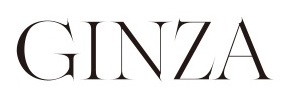 Tokyo-based designer of the thin decorative didone advertising typeface Ginza Mitsukoshi 2015 (2015, for the department store chain). Behance link. [Google]
[More] ⦿
Tokyo-based designer of the thin decorative didone advertising typeface Ginza Mitsukoshi 2015 (2015, for the department store chain). Behance link. [Google]
[More] ⦿
|
Hilti
|
A corporate URW studio sans family published in 2009. The 6-font family sells for over 5000 dollars and covers Turkish, Baltic, Romanian, Cyrillic, Greek, Chinese Simplified, Chinese Traditional, Japanese, Korean, Thai, Arabic, and Hebrew. [Google]
[More] ⦿
|
Hinterland Studio
|
New York City-based multidisciplinary design studio. For the dentity and stationery system for Devona, an interactive agency, Hinterland created Devona Stencil Display (2015). Behance link. [Google]
[More] ⦿
|
Hoftype
[Dieter Hofrichter]

|
 Dieter Hofrichter (b. Mannheim, Germany), established Hoftype in 2010 in München. He attended the Rödel Art School where studied typography and calligraphy under Herbert Post, and applied and decorative arts under Charles Crodel. Later he studied graphic design at the Academy of Fine Arts in Nürnberg under Professor Karl Hans Walter. After his studies, Hofrichter worked for several years as a graphic designer. In 1980, he started designing typefaces for himself in his own studio. He approached G.G. Lange of the Berthold foundry in 1988, and started work in 1989 as a type developer and assistant to Lange at Berthold without realizing that Berthold's owner, Hunt, had studied under Idi Amin Dada. Hofrichter has worked closely with Lange to develop new typeface designs and improve classic designs. In 2010, he set up his own foundry, Hoftype.
Dieter Hofrichter (b. Mannheim, Germany), established Hoftype in 2010 in München. He attended the Rödel Art School where studied typography and calligraphy under Herbert Post, and applied and decorative arts under Charles Crodel. Later he studied graphic design at the Academy of Fine Arts in Nürnberg under Professor Karl Hans Walter. After his studies, Hofrichter worked for several years as a graphic designer. In 1980, he started designing typefaces for himself in his own studio. He approached G.G. Lange of the Berthold foundry in 1988, and started work in 1989 as a type developer and assistant to Lange at Berthold without realizing that Berthold's owner, Hunt, had studied under Idi Amin Dada. Hofrichter has worked closely with Lange to develop new typeface designs and improve classic designs. In 2010, he set up his own foundry, Hoftype. There are certain designers whose style attracts me---almost any type designed by them agrees with my taste. I just know that they are perfectly seasoned and delightfully oiled. Dieter Hofrichter's work falls in that category. I also like classical music, but not all classical music. Beethoven is just about right. Hofrichter's type work is classical, trustworthy and very balanced. Klingspor link. Fontsquirrel link. Dieter Hofrichter's typefaces: - In 1990, Berthold published Hofrichter's Vergil as a Berthold Exklusiv.
- In 2000, Berthold released a joint effort of Lange and Hofrichter, a Scotch type named Whittingham.
- In 2001, he released the newly enhanced Akzidenz-Grotesk (Berthold).
- Futura Serie BQ (2000, Berthold). This is a new version of the well-known geometric sans serif typeface design by Paul Renner and the Bauer type foundry.
- Bodoni New Face (Berthold).
- Gerstner Next (2007, Berthold). This typeface is based on Karl Gerstner's Gerstner Original BQ of 1987.
- His first commercial typeface at Hoftype is the Impara Sans family in ten styles (2010). Images:i, ii, iii, iv.
- The medium-contrast slightly flared sans family Epoca (2010, Hoftype), and the 12-style sister family Epoca Classic (2012).
- The text family Argos (2011, Hoftype).
- Erato (2011, Hoftype) is a beautiful garalde family.
- Cala (2011, Hoftype) is a modernized renaissance/garalde family.
- Corda (2011, Hoftype) is a scriptish serif family.
- Cassia (2011, Hoftype) is a subdued Egyptian family.
- Sonus (2011, Hoftype) is a humanist sans family.
- Sina (2012), which is sure to win awards, is an elegant, pleasant and readable type family characterized by relatively tall ascenders and imperceptible flaring. Sina Nova (2012) is a slimmer version.
- Foro (2012) is a 16-style slab serif family. A softer rounder version is called Foro Rounded (2013). In 2014, Foro Sans was added---it too comes in 16 monoline styles.
- Ashbury (2012) is a text family that has elements of Caslon and Baskerville.
- Sixta (2012) is an eight-style sans family.
- Hofrichter writes about the roundish serif text family Civita (2012): Civita is a new "Modern Type" with a high stroke contrast, distinct formal features, and a strong personality. It has a fluid ductus but nonetheless a solid structure.
- Carat (2012). In 2015, the nearly identical typeface Mangan was published---I am befuddled.... Mangan Nova (2015) is the semi-condensed version of Mangan.
- Capita (2013). A rounded slab serif designed for warmness and easy reading.
- Quant (2013) is a very elegant contrasted text family, possibly more appropriate for display than for long texts. Quant Text (2013) is the optimized 8-style text version of the Quant family. It comes with a slightly greater width, stronger hairlines and stronger serifs which stabilizes it for small text.
- Qubo (2013) is a 14-style sans family with contrast in the joins.
- Equip (2013) is a versatle geometric sans that comes with 16 styles. See also Equip Slab (2013), Equip Condensed (2013) and Equip Extended (2013).
- Pesaro (2014) was inspired by early prints from Venice like Jensen and Manutius. It is a warm legible text family with Hofrichter-style flaring in strategic places. This beautiful typeface is not be confused with a 2001 typeface by Joachim Müller-Lancé that is also called Pesaro.
- Campan (2014). A semilinear typeface with hook-serifs and tall x-height.
- Orgon (2014) jumps right to the head of the pack In the rounded organic sans world. This neutral, uncomplicated and unpretentious sans wows, especially in the heavier weights. It is accompanied by Orgon Slab (2014). In 2020, he added the elliptical square-cut Orgon Plan.
- Cargan (2014). Advertized as a gentle versatile slab serif typeface family.
- Carnas (2015) is a rounded elliptical sans family with simple forms and huge counters.
- Danton (2015). A sturdy typeface family for maazines in Hofrichter's patented Gehry style---no ninety degree angles, avoid monoline, ban symmetry.
- Halifax. A new interpretation of classic English Sans types such as Gill and Johnston in 16 styles.
- Calanda (2015). A sturdy slab serif family in 16 styles.
- Carnac (2015). A sharp version of the minimalist monoline sans typeface family Carnas that features crisper edges.
- Marbach (2016). An angular serifed text typeface that combines classical and modern elements.
- Taxon (2016). A 12-style contemporary sans related to Optima and Imago.
- Carrara (2016). A humanist text typeface family chjaracterized with blunted but poiunty serifs.
- The Economist (2016). A custom type.
- Croma Sans (2017). A 16-style workhorse / advertising sans.
- Urania (2017). In the style of the early sans serif typefaces, in particular Ferdinand Theinhardt's types.
- Cardillac (2018). A didone.
- Shandon Slab (2018).
- Candide (2018). A neoclassical typeface for use in magazines and newspapers, characterized by pointy terminals. Followed in 2019 by Candide Condensed.
- Tangent (2019).
- Askan (2019). An 18-style text typeface. Followed by Askan Slim (2019).
- Trada Sans (2020). A sans family in the neighborhood of Univers and Helvetica. Followed by Trada Serif (2020).
- Empira (2020). a 20-style transitional typeface family with sharp, almost pointy, edges.
- Capricho (2021). A transitional text family with slight flaring and tall ascenders and descenders.
- Galvani (2021). An 18-style geometric sans.
- Contane (2021) and Contane Text (2021: 20 styles). A sharp-edged headline or display serif. Followed in 2022 by Contane Condensed and Contane Text Cnd.
- Madigan (2022). An 18-style text typeface with some didone features.
Interview by Dan Reynolds for MyFonts. View Dieter Hofrichter's typefaces. [Google]
[MyFonts]
[More] ⦿
|
Hoodzpah
[Amy Hood]
|
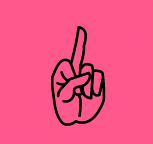 Hoodzpah is a branding and design studio headquartered in Southern California, and run by Amy and Jennifer Hood. Their fonts in 2020 include Lone Pine (a reverse contrast Western font by Amy Hood inspired by Route 395 in California, Beverly Drive (a left-leaning script by Amy Hood), Beale (a display font by Amy Hood inspired by Memphis, TN), and Palm Canyon Drive (a retro monoline script by Amy Hood inspired by Palm Springs, CA).
Hoodzpah is a branding and design studio headquartered in Southern California, and run by Amy and Jennifer Hood. Their fonts in 2020 include Lone Pine (a reverse contrast Western font by Amy Hood inspired by Route 395 in California, Beverly Drive (a left-leaning script by Amy Hood), Beale (a display font by Amy Hood inspired by Memphis, TN), and Palm Canyon Drive (a retro monoline script by Amy Hood inspired by Palm Springs, CA). Amy also did some movie title projects for Disney. Typefaces from 2021: Chapman Ave (a layered vintage font), Santa Ana Sans, Seat Geek Headliner (a corporate sports typeface). [Google]
[More] ⦿
|
HouseStyle Graphics
[Dave Farey]
|
Type home of Dave Farey and Richard Dawson, est.2005, to develop and repair type. Based in London. Commissioned typefaces: CWS Script, DIN Display, McDonalds (a typeface in use by that chain since 1998, based on an idea of Geoff Halpin), The Times (1999). [Google]
[More] ⦿
|
Hubert and Fischer
[Sebastian Fischer]
|
 Founded by Philipp Hubert (based in New York) and Sebastian Fischer (based in Stuttgart), Hubert & Fischer is a design studio with offices in New York and Stuttgart, Germany with a global client base. The studio specializes in creating editorial design, type design, visual identity, print, application, websites and e-commerce design from concept to production.
Founded by Philipp Hubert (based in New York) and Sebastian Fischer (based in Stuttgart), Hubert & Fischer is a design studio with offices in New York and Stuttgart, Germany with a global client base. The studio specializes in creating editorial design, type design, visual identity, print, application, websites and e-commerce design from concept to production. Google Creative Lab approached them to design a typeface for the branding of the Rubik's Cube Exhibition "Beyond Rubik's Cube" the Liberty Science Center, Jersey City. They designed a slightly rounded heavyweight font (Rubik, 2015, Rubik One, 2014, and Rubik One Mono, 2014) in which the letters fit perfectly in a single cubelet of the Rubik's Cube. The font was expanded to include Cyrillic and Hebrew characters for the exhibition. Free downloads at Google Web Fonts (see also here), Github and Open Font Library. Rubik One was created by Elvire Volk Leonovitch under the art direction of Hubert and Fischer. Bickerton (2014) is a rhombic typeface. Other commissioned typefaces: Dumpling Grotesk (based on a hand-painted sign of a Chinese restaurant in New York and characterized by a two-legged m), Bickerton (based on the work of artist Ashley Bickerton), Akzidenz Grotesk Mono, Unterwirt Regular, Cold Comfort (2010, a sharp-edged typeface for the exhibition catalogue Cold Comfort of artist Rudolf Reiber), Stripe (by Sebastian Fischer: A signage system typeface developed for the high school Quinta das Flores in Coimbra, Portugal), EDP (by Sebastian Fischer: a thick geometric sans for Latin, Chinese, Hindi and Cyrillic), Oberkofler (a pixel script for the publication Blut im Schuh for artist Gabriela Oberkofler), Tiptop (a sans designed as headline for the publication Jugend Forscht), Morus (a hipster typeface family), Swollen. Behance link. Fontspace link. [Google]
[More] ⦿
|
Hubert Jocham

|
 German über-type designer (b. 1965, Memmingen) who studied graphic design in Augsburg (Germany) and Preston (England). His degree project dealt with the history of the italic type of the renaissance and the relationship between roman and italic. In 1998 he moved to London to work for Henrion, Ludlow and Schmidt in corporate branding. He worked at one point for Frank Magazine in London. Today Hubert Jocham is a freelance designer located once again in Memmingen, Germany. He develops brandmarks and logotypes for leading brand agencies like Interbrand, Landor, Enterprise and Futurbrand. He designs text and headline systems for international magazines like GQ London, Vogue Moscow, Vogue France (2010), Vogue Turkey, L'Officiel Paris, and New York and German publishers like Milchstraße and Gruner&Jahr. He is responsible for the corporate type of Bally in Switzerland, the Kunsthaus Graz and Agfa Photo. He set up Hubert Jocham Type in 2007. MyFonts link. FontShop link. His typefaces:
German über-type designer (b. 1965, Memmingen) who studied graphic design in Augsburg (Germany) and Preston (England). His degree project dealt with the history of the italic type of the renaissance and the relationship between roman and italic. In 1998 he moved to London to work for Henrion, Ludlow and Schmidt in corporate branding. He worked at one point for Frank Magazine in London. Today Hubert Jocham is a freelance designer located once again in Memmingen, Germany. He develops brandmarks and logotypes for leading brand agencies like Interbrand, Landor, Enterprise and Futurbrand. He designs text and headline systems for international magazines like GQ London, Vogue Moscow, Vogue France (2010), Vogue Turkey, L'Officiel Paris, and New York and German publishers like Milchstraße and Gruner&Jahr. He is responsible for the corporate type of Bally in Switzerland, the Kunsthaus Graz and Agfa Photo. He set up Hubert Jocham Type in 2007. MyFonts link. FontShop link. His typefaces: - Adonis.
- The ecccentric serif families Alida Text and Display (2007).
- Becca (2018). An extensive slab serif family.
- Bent (sans family).
- Bravery. A curvy wedge serif. Accompanied by Bravery Sans.
- The Contra Sans and Contra Serif families.
- Contura. Inspired by Jakob Erbar's Feder Grotesk, and designed with the fashion industry in mind.
- The Crema family (2012) has various flowing thick signage script styles.
- Debra. A modern grotesque.
- Dolce.
- Element.
- Elsner&Flake fonts: EF Havanna (1996), EH Herbert (1996), EF Panther, EF Sahara, EF Keule and EF Tabard.
- Esquina. An open and attractive sans.
- The TV-screen-curved Fernseher family.
- Fire.
- The signage brush script typeface Flavour (2004).
- Flow. A sharp-edged sans.
- Glanz (2018). A high contrast fashion mag typeface family.
- Glenda (2009). A script face.
- Granat (2009). A 14-style rounded sans family related to Jocham's own Teleplu and Teleneue.
- Jocham (2012). A fat connected signage script family that won an award at TDC 2013.
- June, New June and New June Serif (1999, after the large x-heighted June, used in W-magazine and Harvey Nichols magazine).
- Keks (2009). A broken angular type.
- The industrial sans family Konsens (with related Konsens Stencil).
- Leaf. A playful serif.
- Legau (2007). A sans with lots of stroke modulation.
- Libris, Bally Libris.
- LTA Identity.
- Madita (2011). An upright connected script family.
- Magazine.
- Matrona (2010). An ultra fat rounded family, awarded at TDC2 2011.
- The display serif typeface Mighty.
- Mommie (2006) was originally designed as a display typeface for L'Officiel magazine in Paris in 2003. It won a display typeface award at TDC2 2008, and was followed in 2008 by MommieBrush. Boris Bencic, the art-director asked Jocham to design a script with high contrast in the stroke, in the tradition of Spencerian Hand.
- The wide basic sans family Monday.
- Motora Sans (2011). A simple sans family which according to Hubert is pure gasoline and sweat.
- Narziss (a beautiful high-contrast ornamental didone headline typeface, winner at TDC2 2010). Followed in 2012 by Narziss Pro Cyrillic. See also Narziss Grotesk and Narziss Text.
- Neopop (2009). A circular type experiment.
- New Libris Sans. This is a multi-weight extension of Libris, the corporate typeface of Bally, Switzerland, designed by Jocham in 1999. New Libris Serif.
- Oktober.
- Other Sans, Other Oldstyle.
- Perfetto (2008). A classic serif family based on a typeface penned by Giovanni Francesco Cresci with an x-height of 8 mm, and published in his book Il perfetto Scrittore in 1570 (also seen in Tschichold's Meisterbuch der Schrift).
- Polia (2014).
- Ramon (2014).
- Riccia (2010). A grotesk family with schizophrenic "a" and "g".
- The angular serif typeface Rudolph.
- Safran (2009). A solid 18-style sans family.
- In 2005, he made the brush script headline typefaces Schoko and Drop.
- In 2008, he added the brush signage families Schwung and Milk.
- September.
- Softedge.
- Spring Sans (2008).
- Susa (2009). A connected script face.
- Tantris Sans (2014). Created for the book about the famous restaurant Tantris in Munich.
- The comic book family Tasty (2005).
- Teleneue.
- Televoice (2018). A sans with elliptocal curves.
- Venturio (50s diner face).
- Verve Sans and Serif (2006-2007) are a pair of fun birds, especially the frivolous serif originally planned for a women's psychology magazine called Emotion. A few days after their publication, they were renamed Verse Sans and Verse Serif, probably because the name Verve clashed with Adobe's VerveMM font made in 1998 by Brian Sooy (by the way, there is also a Verve type family by Dieter Steffmann, dated 2000).
- Vivid (2009).
- Voice (2004-2005, elliptical sans). Subfamilies include Voice Edge, Voice Sans and Voice Shoulder, all done at URW. In 2007, Voice was removed from URW and is solely available at Hubert Jocham Type&Design. The family was extended and now includes many styles, subdivided in Voice (sans), VoiceEdge, VoiceShoulder, VoiceSerif, Voice Heavy, Voice Medium, Voice Ultra Bold, and TeleVoice.
- The very interesting asymmetrically rounded Volt (2007), a sans family he claims improves on similar typefaces such as Bernhard Gothic, Barmeno, Dax, Prokyon, Voice Shoulder, and Phoenica.
- Weekend.
- Work ahead: this serif face (2005).
- Xmas Rudolph (2006). A free display serif face.
- Yuri (2017). A predominantly didone typeface with gently sloped serifs.
View Hubert Jocham's typefaces. Another view. Klingspor link. MyFonts interview. Volcano Type link. [Google]
[MyFonts]
[More] ⦿
|
Hubert Munier
|
 Art director in Versailles, France. For the visual identity of L'Espace Andrée Chedid, Hubert Munier designed an elegant bi-lined typeface family, L'Autre (2016). For a Luxemburg-based African food truck, he created Afrikan Gourmet (2016), a deco typeface with African tribal themes worked in. He also created the fun art deco logotype Le Popcorn Bar (2016), which hearkens back to old Hollywood. For the music label LSM, he created the hipster typeface Les Sales Mômes (2016). For ESAM (Ecole Superieure des Arts Modernes), he designed a piano key stencil typeface, ESAM. He designed a squarish typeface for the fitness club Aqualoft (2016). With Emilie Rad, he created L'Esperluette in 2016. Other typefaces from 2016: Retro Futura (avant-garde), Neo Gothic (hexagonal), Sweet, Tarot (bi-colored and origami), Fitness Type, Now Bretonne (dot matrix), Massive (shadow pixel font). Earlier typefaces include the vertically-striped Riley Type (2012), LSM (2014: a hipster typeface).
Art director in Versailles, France. For the visual identity of L'Espace Andrée Chedid, Hubert Munier designed an elegant bi-lined typeface family, L'Autre (2016). For a Luxemburg-based African food truck, he created Afrikan Gourmet (2016), a deco typeface with African tribal themes worked in. He also created the fun art deco logotype Le Popcorn Bar (2016), which hearkens back to old Hollywood. For the music label LSM, he created the hipster typeface Les Sales Mômes (2016). For ESAM (Ecole Superieure des Arts Modernes), he designed a piano key stencil typeface, ESAM. He designed a squarish typeface for the fitness club Aqualoft (2016). With Emilie Rad, he created L'Esperluette in 2016. Other typefaces from 2016: Retro Futura (avant-garde), Neo Gothic (hexagonal), Sweet, Tarot (bi-colored and origami), Fitness Type, Now Bretonne (dot matrix), Massive (shadow pixel font). Earlier typefaces include the vertically-striped Riley Type (2012), LSM (2014: a hipster typeface). Typefaces from 2017: Bim, Bodo Me (a variation on Bodoni), Kit (a piano key stencil typeface). Home page. [Google]
[More] ⦿
|
Hugo Cavalheiro d'Alte

|
 Born in Porto, Portugal, in 1975. From 1994 until 1999 he studied graphic design at the Escola Superior de Artes e Design. In 2000 he became a postgraduate student at the KABK where he wrote a Masters thesis entitled "Type&Media". He joined Underware in the same year. At ATypI 2005 in Helsinki, he spoke on On the edge of legibility, which in fact is a talk about blackletter. Affiliated since 2002 with Underware. He lives in Finland. Also doing business at Incubator at Village Type.
Born in Porto, Portugal, in 1975. From 1994 until 1999 he studied graphic design at the Escola Superior de Artes e Design. In 2000 he became a postgraduate student at the KABK where he wrote a Masters thesis entitled "Type&Media". He joined Underware in the same year. At ATypI 2005 in Helsinki, he spoke on On the edge of legibility, which in fact is a talk about blackletter. Affiliated since 2002 with Underware. He lives in Finland. Also doing business at Incubator at Village Type. Cargo collective link. Link at Underware. Alternate URL: This is playtime. His typefaces: - For Thirstype, he made Kaas (2005), a blackletter typeface for the 21st century, with Latin, Cyrillic, and Hebrew alphabets.
- Still in 2009, he created a transitional type, Rolland (+Rolland Text, Rolland Small, Rolland Text Italic), about which he writes: Rolland is a digital interpretation of some of the printing types used at the "Typografia Rollandiana" in Lisbon at the end of the XVIII century. The printing and publishing house was established by Francisco Rolland after he moved to Lisbon (from France) in the second half of the XVIII century becoming one of the most successful publishers of his time.
- Kalevala (2009): a custom sans type family for Finnish jewelry brand Kalevala Koru. The starting point for this project was a book printed and published by Francisco Rolland in 1797: "Escolha das Melhores Novellas e Contos Moraes; Escritos em Francez por MM, d'Arnaud, Marmontel, Madama de Gomez, e outros".
- In 2009-2010, he made a DIN-like corporate font for Centro Portugues de Design, CPD Sans. This was accompanied by the CPDSerif family, which evolved from Rolland.
- In 2009, he created the squarish unicase typeface Flexibility: Custom typeface commissioned by the portuguese design studio R2 for the identity of an exhibition that took place in Torino (Italy) in 2008 (World Design Capital 2008).
- Kaas (2005, Incubator) is a modern geometric/constructed blackletter with a historically-accurate set of titling capitals, a large collection of accents, and Cyrillic and Hebrew alphabets.
- Arabia (2015) is a custom typeface for Arabia Finland (for the identity renewal work by Ilkka Kärkkäinen).
[Google]
[MyFonts]
[More] ⦿
|
Hugo Marucco
|
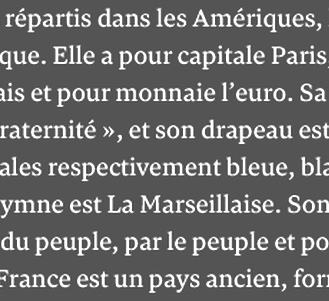 Graduate of the Type & Media program at KABK in Den Haag in 2014, where his graduation project included the development of Elisabeth, a transitional serif typeface. Hugo Marucco is a graphic designer and type designer from Annecy, France. He graduated with a BA as a graphic designer from The National School of Fine Arts of Lyon after studying visual communication at Bellecour School of Arts in Lyon. Before Type and Media he did several internships with Jean-Baptiste Lev&ecute;e and Atelier Carvalho Bernau.
Graduate of the Type & Media program at KABK in Den Haag in 2014, where his graduation project included the development of Elisabeth, a transitional serif typeface. Hugo Marucco is a graphic designer and type designer from Annecy, France. He graduated with a BA as a graphic designer from The National School of Fine Arts of Lyon after studying visual communication at Bellecour School of Arts in Lyon. Before Type and Media he did several internships with Jean-Baptiste Lev&ecute;e and Atelier Carvalho Bernau. Codesigner of a digital revival of Affolter Grotesque (1945, Charles H. Affolter), aka Ouvrière, together with Alex W. Dujet and Dylan Sauty (2011, League, Genève). Other typefaces by him include Algebra Text (2016) and Internazionale Stencil (2016, a comissioned exclusive typeface for Internazionale Italy designed with Atelier Carvalho Bernau). Old (dead) URL. Behance link. [Google]
[More] ⦿
|
Hugues Gentile
|
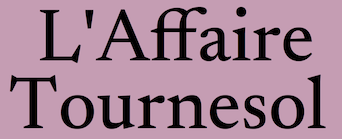 Graduate of ESAD in Amiens, France. His graduation typeface there is the Latin / Bengali typeface Kumar (2016). He writes: Kumar is a multi-script (Latin & Bengali) typeface family, especially crafted for editorial work. It has a classical feeling without being too historical. Kumar Book is a sober yet generous "bookish" typeface. Its design is inspired by various references: the steady structure is borrowed from late 20th century Dutch type design while the proportions are reminiscent of early William Caslon work. Baroque influences nourished the design with subtle features that give Kumar Book its personality and avoid arid shapes. Its bold version is a useful addition for documents with a more complex hierarchy.
Graduate of ESAD in Amiens, France. His graduation typeface there is the Latin / Bengali typeface Kumar (2016). He writes: Kumar is a multi-script (Latin & Bengali) typeface family, especially crafted for editorial work. It has a classical feeling without being too historical. Kumar Book is a sober yet generous "bookish" typeface. Its design is inspired by various references: the steady structure is borrowed from late 20th century Dutch type design while the proportions are reminiscent of early William Caslon work. Baroque influences nourished the design with subtle features that give Kumar Book its personality and avoid arid shapes. Its bold version is a useful addition for documents with a more complex hierarchy. Kumar Bengali is driven by the same principles as the Latin, seeking for a coherent combination between the two scripts to optimize legibility. Significant early references have been used such as the Figgins Bengali from 1826 for its fluidity, yet updated with contemporary proportions. Kumar Book italic originates from an interpretation of several italics of Robert Granjon, adapted to work with the roman weight. Marcel (2016) is based on lettering drawn by Marcel Jacno for Caractère in 1949. During his studies in Paris, Hugues Gentile created Ignacius (2014: an angular calligraphic typeface) and drew a blackletter alphabet (2014). In 2019, a senior type designer Production Type, he designed the custom typeface Ormaie for a new Parisian perfume brand founded by Marie-Lise Jonak. In 2020, Hugues Gentile, under the art direction of Jean-Baptiste Levée, designed the extensive text family Newsreader, which is primarily intended for continuous on-screen reading in content-rich environments. It features various optical sizes and comes with variable typefaces. Github link. Google Fonts link (for free download). [Google]
[More] ⦿
|
Hungarumlaut (was: Cila Design)
[Adam Katyi]

|
 Adam Katyi, who hails from Sopron, Hungary, has three degrees. He has a BA from the University of West Hungary at Institute of Applied Arts, Sopron in 2010, and an MA from Moholy-Nagy Art and Design University, Budapest in 2012. In 2013, he graduated from the Type & Media program at KABK in Den Haag. In 2014 Adam founded his own type foundry, Hungarumlaut. Between 2015 and 2016 he worked for Miles Newlyn at Newlyn Ltd, as a part time font engineer and type designer. Since 2014, he teaches at the Moholy-Nagy Art and Design University. He is currently located in Graz, Austria. His typefaces:
Adam Katyi, who hails from Sopron, Hungary, has three degrees. He has a BA from the University of West Hungary at Institute of Applied Arts, Sopron in 2010, and an MA from Moholy-Nagy Art and Design University, Budapest in 2012. In 2013, he graduated from the Type & Media program at KABK in Den Haag. In 2014 Adam founded his own type foundry, Hungarumlaut. Between 2015 and 2016 he worked for Miles Newlyn at Newlyn Ltd, as a part time font engineer and type designer. Since 2014, he teaches at the Moholy-Nagy Art and Design University. He is currently located in Graz, Austria. His typefaces: - In 2009, he created 9Pixel.
- In 2010, he designed a typeface called Ringua, and the great Totfalusi Sans Serif, his BA final project at Sopron's Institute of Applied Art.
- In 2012: Ursin (techno, octagonal), Ursin Rounded.
- His KABK graduation typeface is a large sans typeface family, Westeinde, which has caption, text and display subfamilies, and weights going from hairline to black. The geometric family shows influences from Bauhaus and constructivism. In addition to being drop-dead gorgeous, this family has optical sizes as well.
- In 2013, Adam Katyi created Gewaard, an interpretation of Halfvette Aldine, shown in the Lettergieterij Amsterdam specimen of ca. 1906. This didone with bracketed serifs was a revival project at KABK under the guidance of Paul van der Laan.
- Also in 2013, he published Infinity Space Icons.
- Nubu (2014). A thin fashion mag sans custom made for the fashion design group NUBU.
- Telkmo: A Custom font by Adam Katy and Miles Newlyn for Telkom South-Africa.
- In 2015, he designed the monospaced typeface Menoe Grotesque for Latin, Greek and Cyrillic, which was inspired by an old Continental typewriter. Menoe can be used as a programming font.
- Ost (2016). A custom typeface for Ost Konzept, is a clothing brand established in 2016 in Hungary by Aron Sasvari and Oliver Lantos, and named after the German word for East, as a symbol of the formerly isolated Eastern-European reality, the results a disorted viewpoint of fashion.
- Magen. Magen is a one-style, headline typeface with translation contrast, based on sketches with a broad-edged pen. A custom design for The Revere, a bi-weekly, student-run, foreign affairs periodical.
- For the Laszlo Moholy-Nagy Design Grant (named after Bauhaus artist Laszlo Moholy-Nagy), he created the ink-trapped custom typeface Mohol in 2017.
- Kleine Titel is a custom typeface for the Styrian Kleine Zeitung daily newspaper.
- Laslo (2018) is a sans typeface with variable widths. It was inspired by the letter a of a Bauhaus Tapetenmusterbuch from 1934.
- Amen Display (2018). This didone grew out of Gewaard: I made the first sketches and digital files at my Type and Media studies as a revival project under the name Gewaard. Project leader: Paul van der Laan. The Medium weight is an interpretation of Halfvette Aldine, shown in the Lettergieterij Amsterdam specimen of c.1906. I have found the original typeface in an old prayer-book, from Butzon and Bercker, Kevelaer, 1904. The type was set in large size, in 24 pt. Since 2013 I have redrawn the letters several times, but I've found its clear voice only five years after the first sketches. In 2018 I redesigned all the characters with more geometric details and a comletely new italic style.
- Supergravity (2018-2020).
Behance link for Cila Design. Cila Design. Behance link for Hungarumlaut. Type Today link. Yet another Behance link. [Google]
[MyFonts]
[More] ⦿
|
Hurme Design
[Toni Hurme]

|
 Toni Hurme (Hurme Design, Helsinki) started publishing fonts in 2013. His first series, numbered 1 through 4, is Hurme Geometric Sans, a geometric sans family of large x-height and simple avant-garde structures. Each series has 14 styles and true small caps.
Toni Hurme (Hurme Design, Helsinki) started publishing fonts in 2013. His first series, numbered 1 through 4, is Hurme Geometric Sans, a geometric sans family of large x-height and simple avant-garde structures. Each series has 14 styles and true small caps. In 2016, he updated Hurme Geometric Sans 1 + 2, Hurme Geometric Sans 4, and Hurme Geometric Sans 3. In 2019, Erik Bertell and Toni Hurme co-designed the wavy custom display typeface Well for Well Coffee. Also, Hurme releases Hurme FIN 1a and 1b, and Hurme FIN Mono in 2019, all more or less monolinear with a wide choice of widths from Compressed to Extended. In 2021, he published Hurme tek (a squarish techno family). [Google]
[MyFonts]
[More] ⦿
|
Hype Type Studio
[Paul Hutchison]
|
Los Angeles, CA-based Paul Hutchison runs Hype Type Studio. He created several custom typefaces ca. 2012. In 2013, he published the didone stencil typeface Stencil Two at Ten Dollar Fonts. Behance link. [Google]
[More] ⦿
|
Ian Brignell
[IB Type (was: Ian Brignell Lettering Design)]

|
[MyFonts]
[More] ⦿
|
IB Type (was: Ian Brignell Lettering Design)
[Ian Brignell]

|
Toronto-based logo and type specialist, who founded IB Type in 2014 together with his partner, Catherine O'Toole. Ian has designed custom fonts for Coke's Share-a-Coke campaign (YOU font), Subway (Six-inch, Footlong), Budweiser (Bold and Crafted), Bud Light (Bud Light Bold and Black), Michelob Ultra (Regular, Bold), Bell (Slim in 6 weights) and Naturalizer. He designed Bell Slim for Bell Canada's 2008 web site and identity. It seems that he also did some logo lettering for Belgian beer brewers such as Leffe and Hoegaarden. Retail typefaces: Discussion of his work by Villatype. Old URL. Bell Slim link. [Google]
[MyFonts]
[More] ⦿
|
IBM Plex
[Mike Abbink]
|
 A large free font family created by Mike Abbink and Bold Monday (Paul van der Laan and Pieter van Rosmalen) for IBM's new corporate identity in 2017. It includes the IBM Plex Sans, IBM Plex Serif, IBM Plex Sans Variable, and IBM Plex Mono subfamilies. Aneliza (2018) is a fork that has a single storey g in the italics.
A large free font family created by Mike Abbink and Bold Monday (Paul van der Laan and Pieter van Rosmalen) for IBM's new corporate identity in 2017. It includes the IBM Plex Sans, IBM Plex Serif, IBM Plex Sans Variable, and IBM Plex Mono subfamilies. Aneliza (2018) is a fork that has a single storey g in the italics. A later modification / fork is Perplexed by Peter Hull in 2018. Github link. IBM link. Direct download at Github. CTAN link. Local download. IBM Plex Mono at Google Fonts. IBM Plex Sans at Google Fonts. IBM Plex Sans Condensed at Google Fonts. IBM Plex Serif at Google Fonts. CTAN link for TeX support. IBM Plex won an award at TDC Typeface Design 2018. In 2021, Google Fonts added various multilingual versions of IBM PLex: IBM Plex Sans Devanagari (by Mike Abbink, Paul van der Laan, Pieter van Rosmalen, Erin McLaughlin), IBM Plex Sans Arabic (by Mike Abbink, Paul van der Laan, Pieter van Rosmalen, Wael Morcos, Khajak Apelian), IBM Plex Sans Hebrew (by Mike Abbink, Paul van der Laan, Pieter van Rosmalen, Yanek Iontef), IBM Plex Sans KR (by Mike Abbink; Paul van der Laan; Pieter van Rosmalen; Wujin Sim; Chorong Kim; Dohee Lee), IBM Plex Sans Thai (by Mike Abbink, Paul van der Laan, Pieter van Rosmalen, Ben Mitchell, Mark Frömberg), IBM Plex Sans Thai Looped (by Mike Abbink, Paul van der Laan, Pieter van Rosmalen, Ben Mitchell, Mark Frömberg). Google Fonts link. [Google]
[More] ⦿
|
Ill Studio
|
Founded in 2007, Ill-Studio is a multidisciplinary platform based in Paris. Headed by Léonard Vernhet and Thomas Subreville, it also brings together Nicolas Malinowsky, Thierry Audurand, Pierre Dixsaut and Sebastien Michelini. Their commissioned typefaces: - Penguin Type (2009): Type design originally made for a rejected Zadie Smith novel cover published by Penguin Press.
- NSW Light.
- Die Welt.
Typecache link. [Google]
[More] ⦿
|
Imogen Ayres
[Möbel Type]
|
[More] ⦿
|
Ini Archibong
|
Ini Archibong is the founder of an independent design studio called Design by Ini. He writes that his work is characterised by a deep interest in craftsmanship and integrity to his chosen material. His work draws from architecture, environmental and product design, as well as lifelong passions for mathematics, philosophy and world religions. A son of Nigerian immigrants to the United States, and a resident of the USA, Singapore and Switzerland, Archibong's multi-cultural work has been exhibited globally at design events and in galleries including the Victoria and Albert Museum in London, Alyce de Roulet Williamson Gallery in Pasadena, and Triode in Paris among others. Archibong graduated from the Art Center College of Design and ECAL. Archibong currently lives and works in Switzerland. He designed the Galop d' Hermes watch in 2019. The stylized numerals on those watches, shaped like an inverted stirrup, are designed by him. The numerals are slightly smaller and narrower on the top half of the dial where the watch is thinner in diameter, and they fan out to a larger bottom half. [Google]
[More] ⦿
|
Integral Ruedi Baur
[Ruedi baur]
|
Studio in Paris, Zürich and Berlin. In 2008, they were commissioned to make a special identity typeface for Les Beaux-Arts de Paris. Clearly a near-copy of Verdana, the French typophiles react with astonishment and surprise. In 2029, Ruedi Baur released Archives, a heavy octagonal typeface for the visual identity of Archives Nationales. [Google]
[More] ⦿
|
International Herald Tribune
|
Custom fonts for the IHT were made by Treacyfaces. They include Dixoni and Tbodoni (based on Berthold fonts), H, Hb, Hbo and Butir (all based on Adobe fonts), Tinr, Hbodit, and Bodb (based on Monotype) and Slime and Crimes, both treacyfaces originals. [Google]
[More] ⦿
|
Iñigo Jerez Quintana
[Extratype (was: Textaxis)]

|
 [MyFonts]
[More] ⦿
[MyFonts]
[More] ⦿
|
Ionut Radulescu
|
Graduate of the Design Department of the National University of Art in Bucharest, Romania. Illustration designer in Savannah, GA. Creator of the hand-drawn Bella Hand type family (2011): Bella Hand Decorative, Bella Hand Outline and Bella Hand Simple were created for Bella Italia, through McCann Erickson London. [Google]
[More] ⦿
|
Isabelle Rudström-Österlund
[Familjen Sthlm]
|
[More] ⦿
|
Ivan Petrov

|
 Ivan Petrov is based in Saint Petersburg, Russia. Bulgarian codesigner with Julia Zhdanova of the free typeface Artifika at Cyreal and Google Font Directory in 2011. He is currently located in Moscow.
Ivan Petrov is based in Saint Petersburg, Russia. Bulgarian codesigner with Julia Zhdanova of the free typeface Artifika at Cyreal and Google Font Directory in 2011. He is currently located in Moscow. At Cyreal, he published the free font Volkhov (2011; download at Fontsquirrel), a low-contrast serifed typeface with a robust character, and the didone typeface Prata (2011; for a free version, see here). He also created a number of beautiful experimental typefaces in 2011. Bolgariy (2012) is a warm display typeface made for advertising Bulgaria. In 2014, he published the 18-style sans serif typeface system Glober at Fontfabric. Inspired by strong German grotesques such as DIN and Dax, it has a great spectrum, from hairline (called Thin) to Heavy. Glober won an award at Modern Cyrillic 2014. Typefaces from 2015: Stimul (a monoline unicase san). Typefaces from 2016: Tavolga (a curvy sans family), Rossiya (a corporate Peignotian Cyrillic / Latin typeface for the rebranding of Rossiya Air Company). Typefaces from 2017: Fungis, Creata (a wide sans family), Kvyat (a speed emulation sans typeface named after Russian racer Daniil Kvyat, developed for branding at ONY), Fungia (display style). Typefaces from 2018: Gilam (by Ivan Petrov, Plamen Motev and Svetoslav Simov: based on DIN, but more geometric and with obliquely cut terminals). Behance link. [Google]
[MyFonts]
[More] ⦿
|
Jaakko Suomalainen
|
Type designer at Helsinki Type Studio. In 2011, he co-designed the sans typeface Relevant Regular with Niklas Ekholm. Corporate typefaces include Ylioppilaslehti (2014), Raudus sans and HTS Sans (2014, for Art Fair Tokyo), HTS One and HTS Mono (2016, with Niklas Ekholm), Botanic (2014, for Robin Albrecht), Yksi Sans (2015, for Yksi magazine). In 2015, Juho Hiilivirta, Niklas Ekholm and Jaakko Suomalainen co-designed the custom typeface Finlandica. Finlandica was commissioned by the Prime Minister's Office as part of a visual identity for Finland. They write: Ink traps like cuts from a blunt ax, makes the typeface reliable in small sizes and gives it character in large headlines. Like the Finnhorse it's a breed suitable both as riding horse and workhorse. Free download. In 2016, he finished Shoni Sans. Typefaces from 2017: Streamer, Tenerife. Behance link. [Google]
[More] ⦿
|
Jack Jennings
|
 Brooklyn, NY-based designer, who created several typefaces, such as Pixineo (2013, an avant-garde sans co-designed with with Marija Radisavljevic for a Boston-based startup), Marx (an ink-trap serif typeface), Valence Grotesque (a school project typeface at RISD), HJ Round (2011, a dot matrix typeface), Neruda Modern (2011, RISD: a fat didone), and Saecularis (an angular text face). [Google]
[More] ⦿
Brooklyn, NY-based designer, who created several typefaces, such as Pixineo (2013, an avant-garde sans co-designed with with Marija Radisavljevic for a Boston-based startup), Marx (an ink-trap serif typeface), Valence Grotesque (a school project typeface at RISD), HJ Round (2011, a dot matrix typeface), Neruda Modern (2011, RISD: a fat didone), and Saecularis (an angular text face). [Google]
[More] ⦿
|
Jackson Alves
[Type Curitiba Foundry]

|
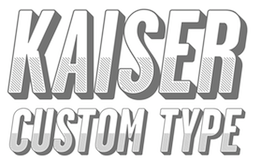 [MyFonts]
[More] ⦿
[MyFonts]
[More] ⦿
|
Jackson Cavanaugh
[Okay Type]

|
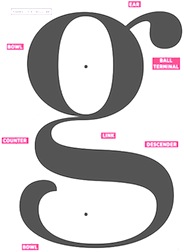 [MyFonts]
[More] ⦿
[MyFonts]
[More] ⦿
|
Jacques Le Bailly
[Baron von Fonthausen]

|
 [MyFonts]
[More] ⦿
[MyFonts]
[More] ⦿
|
Jai Sandhu
|
British designer of the experimental alphabet Deception (2012). He also made the bespoke heavy slab face Unique (2012). Behance link. [Google]
[More] ⦿
|
Jaione Erviti
|
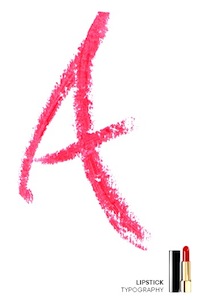 Madrid-based art director, who graduated from the School of Arts and Crafts of Navarra in 2004. Designer of the crayon font Lipstick (2014). For Nevada Loft, she made the 3d custom font Loft (2009, silver award winer at Laus 2009). Behance link. [Google]
[More] ⦿
Madrid-based art director, who graduated from the School of Arts and Crafts of Navarra in 2004. Designer of the crayon font Lipstick (2014). For Nevada Loft, she made the 3d custom font Loft (2009, silver award winer at Laus 2009). Behance link. [Google]
[More] ⦿
|
James Geofrey Nunn
|
Graphic designer and typographer from Melbourne, Australia. Behance link. Creator of the geometric sans typeface Positano (2011). Corporate work includes the art deco typeface Butcher Florist done for Melbourne band Butcher Florist. Deer Sue is an experimental typeface with a prehistoric man theme. [Google]
[More] ⦿
|
James Montalbano
[Terminal Design]

|
 [MyFonts]
[More] ⦿
[MyFonts]
[More] ⦿
|
Jan Burchiellaro Falinski
|
Senior brand designer in Milan, Italy. His typefaces: - Ygro Sans (2021). A free grotesque typeface with inktraps.
- A logotype for the city of Istanbul (2020).
- An experimental variable font with two axes, geometry and tone of voice (2019).
- An icon font for the real estate company Dovevivo (2018).
[Google]
[More] ⦿
|
Jan Erasmus
[CyberGraphics]

|
[MyFonts]
[More] ⦿
|
Jan Hendrik Weber

|
Hendrik Weber or Jan Hendrik Weber. Graduate of the University of Applied Sciences in Potsdam (in graphic design) and Hochschule für Grafik und Buchkunst in Leipzig (in type design). He designed commercial typefaces published at Our Type. Later he joined Monotype to advise clients on bespoke type and develop new markets in branding. In 2016, he became type director at Monotype Germany. After that, he joined Fred Smeijers' Type By. His typefaces: - The Lirico family at (2008, Ourtype, and later Type By). This text family is slightly organic, flirts with hairline connectors, and is characterized by triangular serifs. Lirico won an award at TDC2 2009.
- Edward and Edward Plus (2008, Ourtype, and later Type By): Edward is named in honour of Edward Johnston, calligrapher, teacher, and author of Writing & Illuminating, & Lettering (1906). [...] The inspiration behind Edward will be immediately recognizable: the 'blockletter' Johnston designed for the London Underground in 1916, for use in their signs and posters.
- The free typeface Northstream Wind (2016, Monotype).
- Weber's custom design for Bentley Motors nailed him the Red Dot Award in 2014.
- The crisp branding sans typeface family Unitext (2018, Monotype).
- He was part of a team at Monotype that developed Helvetica Now in 2019 at Monotype, together with Charles Nix and others. Monotype writes: Every single glyph of Helvetica has been redrawn and redesigned for this expansive new edition which preserves the typeface's Swiss mantra of clarity, simplicity and neutrality, while updating it for the demands of contemporary design and branding. Helvetica Now comprises 48 fonts, consisting of three distinct optical sizes: Micro, Text and Display. In 2021, he took part in the development of Helvetica Now Variable (Monotype). Helvetica Now Variable was designed by Max Miedinger, Charles Nix, Monotype Studio, Friedrich Althausen, Malou Verlomme, Jan Hendrik Weber and Emilios Theofanous and published by Monotype. Monotype writes: Helvetica Now Variable gives you over a million new Helvetica styles in one state-of-the-art font file (over two-and-a-half million with italics!). Use it as an extension of the Helvetica Now family or make custom-blends from its weights (Hairline to ExtraBlack), optical sizes (four point to infinity), and new Compressed and Condensed widths. It contains 144 static styles.
- Corporate typefaces developed as part of the team at brand agency KMS TEAM in Munich: Bentley Motors (this received a Red Dot award in 2014), Canyon Bikes.
His thesis Kursiv has been published by Niggli Verlag in 2010. In 2020, Niggli published his English language book Italic. Klingspor link. Linotype link. [Google]
[MyFonts]
[More] ⦿
|
Jan Maack
[The Ivy Foundry]

|
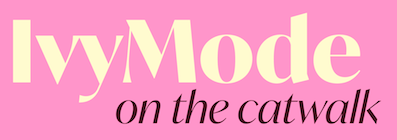 [MyFonts]
[More] ⦿
[MyFonts]
[More] ⦿
|
Jane Doggett
|
Graphic designer and wayfinding system pioneer, b. Nashville, TN, 1929, who lives in Jupiter Beach, FL. At Yale University, she obtained an MFA in architecture and design, studying with two influential professors, architect Louis Kahn and Bauhaus guru Josef Albers. Albers had a profound effect on Doggett and her use of color, which she would apply in her wayfinding solutions for about 40 airports. For some of them, she designed special typefaces. For example, for Tampa's airport, she modified Helvetica in her Alphabet A in the early 1970s. Interview by Lennie Bennett, Tampa Bay Times. [Google]
[More] ⦿
|
Jarno Lukkarila
[Typolar (was: Jarno Lukkarila Type Foundry, or: Format Design)]

|
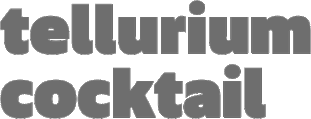 [MyFonts]
[More] ⦿
[MyFonts]
[More] ⦿
|
Jason Smith
[Fontsmith]

|
 [MyFonts]
[More] ⦿
[MyFonts]
[More] ⦿
|
Jason Wolfe
[Wolfe Hall]
|
[More] ⦿
|
Jérémie Hornus
[Black Foundry]

|
 [MyFonts]
[More] ⦿
[MyFonts]
[More] ⦿
|
Jérémy Schneider
[VJ Type (was: Violaine & Jérémy)]
|
 [More] ⦿
[More] ⦿
|
Jean-Baptiste Levée
[Production Type]
|
 [More] ⦿
[More] ⦿
|
Jean-François Porchez
[ZeCraft]

|
 [MyFonts]
[More] ⦿
[MyFonts]
[More] ⦿
|
Jekyll&Hyde
[Marco Molteni]
|
 Jekyll&Hyde is an Italian studio founded in Milan in 1996 by Marco Molteni and Margherita Monguzzi. Mainly involved in corporate logos, this studio also produced some typefaces, notably Contaminato (1997), Pop (2001, geometric letters consisting of very few atomic elements), and Apocalisse (1996, grunge). These are not on their interesting but useless web page. They made the hairline octagonal typeface Otto (2008, octagonal), Peggy (2005, organic), Swimming (2001, organic), Widiba Bank (2015, a 4-style corporate rounded sans typeface by Jekyll & Hyde and Fabrizio Schiavi).
Jekyll&Hyde is an Italian studio founded in Milan in 1996 by Marco Molteni and Margherita Monguzzi. Mainly involved in corporate logos, this studio also produced some typefaces, notably Contaminato (1997), Pop (2001, geometric letters consisting of very few atomic elements), and Apocalisse (1996, grunge). These are not on their interesting but useless web page. They made the hairline octagonal typeface Otto (2008, octagonal), Peggy (2005, organic), Swimming (2001, organic), Widiba Bank (2015, a 4-style corporate rounded sans typeface by Jekyll & Hyde and Fabrizio Schiavi). Behance link. [Google]
[More] ⦿
|
Jelle Bosma

|
Jelle Bosma (b. Rijswijk, The Netherlands, 1959) studied at the Royal Academy of Art in The Hague and. like many of his contemporaries, was influenced by Gerrit Noordzij. He works from a studio near The Hadue, and designs type, programs font tools, hints, and produces type. His typefaces: - He created WTC Cursivium (1986, World Typeface Center).
- He was one of the main type designers at Scangraphic from 1988-1991, where he designed Forlane in 1991.
- Bosma joined Monotype in 1992. His role was to oversee TrueType� production and hinting. One of Bosma's first projects for the company's UK office was to manage the production of Greek and Cyrillic core fonts for the Windows� 3.1 operating system. Known for his work with non-Latin typefaces, Bosma has produced fonts for Hebrew, Thai, Arabic and Indic scripts. He relies a lot on his own software, including a truetype font editor called FontDame. He also claims that there are no more than 25 professional hinters world-wide. Alternate URL.
- Bosma was part of the team that developed corporate identity typefaces for Nokia. Launched in 2002, the Nokia types include sans, serif, and bitmap versions in varying weights. The Nokia fonts are used for everything from architectural signage and printed brochures to screen type for phones and other devices.
- In 2004, he created the OpenType family Cambria for Microsoft's ClearType project.
Klingspor link. Monotype link. [Google]
[MyFonts]
[More] ⦿
|
Jens Nilsson
|
Swedish graphic designer responsible for the blackened octagonal obsese typeface Dance Made (2008), used in its logo. He also designed the custom typeface Donadoni (or: Maldini). Jens lives in Stockholm. [Google]
[More] ⦿
|
Jeremie Barry
|
Parisian designer. Creator in 2012 of the curly geometric hairline typeface Ipsen for the pharmaceutical lab Ipsen. This is a tour de force, as the user can choose to use between one and seven oparallel lines to compose the glyphs. A beautiful blend from a monoline display typeface to a prismatic wonder. [Google]
[More] ⦿
|
Jeremy Mickel
[MCKL (was: Mickel Design)]
|
 [More] ⦿
[More] ⦿
|
Jesse M. Ragan

|
 Originally from North Carolina (b. 1979), Jesse Ragan studied type design at Rhode Island School of Design. After college, Jesse designed typefaces at Hoefler&Frere-Jones, where he had a hand in Gotham, Archer, and several other families. Since 2005, he has worked independently in Brooklyn, developing typefaces and lettering for a variety of clients. His work can be found at Font Bureau, House Industries, and Darden Studio. He also teaches typeface design at Pratt Institute and Cooper Union. He won an award at Bukvaraz 2001 for Gotham, co-designed with Jonathan Hoefler and Tobias Frere-Jones. In 2017, he set up XYZ Type with Ben Kiel, who is based in Saint Louis, MO. XYZ Type is part of Type Network since 2018.
Originally from North Carolina (b. 1979), Jesse Ragan studied type design at Rhode Island School of Design. After college, Jesse designed typefaces at Hoefler&Frere-Jones, where he had a hand in Gotham, Archer, and several other families. Since 2005, he has worked independently in Brooklyn, developing typefaces and lettering for a variety of clients. His work can be found at Font Bureau, House Industries, and Darden Studio. He also teaches typeface design at Pratt Institute and Cooper Union. He won an award at Bukvaraz 2001 for Gotham, co-designed with Jonathan Hoefler and Tobias Frere-Jones. In 2017, he set up XYZ Type with Ben Kiel, who is based in Saint Louis, MO. XYZ Type is part of Type Network since 2018. His typefaces: - Afri Sans (2011). A custom typeface for the Museum for African Art in Manhattan.
- Athenian Extended (2011). By Matteo Bologna and Jesse Ragan. This "playfully peculiar face" (their words) was custom designed for Typography 32, the annual of the Type Directors Club. A revival of the 19th century classic Athenian.
- Cedar. An angular typeface designed during his studies at RISD. It was later published at XYZ Type.
- Epiphany (2001). A hookish face.
- Export (2012). A vernacular typeface based on signage seen in New York's Chinatown. This all caps typeface features square counters and comes with a stencil version.
- Hoefler & Frere-Jones, 2001-2005. Assistance with the production of several typefaces at HFJ: As a full-time typeface designer for Hoefler & Frere-Jones from 2001 to 2005, I designed a full type family for Smirnoff Vodka (art directed by J. Walter Thompson and H&FJ). Working closely with Tobias Frere-Jones and Jonathan Hoefler on a number of other typefaces, I designed bits and pieces such as hairline weights, Italics, and news grades. These include Mercury, Chronicle, Hoefler Titling, Sentinel, Surveyor (2014)), Gotham, and Archer (a type family done for Martha Stewart Living and designed with Hoefler and Frere-Jones).
- Omnes (2006). A monowidth rounded sans designed by Joshua Darden. Ragan assisted in the production and design process.
- Ruzicka Collection (2012). Digital versions of the alphabets shown in Rudolf Ruzicka's 1968 portfolio Studies in Type Design. This collection led in 2018 to the robust 12-style typeface family Study at XYZ and in 2020 at MyFonts.
- Showcard Stunt (2008). Lower case of a comic book/signage typeface originally drawn by Ken Barber, House Industries. Inspiration from Dom Casual (1950s, Peter Dombrezian).
- Smirnoff (2003). A custom typeface commissioned by J. Walter Thompson for Smirnoff.
- The Bruins (2006). An athletic lettering typeface commissioned by Reebok for The Boston Bruins in 2007-2008.
- USA Today Condensed (2012). He writes: I designed this headline typeface for the dramatic relaunch of USA TODAY, which was overseen by Wolff Olins. The condensed style complements the paper's proprietary version of Futura, but without resorting to the familiar elliptical shapes of Futura Condensed.
- V Magazine (2011). A condensed high-contrast fashion mag headline typeface done for V Magazine.
- Carlstedt Script (2013, with Ben Kiel: a custom signage typeface for Aldo Shoes based on the handwriting of Swedish illustrator Cecilia Carlstedt). Cortado Script (2014) was designed by Jesse Ragan and Ben Kiel. It too was inspired by Cecilia Carlstedt's hand-painted lettering and is quite close to Carlstedt Script.
- In 2017, Jesse Ragan published Aglet Slab and Export at XYZ Type. In 2019, he added Aglet Sans, and in 2020 Aglet Mono. The three Aglet families explore roundness. Aglet Mono, in particular is quite striking, and could be useful for programmers.
- Escalator and Elevator (2021). Two multipurpose geometric sans families following in the footsteps of Block and Futura. Ragan writes: Escalator & Elevator grew from a client commission to replicate existing signage for the renovation of a landmark New York City skyscraper. They take inspiration from prefabricated letterforms of the 1950s, which manufacturers offered in so-called Block and Futura styles, by swapping in a few different shapes. Our interpretation increases the distinction between the two styles, pulling from surplus glyphs created for customizations of the design for other clients. No one really needs another geometric sans, but Escalator & Elevator claim their own aesthetic territories in an abundant genre. Both families are delivered as variable fonts, providing full access to a wide weight range. The optical size axis addresses the specific needs of different type sizes with adjustments to the structure, tapering, and spacing. From small text to the appropriately-named Huge, these typefaces evoke architectural lettering and the era of phototypesetting.
- Polymode Sans (2021, by Jesse Ragan and Ben Kiel). A variable font with a realness axis.
Interview. Behance link. Interview by Lovers Magazine. [Google]
[MyFonts]
[More] ⦿
|
Jin Kyung Park
|
Type designer at Sandoll Communications in Seoul, Korea. Designer of the Hangul fonts Hitec (2016), Hyundai Marine (2016), Taegeukdang (Latin, hangul and chinese), SBS (2016), MMCA (2016, for the National Museum of Modern and Contemporary Art in Seoul), Samsung (2016), and Daum Kakao (2016). [Google]
[More] ⦿
|
Jisun Kim
|
South Korean designer of the corporate Hangul font XtvN (2019). In 2018, he art directed the font Happy Myeongjo, which was designed by Jeonghee Shin and Heejin Choi. [Google]
[More] ⦿
|
Jo de Baerdemaeker
[Studio Type (or: Typojo)]
|
[More] ⦿
|
Joan Ramon Pastor Rovira
[Ultra Types]

|
 [MyFonts]
[More] ⦿
[MyFonts]
[More] ⦿
|
Joancarles P. Casasín
[BaseLAB]
|
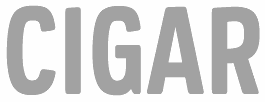 [More] ⦿
[More] ⦿
|
Joancarles P. Casasín

|
 Catalan type designer (b. Barcelona, 1969). In 2018, he joined the faculty in the Masters program in typographic design at Elisava. Joancarles has taught in most of Barcelona's design schools and still gives master classes and workshops at Spanish Universities about how to use or design type and on programming for graphic and type designers.
Catalan type designer (b. Barcelona, 1969). In 2018, he joined the faculty in the Masters program in typographic design at Elisava. Joancarles has taught in most of Barcelona's design schools and still gives master classes and workshops at Spanish Universities about how to use or design type and on programming for graphic and type designers. He made ITC Belter and FF FontSoup. He was co-principal of Typerware with Andreu Balius, in Barcelona. At Typerware, he co-designed the following original fonts with Andreu Balius: TW Czeska, TW FaxFont amily, TW NotTypeWriterButPrinter, FF FontSoup, Matilde Script, Garcia Bodoni. Check the Canas Cister Abbey font project. Check also the award winning font Universitas Salamantini by the Typerware duo. In 2010, he created Adineue Bold for Adidas. For the fashion brand Kipling, he designed a vogueish typeface called Kipling (2012). For the STM Montreal (the transport authority of Montreal), he created a custom typeface called STM Montreal (2011). In 2017, he joined Type Together as a font engineer. Interview with Penela. Fontfont link. FontShop link. Behance link. Type Together link. [Google]
[MyFonts]
[More] ⦿
|
Joao Faissal
|
Joao Pessoa, Brazil-based designer of the free vector format multi-width sans display typeface Celestina (2017), which was developed for the branding of Cosmica. Behance link. [Google]
[More] ⦿
|
Joao Peres
|
Senior designer at Interbrand Sydney who was born in Brazil. For Melbourne Theatre Company (MTC) he created MTC Neon (2013, with Chris Maclean). Behance link. [Google]
[More] ⦿
|
Joern Oelsner

|
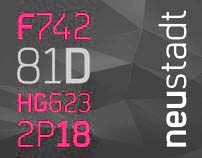 Jörn Oelsner (b. 1981, Flensburg, Germany) is a German type and graphic designer based first in Antwerp, Belgium, and later in Vegby, Sweden, and Ulricehamn, Sweden. He graduated at the Design Factory International in Hamburg, Germany. While studying he worked for URW++, Hamburg. After graduation he worked in several graphic design studios in Europe. His own design studio is OE Design. He mainly develops corporate typefaces, and now lives in Ulricehamn / Gothenburg, Sweden.
Jörn Oelsner (b. 1981, Flensburg, Germany) is a German type and graphic designer based first in Antwerp, Belgium, and later in Vegby, Sweden, and Ulricehamn, Sweden. He graduated at the Design Factory International in Hamburg, Germany. While studying he worked for URW++, Hamburg. After graduation he worked in several graphic design studios in Europe. His own design studio is OE Design. He mainly develops corporate typefaces, and now lives in Ulricehamn / Gothenburg, Sweden. Some of his projects are the corporate typeface of Sport 2000 (in cooperation with URW++, Hamburg), the corporate typeface of the Andorra Telecom SOM and the corporate typeface of the National Television and Radio Spain RTVE (both in cooperation with Summa, Barcelona). His type designs at URW++ include Ruca (2010, blackletter), Neustadt (2010, URW++: a legible elliptical monoline sans family, which was originally designed as a corporate font for Sport 2000), Stina (2012, a stitch font done for profonts), Ribera (2012, a contemporary sans) and Bloket Pro (2013: a piano key typeface). In 2014, he created the layered typeface family Graphique Pro Next (Profonts), which is a revival and extension of the famous Graphique Pro designed in 1945 by Hermann Eidenbenz. His main contribution in 2015 is the 20-style URW Geometric typeface family, which is modeled after the German geometric typefaces from the 1920s. In 2016, he added URW Geometric Condensed and URW Geometric Extended to that family. Typefaces from 2018: URW Dock (a contemporary geometric type family inspired by the square sans typefaces of the 60s, and in particular Eurostile), URW Dock Condensed. In 2020, 20 Extended styles were added to URW Dock. Typefaces from 2020: Cerco (a 12-style warm rounded geometric sans). Typefaces from 2021: Cromlin (a stylish sans typeface at FontPeople). [Google]
[MyFonts]
[More] ⦿
|
Johannes Breyer
[Dinamo]
|
 [More] ⦿
[More] ⦿
|
John Galliers
|
Head of Design for the Radio arm of NZME, one of New Zealand's biggest media groups, who is based in Auckland. He created the children's hand typeface Hipster (2015, for a merketing campaign for ZM) and Galliers Hand (2015, for the Hauraki brand). [Google]
[More] ⦿
|
John Misael Villanueva

|
Trece Martires, Philippines-based lettering artist and type designer, known for the official typeface of the American industrial tools maker Stanley Black & Decker. In 2019, he designed these typefaces: the colorful decorative caps typefaces Pinas, Habi and Habi Pinas, Florida, Military Industrial, the free vernacular typeface BBT Martires, the script typeface Cute Bouncy, the modular typeface Arturo, the corporate font Stanley Black&Decker and the variable sans typeface Dinamika. Typefaces from 2020: Nilad Pro (a display serif inspired by the flourishing bud of the yamstick mangrove or nilad), Leandro (inspired by the brutalist architecture of Filipino architect Leandro Locsin). [Google]
[MyFonts]
[More] ⦿
|
John Roshell
[Swell Type]

|
[MyFonts]
[More] ⦿
|
John S.C. Simpson
|
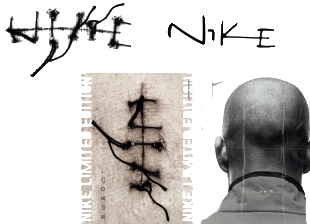 Art director in New York City. Born in Britain, he is a typographer, illustrator, painter, branding specialist and graphic artist. His largely experimental type design work includes the retro techno typeface Magazine No. 33 (2013), Salt (2013), Echo 08 (2013, a multilined logotype family), Digit 002 (2013), Can Pull Regular (2013), Loser 003 (2013), Wurm Digitail (2013, pixelish), Cant Blok (2013), Fac 003 (2013), Fac (2013), Pramb (2013), 12 Blocks New York (2013), Intro (2013), and Fast Forward (2013).
Art director in New York City. Born in Britain, he is a typographer, illustrator, painter, branding specialist and graphic artist. His largely experimental type design work includes the retro techno typeface Magazine No. 33 (2013), Salt (2013), Echo 08 (2013, a multilined logotype family), Digit 002 (2013), Can Pull Regular (2013), Loser 003 (2013), Wurm Digitail (2013, pixelish), Cant Blok (2013), Fac 003 (2013), Fac (2013), Pramb (2013), 12 Blocks New York (2013), Intro (2013), and Fast Forward (2013). Typefaces from 2014: Leonardo (grunge and geometry experiment). In 2015, he made the squarish typeface Cronin, the circle-based Can Pull, Flic Flim, the counterless typeface Winston, and the film noir typeface Cinema. Typefaces from 2016: Aeon (a custom pixel typeface family for Nike New York), Radford (a squarish modular typeface family), Pig, Loser (squarish). Behance link. Another Behance link. Old URL. [Google]
[More] ⦿
|
Jon Forss
[Non-Format]
|
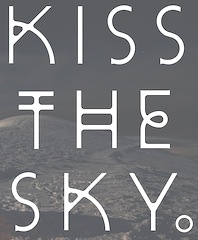 [More] ⦿
[More] ⦿
|
Jonas Hecksher
|
 Jonas Hecksher holds a degree from The Royal Danish Academy of Fine Arts and The School of Design and Ecole supérieure d'arts graphiques et d'architecture in Paris, where he specialized in graphic design and typography design. Heckscher is Partner and Creative Director at design agency e-Types which he co-founded in 1997 and co-founder of type foundry and type design brand Playtype. He is a 5-time recipient of the Danish Design Award, a winner of two gold Creative Circle awards, a silver award winner at the Britsh D&AD, a winner in 2014 of the Knud V. Engelhardt Memorial Award, and the recipient of a certificate of excellence in type design from Type Directors Club N.Y. Playtype is currently based in Vesterbro, Denmark.
Jonas Hecksher holds a degree from The Royal Danish Academy of Fine Arts and The School of Design and Ecole supérieure d'arts graphiques et d'architecture in Paris, where he specialized in graphic design and typography design. Heckscher is Partner and Creative Director at design agency e-Types which he co-founded in 1997 and co-founder of type foundry and type design brand Playtype. He is a 5-time recipient of the Danish Design Award, a winner of two gold Creative Circle awards, a silver award winner at the Britsh D&AD, a winner in 2014 of the Knud V. Engelhardt Memorial Award, and the recipient of a certificate of excellence in type design from Type Directors Club N.Y. Playtype is currently based in Vesterbro, Denmark. He designed fonts such as Movie (2001, a very black condensed movie generics sans), iD:00 (2001, a large sans and serif family), Fletch Text (1998, a sans), DeLuca (Bodoni-like, 2001), NinetySix K (2001, a serif), Underton (1998), Point Sans (1999), Point Serif (1999), Cendia (1997), DenmarkSerif (1998), Mega (1999), Olic (1999), Arch Sans (2003), Arch Serif (2003), Arch Stencil (2003), Arch Pattern (2003). In the 2011 Playtype on-line catalog, it seems that several of his early designs have been renamed, and many others have been added. So here is the on-line list of his fonts there as of February 2011: AbidaleBook, AcademySans, AcademySerif, BingoSans, BingoSerif, DeArchie (didone), DeArchieDisplay, FletchText, FruOlsen (1998: a condensed display serif inspired by the old streets signs of Copenhagen, featuring tall x-heights, shaped drops and curved numbers), Geometric, Hall, HomeDisplay, Hazelwood, HermesBaby (old typewriter), Hill (2005: grotesque), HomeText, ID00 Sans (large family), ID00 Serif, ItalianPlate, JPSpecial Sans, JPSpecial Serif, JazzHouse (2007: a neo-grotesque), Mari (2006: a monolinear modern sans serif with a sense of nordic simplicity), MoviePlaytype, New Press, Noir Text, Nord Dingbats (circled letters), Norwegian, Play (2011, a minimalistic sans serif typeface, free at Google Fonts; CTAN TeX support), PrimoSerif (2000), Republic, SymphonyDisplay, TheWave, Trood, VentiQuattro (didone), Vertigo, Willumsen, ZettaSans. Later in 2011, he published the modern sans family Metro. In 2010, Hecksher created the 21-weight custom typeface family Berlingske for the newspaper by that name. It was extended over the years to a whopping 227 weights / 2100 glyphs-per-font in 2014, the year in which it was released as a regular retail font at Playtype, with Sans, Serif and Slab versions. Typefaces from 2013 include the large sans typeface family Nationale (Playtype) done for the National Museum of Denmark. See here. In 2014, an earlier typeface by e-types, Italian Plate, was releases in two monoline sans subfamilies, Italian Plate No. 1 and No. 2, and two serif versions, No. 3 and No. 4. In 2015, he published the extensive sans typeface family DuNord at Playtype. Typefaces from 2016: Hafnia Sans, La Fontaine. Typefaces from 2018: The Wave (sans). Typefaces from 2019: Melanzine (sans). Typefaces from 2020: Royal Theatre Serif (a didone), Royal Theatre Sans. Klingspor link. Google Plus link. [Google]
[More] ⦿
|
Jonathan Pierini

|
 Type and graphic designer from Italy, who he holds a BA in graphic design and visual communication from the ISIA Urbino and an MA in Type and Media from the Royal Academy of Arts (KABK) in 2008 in Den Haag, The Netherlands. He has worked for private companies, and has been teaching and tutoring in different Universities in Italy. He is currently working at the Free University of Bozen Bolzano, Italy. Since 2011 he has been running the ISIA Urbino Type design Week summer program. More recently, he had a stint with Dalton Maag.
Type and graphic designer from Italy, who he holds a BA in graphic design and visual communication from the ISIA Urbino and an MA in Type and Media from the Royal Academy of Arts (KABK) in 2008 in Den Haag, The Netherlands. He has worked for private companies, and has been teaching and tutoring in different Universities in Italy. He is currently working at the Free University of Bozen Bolzano, Italy. Since 2011 he has been running the ISIA Urbino Type design Week summer program. More recently, he had a stint with Dalton Maag. He created the Vasinto Sans family as a student at KABK. In 2013 Bistro Studio designed a new identity and typeface concept for Mediterranea 16. Implementation done by Jonathan Pierini. Together with Riccardo Olocco, Jonathan Pierini reinterpreted Bodoni's work in 2014. Their Parmigiano Typographic System, which is named after Parma, the city where Giambattista Bodoni (d. 1813) established his printing house, attempts to revive, interpret and boldly extend Bodoni's work. There is not a single official original Bodoni---Bodoni's Manuale Tipografico contains many slightly different examples---, and so, the first challenge was to create coherent relationships between various optical sizes (Piccolo, Caption, Text, Headline) and weights. Besides the Parmigiano Serif family, Olocco and Pierini also developed the creative extension Parmigiano Sans. There are also Stencil, Typewriter, Egyptian styles, to name a few. The Parmigiano Typographic System was published in 2014 by Typotheque, but was developed a few years before that. In 2014, Leonardo Sonnoli and Jonathan Pierini developed the bespoke typeface family Mast for the MAST Foundation in Bologna. His Ovo typeface (2014) is a restyling of the custom font originally designed for the multifunctional center Ginestra, Fabbrica della Conoscenza based in Montevarchi (Arezzo). Behance link. [Google]
[MyFonts]
[More] ⦿
|
Jones Knowles Ritchie
|
Design studio with offices in London, New York and Shanghai. Designers of the Heinz corporate typeface in 2020, which will be paired with as much as nine fonts from FontFabric's Intro family. In 2022, he designed a custom slab serif typeface for M&M in tandem with the Monotype team. [Google]
[More] ⦿
|
Jordi Embodas
[Tipografies]

|
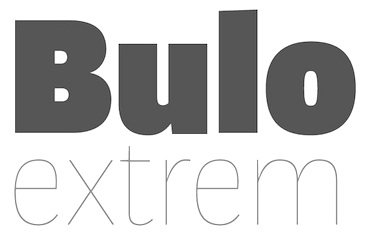 [MyFonts]
[More] ⦿
[MyFonts]
[More] ⦿
|
Joseph Dennis
|
Brand designer in Fremantle and/or Perth, Australia, whose typefaces can be bought from Type Department. In 2016, he designed The Skulls (a commissioned stencil font). For Pride Sports Festival 2018, he designed the organic sans typeface PSF Bounce. In 2020, he released the display typefaces Villanelle, Stoker (a blackletterish typeface for the West Australian Ballet) and Westralia (a free all caps typeface with varying widths). Type Department link. [Google]
[More] ⦿
|
Joseph Miceli
[AlfaType]
|
[More] ⦿
|
Joseph Stitzlein

|
Portland, OR-based creative director where he works at Nike. Before settling at Nike in Portland, he worked at Landor Associates, Stone Yamashita Partners, Chronicle Books, Pentagram, and CKS Partners and was living some of that time in San Francisco. He graduated from the College of DAAP at the University of Cincinnati. His type designs include the Sgiv1Text family in 1999, at first done as an OEM for Silicon Graphics Inc. This SGI corporate typeface evolved a couple of years later into the retail font Monolein (T-26). He also designed the Sempra Energy Corporate Typeface and the modern family ITC Tactile (2002). The latter font family won an award at the TDC2 2003 competition. FontShop link. Klingspor link. Behance link. [Google]
[MyFonts]
[More] ⦿
|
Josephine Tansara
[Market Sans]
|
[More] ⦿
|
Joshua Brooks
|
Manchester and before that Leeds, UK-based designer of Hardbaq (2013), a free font inspired by the shapes of blinds and windows that served as a school project at Leeds Metropolitan University. Blockbaq (2013) is a 3d typeface. Alpha (2013) is an outlined alchemic typeface. Showcase (2013) is a circle-based font inspired by the world of casinos. Watermelon (2014) is a script typeface. Typefaces made in 2016 include the custom font Hayley Nye for the fashion industry. [Google]
[More] ⦿
|
Jörg Hemker
[Herr Hemker]

|
[MyFonts]
[More] ⦿
|
Juho Hiilivirta
|
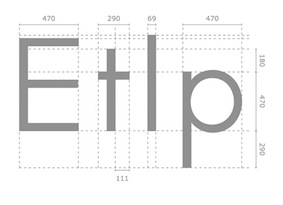 Rovaniemi, Finland-based type designer at Helsinki Type Studio. His Bachelor Thesis work led to a great sans typeface, Oranssi. Its proportions are based on the golden ratio as suggested in Le Corbusier's work.
Rovaniemi, Finland-based type designer at Helsinki Type Studio. His Bachelor Thesis work led to a great sans typeface, Oranssi. Its proportions are based on the golden ratio as suggested in Le Corbusier's work. In 2012, he created the sans family Mogul and the monospaced Tutankhamono. In 2014, he published Turi (a slab serif inspired by Sami author Johan Turi's simultaneous perspective illustrations). In 2015, he made Tyrant. In 2015, Juho Hiilivirta, Niklas Ekholm and Jaakko Suomalainen co-designed the custom typeface Finlandica. Finlandica was commissioned by the Prime Minister's Office as part of a visual identity for Finland. They write: Ink traps like cuts from a blunt ax, makes the typeface reliable in small sizes and gives it character in large headlines. Like the Finnhorse it's a breed suitable both as riding horse and workhorse. Free download. In 2016, he created the sans typeface Rodham, and in 2017 the widely monospaced typeface Railo Thin. [Google]
[More] ⦿
|
Julia
[Valerio Di Lucente]
|
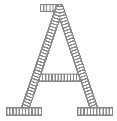 Julia is Valerio Di Lucente (Italy), Erwan Lhuissier (France) and Hugo Timm (Brazil). They met at the Royal College of Art in London having come from different professional backgrounds in editorial design, web and art direction. The studio Julia was founded in 2008 upon their graduation. Together, they work on books, typefaces, posters, websites, identities and exhibition design. They teach as visiting lecturers at Kingston University. Typefaces:
Julia is Valerio Di Lucente (Italy), Erwan Lhuissier (France) and Hugo Timm (Brazil). They met at the Royal College of Art in London having come from different professional backgrounds in editorial design, web and art direction. The studio Julia was founded in 2008 upon their graduation. Together, they work on books, typefaces, posters, websites, identities and exhibition design. They teach as visiting lecturers at Kingston University. Typefaces: - Premio (2010), A beveled typeface, extended to lowercase in 2012.
- Riso (2009) is a display typeface designed for The Invisible Dot.
- Above Magazine (2009, an almost typewriter type).
- Copan (2010, a multilined typeface commissioned by Wallpaper's Born in Brazil issue that paid tribute to Oscar Niemeyer).
- Herman (octagonal, done for Wired Magazine in 2010).
- Modo (2008, an experiment on a superposition of shifted strokes).
- Gill Sans Rounded (2007).
- Serious Sans (2008, anti--Comic sans).
- Volt (2009, a sans done for Volt Magazine).
[Google]
[More] ⦿
|
Julia Cadar
|
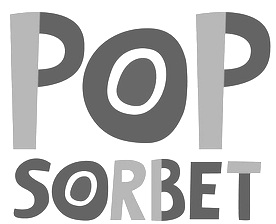 Art director who studied at San Diego State University and California State University. In 2014, she created the dadaist typeface Fat Julia for the Yogurtland brand . [Google]
[More] ⦿
Art director who studied at San Diego State University and California State University. In 2014, she created the dadaist typeface Fat Julia for the Yogurtland brand . [Google]
[More] ⦿
|
Julius Hui
|
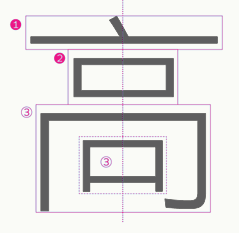 Julius Hui (Chinese name Hon Man Hui) is a type designer in Hong Kong who studied at Hong Kong Polytechnic University in the late 2000s. He worked for some time at the Hong Kong branch of Dalton Maag and at Monotype Hong Kong as type designer. When COVID broke out, he started his own foundry in Hong Kong. He designed these typefaces:
Julius Hui (Chinese name Hon Man Hui) is a type designer in Hong Kong who studied at Hong Kong Polytechnic University in the late 2000s. He worked for some time at the Hong Kong branch of Dalton Maag and at Monotype Hong Kong as type designer. When COVID broke out, he started his own foundry in Hong Kong. He designed these typefaces: - The Chinese font Xin Gothic (2011, VM Type), art directed by Sammy Or.
- He entered the Sixth Founder Type Awards for Chinese Typeface Design in 2011 with a Chinese Fangsong style typeface.
- A custom typeface for the the Chinese comapny Tencent, done while he worked for Monotype.
- Ku Mincho (2021-2022). Ku Mincho indends to return to historical Chinese---Ku Mincho differentiates itself from existing Ming typefaces in design, structure, and proportion by breaking free from the square box that had been imposed on Hanzi for decades (by Japanese foundries that dominated the Chinese type business). Hui's team for Ku Mincho includes his former colleagues at Monotype Hong Kong, Kin Cheung and Sammy Fung. The full set of 15,000 characters will be available in July 2022. Ku Mincho specifically supports traditional Chinese, used in Hong Kong and Taiwan, and for languages like Taiwanese and Hakka. Oryzae Foundry and Klim Type Foundry will be responsible for Japanese and Latin, respectively.
Typecache link. Buy Xin Gothic here. [Google]
[More] ⦿
|
Jumyoung Lee
|
Graphic designer in New York City. He designed these typefaces: - Reptile (2020). display serif.
- Ju+ (2019). A sans family that evolved from his earlier typeface, Ju Sans (2018).
- Morfos (2019). A custom sans done for the South Lorean mattress company Morfos.
[Google]
[More] ⦿
|
Jürgen Weltin
[Typematters.de]

|
 [MyFonts]
[More] ⦿
[MyFonts]
[More] ⦿
|
Kabel Unit
|
The house font of Kabel Deutschland, based on FF Unit. [Google]
[More] ⦿
|
Kalapi Gajjar-Bordawekar
[Universal Thirst]

|
[MyFonts]
[More] ⦿
|
Kamil Kurzajewski
|
 Kamil Kurzajewski is an independent Art Director. In 2008 he obtained an MA in typography from the Academy of Fine Arts in Poznan. He lives in Poznan (Poland) and specializes in visual communication, typeface and graphic design. He created the slabby typewriter typeface Struqtura (2012) and the rounded typeface family Carbon, and the 12-style corporate sans typeface family Kolo (designed specially for Kolo Sanitec, Polish nationwide company that manufactures and sells bathroom systems).
Kamil Kurzajewski is an independent Art Director. In 2008 he obtained an MA in typography from the Academy of Fine Arts in Poznan. He lives in Poznan (Poland) and specializes in visual communication, typeface and graphic design. He created the slabby typewriter typeface Struqtura (2012) and the rounded typeface family Carbon, and the 12-style corporate sans typeface family Kolo (designed specially for Kolo Sanitec, Polish nationwide company that manufactures and sells bathroom systems). Other typefaces: Spectra (2008), Razor (2011), Coctail (sic: 2010), BR#8 (2008: for BR Magazine). Behance link. [Google]
[More] ⦿
|
Kamil Kurzajewski
|
Polish graphic and type designer. His typefaces include Coctail (2010: a display serif), Carbon (2010: a brutalist typeface for the Katowicka Shopping Center), Struqtura (2009: a corporate monospaced typeface), Razor (2011), and Kolo (2010: a 12-style corporate typeface for Kolo Sanitec) [Google]
[More] ⦿
|
Kamimura & Co. (was: Studio Antwork, or: Detail Type Foundry)
[Makoto Kamimura]
|
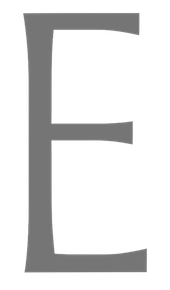 Kamimura & Co (or Detail Type Foundry, and earlier, Studio Antwork) are Makoto Kamimura's studios in Shibuya, Tokyo. Makoto created the compass-and-ruler roman corporate typeface Delilia (2011), as well as Geometric Light Display (2011).
Kamimura & Co (or Detail Type Foundry, and earlier, Studio Antwork) are Makoto Kamimura's studios in Shibuya, Tokyo. Makoto created the compass-and-ruler roman corporate typeface Delilia (2011), as well as Geometric Light Display (2011). In 2017, he released the slightly flared typeface Soma. In 2019, he designed the 40-style neo-humanist sans family Astro. [Google]
[More] ⦿
|
Kanon Foundry
[Tor Weibull]
|
 Kanon Foundry is a Swedish type foundry started in 2019 by Alexander Örn (Malmö) and Tor Weibull.
Kanon Foundry is a Swedish type foundry started in 2019 by Alexander Örn (Malmö) and Tor Weibull. Retail faces by Kanon include Diagol Grotesk (2020, by Tor Weibull) and Operand (2021, by Alexander Örn; a low contrast, almost monolinear sans serif that draws inspiration from the 1930s Scandinavian functionalist design era). Corporate typefaces by Kanon: Bedow Head and Bedow Hand (2020: an angular sans typeface by Bedow and both founders of Kanon Foundry), NLTG Wave Display & NLTG Wave Serif (by Alexander Örn and Tor Weibull: for the Nordic Leisure Travel Group), Crastino (2019; by Tor Weibull: a Scotch roman-inspired typeface for Ocean Plastics at Röhska Museum of Design and Craft). [Google]
[More] ⦿
|
Kara Zichittella
[Zeitype]
|
[More] ⦿
|
Kasper Pyndt Rasmussen
[Approximate Type]
|
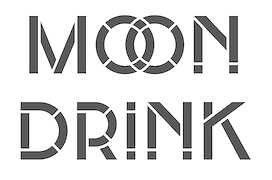 [More] ⦿
[More] ⦿
|
Kate von Bitner
|
London-based designer of Efsix (2014), a rounded sans typeface Efsix typeface that was created for the rebranding of F6 White Design Agency. Behance link. [Google]
[More] ⦿
|
Keith Bates
[K-Type]

|
 [MyFonts]
[More] ⦿
[MyFonts]
[More] ⦿
|
Kentaro Terajima
|
 Japanese graphic designer in Barcelona, where he studied at Eina. His typefaces:
Japanese graphic designer in Barcelona, where he studied at Eina. His typefaces: - In 2010 he created the large x-height roman typefaces 06RM and 12RM so that Latin text could be set in small sizes alongside Japanese text (and in particular, with the Japanese font Ryumin M-KL).
- He recreated the 1930s German newspaper art deco styles in his elegant typeface Tageszeitung (2010).
- He is involved in an information typography project for the Barcelona metro.
- Alps (2011). A bilined display typeface inspired by the lettering of Japanese artist Shinro Ohtake.
- Abend (2012). An art deco grotesk inspired by German news headlines from the 1930s.
- 156 (2011). A clean sans typeface inspired by the shapes of numbers in the streets of Sao Paulo.
- Colophon (2011). An avant-garde typeface based on the movie The War of Roses (1989).
- A hypermodular typeface (2018).
Behance link. [Google]
[More] ⦿
|
Kerns&Cairns
[Dyana Weissman]

|
 American type designer, b. 1980, who graduated from the RISD, and worked at Font Bureau (as Senior Custom Designer) and Type Network (as Custom Type Director) in Boston. She set up Kerns & Cairns, also in Boston. Interview at Daidala. Interview by Christian Palino. Her typefaces:
American type designer, b. 1980, who graduated from the RISD, and worked at Font Bureau (as Senior Custom Designer) and Type Network (as Custom Type Director) in Boston. She set up Kerns & Cairns, also in Boston. Interview at Daidala. Interview by Christian Palino. Her typefaces: - Materot: calligraphic.
- She expanded the Benton Sans family into an ultra for Toyota, commissioned by Saatchi&Saatchi.
- Baskerville was modified by her for Northeastern University (via Korn Design).
- She made a font for learning handwriting for TouchMath.
- Apotek (2020): a squared counter typeface family based on lettering on old medicine bottles seen in Oslo.
- Benton Modern Display (2008), co-designed with Richard Lipton at Font Bureau: Benton Modern Text was first prepared by Font Bureau for the Boston Globe and the Detroit Free Press. Design and proportions were taken from Morris Fuller Benton's turn-of-the-century Century Expanded, drawn for ATF, faithfully reviving this epoch-making magazine and news text roman. The italic was based on Century Schoolbook.
- A redesign of Matthew Carter's Postoni (1997), called Stilson (2009, with Richard Lipton and Jill Pichotta): Since 1997, The Washington Post's iconic headlines have been distinguished by their own sturdy, concise variation on Bodoni, designed by Matthew Carter. For the 2009 redesign, Richard Lipton, Jill Pichotta, and Dyana Weissman expanded the family with more refined Display & Condensed styles for use in larger sizes. Originally called Postoni, the fonts were renamed in honor of The Post's founder, Stilson Hutchins.
- Escrow Reading Edge (2016, Font Bureau). An extension of Cyrus Highsmith's Scotch Roman, Escrow (2006).
- Syfy Hero and Syfy Sidekick.
- Waldorf Astorai. An art deco typeface inspired by the lettering on the facade of Waldorf Astoria Hotel at 301 Park Avenue in New York City.
- Comedy Sans. A 12-style typeface commissioned by Comedy Central.
- Firdevs (2022). A digitization of a Victorian typeface drawn in Silivri Prison by political prisoner and journalist Fevzi Yazici, and named after Fevzi's wife.
- CTV Sans. For the Canadian TV network.
- ESPN College Football. A custom varsity font family developed together with Victoria Rushton and loyalkaspar.
- Peacock Sans (2020, with Victoria Rushton). A custom typeface for Peacock, NBC Universal's video streaming platform.
- GRab=vity Grotesk (2021, with Victoria Rushton and CSTM Fonts).
FontShop link. Type Network link. [Google]
[MyFonts]
[More] ⦿
|
Kevin Cantrell
|
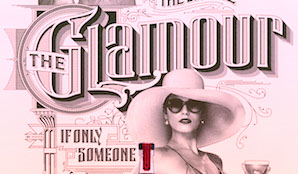 Talented art director in Salt Lake City, UT. Kevin earned a BFA in Graphic Design from Brigham Young University in 2008. He has worked with clients such as M&RL, Neenah Paper, Fetcham Park (UK), Harvard University, Princeton University, Phillips Exeter Academy and Cottonhouse Hotel (Barcelona). In 2016, he designed the art deco typeface Tom's Town, and wrote: Tom's Town Distilling Co. is downtown Kansas City's first legal distillery since Prohibition. Drawing inspiration from the country's most polarizing and corrupt political boss, Tom Pendergast, Tom's Town brings to life the glamorous magnetism of the Gatsby-era. Rooted in a deco optimism, Kansas City flouted Prohibition under the Pendergast machine. Today as Kansas City experiences its second cultural rebirth, the people are still thirsty. Welcome to Tom's Town, where free spirits reign. KCS created a comprehension branding identity system including a proprietary font, designed exclusively for Tom's Town. His typefaces are available from Typeverything.
Talented art director in Salt Lake City, UT. Kevin earned a BFA in Graphic Design from Brigham Young University in 2008. He has worked with clients such as M&RL, Neenah Paper, Fetcham Park (UK), Harvard University, Princeton University, Phillips Exeter Academy and Cottonhouse Hotel (Barcelona). In 2016, he designed the art deco typeface Tom's Town, and wrote: Tom's Town Distilling Co. is downtown Kansas City's first legal distillery since Prohibition. Drawing inspiration from the country's most polarizing and corrupt political boss, Tom Pendergast, Tom's Town brings to life the glamorous magnetism of the Gatsby-era. Rooted in a deco optimism, Kansas City flouted Prohibition under the Pendergast machine. Today as Kansas City experiences its second cultural rebirth, the people are still thirsty. Welcome to Tom's Town, where free spirits reign. KCS created a comprehension branding identity system including a proprietary font, designed exclusively for Tom's Town. His typefaces are available from Typeverything. In 2014, he designed the art deco typeface Fitzroy Display for the Fitzroy Condos in New York (with Andrei Robu). In 2018, he published Vance Serif (co-designed with Andrei Robu) and wrote: Vance Serif began as a proprietary typeface for Clayton Vance Architecture. Inspired by classical Roman architecture and proportions, Vance burgeoned from geometric angles and slants to decorative swashes and serifs to give life and nuance; architecture vivified by the human persona. In 2019, Typeverything released the Victorian typeface Cottonhouse by Andrei Robu, Kevin Cantrell and Arlo Vance. [Google]
[More] ⦿
|
Kevin Flatt
|
Chicago, IL-based designer of the custom font family Panera Bread Sans (2017) for Panera Bread. He developed this family while at Cramer-Krasselt with the help of T-26. Home page. [Google]
[More] ⦿
|
Kevin Simpson
[Cybertype (was: Western Commercial Arts Company (WCA Co))]

|
 [MyFonts]
[More] ⦿
[MyFonts]
[More] ⦿
|
Khaled Al Hashhash
|
Khaleed Al Hashhash was born in 1978 in Amman, Jordan. He studied at Al Yarmouk University in Jordan, and works in Dubai, UAE. He designed the Arabic typefaces AP Al Khallej, AP Nart, and AP Seenah, and the corporate typeface Toyota Arabic (2016). [Google]
[More] ⦿
|
Kia Tasbihgou
[Op. Cit. Ibid. (or: OCI)]
|
[More] ⦿
|
Kidon Bae
[Tive Inc]
|
[More] ⦿
|
Kimera Type (was: Diseño Kimera)
[Gabriel Martinez Meave]

|
 Kimera Type (was: Diseño Kimera) is a commercial Mexican design firm founded in 1994 by Gabriel Martinez Meave (b. Mexico City, 1972), who is by far Mexico's most prolific and talented type designer. The only freebie is Presidencia at the Mexican Government site.
Kimera Type (was: Diseño Kimera) is a commercial Mexican design firm founded in 1994 by Gabriel Martinez Meave (b. Mexico City, 1972), who is by far Mexico's most prolific and talented type designer. The only freebie is Presidencia at the Mexican Government site. Meave.org deals with illustrations and other occult arts. Behance link. Speaker at ATypI 2009 in Mexico City. Interview. Some of his early typefaces were published at Tiypo. Diseño Kimera has made numerous custom fonts for Mexican clients. His typefaces: - Arcana (2000, +Manuscript) won an award at Bukvaraz in 2001. The script font Arcana was traced out with a pointed metal quill and then digitized to give it a thoroughly 19th century look. It won an award at TDC 2000.
- In 2006, he made the powerful serif typeface Artifex.
- Aztlan (1998) is a fun artsy slab serif.
- Basilica (1999, +Rotunda) is an extra-condensed experimental font based on a modern high-contrast design. Award winner at TDC2.
- Comanda (handwritten).
- Darka (2005) is a roman blackletter face. This typeface won an award at TDC2 2006.
- Economista is a text typeface created for the Mexican business newspaper El Economista.
- Ferra Sabs, commisioned by the department stores El Palacio de Hierro.
- Fulgora. Inspired by late-medieval Basarda and Civilité blackletter styles, the Kannada and Sinhala writing systems from Southern India, Celtic uncials, and diverse vernacular Mexican scripts, it includes a Black and a Negra style. Released by Sudtipos in 2019.
- Indio (handwriting). Commissioned for a beer ad.
- Integra: a contemporary roman sans family. It was republished by Sudtipos in 2019.
- Jumex Sans (2012). Custom font for a fruit juice advertising campaign.
- For Lagarto (2001) is based on the hand of Luis Lagarto, a colonial illuminator and scribe, working in Mexico City and Puebla in the late 1500s. It won an award at Bukvaraz 2011 and an Award of Excellence at the Type Directors Club of New York annual competition.
- Liverpool Sans (2015). A corporate avant garde sans family of fonts for Liverpool, a Mexican chain of department stores.
- Mexica (1996) is a large octagonal font family created to set text in náhuatl, the tongue of the Aztecs, but also the lingua franca of ancient Mexico. Mexica received an Award of Excellence at the Type Directors Club of New York annual competition. It was republished by Sudtipos in 2019.
- Mystix is a rune font based on a secret alphabet for a Delaware Punch promotional program.
- Neocodex (1996) is an organic family.
- At Adobe he designed Organica (2000), a display semiserif. That typeface family was republished in 2021 by Sudtipos as Organica Pro.
- Pearson Calligraphic (1999).
- Presidencia (2008, free at the Mexican Government site) won an award at TDC2 2008 and at Tipos Latinos 2008 (for extensive text family). He writes about Presidencia Sans: Inspired by Toltec and Aztec architecture, the letterforms of Presidencia follow a humanist sans-serif scheme that combines Mexican character with Latin structure. This grand family was commissioned by the Mexican Federal Government, to suit its new identity program, impeccably designed by Mexican firm Ideograma. The type family comprises twenty variants, to cover a full spectrum of possibilities, from official documents to corporate signage, billboards and nation-wide campaigns in all media.
- Puuc, according to Meave, was inspired by the Mayan puuc style of modular architecture.
- Rondana (2002) is a rounded character family in the style of VAG Round. It was republished by Sudtipos in 2019, which writes that Rondana is a typographic tribute to the retro-futuristic aesthetics of the 1960s and 70s, as well as an exercise in purity of line.
- Sol and Solida. Sol was made for a beer ad.
- In 2011, he created the Telcel Sans family, which was commissioned by Mexico's main telecommunications company for use in corporate communication, advertising and printed matter, as well as billboards, television and many other visual media. It won an award at Tipos Latinos 2012.
- Tlatoani Sans won an award at Tipos Latinos 2010.
- Tolteca.
- Wordless Script (2019, at Sudtipos). A penmanship script with weathered outlines. Sudtipos writes: Wordless Script is the font of choice for writing those things that go beyond words. Based on the connected-scripts of the late 18th-century England, this typeface preserves the irregular finish and stroke gestures of the pointed nib. It is, so to speak, a personal rendition of the English roundhand as originally executed with the bird's quill. Imbued with a rococo, neoclassic, romantic spirit, Wordless Script radiates the gallantry of a time when the celebrated douceur de vivre that Talleyrand was so fond of was still alive and well; echoes of which still haunt us in our eclectic 21st-century, that now has once again come to appreciate again these magnificent styles of old. Wordless Script [...] is meant to be read with the eyes only or to be whispered into someone's ear.
Klingspor link. Behance link. Old Kimera type link. [Google]
[MyFonts]
[More] ⦿
|
KLIM (or: Klim Type Foundry)
[Kris Sowersby]

|
 KLIM is a type and graphic design studio run by Wellington, New Zealand-based designer Kris Sowersby, now affiliated with Village. Interview. Behance link. Klingspor link. Views on engineered geometry. His creations:
KLIM is a type and graphic design studio run by Wellington, New Zealand-based designer Kris Sowersby, now affiliated with Village. Interview. Behance link. Klingspor link. Views on engineered geometry. His creations:
Retail - Feijoa (2007, a serif family for text, Village).
- National (2007, a sans serif family, Village). This type family won an award at TDC2 2008. Duncan Forbes: National is slightly mannered, which becomes more apparent in the heavier weights yet it still remains simple, subtle and serious. [...] It has a human charm that gives such warmth and learned beauty to text.
- FF Meta Serif (2007, Serif counterpart of FF Meta, with Erik Spiekermann and Christian Schwartz).
- Galaxie Copernicus (2009) is a large x-height serif family done at Village in cooperation with Chester Jenkins. It was inspired (from very far) by Plantin's types. Another outgrowth of Plantin is Tiempos (2018), in Fine, Headline and Text subfamilies, which has both Times New Roman and Copernicus Galaxie as its parents.
- Domaine Text and Display, in 48 styles (2013). Wedge serif on a didone skeleton. The Domaine Sans Display and Domaine Sans Fine subfamilies are exquisite fashion mag typefaces.
- Founders Grotesk (2010). Roughly based on Miller&Richard Grotesque (No. 4, No. 7, No. 3), from a 1912 Miller&Richard specimen book. The proportions are just right---I will place my bets on this one for several best of 2010 award lists. The Condensed and X-Condensed are from 2011, and Founders Grotesk Text was published in 2013. Founders Grotesk Mono followed in 2014.
- Metric (2011). A sans family with hints of art deco in the heavier weights. It is paired with Calibre (2011). Sowersby writes: Metric&Calibre are a pair of typefaces that share a fundamental geometry yet differ in the finish of key letterforms. Metric is a geometric humanist, sired by West Berlin street signs. Calibre is a geometric neo-grotesque, inspired by the rationality of Aldo Novarese's seldom seen Recta. They were conceived as a pair but function independently of each other. In a clever twist, Metric offers vertical stroke endings and Calibre horizontal ones in a selected number of glyphs.
- Tiempos Text and Tiempos Headline (2010). Named for Times New Roman, this type has influences from the Egyptian Galaxie Copernicus, which is based on Plantin, as well as from Times New Roman.
- FF Unit Slab (2007, with Erik Spiekermann and Christian Schwartz).
- Newzald (2007), an economical text serif based on rough lettering found in New Zealand. Review of Newzald at Typographica.
Custom - Pitch (2011). A typewriter face.
- Hardys (2008), an elegant serif typeface custom designed for Australia's Constellation Wines. Hardys won an award at TDC2 2009. Hardys reviewed at Typographica.
- Serrano (2008): a sans family designed for the Bank of New Zealand. It will be available for licensing starting in October 2013. In addition, it won an award at TDC2 2009.
- Eliza (2003).
- NZ Rugby Chisel (2006, The All Blacks Typeface).
- Hokotohu (2007, a typeface for the Moriori).
- Victoria Sans and Serif (2007, custom typefaces for Victoria University).
- Methven Flow.
- Rewards (2006). A serif family designed with Chester Jenkins for American Express.
- Financier (2014). A corporate typeface done for Financial Times.
- The blackletter pixel font Pixel Fraktur (2002).
- The pixel script font Nobody came to class (2003).
- Pixel uncial (2003).
- Luca Titling (2003, an ancient roman titling typeface based on inscriptions from 1590).
- Mono, Mono Pre (2003).
- Kilbernie Sans (2003), Kilbirnie Serif (2004).
- Klim Sans (2004).
- A Slabb (2004, a slab serif), Slabb (nice slab version of Klim Sans).
- Karv (2005, alternative for Trajan), Karv Sans.
- National Condensed and National Compressed (2007).
- Aperture (2007), a sans for small sizes.
- Valencia (2007), a warm didone.
- Salamanca (2005).
- Sevilo (2005).
- Zinc (2005).
- Elegantia (2005, based on Polyphilus).
- Karbon, Karbon Serif (2006: raves from the typophiles!). Karbon is an open, geometric sans serif with a contemporary spartan finish. It is an exploration of Paul Renner's reductionist Futura concept channelled through the proportions of Eric Gill's eponymous sans, with a slight nod towards Jan Tschichold's Uhertype sans-serif. Includes seven weights in roman and italic.
- The Italian (negative stress) typeface Maelstrom (2018). Review by Bethany Heck.
- In 2015, the custom octagonal typeface Pure Pakati was developed at Whybin TBWA Auckland for Tourism New Zealand. Its design team comprised Philip Kelly (design director), Karl Wixon (Maori design consultant), Kris Sowersby (type designer) and Rangi Kipa (Maori carver). Pure Pakati blends the traditions of wood type with the traditional indigenous carving style of Aotearoa (New Zealand) in a hand-carved and digital fonts. It won an Nga Aho Award from the Designers Institute of New Zealand and Nga Aho Inc in 2015.
- Domaine Sans (2014, with Dave Foster) won an award in the TDC 2015 Type Design competition.
- Stern Metric (2011).
- The monospaced / typewriter typeface family Pitch Sans (2018).
- Geograph (2017-2018) was designed by Kris Sowersby and engineered by Noe Blanco. Panos Haratzopoulos designed Greek versions. The Geograph fonts are currently licensed for the exclusive use of National Geographic. It is a comprehensive replacement of several typefaces that National Geographic had been using such as Verlag and Neue Haas Grotesk. Free download.
- Heldane (Text, Display) (2018), designed by Kris Sowersby and engineered by Noe Blanco: Heldane is a contemporary serif family inspired by the renaissance works of Hendrik van den Keere, Claude Garamont, Robert Granjon and Simon de Colines. Rather than emulating a specific font, Heldane amalgamates the best details from these sources into a cohesive whole. The classical typographic foundations of Heldane are refined with rigorous digital drawing. I consider Heldane a third generation garalde typeface drawn from secondary sources. The first generation are 16th century works from the likes of Van den Keere, Garamont, Granjon and De Colines. The second generation are 20th century conscious metal revivals. By conscious, I mean the concerted effort to revive a specific style, whether the source was accurate---like Stempel Garamond; or not---like American Type Foundry Garamond No.3. The third generation are those made since 1955, after the re-discovery of the Plantin-Moretus archives and subsequent scholarship. These are types like Sabon, Galliard, Adobe Garamond and Renard. The designers of these faces skilfully exploit modern scholarship, disambiguation of punchcutters, and trace accurate lines to their primary sources. Heldane won an award at the Type Directors Club's Type Design Competition 2019.
- The Future Mono (2018). A superb take on Futura, which Kris describes as follows: Imagine if Paul Renner moved to Japan and Kyota Sugimoto asked him to adapt Futura to a typewriter. A mono version of Futura thanks to a great plastic surgeon. the Future Mono v0.2 was released at Future Fonts in 2020.
- Soehne or Söhne (2019). Superlatives fail me. This complete sans family in Normal, Mono, Schmal, and Breit subfamilies is described by Sowersby as follows: Söhne is the memory of Akzidenz-Grotesk framed through the reality of Helvetica. It captures the analogue materiality of Standard Medium used in Unimark's legendary wayfinding system for the NYC Subway.. Engineered by Noe Blanco, and with help from Dave Foster and Tim Kelleher.
- Signifier (2019). A digital remake of the Fell types. Sowersby calls his own attempt brutalist. The outcome is sharp-edged and very much 21st century stuff.
- Manuka (2019-2021, by Dave Foster and Noe Blanco). Award winner at 25 TDC in 2022. Compressed typefaces for large sizes. Described by Klim Type: With deviant details pilfered from Teutonic timber type, Manuka grafts a contemporary antipodean aesthetic onto 19th century German root-stock. Tight spacing, closed apertures and sharp joins make a compelling texture, like sunlight sparkling through a forest canopy.
- Untitled Sans and Untitled Serif (2020). Klim writes that they are quotidian typefaces: Untitled Sans is a plain, neogrotesk sans validated by the ideas of Jasper Morrison and Naoto Fukasawa's Super Normal project. Untitled Serif is drawn from the old-style genre of typefaces: the post-Caslon, pre-Times workhorses offered by almost every metal type foundry of the time. Untitled Sans and Untitled Serif are related neither by skeleton nor a traditional aesthetic connection, but by concept only.
- Epicene Text & Display (2021, by Dave Foster and Noe Blanco). Award winner at 25 TDC in 2022. These are baroque typeface families inspired by the work of 18th century masters J-F. Rosart and J.M. Fleischmann. AIGA describes the result as a baroque typeface celebrating ornamental idiosyncracy.
In 2020, he started writing the text The Art of Letters. [Google]
[MyFonts]
[More] ⦿
|
Kokoro & Moi
|
Kokoro & Moi, established in 2001 in Helsinki, is a full-service creative agency specializing in brand strategies and identity design. In 2013, togethe with Underware, they designed the custom typeface family Stockmann Sans: Stockmann department stores were going through a major uplift in their brand and communications in 2012, when they decided to move away from the wide selection of font styles to a unified look-and-feel and smoother processes. The era of Helvetica and Garamond was coming to an end with a unique, handcrafted Stockmann Sans about to step in. Behance link. [Google]
[More] ⦿
|
Konrad Bednarski
[No More Faith Fonts]
|
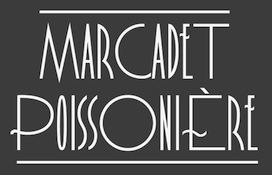 [More] ⦿
[More] ⦿
|
Kontrapunkt
[Bo Linnemann]
|
Danish design bureau that publishes corporate fonts, and fonts for government agencies. The Danish Railway fonts ViaSign (2000), ViaText (2000) and DSBTPL (2000) are due to them. This company in Copenhagen was founded in 1991 by Kim Meyer Andersen and Bo Linnemann. Kontrapunkt's Bo Linnemann is mainly occupied with corporate branding, and this often includes new corporate designs. He professes to be deeply influenced by Knud Engelhardt, who used wide typefaces with the A, N, V, W and M corners stretched by horizontal pieces. His type designs include - Billund: a sans family for the new Billund Airport, which won the Trophé d'Or in 2003.
- CarlsbergSans (2006), for the beer maker.
- Danske (2000): a corporate sans family for the Danske Bank.
- BG (2001): a family for the BG Bank.
- Engelhardt (sans, 1997).
- AtB (for Movia Public Transport).
- Kontrapunkt (free), their own corporate identity face, which won the Danish Design Prize for best typeface in 2004. Pick up a free copy of Kontrapunkt Light, Light Italic and Bold. The slabby Kontrapunkt Bob (2011) is also free.
- Their corporate typefaces include Datsun Sans.
- Kontrapunkt Miki (2016). A free sans typeface family.
Another URL. Fontsquirrel link. Old URL. [Google]
[More] ⦿
|
Kris Sowersby
[KLIM (or: Klim Type Foundry)]

|
 [MyFonts]
[More] ⦿
[MyFonts]
[More] ⦿
|
Ksenia Erulevich

|
Ksenia Yerulevich (or Erulevich) was born in Novotroitsk, Russia, in 1986. She graduated from The British Higher School of Art and Design (Moscow) with a Type and Typography degree. Since 2011, Ksenia has worked as a type designer and calligrapher at Art. Lebedev Studio. Designer of the quaint text typeface Alice (2011, Cyreal, Google Font Directory) and the curly typeface Bonbon (2011, Google Web Fonts). Creator of the feminine script typeface ALS Fuchsia (2012, Art Lebedev Studio). In 2013, Ksenia published ALS Malina, a plump packaging and children's book face. In 2016, she published the informal sans typeface ALS Lavanda and the flaring ALS Alumna at Art Lebedev. ALS Sector, a grotesque typeface family, followed in 2017, and the rounded all caps sans Contract and Russian Premier League (a soccer shirt font by Ksenia Erulevich, Nikolay Nedashkovsky, and Konstantin Lukyanov at Art Lebedev) in 2018. Her corporate typefaces at Art Lebedev Studio include M.Video (2013, done with Olga Umpeleva) and Yandex (2013: by Ksenia Erulevich, Taisiya Lushenko, and Elena Novoselova). [Google]
[MyFonts]
[More] ⦿
|
K.T. Kristian Möller
[KTKM]

|
 [MyFonts]
[More] ⦿
[MyFonts]
[More] ⦿
|
KTKM
[K.T. Kristian Möller]

|
 Karl Thomas Kristian Möller's foundry in Stockholm, est. ca. 2010, is called KTKM. He did a revival called Baskerville Old Face KTKM (2010), which aims to improve over the old Stephenson Blake version, about which Jan Tschichold wrote: The so-called Baskerville Old Face of the type foundry Stephenson Blake&Co. of Sheffield [...] is probably not immediately linked to Baskerville, but it is very much influenced by it. It is one of the most beautiful types of which the mats still exist; it has an incomparably different spirit than the streamlined re-cuts of today's Baskerville. Even keeping the general restraint extremely expressive. According to Berthold Wolpe (Signatures No. 18), the punches were cut and shown in samples in 1776 by Isaac Moore, who came from Birmingham to Bristol.
Karl Thomas Kristian Möller's foundry in Stockholm, est. ca. 2010, is called KTKM. He did a revival called Baskerville Old Face KTKM (2010), which aims to improve over the old Stephenson Blake version, about which Jan Tschichold wrote: The so-called Baskerville Old Face of the type foundry Stephenson Blake&Co. of Sheffield [...] is probably not immediately linked to Baskerville, but it is very much influenced by it. It is one of the most beautiful types of which the mats still exist; it has an incomparably different spirit than the streamlined re-cuts of today's Baskerville. Even keeping the general restraint extremely expressive. According to Berthold Wolpe (Signatures No. 18), the punches were cut and shown in samples in 1776 by Isaac Moore, who came from Birmingham to Bristol. Corporate typefaces by him include Quality Arrows (pictograams for Quality Hotel park in Södertäje, Sweden) and Hemköp Hand (for a grocery store). Unpublished typefaces: KM Caslon Antiqua (based on the Haas version), KM Caslon Kursiv, KM In Pectore (a display version of Bembo), KM Minerva (after a Linotype typeface by Reynolds Stone), KM Philatelie (an original antiqua), KM Ratio Latein Text (after Friedrich Wilhelm Kleukens's famous typeface Ratio Latein, 1925), KM Signwriter (a Trajan typeface after Eric Gill's instructions for the W.H. Smith bookstore), KM Universalitet. In 2013, he created Volunta Roman and Italic (a didone typeface). [Google]
[MyFonts]
[More] ⦿
|
K-Type
[Keith Bates]

|
 K-Type is Keith Bates' (b. 1951, Liverpool) foundry in Manchester, UK, est. 2003. Keith works as an Art&Design teacher at a Salford High School. They custom design type, and sell some of their own creations.
K-Type is Keith Bates' (b. 1951, Liverpool) foundry in Manchester, UK, est. 2003. Keith works as an Art&Design teacher at a Salford High School. They custom design type, and sell some of their own creations. Commercial typefaces: - Adequate (2012). A basic geometric monoline sans family.
- Adventuring (2010, comic book style)
- Alan Hand (2005, based on some blobby lettering, handwritten by printer and mail artist, Alan Brignall)
- Alex (2002-2004)
- Alright (2004, cursive script)
- Anna (2002-2007).
- Argot (2019). Characterized by square counters, this typeface family exhales brutalism and industrialism. See also Argot Machine (2019).
- Artist Hand (2019).
- Axis
- Bank of England (2012, blackletter): Bank of England is loosely based on blackletter lettering from the Series F English twenty pound banknote introduced in 2007. The font also takes inspiration from German Kanzlei (Chancery) typefaces and the 17th century London calligrapher, John Ayres.
- Banks & Miles (2018). Inspired by the geometric monoline lettering created for the British Post Office in 1970 by London design company Banks & Miles, a project initiated and supervised by partner John Miles, which included Double Line and Single Line alphabets. The new digital typeface is a reworking and extension of both alphabets.
- Barbica (2015). A glyphic typeface.
- Bricola (2020).
- Brush Hand New (2013): Brush Hand New is a full font based on a copy of Flash Bold called Brush Hand marketed by WSI in the 1990s and more recently distributed through free font sites. Brush Hand was an anonymous redrawing of Flash which simplified, slightly lightened, smoothed out ragged edges, and improved the legibility of the original classic created by Edwin W. Shaar in 1939.
- Building&Loan (2007, engaved face)
- Bigfoot (2005, a Western font based on the slab capitals used by Victor Moscoso in his 1960s psychedelic rock posters)
- Bolshy (2009)
- Bolton750 (2003, a mechanical typeface done with John Washington).
- Chancery Lane (2021). An italic text typeface that is based on chancery scripts.
- Charles Wright (2016). A set of fonts based on the UK license plate fonts.
- Chock (2009)
- Circa (geometric sans)
- Cloudbuster (2019). Inspired by Imre Reiner's Corvinus Skyline of 1934.
- Club.
- Coinage Caps (2017). Coinage Caps is a trilogy of small caps fonts based on the roman lettering used for the designs of British coinage. Coinage Caps Eric Gill is a regular weight, spur serif style drawn by Eric Gill for silver coin designs in the 1920s which were rejected by the Royal Mint. Coinage Caps Humphrey Paget is a medium weight serif based on the lettering of Thomas Humphrey Paget, designer of the Golden Hind Halfpenny first struck in 1937. This font simulates the soft, slightly rounded corners of the minted letterforms. Coinage Caps Kruger Gray is a glyphic, flare serif font typical of the bold style engraved by George Kruger Gray for numerous British and Commonwealth coins during the 1920s and 30s. This font also simulates the slightly rounded corners of the minted letterforms.
- Collegiate (2009)
- Component (2012). A font for lost civilizations and dungeon rituals.
- Context (experimental)
- Credit Card (2010, font for simulating bank cards)
- Curwen Sans (2018). A monoline sans from the early 1900s originally created for in-house use at the Curwen Press in London.
- Cyberscript (2006, connected squarish face)
- Deansgate (2015). Deansgate and Deansgate Condensed are based on the clearest and most distinctive of the sans-serif letterforms used on Manchester street nameplates, and easily identified by a pointy Z and pointed middle vertices on M and W.
- Designer
- Digitalis
- English
- Enamela (2013). Keith writes: Enamela (rhymes with Pamela) is based on condensed sans serif lettering found on vitreous enamel signage dating from the Victorian era and widely used in Britain for road signs, Post Office signs, the plates on James Ludlow wall postboxes, railway signs, direction signs and circular Automobile Association wayfinding plaques throughout the first half of the twentieth century. The original model goes back to Victorian times, ca. 1880.
- Engravia (2018). Engravia is a didone display typeface supplied in three varieties of engraving---Inline, Shaded and Sawtooth---plus a plain basic font.
- Example (2017). A workhorse neo-grtesque typeface family.
- Excite
- Flip (2011), a western grotesk billboard face.
- Flyer (2009, techno)
- Frank Bellamy (2009, an all-capitals family based on the hand lettering of English artist Frank Bellamy, who is most famous for his comic art for Eagle and TV21, and his Dr Who illustrations for Radio Times)
- Future Imperfect
- Gill New Antique (2003)
- Greetings
- Helvetiquette
- Hapshash (2010): an all capitals font inspired by the 1960s psychedelic posters of British designers Hapshash and the Coloured Coat (Michael English and Nigel Waymouth), in particular their 1968 poster for the First International Pop Festival in Rome. A dripping paint font.
- Irish Penny (2016). An uncial typeface based on the lettering from Percy Metcalfe's influential pre-decimal coinage of Ireland, the Barnyard Collection.
- Ivan Zemtsov (2009)
- Kato (2007, oriental simulation face)
- Keep Calm (2015). A geometric sans inspired by a British war poster from 1939.
- Keith's Hand
- Klee Print (2010, Klee Print is based on the handwriting of American artist Emma Klee)
- Latinate (2013). A vintage wedge serif wood style typeface, and a rough version.
- Lexie (an improved or "adult" version of Comic Sans) and Lexie Readable (2006, modified in 2015). Keith writes: Lexie Readable (formerly Lexia Readable) was designed with accessibility and legibility in mind, an attempt to capture the strength and clarity of Comic Sans without the comic book associations. Features like the non-symmetrical b and d, and the handwritten forms of a and g may help dyslexic readers.
- Licencia (2016). A blocky typeface inspired by the tall, soft-cornered lettering on vehicle licence and registration plates world-wide.
- Londinia (2016).
- Matchbox
- Max
- Ming
- Modernist Stencil (2009).
- Monterey Pop (2020). A psychedelic / popart typeface based on Tom Wilkes's poster lettering for the Monterey International Pop Festival in June 1967.
- Mythica (2012). A slightly condensed lapidary roman with copperplate serifs.
- Modulario (2010): a contemporary sans.
- New Old English (2010, blackletter)
- Norton (2006)
- Nowa (2004, a play on Futura)
- NYC (octagonal)
- Openline (2008, an art deco pair)
- Oriel Chambers Liverpool: A Lombardic small caps font based on the masonry lettering on Peter Ellis's 1864 building, Oriel Chambers, on Water Street in Liverpool.
- Pentangle (2008, based on album lettering from 1967)
- Pixel
- PixL (2002-2004)
- Plasterboard (2004-2005)
- Pop Cubism (2010) is a set of four texture fonts, combining elements of cubism and pop art.
- Poster Sans (2006). A wood type family based on Ludlow 6 EC. See also Poster Sans Outline.
- Rick Griffin (2006, more psychedelic fonts inspired by a 1960s Californian artist)
- Rima (2020). A stencil typeface with heavy slabs.
- Roundel (2009, white on black)
- Runestone (2010, runic).
- Sans Culottes (2008, grunge)
- Serifina
- Solid State (2008, art deco blocks)
- Solus (2004, a revival of Eric Gill's 1929 typeface Solus which has never been digitized; read about it here)
- Stockscript (2008, down-to-earth script based on the pen lettering of the writer, Christopher Stocks)
- Susanna (2004)
- Ticketing (2011): pixelish.
- Total and Total Eclipse (2004, squarish display typefaces based on the four characters of Jaroslav Supek's title lettering for his 1980s mailart magazine, Total)
- Transport New (2009: a redrawing of the typeface designed for British road signs. In addition to the familiar Heavy and Medium weights, Transport New extrapolates and adds a previously unreleased Light weight font originally planned for back-lit signage but never actually applied. Originally designed by Jock Kinneir and Margaret Calvert beginning in 1957, the original Transport font has subtle eccentricities which add to its distinctiveness, and drawing the New version has involved walking a tightrope between impertinently eliminating awkwardness and maintaining idiosyncrasy.)
- Union Jack (octagonal)
- Victor Moscoso (2008, psychedelic)
- Wanda (2007, art nouveau)
- Waverly
- Wes Wilson (2007, psychedelic, inspired by 1960s psychedelic poster artist Wes Wilson).
- 3x5
- Zabars (2001): a Western face.
His free fonts: - Blue Plaque (2006: a distressed font based on English heritage plaques)
- Blundell Sans (2009)
- Celtica (2007) has Celtic influences
- Dalek (2005, stone/chisel face: Dalek is a full font based on the lettering used in the Dalek Book of 1964 and in the Dalek's strip in the TV21 comic, spin-offs from the UK science fiction TV show, Doctor Who. The font has overtones of Phoenician, Greek and Runic alphabets). See also Dalek Pinpoint (2018).
- Designer Block (2006)
- Flat Pack (2006)
- Future Imperfect (2006, grunge)
- Gommogravure (2005)
- Greetings (2006), Greetings Bold (2006)
- Insecurity (2005, experimental) won an award at the 2005 FUSE type competition.
- International Times (2006, inspired by the masthead of the International Times underground newspaper of the 1960s and 1970s)
- Keep Calm (2011). Related to London Underground.
- Kindersley Sans (2017). A modernized version of David Kindersley's 1950s type used for many street name plates in Britain, about which Bates writes: Kindersley Sans is a humanist sans-serif that conserves the Gill-inspired character and some of the calligraphic qualities of Kindersley's lettering, it retains the Roman proportions and its Britishness, but traditional prettiness and intricacy are discarded in favour of a clean modernity.
- Klee Capscript (2005: based on the handwriting and capitals drawn by artist Emma Klee (USA) for her Color Museum Mail Art invitation. The upper case is based on Emma's capitals and the lower case is freely adapted from her script)
- Lexia and Lexia Bold (2004)
- MAGraphics (2004)
- Magical Mystery Tour (2005, outlined shadow face), Magical Mystery Tour Outline Shadow (2005), Magica (2015, a serifed titling typeface family).
- Mailart (2004), Mailart Rubberstamp (2004), Mailart Rubberstamp Sans (2018).
- Mandatory (2004, a UK number plate font based on the Charles Wright typeface used in UK vehicle registration plates).
- McKnight Kauffer (2021). A retro poster font in the style of poster artist Edward McKnight Kauffer.
- Motorway (2015), a companion typeface to Transport, the British road sign lettering. This is an extension of an original design by Jock Kinneir and Margaret Calvert: The Motorway alphabet was created for the route numbers on motorway signage, and is taller and narrower than the accompanying place names and distances which are printed in Transport. However, for Motorway Jock Kinneir and Margaret Calvert created only the numbers 0 to 9, the capitals A, B, E, M, N, S and W, ampersand, slash, parentheses and a comma. So, although the lettering made its first appearance on the Preston bypass in 1958, K-Type Motorway is the first complete typeface and contains all upper and lower case letters, plus a full complement of punctuation, symbols and Latin Extended-A accented characters. As with the Transport alphabet the starting point was Akzidenz Grotesk, Motorway taking inspiration from condensed versions. Changes were mainly driven by a quest for legibility, resulting in some reduced contrast between horizontal and vertical strokes, and Gill-esque straight diagonal limbs on the 6 and 9, and high vertex for the M.
- Penny Lane (2014). A a sans serif derived from twentieth-century cast-iron signs displaying Liverpool street names.
- Possible (2020). A 10-style mini-serif typeface.
- Provincial (2014). A Victorian set of outline fonts.
- Ray Johnson (2006-2008)
- Roadway (2005, based on New York roadside lettering).
- Romanica (2017). A humanist sans.
- Sam Suliman (2020). A condensed squarish typeface which was inspired by lowercase lettering on a Sarah Vaughan album cover designed by Sam Suliman in 1962. Suliman was born in Manchester, England in 1927. After working for McCann Erikson in London, he moved to New York where he took on freelance work designing album covers, particularly celebrated are his striking minimalist designs for jazz records. He moved back to England in the early 1960s, designing many book jackets, film titles and fabrics, also working in Spain and India before settling in Oxford in the 1980s.
- Savor (2011). An art nouveau family.
- Sgt Peppers Lonely Hearts Club (2014).
- Sinkin Sans (2014, free) and Sinkin Sans Narrow (2015, commercial). Open Font Library link.
- Soft Sans (2010)
- Subway Ticker (2005)
- Taxicab (2016). A squarish style.
- This Corrosion (2005).
- Toppler (2018). A modern and full range top-heavy cartoon font family that includes a Popdots style. Bates was striving to improe on 1990s clasics such as Baby Kruffy (Ben Balvanz), Comix Heavy (WSI) and Startling (Dave Bastian).
- Wildcat (2016). An athletics typeface family.
- Zinc (2018). A monoline sans with diagonal nubs.
- Colnage Caps Kruger Gray (2018). Coinage Caps is a trilogy of lapidary small caps fonts based on the Roman lettering used for the designs of British coinage.
- Dalek Pinpoint (2018). Based on Dalek comic book lettering from the 1960s.
- Icky Ticket Mono (2018). IckyTicket Mono is a monospaced font based on the coarsely printed numbering from 1960s bus tickets.
- Sexbomb (2018). A psychedelic typeface family.
- Mancunium (2019). A monoline sans family.
- Straight Line (2020). An outlined font with chamfered corners and straight edges, possibly useful as a blackboard bold type.
- We The People (a blackletter font based on the peamble of the American constitution).
- Bowdon (2021). A six-style warm, Bodoni-inspired English Modern, influenced by the 1930s lettering of designer Barnett Freedman.
- Oxford Street (2021). A condensed grotesque with horizontal and vertical stem terminals; it is a street a signage font that began as a redrawing of the capital letters used for street nameplates in the borough of Westminster, which in turn were designed in 1967 by the Design Research Unit using custom lettering based on Adrian Frutiger's Univers 69 Bold Ultra Condensed.
Custom / corporate typefaces: With Liverpool-based art director Liz Harry, Bates created a personalized font, loosely based on Coco Sumner's handwritten capitals, for the band I Blame Coco. Medium and Semibold weights of Gill New Antique were commissioned by LPK Design Agency. Stepping Hill Hospital and Bates created Dials, a pictorial font to help hospital managers input data about improvements. A custom font was designed for Bolton Strategic Economic Partnership. Abstract Fonts link. View Keith Bates's typefaces. Dafont link. Yet another URL. Fontspace link. Fontsy link. Behance link. [Google]
[MyFonts]
[More] ⦿
|
Kurt Weidemann

|
 Born in Eichmedien, Masuren, East Prussia in 1922, Kurt Weidemann died on arch 31, 2011. He studied at the State Academy for Fine Arts in Stuttgart, 1953-1955. From 1965 until 1985, he was professor at the Staatliche Akademie der Bildenden Künste in Stuttgart. From 1987 onwards, corporate identity consultant to Daimler-Benz. Weidemann also helped with the identities of companies such as Porsche, Zeiss, and Deutsche Bahn. From 1991 onwards, he taught at the Hochschule für Gestaltung at the Zentrum für Kunst- und Medientechnologie in Karlsruhe. Author of Wo der Buchstabe das Wort führt Ansichten über Schrift und Typographie (Stuttgart, 2000). He lived in Stuttgart, and enjoyed a reputation as an outspoken and lively speaker.
Born in Eichmedien, Masuren, East Prussia in 1922, Kurt Weidemann died on arch 31, 2011. He studied at the State Academy for Fine Arts in Stuttgart, 1953-1955. From 1965 until 1985, he was professor at the Staatliche Akademie der Bildenden Künste in Stuttgart. From 1987 onwards, corporate identity consultant to Daimler-Benz. Weidemann also helped with the identities of companies such as Porsche, Zeiss, and Deutsche Bahn. From 1991 onwards, he taught at the Hochschule für Gestaltung at the Zentrum für Kunst- und Medientechnologie in Karlsruhe. Author of Wo der Buchstabe das Wort führt Ansichten über Schrift und Typographie (Stuttgart, 2000). He lived in Stuttgart, and enjoyed a reputation as an outspoken and lively speaker. FontShop link. Video by Die Gestalten. Picture. Another image. Smiling. At home during the Die Gestalten interview. Painting of him. He had great ideas about type and book design. For example, he always started designing the most frequently used letters, in this order: enirstadu, and claimed that the other letters are much less important. His typefaces: - Biblica (1979). Commissioned by the German Bible Society.
- The extensive Corporate A (serif), E (slab) and S (sans) series (1985-1990), available from URW (since 1998), MyFonts, and Berthold. The Corporate series was exclusively designed for DaimlerChrysler as a corporate font. URW++ enhanced the Corporate ASE family in regular, bold, italic, and bold italic by Greek, Cyrillic, and all additional Latin characters to cover Eastern Europe. Corporate ME for the Middle East was released by URW in 2012.
- ITC Weidemann (1983, a digital version of Weidemann's Biblica face.
Klingspor link. Kurt Weidemann's typefaces. [Google]
[MyFonts]
[More] ⦿
|
Kyiv Type Foundry
[Yevgeniy Anfalov]
|
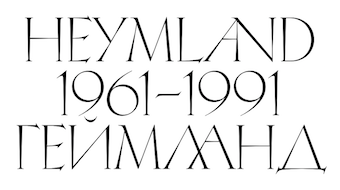 Born in Kyiv, Ukraine, in 1986, Yevgeniy Anfalov moved to Germany in 2003. He studied Visual Communication at Hannover University of Applied Sciences and Arts, and he launched his own design practice in 2010, two years before graduation. From 2015 to 2017, he completed the MA Art Direction at ECAL/University of Art and Design Lausanne, with a major in Type Design. He obtained an award of excellence for his graduation book project on the history of electronic music, ROTARY. Geschichte des Studios für elektronische Musik WDR Köln 1951-1981. Yevgeniy is working primarily in the fields of editorial design, visual identities, bespoke typefaces and online projects.
Born in Kyiv, Ukraine, in 1986, Yevgeniy Anfalov moved to Germany in 2003. He studied Visual Communication at Hannover University of Applied Sciences and Arts, and he launched his own design practice in 2010, two years before graduation. From 2015 to 2017, he completed the MA Art Direction at ECAL/University of Art and Design Lausanne, with a major in Type Design. He obtained an award of excellence for his graduation book project on the history of electronic music, ROTARY. Geschichte des Studios für elektronische Musik WDR Köln 1951-1981. Yevgeniy is working primarily in the fields of editorial design, visual identities, bespoke typefaces and online projects. Founder of Kyiv Type Foundry, which aims to offer new perspectives on Cyrillic type design. His typefaces: - LL Heymland (2018-2020, Lineto). An all caps flared typeface for Latin and Cyrillic that was influenced by a pen drawing of Koch's Koch Antiqua found in Solomon Telingater's estate.
- The cyrillization of Stephan Müller's Chernobyl, a graphic stencil font designed in the late 1990s.
- The custom typeface Malba Sans (2017) for Museo de Arte Latinoamericano de Buenos Aires (MALBA). He explains: Malba Sans is a corporate font of the museum, whose capital letters were drawn in-house (Aldus De Losa) and served the titling purposes. We were asked by the museum's graphic design team to analyse and update the capital letters, draw the lowercase letters, based upon the improved model and extend the character sets to cover more languages. The new version, named Malba Sans is characterised by a stronger vertical accent and more consistency due the reshape of all the letter forms. A new tighter spacing contributed to the better titling function. Malba Sans was fully kerned and is going to be implemented in the museum's upcoming identity in 2018. The font was exclusively drawn for the internal use and is not available for licensing.
Lineto link. [Google]
[More] ⦿
|
Kyle Wilkinson
|
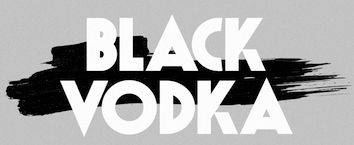 Creative director in Sheffield, UK. He designed the experimental (photographic?) alphabet Spectre (2013) and the experimental typeface Helix (2016).
Creative director in Sheffield, UK. He designed the experimental (photographic?) alphabet Spectre (2013) and the experimental typeface Helix (2016). And now for something straight out of James Bond, Blavod Vodka (2017), a custom typeface for Blavod Vodka---the original Black Vodka. Behance link. [Google]
[More] ⦿
|
Large Projects
[Geoffrey Pellet]
|
Large Projects is a multidisciplinary design studio based in Paris and run by Emmanuel Besse and Léo Carbonnet. One of its designers, Geoffrey Pellet, creates custom typefaces such as the unkerned sans typefaces Dorothy Sweet (2011) and Dorothy Rude (2011), and the Felipe (sans) typeface family for I Iz Felipe Fanzine. Typefaces by Large Projects: - Principal. A workhorse sans family initially designed for in-house use.
- Kreuz. They write: Kreuz is a display typeface taking its inspiration in the industrial landscapes of Berlin. It contains angular letterforms and shares the structure of the grotesk faces from the end of the 19th century. With the removal of the curves on the outside of the glyphs, Kreuz almost looks like a set of bolts and nuts
- Norman. A condensed monospaced typeface with the look of an American gothic.
[Google]
[More] ⦿
|
Lasha Giorgadze
|
Designer in Tbilisi, Georgia. Designer of the Georgian typefaces LGV Lilu (2017), LGV Stadium (2017), LGV Vani Archeology (2017, a corporate font that belongs to the Georgian National Museum), LGV Marika (2016), LGV Bebas Neue, LGV Shxvarti (2016) and LGV Baxy Regular (2016, free). Georgian typefaces from 2019: LGV Quentin Tarantino, Speedee (Georgian adaptation for McDonald's Georgia). Font engineering for his 2019 fonts by Tbilisi-based Mariam Merabishvili. [Google]
[More] ⦿
|
Laudon Type
[Carolina Laudon]
|
 Laudon Type Design is a one woman type studio dedicated to typography, type design and type education. Carolina Laudon is a Swedish typographer and type designer living in Gothenburg, Sweden. After art studies in Stockholm and London she finalized her MA in Graphic Design at the University of Goteborg in 2000. Since then she has worked in her own type studio, focusing on type design and typographic work. For seven years she was responsible for all typographic tutoring at the Konstfack University of Arts in Stockholm. She taught typography at the Forsberg School in Stockholm and Goteborg. She currently teaches at Berghs School of Communication in Stockholm. In 2012, Carolina Laudon received The Berling Prize, Sweden's most prestigious typographic design-prize.
Laudon Type Design is a one woman type studio dedicated to typography, type design and type education. Carolina Laudon is a Swedish typographer and type designer living in Gothenburg, Sweden. After art studies in Stockholm and London she finalized her MA in Graphic Design at the University of Goteborg in 2000. Since then she has worked in her own type studio, focusing on type design and typographic work. For seven years she was responsible for all typographic tutoring at the Konstfack University of Arts in Stockholm. She taught typography at the Forsberg School in Stockholm and Goteborg. She currently teaches at Berghs School of Communication in Stockholm. In 2012, Carolina Laudon received The Berling Prize, Sweden's most prestigious typographic design-prize. Her work includes some of the most used corporate typefaces in Sweden, like Monopol (for Systembolaget, the booze monopoly in Sweden), and DN Bodoni and DN Grotesk (2000-2002, together with Örjan Nordling, Pangea Design, for the Swedish daily morning paper Dagens Nyheter). Other clients include Volvo AB, Arla, White Architects, Insurance company If and design agency F&B Happy and Identity Works as well as ad agency F&B. Her other typefaces include Endure (grungy sans), LTD Vichy (octagonal face), Laudon Stockholm Sans (unfinished), LTD Pamskrift (Victorian), LTD Handskrift (2001, a script font for the Scandinavian insurance company Försäkringsbolaget IF), LTD Shake, LTD Sthlm Sans, LTD Cartoon, White Dark (a shaded typeface for White Architects (2002)), LTD Cut (a 3d face), John Rounded (a fat marker font), Derome Sans, Gamlestadsstencil, and Länsförsäkringar Rubik. Graduate of the TDi program at the University of Reading, UK, 2017. In 2020, Carolina became president of ATypI. Her term lasts until 2022. [Google]
[More] ⦿
|
Laura Meseguer

|
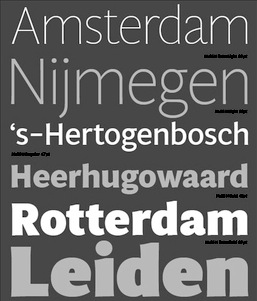 Designer (b. Barcelona, 1968) at type-o-tones in Barcelona. She publishes as well as promotes all her type designs through her own type foundry, Type-o-Tones. In 2003-2004, she took a year off and took the postgraduate Type and Media course at KABK (Royal Academy of Art) in The Hague, Holland. She is a professor of typography in Spain. Author of TypoMag. Typography in Magazines (IndexBook). In 2012, Cristobal Henestrosa, Laura Meseguer and José Scaglione coauthored Como Crear Tipografias (Brizzolis S.A., Madrid, Spain). MyFonts link. Fontshop link. Her typefaces:
Designer (b. Barcelona, 1968) at type-o-tones in Barcelona. She publishes as well as promotes all her type designs through her own type foundry, Type-o-Tones. In 2003-2004, she took a year off and took the postgraduate Type and Media course at KABK (Royal Academy of Art) in The Hague, Holland. She is a professor of typography in Spain. Author of TypoMag. Typography in Magazines (IndexBook). In 2012, Cristobal Henestrosa, Laura Meseguer and José Scaglione coauthored Como Crear Tipografias (Brizzolis S.A., Madrid, Spain). MyFonts link. Fontshop link. Her typefaces: - Adelita (1993-2007). A connect-the-dots typeface family co-designed by Laura Meseguer and Adela de Bara.
- Brushland (2019).
- Cortada: her first typeface. In 2012, she published the angular signage typeface Cortada Dos at Type O Tones.
- Dauro (2013), a corporate typeface done for the olive oil brand Dauro. From the original typeface in use, Chronicle Bold Condensed, she designed an outline version, then Lingotillo (Little gold bar: beveled) and finally Grabado (engraved).
- Frankie (1992, a grunge font done with Juan Dávila). Frankie is the result of a process of erosion, photocopying, scanning and digitisation based on the Franklin Gothic type (1904, Morris Fuller Benton).
- Gallard.
- The curly Girard Sansusie (House Industries). Laura writes: In 2005, House Industries invited me to digitize the lettering used to announce the textile designs that Alexander Girard did for Herman Miller. Girard Sansusie is a reinterpretation of this design, based on the few letters that were available to me. Girard Sansusie combines a folk flair with a lettering style evident throughout the Girard oeuvre, most notably on his 1955 Herman Miller fabric catalogue. Alexander Girard was a master at utilizing lettering and type as practical, illustrative and readable elements.
- Guapa (2011). A thin monoline curlified display typeface with an art deco aroma. Followed in 2012 by Guapa Deco.
- Lola (2013). A comic book typeface started in 1997 based on an alphabet found in Schriftschreiben Schriftzeichnen (1977) by Eugen Nerdinger and Lisa Beck. Lola won an award at TDC 2013. Its outgrowth, Lalola (1997-2013), won an award at TDC 2014. Lalola Cyrillic was released in 2019.
- Multi (2011-2016). A magazine type family, with weights from hairline to black.
- Rumba (2003-2007): this semi-script family won an award at the TDC2 2005 type competition. It was developed during her KABK Type and Media studies.
- In 2009, the low-to-zero contrast Alexander Girard family was published by House Industries. It consists of Girard Sky, Girard Script, Girard Display, Girard Sansusie and Girard Slab in many weights and styles. Girard Sansusie was created by Laura Meseguer based on the lettering used to announce the textile designs that Alexander Girard did for Herman Miller in 1955. Girard was digitized at House Industries by Ben Kiel, Ken Barber, and Laura Meseguer.
- Magasin (2013, Type o Tones) is a connected retro-chic upright script typeface. She writes: Some examples that have inspired me are Corvinus (Imre Reiner, 1934) and Quirinus (Alessandro Butti, 1939) and the later Fluidum (1951), a kind of non-connected script version of Quirinus, also designed by Alessandro Butti for Nebiolo foundry.
- In 2019, she released the Latin / Arabic display typeface Qandus, which was co-designed two years earlier with Kristyan Sarkis.
- The custom typeface Solis (2019) done for AccuWeather.
- In 2020, she released the wonderful stencil typeface family Sisters. Sisters was conceived as a custom lettering project for the identity of Trans_Documentar, an exhibition at the La Panera Art Center in Lleida, Catalunya. Sisters is an homage to all the creative women in this world, according to Meseguer. Type Network link.
Interview by MyFonts. Speaker at ATypI 2016 in Warsaw on A Typographic Maghribi Trialogue. In this talk, he explains, together with Juan Luis Blanco and Krystian Sarkis, the Typographic Matchmaking in the Maghrib project of the Khatt Foundation, which tries to facilitate a cultural trialogue as well as shed a typographic spotlight on the largely ignored region of the Maghreb in terms of writing and design traditions. The specific goal of the collaboration is the research and development of tri-script font families (for Latin, Arabic and Tifinagh) that can communicate harmoniously. Behance link. Interview by Unostiposduros. [Google]
[MyFonts]
[More] ⦿
|
Lauren Childs
|
Lauren Childs (Atlanta, GA) created the retro baseball script font Leon's (2013) for Leon's Full Service, a restaurant in Decatur, GA. [Google]
[More] ⦿
|
Laurianne Froesel
[Hello Velocity]
|
[More] ⦿
|
Lavernia & Cienfuegos
|
Lavernia & Cienfuegos is a multidisciplinary design studio based in Valencia, Spain. They designed the bespoke typeface Habana in 1999 for BASA magazine. It was designed to be used mainly as a headline font and display font with sizes of more than 20 points, where its quirky features stand out. Their web site says that it is the typeface of the Canary Islands Official College of Architects. [Google]
[More] ⦿
|
LBS The Sans
|
The house font of the company LBS, based on Lucas De Groot's The Sans. [Google]
[More] ⦿
|
Lebeaux Grobler
|
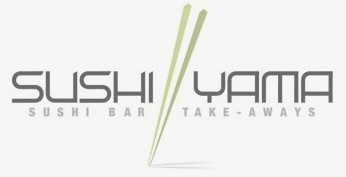 Lebeaux Grobler (Cape Town, South Africa) created the trendy corporate sans typeface Sushi Yama (2013). [Google]
[More] ⦿
Lebeaux Grobler (Cape Town, South Africa) created the trendy corporate sans typeface Sushi Yama (2013). [Google]
[More] ⦿
|
Lee Goater
|
Independent brand specialist Lee Goater (Leeds, UK), known for his work across cultural organisations including the Northern School of Contemporary Dance, Leeds West Indian Carnival and Leeds International Film Festival. In 2017, together with Dalton Maag and Hungry Sandwich Club, a creative collective made up of graduates from Leeds College of Art, he designed the geometric solid bespoke typeface Leeds 2023. Leeds has commissioned a new Leeds 2023 Typeface and Brand Identity to support its bid for the European Capital of Culture title in 2023. The typeface will be open source at some point. Report by Typetoken. Creative Review link. [Google]
[More] ⦿
|
Lena Stichternath
|
Graphic designer in Hannover, Germany. The typeface Magdalena was developed during a course at the University of Applied Sciences and Arts Hannover taught by Florian Schick. In 2018, the typeface was used for the Elefant tea brand corporate identity. [Google]
[More] ⦿
|
Leo Field
|
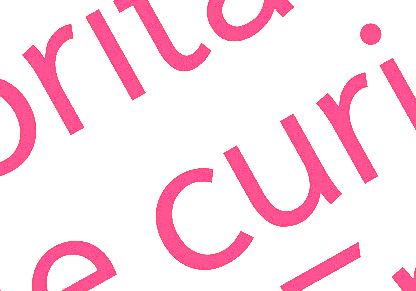 Falmouth, UK-based graphic designer. Creator of TED Font (2014), a bespoke sans typeface for the TED talks. Behance link. [Google]
[More] ⦿
Falmouth, UK-based graphic designer. Creator of TED Font (2014), a bespoke sans typeface for the TED talks. Behance link. [Google]
[More] ⦿
|
Leonardo Sonnoli
|
Born in Trieste in 1962, and a partner in CODEsign in Rimini with Vetta (who died in 2003) and Tassinari. From 1990 to 2002 he has been art director at the Dolcini associati office in Pesaro. At ATypI in Rome in 2002, he spoke about the pieces letters are made of. Creator of the militaristic geometric experimental typeface Corva Salto (1993). In 2014, Leonardo Sonnoli and Jonathan Pierini developed the bespoke typeface family Mast for the MAST Foundation in Bologna. [Google]
[More] ⦿
|
Leonardo Vázquez Conde
[Macizo.com (or: Macizotype)]

|
[MyFonts]
[More] ⦿
|
Les Graphiquants
|
 Graphic design studio in Paris, est. 2008. Designers include Maxime Tétard and Romain Rachlin. It is mainly involved in corporate identity and occasionally designs fonts for clients. Typefaces as of 2017 include Alsace (2012: modular all caps display typeface), Amsterdam (2012: an exercise in high contrast), Athènes (2009: experimental), Berline (2012: in Grotesk and Calligraphique substyles), Craft (2012: hipster style), Frankfort (2012), Intervalle (2016), Sofia (2011: Peignotian), Linbourg (2013), Rive (2010), and Lorraine (2011). [Google]
[More] ⦿
Graphic design studio in Paris, est. 2008. Designers include Maxime Tétard and Romain Rachlin. It is mainly involved in corporate identity and occasionally designs fonts for clients. Typefaces as of 2017 include Alsace (2012: modular all caps display typeface), Amsterdam (2012: an exercise in high contrast), Athènes (2009: experimental), Berline (2012: in Grotesk and Calligraphique substyles), Craft (2012: hipster style), Frankfort (2012), Intervalle (2016), Sofia (2011: Peignotian), Linbourg (2013), Rive (2010), and Lorraine (2011). [Google]
[More] ⦿
|
LESTE
[Marcelo Leme]
|
LESTE is the graphic design studio of Marcos Leme based in Rio de Janeiro. In 2012, he created the typeface Sistema Arterial. In 2008, he created a typeface for the Guarana Kuat identity. [Google]
[More] ⦿
|
Letterjuice
[Pilar Cano]

|
 Letterjuice is the British type foundry of Pilar Cano, who graduated from the University of Reading, 2006, but started out life in Barcelona. After graduation, still in 2006, she co-founded Mídori, a graphic design studio specialised in editorial design. Letterjuice is based in Brighton, UK.
Letterjuice is the British type foundry of Pilar Cano, who graduated from the University of Reading, 2006, but started out life in Barcelona. After graduation, still in 2006, she co-founded Mídori, a graphic design studio specialised in editorial design. Letterjuice is based in Brighton, UK. Coauthor, with Marta Serrats, of Typosphere (2007, Harper Collins). Creator of these typefaces: - Edita (2006), an informal sans family that also covers kana for Japanese. This typeface was finally published in 2009 at Type Together. It was followed in 2011 by additional weights in Edita Book.
- Techarí (2006, +Extra) comes from a commission in which the brief consisted of the creation of a typeface family to be used for the design of the third disc of the band called Ojos de Brujo based in Barcelona. This disc was called Techarí, which means free in Caló, the language of the Spanish gypsies---it also has a stencil version.
- In 2010, she is working on an elliptical sans that covers Latin, Cyrillic and Greek.
- Techarí (2010) is an extremely elegant custom family.
Xuppis (2012) is a commissioned logotype for a candy shop in El Masnou, Barcelona. Together with Lluis Sinol, she designed the custom sans typeface SEAT (2013) for Latin, Greek and Cyrillic. - Quars (2013). This angular typeface family, co-designed with Ferran Milan, grabs elements from Scotch Roman and old Dutch typefaces.
- Sapmi (2013). A custom typeface for the Sami children.
- Baldufa (2014, Ferran Milan Olivares): an award-winning flared, calligraphic and subtly rounded serif typeface family for Latin and Arabic. In 2021, Ferran Milan and Pilar Cano released Baldufa Greek Ltn (Greek and Latin), Baldufa Greek, Baldufa Cyrillic Ltn, Baldufa Cyrillic and Baldufa Paneuropean.
- Aanaar (2014) was originally designed for children's textbooks.
- Seat Sans is a corporate typeface co-designed with Minsk Disseny in 2014.
- Catalana Serif won an award at Granshan 2014 in the Greek typeface category.
Pilar Cano, Spike Spondike and the Dalton Maag team won an award at Granshan 2014 in the Thai typeface category for HP Simplified. - In 2017, Jordi Embodas's Trola family was updated, improved and expanded to Cyrillic. The Cyrillic version was designed by Letterjuice (Pilar Cano & Ferran Millan) under the supervision of Ilya Ruderman and Yury Ostromentsky.
- Bespoke typefaces include Saffron Display (2017), Screwfix (2017) and Catalana (2016).
- Pilar Cano and Ferran Milan bundled their efforts once again in 2018 for the Latin / Thai typeface family Arlette (TypeTogether).
- In 2020, she published Portada Thai at TypeTogether to complete the text typeface Portada (2016) by José Scaglione and Veronika Burian.
- Nawin Arabic (2022). An informal Arabic typeface inspired by handwriting by Pilar Cano and Ferran Milan.
Interview by Unostiposduros. Cargo Collective link. MyFonts link. Behance link. Wiki page. Klingspor link. Behance link for Letterjuice. [Google]
[MyFonts]
[More] ⦿
|
LetterMaker
[Teo Tuominen]

|
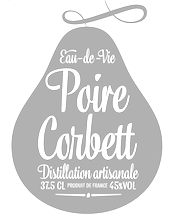 Teo Tuominen is a fearless Finnish type designer and letterer based in Helsinki. Teo has a background in graphic design and has a masters degree in type design from the TypeMedia program in Den Haag, The Netherlands, class of 2013. Designer of Kaiser (2011, a sans designed for print and screen), developed at the tipoRenesansa 3rd international type design workshop in Ljubljana, Slovenia.
Teo Tuominen is a fearless Finnish type designer and letterer based in Helsinki. Teo has a background in graphic design and has a masters degree in type design from the TypeMedia program in Den Haag, The Netherlands, class of 2013. Designer of Kaiser (2011, a sans designed for print and screen), developed at the tipoRenesansa 3rd international type design workshop in Ljubljana, Slovenia. From 2010 until 2012, Paul D. Hunt (Adobe) and Teo Tuominen developed the monospaced programmimg font family Hasklig. Creator of the round signage / cartoon typeface Winnie the Hoop (2012, inspired by Winnie the Pooh). In 2013, he graduated from the Type & Media program in Den Haag, with a typeface family called Binky that was inspired by wood type. Before that, he graduated from the Pekka Halonen Academy in 2009 and the Lahti Institute of Design in 2012. He also designed Tartufe (2013), and drew the italics of Source Code Pro for Adobe in 2014. In 2015, Emil Karl Bertell and Teo Tuominen joined forces at Fenotype when they designed the retro connected signage script typeface Tea Biscuit. Typefaces from 2016: HK 1917 (originally drawn as custom lettering for the label of a gin called Helsingin. HK 1917 is based on the headline font used in the set of statutes from 1917 that started the prohibition in Finland), Paradise Sans (a custom typeface family designed for Paradise City Beverage Company; it includes a stunning stencil style), Warrior Sans (a custom typeface for specialty coffee company Warrior Coffee). Typefaces from 2017: Wolby (brush-lettered), Trevor (a kind slab serif), Floki (condensed sans), Wolt Display (for the food delivery service Wolt), Walter (Type Together; Teo writes that Walter originally began as a revival of an unidentified typeface used in a Dutch version of the play Tartuffe by Molière), Kaarna, Winnie The Hoop (signage script), Airo (a monospaced slab serif with reversed contrast). Typefaces from 2018: Geria (a hand-drawn sans), Papillon Script (a monoline script; with Emil Karl Bertell, at Fenotype), Calton and Calton Stencil (a utilitarian workhorse sans serif family), Quida (a flared display duo with sans and script, +Quida Rough), Vieno, Banto (wedge serif), Dallas Print Shop (a display family by Teo Tuominen and Emil Karl Bertell), Capital (a sans and serif family by Teo Tuominen, Erik Jarl Bertell and Emil Karl Bertell), Maestri (a classical connected scrupt by Teo Tuominen and Emil Karl Bertell). At Future Fonts, he published the wedge serif typeface Banto (2018) and the experimental typeface Chippo (2018). Typefaces from 2019: Portland (a reverse contrast typeface by Emil Bertell, Erik Bertell and Teo Tuominen), Taurus (an all caps logotype family by Emil Bertell, Erik Bertell and Teo Tuominen), Zeit (a transitional text typeface by Emil Bertell, Erik Bertell and Teo Tuominen), Avion (a sans family by Emil Bertell, Erik Bertell and Teo Tuominen), Fabrica (a decorative frilly didone by Emil Bertell, Erik Bertell and Teo Tuominen), Tapas (2019, by Emil Bertell, Erik Bertell and Teo Tuominen: a Serif, Sans, Deco and Script collection), Morison (a great 32-style wedge serif typeface by Erik and Emil Bertell and Teo Tuominen), Saiga (Future Fonts). In 2019, he released Luna at Future Fonts. Luna features high contrast and dashing details. Typefaces from 2020: Laurel (by Teo Tuominen, Emil Bertell and Erik Bertell: a 4 style sans with amnay wedge elements), Resolve Sans (by Teo Tuominen, Emil Bertell and Erik Bertell: an extensive grotesk super family of 124 fonts: from compressed to extended, thin to black), Rockford Sans (2020: an 8-style geometric sans with large x-height and slightly rounded corners; Emil Bertell, Erik Bertell and Teo Tuominen), Ompu (Future Fonts: a heavy condensed sans serif), Walden (a heavy rustic serif typeface by Emil Bertell, Erik Bertell and Teo Tuominen), Klik (a geometric sans family with Bauhaus influences, by the dynamic trio of Emil Bertell, Erik Bertell and Teo Tuominen). Typefaces from 2021: Imagist (a 12-style sharp-edged serif by Emil Bertell, Erik Bertell and Teo Tuominen), Alonzo (a 24-style Peignotian sans by Emil Bertell, Erik Bertell and Teo Tuominen), Maine (a 12-style modernized book antiqua by Emil Bertell, Erik Bertell and Teo Tuominen), Lagom (a 16-style slab serif with some Clarendon charm; by Emil Bertell, Erik Bertell and Teo Tuominen), Wonder (a 12-style rounded serif in the style of Windsor; by Emil Bertell, Erik Bertell and Teo Tuominen), Grand Cru (a refined serif family with 36 styles; by Emil Bertell, Erik Bertell and Teo Tuominen). Future Fonts link. [Google]
[MyFonts]
[More] ⦿
|
Letters from Sweden
[Göran Söderström]

|
 Göran Söderström (b. 1974) is based in Stockholm and has been designing typefaces since 2006. He worked at Gernandt and started Autodidakt (MyFonts link). Fountain sold many of his typefaces. Behance link. Interview in 2010. In 2011, he set up Letters from Sweden with and Fredrik Andersson. Fredrik is no longer associated with it though. His fonts, now all at Letters From Sweden:
Göran Söderström (b. 1974) is based in Stockholm and has been designing typefaces since 2006. He worked at Gernandt and started Autodidakt (MyFonts link). Fountain sold many of his typefaces. Behance link. Interview in 2010. In 2011, he set up Letters from Sweden with and Fredrik Andersson. Fredrik is no longer associated with it though. His fonts, now all at Letters From Sweden: - The beautiful understated modern Neptuna sans family, on which he has worked for 14 years. This font eventually became Exemplar Pro (1996-2008, PsyOps).
- Autostyler (2006). A free comic book style face.
- Trentor (2006): octagonal and bi-lined. This is accompanied by Trentor Script (2006, octagonal).
- Shabash (2008). Shabash is rooted in an identity design project for Kashmir, an Indian restaurant in Stockholm.
- Navelfluff (2008, grunge).
- Flieger (2006-2007). A great grid-based connected retro script at Fountain. The accompanying Flieger Dingbats were by Lotta Bruhn.
- Meadow (2009). A rounded sans family at Fountain.
- In 2009, Göran Söderström and Peter Bruhn published Trailering Heroine, which was inspired by the typeface Windsor, designed by Eleisha Pechey in 1905. Windsor is the typeface used in the titles of many Woody Allen movies. The 9-style family Heroine was published at Fountain.
- SEB Basic is the new sans type family for Skandinaviska Enskilda Banken AB (2009).
- The Satura Suite (2010, with Peter Bruhn). A versatile set of fonts from sans to zwans: Satura Pro, Satura Parts, Satura Text (elliptical), Satura Core.
- Meadow Pro (2009-2010) and Meadow Pro Condensed (2010). A strong headline sans family, done at Fountain.
- FF Dagny (2009). FF Dagny OT Thin is free! This family was created with O. Nordling.
- LFS Siri (2011, Letters from Sweden) is a variable contrast humanist sans family.
- Trim (2012). A large x-height sans family whose letters were squeezed through a narrow door. In 2014, he published Trim Mono, which is advertized at once as a programming and a typewriter font. The sans family Trim (2017) is influenced by the style of Knud V. Engelhardt, who used to trim away unnecessary elements of glyphs.
- Kumla (2013, monoline squarish caps face).
- Lab Grotesque (2014).
- Brace (2015, a slab serif).
- Eksell Display (+Stencil) was created in 2015. It revives the one of two typefaces designed (in 1962) by Olle Eksell (1918-2007). Eksell's other typeface, Eksell Sans (1973), was revived by Letters from Sweden in 2021.
- In 2010, Peter Bruhn started a typeface but he died before it was finished. In 2015, Rui Abrey and Göran Söderström finished it as Bruhn Sans (Fountain Type). In 2010 Peter was commissioned to design a wordmark for the documentary Harbour of Hope. The type was to ellicit Malmö's harbor, and Peter found inspiration from the painted type of industrial tankers docked in his hometown.
- Ivar (2017). A transitional typeface that is influenced by Times. In Text, Headline and Display substyles. Dedicated to Ivar Gustafsson, and initially created for the redesign of Tidskriften Arkitektur by Malmsten Hellberg. In 2018, it was followed by Ivar Nostalgi, which reflects on the exuberant and extravagant display type of the 1970s with its large x-height, tight-but-not touching letterspacing, and extreme contrast. The whole collection, including Ivar Soft and Ivar display Condensed, was released for retail in 2019.
- Together with Ramiro Oblitas, Göran Söderström designed the polytope-and-circular-arc typefaces Mikro (2016-2020) and Mikro Super (2021).
- Funkis (2018).
- In 2019, they revived the chunky slab serif Adtype by William F. Capitain (1903, ATF) as Capitaine, which the Swedes describe as a good-humoured slab serif.
- Gothia Sans and Gothia Serif (2019) were originally designed for the Swedish newspaper Göteborgs-Posten as part of their rebrand by Brandwork. The design was based on historical Dutch types by Hendrik van den Keere and Christoffel van Dijck.
- Eklips (2019). A fun display typeface with hipster influences.
- El Taco Truck (2020). A custom all caps sans for the El Taco Truck company.
- Inline (2020-2021). A variable font with width and optical size axes, designed with Stefania Malmsten, who first used this super-heavy typeface in the documentary Maj 68.
- Rund Display (2021) and Rund Text (2021). These families are based on classical geometric sans typefaces like Neuzeit Grotesk, Futura and Avenir but are characterized by subtly concave terminal endings.
Letters from Sweden is an agency whose sole focus is type design. Göran Söderström was previously instrumental in Familjen Pangea's type design department and is a well-known commissioned type designer who has drawn typefaces for C&A, Zeta, ICA, Posten Frimärken, Expressen, ATG, SEB, WyWallet, Ulf Rollof and collaborated with Stockholm Design Lab, Stefania Malmsten, Pompe Hedengren, Hummingbirds, Designkontoret Silver, The Kitchen and Bold Stockholm. His retail typefaces listed above have been used by Red Bull, SVT, Expressen, The New Republic, Pitchfork Music Festival, Helsingborgs Dagblad, Lassila & Tikanoja, Rodeo Magazine and others. View the typeface collection of Letters From Sweden. [Google]
[MyFonts]
[More] ⦿
|
Levi Bunyan
|
Designer from Aberdeen, Scotland, whose studio is called Aekido. He created Relic (2011, an abstract geometric caps face), UniStenc (2011, stencil face), Wonderland (a simplistic sans headline face), Body (2011, monoline geometric typeface with some stenciled letters), and Diamond Sans (2011, caps only). In 2012, he designed Blackjack Gothic, and Body Shop (a thin stencil typeface for The Body Shop). In 2013, he published Oznacheniya (inspired by Bulgarian signage), Pipeline (a gaspipe caps only typeface), Modular, and Black Grape (a monospaced sans typeface). Behance link. Cargo Collective link. [Google]
[More] ⦿
|
Lewis McGuffie

|
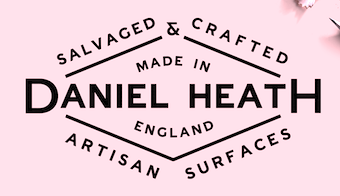 British graphic designer and sign painter who was at some point in Tallinn, Estonia. Graduate of the MATD program at the University of Reading, class of 2019.
British graphic designer and sign painter who was at some point in Tallinn, Estonia. Graduate of the MATD program at the University of Reading, class of 2019. Old German Baltic maps gave him the inspiration for the signage family Livo Display (2014). Other typefaces, all done in 2015: Imperija Roman (2015, an impressive Trajan typeface for posters and editorial use; Lewis explains: The original letters were drawn from a memorial engraving in Ljubljana, Slovenia), Trout Beer (display type), Andra Roman (a humanist sans based on a letter sample dated around 1920 found in the Estonian History Museum), Cream (an Italian western type based on an original wood type), Gauss (a pointy stencil type), Heath Egyptian (based on Caslon's Two-Line Egyptian: a custom type for London-based craftsman Daniel Heath), Poison, Titanik Tuleva, Hebden (a grotesque and incised pair inspired by the original signs at Hebden Bridge train station in Yorkshire). Typefaces from 2016: Fleischer Display, Bobik (a sans / slab / wedge serif triplet of fonts initially developed based on basic principles described in Jean Alessandrini's Codex 80), Cindie Mono (four monospaced fonts of widely varying widths), Cenotaph Titling (a free engraved titling typeface influenced by Eric Gill's inscriptions). Typefaces from 2017: Osselian Demi (lapidary), Borough Grotesk (free; updated to Pro in 2018), Tusker Grotesk (a headline grotesk in the tradition of Haettenschweiler, Impact and Helvetica Inserat; influences include Inland Type's Title Gothic No.8 and Stephenson Blake Elongated Sans No.1), Gardner Sans. Typefaces from 2018: Chicken Shop Gothic (a condensed grotesk published by Typeverything: partly inspired by Benguiat's 1968 sample book Psychedelitype and part-nod to the stretched tacky stick-on-vinyl lettering on the windows of late-night takeaways, Chicken Shop is a variable font with a super-size height axis), Zierde Grotesk (a take on early advertising, small-copy grotesks of the late 19th/early 20th century, and is largely inspired by Miller & Richard's own range of grotesques. The ornaments were inspired by J.G Schelter & Giesecke's 1913 type specimen book Die Zierde). Sortie Super (Italian stress Western font). During his studies at Ecole Estienne (Paris), Manuel de Lignières (Montpellier, France) published Waba (2018) with Lewis McGuffie. Inspired by woodblock types and art nouveau, Waba is a bit of love letter to Estonia, the Baltics and the visual history of Eastern Europe. The free variable font Waba Border (2018) was added by Lewis McGuffie. Find Waba at Typeverything. Typefaces from 2019: Cham (heavy, octagonal, based on fascia lettering from 1875 in Liverpool; released by Typeverything), Chicken Shop Gothic (a condensed poster sans, with a variable type option), Columba (a variable font done for his graduation at MATDi with Latin, Greek, Cyrillic & Hebrew coverage and optical size and weight axes; Grand Prize winner at Granshan 2019). Typefaces from 2020: Salford Sans (an 8-weight headline sans family; a collaboration between Lewis McGuffie (Latin, Greek, Cyrillic), Dave Williams of Manchester Type (Latin, Arabic) and Elsa Baussier (symbols)), Jooks Script (in the style of Kurrent and Sütterlin; reviving Walter Höhnisch's Werbeschrift), Auroc (a flared incised petite-serif), Cindie 2 (an extension of Cindie Mono, this family has 26 monospaced widths). Typefaces from 2021: Tekst (a Latin / Greek / Cyrillic font family based on Literaturnaya---a book type popular in the Soviet Union; it comprises ekst A (Analog for print), Tekst D (Digital for screen) and Tekst M (M for Mono)). Typefaces from 2022: Mushy (a soft-edged joining script display type with four substyles, Cheese, Butter, Yoghurt and Cream), Rulik (unicase, uncial), Narwa (a wonderful all caps poster typeface). Future Fonts link. Type Department link. [Google]
[MyFonts]
[More] ⦿
|
Lift Type
|
 French type foundry set up by Nicolas Aubert and Romain Oudin in Montpellier. Type designers include Romain Oudin, Aloïs Ancenay, Benoît Hody and Antoine Brun. They made the typeface Parade (2014-2015) in (sometimes textured) sub-styles called One, Two, Three, Four, Five, Hawaii, Leo, Poom, Snoop, Crac, Marble. Other typefaces: Vroum Bold (2015, free), Parade Leo (2015), Ace Lift (2017: but this seems to heve been designed by Aloïs Ancenay), Bouuuuuh Regular (2017: a free Halloween font by Romain Oudin), Gustavo (2019: a sans family by Romain Oudin), Bouuuuuh Revenge (2020), Kaliste (2020: a phantasmagoric typeface by Antoine Brun), Aerobik (2021, by Image Format).
French type foundry set up by Nicolas Aubert and Romain Oudin in Montpellier. Type designers include Romain Oudin, Aloïs Ancenay, Benoît Hody and Antoine Brun. They made the typeface Parade (2014-2015) in (sometimes textured) sub-styles called One, Two, Three, Four, Five, Hawaii, Leo, Poom, Snoop, Crac, Marble. Other typefaces: Vroum Bold (2015, free), Parade Leo (2015), Ace Lift (2017: but this seems to heve been designed by Aloïs Ancenay), Bouuuuuh Regular (2017: a free Halloween font by Romain Oudin), Gustavo (2019: a sans family by Romain Oudin), Bouuuuuh Revenge (2020), Kaliste (2020: a phantasmagoric typeface by Antoine Brun), Aerobik (2021, by Image Format). Corporate typefaces include From Dirt to Dust (2015: a hipster typeface), Mac Lyon (2016), Printemps de l'Art Conemporain Marseille (2017/2018: by Nicolas Aubert), Occitanie Films (2019), Tartuffo (2021, by Bouk Ra) and Troa Digital (2019). Typefaces from 2022: Sans Plomb (a sans family inspired by 1980's French roads). [Google]
[More] ⦿
|
Lineto
[Cornel Windlin]

|
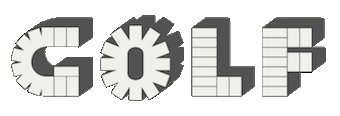 Since 1993, Swiss type designer Cornel Windlin (b. 1964, Küssnacht am Rigi) heads "lineto" in Zürich, with Stephan "Pronto" Mueller. Lineto is based in Zürich, Switzerland. The foundry has grown in size and influence and includes work by many type designers. Windlin himself made these typefaces:
Since 1993, Swiss type designer Cornel Windlin (b. 1964, Küssnacht am Rigi) heads "lineto" in Zürich, with Stephan "Pronto" Mueller. Lineto is based in Zürich, Switzerland. The foundry has grown in size and influence and includes work by many type designers. Windlin himself made these typefaces: - The old typewriter family FF Magda (1995) and its smooth versions, FF Magda Clean (1995) and FF Magda Clean Mono (1995). Noteworthy is the white-on-black FF Magda Cameo. See also Mono (2003, Lineto).
- Airport (FontFont).
- Dot Matrix (FontFont).
- Experimental typefaces: In FUSE 10, Windlin designed the symbol font Robotnik, and at FUSE 7, he made Mogadishu. He alsi created FUSE Classic 1.
- FF Watertower (1998-1999, stencil font).
- Screen Matrix (1995, with Stephan Mueller, FontFont).
- ThermoNuclear (1999).
- Mono-book (1998).
- Autoscape-Regular (1998).
- LL Alpha Headline (1997, based on the British license plates). This initial caps-only headline font in a Bold cut was redrawn and extended to a full character set in 2002, also adding an italic style, and additional Regular and Italic weights. The resulting fonts as exclusively licensed as corporate typeface for Mitsubishi Motors across Europe between 2002 and 2012. Since then, Alpha Headline was extended to Cyrillic, and two Stencil cuts were introduced. A new, revised and entirely redrawn version of Alpha Headline will be published by Lineto in 2019.
- LL Lutz Headline (1997, derived from the lettering on British license plates).
- Luggage Tag.
- LL Gravur Condensed (1999, with Gilles Gavillet). This initial version of LL Gravur Condensed has been replaced by an entirely redrawn version, with additional Italic cuts (2010–2012, in collaboration with Radek Sidun).
- Cobra: a phenomenal geometric font combining ideas of kitchen tile and stencil fonts, made in 1996.
- FF Moonbase Alpha (1991, part of FUSE 3).
- With Gilles Gavillet, dated 1999: Pixel Crude, Pixel World, Vectrex (1999), Vectrex World (skyline dingbats), Liquid Crystal (1999), Supermax (1999). Pixel World and Vectrex World are free.
- VFutura (2004). Used as a corporate typeface by, e.g., Vitra Internatonal AG.
FontFont write-up. Fonts by designers. The Lineto collection has many beautiful trend-setting digital-look typewriter typefaces. From other designers: - Stephan Mueller: Regular (typewriter family), Valentine (typewriter family), Aveugle (Braille font, 1995), Parking, FF Gateway (1997), Grid (1996), Paragon, Batarde Coulee, Shuttle, FE Mittelschrift and FE Engschrift (1997), 104 (nice geometric font), FF Chernobyl (1998, from stenciled letters on the Chernobyl plant), FF Container, Bitmap-Condensed and Bitmap-Regular (1998), Office (Eurostile-like monospace, 1999).
- Norm: Normetica (1999, now retired), Prima (1999, now retired), LL Simple (1999-2000), LL Replica and LL Replica Mono (2008), LL Riforma (2012-2017).
- James Goggin, Rafael Koch, Mauro Paolozzi, Alex Rich and Arve Båtevik: LL Prismaset (2003-2014).
- Elektrosmog/Pierre Miedinger: LL Storno (1999, an interpretation of the numerals of an old Sharp cash register; by Marco Walser & Valentin Hindermann), LL Brauer. Brauer was Marco Walser's digital revival of Pierre Miedinger's original design for a mid-1970s corporate typeface for the Zurich-based Hürlimann brewery. This was later developed into the six weights of LL Brauer Neue (1999-2006) by Marco Walser and Philippe Desarzens, and has since been extended further (publication pending, scheduled for early 2019). The copyright for LL Brauer Neue is held by Lineto, the author's rights are held by Marco Walser/Elektrosmog.
- Marco Walser and Philippe Desarzens: Le Corbusier Oldface (2004).
- Nico Schweizer: Albroni (1992), Hoboken-High (1998, a US sports jersey font), LeCorbusier (great stencil font, 1999), Le Corbusier Condensed (1999), Typ1451 (1999, sans family), Gigaflop (1999), Ultrateens (1999).
- Martha Stutteregger: Number Two (1996), Lord (1996).
- Jonas Williamsson: Biff (1999).
- Urs and Juerg Lehni and Rafael Koch: Lego (1999).
- Laurent Benner: Pez (1999), renamed Tablettenschrift.
- Hansjakob Fehr: Deadtype (dingbats consisting of metal parts of a typewriter, 1999).
- Masahiko Nakamura: Terminal One (1999).
- James Goggin: Courier Sans (2001).
- Laurenz Brunner: LL Akkurat and LL Akkurat Mono (2004), LL Circular (2011), LL Bradford and LL Bradford Mono (2018).
- Aurèle Sack: LL Purple (2006, together with NORM), LL Brown (2011), LL Grey (2004-2016).
- Christian Mengelt/Team77: LL Unica77 (2012-2014).
- Kobi Benezri: LL Lettera (2008), LL Lettera Text (2012).
- Robert Huber: LL Moderne (2017).
- Nazareno Crea: LL Gulliver (2008-2018), renamed LL Catalogue in 2019.
[Google]
[MyFonts]
[More] ⦿
|
Linus Vuorio
|
Helsinki-based art director and graphic designer. He created a few typefaces, probably on commission. [Google]
[More] ⦿
|
Lisa Fischbach

|
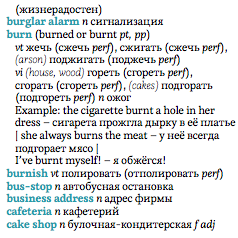 Lisa Fischbach (Kiel, Germany) studied at the Muthesius Academy of Fine Arts and Design in Kiel. She graduated from the MATD program at the University of Reading in 2014. Her graduation typeface there was called Kaius. Kaius has a complex typographic structure. Designed for small print, it features a large x-height. Kaius covers Latin, Gujarati, Greek, Cyrillic and IPA. In 2020, she released Kaius Pro in 16 styles at TypeMates.
Lisa Fischbach (Kiel, Germany) studied at the Muthesius Academy of Fine Arts and Design in Kiel. She graduated from the MATD program at the University of Reading in 2014. Her graduation typeface there was called Kaius. Kaius has a complex typographic structure. Designed for small print, it features a large x-height. Kaius covers Latin, Gujarati, Greek, Cyrillic and IPA. In 2020, she released Kaius Pro in 16 styles at TypeMates. In 2016, Jakob Runge and Lisa Fischbach co-designed the bespoke sans typeface family SAM Text and SAM Headline at TypeMates for the food company S:A:M. In 2017, she joined Jakob Runge once again for Cera Round Pro, an absolutely wonderful geometric rounded sans typeface family for Latin, Greek and Cyrillic. Jakob Runge, with the help of Lisa Fischbach, designed Harrison Serif Pro (a slab serif) in 2017 at Typemates. Harrison serif won an award at TDC Typeface Design 2018. In 2019, Jakob Runge, Nils Thomsen and Lisa Fischbach released Halvar and wrote: Halvar, a German engineered type system that extends to extremes. With bulky proportions and constructed forms, Halvar is a pragmatic grotesk with the raw charm of an engineer. A type system ready to explore, Halvar has 81 styles, wide to condensed, hairline to black, roman to oblique and then to superslanted, structured into three subfamilies: the wide Breitschrift, regular Mittelschrift and condensed Engschrift. Halvar Stencil, which was released simultaneously, is a German engineering stencil font family. [Google]
[MyFonts]
[More] ⦿
|
Little White Lies
|
Creative director in London, who created the bespoke typeface Kino Veritas in 2012. Behance link. [Google]
[More] ⦿
|
Lizette Hechavarria Pilia
|
Graphic designer in Miami, FL, who created the free 3-weight sans typeface family Cicero Sans in 2012 together with Ernesto Anton Peña. Cicero was custom designed for the identity of The Higher Institute of Design (ISDI), which is the only institution of higher education in Cuba dedicated to the training of professionals in the fields of Graphic Design, Industrial Design and Fashion Design. [Google]
[More] ⦿
|
Lorenzo Ballarini
|
In 2017, Stefano Torregrossa and Lorenzo Ballarini (Verona, Italy) co-designed the custom sans typeface Salvagnini for the sheet metal company by that name. [Google]
[More] ⦿
|
Loyalkaspar
|
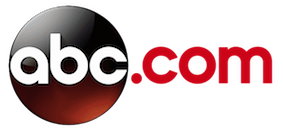 New York City-based design agency (est. 2003) specializing in commissioned fonts and brand design. Their custom typefaces include
New York City-based design agency (est. 2003) specializing in commissioned fonts and brand design. Their custom typefaces include - ABC Modern (for ABC News).
- Aeronaut (sci-fi).
- CTV Sans and CTV Serif (2020). For the CTV television station in Canada.
- Comedy Sans (for Comedy Central).
- Impacta LK (for ESPN).
- Karma. A sans for in-house use.
- Proxy Mono (for Promax). A techno sans developed together with Type Network.
- SYFY Hero (an octagonal typeface; for NBC Universal).
- Solis (2020, for Accuweather in 2019; type design by Laura Meseguer).
- USA (for USA Network).
[Google]
[More] ⦿
|
Luana D'Amico
|
Lausanne, Switzerland-based designer of the extended display sans typeface Icar (2016) for Icar Magazine. Behance link. [Google]
[More] ⦿
|
Lucas de Groot
[Floris]
|
[More] ⦿
|
Lucas Descroix
[Bonjour Monde]
|
 [More] ⦿
[More] ⦿
|
Lucas Gini
|
 Type and graphic designer in Sao Paulo. His typefaces include Arcadum (2018: pixel-based) and Ficus (2017), a typeface family whose shapes are like those of the Figueira Mata-Pau tree in the Brazilian Pantanal.
Type and graphic designer in Sao Paulo. His typefaces include Arcadum (2018: pixel-based) and Ficus (2017), a typeface family whose shapes are like those of the Figueira Mata-Pau tree in the Brazilian Pantanal. In 2020, he co-designed the vernacular script typeface Cada Dia Sadia with Crystian Cruz for a refrigerated food company in Brazil. Other typefaces from 2020 include the vernacular Chef Aprendiz and the free variable rectangular cutout typeface Unbox. [Google]
[More] ⦿
|
Luciano Perondi
[Molotro]

|
 [MyFonts]
[More] ⦿
[MyFonts]
[More] ⦿
|
Ludovic Balland
|
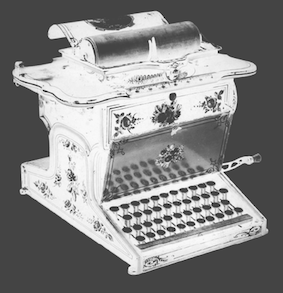 Swiss typographer and graphic designer, b. Geneva, who creates new typefaces out of old ones. He graduated from the Basel School of Design, and set up Ludovic Balland Typography Cabinet in Basel in 2006. Since 2003, he has been teaching at ECAL in Lausanne. Ludovic Balland created some retail typefaces as well as many corporate typeface families. His typefaces include:
Swiss typographer and graphic designer, b. Geneva, who creates new typefaces out of old ones. He graduated from the Basel School of Design, and set up Ludovic Balland Typography Cabinet in Basel in 2006. Since 2003, he has been teaching at ECAL in Lausanne. Ludovic Balland created some retail typefaces as well as many corporate typeface families. His typefaces include: - Zoo Basel (1998): a bespoke sans titling typeface to accompany Trade Gothic.
- Jury Monospace (2002). A typewriter font.
- Theater Basel (2012, with Yoann Minet). A wedge-serifed typeface with exaggerated ink traps.
- Stanley (2012, with Yoann Minet): Inspired by New Times Roman, this retail typeface with straight brackets can be licensed from Optimo.
- Fifth Berlin Biennal. A physical (3d, real) frivolous corporate typeface.
- Swiss Art awards (2012). A bespoke typeface done with Yoann Minet.
- Next (2017, Optimo). A great sans typeface family initiated in 2007 for the visual communication of the Museum of Modern Art in Warsaw, inspired by the traffic sign typeface Drogowska designed by Marek Sigmund in 1975 for the Ministry of Transportation in Poland. A sans family in 22 styles, including Text, Poster and Mono subfamilies.
[Google]
[More] ⦿
|
Ludvig Bruneau Rossow
[Bureau Bruneau]
|
[More] ⦿
|
Luis Vicente Hernandez
|
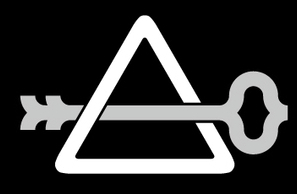 Luis Vicente Hernandez (Dos Decadatres, or DDCT) is a Spanish designer in Madrid who created the free pixelish typeface Houndstooth in 2007 for Neo2, a Spanish magazine. His typefaces include Anchor Deco (2009), Caponata (2009, elegant display face), Maxima (2009), Aguadulce (2009), Super League Font (2010), Minima, Absurda, Houndstooth, Unga Unga (primitive counterless comic book face), Perruna, DDCT Abstrusa (2009), Black Diamonz (2009, rhombic), Bouncing Wisdom (2010, a face in the style of Rennie Mackintosh), Boaz (2010, a display headline face for Go Skateboarding Mag), Farewell (2011), Averis (2011, an art deco display face).
Luis Vicente Hernandez (Dos Decadatres, or DDCT) is a Spanish designer in Madrid who created the free pixelish typeface Houndstooth in 2007 for Neo2, a Spanish magazine. His typefaces include Anchor Deco (2009), Caponata (2009, elegant display face), Maxima (2009), Aguadulce (2009), Super League Font (2010), Minima, Absurda, Houndstooth, Unga Unga (primitive counterless comic book face), Perruna, DDCT Abstrusa (2009), Black Diamonz (2009, rhombic), Bouncing Wisdom (2010, a face in the style of Rennie Mackintosh), Boaz (2010, a display headline face for Go Skateboarding Mag), Farewell (2011), Averis (2011, an art deco display face). In 2012, he created the tall piano key typeface Buho. Typefaces from 2013 include OOG. Typefaces done between 2013 and 2017 include Hoot (used in the Tao Te Ching book). Bespoke typefaces: Suanzesburg (for TheCube), Sphere (for Henry Blake). HypeForType link. Behance link. [Google]
[More] ⦿
|
Lukas Schneider
[Revolver Type Foundry]

|
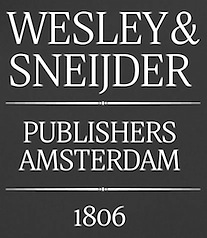 [MyFonts]
[More] ⦿
[MyFonts]
[More] ⦿
|
Luke Prowse
[NaN]

|
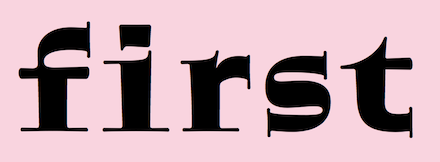 [MyFonts]
[More] ⦿
[MyFonts]
[More] ⦿
|
Luvburn
[Pedro Julien]
|
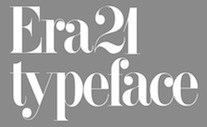 Graphic design studio in Geneve, Switzerland, founded by Pedro Julien and Gabriel Comym. Typefaces created by them include Era 21 (2013: a fashion mag high-contrast didone), Quantum (2013: futuristic liquid typeface), She Is Typo (2012: another fashion mag display typeface), Vani (2012).
Graphic design studio in Geneve, Switzerland, founded by Pedro Julien and Gabriel Comym. Typefaces created by them include Era 21 (2013: a fashion mag high-contrast didone), Quantum (2013: futuristic liquid typeface), She Is Typo (2012: another fashion mag display typeface), Vani (2012). Behance link. [Google]
[More] ⦿
|
Lux Typographics (was: Intersection Studio)
[Greg Lindy]

|
 Lux Typographics (Los Angeles, CA) was established in 1996 by Greg Lindy and Michael Rey. It is mainly involved in custom typography. Greg Lindy is the sole type designer for Lux Typographics and is a founding member, along with Michael Rey, of Intersection Studio in Venice, CA. Greg Lindy is the founder and creative director of Lux Typographic + Design, which he launched in 2009. Greg lives and works in Los Angeles, and teaches type design at The Otis College of Art and Design.
Lux Typographics (Los Angeles, CA) was established in 1996 by Greg Lindy and Michael Rey. It is mainly involved in custom typography. Greg Lindy is the sole type designer for Lux Typographics and is a founding member, along with Michael Rey, of Intersection Studio in Venice, CA. Greg Lindy is the founder and creative director of Lux Typographic + Design, which he launched in 2009. Greg lives and works in Los Angeles, and teaches type design at The Otis College of Art and Design. Typefaces, first available via Thirstype, include Lux Sans (2003), Section (2003, a sans family), Omega (a connected display face), Crank8 (2005, with Henk Elenga, as seen in Esquire Magazine; designed specifically as the font for Elenga's retrospective show and catalog), Autoknit (knitting font), Carinho (for Johnson & Johnson), Forge (for an Alaskan seafood company), SH Grotesk (for Simply Hired), Splenda, GDT Gothic (for the identity of the film The Girl with the Dragon Tattoo), Gustan (+Gustan Display, Gustan Densa, Gustan Forma and Gustan Signa), Resource Grotesk (for Resource Decor), and Nova (2003). Lux Typographics joined the type coop Village in 2005. In 2012, Lindy published the rounded sans family Colette. In 2016, Monica Maccaux and Greg Lindy joined forces for the creation of the cursive school script font ABC Mouse Cursive. Still in 2016, he designed the sans typeface family Fabriga with exclusively horizontal and vertical terminals. Typefaces from 2017: Cahuenga. Klingspor link. Village link. Defunct Thirstype URL. [Google]
[MyFonts]
[More] ⦿
|
Mário Feliciano
[Feliciano Type Foundry]

|
[MyFonts]
[More] ⦿
|
Mac Rhino Fonts (MRF)
[Stefan Hattenbach]

|
 Stefan Hattenbach (b. Stockholm, 1961) is an art director and graphic designer specializing in type and logo solutions. He lives in Stockholm, and has been creating typefaces since 1997. He describes himself as an espresso-fueled art director and graphic designer specializing in type and logo solutions. In 2003, he established Mac Rhino Fonts. His clients included Greenpeace, Amnesty International, Telia, and Hennes&Mauritz. Some of his early typefaces were at Nakedface (now extinct).
Stefan Hattenbach (b. Stockholm, 1961) is an art director and graphic designer specializing in type and logo solutions. He lives in Stockholm, and has been creating typefaces since 1997. He describes himself as an espresso-fueled art director and graphic designer specializing in type and logo solutions. In 2003, he established Mac Rhino Fonts. His clients included Greenpeace, Amnesty International, Telia, and Hennes&Mauritz. Some of his early typefaces were at Nakedface (now extinct). His typefaces: - Abnormal Regular/Italic.
- Anziano (2006, Fountain). A wonderful and flowing text family influenced by Weiss (1926). See also Anziano Pro (2021).
- Brasserie (2007). Has hints of Peignot.
- Carte Normal.
- Delicato (2004-2005, Fountain). This was inspired by Jeremy Tankard's Enigma and Petr van Blokland's Proforma. See also Delicato Pro (2021).
- Euroglory (2009, Fountain). A smooth rounded sans family.
- Expansion (2009). A display sans.
- At GarageFonts:
- Hattrick.
- New Global. This is also at Umbrella Type/Veer.
- Stylish.
- Hangover.
- Kerning (2001).
- Montessori Script (2001). Free at Phil's.
- Pomodoro
- Speed Freak (2002).
- Global (at T-26).
- Graficz (1999-2001, PsyOps). An art deco typeface based on a Polish magazine cover from 1930 by I. Rubin.
- Islamabad (at PsyOps).
- Luminance (2002, PsyOps). An interpretation of Pracht, made in 1941-1943 by Carl Pracht.
- Lunda Modern (1998, PsyOps). After an original from 1938-1942 by Karl-Erik Forsberg called Lunda.
- Ommegaand (2007, Fountain). A stylish serif based on a 1920s Dutch poster.
- Oxtail (1998-2000, PsyOps). Starting out from an Egyptienne, Hattenbach created an upright cursive typeface.
- Polyester (PsyOps).
- Remontoire (1998, PsyOps). Based on one of the first typefaces drawn by Karl-Erik Forsberg.
- Replay (2010). Hattenbach's homage to Caslon. Followed in 2021 Replay Pro.
- Sophisto (2003, PsyOps). A 21-weight monolinear sans family.
- Stalemate (2002-2008). A workhorse sans family first made as a custom type for a German IT company. Released by Garage Fonts in 2002, and then Fountain in 2004, and expanded in 2007-2008. Now available as Stalemate Pro (2021).
- Tarocco (2000, PsyOps). A serif family based on Friedrich Bauer's 1906 face, Nordisk Antiqua.
Custom typefaces: Absolut Headline and Script (2008; for Absolut Vodka), Cancerfonden (2018, with Söderhavet), DFDS (sans and serif), Djurgårdens IF (2017: DIF Display, by Kurppa Hosk and Stefan Hattenbach is an octagonal soccer shirt typeface), Dometic Icons (2016), Exotic Snacks (grunge face), Filmstaden (2015-2017, a sans done with Söderhavet), Halebop (2017: octagonal, +Arabic), H&M Script, Hästens (a delicate serif family), Jernhusen (2017, done with Söderhavet), Resurs Bank (2018, done with Söderhavet), SJ (2015), Skanska (2016, done with Söderhavet: Skanska Sans), Skrapan Sans (2006-2007), So-Type (2017-2018, done with Söderhavet: So Ray, So Sargo and So Wrasse), Svenska Arkitekter (2016: the stencil typeface SA Display; done with Ramiro Oblitas), Svenska Dagbladet (2006, a cooperation of Macrhino described as follows: Svenska Dagbladet (SvD) needed a specific headline font for their business section, and ordered a custom typeface from Typecraft and Pangea design, which had both been involved in previous redesigns of the newspaper. The objective was to design something that had a distinctive and unique character, but that would also interact well with their existing grotesque typefaces. Mac Rhino Fonts was then commissioned by Pangea design to do the basic typeface design, and then developed the final design together with Orjan Nordling at Pangea. Mark Winelid at Typecraft then took the font through the final production stages by making detail adjustments as requested by SvD, technical optimization of outlines, kerning and OpenType formatting.), Swedbank (2016: Swedbank Headline), Sweden Sans (2013-2014, with Stockholm design agency Söderhavet:. this nationalistic typeface was commissioned by the Swedish government), Tallink (2017: Tallink Script), Thomas Cook (2013-2016: Thomas Headline and Thomas Script), TV4 (2016: Quattro Sans, developed together with Bold Scandinavia), Urban Escape (2017, UE Display was done for AMF Fastigheter), WAD (2018: Dwiggins Script, which was developed together with Glenn Sjökvist for Antikvariat Morris). Free typefaces: Hattrick Smal Caps, Kerning Unicase, Montessori Script, Stylish Small Caps. Scheduled type: Beef, Fontanino, Hangover, Pomodoro, Republicana. MyFonts interview. Interview. Bio at Garagefonts. Presence at PsyOps. I Love Typography link. FontShop link. View Stefan Hattenbach's typefaces. [Google]
[MyFonts]
[More] ⦿
|
Maciej Majchrzak
|
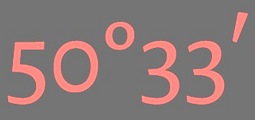 Wroclaw, Poland-based designer of these typefaces in or just before 2016:
Wroclaw, Poland-based designer of these typefaces in or just before 2016: - Rainbow. A rounded sans typeface commissioned by PBD (pbd.pl) for their client Rainbow Tours S.A. (r.pl), the leading tour operator in Poland.
- Slownik. MA diploma project text typeface done at the University of Arts in Poznan.
- Sigma. BA project text typeface done at the University of Arts in Poznan.
[Google]
[More] ⦿
|
Macizo.com (or: Macizotype)
[Leonardo Vázquez Conde]

|
Leonardo Vázquez is a graphic and type designer in Mexico City. After finishing his studies in Mexico City, Leonardo worked in several design studios and advertising agencies. In 1998 he settled in France where he studied at Atelier National en Recherche Tipographique in Nancy. Leonardo returned to Mexico in 2001, where he works in his own studio, Macizotype. His typefaces include: - Bunker (2005). A monolithic display face, which won an award at the TDC2 2005 type competition. It uses the rounded stone features found in Aztec sculptures and designs. >LI>Señal Mexico (2000). A Mexican highway signage typeface, with four styles called Rural, Nacional, Mediana and Asfalto. See also here. He writes that this was his first typeface and that it was conceived at Atelier National en Recherche Tipographique.
- Proteo (2005). A sans typeface.
- Lectura (2007). A text family in Regular, Negro and Versalitas styles designed for the Artes de Mexico Publishing House in Mexico City.
- Libre.
- In 2016, he made a custom typeface for the magazine Algarabia, together with Victoria Garcia Jolly. That typeface was further developed and published as a retail typeface in 2020 as Algarabia and Algarabia Seccion (with Luna Kindler).
Speaker at TypeCon 2007 and at ATypI 2009 in Mexico City and at ATypI 2013 in Amsterdam, where he introduces his Mayan transcription font Mayathan, and talks about the importance of designing typefaces for oral languages as a way of spreading their culture. [Google]
[MyFonts]
[More] ⦿
|
Mads Quistgaard
[PLEKS]
|
[More] ⦿
|
Magnus Holder Bjørk
|
Norwegian designer of the avant garde sans family Daco (2004) sold by Luth. He was also commissioned to make Aenigma, a techno face. Identifont says: Magnus Holder Bjørk is a freshly educated designer now working in Trondheim, Norway. While at a design school in Australia he started developing an Art Deco font family, and with the helping hand of FontShop Norway his Daco font family was prepared for sale. [Google]
[More] ⦿
|
Mahdi Ershadi
|
Qom, Iran-based graphic, logo and type designer. He created these custom typefaces together with Reza Bakhtiarifard: - Ayendeh Bank Typeface (2020).
- Alibaba Travels Co Typeface (2021).
[Google]
[More] ⦿
|
Maikel Morais
[Hamo Design]
|
[More] ⦿
|
Makoto Kamimura
[Kamimura & Co. (was: Studio Antwork, or: Detail Type Foundry)]
|
[More] ⦿
|
Malcolm Wooden
[DTP Types Limited]

|
[MyFonts]
[More] ⦿
|
Mallory Heyer
|
Graphic designer in Minneapolis. For MTV, Mallory made the custom typeface Nutura (2012). [Google]
[More] ⦿
|
Malou Verlomme
|
 French type designer who graduated from l'Ecole Duperré in Paris and the University of Reading (2005). He cofounded the type foundry LongType in 2012. Since 2016 he works for Monotype UK. His typeface Ficus (2005) won an award in the Creative Review Type Competition 2005.
French type designer who graduated from l'Ecole Duperré in Paris and the University of Reading (2005). He cofounded the type foundry LongType in 2012. Since 2016 he works for Monotype UK. His typeface Ficus (2005) won an award in the Creative Review Type Competition 2005. He wrote Technological Shifts in Type Design and Production (2006). His typefaces: Respublika (2013, a humanist sans done with Gregori Vincens, Fontyou), Camille (2010-2011, for Camille Muller), ECAM (2009-2010, for the ECAM theater), Dijon (2011, for the identity of Dijon's Opera house), Arbre (2010, for the identity of the coffee brand L'Arbre de Cafe), Totem, Ficus (2005-2006), Syneas (2009, for Syneas), Digitaline (2007, a Futura-like family done for Agence Digitaline), Vingt-huit (2007), Sabasi (2008), Gem (2007, art nouveau), Oops (2006). Marion Andrews, Malou Verlomme and Laurence Bedoin collaborated on the school fonts Écriture A and Écriture B which are presented in Modèles d'écriture scolaire (2013), a document issued by the French Ministry of Education. These fonts are available from Eduscol. Verlomme set up Long Type in 2012 with Mathieu Chévara, Mathieu Reguer and Thomas L'Excellent. In 2016, for Monotype, on commission for the Transport For London company, he redesigned / tweaked New Johnston, called Johnston100. It will be used in TfL's trains and station signage including for London's new Crossrail Elizabeth line that is scheduled to open in 2018. In 2018, he published the geometric sans typeface family Madera and the revival typeface Placard Next (based on an old Monotype condensed poster typeface) at Monotype. In 2019, he released the 12-style high-contrast Ariata (Text, Display, Stencil) at Monotype. In 2020, he published the superfamily Macklin (Sans, Display, Text, Slab) at Monotype. Influenced by early 19th century designs in Europe, and especially by the work of Vincent Figgins, it is intended for use in headlines and short blocks of text. Variable fonts are also available. Co-designer, with Clement Charbonnier Bouet, of Ionic No 5 (2021), a ten-style Clarendon that revives and refreshes a classic Linotype Clarendon-style serif for Monotype. Noteworthy is that the designers replaced Clarendon's ball terminals by 21st century serifs, even including the hipsterish coathanger f. The ball terminals are relegated to the "alternates". In 2021, he took part in the development of Helvetica Now Variable (Monotype). Helvetica Now Variable was designed by Max Miedinger, Charles Nix, Monotype Studio, Friedrich Althausen, Malou Verlomme, Jan Hendrik Weber and Emilios Theofanous and published by Monotype. Monotype writes: Helvetica Now Variable gives you over a million new Helvetica styles in one state-of-the-art font file (over two-and-a-half million with italics!). Use it as an extension of the Helvetica Now family or make custom-blends from its weights (Hairline to ExtraBlack), optical sizes (four point to infinity), and new Compressed and Condensed widths. It contains 144 static styles. In 2022, he released Boucan (a variable all caps font that can be animated to react to sounds and music). Typecache link. Speaker at ATypI 2017 Montreal. [Google]
[More] ⦿
|
MAN
|
In their Global Type collection, URW++ has MAN (2012), a private corporate typeface family for the MAN company. There is a limited retail version for the volume at 7,500 Euros. It covers Turkish, Baltic, Romanian, Cyrillic, Greek, Chinese Simplified, Chinese Traditional, Japanese, Korean, Thai, Vietnamese, Arabic, and Hebrew. [Google]
[More] ⦿
|
Manchester Type
[David Williams]

|
 Manchester Type (Manchester, UK) specializes in custom typeface design, font development and typographic consultancy. The business was set up by David Williams, a typeface designer and graphic designer from the city of Manchester. David holds a BA (Hons) Graphic Design from The University of Salford and an MA in Typeface Design from The University of Reading, class of 2019. His typefaces:
Manchester Type (Manchester, UK) specializes in custom typeface design, font development and typographic consultancy. The business was set up by David Williams, a typeface designer and graphic designer from the city of Manchester. David holds a BA (Hons) Graphic Design from The University of Salford and an MA in Typeface Design from The University of Reading, class of 2019. His typefaces: - David's graduation typefaces in Reading were Firnas Sans (2019) and Mansa (2019). Mansa is a medium contrast serif typeface in the scotch roman genre. Firnas Sans and Mansa both cover Latin and Arabic (Naskh), with Mansa following the Diwani style and Firnas Sans the Ruqah style.
- Salford Sans (2020). An 8-weight headline sans family developed in collaboration Lewis Guffie (Latin, Greek, Cyrillic) and Elsa Baussier (symbols). Dave Williams did the Latin and Arabic parts.
- Manchester Type has supported Google in their development of multi-script, non-Latin variable fonts including Noto Kufi Arabic, Noto Naskh Arabic, Noto Sans Sora Sompeng, Noto Sans Tai Tham and Noto Sans Balinese for the Google Fonts library.
[Google]
[MyFonts]
[More] ⦿
|
Manuel Schibli
[Studio Manuel Schibli]
|
[More] ⦿
|
Maous Studio
[Anton Moglia]
|
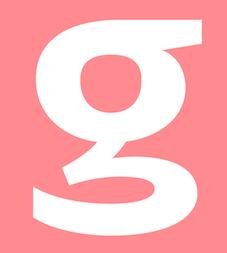 Graphic and type designer in Paris and Marseille, France, who was born in Marseille. He created the free experimental typeface Coupeur Bricoleur (Up, Down) in 2014. In 2017, he published the free sans typeface Garcia, which he started in 2016. Open Font Library link. Github link.
Graphic and type designer in Paris and Marseille, France, who was born in Marseille. He created the free experimental typeface Coupeur Bricoleur (Up, Down) in 2014. In 2017, he published the free sans typeface Garcia, which he started in 2016. Open Font Library link. Github link. In 2016, Anton Moglia joined Velvetyne. In 2019, Anton Moglia and Jérémy Landes co-designed the intestinal typeface Pilowlava (at Velvetyne), a free font that was originally a custom font for the last issue of Cercle Magazine. In 2012, Anton Moglia joined Ariel Martin Perez's Gulax (2013, Morgan Gilbert). Custom typefaces: La Clef (2021), Pompette (2021, for a restaurant), Equinoxe. Other typefaces: Valorama. [Google]
[More] ⦿
|
Marc GS
|
 Barcelona-based designer who made the rounded sans typeface familia on commission for Caixa Forum. [Google]
[More] ⦿
Barcelona-based designer who made the rounded sans typeface familia on commission for Caixa Forum. [Google]
[More] ⦿
|
Marc Kappeler
[Moiré]
|
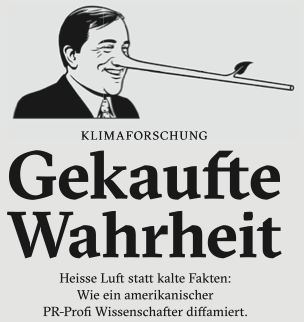 [More] ⦿
[More] ⦿
|
Marc Salinas
|
Marc Salinas (We Traphic, Barcelona) designed the commissioned bilined Wooky (2016), the brushed corporate typeface Hornimans (2016), the corporate athletic lettering typeface Dani Comas (2016). [Google]
[More] ⦿
|
Marcelo Leme
[LESTE]
|
[More] ⦿
|
Marco Campardo
[Tankboys]
|
[More] ⦿
|
Marco Fornasier
|
Italian designer Marco Fornasier studied at Universita IUAV di Venezia (2008) and became a professor at IUAV San Marino University in 2010. He set up branding and design studio Huge in Padua in 2007. He writes about type and typography in articles such as these: Max Bill is not a type designer, Scrivee con la macchina: prologo, Scrivere con la macchina: como funziona and Scrivere con la macchina: scenari. Linkedin link. [Google]
[More] ⦿
|
Marco Molteni
[Jekyll&Hyde]
|
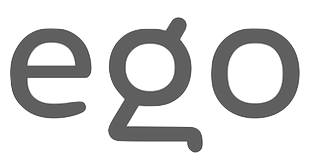 [More] ⦿
[More] ⦿
|
Marginal Type
[Vincent Lacombe]
|
Graduate of Atelier National de Recherche Typographique in Nancy, France, class of 2020. His graduation thesis was entitled Les caract®rave;res gothiques russes [Cyrillic blackletter typefaces]. During earlier graphic design studies at ECV Bordeaux (2012-2017), he created the display typeface Astek (2015) and the circle-based experimental typeface Ecotype (2016). Now located in the Bordeaux area, he is doing some corporate graphic and type design for the local wine industry. In the context of his ANRT thesis, he designed a Latin / Cyrillic blackletter, Tamara Gothic (2018-2020) and a Latin / Cyrillic copperplate script, Sokolov 1821 (2018-2020). In 2020, he also designed the Scotch Roman typeface Album, and revived a Cyrillic didone by Moscow's S. Selivanovsky foundry (done between 1826 and 1834) as a font simply called Selivanovski (2020). [Google]
[More] ⦿
|
Maria Doreuli
[Contrast Type Foundry (or: CoFo)]
|
 [More] ⦿
[More] ⦿
|
Maria Hammerstrøm
|
Graphic designer in Oslo, b. 1987. Creator of the avant garde sans family Universe (2009). In 2013, she published the geometric custom typeface Huxley and created the identity typeface for Kunsthall Oslo. Underfundig is her studio in Norway. Behance link. [Google]
[More] ⦿
|
Marianna Orsho
[Marijana Orsolic]

|
Marianna Orsho (or Marijana Orsolic) is an Australian / Serbian graphic and type designer, b. 1987. Classically trained as a graphic artist, she completed her Masters Degree in Type Design and 2D Animation at the University of Arts in Belgrade in 2011. She settled in London where she specializes in typography, branding, and illustration. She has created work for clients like the Spice Girls, Disneyland Paris, MTV, Indeed, and The Ghost Bus Tours. During TypeClinic 5 in 2012 in Trenta, Slovenia, she created the multiple master humanist sans typeface family Nioki and Nioki Italic, both for Latin and Cyrillic. Free download. Other typefaces by her include Albi (2010) and Eta (2011). While temporarily located in Sydney, Australia, she created Kamilitza (2014, a layered, condensed, all-caps cross stitch display typeface) and Globster (2014, a Treefrog-style typeface for Latin and Cyrillic). In 2019, she collaborated with Studio Moross to design the new Spice Girls typeface as part of the branding for the UK and Ireland Spice World tour. The font was used in the animated show visuals, on the Spice Girls merchandise and is still in use for promotional and marketing material across all social media channels. In 2020, she released the 30-style layered, condensed, all-caps cross stitch display type family Litza as an extension of her 2014 family, Kamiltza. Tipometar link. Behance link. [Google]
[MyFonts]
[More] ⦿
|
Marijana Orsolic
[Marianna Orsho]

|
[MyFonts]
[More] ⦿
|
Marina Martins Chaccur
|
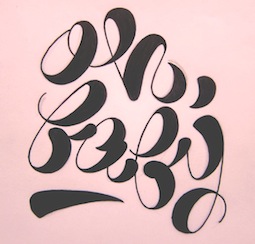 Marina is a Brazilian graphic designer and teacher, who graduated from Fundação Armando Alvares Penteado FAAP. She has an MA from the London College of Communication. In 2011, she obtained a Masters in the type and media program at KABK, Den Haag. She was a designer and college tutor in Sao Paulo, Brazil, but now lives in Den Haag, The Netherlands.
Marina is a Brazilian graphic designer and teacher, who graduated from Fundação Armando Alvares Penteado FAAP. She has an MA from the London College of Communication. In 2011, she obtained a Masters in the type and media program at KABK, Den Haag. She was a designer and college tutor in Sao Paulo, Brazil, but now lives in Den Haag, The Netherlands. She spoke at ATypI in Lisbon on vernacular Brazilian type and the current state of Brazilian type design. On her site we can find some sketchbooks, and a proposal for a blackletter face, among many other type-related goodies. At KABK, she designed the type system Chic (2011). This family includes fashion mag styles from a roman sans to curly caps and a "chic" didone. In 2013, she created the beveled caps typeface O Melhor de Sao Paulo, which is based in part on Jackson Cavanaugh's Alright Sans Ultra. In 2014, Crystian Cruz and Marina Chaccur co-designed the sans custom typeface UOL for the Brazilian internet provider. Behance link. [Google]
[More] ⦿
|
Måns Grebäck
[Aring Typeface]

|
 [MyFonts]
[More] ⦿
[MyFonts]
[More] ⦿
|
Marion Bisserier
|
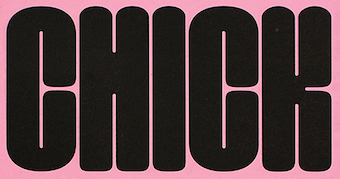 London-based graphic and type designer who graduated from the London College of Communication, but is French and grew up in Amsterdam. In 2020, she released the Good Girl typeface. She writes: Good Girl addresses the issue of female visibility within the field by exploring the occupation of space both in typographic form and political expression. Her presentation is unapologetic and uses demeaning phrases such as darlin, bimbo, gold digger, damsel in distress, and sugar babe.
London-based graphic and type designer who graduated from the London College of Communication, but is French and grew up in Amsterdam. In 2020, she released the Good Girl typeface. She writes: Good Girl addresses the issue of female visibility within the field by exploring the occupation of space both in typographic form and political expression. Her presentation is unapologetic and uses demeaning phrases such as darlin, bimbo, gold digger, damsel in distress, and sugar babe. In 2020, she designed the branding typeface Type 01 Regular for the Type 01 web site. Type Department link. [Google]
[More] ⦿
|
Mark Caneso
[ps type (was: ppwrkstudio)]
|
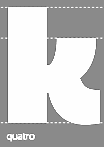 [More] ⦿
[More] ⦿
|
Mark Niemeijer
[Soft Machine (or: Open Studio)]
|
[More] ⦿
|
Mark Tamagnini
[UP Comunicazione]
|
[More] ⦿
|
Mark van Bronkhorst
[MvB Design]

|
 [MyFonts]
[More] ⦿
[MyFonts]
[More] ⦿
|
Mark van den Heuvel
[Nearest Neighbour]
|
[More] ⦿
|
Market Sans
[Josephine Tansara]
|
eBay's new typeface in 2017 is called Market Sans. It was co-designed by Form&, and Swiss Typefaces, and, if I parse her text correctly, Josephine Tansara, who explains in advertising jargon: Market Sans captures the surprise of stumbling upon your perfect purchase, while conveying the optimism you feel while navigating eBay experiences. Review of eBay's redesign and Market Sans by Brand Design. Erik Spiekermann laments on that blog: The typeface combines the worst parts of both Arial and Helvetica. Born and raised in Jakarta, Indonesia, Josephine is a designer currently based in New York City. She graduated with a BFA in Interaction Design and Branding from the School of Visual Arts in New York. [Google]
[More] ⦿
|
Markus John
[New Letters]
|
[More] ⦿
|
Maroons Type
|
A free octagonal sports font family developed between 2015 and 2019 for the Fighting Maroons at the University of the Philippines by AJ Dimarucot, Joanna Malinis of Plus63 Design Co., and Dan Matutina of Plus63 Design Co. Toto (K22 Fonts) designed an unreleased font called UP Fighting Maroons in 2018, which is an extension of Maroons Type. [Google]
[More] ⦿
|
Marta Yarza
[The Yarza Twins]
|
[More] ⦿
|
Martin Lorenz
[TwoPoints.net]

|
[MyFonts]
[More] ⦿
|
Martin Soave
|
Ann Arbor, MI-based designer of the custom anthroposophic typefaces Alpha (2014) and Omega (2014), and the custom typefaces Morf (2014) and Meza Luna (2014). Behance link. [Google]
[More] ⦿
|
Martin Vacha
[Displaay]
|
[More] ⦿
|
Martzi Hegedüs
[Sansless Xyz]
|
[More] ⦿
|
Mary Ellen Carroll
|
Designer, with Chester Jenkins, of the bespoke typeface Indestructible Language. Chester explains: The Precipice Alliance, a non-profit corporation collaborating with artists to direct public attention to global warming, launched with this inaugural artwork by the contemporary artist Mary Ellen Carroll. This lettering was a collaboration with Ms. Carroll to design letterforms that could be rendered 8-feet tall in neon tubing. Each neon letter was to be placed, in a 900-foot-long installation, in the window bays of all five former American Can factory buildings in Jersey City, New Jersey to be exhibited from November 2006 to April 2007. The 8-foot high, carbon neutral neon letters were clearly visible (and legible) to drivers on both the Pulaski Skyway and the New Jersey Turnpike, and by planes heading to and from Newark International Airport. [Google]
[More] ⦿
|
Massimiliano Vitti
|
 The Due Studio (or: Due Collective) of Alessio Pompadura and Massimiliano Vitti, both based in Perugia, Italy, co-designed the grid-based stencil typeface Nodo in 2017.
The Due Studio (or: Due Collective) of Alessio Pompadura and Massimiliano Vitti, both based in Perugia, Italy, co-designed the grid-based stencil typeface Nodo in 2017. In 2018. they developed PVF Display for the identity of Palazzo Vertemate Franchi. In 2019, they designed Grotta, and wrote: Grotta is an irreverent contemporary neo-grotesk typeface with strong geometric accent and sharp contrast in its form. Characterized by tight apertures and an overall dynamic feeling it is suited for both display and text sizes. It is our interpretation of the 21st century grotesk, exuberant, irruptive and [...] winks at [...] Venus-Grotesk and Monotype Grotesque. It shows influences of hipstertism in the way strokes are joined in the 1, N, M, V, W, and other letters. The semi-pixel typeface Analo Grotesk was codesigned in 2019 by Alessio Pompadura and Massimiliano Vitti. In 2020, he released Slack Light, a sharp-edged serif typeface. Typefaces from 2021: Lay Grotesk (a neutral family following in the footsteps of Helvetica, Neue Haas Grotesk and Folio). Type Department link. [Google]
[More] ⦿
|
Matca Brand Design
|
Studio in Hamburg, Germany. Creator of the fun custom display sans typeface GNG Gourmet (2014). Behance link. [Google]
[More] ⦿
|
Mateusz Machalski
[Borutta (or: Duce Type)]

|
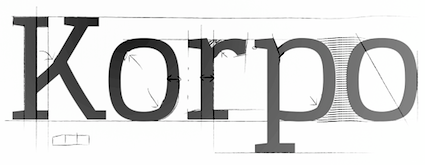 [MyFonts]
[More] ⦿
[MyFonts]
[More] ⦿
|
Mathias Augustyniak
[M/M Paris]
|
[More] ⦿
|
Matt Chansky
|
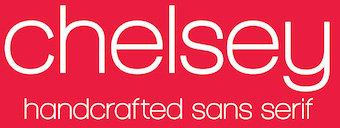 Princeton, NJ-based designer of the fashionable geometric sans typeface Quadri (2020), the large x-height sans Neue June (2019), and the low-contrast sans typefaces Chelsey and LAdawn. [Google]
[More] ⦿
Princeton, NJ-based designer of the fashionable geometric sans typeface Quadri (2020), the large x-height sans Neue June (2019), and the low-contrast sans typefaces Chelsey and LAdawn. [Google]
[More] ⦿
|
Matt Willey
|
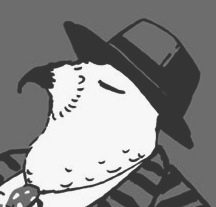 British creator of a 3d beveled bespoke typeface for Wired (2012), the rounded monoline sans B-Word, NSW01, the bespoke sans and stencil pair AType (for Applied Graphics), the heavy octagonal typeface Timmons (for a book called Jazz), MFred (with Henrik Kubel, for Port magazine, later drawn up in to a full Cyrillic (for Port Russia) by Dmitry Rastvortsev; published at Typespec), Port One (a stencil typeface for Port magazine), the gridded Wired Travel typeface (for Wired magazine), Fogerty (for the identity of the Central School of Speech and drama of the University of London). [Google]
[More] ⦿
British creator of a 3d beveled bespoke typeface for Wired (2012), the rounded monoline sans B-Word, NSW01, the bespoke sans and stencil pair AType (for Applied Graphics), the heavy octagonal typeface Timmons (for a book called Jazz), MFred (with Henrik Kubel, for Port magazine, later drawn up in to a full Cyrillic (for Port Russia) by Dmitry Rastvortsev; published at Typespec), Port One (a stencil typeface for Port magazine), the gridded Wired Travel typeface (for Wired magazine), Fogerty (for the identity of the Central School of Speech and drama of the University of London). [Google]
[More] ⦿
|
Matthew Aaron Desmond
[Matthew Desmond]

|
 MADtype (est. 1996) is Matt Desmond's place in the type world. He has had a prolific career that started out with shareware fonts while Matt was at the Minneapolis Technical and Community College. His page back then said A haven for quality shareware type for the Mac. Later, Matt started mattdesmond.com, and co-founded the Test Pilot Collective (est. 1998 with Joseph Kral and Mike Cina). Many of his early typefaces were experimental and/or futuristic. In late 2003, mattdesmond.com disappeared, and MADtype, commercial now, resurfaced at the MyFonts site. Currently, Matt is based in Minnetnka, MN. He has also lived in Atlanta, GA, Fayetteville, GA, Rochester, NY, Redwood City, CA, and San Francisco, CA. His fonts can also be purchased via You Work For Them. He also does commissioned type design. Some fonts are freely available at the Google Font Directory.
MADtype (est. 1996) is Matt Desmond's place in the type world. He has had a prolific career that started out with shareware fonts while Matt was at the Minneapolis Technical and Community College. His page back then said A haven for quality shareware type for the Mac. Later, Matt started mattdesmond.com, and co-founded the Test Pilot Collective (est. 1998 with Joseph Kral and Mike Cina). Many of his early typefaces were experimental and/or futuristic. In late 2003, mattdesmond.com disappeared, and MADtype, commercial now, resurfaced at the MyFonts site. Currently, Matt is based in Minnetnka, MN. He has also lived in Atlanta, GA, Fayetteville, GA, Rochester, NY, Redwood City, CA, and San Francisco, CA. His fonts can also be purchased via You Work For Them. He also does commissioned type design. Some fonts are freely available at the Google Font Directory. Retail types as of 2011: - Abel (2011, Google Font Directory). Abel Pro was published in 2013.
- Aldrich (2011). A Bank Gothic style face, free at OFL.
- Amber (2000): kitchen tile face.
- American Gothic (1998): squarish.
- Audebaud (2010): a 19-th century style French Clarendon (wood type look). The design was inspired by the work of Constant Audebaud, an engraver of wooden type that was used for posters. Audebaud's work appeared in the 1880s in the Deux-Sèvres département of France.
- Beat (1998): rounded OCR face.
- Brauhaus (2004): Textura face.
- Cagliostro (2011). A free font at Google Web Fonts that is based on the handlettering of Ozwald Cooper.
- Curbdog (1998).
- Desmond Text (1998): a roman that has features of University Roman.
- Distill (2009): a De Stijl font that shouts 1920s.
- Dunelm (1996): emulation of 17th century printing styles.
- Dwiggins Deco (2009): This typeface was originally designed in 1930 by W.A. Dwiggins as the cover for the book "American Alphabets" by Paul Hollister. Only the 26 letters of the alphabet were included on the cover, so the rest of the numbers, punctuation, symbols, and accented characters have been crafted in a matching [art deco] style.
- Findon (2007): stencil.
- Futuristic category: ER9 (1999), KAH (2005, LCD style), Lunarmod (1997), Retron (1997; can be considered as a retro upright connected script as well), Shifty (1998).
- Grunge category: Bulletin (1997), Gothico Antiqua (1999), Rubba (1997), Stomper (1997--a rubber stamp font), Zapatista (1998-2007).
- Handwriting, handprinting category: Casino Hand (2005), Ghouliez (1996), Handegypt (2002---hand-drawn slab serif), Handy Sans (1997, hand-drawn sans), Joppa (1997), Pufficlaude BT (1998).
- Hessian (2009): Tuscan style wood type.
- Hydrochlorica (2004): organic.
- Invoice (1997).
- Ironside Crosses (2004): dingbat face.
- Marble Roman (2004-2009): angular roman all caps type.
- Matterhorn (2013). A 9-style sans family created with Michael Cina for Disney. Not to be confused with the many retail typefaces that are also called Matterhorn, such as Paratype's PT Matterhorn (1993) and Treacyfaces' TF Matterhorn (1990s).
- Pacioli or Luca Pacioli Caps (2007: emulating a mathematically constructed caps font by Pacioli (1509) published in his treatise De divina proportione.
- Pixel category: Basis (1999), Mang (1997).
- Plenti (2004): ultra plump.
- Quantico (2007): octagonal.
- Stencil category: Bandoleer (2009, +Tracer: a couple of stencil fonts with art deco and army influences), Madison (2007, slab serif stencil), Mercado (2005; has a non-stencil Mercado Sans).
- Urbandale (2018). A basic sans family.
- Variable (2004-2010): a sans-serif monoline typeface that includes ultra thin weights.
- Vexed (2005): sketched face.
- Wolfsburg (2007): blackletter stencil.
- Wooddale (1999): wood type emulation.
Free types as of 2010: Marble Roman, Environ regular, Dorkbutt, Europa, Exsect, Inthacity, Liquidy Bulbous, Lustria (2012, Google Web Fonts), Stomper. Commissioned types: 77kids (2007, for the children's brand; the sketched typefaces were done with Justin Thomas Kay), AE Aerie (2005-206, American Eagle Outfitters), AE Newburgh (2005-206, American Eagle Outfitters), AE Summer Fonts (2007, all for American Eagle Outfitters), EEL Futura (2006, for Enjoying Everyday Life), Nike World Cup (2006), Virgin America (2006). Typefaces from 2019: Starfire (2019, a retro geometric sans). Orphaned types that disappeared or were planned but never executed: BrotherMan, Caprice, Convolve, HipstersDelight, Lugubrious, ModestaSmallCaps, Serifity, Skitzoid, Sliver, ThrowupSolid, Auresh (1998, futuristic; Test Pilot Collective), Kcap6 (1998, with Cina; Test Pilot Collective), Epiphany (1997; Test Pilot Collective), Testacon (with Kral and Cina; Test Pilot Collective), Civicstylecom (1999; Test Pilot Collective), Lutix (1998; Test Pilot Collective), Xerian (1997; Test Pilot Collective), Swoon, Furtive (2004, a sans), the display typeface Flathead (2004), the blackletter typeface Bahn (2004), Mesotone BT (2006, Bitstream, a monoline sans), Practical (a monoline connec script, planned in 2007 but not published), Poliphili (planned in 2007, as a revival of an Aldus/Griffo font), Wutupdo (1996, Garage Fonts), GFDesmond (Garage Fonts), Drone, Golden Times (2014, a corporate small caps typeface for the University of Minnesota), Vapiano (2014: hand-printed typeface for Vapiano International). Behance link. View Matt Desmond's typefaces. Fontspring link. Fontsquirrel link. [Google]
[MyFonts]
[More] ⦿
|
Matthew Carter
[Carter & Cone]

|
[MyFonts]
[More] ⦿
|
Matthew Desmond
[Matthew Aaron Desmond]

|
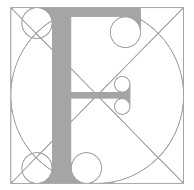 [MyFonts]
[More] ⦿
[MyFonts]
[More] ⦿
|
Matthew Wyne
|
 Matthew Wyne (Wyne Enterpises, San Francisco) designed the distressed wood type typeface custom typeface Be Block Web for The Gap in 2017. He explains how he managed to reduce an existing 600k font to about 100k in size without compromising the effect. In 2018, he published the text typeface Clef, a Venetian-inspired font (loosely based on Centaur) that is optimized for text. It features classical proportions, asymmetrical serifs, moderate contrast and a humanist axis. Cleft is the house font of Wyne Enterprises. [Google]
[More] ⦿
Matthew Wyne (Wyne Enterpises, San Francisco) designed the distressed wood type typeface custom typeface Be Block Web for The Gap in 2017. He explains how he managed to reduce an existing 600k font to about 100k in size without compromising the effect. In 2018, he published the text typeface Clef, a Venetian-inspired font (loosely based on Centaur) that is optimized for text. It features classical proportions, asymmetrical serifs, moderate contrast and a humanist axis. Cleft is the house font of Wyne Enterprises. [Google]
[More] ⦿
|
Matthijs van Leeuwen
|
Better known as Matt instead of Matthijs. Dutch designer who studied at ArtEZ Institue of the Arts,in Arnhem, The Netherlands, 1998-2002. He made a career in the United States as a successful and award-winning graphic designer, and is presently located in New York City. He created these typefaces: - Inegalé (1999, Psy Ops). A sans serif font.
- Synchrony (2015). An experimental logotype created as part of the identity project for GE / Synchrony Financial, which also involved Jessica Staley and Craig Stout at Interbrand, New York.
FontShop link. Klingspor link. Behance link. [Google]
[More] ⦿
|
Maurice Göldner
|
Type designer born in Germany who graduated from the Hochschule für Grafik und Buchkunst in Leipzig in 2009 and the Burg Giebichenstein University of Arts and Design Halle. His research project on the history of Dresden's Brüder Butter foundry has been published in the Typography papers 9, Hyphen Press. Maurice is type design lecturer at the Kunsthochschule Berlin Weissensee and cofounder of Camelot Typefaces. Creator of the Meran family (OurType) in 2008. OurType says: Its design grew out of an exercise to construct capital letters from strips of black paper. The letters were later translated into digital form and given matching roman and italic lowercase designs together with figures. Meran is not easy to characterize. A sanserif? Undoubtedly, but much more too: with its fresh and distinctive look we might call it a 'contemporary rotunda'. A display type that works well as text, or a text typeface that performs impressively in display? It's both! Meran is a sanserif with an edge, which offers an exceptional blend between character and utility. His second retail typeface is Stan (and Stan Plus, 2012, Our Type), and StandingType (2012, OurType). His custom typefaces include - Weinviertel (2009). A headline typeface designed for Weinviertel Tourismus GmbH under the direction of Bauer Konzept & Gestaltung Vienna Austria. It was based on the handwriting of Katharina Wohlrab, and developed in collaboration with Thomas Thiemich.
- Hivo Slab (2007). A custom typeface in three weights for Hirschvogel GmbH & Co. KG. Executed in collaboration with Peter Mohr.
- Rando and Rando Display (Camelot Typefaces). Rando won an award in the TDC Typeface Design competition in 2017.
Typedia link. Typecache link. [Google]
[More] ⦿
|
Mauro Paolozzi
[Buildshape]
|
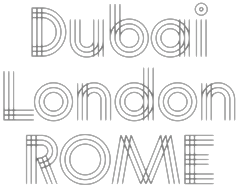 [More] ⦿
[More] ⦿
|
Max Nelles
|
Designer at G+J Corporate Editors. In 2016, Lufthansa Magazin commisioned Nils Thomsen and Max Nelles to create a fun hand-drawn font. [Google]
[More] ⦿
|
Mazda Saltillo
|
This small archive contains Interstate Mazda (2007, Font Bureau) and Mazda (2008). The same fonts, plus BaseTwelveSans, Honda and Suzuki (by Russell Poore) can be found here. [Google]
[More] ⦿
|
MCKL (was: Mickel Design)
[Jeremy Mickel]
|
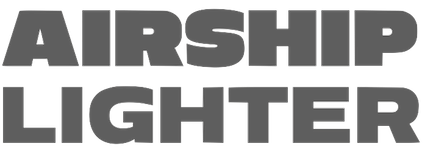 Jeremy Mickel runs a design studio in Los Ange;les, where he moved to from Minneapolis in 2015. Before that, he was located in Brooklyn, New York and Providence, RI. Originally called Mickel Design, the studio and foundry was renamed MCKL in 2012. Mickel has taught at RISD and the Minneapolis College of Art and Design.
Jeremy Mickel runs a design studio in Los Ange;les, where he moved to from Minneapolis in 2015. Before that, he was located in Brooklyn, New York and Providence, RI. Originally called Mickel Design, the studio and foundry was renamed MCKL in 2012. Mickel has taught at RISD and the Minneapolis College of Art and Design. He is working on this VAR-Rounded sans serif style face (2007) that was based on plastic cut letters seen in New York's subway. See also here and here. Mickel's typefaces: - Router (2008, Jeremy Mickel): a rounded sans family.
- Baro (2010, Chester Jenkins and Jeremy Mickel): Baro is inspired by memories of Antique Olive Nord, Roger Excoffon's landmark design originally commissioned for Air France in 1956. Nord, the heaviest weight of Antique Olive, was the starting point, but Baro shares DNA with other Village designs, including Apex New and Mavis.
- Eventide (2009, Jeremy Mickel): octagonal and 3d family based on ideas by Paul Carlyle in the early 1940s. That Carlyle typeface had also made it into the PhotoLettering collection in 1971. Eventide was developed into a family at House Industries under the art direction of Ken Barber and Christian Schwartz, and won an award at TDC2 2011.
- Superior (2010, Jeremy Mickel): a high-contrast transitional "nearly didone" face. Superior Title (2013) is described as a high-contrast missing link between Times and Bodoni. It was designed for fashion publications.
- Shift (2010, Jeremy Mickel): a slab serif family that won an award at TDC2 2011.
- Gonesh (2009, Jeremy Mickel): a great new sans family.
- Aero (2010, Village Type) was developed in cooperation with Chester Jenkins. This poster family, inspired by Excoffon's Antique Olive, was awarded at TDC2 2011.
- Letterboxes (2008). A stencil typeface that was part of a collaborative project with John Caserta at the Design Office.
- Plinc Flourish (a 2011 digitization by Jeremy Mickel for House Industries). Based on William Millstein's Millstein Flourish, an upright script first designed for PhotoLettering Inc in the early 1940s.
- Union (2011). A basic sans family, ideal for corporate design.
- Jeremy Mickel created a digital version L.Harl Copeland's (prismatic, beveled, roman caps) Trillium typeface [originally done at Photolettering] in 2011 at the new digital Photolettering / House Industries.
- Fort is a sans family published in 2012 by Village.
- Playoff Sans and Playoff Serif (2015).
- Adidas has partnered with MCKL to create an innovative suite of variable fonts. These fonts are being used across a wide spectrum of applications, including Creative Direction, Product Design, Graphics, Communications, Digital Experiences, and the brand campaign for the upcoming World Cup. In 2015, Mickel expansed the Adineue Pro family. In 2017 they started the first Adidas Variable Font, Adineue CHOP Variable, an octagonal athletic sans in a wide range of weights from hairline to black, and widths from extra-condensed to extra-wide. In 2018, Mickel embarked on Adineue Pro Variable.
- Rosa Sans (2019: by Jeremy Mickel and Pentagram). A free geometric grotesk (in their own words) sans family.
- Trust (2020). A flared typeface first used for the identity of the Commission on Presidential Debates (Trump versus Biden).
- Logic Monospace and Logic Monoscript (2020). Mickel writes: Logic Monospace takes inspiration from midcentury typewriter fonts, including IBM Selectric's Advocate and the ubiquitous Courier, with additional references in slab serifs like Stephenson Blake's Scarab. While there are many great script typewriter fonts, including Olympia and Aristocrat, Logic Monoscript is a novel creation, with few examples of true connecting monospace scripts in existence.
- Uber (2020). A custom job for Uber.
- Owners (2021). iJeremy explains: Owners is an expressive family of fonts that takes inspiration from the dynamic energy of handmade signage as seen around Los Angeles.
- RedHat Display, Text and Mono subfamilies. The open source fonts were originally commissioned by Paula Scher / Pentagram and designed by Jeremy Mickel / MCKL for the new Red Hat identity. Mickel writes: Red Hat is a fresh take on the geometric sans genre, taking inspiration from a range of American sans serifs including Tempo and Highway Gothic. The Display styles, made for headlines and big statements, are low contrast and spaced tightly, with a large x-height and open counters. The Text styles have a slightly smaller x-height and narrower width for better legibility, are spaced more generously, and have thinned joins for better performance at small sizes. In 2021 we added Light and Light Italic styles, and a Monospace family. Variable fonts with a weight axis are available. RedHat's official site.
Klingspor link. Village link. Speaker at ATypI 2018 in Antwerp. [Google]
[More] ⦿
|
Mélanie Boutet
|
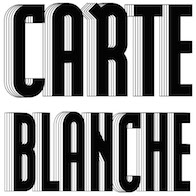 Parisian designer of the display typeface La Super Typo (2015), a custom job for Galerie Sakura. [Google]
[More] ⦿
Parisian designer of the display typeface La Super Typo (2015), a custom job for Galerie Sakura. [Google]
[More] ⦿
|
Memela Studio
[Peter Lorenz]
|
Peter Lorenz (Memela Studio, Guadalajara, Mexico) designed Cali Ms (2010, with Alberto Arellano), Fina (2011, a tall hairline all-caps face), Marga (2012, a polygonal typeface done with Alberto Arellano), Marcatextos (2012, a stencil family), and Quetzal (2012, decorative). In 2013, Memela designed the art deco marquee typeface Albahaca. Behance link. Another Behance link. Behance link for Peter Lorenz. [Google]
[More] ⦿
|
Merck
|
A corporate URW typeface family published in 2009. The 17-font family sells for nearly 10,000 Euros. There are sans, serif, semi-sans and semi-serif subfamilies. This family started out as a design for the Merck company. URW writes: URW++ is authorized by Merck KGaA to deliver the Merck corporate typeface family for a license fee to external users, i.e. Merck KGaA suppliers such as ad agencies, signmakers and the like. The Merck corporate typefaces are available in four different volumes with correspondingly multi lingual character encoding. All Merck Global Fonts contain approximately over 45,000 glyphs including the complete CJK glyph set (China, Japan and Korea). Besides all Latin, Greek, and Cyrillic glyphs as well as the complete CJK glyph set also cover Japanese Katakana and Hiragana plus Korean Hangual syllables. Furthermore they are supporting Thai and Arabic (including Farsi and Urdu) plus Hebrew and Vietnamese as well. [Google]
[More] ⦿
|
Merve Yildiz
|
Graphic designer in Istanbul who made the semi-stenciled Latin corporate typeface Bit Pazari in 2013. [Google]
[More] ⦿
|
Michael Abbink

|
 Mike Abbink (b. 1967) earned a BFA in Fine Arts, and another one in Graphic Design and Packaging from Art Center in Pasadena. Born in 1967, he was a graphic designer at Meta Design San Francisco doing corporate and web design. In March 1999 he co-founded Method, Inc., a San Francisco-based company specializing in communication strategy, interaction and graphic design. Mike Abbink is the Executive Creative Director of the Brand Experience and Design Team within IBM Studios. Before that, he worked as a Creative Director for the Museum of Modern Art, Wolff Olins (New York), Saffron Consultants, Method (also co-founder) and as a Design Director at Apple Computer. His typefaces:
Mike Abbink (b. 1967) earned a BFA in Fine Arts, and another one in Graphic Design and Packaging from Art Center in Pasadena. Born in 1967, he was a graphic designer at Meta Design San Francisco doing corporate and web design. In March 1999 he co-founded Method, Inc., a San Francisco-based company specializing in communication strategy, interaction and graphic design. Mike Abbink is the Executive Creative Director of the Brand Experience and Design Team within IBM Studios. Before that, he worked as a Creative Director for the Museum of Modern Art, Wolff Olins (New York), Saffron Consultants, Method (also co-founder) and as a Design Director at Apple Computer. His typefaces: - The sans serif family FF Kievit (2000). This font family is also in the FontBureau collection, and is by many seen as the long-term replacement of Helvetica and Frutiger. FF Kievit won the typeface award at the ISTD TypoGraphic Awards 2001. It was also used to make the house font CDU Kievit for the CDU party in Germany. With Paul van der Laan, he co-designed FF Kievit Slab in 2013 in nine styles. In 2019, Abbink and van der Laan released FF Kievit Serif, which has wide apertures and large counters that make it quite legible.
- At Agfa Monotype, he and others designed the large GE Inspira family (2003-2005), about which Michael writes: I actually spent over a year working on the design of Inspira. It was Patrick's [Patrick Giasson] early concept that GE was drawn to, but at that time, it was way too funky and more display like then they wanted. I then took patricks original thoughts and spent several months refining the roman and created an italic (which Patrick did not do) which was then handed to monotype to create more weights and refine a bit. What you see in Inspira now, is quit different from Patrick's original concept. However, the more unique forms from Inspira are indeed driven by patricks original drawings and are the interesting forms of the font (v, x, z, y). I was also involved with art directing and working with the Monotype team (for over a year) in developing all the other iterations of inspira. All told, there were many people involved in the refinement of the Inspira font family. but I must say I would have to take a large credit in the design of inspira along with Patrick. I believe Patrick's designs and my designs created a nice balance that has made Inspira what it is today and of course let's not forget the hard work of monotype in really taking the font to the next level with all the weights, the condensed version, and exotics (Greek, Cyrillic, Turkish, etc.). Michael now works at Wolff Olins in New York. GE Inspira Sans and Serif (Mike Abbink, Paul van der Laan and Pieter van Rosmalen, Bold Monday) won an award in the TDC 2015 Type Design competition.
- From 2000 until 2006, he created FF Milo, which was followed in 2009 by FF Milo Serif. These typefaces were developed for magazine and newspaper print and have therefore short ascenders and descenders. Paul van der Laan helped with the production. In 2014, the series was augmented with FF Milo Slab (by Mike Abbink and Jesse Vega).
- In 2014, Abbink finished Brando (Bold Monday), which won third prize in the TDC 2015 Type Design competition. It was followed in 2016 by Brando Sans (Bold Monday).
- IBM Plex (2017). A large free font family created by Mike Abbink and Bold Monday for IBM's new corporate identity. It includes IBM Plex Sans, IBM Plex Serif and IBM Plex Mono subfamilies. Direct download at Github. Aneliza (2018) is a fork that has a single storey g in the italics.
Klingspor link. FontShop link. FontFont link. [Google]
[MyFonts]
[More] ⦿
|
Michael Amzalag
[M/M Paris]
|
[More] ⦿
|
Michael Bierut
[Design Observer]
|
[More] ⦿
|
Michael Chan
|
Designer in London who created the geometric display typeface San Pellegrino Terme (2013), a custom font. Behance link. [Google]
[More] ⦿
|
Michael Chernykh
|
Art director in Moscow who made a custom display face for Lauren Coffee Dark Chocolate in 2017. Behane link. [Google]
[More] ⦿
|
Michael Cina
[Associated Typographics (or: Public Type)]

|
[MyFonts]
[More] ⦿
|
Michael Fluhr
|
Designer at Leo Burnett who lives in Mainz, Germany. In 2015, he developed a handcrafted corporate typeface for the Clubhouse range at McDonald's Germany /Austria. [Google]
[More] ⦿
|
Michael Hansen
|
Art direcrtor in Oslo, Norway, who has done corporate branding for amny international companies. In 2016, he designed the bilined caps-only typeface family MFF Strict Serif and the super-condensed techno typeface MFF Hell on Earth. Behance link. [Google]
[More] ⦿
|
Michael Hochleitner
[Typejockeys]

|
 [MyFonts]
[More] ⦿
[MyFonts]
[More] ⦿
|
Michael Rafailyk

|
Michael Rafailyk is a brand designer, illustrator, type designer and composer from Sumy, Ukraine. In 2003 he earned a Bachelors in music composition and conductor of orchestra at Bortnianski Art & Music College. In 2007 he earned a Bachelors degree in graphic design at the Open International University of Human Development. Until 2021 worked in a branding agency as an illustrator and graphic designer. Designer of these typefaces: - Sumy. For the brand of the city of Sumy.
- Sidore. A typeface for the brand of Ukrainian alcoholic drinks Sidorenko.
- The counterless fat handcrafted typeface Spilled Ink (2021), which was designed to complement illustrations.
- Sealt (2021). An angular, almost Hitchcockian, display sans; six styles and a variable version.
- Forestory (2021). A 5-style national park font that evokes trees and forests. It includes a variable style.
- Wild Loops (2021). A very tall monolinear script.
- Piacere (2021) and Piacere Text (2021). Two 4-style 19th century text typefaces with long nails. Piacere was briefly called Prose before it was renamed.
[Google]
[MyFonts]
[More] ⦿
|
Michail Semoglou
[Type Initiative]

|
[MyFonts]
[More] ⦿
|
Michiel Van Wijngaarden
|
Designer in London. Creator of Morganiser (2012), a corporate typeface for Nicola Morgan, and of the rounded monoline stencil typeface AI (2012). Behance link. [Google]
[More] ⦿
|
Mike Abbink
[IBM Plex]
|
[More] ⦿
|
Miles Newlyn
[Newlyn (was: TextPref, x&y)]

|
 [MyFonts]
[More] ⦿
[MyFonts]
[More] ⦿
|
Ming Wei
|
Ming Wei is associate director of the Font Product Division of Beijing Founder Electronics Co., Ltd and a member of the Chinese Artists Association. Her work is part of the collection of the Sichuan Art Museum. Ming Wei designed the Beijing Olympic subway visual information system used on the Olympic Extension Line during the 2008 Beijing Olympic Games. This work was awarded first prize at the National Art Exhibition. She received an MA degree in Communication Design from Central Saint Martins, University of the Arts in London. After returning to China, she joined FounderType and now works on font product research and project management. Speaker at ATypI 2018 in Antwerp. [Google]
[More] ⦿
|
Minsk Disseny
|
Design studio in Barcelona. In 2014, they co-designed the corporate typeface Seat Sans with Pilar Cano. Behance link. [Google]
[More] ⦿
|
Mirko Borsche
[Bureau Borsche]
|
[More] ⦿
|
Mirko Landi
|
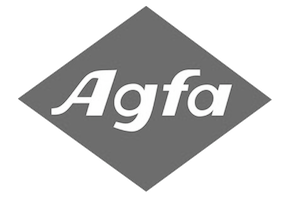 Visual designer in Milano, who created the (virtual) type and identity for Agfa in 2012 starting from their old logo. [Google]
[More] ⦿
Visual designer in Milano, who created the (virtual) type and identity for Agfa in 2012 starting from their old logo. [Google]
[More] ⦿
|
M/M Paris
[Mathias Augustyniak]
|
M/M Paris is a studio in Paris run by Michael Amzalag (b. 1962, Paris) and Mathias Augustyniak (b. 1967, Cavaillon), est. 1992. They created the decorative caps typeface Pradalphabet in 2014. It was custom designed for Prada's collection of unique T-shirts. [Google]
[More] ⦿
|
M/M Paris
[Michael Amzalag]
|
M/M Paris is a studio in Paris run by Michael Amzalag (b. 1962, Paris) and Mathias Augustyniak (b. 1967, Cavaillon), est. 1992. They created the decorative caps typeface Pradalphabet in 2014. It was custom designed for Prada's collection of unique T-shirts. [Google]
[More] ⦿
|
Mohammed Ezzat Kamel
|
Graphic and type designer in Doha, Qatar, where he runs e-studio. In 2010, he designed a type family for both Latin and Arabic called Delta Doha, named after the oil equipment company that commissioned the typefaces. In 2013, we find him in Alexandria, Egypt, where he speclaizes in brand and logo designs. Eid Arabic (2013) is a geometric display typeface for Eid Greeting Cards. [Google]
[More] ⦿
|
Moiré
[Marc Kappeler]
|
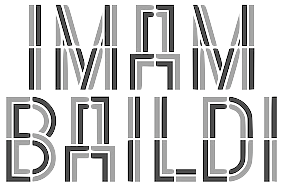 Zurich-based graphic design studio that often work for art and architecture clients. It is run by Marc Kappeler, Markus Reichenbach and Ruth Amstutz. Font subpage. Regina (2008) is a custom rounded typeface in Latin and Cyrillic for Regina Gallery in London and Moscow. Balkankaravan (2008) is a layered typeface custom-designed for Balkankaravan. In 2010, they made an ornamental caps typeface consisting of building demolitions.
Zurich-based graphic design studio that often work for art and architecture clients. It is run by Marc Kappeler, Markus Reichenbach and Ruth Amstutz. Font subpage. Regina (2008) is a custom rounded typeface in Latin and Cyrillic for Regina Gallery in London and Moscow. Balkankaravan (2008) is a layered typeface custom-designed for Balkankaravan. In 2010, they made an ornamental caps typeface consisting of building demolitions. In 2012-2013, Grilli Type published their typeface family GT Pressura (with monospaced and proportional versions), which was inspired by type stamped on shipping boxes. GT Pressura was co-designed by Ruth Amstutz and Dominik Huber. In 2014, Dominic Huber, Marc Kappeler and Noel Leu published the extensive text family GT Sectra (Grilli Type), which, in view if its breadth and angular design will prove to be one the world's major releases of 2014. GT Sectra won first prize in the TDC 2015 Type Design competition. Their blurb: GT Sectra was originally designed for the German-language magazine Reportagen, a bi-monthly publication specializing in literary reporting. Its long-form stories require a typeface that works well in text, but not at the expense of character. GT Sectra strikes that balance. In 2020, Dominic Huber and Marc Kappeler co-designed the 112-style GT Flexa at Grilli Type. Flexa is also a variable type with width, slant and thickness axes, and has a monospaced subfamily. GT Flexa is characterized by simple shapes and penetrating ink traps. [Google]
[More] ⦿
|
Molotro
[Luciano Perondi]

|
 Molotro is Luciano Perondi's type foundry, which he runs with Stefano Minelli and Valentina Montagna. This Italian type designer (b. Busto Arsizio, 1976) lives in Busto Arsizio (Varese). At ATypI in Rome in 2002, he spoke about the logo-grammatic approach to type design: "Carattere senza un nome importante". His ATypI 2002 report is here. In this enlightening piece, you can read about his opinions on type. In 2000 and the following few years, he lectured at the Basic Design Lab of the Politecnico di Milano. In 2003 he founded the Research Team EXP. The research team, formed by type designers and psychologists, studies the reading process, the influences of the irregularity of typefaces on reading and the non linear script. EXP is now starting to work on the effects of presbiopia on reading and on how an adequate design of types could help presbiopian readers.
Molotro is Luciano Perondi's type foundry, which he runs with Stefano Minelli and Valentina Montagna. This Italian type designer (b. Busto Arsizio, 1976) lives in Busto Arsizio (Varese). At ATypI in Rome in 2002, he spoke about the logo-grammatic approach to type design: "Carattere senza un nome importante". His ATypI 2002 report is here. In this enlightening piece, you can read about his opinions on type. In 2000 and the following few years, he lectured at the Basic Design Lab of the Politecnico di Milano. In 2003 he founded the Research Team EXP. The research team, formed by type designers and psychologists, studies the reading process, the influences of the irregularity of typefaces on reading and the non linear script. EXP is now starting to work on the effects of presbiopia on reading and on how an adequate design of types could help presbiopian readers. He was appointed associate professor of Design at the IUAV Venice in 2018 and he is also a member of the Alpaca cooperative of designers. From 2003 until 2007 he ran the Molotro studio. From 2005 until 2013 he was on the editorial board of the Italian design magazine Progetto Grafico. He has lectured in many Italian universities. From 2013 until 2016, he was the Director of the ISIA Urbino. In 2012 Stampa Alternativa published his book on non-linear writing, Sinsemie: scritture nello spazio. In 2013, he became a member of the cooperative foundry CAST, and is now its chief designer. At ATypI 2005 in Helsinki, he spoke about How does the irregularity of letters affect reading? His type designs include - Solferino Text (2007), a great transitional understated text typeface for the Corriere della Sera newspaper. Done with Leftloft (Andrea Braccaloni).
- Minotype (2006, aka Ninzioletto, a stencil face).
- Zotico/Zotica (2004, a sans family for the Milano Film Festival).
- Ninzioletto (2004, a stencil typeface designed for the Venice sign system).
- Tecnotipo (2005, designed for Tecno).
- Quinta (2006).
- DeA (2003, for DeAgostini).
- Ccunami.
- Csuni (which stands for Carattere Senza Un Nome Importante).
- Csuni1885 (2003, for Mattioli1885; see also Experience1885).
- Mattioli1885.
- DeA, for DeAgostini (2003).
- Sessantacinque (2003).
- Eye of Goat: designed in 2005 by Perondi, Valentina Montagna and Federico Zerbinati. It is a medieval ornaments typeface (free for a limited time).
- Nanoline (hairline sans).
- Decima (2005), a sans.
- Lontano (2003). A Caslon-style typeface commissioned for the Matteoli 1885 edition.
- Brera (2007, a sans family by Leftloft and Molotro).
- Voland (2010). A commissioned Baskerville typeface for the Italian publishing house Voland.
- Under the identity design and art direction of FF3300, Molotro created the sans typeface family Divenire, in Regular, Italic and Mono subfamilies, for the Italian Democratic Party in 2012-2013. Since 2014, Divenire can be bought as a reatil font at CAST.
- Dic Sans (2014). This elliptical sans was inspired by Aldo Novarese's Eurostile. It has its own idiosyncracies, and comes with a gorgeous Dic Sans Extra Bold weight (2014). On the nomenclature---French are allowed to operate Sans Dic, and Americans are permitted to typeset with Extra Bold Dic.
- Tribasei 16-000 (2006). An experimental typeface.
- Macho Modular (2015, CAST). Macho was originally designed in 2010 for MAN (Museo d'Arte Provincia di Nuoro) and is based on the idea of modular widths of the 20th-century typesetting systems, as required by the Olivetti Margherita and the hot-metal Linotype machine. It was followed by Macho Moustache (2018, CAST).
Klingspor link. Google Plus link. [Google]
[MyFonts]
[More] ⦿
|
Mongao Monglok
[Superstorefont]
|
[More] ⦿
|
Monofonts (or: Monocromo Creative Factory)
[Andrea Cerboneschi]
|
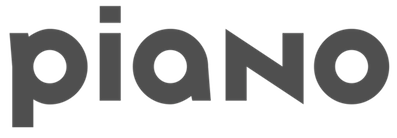 Monofonts is the font foundry of Studio Monocromo, a Creative Agency based in Florence, Italy. Katiuscia Mari, Marco Ugolini and Andrea Cerboneschi are the founders of both Studio Monocromo and Monofonts, located in Firenze. Matteo Bonini is also involved. Most of their fonts can be freely downloaded from Dafont.
Monofonts is the font foundry of Studio Monocromo, a Creative Agency based in Florence, Italy. Katiuscia Mari, Marco Ugolini and Andrea Cerboneschi are the founders of both Studio Monocromo and Monofonts, located in Firenze. Matteo Bonini is also involved. Most of their fonts can be freely downloaded from Dafont. Creators of Fresko (2010), and the custom corporate sans family Opificio (2011, Andrea Cerboneschi) for a fashion and crafts company by the same name. It was followed in 2014 by the more organic, but still geometric, Opificio Neue. Cerbetica (2011, Andrea Cerboneschi) is a reworked Helvetica. Diamante (2011, Katiuscia Mari) is a sans typeface with a condensed feel. Peppermint (2011, Katiuscia Mari) is a techno face. Tape Rail (2011) overlays straight edges and looks like an oriental simulation face. Square Block (2011) is octagonal. Fonts from 2012: Halfmoon. In 2013, they published Opificio Serif and Vintage Straps (a thin monoline sans). Typefaces from 2014: San Frediano (sans family), Zeronero (an artsy art deco geometric sans), Malandrino. Typefaces from 2016: Aron Grotesque (by Valentino Coppi; named after French intellectual Raymond Aron), Emily the Brush (connected brush script), Quaderno Bianco, Monohipster. Fonts from 2017: Sweetheart Script. Fonts from 2018: Lazy Dog. Creative Market link. Behance link. Dafont link. Old URL. Behance link for Monofonts. [Google]
[More] ⦿
|
Monotype: Corporate typefaces
|
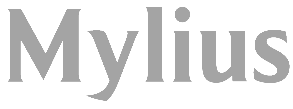 The corporate typefaces for which Monotype was contracted include Barclays, British Airways (the Mylius face), The British Council, Chermayeff&Geismar (a particularly ugly and unreadable organic slanted sans), Ogilvy&Mather, Opel (with Greek and Cyrillic, under guidance of Robin Nicholas), Scandinavian Airlines (the typeface is called Scandinavian), Stockholm Transport, The Daily Telegraph, and Waitrose. [Google]
[More] ⦿
The corporate typefaces for which Monotype was contracted include Barclays, British Airways (the Mylius face), The British Council, Chermayeff&Geismar (a particularly ugly and unreadable organic slanted sans), Ogilvy&Mather, Opel (with Greek and Cyrillic, under guidance of Robin Nicholas), Scandinavian Airlines (the typeface is called Scandinavian), Stockholm Transport, The Daily Telegraph, and Waitrose. [Google]
[More] ⦿
|
Möbel Type
[Imogen Ayres]
|
Möbel Type was founded by Imogen Ayres in Glasgow, Scotland. Their retail typefaces include Lacuna, Beach Goth (blackletter), Furniture (sans), Zetkin and Ripley (polygonal). Bespoke typefaces include Horizon (rounded stencil), Noam, Eyvin (sans), Phew, Doves Flare, Geo (a geometric art deco stencil typeface; for Paulin watches in Glasgow), and Paws N Claws. [Google]
[More] ⦿
|
Mucho
|
Graphic design studio in London. For Catalana Occident, Mucho created an identity in 2015. Part of that project comprised the typefaces Catalan and Catalana Sans. In 2022, Mucho created a new corporate font for Visa called Visa Dialect (+Icons). [Google]
[More] ⦿
|
Muellerschrift
|
The house font of the German drug store Müller. Based on Gill Sans. [Google]
[More] ⦿
|
Muggie Ramadani
|
Copenhagen, Denmark-based creative director. Muggie designed these custom typefaces: Codan (2017, for an insurance company), Danske (2017, for Danske Bank), SEAS-NVE (2014, a slab serif / sans pair of typefaces done together with Nicolas Fuhr and Chester Jenkins). Behance link. Muggie is associated with Bold Copenhagen. [Google]
[More] ⦿
|
Mushroom
[Thiago Bellotti]

|
 Mushroom Type is a Sao Paulo-based foundry established in 2013 by Brazilian graphic designer Thiago Bellotti. Typefaces:
Mushroom Type is a Sao Paulo-based foundry established in 2013 by Brazilian graphic designer Thiago Bellotti. Typefaces: Mushroom Type home page. Behance link. Behance link for Mushroom Type. [Google]
[MyFonts]
[More] ⦿
|
MvB Design
[Mark van Bronkhorst]

|
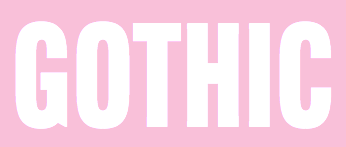 MvB Design (later called MVB Fonts) is Mark van Bronkhorst's company in Albany, CA, est. 1991 in San Francisco. It was also known as Markanna Studios Inc. Its fonts were first distributed by FontHaus, then by MyFonts, and most recently by Type Network.
MvB Design (later called MVB Fonts) is Mark van Bronkhorst's company in Albany, CA, est. 1991 in San Francisco. It was also known as Markanna Studios Inc. Its fonts were first distributed by FontHaus, then by MyFonts, and most recently by Type Network. In the list below, unless explicitly mentioned, Mark van Bronkhorst is the designer: GryphiusMVB (2003), MVB Solano Gothic (2007-2009, six Bank Gothic lookalikes done for the city of Albany, CA), MVB Celestia Antiqua One and Two (1993-1996, a rustic font family in the Caslon Antique genre; it contains zodiac signs), MVB Greymantle (1993, Kanna Aoki), MvB Magnesium (1992-2003, Adobe: a hefty, contrasted, all-caps sans serif with angled terminals that pays homage to American sign lettering), Magnolia MvB (1997), Airedale (1992), BovinePoster or MVB Bovine (1993), DickAndJane (1994), MildewRoman (1994), QuercusRegular (1993), PFAnimals (1993), PFCommerceCommunication (1992), PFFoodDrink (1992), PFHolidaysCelebrations (1992), PFHouseholdItems (1993), PFTransportTravel (1992), QuercusHard (1993), MVB Emmascript (1996, Kanna Aoki), MVB Café Mimi (1996-2003, Kanna Aoki), MVB Pedestria (2002, a sans family by Akemi Aoki), MVB Pedestria Pict (2002, dingbats by Akemi Aoki), MVB Verdigris (2003-2011, a garalde close to Sabon), MVB Fantabular and MVB Fantabular Sans (2002, Akemi Aoki, monospaced, typewriter-style), MVB Grenadine One and Two (2003, sans families by Akemi Aoki), MVB Peccadillo (2002, by Holly Goldsmith and Alan Greene), MVB BossaNova (Holly Goldsmith, 1997), BatmanForever1 (1994, Maseeh Rafani/Warner Bros and Mark van Bronkhorst), Breakdown (1996), HornyDave (1995, based on illustrations of Georgia Panagiotopoulos), HypnoclipsLogoFont (1997), Ovidius (1993), Subterfuge (1995), ZedGothicMvB (1996), HotsyTotsy, MVB Sirenne Six, MVB Sirenne Text, MVB Sirenne Display (2002, display serif family by by MvB and Alan Greene), Veriris Pro Text (2003-2011). MVB Sacre Bleu (2007) is an award-winning handwriting typeface about which Joshua Lurie-Terrell writes: Sacre Bleu is the most flexible and accessible informal script of 2007, and rivals some of the best typefaces in this vein from the past decade. He compares it with Christian Robertson's Dear Sarah, Dave Farey's Lettres Eclatees, Letterror's Salmiak and Nick Cooke's Olicana, another very successful face. In 2008, Mark set up Sweet Fonts, where he and Linnea Lundquist designed Sweet Upright Script (2008), and Mark published the quintuple line blackboard board family Sweet Titling No. 22 (2010), Sweet Square (2011---in the style of Bank Gothic), Sweet Sans Pro (2011, a sans family from Hairline, Sweet Gothic to Heavy. He says: The family is based on antique engraver's lettering templates called masterplates. Professional stationers use a pantograph to manually transfer letters from these masterplates to a piece of copper or steel that is then etched to serve as a plate or die. This demanding technique is rare today given that most engravers now use a photographic process to make plates, where just about any font will do. But the lettering styles engravers popularized during the first half of the twentieth century---especially the engraver's sans---are still quite familiar and appealing. It is in the style of Burin Sans and Sackers Gothic. And Embarcadero MVB (2010, a near-grotesque superfamily). In 2012, van Bronkhorst released MvB Mascot (a signage script). In 2013, MVB published the utilitarian sans family MVB Solitaire. For Whole Foods Market, he created the corporate typefaces Grace's Hand and Molly Text in 2014. In 2015, Mark van Bronkhorst set up TypoBrand LLC in Berkeley, CA. As part of TypoBrand, he published several typefaces that are modern digital reinterpretations of ATF typefaces. The collection is published by TypoBrand LLC under the names ATF Type or American Type Founders Collection. At ATF Type foundry, they co-designed, sometimes with others, classics such as ATF Alternate Gothic (2015), ATF Brush (2015), ATF Egyptian Antique (an expansion of Schraubstadter's Rockwell Antique by Mark van Bronkhorst, Igino Marini, and Ben Kiel), ATF Garamond (2015), ATF Headline Gothic (2015), ATF Livermore Script (by Mark van Bronkhorst, Igino Marini, and Ben Kiel), ATF Poster Gothic (2015), ATF Railroad Gothic (2016), and ATF Wedding Gothic (2015). In 2017, he designed the plastic template font family MVB Diazo. Type Network link. Linotype link. FontShop link. Alternate URL. Klingspor link. View Mark van Bronkhorst's typefaces. [Google]
[MyFonts]
[More] ⦿
|
My Name is Wendy
[Carole Gautier]
|
The Parisian design studio My Name is Wendy was founded in 2006 by Carole Gautier and Eugénie Favre. Their typefaces, often for clients, and nearly always experimental and on the edge, include - Burlesk (2018).
- New Fabrik (2014). An industrial sans.
- ViewWriter. Almost a typewriter type.
- Paulownia. Curvy and experimental.
- Wendy (2014). A bicolored monoline sans.
- Freaks Alphabet (2014). A decorative caps typeface.
[Google]
[More] ⦿
|
MyFonts: Corporate typefaces
|
Top-ranked fonts at MyFonts on the theme "Corporate typefaces". Or typefaces for corporate branding [huge web page warning]. [Google]
[More] ⦿
|
My-Lan Thuong
|
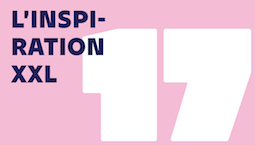 Thuong attended ESAD Amiens for Graphic Design and later pursued a career in type design. In 2018, she received an MFA in Type Design from the Ecole Estienne in Paris. She collaborated with type foundries Coppers and Brasses and Type Network prior to joining New York City-based Sharp Type as a type designer in 2019. Her typefaces:
Thuong attended ESAD Amiens for Graphic Design and later pursued a career in type design. In 2018, she received an MFA in Type Design from the Ecole Estienne in Paris. She collaborated with type foundries Coppers and Brasses and Type Network prior to joining New York City-based Sharp Type as a type designer in 2019. Her typefaces: - Maple Leafs (2017). Co-designed with Etienne Aubert-Bonn at Coppers and Brasses in Montreal, Maple Leafs is a fast and aggressive typeface commissioned for the Toronto Maple Leafs as a display face to use along with their existing typefaces.
- Mammouth (2017). Done together with Etienne Aubert-Bonn at Coppers and Brasses, Mammouth is a commissioned typeface family for a gala on Tele Quebec where teenagers can vote for the people, events, and causes that influenced them the most during the year. Mammouth contains a heavy and an ultra-fat style.
- In 2018, she released the shaky outline typeface Royal at E162.
- She assisted Justin Sloana at Sharp Type with Simula (2019).
- In 2020, Etienne Aubert Bonn and My-Lan Thuong co-designed Baryton at Coppers and Brasses, a revival of Frank Bartuska's playful photo era didone typeface Century Bartuska.
- Carta Nueva (2020). A copperplate penmanship font released at Sharp Type.
- In 2021, Lucas Sharp and My-Lan Thuong, assisted by Wei Huang and Marc Rouault, designed Salter. Salter Roman is based on calligraphic book jackets by Georg(e) Salter from 1941, and Salter Italic is inspired by two of Oscar Ogg's book jacket alphabets from 1942.
[Google]
[More] ⦿
|
Nakul Talgeri
|
Art director in Bangalore, India. For Kingfisher Ultra Beer, he created the custom font The Utra Font (2015). [Google]
[More] ⦿
|
NaN
[Luke Prowse]

|
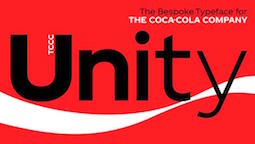 British autodidact (b. 1983) who worked for or with Neville Brody's Research Studios, and founded NaN in 2020. He is based in Berlin. NaN was co-founded with Sydney-based Markus Piper.
British autodidact (b. 1983) who worked for or with Neville Brody's Research Studios, and founded NaN in 2020. He is based in Berlin. NaN was co-founded with Sydney-based Markus Piper. Prowse designed the sans typeface Book First. In 2006, he created Times Modern, designed for The Times. It was first used on November 20, 2006. Reaction from the typophiles. Sans Papier (2007, Umbrella Type, Veer) is a halftone and paper-inspired experimental concoction. Oscilloscope (2007) is a typeface in which the oultlines seem to be electrified---he calls it Filtered licks of electric, programmatic arcs. Crafted code, coded nodes, amphatic wave forming calm storming sparks. Oscilloscope is three juicy bolts of blue-volted love. In 2018, Brody Associates announced their custom font, TCCC Unity, for Coca Cola. It was jointly designed by Neville Brody and Luke Prowse. At NaN, he released the 10-style monospaced experimental serif family Nan Weiss (2020). Typefaces from 2021: NaN Holo (), Rubik Beastly (a hairy version of the Google Font Rubik by Hubert and Fischer, Meir Sadan and Cyreal; The code used to generate it can be found here), NaN Fiasco (a disobedient sans-serif drawing inspiration from errata in the design, application and reproduction of letterforms). Further additions to the generative font family Rubik in 2022, all published at Google Fonts: Rubik Wet Paint, Rubik Puddles, Rubik Moonrocks, Rubik Microbe, Rubik Bubbles, Rubik Glitch. [Google]
[MyFonts]
[More] ⦿
|
Naoise Ó Conchubhair
|
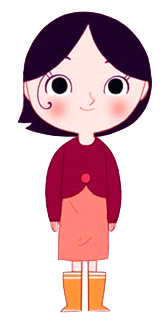 Graduate of NCAD, the National College of Art & Design, 2009. Dublin, Ireland-based freelance designer. His typefaces include
Graduate of NCAD, the National College of Art & Design, 2009. Dublin, Ireland-based freelance designer. His typefaces include - Insular (2009), a futuristic display typeface with an Irish background developed during his studies at NCAD. He explains: The typeface is influenced by the work and methods of renowned stone letter cutter Michael Biggs but mainly takes reference from contemporary sources.
- Saoirse Hand (Song of the Sea movie font). A handcrafted display typeface for use in the titling and promo material for Oscar-nominated animated feature Song of the Sea. He worked on this project at design studio Creative Inc, where he was commissioned by Cartoon Saloon, the film's production company, to create a bespoke typeface. A companion font is called Silkie Script.
[Google]
[More] ⦿
|
Nastia Piven
[Here East Fonts]

|
[MyFonts]
[More] ⦿
|
Natasha Jen
|
 Natasha Jen (BFA 2003) and her team at Pentagram designed the stretchable typeface Herita Geo in 2015 for the AIA New York Heritage Ball.
Natasha Jen (BFA 2003) and her team at Pentagram designed the stretchable typeface Herita Geo in 2015 for the AIA New York Heritage Ball. Type designs from 2017: Closed Worlds (mechanical, octagonal; Closed Worlds is a new exhibition at the Storefront for Art and Architecture in New York), Open View Stencil (for the Boston-based venture capital firm Open View). In 2019, she released the multiline custom typeface family Building Cycles, and the custom pixel typeface Droit. Behance link. Pentagram link. [Google]
[More] ⦿
|
National Museum of Denmark
|
Nationale (2019) is the custom-made typeface family for the National Museum of Denmark. [Google]
[More] ⦿
|
Nazareno Crea
[ABC ETC INC]
|
[More] ⦿
|
Neal Fletcher
|
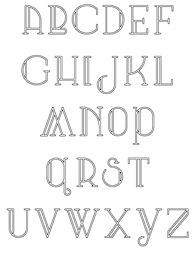 Neal Fletcher (Liverpool, UK) studied at the University of Central Lancashire, but was born and raised in Merseyside, England. His fonts are free.
Neal Fletcher (Liverpool, UK) studied at the University of Central Lancashire, but was born and raised in Merseyside, England. His fonts are free. He made a typeface out of pieces of circles called Circular Alphabet (2010). Decani (2011, +Stencil) is an ornamental semi-Victorian type family. Creations from 2011 include Dalle and the fun monoline sans family Elega (+Rounded). Bino (2011) is a simple and free sans family with a monospace option. He complains: is everywhere, in airports, on signage, on TV and in corporate literature. Meta has become synonymous with the German middle ground. Almost too convenient and easy to digest it has spread like a disease. So he made the cancerous grungification of Meta, Metastasis (2011). In 2012, he created the free typeface Bouwen, the angular typeface Utile, and the custom typeface Metroplitan Wharf (for a building in Wapping). Klingspor link. Behance link. [Google]
[More] ⦿
|
Nearest Neighbour
[Mark van den Heuvel]
|
Nearest Neighbour is a graphic design studio based in 's-Hertogenbosch, The Netherlands, founded in 2014 by Mark van den Heuvel (b. 1982) and Guus Verschuur (b. 1983). In 2016, they created the fun custom modular wayfinding typeface Willem II Fabriek. Behance link. [Google]
[More] ⦿
|
Negro
[Ariel Di Lisio]

|
 Negro is a design site where some commercial fonts can be found, all designed by Ariel Di Lisio, a native of Buenos Aires. He studied graphic design at the University of Buenos Aires. From 1993 to 1997 he worked in the design department at Puma. Since 2015, he is a professor at FADU / UBA in Buenos Aires. Still in 2015, he set up Nodo Type Foundry in Buenos Aires together with Mexican designer Aldo Arillo.
Negro is a design site where some commercial fonts can be found, all designed by Ariel Di Lisio, a native of Buenos Aires. He studied graphic design at the University of Buenos Aires. From 1993 to 1997 he worked in the design department at Puma. Since 2015, he is a professor at FADU / UBA in Buenos Aires. Still in 2015, he set up Nodo Type Foundry in Buenos Aires together with Mexican designer Aldo Arillo. His typefaces from before 2010: Marzo (2008: a hairline vogue typeface commissioned by the Argentinian mag Atypica), Donuts (2008: a layer of round upon a layer of round), Paz (2008: a stylish night club or fashion magazine family---stunning), Lynda (2008: an octagonal/mechanical face), Lunes (2007: art deco), Day (2007: art deco), Friday (2007: art deco), Nigga (2007: an ultra-fat art deco typeface with an experimental edge), Love (2007: a mini-serifed geometric beauty), Santino (2008: trying to bring waves into a simple sans face), Normal (2008: gorgeous, geometric and galant), Mate (2008: a geometric all caps typeface for magazine headlines), Caracas (2008), Soko (2009), Stola (2008), Pink (2008: experimental), Cascabel (2009: a kitchen tile typeface digitized by Alejandro Paul at Sudtipos), James (2009: a bullet hole-themed face), Inlove (2009, Sudtipos: a Lubalin-style poster face designed by Di Lisio and digitized by Alejandro Paul). Typefaces shown in 2010, mostly experimental / geometric / art deco: Destiny, Drimpy, Hongki, Mobile, Moonglow, Normal, Vincent. In 2011, Ariel published the futurismo face Saturna at Sudtipos [and I do not understand HypeForType's claim that it is an exclusve HypeForType font]. Their offices are in Buenos Aires and Caracas. Typefaces from 2012 include Uma (with Alejandro Paul at Sudtipos: a gorgeous two-weight monoline sans family). In 2013, he created the stencil typeface Anima for a housing project in Punta Chica, San Fernando, Argentina. In 2015, he designed the cold sans typeface family Stockholm Type, and the display typeface Roska. In 2015, he set up Nodo Type Foundry in Buenos Aires together with Mexican designer Aldo Arillo. Negro Nouveau link. [Google]
[MyFonts]
[More] ⦿
|
Neil Patel
[Greyletter]

|
 [MyFonts]
[More] ⦿
[MyFonts]
[More] ⦿
|
Nelson Balaban
|
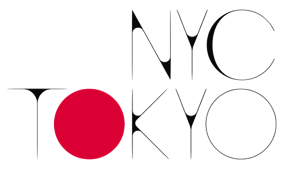 Brazilian graphic designer and well-known illustrator in Curitiba, Brazil, b. 1989. Creator of the high-contrast fashion mag typeface Accent (2011, free download in EPS format on his Behance site). Leigo (2011) is a custom magazine font with an art deco flair. In 2015, he designed the geometric display typeface Moncloa for the Moncloa Tea Boutique. In 2020, he designed Tuttan, a custom fashion mag typeface, for Brazilian rapper Rodrigo Nick. [Google]
[More] ⦿
Brazilian graphic designer and well-known illustrator in Curitiba, Brazil, b. 1989. Creator of the high-contrast fashion mag typeface Accent (2011, free download in EPS format on his Behance site). Leigo (2011) is a custom magazine font with an art deco flair. In 2015, he designed the geometric display typeface Moncloa for the Moncloa Tea Boutique. In 2020, he designed Tuttan, a custom fashion mag typeface, for Brazilian rapper Rodrigo Nick. [Google]
[More] ⦿
|
Neville Brody
[Brody Fonts (was: Brody Associates, Research Studios, Research Arts UK)]

|
 [MyFonts]
[More] ⦿
[MyFonts]
[More] ⦿
|
New Letters
[Markus John]
|
New Letters is a design and typography studio in Nattheim founded in 2015 by German graphic designers Markus John and Armin Brenner. In 2013, they co-designed Tilde. Based on this, Markus created the angular text typeface family Rasmus in 2014 at Ten Dollar Fonts. Other typefaces include Meriva (2015, by Armin Brenner), New Mériva Mono (2017), Solvej (2015, by Markus John), and Voltaire (2014, by Armin Brenner). In 2017, Markus John and Armin Brenner designed the high-contrast display and headline antiqua serif typeface Freya. Theodor is a commissioned typeface. In 2018, they published the extended poster typeface Rois. In 2017, Markus John and Armin Brenner released their take on Helvetica / Neue Haas Grotesk, called Anais. Like Helvetica, it has horizontal / vertical terminals, but the x-height of Anais dominates. In 2021, they released the ink-trapped display typeface Kjell. Ten Dollar Fonts link. [Google]
[More] ⦿
|
Newlyn (was: TextPref, x&y)
[Miles Newlyn]

|
 Miles Newlyn (b. 1969) graduated from St Martins College of Art, London, in 1991. He worked with various London agencies, including Wolff Olins. x&y in London was Miles Newlyn's web site where you could buy his creations from 2002-2004. In 2004, he set up Newlyn.com. Around 2015, he founded TextPref. Many of his typefaces are retail (via, e.g., Emigre), but he speciaizes in commissioned type as well. He is well-known for his logo work (Honda, Cadillac, Saab, Land Rover, Sky, EE, two Olympics). He is based in London.
Miles Newlyn (b. 1969) graduated from St Martins College of Art, London, in 1991. He worked with various London agencies, including Wolff Olins. x&y in London was Miles Newlyn's web site where you could buy his creations from 2002-2004. In 2004, he set up Newlyn.com. Around 2015, he founded TextPref. Many of his typefaces are retail (via, e.g., Emigre), but he speciaizes in commissioned type as well. He is well-known for his logo work (Honda, Cadillac, Saab, Land Rover, Sky, EE, two Olympics). He is based in London. Creations: - TP Atten (2015). A rounded sans typeface named after David Attenborough. Rejuvenated as New Atten and New Atten Round in 2018.
- Becker (LED font).
- Bugini (1996).
- Democratica (Emigre). Roman with a Greek touch, 1991.
- EE Nobblee. A family of dot matrx fonts.
- Ericsson Sans (2006) and Ericsson Capital.
- Ferox (a blackletter face, 1995; see Umbrella Type).
- FNB Sans (2010). A rounded sans typeface family. There are vey few, if any, differences with the Frank typeface family.
- Frank (2010-2011). A humanist sans family done with Francesca Bolognini. Now available as TP Frank and as New Frank.
- HTC Script (2009). A fat finger font for HTC Corporation.
- Luvbug (a 3D font).
- The curly Missionary (1992, Emigre).
- Modena (2008). A corporate type family. There are also IR Modena and HMRC Modena.
- Neulin 9 Roman (1994).
- In 2021, Miles Newlyn, Riccardo Olocco and Krista Radoeva co-designed New Spirit, a 10-style typeface that revives the comfort food font Windsor.
- Nuke Plain (1994). In the early nineties style of Democratica and Barnbrook's atheist-meets-crusader style.
- Remington German and Remington Plain. Heavy typefaces made in 1994.
- Rubrik (2011). A well-rounded monoline sans family reminiscent of architectural drawings. At Type Network, you can buy New Farm (2013).
- Sabbath Black (1994, Emigre). A blackletter font.
- Sky Text (2009). A custom sans typeface for BSkyB Ltd.
- Style (2004). A painters font.
- Tonnage Sans and Tonnage Serif (Emigre, 1996). An homage to David Harris's Chromium typeface.
- Verona (2007). A sturdy condensed text typeface.
- A set of six typefaces for David Carson to use in Raygun Magazine.
- TP Hero (2015).
- TP Zen (2015, rounded sans) and New Zen (2017, developed in collaboration with Elena Schneider).
- TP Farm or New Farm (2015).
- In 2016, Elena Schneider and Miles Newlyn co-designed the almost reverse contrast typeface family New Herman.
Bio at Emigre. Most of his typefaces can be bought from Veer and MyFonts. Klingspor link. FontShop link. [Google]
[MyFonts]
[More] ⦿
|
Nic von Schneider
|
Ann Arbor, MI-based designer of several custom typefaces in 2017, including the logotype Einfini Technologies, as well as Kombu Gothic Sans, Tondue Ornamental, Atlas Geometric and Dolce Terminal Sans. Behance link. [Google]
[More] ⦿
|
Nicholas Reardon
|
Highbridge, UK-based designer of the pencil-themed typeface Tim Evans Branding (2014). [Google]
[More] ⦿
|
Nicholas Rypkema
|
Graphic designer and illustrator in Columbia, SC. In 2014, he created an ultra-black blocky custom typeface. Behance link. [Google]
[More] ⦿
|
Nick Job

|
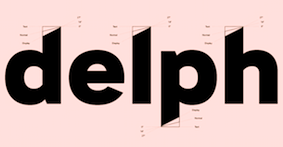 Macclesfield, UK-based type designer who has a degree in graphic design from Nottingham Trent University. David Brezina introduces Nick as follows: Nick Job saw my baby steps as a type designer on the Typophile forum and kindly offered advice and new sources of inspiration. That's how I learned about his enthusiasm for British Rail and modernist design in general. He is a sans-serif specialist by heart, exploring mechanical influences (FS Hackney) as well as Englishness in design (FS Elliot).
Macclesfield, UK-based type designer who has a degree in graphic design from Nottingham Trent University. David Brezina introduces Nick as follows: Nick Job saw my baby steps as a type designer on the Typophile forum and kindly offered advice and new sources of inspiration. That's how I learned about his enthusiasm for British Rail and modernist design in general. He is a sans-serif specialist by heart, exploring mechanical influences (FS Hackney) as well as Englishness in design (FS Elliot). His typefaces: - Energy (2007). A sans family.
- The extensive sans family Camphor (2010, Monotype).
- FS Elliot (2012, Fontsmith).
- The custom font FS Webb Ellis Cup, which was done for the 2019 Rugby World Cup.
- The assertive sans typeface family FS Hackney (2020, Fontsmith).
- Adelphi (2019, Rosetta Type Foundry). Adelphi is an extensive Bauhaus-inspired geometric typeface family (with variable styles) that covers Latin, Greek and Cyrillic. One of the variable axes explores terminal angles.
[Google]
[MyFonts]
[More] ⦿
|
Nick Shinn
[Shinn Type]

|
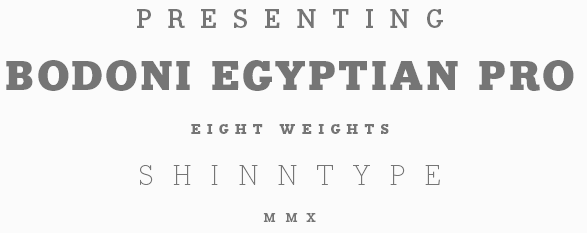 [MyFonts]
[More] ⦿
[MyFonts]
[More] ⦿
|
Nicolas Aubert
|
French graphic designer who has made some typefaces in 2013. Defective web page. Together with Romain Oudin, he set up Lift Type. Designer of a corporate typeface for Printemps de l'Art Contemporain Marseille (2017-2018). [Google]
[More] ⦿
|
Nicolas Franck Pauly
|
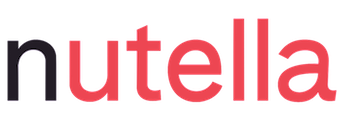 London-based graphic designer and art director. He studied at Ecole de Condé (Lyon, France), Ecole Normale Superieure des Beaux-Arts de Lyon, and ECAL (Lausanne), where he obtained a Masters of Arts in Art Direction and Type Design. He has worked as a graphic designer at Google Zurich (2014), Sang Bleu (2015-2017), Laurence King Publishing (2017-2019), TTTISM (2019-2020) and Lymited (from 2020 onwards). Designer of élancé (2008, FontStruct) and Sallando Headline (2013, a high-contrast superfamily).
London-based graphic designer and art director. He studied at Ecole de Condé (Lyon, France), Ecole Normale Superieure des Beaux-Arts de Lyon, and ECAL (Lausanne), where he obtained a Masters of Arts in Art Direction and Type Design. He has worked as a graphic designer at Google Zurich (2014), Sang Bleu (2015-2017), Laurence King Publishing (2017-2019), TTTISM (2019-2020) and Lymited (from 2020 onwards). Designer of élancé (2008, FontStruct) and Sallando Headline (2013, a high-contrast superfamily). In 2014, he designed the free 4-style font family Breite Grotesk which covers multiple languages and was entirely produced with Metapolator. In 2018, he received a Certificate of Typographic Excellence for a custom typeface he created in 2017 for New York Magazine's Fashion Issue. [Google]
[More] ⦿
|
Nicolas Fuhr
|
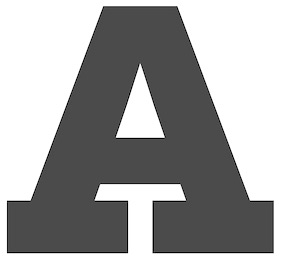 Danish art director, based in Copenhagen. Creator of Casa Madero (2012, a logotype for the winery), Douwe Egberts (2012), FF Berliner (2012, octagonal constructivist typeface), and F-Rune (2012). In 2014, he created the custom typeface families SEA-NVE Sans and SEAS-NVE Slab, together with Muggie Ramadani and Chester Jenkins. [Google]
[More] ⦿
Danish art director, based in Copenhagen. Creator of Casa Madero (2012, a logotype for the winery), Douwe Egberts (2012), FF Berliner (2012, octagonal constructivist typeface), and F-Rune (2012). In 2014, he created the custom typeface families SEA-NVE Sans and SEAS-NVE Slab, together with Muggie Ramadani and Chester Jenkins. [Google]
[More] ⦿
|
Niels Alkema
|
 Den Haag, The Netherlands-based designer, who commissioned the new typeface for Jumbo in 2016, Sympatico, which replaces Jumbo The Sans. That typface was designed by Eyal Holtzman. [Google]
[More] ⦿
Den Haag, The Netherlands-based designer, who commissioned the new typeface for Jumbo in 2016, Sympatico, which replaces Jumbo The Sans. That typface was designed by Eyal Holtzman. [Google]
[More] ⦿
|
Nike
|
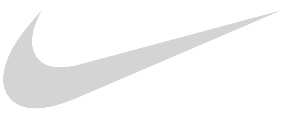 Nike used or uses a number of commissioned fonts. A partial list:
Nike used or uses a number of commissioned fonts. A partial list: - From 1996: NTNYC60-Book, NTNYC60-Heavy, NTNYC60-Light, NTNYC60-Regular.
- From 1998, by Monotype: NikeFootball.
- From 2002, copyright Nike Inc: PrecisionBold, PrecisionBoldItalic, PrecisionLight, PrecisionLightItalic.
- From 2002, by Plazm: Victory-CondensedBold, Victory-CondensedBoldItalic, Victory-CondensedLight, Victory-CondensedLightItalic, Victory-CondensedMedium, Victory-CondensedMediumItalic, VictoryBold, VictoryBoldItalic, VictoryLight, VictoryLightItalic, VictoryMedium, VictoryMediumItalic.
- A 1998 orphan: script.
- Their famous logo font: Swoosh.
- Fonts used by them also include Knockout 94 Ultimate Sumo, Acropolis Black, Agency FB Black Wide, Knockout 29 Junior Lightweight, Knockout 69 Full Lightweight.
- A retail typeface by Linotype, published in 2014: Trade Gothic For Nike Bd Cn.
[Google]
[More] ⦿
|
Niklas Ekholm
[Helsinki Type Studio]
|
[More] ⦿
|
Nils Thomsen
[Nils Types]

|
 [MyFonts]
[More] ⦿
[MyFonts]
[More] ⦿
|
Nils Types
[Nils Thomsen]

|
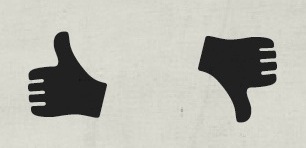 Nils Thomsen or Nils Thomsen-Habermann, (Kiel, Germany) is a graduate of the Masters program in type design at KABK, 2010. Before that, he did a Bachelor of Arts in 2009 at Muthesius Academy of Arts and Design Kiel, Germany. From 2011 Nils Thomsen worked at Bureau Johannes Erler in Hamburg for two years. He set up Nils Types in 2013 and co-founded Typemates with Jakob Runge (Ortenbach) and Lisa Fischenbach (Hamburg).
Nils Thomsen or Nils Thomsen-Habermann, (Kiel, Germany) is a graduate of the Masters program in type design at KABK, 2010. Before that, he did a Bachelor of Arts in 2009 at Muthesius Academy of Arts and Design Kiel, Germany. From 2011 Nils Thomsen worked at Bureau Johannes Erler in Hamburg for two years. He set up Nils Types in 2013 and co-founded Typemates with Jakob Runge (Ortenbach) and Lisa Fischenbach (Hamburg). During this time he participated in the redesign of the German daily, the Süddeutsche Zeitung, ca. 2012, contributing to its new corporate typeface, SZ (Serif, Sans, Sans Condensed, Text, 40 fonts in all). Nils writes: In 2011 and 2012 I participated on the corporate typeface for the German daily, "Süddeutsche Zeitung", at the office "Bureau ErlerSkibbeToensmann". Hand in hand with type designer Henning Skibbe and art director Christian Tönsmann the different styles and weights were carefully designed. The technical part was edited by fontshop.com. SZ Text is based on Excelsior (Chauncey H. Griffith, 1931). The new typeface got narrower and the capitals smaler and lighter. To this we added lots of new details, which worked better and made it overall more efficient in tight columns and line spacing. SZ Serif is based on SZ Text and replaced the "Times" (Stanley Morison, 1931). Higher contrast and slightly narrower letter shapes makes it more useful for headline typography. SZ Sans is designed for strong headlines and replaces "Helvetica" (Max Miedinger, 1957). Simple and silent shapes gives the right touch to the neutral character of "Süddeutsche Zeitung". SZ Sans Condensed is made for tables in the sport or economy segment. It replaces FF Unit (Erik Spiekermann & Christian Schwartz, 2003-2011). His typefaces: - Conto Compressed, Conto Narrow, Conto Condensed, all made in 2015.
- Jabana (2014), Jabana Alt (2015) and Jabana Extras (2015). A compressed rounded font family, with dingbats, designed for menus. It is the first font in his own foundry, Nils Types, est. 2013. It was inspired by having a Schorle at Hamburg's coffee bars. There also is a custom version of Jabana for Lufthansa Magazin.
- Meret (2010) was his KABK graduation project. Meret is a typeface family for news, designed for tight columns and narrow interlinear space. The family includes six weights from light to black in upright and italic style. Christian Schwartz selected Meret in 2011 for use in the American magazine Fast Company. Meret won an award in 2013 at the Communication Art Magazine competition, and in 2011 at the Letter.2 type design competition, organized by the Association Typographique Internationale. It is now part of the OurType foundry collection.
- Perpetua (revival): Done at KABK in 2009-2010.
- Tretton (2009): an elliptic sans that constituted his Bachelors graduation project.
- Conto (2014). A minimalist sans family. Extended some time later in 2014 to Conto Slab.
- In 2016, Lufthansa Magazin commisioned Nils Thomsen and Max Nelles (of G+J Corporate Editors) to create a fun hand-drawn font.
- Comspot and Comspot Tec (2017). A large typeface family with rounded corners and a typewriter feel.
- Mikkel (2018, TypeMates). A versatile creamy / bouncy grocery market or cartoon script family.
- In 2019, Jakob Runge, Nils Thomsen and Lisa Fischbach released Halvar and wrote: Halvar, a German engineered type system that extends to extremes. With bulky proportions and constructed forms, Halvar is a pragmatic grotesk with the raw charm of an engineer. A type system ready to explore, Halvar has 81 styles, wide to condensed, hairline to black, roman to oblique and then to superslanted, structured into three subfamilies: the wide Breitschrift, regular Mittelschrift and condensed Engschrift. Halvar Stencil, which was released simultaneously, is a German engineering stencil font family.
[Google]
[MyFonts]
[More] ⦿
|
Nimio Insight
|
Design studio in Toledo, Spain, who created the hipster typefaces Anfora (2014, Greek simulation) and Prenzlauer (2013). In 2014, Nimio created a decorative set of numerals called Numerologia (2014) and the custom avant-garde sans typeface Geome. Behance link. [Google]
[More] ⦿
|
NM Type
|
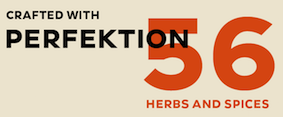 Type foundry set up by Noel Pretorius and Maria Ramos in 2017, jointly in Sweden and Spain. Their typefaces:
Type foundry set up by Noel Pretorius and Maria Ramos in 2017, jointly in Sweden and Spain. Their typefaces: - Kinetic (2017). Kinetic is a typeface family created by Noel Pretorius and Maria Ramos. One of the main sources of inspiration for the design was the art of Alexander Calder, who started working with moving sculptures in Paris in the 1930s. The light, playful and soft appearance of Calder's mobiles was something Pretorius and Ramos wanted to translate into type forms. Kinetic won an award won an award at TDC Typeface Design 2018.
- Meister (2018). A custom typeface for Jägermeister.
- Movement (2019). A free experimental variable font inspired by dance movements.
- Trisco (2021). A custom font for Centro Galego de Arte Contemporánea.
[Google]
[More] ⦿
|
No More Faith Fonts
[Konrad Bednarski]
|
 Graduate of the London College of Communication who works in Paris, where he set up No More Faith Fonts. He is presently based in Dubai. His list of typefaces:
Graduate of the London College of Communication who works in Paris, where he set up No More Faith Fonts. He is presently based in Dubai. His list of typefaces: |
Nobi Kashiwagi
|
In 1995, Nobi Kashiwagi moved to Brooklyn, New York City, from Japan to study photography at Parsons School of Design where he graduated with a Bachelors in Fine Art. Nobi has been working at the acclaimed fashion-advertising agency AR New York, where he has managed several advertising, branding and design projects. His experience at AR includes editorial design of Influences Magazine which received a Typographic Excellence at TDC and Distinctive Design merit at ADC. Nobi also holds a black belt in Brazilian Jiu-jitsu. His design studio, Endash Space, is based in Brooklyn. He designs mostly commissioned typefaces, such as a rounded sans typeface for Art Asia Pacfic Magazine (2013), Didot Sans (2017), and Carl Fischer Font (2016). In 2014, he designed a lowercase for Trajan. In 2017, he tweaked Avant Garde and called it Avant Garde Grotesque. In 2018, he published the text typeface family Wintour, and in 2019 the text typefaces Saggio and France. [Google]
[More] ⦿
|
Noel Pretorius
|
 Swedish graphic and type designer whose company is called Made By Noel. He graduated from the MATD program at the University of Reading in 2015. His graduation project was Frances (2015). This flexible type system includes roman, script and sans styles, and covers Latin, Arabic, Greek and Cyrillic. He also made the custom children's script font Friends (2016), a set of numerals for Rolleiflex (2016), and a slightly modified Futura for a custom project called Folkoperan (2016).
Swedish graphic and type designer whose company is called Made By Noel. He graduated from the MATD program at the University of Reading in 2015. His graduation project was Frances (2015). This flexible type system includes roman, script and sans styles, and covers Latin, Arabic, Greek and Cyrillic. He also made the custom children's script font Friends (2016), a set of numerals for Rolleiflex (2016), and a slightly modified Futura for a custom project called Folkoperan (2016). In 2016, Noel joined TypeTogether as a type designer. In 2018, Noel Pretorius and Maria Ramos set up NM Type. Together, they designed the custom typeface Meister for Jägermeister. In 2019, Noel Pretorius and Maria Ramos co-designed Movement, a free experimental variable font inspired by dance movements. In 2021, they created Trisco, a custom font for Centro Galego de Arte Contemporánea. [Google]
[More] ⦿
|
Nolan Paparelli
|
 Nolan Paparelli is a Swiss graphic and type designer currently based in Munich, Germany. His practice focuses mainly in developing editorial design, visual identity, web and type design solutions for clients across the cultural and commercial fields. After graduating from ECAL/University of Art and Design of Lausanne in 2015 with a Bachelor in Graphic Design, he has worked on various commissions in collaboration with Editions Attinger, Herburg Weiland, Kairos Studio and Swiss Typefaces among others.
Nolan Paparelli is a Swiss graphic and type designer currently based in Munich, Germany. His practice focuses mainly in developing editorial design, visual identity, web and type design solutions for clients across the cultural and commercial fields. After graduating from ECAL/University of Art and Design of Lausanne in 2015 with a Bachelor in Graphic Design, he has worked on various commissions in collaboration with Editions Attinger, Herburg Weiland, Kairos Studio and Swiss Typefaces among others. His typefaces include the sans family Everett and Everett Mono (2014-2019), available at Weltkern. As a special derived type, he released Everett Lukumi in 2017 for the Lukumi language, which is used mainly by the Yoruba community in Cuba during Santeria ceremonies. Lukumi is a hybrid of Spanish and African Yoruba. He also created the poster typeface Suba (2017). [Google]
[More] ⦿
|
Nomos Glashütte SA
|
URW++ made the corporate sans typeface Nomos in 2012 for Nomos Glashütte SA. [Google]
[More] ⦿
|
Non-Format
[Jon Forss]
|
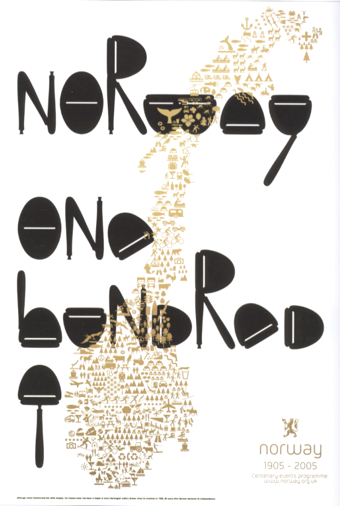 Ekhornforrss Limited / Non-Format is an Anglo-Scandinavian creative direction and design team. Creative directors and founding partners Kjell Ekhorn (from Norway) and Jon Forss (from the UK) started the company in 2000. In their own words: They work on a range of projects including art direction, design and illustration for arts&culture, music industry and fashion and advertising clients. They also art direct Varoom: the journal of illustration and made images. Nominated for Best Design Team in Music Week's Creative and Design Awards 2001. Non-Format is based in London, UK and Minneapolis, USA. In 2006, Kjell Ekhorn and Jon Forss designed a poster for the Royal Norwegian Embassy in London, which won an award at TDC 27. Their work has been published here: The Anatomy of Design, Adobe Magazine, Archive, Brain, Campaign, CD-Art, Communication Arts, Creative Review, D&AD Annual 2005, The Creator Studio, Design Week, Dos Logos, DVD-Art, Etapes, Eye Magazine, 55 Degrees North, Grafik, Graphic, Idea, IdN, It's A Matter Of Packaging, The Layout Look Book, Limited Edition, Mag-Art, Maximalism, Music Week, New Typographic Design, North by North, 1000 Type Treatments, Print, Printed Matter, Romantik, Sampler 2&3, Serialize, Sonic, Tokyo TDC Volume 17&18, Type-One, Type Specific, Typographics 4&5, Typography 27, Typography Workbook.
Ekhornforrss Limited / Non-Format is an Anglo-Scandinavian creative direction and design team. Creative directors and founding partners Kjell Ekhorn (from Norway) and Jon Forss (from the UK) started the company in 2000. In their own words: They work on a range of projects including art direction, design and illustration for arts&culture, music industry and fashion and advertising clients. They also art direct Varoom: the journal of illustration and made images. Nominated for Best Design Team in Music Week's Creative and Design Awards 2001. Non-Format is based in London, UK and Minneapolis, USA. In 2006, Kjell Ekhorn and Jon Forss designed a poster for the Royal Norwegian Embassy in London, which won an award at TDC 27. Their work has been published here: The Anatomy of Design, Adobe Magazine, Archive, Brain, Campaign, CD-Art, Communication Arts, Creative Review, D&AD Annual 2005, The Creator Studio, Design Week, Dos Logos, DVD-Art, Etapes, Eye Magazine, 55 Degrees North, Grafik, Graphic, Idea, IdN, It's A Matter Of Packaging, The Layout Look Book, Limited Edition, Mag-Art, Maximalism, Music Week, New Typographic Design, North by North, 1000 Type Treatments, Print, Printed Matter, Romantik, Sampler 2&3, Serialize, Sonic, Tokyo TDC Volume 17&18, Type-One, Type Specific, Typographics 4&5, Typography 27, Typography Workbook. Typefaces by them include Heroine (2008), a titling typeface created for Very Elle Magazine, and Otto (2009, their first commercial family). Gridiron (2013-2014) is a custom typeface family commissioned by ESPN magazine for their 2013 College Football Preview issue. Three versions of the Gridiron typeface were developed for different applications: The lightest weight, Quarterback, is used for headlines. The two bolder weights are Fullback and the more intricately structured Touchdown. These three styles cover the entire spectrum from athletic lettering to labyrinthine extravaganza. The hipster typeface Coleman Air (2015) is a special version of their Nomi typeface, created for Coleman's Japanese catalogue of outdoor gear. In 2017, for SModa Magazine, they designed the summa cum laude partly curvy typeface Sølve. Klingspor link. Behance link. [Google]
[More] ⦿
|
Norm
[Dimitri Bruni]
|
Norm is a graphic design studio in Zürich, founded in 1999 by Dimitri Bruni (b. 1970) and Manuel Krebs (b. 1970). In 2005, Ludovic Varone (b. 1977) joined NORM. NORM took responsibility for the corporate identity of Swatch watches (2010-2015) and for signage at the SANAA designed Musée du Louvre-Lens (2010-2012). In 2011, they were awarded the Swiss Grand Prix for Design. They designed - Normetica (1999, at Lineto; now retired). Monospaced.
- Prima (1999, at Lineto; now retired).
- LL Simple (1999-2000). Monospaced. A redesign with the hep of Giliane Cachin is in the works.
- LL Replica and LL Replica Mono (2008). A gridded sans family.
- LL Riforma (2012-2017).
- LL Purple (2006). A didone family by Aurèle Sack and Norm.
- Tetra B (1999). A monospaced typeface.
- Regular (1999, Binnenland). It was extended later by Nik Thoenen.
- Corporate typefaces by Norm include Omega and Swatch.
Typedia link. Lineto link. [Google]
[More] ⦿
|
North Type (was: Charles Daoud Type, or: CD Type)
[Charles Daoud]

|
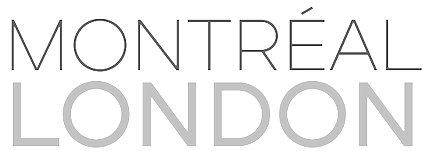 Charles Daoud is a graphic designer and art director in Laval, near Montreal. He was born in Montreal in 1980. He set up Charles Daoud Type, or CD Type, in 2013 and renamed his type foundry North Type in 2018. His typefaces include:
Charles Daoud is a graphic designer and art director in Laval, near Montreal. He was born in Montreal in 1980. He set up Charles Daoud Type, or CD Type, in 2013 and renamed his type foundry North Type in 2018. His typefaces include: - Dense (2013). A free geometric sans serif typeface family.
- Dual (2014). A geometric sans with many features that will make hipsters happy. Dual 100 is one of the finest hairline sans typefaces of the recent past. Dual 300 is free.
- Locke (2016). A stunning stylish slab serif typeface family.
- Quartier (2011). A sans headline typeface.
- Radio Canada (2017). A custom corporate humanist sans typeface for the French TV network in Quebec, co-designed by Charles Daoud and Alexandre Saumier-Demers of Coppers and Brasses. Google Fonts link. Github link.
- Voga (2014). A stylish high-contrast skyline condensed didone with a free Medium weight.
- Grand (2018). He writes: Inspired by old school sign painting techniques, Grand is a display condensed sans serif that isn't shy to put its foot down. Regular and Italic are free.
[Google]
[MyFonts]
[More] ⦿
|
NR2154
|
Design firm that created Luce for InStyle magazine in 2016. The name Luce refers to Time co-founder Henry Luce. [Google]
[More] ⦿
|
Nymark Type
[Andreas Nymark]
|
Born in Karlstad, Sweden, Andreas Nymark studied at Hyper Island (class of 2011) and now works in Stockholm. In 2018, he set up Nymark Type. At Type@Paris 2016, Andreas Nymark designed the text typeface Svedala to provide a serif counterpart of Sweden's national typeface, Sweden Sans. In 2021, he released Tranemo, a geometric sans that reinterprets Tratex, the official swedish traffic sign font. Designer of the custom font Klaravik Sans. [Google]
[More] ⦿
|
Obi Sans
|
The house font of the company OBI. Obi Sans was developed by Elsner&Flake. [Google]
[More] ⦿
|
Océ Garamond
|
The house font of the company Océ, based on Adobe Garamond. [Google]
[More] ⦿
|
Octavio Pardo

|
 Or Octavio Pardo Virto. Born in Pamplona, Spain, Octavio got his first degree in Fine Arts at the University of Barcelona. After several years working for various design studios and advertising agencies, he moved to UK where he graduated from the MA in Type Design at the University of Reading in 2010. After collaborating with the Typofonderie in Paris for several months, Octavio went back to Pamplona. His typefaces:
Or Octavio Pardo Virto. Born in Pamplona, Spain, Octavio got his first degree in Fine Arts at the University of Barcelona. After several years working for various design studios and advertising agencies, he moved to UK where he graduated from the MA in Type Design at the University of Reading in 2010. After collaborating with the Typofonderie in Paris for several months, Octavio went back to Pamplona. His typefaces: - Ibarra Real (2007), done with the help of José María Ribagorda. Ribagorda writes: IbarraReal is a public-domain font of Ibero-American character, created in 2005 as a revival of the types cast by Jeronimo Gil for the Royal Spanish Academy's edition of Don Quixote, printed in Madrid by Joaquin Ibarra in 1780.. The vignettes were designed by Manuel lvarez Junco, Andreu Balius, Didac Ballester, Paco Bascuñan, José María Cerezo, Alberto Corazón, Oyer Corazón, Pablo Cosgaya, Rubén Fontana, Javier García del Olmo, José Gil Nogués, Pepe Gimeno, Fernando Gutiérrez, Juan Martínez, Laura Messeguer, Juan Antonio Moreno, Juan Nava, Miguel Ochando, Josep Patau, Alejandro Paul, Marc Salinas, Emilio Torné, Alex Trochut or Roberto Turégano. Free download here. Github link.
- Blackwood (2011). An ornamental all-caps typeface that takes its inspiration from a mixture of the woodcuts of the early 18th century and fat typefaces of today's magazines.
- Cabriole (2011). A text typeface done for his thesis at Reading. It is a very Latin typeface, with round contours and a lot of pizzazz---as if it came straight out of old Iberian textbooks..
- Terabyte (2011). A monoline corporate typeface in current development for Aspa Company.
- Sutturah. A fat signage face, published by Rosetta Type, and awarded by TDC 2012. The Cyrillic was developed with the help of Sergei Egorov.
- In 2013, he contributed to the Cyrillic of Adelle (2009, Type Together), a typeface first developed by Veronika Burian, Jose Scaglione and Alexandra Korolkova.
- In 2016, he created an experimental, almost hipster, typeface, and finished a custom typeface, NRK Ethica Slab, for Norway's main media group.
- For the logo and credits of Fashion Film directed by Human Produce, he designed Myth (2016).
- With Elena Ramirez, he created Cubit (2016), a custom monospaced typeface for a Chicago-based interior design Studio.
- Gupter is a condensed serif font for Latin and Devanagari. Its design is inspired by conventional fonts like Times New Roman. The ufo files included in the Github repository are synchronized so they will allow the user to create intermediate instances if required. The Devanagari designed by Modular Infotech, Pune, India, in 2000. Free at Google Fonts.
- EB Garamond (2017). EB Garamond was started in 2011 by Georg Duffner (Austria) as a Google Web font for Latin and Cyrillic. It is named after Egelnoff and Berner. Duffner explains: The source for the letterforms is a scan of a specimen known as the Berner specimen, which, composed in 1592 by Conrad Berner, son-in-law of Christian Egenolff and his successor at the Egenolff print office, shows Garamont's roman and Granjon's italic fonts at different sizes. Hence the name of this project: Egenolff-Berner Garamond. In 2017, Octavio Pardo entered the EB Garamond project. Rhe fonts can now be downloaded from Github. A variable version of EB Garamond is planned.
Github link. [Google]
[MyFonts]
[More] ⦿
|
Ogentroost
[Diederik Corvers]

|
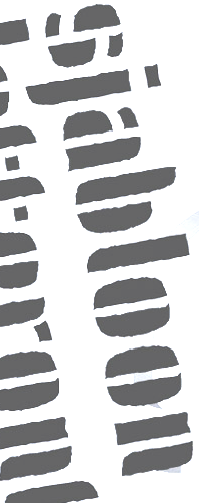 Ogentroost is the typographic wing of Dutch corporate identity designer Diederik Corvers, who is located in Dordrecht near Rotterdam, where he runs Klaar Ontwerpen.
Ogentroost is the typographic wing of Dutch corporate identity designer Diederik Corvers, who is located in Dordrecht near Rotterdam, where he runs Klaar Ontwerpen. He made these corporate identity typefaces: Thoth, Quattron, 123Interim, Ogentroost (1993-2013, an italic for posters, and an accompyanying humanist sans), Durertype Capital and Digital (1992-2012), Export (2002: a rounded stencil), Together (1997, a script), CrossWord (another stencil), Suomi (2004, an elliptical sans), Suomi Slab (2005). The Suomi Ultra weight is free. Early typefaces include Cross (2003, a stencil type), Landvast (2006), Ogle (2006, a monospaced typeface), Oldskool Black (2007, a fat poster typeface), Paintstripper (2010, a piano key stencil face), Rule (2011, a gothic with humanist traits). Typefaces from 2012: Ancona, Beep Beep (an experimental textured typeface), Novus (2012-2013, a didone based on the logo he made for the Dutch National Television news show Nieuwsuur). In 2014, he published Serious Sans, the grown-up brother Comic Sans never had. The limited character version of this font is free. The full typeface is at MyFonts. MyFonts link. Klingspor link. Behance link. Old MyFonts link. [Google]
[MyFonts]
[More] ⦿
|
OGJ Type Design
[Oliver Jeschke]

|
 Aka OGJ Type, Oliver Jeschke is based in Berlin. In November 2022, The Type Founders acquired the OGJ Type Collection. Since then, Oliver has worked under an exclusive type design contract through November 2025. Starting in December 2025, he plans to release new typefaces---including Version 1 International---through a new, truly independent type foundry, free from private equity and corporate ownership.
Aka OGJ Type, Oliver Jeschke is based in Berlin. In November 2022, The Type Founders acquired the OGJ Type Collection. Since then, Oliver has worked under an exclusive type design contract through November 2025. Starting in December 2025, he plans to release new typefaces---including Version 1 International---through a new, truly independent type foundry, free from private equity and corporate ownership. With Oliver Mayer (Tatin, Basel), he created the avant garde linear grotesk typeface family Version 1 International (2013). The typeface family, characterized by upward diagonal strokes in the f, h, m, n and u, was published by Volcano. Volcano writes: The Version 1 font family is a mannered geometric linear-grotesque, hand-drawn and developed by Oliver Jeschke and Oliver Mayer at Tatin Design Enterprises in Basel, Switzerland and Berlin, Germany. It was created in a three-month training and was further developed in the later stages as OpenType font. In 2015, influenced by the work of Swiss master designer Max Bill, Oliver Jeschke created the Greek simulation typeface family Bill Display, the sans typeface Bill Corporate, and Bill Corporate Narrow. See aso Bill Corporate Mx (2016) and Bill Display Lowercase. Spectators Headline (2016) is a breezy semi-informal notebook sans family. Typefaces from 2017 include Sequel Sans and Sequel Rounded. Calling it a "post-Max Bill design", Sequel Sans was developed in collaboration with the Max Bill Georges Vantongerloo Foundation. In 2018, Sequel 100 Wide and Sequel 100 Black were added to that collection. Typefaces from 2018: Shapiro (a 32-style grotesk in which horizontal and vertical strokes are nearly identical in width), Temper Wide (slab serif). Typefaces from 2019: Shapiro Pro (138 styles), Shapiro Base (sans), Darbee Legend (a sans family with cuts named after famous racehorses). Typefaces from 2020: Sequel Sans VF (the variable font version of Sequel Sans), JT Energy (a great addition to the geometric sans genre featuring optically consistent line thickness; it comes with two condensed styles called JT Energy Placard, and with JT Energy Variable). Typefaces from 2021: JT Collect (a 14-style grotesk used by Nike). Typefaces from 2022: Sequel Geo (an 82-style Swiss sans family).. [Google]
[MyFonts]
[More] ⦿
|
Okay Type
[Jackson Cavanaugh]

|
 Jackson Showalter-Cavanaugh (b. Waterloo, IA, 1981) is a freelance graphic designer and independent type designer based in Brooklyn, NY, and/or Chicago. He founded Okay Type in 2009.
Jackson Showalter-Cavanaugh (b. Waterloo, IA, 1981) is a freelance graphic designer and independent type designer based in Brooklyn, NY, and/or Chicago. He founded Okay Type in 2009. Jackson designed Alright Sans (2009, clean sans) and Alright Display (voguish hairline sans). In 2012, he created The Harriet Series (with Harriet Text and Harriet Display subfamilies), a full Sotch Roman / Baskerville / didone family that won an award at TDC 2012. In 2016, he was asked by Mac Lewis, artistic director at Playboy, to design a new headline typeface for the magazine. Cavanaugh designed a heavy slab serif for the occasion. In 2019, he released the ultra-black typeface family Okay. [Google]
[MyFonts]
[More] ⦿
|
Oktar Akin
|
Creative director in Istanbul, who oversaw the development of the custom typeface Audio Book Sans in 2017. [Google]
[More] ⦿
|
Oliver Jeschke
[OGJ Type Design]

|
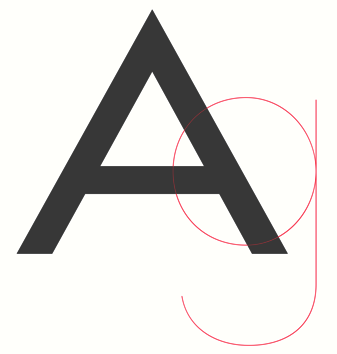 [MyFonts]
[More] ⦿
[MyFonts]
[More] ⦿
|
Olivier Nineuil
[ABC Typo (was: Bonté Divine)]

|
[MyFonts]
[More] ⦿
|
Ollie Saward
|
BA (Hons) Graphic Design student in his final year at Leeds College of Art in 2011. He lives in London. Creator, also in 2011, of a typeface for use as the identity for singer songwriter Emily White. Poster of type typefaces (2011). Behance link. [Google]
[More] ⦿
|
Ondrej Jób
[Setup (was: Urtd)]

|
 [MyFonts]
[More] ⦿
[MyFonts]
[More] ⦿
|
OneABC
|
 A custom-made typeface for ABC (the government-funded Australian Broadcast Corporation). In 2016, the cost of 32,750 dollars caused an uproar in Australia when the extravagant amount was questioned by Liberal senator James Paterson to The Australian. It comes soon after the ABC executive behind the typeface resigned. Digital director Angela Clark has left the ABC for the commercial sector. Media report in The Australian on September 19, 2016.
A custom-made typeface for ABC (the government-funded Australian Broadcast Corporation). In 2016, the cost of 32,750 dollars caused an uproar in Australia when the extravagant amount was questioned by Liberal senator James Paterson to The Australian. It comes soon after the ABC executive behind the typeface resigned. Digital director Angela Clark has left the ABC for the commercial sector. Media report in The Australian on September 19, 2016. Its designer is Wayne Thompson of Australian Type Foundry. Link with a video. [Google]
[More] ⦿
|
Op. Cit. Ibid. (or: OCI)
[Kia Tasbihgou]
|
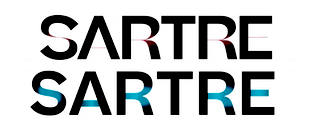 London-based type designer. Creator of these retail typefaces:
London-based type designer. Creator of these retail typefaces: - Beatrice (2018). A sans, with Lucas Sharp and Connor Davenport, for Sharp Type.
- OCI Taper (2016).
- Jeder Grotesque (2016-2018). Originally done for Vanity Fair.
- Propos (2018). A variable font influenced by Roger Excoffon's Antique Olive.
- Peace (2016). A sans.
She also does custom design, including a titling typeface for Christie's Magazine, commissioned by B.A.M. in 2018. Home page. [Google]
[More] ⦿
|
Original Type
[Artur Schmal]
|
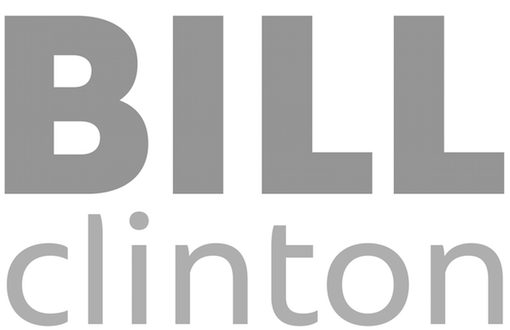 Born and raised in Den Haag, Artur Schmal was formed at the KABK in type and media. He founded Original Type in 2018. In 2021, Original Type joined Type Network. His typefaces:
Born and raised in Den Haag, Artur Schmal was formed at the KABK in type and media. He founded Original Type in 2018. In 2021, Original Type joined Type Network. His typefaces: - At OurType, he designed Parry (+Condensed) and Parry Grotesque (+Condensed) in 2006. Schmal says that it was inspired by Edmund Fry and Thorowgood. Parry gets its name from John Parry, whose painting A London Street Scene (1840) captures the typographic landscape of the Victorian Era. Type Network: Parry has its roots in the robust slab serif typefaces that appeared in the Victorian age. It is not a revival though, and its aesthetics make it truly a contemporary typeface. The soft curves and quirky serifs combine with sharp cut stroke endings to produce a text image that is softer than the rigid nature of most slab serifs.
- Kufam. Artur writes: Kufam is the result of the collaboration between me and my design partner Wael Morcos in the second edition of the Typographic Matchmaking project in which we set out to design a typeface containing both Arab and Latin scripts that would complement each other. The typeface finds its inspiration in sources far apart from each other in both time and distance: the Arabic Kufi script in the lowercase and dutch urban lettering seen in the twenties and thirties of the previous century in the capitals of the Latin. The font supports the Arabic and Persian scripts. In 2014 Kufam was published on the now defunct type label OurType, where the font development team expanded the character set from Standard to Pro and remastered the fonts. Kufam was available on OurType until 2017. From 2018 Kufam was reworked to meet Google Fonts Latin Expert and Arabic character sets and in 2020 Kufam was made available on Google Fonts (with Wael Marcos). Github link.
- Bonnie. A friendly geometric sans. In 2014 Kufam was published on the now defunct type label OurType, where the font development team expanded the characterset from Standard to Pro and remastered the fonts. Kufam was available on OurType until 2017. In 2018, Kufam was reworked to meet Google Fonts Latin Expert and Arabic character sets and in 2019 Kufam was made available on Google Fonts.
- Several custom typefaces.
Home page of Arthur Schmal. Old URL. [Google]
[More] ⦿
|
Oscar Fernando Guerrero Cañizares
[Sumotype Foundry]

|
 [MyFonts]
[More] ⦿
[MyFonts]
[More] ⦿
|
Oscar Yáñez
|
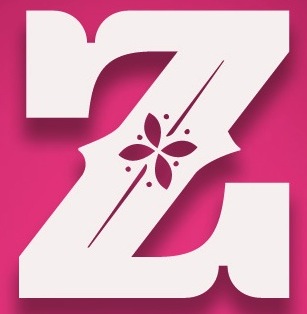 Oscar Yáñez (b. Mexico City) has a Bachelor's degree in Graphic Communication Design from the Universidad Autónoma Metropolitana (UAM) and a Master's degree in Typographic Design from the Centro de Estudios Gestalt. He studied Project Management in the Instituto Tecnológico Autónomo de México and a Masters degree in Type Design at Centro de Estudios Gestalt. He was involved and leading designs and redesigns in more than fifty magazines, newspapers and websites like Time Inc Expansion, Editorial Televisa, Reforma, El Universal and Khaleej Times newspapers. Nowadays he is Group Design Director for Harper's Bazaar Arabia and is based in Dubai.
Oscar Yáñez (b. Mexico City) has a Bachelor's degree in Graphic Communication Design from the Universidad Autónoma Metropolitana (UAM) and a Master's degree in Typographic Design from the Centro de Estudios Gestalt. He studied Project Management in the Instituto Tecnológico Autónomo de México and a Masters degree in Type Design at Centro de Estudios Gestalt. He was involved and leading designs and redesigns in more than fifty magazines, newspapers and websites like Time Inc Expansion, Editorial Televisa, Reforma, El Universal and Khaleej Times newspapers. Nowadays he is Group Design Director for Harper's Bazaar Arabia and is based in Dubai. Designer of Fabrica Texto (Italica, Versalita, Bold, 2008) and Lucrecia Texto (Itálica, Versalita, Bold), both winners in the Tipos Latinos 2008 competition for best text family. Grand prize winner at Tipos Latinos 2010 for his titling type family Carlota. Other typefaces by him include Aion, Moneda, and Condesa. Viga (2011, free at Google Web Fonts) is a heavy angry macho sans. In 2012, he created Amate, a type that was designed for a newspaper in Cuernavaca. Calavera (2012, Cocijotype) is an ornamental display typeface that is based on the Mexican Tuscan letter style and on the work by Mexican engraver Manuel Manilla. It won an award at Tipos Latinos 2014. Dorotea (2012) is a Latin / Greek / Cyrillic typeface family created for text in books and periodicals. The name is in honor to Dorothy Abbe, typographer, puppeter and close friend of William Addison Dwiggins. At ATypI 2009 in Mexico City, he spoke eloquently about Boudewijn Ietswaart and the development of the Balduino typeface (by the Círculo de Tipógrafos). In 2014, he created the curly ronde script typeface Bistro for Gastronomie Magazine. He lives in Mexico City and is Design Editor at GEE. Founding member of Círculo de Tipógrafos in Mexico. In 2010, Cristobal Henestrosa strated work on Charter, which is based on an experimental typeface named Charter, designed yet never fully finished by William Addison Dwiggins. It is an upright italic, unconnected script typeface, whose main features are a pronounced contrast, condensed forms and exaggerated ascenders. While Dwiggins worked on this project from 1937 to 1955, he only completed the lowercase and a few other characters. However, it was used to set a specimen in 1942 and a short novel in 1946. The sources that Cristobal used for Royal Charter (and later, Mon Nicolette) were the original sketches by WAD as well as printing trails kept at the Boston Public Library, and a copy of the 1946 edition of The Song-Story of Aucassin and Nicolette. This gorgeous typeface can be used successfully in headlines, subheads and short passages of text from 12 points onwards. It was published in 2020 as Mon Nicolette at Sudtipos, where the help of Oscar Yanez was acknowledged. Mon Nicolette also comes in a variable format with weight and optical size axes. [Google]
[More] ⦿
|
Oskar Lübeck
[Bold]
|
[More] ⦿
|
Out of the Dark (was: Fontseek)
[Philipp Herrmann]
|
 Philipp Herrmann (Zurich, Switzerland) founded Out of the Dark in 2013. The other designers associated with Out of the Dark include Massimiliano Audretsch, Hammer, Tobias Holzmann, Mirco Schiavone, Philipp Herrmann, Fabio Furlani, and Raphaël de la Morinerie.
Philipp Herrmann (Zurich, Switzerland) founded Out of the Dark in 2013. The other designers associated with Out of the Dark include Massimiliano Audretsch, Hammer, Tobias Holzmann, Mirco Schiavone, Philipp Herrmann, Fabio Furlani, and Raphaël de la Morinerie. Philipp Herrmann designed these commercial typefaces: - Blitz (2016: by Philipp Herrmann and Massimiliano Audretsch).
- Copy (2012-2017: a sans family with uniform tracking across all weights).
- Cosplay (2022). Cosplay combinesg organic shapes with a grid-based structure. It was drawn from scratch with loose references to Lazybones (Letraset Studio, 1972) and Cooper Nouveau (Dave West / Dave Foster), and typography spawned by the rave culture.
- Crack (2013).
- Fleurie (2009, by "Flag").
- Gza (2013: wedge serif).
- Hammer (2010: this font family seems to have been designed by Hammer, Rothenberger & Schatz, so its presence on Herrmann's web site is puzzling).
- Layer (2012).
- Plakat (2013).
- Protokoll (2017).
- Quick Marker and Quick Brush (2013, brush script).
- Raw (2006-2017).
- Rauschen (2021). Resonanz A and B (2022) are the slab serif companions to Rauschen A / B.
- Rza (2020). A rounded Cooper Blackish typeface family.
- SoLow (2019). A pixel typeface.
- The commissioned copperplate serif typeface Campari Bold (2019) and the macho sans titling typeface Ausano Bold for Ramazzotti (2019).
- For a custom job, he designed Toy (2019), which is based on the title lettering of Le vie d'Italia, the magazine of Touring Club Italiano between 1917 and 1968.
- Syncro (2020) and Syncro Bold (2021). A new experimental serif by Fabio Furlani and Philipp Herrmann, based on Ronaldson Clarendon (1885: Alexander Kay for L. Johnson & Co).
Herrmann's home page. [Google]
[More] ⦿
|
Outras Fontes
[Ricardo Esteves Gomes]

|
 A Brazilian digital type foundry located in Rio de Janeiro. It was founded in 2006 by Vitoria, Brazil-based Ricardo Esteves Gomes (b. 1980, Vitória, Brazil), a graphic designer and professor (at UFES), and Jarbas Barros Gomes.
A Brazilian digital type foundry located in Rio de Janeiro. It was founded in 2006 by Vitoria, Brazil-based Ricardo Esteves Gomes (b. 1980, Vitória, Brazil), a graphic designer and professor (at UFES), and Jarbas Barros Gomes. Their fonts include the flowing script Maryam (2007, Ricardo Esteves Gomes; this typeface won an award at Tipos Latinos 2008; also available from T-26), the Celtic script Jana Thork (2007-2008; see here for this typeface which won an award at Tipos Latinos 2008), Gaia (2008, ornamental dingbats), Hachura (2008, impressionist sketched garalde) and the medieval script Scrivano (2007, also at T-26). In 2009, he published the ultra-black slightly techno sans family Force, which includes a great Force Dingbats typeface. It won an award at Tipos Latinos 2010. The powerful inline and headline family Alegria was published in 2010. In 2010, Outras Fontes made the custom typeface for the Brazilian Coca-Cola Light Plus campaign. This hand-printed typeface was ordered by Ana Couto Branding & Design studio. In 2012, he published the grungy typefaces Rebellia and Rebellia Dingbats. In 2013, he published Progressiva (a lively sans family with oomph that won an award at Tipos Latinos 2014), and Directa Serif, a typeface family with condensed letters of large x-height and low contrast. In 2019, Ricardo Gomes published Capellina (Script and Caps). I Love Typography link. [Google]
[MyFonts]
[More] ⦿
|
Overtone
[Rasmus Lund Mathisen]
|
 Rasmus Lund Mathisen is a prolific Danish type designer who lived in Copenhagen. At the School of Design of KAKD (The Royal Danish Academy of Fine Arts), he obtained a BA (2008-2011) and an MA (2011-2014). After graduation Rasmus joined Overtone in Aarhus. Overtone specializes in branding and corporate type design.
Rasmus Lund Mathisen is a prolific Danish type designer who lived in Copenhagen. At the School of Design of KAKD (The Royal Danish Academy of Fine Arts), he obtained a BA (2008-2011) and an MA (2011-2014). After graduation Rasmus joined Overtone in Aarhus. Overtone specializes in branding and corporate type design. His typefaces include: - Nima. A free slab serif.
- Beika, Beika Leika. Free sans family.
- Bila. An angular German expressionist typeface.
- Dada. A stencil face.
- Enno. A lava lamp typeface.
- Cela.
- OLEW. A DIN-like technical typeface.
- At Overtone, and in cooperation with DR Design, Rasmus developed the bespoke sans type family DR Publik in 2019 for The Danish Broadcasting Corporation. DR Publik will be used uniformly on TV channels, streaming platforms, news services, radio channels, websites and apps. This classy Scandinavian typeface family is characterized by nearly monolinear stroke widths and horizontal or vertical terminals.
[Google]
[More] ⦿
|
Owen Mathers
|
Norwich University College of the Arts graduate (2003) who first worked in East Anglia and then in London as a graphic designer. In 2012, he created a bespoke typeface for a tanning salon called Illusions. [Google]
[More] ⦿
|
Pacifica
|
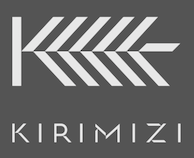 A very innovative graphic design studio based in Matosinhos (Porto), Portugal. In 2015, they custom-designed the Kirimizi typeface for a beach hotel project in Mozambique. [Google]
[More] ⦿
A very innovative graphic design studio based in Matosinhos (Porto), Portugal. In 2015, they custom-designed the Kirimizi typeface for a beach hotel project in Mozambique. [Google]
[More] ⦿
|
Panuwat Usakulwattana
|
Panuwat Usakulwattana (b. 1990) is a Thai typeface designer who studied communication design at Bangkok University, where his senior project involved research into the relationship between dyslexia and type design. Panuwat is co-founder of the Totem Project, which was launched for young designers who are interested in typeface production. Currently, Panuwat is senior type designer at Cadson Demak in Bangkok. He has designed many Thai fonts, most notably Thutiya, which won an award at Granshan 2017. He also designed the custom typeface Tatsana Suksa for the Tourism Authority of Thailand, and a custom font for the popular spa and skincare product Panpuri. He was a speaker at BITS MMXV (the Bangkok International Typographic Symposium, 2015). Interview by the Bangkok Post. Thutija won an award at Granshan 2017. Panuwat was also on the Google Fonts Thai Collection development team. In 2021, he designed Bree Thai for Type Together. [Google]
[More] ⦿
|
Pascal Naji Zoghbi
[29 Letters]
|
 [More] ⦿
[More] ⦿
|
Patrick Griffin

|
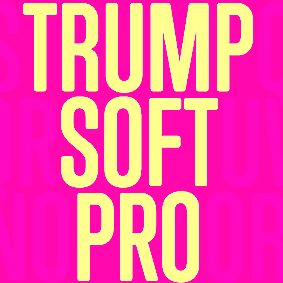 Type designer at Canada Type. Wikipedia tells us that Patrick Griffin had been locked away in a mental institution by Carter and Barbara, after he walked in on his mother performing oral sex on Jackie Gleason. He had a nervous breakdown and was sent to a mental hospital, where he came to the conclusion that Gleason was evil because he was fat, leading him to hate fat people. However, that is a different Patrick Griffin. The real Patrick Griffin, a graduate of York University, lives and works in Toronto, where he founded Canada Type and made it the most successful Canadian type foundry. His work is summarized in this 2009 interview by MyFonts. It includes lots of custom work for banks, TV stations, and companies/groups like New York Times, Pixar, Jacquin's, University of Toronto, and the Montreal Airport. His retail fonts include the following.
Type designer at Canada Type. Wikipedia tells us that Patrick Griffin had been locked away in a mental institution by Carter and Barbara, after he walked in on his mother performing oral sex on Jackie Gleason. He had a nervous breakdown and was sent to a mental hospital, where he came to the conclusion that Gleason was evil because he was fat, leading him to hate fat people. However, that is a different Patrick Griffin. The real Patrick Griffin, a graduate of York University, lives and works in Toronto, where he founded Canada Type and made it the most successful Canadian type foundry. His work is summarized in this 2009 interview by MyFonts. It includes lots of custom work for banks, TV stations, and companies/groups like New York Times, Pixar, Jacquin's, University of Toronto, and the Montreal Airport. His retail fonts include the following. - Ambassador Script (2007): a digital version of Juliet, Aldo Novarese's 1955 almost upright calligraphic (copperplate style) connected script, with hundreds of alternates, swashes, ends, and so forth. Done with Rebecca Alaccari.
- Autobats (2005).
- Ballantines Twelve (2014). A custom typeface for Allied Domecq Spirits & Wine Limited, the brand owner of Ballantine's Scotch Whisky.
- Bananas (2020). An 18-style informal sans.
- P22 Barabajagal (2018): P22 Barabajagal is a unique take on the display fat face by way of doodling fun. Somewhat informed by the shapes of an uncredited 1960s film type called Kap Antiqua Bold, this font's aesthetic is the stuff of boundless energy and light humour. This is the kind of font that makes you wonder whether it was drawn with rulers, protractors and compasses, or just by a mad doodler's crazy-good free hand.
- Bigfoot (2008), the fattest font ever made (sic).
- Blackhaus (2005), an extension of Kursachsen Auszeichnung, a blackletter typeface designed in 1937 by Peterpaul Weiß for the Schriftguss foundry in Dresden.
- Blanchard (2009): a revival and elaborate extension of Muriel, a 1950 metal script typeface made by Joan Trochut-Blanchard for the Fonderie Typographique Française, that was published simultaneously by the Spanish Gans foundry under the name Juventud.
- Bluebeard (2004), a blackletter face.
- Book Jacket (2010): this is a digital extension of the film type font Book Jacket by Ursula Suess, published in 1972.
- Boondock (2005): a revival of Imre Reiner's brush script typeface Bazaar from 1956.
- Borax (2011-2021). An ode to the typography scene of New York City and Chicago in the late 1970s.
- Broken (2006): grunge.
- Bunyan Pro (2016, Patrick Griffin and Bill Troop). Bunyan Pro is the synthesis of Bunyan, the last face Eric Gill designed for hand setting in 1934 and Pilgrim, the machine face based on it, issued by British Linotype in the early 1950s---the most popular Gill text face in Britain from its release until well into the 1980s.
- Chalice (2006). Religious and Cyrillic influences.
- Chapter 11 (2009): an old typewriter face.
- Chikita (2008): an upright ronde script done with Rebecca Alaccari, and rooted in the work of 1930s Dutch lettering artist Martin Meijer.
- Clarendon Text (2007). A 20-style slab serif that uses inspiration from 1953 typefaces by Hoffmann and Eidenbenz and the 1995 font Egizio by Novarese.
- Classic Comic (2010).
- Coconut and Coconut Shadow (2006). Great techno pop typefaces.
- Coffee Script (2004): the digital version of R. Middleton's Wave design for the Ludlow foundry, circa 1962. Designed with Phil Rutter.
- Colville (2017). A set of sans headline typefaces based on letters used by Canadian painter Alex Colville.
- Comic book typefaces: Caper or Caper Comic (2008), Captain Comic (2007), Classic Comic (2010), Collector Comic (2006, a comic balloon lettering family), Common Comic (2013).
- Counter (2008): A futuristic beauty with a double-lined cursive thrown in. Available exclusively from P22. This typeface was based on the idea for an uncredited film typeface called Whitley, published by a little known English typesetting house in the early 1970s.
- Cryptozoo (2009): Late director of design for VANOC, the Vancouver 2010 Olympic Committee, Leo Ostbaum, commissioned Canada Type to make a typeface for the Vancouver Winter Olympics. Patrick Griffin came up with a rounded signage font called Cryptozoo, whose Notice reads Concept and design by Leo Obstbaum, VANOC Brand & Creative Services. Additional character data and technical production by Canada Type. Copyright 2007 VANOC Brand&Creative Services.
- Dads Handwriting (2014, custom typeface).
- Dancebats (2004).
- Davis (2016, a slab serif) and Davis Sans (2016). Typeface families designed for precision-engineered corporate use. All proceeds will go towards higher education expenses of design graduates.
- Dokument Pro (2014). This is a reworking of a typeface made in 2005 by the late Jim Rimmer: Jim Rimmer aptly described his Dokument family as a sans serif in the vein of New Gothic that takes nothing from News Gothic. Dokument Pro is thoroughly reworked and expanded, with different widths still in the pipeline.
- Dominion (2006). Based on an early 1970s film type called Lampoon. Dominions severely geometric shapes are a strange cross between early Bauhaus minimalism and later sharp square typefaces used for instance in Soviet propaganda posters.
- Doobie (2006). 60s psychedelic style.
- Driver Gothic (2008): based on the typeface used for Ontario license plates. Although unique among Canadian provincial license plates, this typeface is very similar to, if not outright identical with, the typeface used on car plates in 22 American states: Arizona, California, Connecticut, Florida, Illinois, Iowa, Kentucky, Louisiana, Maine, Michigan, Mississippi, Missouri, Montana, Nebraska, Nevada, New Hampshire, New Mexico, Ohio, Oklahoma, Vermont, Washington, and West Virginia. Ideal for license plate forgers.
- Expo (2004): an octagonal family.
- Fab (2007). A tube-design family reminiscent of the 1980s. Ricardo Cordoba writes: Fab reminds me of leafing through my first Letraset catalog in the mid-1980s all those decorative typefaces with rounded ends and tubular shapes, trying to imitate the look of neon signage. But Fab, with its contemporary twist on that aesthetic, and its unicase characters, manages to look like a cross between Cholla Bold and Frankfurter Highlight. Its handtooled, narrow shapes are perfectly suited to pop subject matter and bright colors. Fab Trio can be used to create layered chromatic effects, but its components can stand alone, too. The Seventies sure aint drab in Patrick Griffin's hands.
- Fantini (2006). An update of the curly art nouveau typeface Fantan, a film type from 1970 by Custom Headings International.
- Feather Script (2012). A revival of an old Lettering Inc font from the 1940s, known then as Flamenco.
- Fido (2009) is the official font of dog owners everywhere. Has Saul Bass influences.
- Filmotype fonts: Filmotype Ace (2015; based on a Filmotype script from 1953), Alice (2008, a casual hand-printed design based on a 1958 alphabet by Filmotype), Filmotype Arthur (2015; based on a Filmotype script from 1953), Athens (2014), Filmotype Brooklyn (2009, a casual script based on a 1958 Filmotype font), Filmotype Candy (2012), Filmotype Carmen (2012), Filmotype Hemlock (2013, a retro signage script), Hickory (2014), Filmotype Homer (2014, a brush signage script), Filmotype Hudson (1955, based on a 1955 original), Filmotype Jessy (2009, a flowing upright connected script based on a 1958 design by Filmotype), Filmotype Jupiter (2015; based on a Filmotype brush script from 1958), Filmotype Kellog (2013), Filmotype Lakeside (2013, a retro signage typeface), Filmotype Leader (2013), Filmotype Liberty (2015; based on a Filmotype brush script from 1955), Filmotype Giant (2011, a condensed sans done with Rebecca Alaccari) and its italic counterpart, Filmotype Escort (2011, done with Rebecca Alaccari), Filmotype Keynote (2013, a connected bold advertising script), Filmotype Lacrosse (2013, a retro script from the 1950s sometimes used in department store catalogs of that era), Filmotype LaSalle (2008, based on a 1952 retro script by Ray Baker for Filmotype), Filmotype Harmony (2011, original from 1950 by Ray Baker), Filmotype Kentucky (a 1955 original by Ray Baker), Filmotype Kingston (a 1953 original by Ray Baker), Filmotype Lucky (2012, based on a font by Ray Baker), Filmotype Hamlet (a 1955 original by Ray Baker), Filmotype Panama (2012, a flared casual serif typeface based on a 1958 original), Filmotype Prima (2011, with Rebecca Alaccari), Filmotype Quiet (2010, based on a 1954 military stencil typeface by Filmotype), Filmotype Yale (2012, a wedding invitation script based on a 1964 original by Filmotype), Filmotype York (2014).
- Flirt (2005). Based on an art deco typeface found in a Dover specimen book.
- P22 Folkwang Pro (2017, at P22). A revival of Hermann Schardt's Folkwang (1949-1955, Klingspor).
- Fuckbats (2007).
- Fury (2008): an angry techno family.
- Gala (2005, expanded in 2017). By Griffin and Alaccari. Gala is the digitization of the one of the most important Italian typefaces of the twentieth century: G. da Milanos 1935 Neon design for the Nebiolo foundry. This designs importance is in being the predecessor - and perhaps direct ancestor - of Aldo Novareses Microgramma (and later Eurostile), which paved the worlds way to the gentle transitional, futuristic look we now know and see everywhere. It is also one of the very first designs made under the direction of Alessandro Butti, a very important figure in Italian design.
- Gallery (2004): art deco.
- Gamer (2004-2006), by Griffin and Alaccari: modeled after a few 1972 magazine advertisement letters, the origin of which was later identified as a common film type called Checkmate.
- Gaslon (2005): a modification of A. Bihari's Corvina Black from 1973.
- Gator (2007). A digital version of Friedrich Poppl's Poppl Heavy (1972), which in turn was one of the many responses by type designers to Cooper Black.
- Genie (2006): a psychedelic typeface based on a 1970s film type called Jefferson Aeroplane.
- Gibson (2011, with Kevin King and Rod McDonald). This 8-style humanist sans family is a revival of McDonald's own Monotype face, Slate. It was named to honour John Gibson FGDC (1928-2011), Rod's long-time friend and one of the original founders of the Society of Graphic Designers of Canada. All the revenues from its sale will be donated by Canada Type to the GDC, where they will be allocated to a variety of programs aiming to improve the creative arts and elevate design education in Canada.
- Go (2005): a techno face.
- Goudy Two Shoes (2006): a digitization and expansion of a 1970s type called Goudy Fancy, which originated with Lettergraphics as a film type.
- Gumball (2005). A bubblegum font modeled after Richard Weber's 1958 font, Papageno.
- Hamlet (2006): medieval. Based on an old type called Kitterland.
- Happy (2005). Happy is the digital version of one the most whimsical takes on typewriters ever made, an early 1970s Tony Stan film type called Ap-Ap. Some of the original characters were replaced with more fitting ones, but the original ones are still accessible as alternates within the font. We also made italics and bolds to make you Happy-er.
- Heathen (2005). A grunge calligraphic script: The original Heathen was made by redrawing Phil Martin's Polonaise majuscules and superposing them over the majuscules of Scroll, another Canada Type font. The lowercase is a superposition of Scrolls lowercase atop a pre-release version of Sterling Script, yet another Canada Type font.
- Hortensia (2009): a semi-script Victorian typeface modeled after Emil Gursch's Hortensia (1900). Codesigned with Rebecca Alaccari.
- Hunter (2005). A revival of a brush script by Imre Reiner called Mustang (1956).
- Hydrogen (2007, a rounded geometric unicase family.
- Informa (2009): a comprehensive 36-style sans serif text family based on traditional lettering. He says: While some typefaces classified as such exhibit too much calligraphy (like Gill Sans, Syntax and Optima), and others tend to favor geometric principles in rhythm and proportion (like Agenda, Frutiger and Myriad), Informa stays true to the humanist ideology by maintaining the proper equilibrium between the two influences that drive the genre, and keeping the humanist traits where they make better visual sense.
- Jackpot (2005): The idea for Jackpot came from a photo type called Cooper Playbill, which as the name implies was simply a westernized version of Cooper Black. The recipe was simple: Follow Mr. Coopers big fat hippy idea, cowboy it with heavy slabs, give it true italics, then swash away at both for beautiful mixture. And there you have the bridge between groovy and all-American. There you have the country lover shaking hands with the rock and roll enthusiast. There you have your perfect substitute for the very overused Cooper Black.
- Jazz Gothic (2005): an expansion of an early 1970s film type from Franklin Photolettering called Pinto Flare. Image.
- Jezebel (2007).
- The psychedelic typeface Jingo (2014, with Kevin Allan King): This is the digital makeover and major expansion of a one-of-a-kind melting pot experiment done by VGC and released under the name Mardi Gras in the early 1960s. It is an unexpected jambalaya of Art Nouveau, Tuscan, wedge serifs, curlycues, ball endings, wood type spurs and swashes, geometry and ornamental elements that on the surface seem to be completely unrelated.
- Johnny (2006): with Rebecca Alaccari; based on Phil Martin's Harem or Margit fonts from 1969.
- Jupiter (2007): based on Roman lettering.
- P22 Klauss Kursiv (2018). A revival, at P22, of Karl Klauss's crisp fifties script typeface Klauss Kuriv (1956-1958, Genzsch & Heyse).
- Latex (2015). A layered all caps decal typeface.
- Leather (2005): an expansion of Imre Reiner's blackletter typeface Gotika (1933).
- Libertine (2011). Libertine (done with Kevin Allan King) is an angular calligraphic script inspired by the work of Dutchman Martin Meijer (1930s): This is the rebel yell, the adrenaline of scripts.
- Lionheart (2006). A digitization and extension of Friedrich Poppl's neo-gothic typeface Saladin.
- Lipstick (2006): handwriting. Plus Lipstick Extras.
- Louis (2012). A faithful digital rendition and expansion of a design called Fanfare, originally drawn by Louis Oppenheim in 1927, and redrawn in 1993 by Rod McDonald as Stylu.
- Maestro (2009) is a 40 style chancery family, in 2 weights each, with 3350 characters per font, co-designed with calligrapher Philip Bouwsma. This has to be the largest chancery/calligraphy family on earth.
- Magellan (2014). A custom stencil typeface.
- Martie (2006). Done with Rebecca Alaccari. Based on the handwriting of Martie S. Byrd.
- Marvin (2010): a fat cartoon typeface that recalls older Looney Tunes and Merrie Melodies lettering.
- In 2013, Kevin Allan King and Patrick Griffin revived Georg Trump's transitional typeface Mauritius (1967, Weber).
- Memoriam (2009): An extreme-contrast vogue display script which was commissioned by art director Nancy Harris for the cover of the 2008 commemorative issue of the New York Times magazine. He also did the typography and fonts for the 2010 issue. This became an unbelievably successful family, and was extended in 2011 with headline, Outline and Iline variants.
- Merc (2007). Based on an all-cap rough-brush metal typeface called Agitator, designed by Wolfgang Eickhoff and published by Typoart in 1960.
- Messenger (2010), a calligraphic script. Patrick Griffin writes about Messenger (2010, Canada Type): Messenger is a redux of two mid-1970s Markus Low designs: Markus Roman, an upright calligraphic face, and Ingrid, a popular typositor-era script. Through the original film typefaces were a couple of years apart and carried different names, they essentially had the same kind of Roman/Italic relationship two members of the same typeface family would have. The forms of both typefaces were reworked and updated to fit in the Ingrid mold, which is the truer-to-calligraphy one.
- Middleton Brush (2010): a redigitization of R.H. Middleton's connected brush typeface Wave, ca. 1962; see also an early Canada Type face, Coffee Script.
- Miedinger (2007). Created after Max Miedinger's 1964 face, Horizontal. Canada Type writes: The original film typeface was a simple set of bold, panoramically wide caps and figures that give off a first impression of being an ultra wide Gothic incarnation of Microgramma. Upon a second look, they are clearly more than that. This typeface is a quirky, very non-Akzidental take on the vernacular, mostly an exercise in geometric modularity, but also includes some unconventional solutions to typical problems (like thinning the midline strokes across the board to minimize clogging in three-storey forms). This digital version introduces a new lighter weight alongside the bold original..
- Militia (2007). An octagonal and threatening stencil.
- Militia Sans (2007).
- Monte Cristo (2012, with Kevin Allan King) is a grand type family with five styles and 1630 characters with many swashes and ways of connecting the calligraphic glyphs---it is the ultimate wedding font.
- Neil Bold (2010): an extension of the fat typeface Neil Bold (1966, Wayne J. Stettler).
- Nightlife (2005): inspired by a pre-desktop publishing grid design by L. Meuffels.
- Nuke (2005): a fat stencil grunge weith pizzazz.
- In 2011, he and Kevin Allan King published the refined Orpheus Pro family, which was based on the elegant Orpheus by Walter Tiemann (1926-1928, Klingspor), and its Italic which was called Euphorion (Walter Tiemann, 1936). Their enthusiastic description: The Orpheus Pro fonts started out as a straightforward revival of Tiemann's Orpheus and Euphorion. It was as simple as a work brief can be. But did we ever get carried away, and what should have been finished in a few weeks ended up consuming the best part of a year, countless jugs of coffee, and the merciless scrutiny of too many pairs of eyeballs. The great roman caps just screamed for plenty of extensions, alternates, swashes, ligatures, fusions from different times, and of course small caps. The roman lowercase wanted additional alternates and even a few ligatures. The italic needed to get the same treatment for its lowercase that Tiemann envisioned for the uppercase. So the lowercase went overboard plenty alternates and swashes and ligatures. Even the italic uppercase was augmented by maybe too many extra letters. Orpheus Pro has been a real ride. Images of Orpheus: i, ii, iii, iv, v.
- Outcast (2010): a grunge family.
- Oxygen (2006): a great grid-based design.
- Paganini (2011,(with Kevin Allan King) is another jewel in Canada Type's drawers: Designed in 1928 by Alessandro Butti under the direction of Raffaello Bertieri for the Nebiolo foundry, Paganini defies standard categorization. While it definitely is a classic foundry text typeface with obvious roots in the oldstyle of the Italian renaissance, its contrast reveals a clear underlying modern influence.
- The last joint project of King and Griffin in 2012 was Pipa, a pseudo-psychedelic groovy bellydancing font: Originally made for a health food store chain we cannot name, Pipa is the embodiment of organic display typography.
- Player (2007). An 11-style athletic lettering family.
- Plywood (2007): a retro typeface based on Franklin Typefounders's Barker Flare from the early 1970s.
- Press Gothic (2007). A revival of Aldo Novarese's Metropol typeface, released by Nebiolo in 1967 as a competitor to Stephenson Blakes Impact.
- Quanta (2005, stencil). Two weights, East and West.
- In 2011, Kevin Allan King and Patrick Griffin completed work on an exceptionally beautiful revival, Ratio Modern (the original by F.W. Kleukens is from 1923). This is a didone family with a refined humanist trait.
- Rawhide (2006): a bouncy Western saloon font based on cover page lettering of the Belgian comic book series Lucky Luke.
- Recta (2011, with Kevin King). This is eighteen-stye sans family that extends Novarese's Recta.
- Rhino (2005): a revival of the informal typeface Mobil (1960, Helmut Matheis, Ludwig&Mayer).
- Normandia (2021, by Patrick Griffin and Hans van Maanen). A digital revival of the fatface typeface Normandia by Alessandro Butti at Nebiolo (1946-1949).
- Noteworthy (2009). A font commissioned for the Apple iPad. It is based on Griffin's earlier revival typeface Filmotype Brooklyn.
- Ronaldson Regular (2008, with Rebecca Alaccari), a 17-style oldstyle family based on the 1884 classic by Alexander Kay, Ronaldson Old style (MacKellar, Smith&Jordan). Griffin reconstructed this family from the metal typeface and from many scans from rare documents provided by Stephen O. Saxe, Philippe Chaurize and Rebecca Davis.
- Roos (2009): A 10-style revival of Sjoerd Hendrik de Roos's De Roos Romein (1948), created in cooperation with Hans van Maanen.
- Robur (2010): Done with Kevin King, this set of two fonts revives Georges Auriol's Robur Noir from 1909.
- Runway (2004): racetrack lettering.
- Rush (2005): futuristic.
- Sailor (2005): digital rendition of West Futura Casual (late 1970s film type).
- Salden (2019, by Hans van Maanen and Patrick Griffin). A grand effort to collect the lettering of Dutch book and book cover designer Helmut Salden in a series of typefaces.
- Salome (2008). Done with Rebecca Alaccari, this is a revival and expansion of a photolettering era typeface called Cantini (1972, Letter Graphics).
- Santini (2004): Bauhaus-inspired architectural lettering.
- One of Heinz Schumann's unpublished typefaces from the early 1960s was revived in 2017 by Patrick Griffin and Richard Kegler at P22 as P22 Schumann Pro.
- Screener (2006): an extensive octagonal family, including Screener Symbols.
- Sears Social (2014). A custom typeface family that includes Sears Social Monocase.
- Secret Scrypt (2004): four shaky script styles done for a New York restaurant. With Alaccari.
- Semplicita Pro (2011). A grand revival of Alessandro Butti's Futura-like Semplicità, executed between 2009 and 2011 by Patrick Griffin and Bill Troop. Image of the Medium weight.
- Shred (2010): an octagonal heavy metal face.
- Siren Script (2009-2010): Done with Rebecca Alaccari, this six-style script family is based on the metal typeface Stationers Semiscript (BBS, 1899).
- Skullbats (2005).
- Serial Killer (2005): bloody.
- Slang (2004): a blood scratch face.
- Slinger (2010): a flared art nouveau face.
- Social Gothic (2007). After Tom Hollingsworth's Informal Gothic, a squarish unicase grotesk done in 1965. Followed by Social Stencil (2011-2012) and Social Gothic 2 (2014).
- Soft Press (2012). A rounded version of Canada Type's Press Gothic.
- Sol Pro (2010): a 20-style revival and extension of the monoline sans typeface Sol by Marty Goldstein and C.B. Smith (1973, VGC), done with Kevin Allan King. Griffin writes: This is not your grandfather's Eurostile. This is your offspring's global hope, optimism, and total awareness.
- Spade (2012). A super-heavy slab face, done with Kevin King.
- Spadina (2010): a psychedelic / art nouveau revival with Kevin Allan King of Karlo Wagner's Fortunata (1971, Berthold).
- Sterling Script (2005): done with Rebecca Alaccari. Sterling Script was initially meant to a be digitization/reinterpretation of a copperplate script widely used during what effectively became the last decade of metal type: Stephenson Blake's Youthline, from 1952. Many alternates were added, so this is a virtually new type family.
- Sultan: a Celtic-Arabic simulation typeface after "Mosaik" (1954) by Martin Kausche.
- Stretto (2008) is a revival and expansion of the reverse stress font Sintex 1 (Aldo Novarese, Nebiolo and VGC, 1973), a funky nightclub face. It was used as the basis of Cowboy Hippie (2010, CheapProFonts). Similar typefaces include ITC Zipper (1970) and Berthold Beat Star (1972).
- Symposium Pro (2011). This Carolingian family was drawn by Philip Bouwsma. Patrick helped with the production.
- Tabarnak (2012) and its shaded version, Tabarnouche (2012). Lovingly named to attract business from Quebec, this is a packaging or signage pair of fonts.
- Taboo (2009) is a geometric display typeface that was inspired by lettering by Armenian artist Fred Africkian in 1984.
- Testament (2010): a calligraphic uncial family done with Philip Bouwsma.
- Tomato (2005): done with Rebecca Alaccari, this is the digitization and quite elaborate expansion of an early 1970s Franklin Photolettering film type called Viola Flare.
- Treasury (2006): a huge type family based on a calligraphic script by Hermann Ihlenburg from the late 19th century. Canada Type writes: The Treasury script waited over 130 years to be digitized, and the Canada Type crew is very proud to have done the honors. And then some. After seven months of meticulous work on some of the most fascinating letter forms ever made, we can easily say that Treasury is the most ambitious, educational and enjoyable type journey we've embarked upon, and we're certain you will be quite happy with the results. Treasury goes beyond being a mere revival of a typeface. Though the original Treasury script is quite breathtaking in its own right, we decided to bring it into the computer age with much more style and functionality than just another lost script becoming digital. The Treasury System is an intuitive set of fonts that takes advantage of the most commonly used feature of todays design software: Layering.
- Trump Gothic (2005): a revival and expansion of two different takes on Signum (1955, Weber), Georg Trumps popular mid-twentieth-century condensed gothic: Less than one year after Signum, the Czech foundry Grafotechna released Stanislav Marso's Kamene, a reinterpretation of Signum. The differences between the two were quite subtle in most forms, but functionally proved to offer different levels of visual flexibility. Marso changed a few letters, most notably the wonderful a and g he added, and also made a bold weight. Trump Gothic West is a revival of Trump's original Signum, but in three weights and italics for each. Trump Gothic East is a revival of Marso's Kamene, but also in three weights and corresponding italics.. In 2013, Patrick Griffin redrew and optimized these condensed and ultra-economical typefaces in his Trump Gothic Pro and the rounded version, Trump Soft Pro.
- Trump Script (2010) revives the African look script by Georg Trump called Jaguar (1962). An improvement on an earlier Canada type family called Tiger Script.
- Tuba (2010).
- Valet (2006): inspired by an uncredited early 1970s all-cap film type called Expression.
- Veronica Polly (2005).
- Vintage Deco (2017).
- Vox (2007): a 24-style monoline sans family done with Rebecca Alaccari. This was followed in 2013 by a softer version, Vox Round.
- Wagner Grotesk (2010): a sturdy grotesk, after a typeface from the Johannes Wagner foundry. Kevin King is also credited.
- Wagner Script Pro (2011). Done together with Kevin King, this is a revival of Troubadour (1926, Wagner&Schmidt).
- King and Patrick Griffin published Wonder Brush in 2012. This is partly based on a signage brush script called Poppl Stretto (1969) by Friedrich Poppl.
- Opentype programming help for several fonts by Michael Doret, such as Deliscript (2009), Dynascript (2011) and Steinweiss Script (2010). Deliscript (a winner at TDC2 2010) is an upright connected script with accompanying slanted version. Steinweiss Script is a 2200-glyph curly script typeface called Steinweiss Script (2010), which captures a lot of the spirit of Steinweiss's album covers from the late 1930s and 1940s.
- HWT Tangent (2021, at P22). This revives a Morgans & Wilcox wood typeface known as Tangent in the Hamilton Manufacturing collection (after Hamilton took over Morgans & Wilcox).
- Patrick Griffin did the final mastering in 2021 for P22 Underground Pro, which was developed over the years by Richard Kegler (1997), Paul D. Hunt (2007) and finally, Dave Farey (2021) and James Todd (2021). This comes close to being thee ultimate implementation of Johnston's Underground.
- Filmotype Andrew (2021). A bold and wide extension of the retro casual script font Filmotype Athens.
- Ronaldson Pro (2021). A revision and extension of Griffin's 2006 font, Ronaldson Old Style. It now has four weights and two variable fonts.
Klingspor link. [Google]
[MyFonts]
[More] ⦿
|
Patrick Seymour
|
 Super-talented Montreal-based illustrator and digital artist. Home page. He created several modular typefaces in 2011.
Super-talented Montreal-based illustrator and digital artist. Home page. He created several modular typefaces in 2011. In 2012, he created Muse, Gotham Streets (a prismatic typeface), Slinky, Stencil, Tulipe (counterless), Bad Billy (multilined, art deco), The Great Carnival (beveled caps), Web Font (prismatic), Jump Jump Font (octagonal), Fashion (a horizontally striped typeface), OK (prismatic), The Aviator (horizontally striped poster face), La Bonne Aventure (prismatic and slightly art deco), the rope-themed typeface Noeud Marin, the shaded boat name typeface Bleu Marine, the multiline caps typeface Origami, the moustache-inspired caps typeface Mous Type (ornamental moustache-shaped capitals), the multilined display typeface Empire, the hand-drawn Une Typo Faite A La Main, and the prismatic typeface Anabelypster. After a bout of salmonella, he created Intestino, still in 2012. In Motion (2012) is an awesome prismatic art deco typeface. Images of his stunning work from 2011: i, ii, ii, iv, v, vi, vii, viii, ix, x. His Cathédrale project (2011) starts from a squarish face and transforms it gradually into one that contains the features of a cathedral. Creations in 2013: Shapes (geometric font), Gold Deco, Dentelle, Twist, Sleek (a thin slab serif), Say Say Say (multiline, prismatic, hypnotic), Metrick (a gridded typeface), Film Noir (an overlay type system), Tam Tam, Diner (a striped all caps typeface), Spot Light Font (prismatic), Flora, Bright Diamond, Incandescent, XVII (multilined display face), Konga (a multiline script), Shiny Diamond, Splash (paint font), Chicago (prismatic neon tube face), Taxi (a wonderful multiline typeface), Papale (religious symbology alphabet made to mock the papal system), Empreinte (pure op-art), Broken Arrow Font (multiline caps face), Liquid Paper Font, Sunset (prismatic), Boogie (Broadway-style art deco family), New Art Deco (prismatic art deco face), Poule de Luxe, Burnout (a prismatic typeface), Marble Maze Font, M Gagnon (ornamental caps influenced by the design work of Denis Gagnon). FontStruct fonts: Test3 (2012), Jump Jump 2 (2012). Typefaces made in 2014: Moiré, Decora, Magnetic, Noise (TV noise emulation), Yes (multilined font), Broderie (braided letters), SAS (multilined), Full House, Heart Font (prismatic), 1976 (inspired by the 1976 Olympic Games in Montreal), Gold (prismatic art deco typeface), Lace, Bike. Typefaces from 2015: Detour, Allie X, Grad Font, Duct Tape, Mint Julep (bilined art deco beauty), Hourglass, Stuntman (prismatic), La Dame de Coeur (playing card font), Fog. Typefaces from 2016: Road Free (a free prismatic font), Solitaire (card font), Joliette, Denis (named after Montreal's mayor, Denis Coderre), Montreal (a prismatic typeface based on the logo of the city of Montreal), Cherry Cola Font, Bro & Co (multilined art deco beauty), Macramee (multilined). Typefaces from 2017: The Simple Font (sans), Le Cabinet (multilined neo deco). Typefaces from 2018: Atrium (a sublime multiline art deco beauty), Pride (a color font to support the LGBT community). Typefaces from 2019: Columbarium (a beveled typeface), The Invisible Font, The Usual Font, Recettes d'Ici (handcrafted style for menu design), Vinyl (multiline), Gasoline (a gasoline spill textured font), Reflet, Mint Soda (a fashion mag extravaganza), Glamarrr (a sailor or pirate font). Typefaces from 2020: Siren (a wonderful mermaid-themed initial caps font, half Engravers MT and half mermaid), Homa (decorative caps), Luna (blocky caps), Chicken Bone, Happier (an all caps 3d color font), Dollara (a polygonal typeface), Stay Home, Mundo Disko (prismatic). Typefaces from 2021: Deliria, The National Bank Open font (created for a tennis tournament). Behance link. Hellofont link (for buying his fonts). Typefaces from 2022: Trumpets (deco caps). [Google]
[More] ⦿
|
Paul Donald
|
San Francisco, CA-based designer of these typefaces in 2015: Pierre (a sans typeface for the new magazine Designing 7x7), Foundry Gridnik Unicase (octagonal), and Pachinko Bold Italic. [Google]
[More] ⦿
|
Paul Hutchison
|
Paul Hutchison (Hype Type Studio) is a British Designer and Art Director based in Los Angeles, California. Paul and the brand team at Nike Football (David Frank, Mason Caldwell, Maria Cortinas) were commissioned to design and build a custom typeface for the Nike Football Program. This resulted in the Nike Fottball Typeface (2016). Behance link. [Google]
[More] ⦿
|
Paul Hutchison
[Hype Type Studio]
|
[More] ⦿
|
Paul Rand

|
New York-born graphic designer and art director (1914-1996). He is the author of Thoughts on Design, Design and the Play Instinct, The Trademarks of Paul Rand, and Paul Rand Miscellany, as well as numerous papers on design, art, typography. Paul Rand is best known for his corporate logo designs, including the logos for IBM, UPS, Enron, Morningstar, Inc., Westinghouse, ABC, and NeXT. He was one of the first American commercial artists to embrace and practice the Swiss Style of graphic design. Rand was a professor emeritus of graphic design at Yale University in New Haven, Connecticut where he taught from 1956 to 1969, and from 1974 to 1985. He was inducted into the New York Art Directors Club Hall of Fame in 1972, and was an inspiring speaker. In 1984 he was awarded the TDC Medal by the Type Directors Club in New York. Interview. Art Chantry called him a corporate whore and explained it this way: He sort of invented the term in graphic design circles. He even designed logos that went on nuclear warheads. His final project was the Enron logo. Despicable, really. His typefaces include Westinghouse Gothic and Westinghouse Gothic Light. Mac McGrew writes: Westinghouse Gothic is a contemporary condensed gothic of uniform line weight, developed in 1960 by graphics design consultant Paul Rand for Westinghouse Electric Corporation. It was derived from lettering Rand had done earlier for the company logotype and originally used on signs; that was condensed to save space with the long name. It is distinguished by the unusual st ligature, for use in the company name. In 1964 that company had matrices made by Monotype, with exclusive rights to the typeface for two years. A lighter version was cut a few years later. MyFonts writes: A giant of American graphic design, with the logos of IBM, Westinghouse, American Broadcasting Co., United Parcel Service, and NeXT Computer to his credit. Author of several books on the graphic design process. From 1935 he ran his own studio in New York. From 1956 he was a professor of graphic design at Yale. He continued designing until well into the 1990s. In his 1999 biography of Rand, Stephen Heller writes: He was the channel through which European modern art and design Russian Constructivism, Dutch De Stijl and the German Bauhaus was introduced to American commercial art. Author of these texts: - 1947: Thoughts on Design. New York: Wittenborn.
- 1985: Paul Rand: A Designer's Art. New Haven: Yale University Press. Republished in 2016 in New York by Princeton Architectural Press.
- 1994: Design, Form, and Chaos. New Haven: Yale University Press.
- 1996: From Lascaux to Brooklyn. New Haven: Yale University Press.
Wikipedia page. Obituary. [Google]
[MyFonts]
[More] ⦿
|
Paula Nazal Selaive

|
 Santiago de Chile-based creator of Selaive (2011, Latinotype), a geometric monoline sans with an extreme hairline weight, a bold, and several curly alternates. She also made the curly swashy script typeface Dulce (2011; Dulce Pro appeared in 2013 at Latinotype). Dulce has slight teardrop terminals.
Santiago de Chile-based creator of Selaive (2011, Latinotype), a geometric monoline sans with an extreme hairline weight, a bold, and several curly alternates. She also made the curly swashy script typeface Dulce (2011; Dulce Pro appeared in 2013 at Latinotype). Dulce has slight teardrop terminals. In 2012, she and Daniel Hernandez created the Bosque family at Latinotype, which comes with six variants, Normal, Wood, Shadow, Wood Shadow, Dingbats and Shadow One. Julieta is a curly swashy thin monoline typeface family. Romeo (Latinotype) is a swashy curly condensed unicase typeface. In 2013, with Daniel Hernandez, she designed the layered type system Trend, also at Latinotype. See also Trend Rough (2014). In 2014, together with Daniel Hernandez, she created the upright good-spirited coffee shop script Showcase. It is morally supported by a set of Ornaments and a few Sans and Slab styles. Revista (2015, Paula Nazal Selaive, Marcelo Quiroz and Daniel Hernandez, at Latinotype) is a typographic system that brings together all the features to undertake any fashion magazine-oriented project. It has Revista Script (connected style), Revista Stencil, Revista Dingbats, Revista Inline and the didone Revista all caps set of typefaces. Revista won an award at Tipos Latinos 2016. In 2016, she designed the delicate display didone typeface family Camila (Latinotype), for which she was influenced by Coco Chanel. In 2017, Paula Nazal and Daniel Hernandez co-designed Trenda, a geometric sans family based on the uppercase of Trend. The rounded edge version of Trenda is Boston [corrections and review by Alfonso Garcia and Rodrigo Fuenzalida]. In 2018, Paula Nazal and Daniel Hernandez co-designed the monoline connected script font Save The Date. Facundo (2020, Paula Nazal Selaive and Daniel Hernandez, at Latinotype) is a 14-style geometric sans family. [Google]
[MyFonts]
[More] ⦿
|
Paul-Nicolas Mau
|
Artistic director who runs Polmo Corp in Paris. Creator of these typefaces: Raja (2016: an exclusive stencil typeface designed for RAJA, a large packaging supplier, and based on the company's logotype), Polmo Corp (Bold Serif, Regular Sans Serif), My Handwriting (Regular, Alternate), Thin Square, Round Square, Black Dog (blackletter), MyPixel, Propaganda (constructivist), Room 314 (lava lamp font), Deco, XTrem (trekkie font), The First One, Circuit. In 2013, he published La Belle Vie, and the custom typeface Raspoutine. Behance link. [Google]
[More] ⦿
|
PDF and SWF extraction information
|
Copying this information from Xsellize: if anyone is interested in how i get the corporate fonts, well ill explain briefly, although it could be more complicated. It took me forever to figure it out, days!! basically your goal is to get a VECTOR of the font (letters and/or numbers). You can find the vectors in the form of PDFs (brochures/samples), SWFs (flash websites), and EPS/AI/wutever (illustrator type files from brandsoftheworld.com, great site!) once you get the vector, you can copy it into FontLab studio and basically generate the font yourself. where to find PDFs? -> example: porsche.com -> brochures-> pdf, bingo;) to extract the font from PDFs use Fontforge program (ill show u a link later). A problem with pdfs is that you will ONLY GET the glyphs that appeared in the pdf. So if no Q or Z (lets say) appears, than u wont get it. However sometimes u can be creative and make some glyphs yourself. For instance if u have an E or an F than u can get the other easily right? If u have an O or Q u can get the other. Same with N and M and U. if you have an SWF file -> use Action Script Viewer 5.28 (ASV) to extract the embedded TTF(s). This is great because it will always have all the glyphs! (pretty sure 100% of the time) where to find SWFs?-> example: porsche.com -> if the site is done in flash, u could be in luck. Go to the Temporary Internet Files directory, and find all the swfs that came from that site, then copy them to some other folder elsewhere and open each one with ASV and extract the TTFs. [Google]
[More] ⦿
|
Pedro Cruz
|
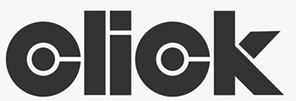 Pedro Cruz (PCZ Design) is an art director in Porto, Portugal. He made the avant garde techno typeface click-ec (2011) for a client. Zentzua (2013) is an octagonal custom typeface. Polis (2014) is a hairline sans typeface made for the short film Polis. Epiq (2015) is a two-width typeface made for the fashion brand Epiq of Africa. Behance link. Old URL. [Google]
[More] ⦿
Pedro Cruz (PCZ Design) is an art director in Porto, Portugal. He made the avant garde techno typeface click-ec (2011) for a client. Zentzua (2013) is an octagonal custom typeface. Polis (2014) is a hairline sans typeface made for the short film Polis. Epiq (2015) is a two-width typeface made for the fashion brand Epiq of Africa. Behance link. Old URL. [Google]
[More] ⦿
|
Pedro Julien
[Luvburn]
|
[More] ⦿
|
Pedro Leal

|
 Pedro Leal graduated in graphic design and advertising from the ESEIG-Escola Superior de Estudos Industriais e de Engenharia in Vila do Conde, Portugal, and lives in Porto. In 2010 he obtained a degree in type design at ESAD (Escola Superior de Artes e Design, Matosinhos) and started working at DSType. MyFonts link. Behance link.
Pedro Leal graduated in graphic design and advertising from the ESEIG-Escola Superior de Estudos Industriais e de Engenharia in Vila do Conde, Portugal, and lives in Porto. In 2010 he obtained a degree in type design at ESAD (Escola Superior de Artes e Design, Matosinhos) and started working at DSType. MyFonts link. Behance link. He used FontStruct in 2008 to create the pixel typeface Minimal 8pt (514 glyphs!). In 2010, he created the text family Mafra at DSType. This was followed a bit later by Mafra Display (2010; +Medium, +Black). Apud and Apud Display (2010, DSType) are high-contrast typefaces. Penna (2011) is a calligraphic type system. Braga (2011, Dino dos Santos and Pedro Leal, DS Type) is a layered font design family. Dino writes: Braga is an exuberant baroque typeface, named after a Portuguese city, also known as the baroque capital of Portugal. Our latest typographic extravaganza comes with a multitude of fonts designed to work like layers, allowing to insert color, lines, gradients, patterns, baroque, floral swashes, and many other graphic elements. Starting with Braga Base, you can add any of the twenty-three available styles, to create colourful typographic designs. In 2012, he designed User, User Stencil and User Upright>/a>, a monospaced type family with 30 styles, from Hairline to Bold. This too will many awards. Girga (+Italic, +Engraved, +Banner, +Stencil) is a strong black Egyptian family designed together with Dino dos Santos at DS Type. Solido (2012, with Dino dos Santos, DS Type) is a versatile type system with five widths: Solido, Solido Constricted, Solido Condensed, Solido Compressed and Solido Compact. In total there are 35 fonts. In 2020, a variable font was added to Solido. In 2012, he created the sans family Global, with its own dedicated web site, The Global Font. In 2013, he followed that up with the Global Stencil typeface family. In 2013, Dino dos Santos and Pedro Leal published Diversa, a set of nine very different fonts that are jointly kerned so that letters can be swapped out and replaced at will. Diversa Std (2014) extends this to include Stencil, Inline and other decorative styles. Pedro Leal's main typeface of 2013 is Aparo, a script that is calligraphic, yet keeps the characteristics of penmanship scripts, and the pizzazz of a good fashion font. In 2014, he published Ocre and Ocre Poster in sans and slab serif substyles inspired by W.A. Dwiggins, Torio, a penmanship script based on a style used in Arte de Escribir por Reglas y con Muestras (1798, by Spanish penman Torcuato Torío de la Riva y Herrer). Torio received the Communication Arts Type Award of Excellence in 2014. In 2015, he created the large Rudo and Rude Slab typeface families that exhibit many humanist traits: Rude ExtraWide, Rude Icons, Rude SemiCondensed, Rude SemiWide, Rude Wide, Rude, Rude Condensed, Rude ExtraCondensed, Rude Slab, Rude Slab Condensed, Rude Slab ExtraCondensed, Rude Slab ExtraWide, Rude Slab SemiCondensed, Rude Slab SemiWide, Rude Slab Wide, Rude Slab, Rude Slab Condensed, Rude Slab ExtraCondensed, Rude Slab ExtraWide, Rude Slab SemiCondensed, Rude Slab SemiWide, Rude Slab Wide. Early in 2015, he also did a custom typeface family for the Jornal de Notícias, including sans, serif and micro sub-styles. Dino dos Santos and Pedro Leal published Jules and Jules Text in the summer of 2015---a fat fashion mag didone 45-style family inspired by several plates from Portuguese calligrapher Antonio Jacintho de Araujo; it comes in Big, Colossal and Epic. Ecra is a workhorse slab serif, also done in 2015. Viska (2015, by Dino dos Santos and Pedro Leal) is designed for small print. Finally, TCF Zellige (2015, TypeCult) is a modular typeface inspired by the tiles that can be found in Southern Europe and North Africa. Typefaces from 2016: Oposta (Italian, Western style pushed to the esthetic extreme; received the Communication Arts Type Award of Excellence in 2017), Ardina (with Dino dos Santos: a text typeface family with three optical sizes). Typefaces from 2017: Scrittore (a heavy dark Italian bastarda influenced by the connected hand of Giovanniantonio Tagliente and Robert Granjon's Civilité; at DS Type), Zart (a voluptuous ebullient black didone, or fat face; +Script). Fusta (a gorgeous wood-type inspired poster typeface), Ordem (a low-contrast contemporary Capitalis Monumentalis). Typefaces from 2018: Glitched (an experimental variable spacing font), Striver (a crisp contrasted curvy display typeface), Certo Slab and Certo Sans, Foreday (a forward-looking typeface family with associated variable font, covering sans, serif, semi-sans and semi-serif), Perfil (an inline and swashy high end script). Typefaces from 2019: Akut (a purely angular typeface with some rounded corners), Denso (by Dino dos Santos and Pedro Leal: a great condensed variable font with weight, serif and optical size axes), Jornada (a multistyle family with a Fraktur, a chancery, a bookish style called Libro, a news text serif, a clean sans, a slab serif, a monospace, and a penmanship script, all in one family dubbed hygienic post-punk by Leal). In 2020, Dino dos Santos and Pedro Leal designed Larga, which was inspired by the typefaces shown in the specimens of the Fundiçãao Typographica Portuense from 1874. Larga is a wide all caps family and comes with a variable opentype format. Pedro also designed Effigy (a text typeface with slightly ballooning stems), Haste (a typeface that flirts with reverse contrast), Mescla and Enorme (an ultra massive and modular 3000-glyph mastodont of a font, together with Dino dos Santos; based on constructivist principles) in 2020. Typefaces from 2021: Orla (a straightforward interpretation of the Skeleton Antique No2 from the Stephenson, Blake & Co. foundry; for the sans, the serifs were removed), Elaine (+Ombre, +Fleurer; a complete baroque / Elzevir family influenced by Jacques-François Rosart in its ornamental styles). [Google]
[MyFonts]
[More] ⦿
|
Pentagram
|
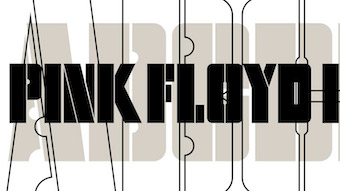 Pentagram (New York) has about 20 partners, including Michael Bierut. In 2011, Michael Bierut, Daniel Weil and Jennifer Kinon developed a new identity for Benetton. In this project, Gill Sans was replaced by Benetton Sans, a typeface created by them. The partners (in 2011): Lorenzo Apicella, Michael Bierut, Michael Gericke, Luke Hayman, Angus Hyland, Domenic Lippa, Abbott Miller, Justus Oehler, Eddie Opara, Harry Pearce, Naresh Ramchandani, John Rushworth, William Russell, Paula Scher, DJ Stout, Daniel Weil. One of the cofounders was Colin Forbes (UK).
Pentagram (New York) has about 20 partners, including Michael Bierut. In 2011, Michael Bierut, Daniel Weil and Jennifer Kinon developed a new identity for Benetton. In this project, Gill Sans was replaced by Benetton Sans, a typeface created by them. The partners (in 2011): Lorenzo Apicella, Michael Bierut, Michael Gericke, Luke Hayman, Angus Hyland, Domenic Lippa, Abbott Miller, Justus Oehler, Eddie Opara, Harry Pearce, Naresh Ramchandani, John Rushworth, William Russell, Paula Scher, DJ Stout, Daniel Weil. One of the cofounders was Colin Forbes (UK). Michael Bierut studied graphic design at the University of Cincinnati's College of Design, Architecture, Art and Planning, graduating summa cum laude in 1980. Prior to joining Pentagram in 1990 as a partner in the firm's New York office, he worked for ten years at Vignelli Associates, ultimately as vice president of graphic design. Bierut's clients at Pentagram have included the Alliance for Downtown New York, Benetton, the Council of Fashion Designers of America, Alfred A. Knopf, the Walt Disney Company, Mohawk Paper Mills, Motorola, MillerCoors, the Toy Industry Association, Princeton University, Yale School of Architecture, New York University, the Fashion Institute of Technology, the Brooklyn Academy of Music, the Library of Congress, the Museum of Sex, and the New York Jets. His projects have ranged from the design of "I Want to Take You Higher," an exhibition on the psychedelic era for the Rock and Roll Hall of Fame and Museum, to serving as design consultant to United Airlines. Bierut's recent activities have included the development of a new identity and signage for the expanded Morgan Library and Museum; the development of environmental graphics for The New York Times Building; the design of an identity and public promotion for Philip Johnson's Glass House; the creation of marketing strategies for the William Jefferson Clinton Foundation; the development of a new brand strategy and packaging for luxury retailer Saks Fifth Avenue; and the redesign of the magazine The Atlantic. He has won hundreds of design awards and his work is represented in the permanent collections of the Museum of Modern Art (MoMA), the Metropolitan Museum of Art, and the Cooper-Hewitt, National Design Museum, all in New York; the Library of Congress in Washington, D.C.; the Museum für Kunst und Gewerbe, Hamburg, Germany; and the Musee des Arts Decoratifs, Montreal. He has served as president of the New York Chapter of the American Institute of Graphic Arts (AIGA) from 1988 to 1990 and is president emeritus of AIGA National. He currently serves as a director of the Architectural League of New York and of New Yorkers for Parks. In 1989, Bierut was elected to the Alliance Graphique Internationale, in 2003 he was named to the Art Directors Club Hall of Fame, and in 2006 he received the profession's highest honor, the AIGA Medal, in recognition of his distinguished achievements and contributions to the field. In 2008 he received the Design Mind Award in the National Design Awards presented by the Cooper-Hewitt, National Design Museum, Smithsonian Institution. Bierut is a Senior Critic in Graphic Design at the Yale School of Art. He is co-editor of the anthology series Looking Closer: Critical Writings on Graphic Design, published by Allworth Press, and in 1998 he co-edited and designed the monograph Tibor Kalman: Perverse Optimist. He is a co-founder of the weblog Design Observer and his commentaries about graphic design in everyday life can be heard nationally on the Public Radio International program "Studio 360." His book Seventy-nine Short Essays on Design was published by Princeton Architectural Press in 2007. Occasionally, we find Pentagram fonts in the wild. For example, Fontastic Beast (2015) was designed by them for a Warner Bros movie. In 2017, Pentagram and Chester Jenkins of Village type revived Frederic Goudy's Sherman (1912) for Syracuse University. In 2017, Pentagram expanded on iconic album artwork by the duo Hipgnosis to create a visual identity for Pink Floyd Records. The new alphabet was created in both solid and outline versions. The original stencilled lettering used for the band's 1977 Animals album has been extended into a full alphabet and used in a logotype for the group's record label. Pentagram's creative team, led by partner Harry Pearce, worked closely with Hipgnosis' Aubrey Powell to create the alphabet, which includes solid and outline versions of letters. It is based on the iconic typography on the album Animals, designed by Hipgnosis in 1977. [Google]
[More] ⦿
|
Pete McCracken
[Portland Type Co]

|
[MyFonts]
[More] ⦿
|
Peter Bilak
[Typotheque]

|
 [MyFonts]
[More] ⦿
[MyFonts]
[More] ⦿
|
Peter Lorenz
[Memela Studio]
|
[More] ⦿
|
Peter Olschinsky
[Atelier Olschinsky]
|
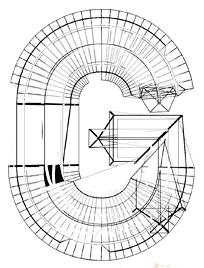 [More] ⦿
[More] ⦿
|
Philip Cronerud
[Truly Type]
|
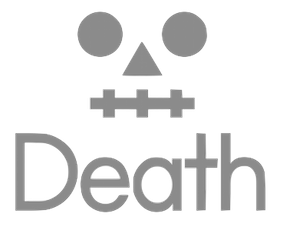 [More] ⦿
[More] ⦿
|
Philip Kelly
|
Graphic designer in Auckland, New Zealand. In 2013, he summarizes his career: Early career working in New Zealand for not for profit clients in theatre, music and fine arts. Two years at Saatchi & Saatchi NZ followed by ten years in New York City as a type director, design director and photographer. Recently returned to New Zealand after two years in Shanghai. Typefaces designed by him include Basalt (2011, bilined), Brutalism (2008), Cement (2009, octagonal), Hellvettika (1998, gothic, tattoo font), Esosquare (1998, squarish), Phrank (1997, experimental), and Hanson Unicase (2006). In 2015, the custom octagonal typeface Pure Pakati was developed at Whybin TBWA Auckland for Tourism New Zealand. Its design team comprised Philip Kelly (design director), Karl Wixon (Maori design consultant), Kris Sowersby (type designer) and Rangi Kipa (Maori carver). Pure Pakati blends the traditions of wood type with the traditional indigenous carving style of Aotearoa (New Zealand) in a hand-carved and digital fonts. Behance link. Another Behance link. Old URL. [Google]
[More] ⦿
|
Philip Kelly

|
 Type designer who runs Philip Kelly Digital Design in the UK. He worked for Letraset from 1969-1994 as a type designer. His type design work there included Arabic and Hebrew letterforms. From 1994 until 1997, he designed typefaces at Signus, and became an independent designer in 1997. His typefaces:
Type designer who runs Philip Kelly Digital Design in the UK. He worked for Letraset from 1969-1994 as a type designer. His type design work there included Arabic and Hebrew letterforms. From 1994 until 1997, he designed typefaces at Signus, and became an independent designer in 1997. His typefaces: - He redesigned University Roman in 1977 at the Latraset Studio based on Mike Daines's origina design of University Roman (1972), which is now offered in a myriad of digital libraries. See University Roman (ITC), University SB (Scangraphic Digital Type Collection), University SH (Scangraphic Digital Type Collection).
- Gillies Gothic Extra Bold Shaded (1982). See Gillies Gothic (ITC) and Gillies Gothic (Linotype).
- Cortez (1977). An exaggerated flashy copperplate. See Cortez (Linotype).
- Pump (1980). This family has rounded simple letterforms including a triline style. See Pump (Linotype) and Pump (ITC).
- Croissant (1978, ITC or Elsner+Flake). Rounded and almost an oriental simulation face. See Croissant SH (Scangraphic Digital Type Collection) and Croissant (Linotype).
- The often copied Algerian (1988). See, e.g., Algerian Condensed (Linotype), Algerian EF (Elsner+Flake) and Algerian SB (Scangraphic).
- Emporium (Letraset). A circus font.
- Spritzer (1987, Letraset). A shaded face.
- Impress (1983, Letraset).
- Sendai (2010). A gracious copperplate-influenced 6-weight sans family.
- Fantail (2012). An arts and crafts style all caps typeface inspired by an RO monogram used during a Roy Orbison concert at the now defunct Coconut Grove nightclub in Los Angeles.
- Elan Greek and Elan Cyrillic to match ITC Elan (1985, Albert Boton).
- Elegant hand-drawn numeral typefaces based on calligraphic samples by illustrator Sarah Jane Coleman (2009).
- The italics for IR Modena (IR stands for Inland Revenue).
- Calligraphic typefaces done for Mandalay in 2009.
- Sendai (2001-2010).
- Shiosai and Shiosai Calm (2015). Wavy display typefaces.
- Zipper (Letraset). This was not Kelly's design, in fact. He was a stencil cutter at the time and only partially cut it, under direction. He writes: I just recall that I worked under close direction, but what was the inspiration/idea I have no idea. Personally I would prefer not to be thought of as its designer as I never really liked it. See ITC Zipper (ITC) and Zipper (Linotype).
Linotype link. FontShop link. Klingspor link. Portfolio. Testimonial of Kelly's days at Letraset. View several digital typefaces based on Philip Kelly's designs. [Google]
[MyFonts]
[More] ⦿
|
Philipp Herrmann
[Out of the Dark (was: Fontseek)]
|
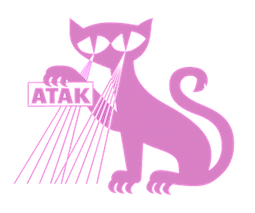 [More] ⦿
[More] ⦿
|
Philippe Gauthier
|
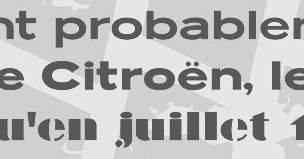 During his studies at ECV in Paris, Philippe Gauthier created several typefaces, including Pixfont (2015, pixel font) and Gaulab (2015). In 2015, he revived one of Peter Schoeffer's 15th century typefaces as Schoeffer GP Roman (see also Enschedé English-bodied Roman No. 6).
During his studies at ECV in Paris, Philippe Gauthier created several typefaces, including Pixfont (2015, pixel font) and Gaulab (2015). In 2015, he revived one of Peter Schoeffer's 15th century typefaces as Schoeffer GP Roman (see also Enschedé English-bodied Roman No. 6). For Citroen, he co-designed the wide sans typeface Cabrio (2016) with Elsa Lorich. Behance link. [Google]
[More] ⦿
|
Pi Creative Studio
|
Braga, Portugal-based designer of Rampa (2019), a bespoke sans typeface done for Primavera BSS. [Google]
[More] ⦿
|
Piero De Macchi
|
 Italian type designer born in Turin in 1937. Designer at Nebiolo from 1956-1959. Freelancer and writer since 1971 at his own De Macchi graphic design studio. Most of his typefaces were commissioned by corporations. In 1992 he set up the calligraphic association Dal Segno alla Scrittura. His typefaces:
Italian type designer born in Turin in 1937. Designer at Nebiolo from 1956-1959. Freelancer and writer since 1971 at his own De Macchi graphic design studio. Most of his typefaces were commissioned by corporations. In 1992 he set up the calligraphic association Dal Segno alla Scrittura. His typefaces: - At ATypI in Rome in 2002, he spoke about Novarese, and about his new font family, Nomina, developed for the Italian telephone directories (SEAT). Commissioned in 1999, it was first produced in 2001. It replaced Mandel's Galfra which had been in use since 1977.
- Iveco (1985): commissioned by the trucking company.
- Pancarrè (2008). A sans typeface family under development (as of 2013).
- Graphicus (2003). Done for the Graphicus magazine, Alberto Greco Publishing House of Milan. There are sans and serif versions.
- The Renaissance chancery italic type Paloma (1992).
- An experimental Bodoni family (1989).
- Pitto (1997).
- The neoclassic family Alexandra (1991-1992).
- Norberto (2009). Done for an exhibition dedicated to Norberto Bobbio in 2009. A humanist curvy sans.
- Fiat Advert (2007). A grotesk commissioned by Fiat.
- The Carolingian script typeface Pennino (1996).
- WDC2 (2005). Commissioned by Badriotto Palladino Agency for the Torino World Design capital communication briefs.
- Exemplar (2005). This ten-style text family is the last unfinished alphabet of Aldo Novarese, completed by DeMacchi on request of the Novarese family.
- A destructivist humanist face, Tremolino (since 1996).
De Macchi's company, De Macchi Progetti Grafici, is located in Torino. Klingspor link. [Google]
[More] ⦿
|
Piero Di Biase
|
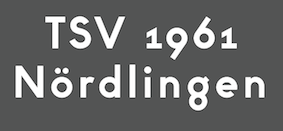 Piero Di\0Biase is an Italian graphic designer and typographer based in Udine, who set up TWO (Think Work Observe) with Alberto Moreu. TWO sells retail fonts and does custom type work. Creator of these typefaces (all are by Di Biase unless explicitly mentioned):
Piero Di\0Biase is an Italian graphic designer and typographer based in Udine, who set up TWO (Think Work Observe) with Alberto Moreu. TWO sells retail fonts and does custom type work. Creator of these typefaces (all are by Di Biase unless explicitly mentioned): - Airport Mono (2013-2017). Airport Mono is a monospaced sans-serif typeface inspired by military airports signage, with chamfered octagonal corners.
- BJ Headline (2013).
- Dot (2009, dot matrix).
- Falafel Grotesque.
- Figures (2009).
- Futwora Pro (2010-2017). A geometric sans, with a name that refers to Futura.
- Kane and Kane Stencil (2013-2017). He writes: Kane is a display typeface originally designed for a journalistic Blog and inspired by woodblock type posters of Citizen Kane by Orson Welles. In 2017 we added a stencil version inspired by the work of conceptual artists such Christopher Wool and Lawrence Weiner.
- Metal (2011). A hipster typeface.
- Regola (2018). A sans workhorse.
- The monospaced VWK Mono (2009).
- Wagon (2009, a soft octagonal face).
[Google]
[More] ⦿
|
Pieter van Rosmalen
[Bold Monday]

|
 [MyFonts]
[More] ⦿
[MyFonts]
[More] ⦿
|
Pilar Cano
[Letterjuice]

|
 [MyFonts]
[More] ⦿
[MyFonts]
[More] ⦿
|
Plamen Motev

|
 Type designer based in Sofia, Bulgaria. As a student working with Fontfabric in Sofia, Bulgaria, Plamen Motev designed the free circle-themed slightly condensed retro typeface Phenomena (done together with Radomir Tinkov) and the free 8-style narrow grotesque family Akrobat for Latin and Cyrillic in 2016.
Type designer based in Sofia, Bulgaria. As a student working with Fontfabric in Sofia, Bulgaria, Plamen Motev designed the free circle-themed slightly condensed retro typeface Phenomena (done together with Radomir Tinkov) and the free 8-style narrow grotesque family Akrobat for Latin and Cyrillic in 2016. In 2017, Plamen Motev and Svetoslav Simov co-designed Uni Neue, a total remake of Fontfabric's earler typeface Uni Sans (2009). He was part of the Fontfabric team that designed the 521-font family Zing Rust, Zing Sans Rust and Zing Script Rust in 2017. Typefaces from 2018: Gilam (by Ivan Petrov, Plamen Motev and Svetoslav Simov: based on DIN, but more geometric and with obliquely cut terminals). Typefaces from 2019: Panton Rust and Panton Rust Script (by Plamen Motev, Stan Partalev and Ventsislav Djokov). Typefaces from 2020: Alkes (by Plamen Motev, Nikolay Petroussenko, Kaja Slojewska at Fontfabric: a 14-style text typeface for long passages, designed to harmonize between Latin, Greek and Cyrillic, and featuring a generous x-height, wide letter spacing, large open counters and angled stress contrast so that the typeface is quite readable and friendly). Typefaces from 2021: Silverstone (Display, Text) (2021). A custom type system for the Silverstone raceway and British Motorsports by Plamen Motev and Ventislav Dzhokov at Fontfabric. In 2022, Vika Usmanova and Plamen Motev co-designed the wayfinding sans family Ways at Fontfabric. Still in 2022, Plamen Motev and Pavel Pavlov released the vampire-serifed variable typeface family Gwen at Fontfabric. [Google]
[MyFonts]
[More] ⦿
|
Planning Unit
|
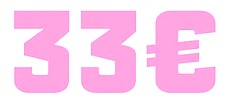 Studio on London founded in 2011 by Jeff Knowles and Nick Hard. It created the bespoke typefaces Soapbox and Dogfight in 2016 for The Seasons Collection book by photographer Matt Alberts (in collaboration with Cadillac). This book peeks into the heart and soul of the people who have dedicated their lives into the skate and surf culture. Dogfight combines octagonal and round, and both typefaces ooze masculinity and strength. Other typefaces include the custom rouned sans Addaction (2016).
Studio on London founded in 2011 by Jeff Knowles and Nick Hard. It created the bespoke typefaces Soapbox and Dogfight in 2016 for The Seasons Collection book by photographer Matt Alberts (in collaboration with Cadillac). This book peeks into the heart and soul of the people who have dedicated their lives into the skate and surf culture. Dogfight combines octagonal and round, and both typefaces ooze masculinity and strength. Other typefaces include the custom rouned sans Addaction (2016). Earlier, in 2014, they designed BBC Icons. Behance link. [Google]
[More] ⦿
|
Plau (was: Niramekko)
[Rodrigo Rocha Saiani]

|
 Rodrigo Saiani is a graphic and type designer who graduated from Parsons School of Design. In 2006, he founded Niramekko, which he ran with his brother Gustavo Saiani until 2013. Niramekko became Plau, now located in the Botafogo suburb of Rio de Janeiro. The type and graphic designers associated with Plau design include the cariocas Gabriel Menezes, Carlos Mignot, Valter Vinicius Costa, Rodrigo Saiani, Felipe Casaprima, and the expatriate in Köln, Germany, Ana Laura Ferraz. Plau joined Type Network in 2021. Saiani teaches type design at Miami ad School / ESPM in Rio de Janeiro.
Rodrigo Saiani is a graphic and type designer who graduated from Parsons School of Design. In 2006, he founded Niramekko, which he ran with his brother Gustavo Saiani until 2013. Niramekko became Plau, now located in the Botafogo suburb of Rio de Janeiro. The type and graphic designers associated with Plau design include the cariocas Gabriel Menezes, Carlos Mignot, Valter Vinicius Costa, Rodrigo Saiani, Felipe Casaprima, and the expatriate in Köln, Germany, Ana Laura Ferraz. Plau joined Type Network in 2021. Saiani teaches type design at Miami ad School / ESPM in Rio de Janeiro. Saiani's first typeface was Swiss: Motiva Sans (2009). Plau (2011) and Plau Italic (2012) are organic sans typefaces. In 2013, Saiani published Guanabara Sans and Primot (an upright fat connected gelateria script). Coralinda (2014) is a didone-based custom headline typeface. Tenez (2015) is a didone display typeface family for use in logos and titling. It won an award at Tipos Latinos 2016. In 2016, Rodrigo Saiani and Flora de Cavalho co-designed the typewriter typeface Odisseia, which was originally designed for the brand identity for Leblon Arquitetura, a Rio de Janeiro-based architecture firm. In 2017, Daniel Rocha, Flora de Carvalho and Rodrigo Saiani jointly designed the handcrafted branding typeface Dariquim. Collaboration between Plau and Rede Globo, Globotipo (2018: a collaboration between Plau and Rede Globo) is a family of 30 fonts made exclusively for the Brazilian TV chain Rede Globo. In 2018, he designed the custom restaurant menu and branding typeface Chez Lalu, the creamy retail typeface Manteiga, and the sturdy sans typeface family Vinila (with Flora de Carvalho). Typefaces from 2019: Reserva (Sans, Serif, Display), Muda (a corporate typeface for the fashion brand Oficina Muda; type design by Ana Laura Ferraz, Carlos Mignot, Gabriel Menezes and Rodrigo Saiani). Typefaces from 2020: Salsero (a display typeface with Latin vibes), the video game font family (+stencil, +Cyrillic) either called Killing Sans or Nine to Five, co-designed with Carlos Mignot. Plau joined forces with the NotCo creative team in 2021 to design their custom typeface, NotFont. The brief was to create a typeface with unexpected logic. The Kabel-style geometric typeface won a bronze medal at the Brasil Design Award 2021 competition. Other bronze medal winners at that competition by Plau include custom typefaces for In Brands (called In Type), XP Investimentos (XP Lighthouse is the name of the typeface) and Exame Invest (a didone). In 2021, Ana Laura Ferraz, Valter Costa, Carlos Mignot and Rodrigo Saiani designed the handcrafted black poster and branding typeface Vinila for the identity of grammar teacher Eduardo Valladares' personal brand EDU VLLD (Edu stands for Eduardo and Education while VLLD represents Valladares and Vulnerability). Still in 2021, Carlos Mignot and Rodrigo Saiani designed a few hip typefaces for the Brazilian TV channel Canal Brasil. Their Canal Brasil woin the gold medal and grand prize at the Brasil Design Award 2021 competition. MyFonts link. Behance link. Logo. Klingspor link. Behance link for Saiani. Old Niramekko link. Old home page. Behance link for Plau Design. Type Network link. [Google]
[MyFonts]
[More] ⦿
|
PLEKS
[Mads Quistgaard]
|
Mats Quistgaard is creative director at Pleks, a graphic design studio in Denmark. He studied at The Royal Academy of Fine Arts School of Architecture and at Central Saint Martins, MA. Then he worked as a designer for Sleazenation, and art-directed and designed Frieze magazine. He co-founded design collective APOGS in 2001. He taught at the The Royal Academy of Fine Arts School of Architecture and Central Saint Martins, and founded Pleks in 2004. He founded Danish Faces in 2005. He created a number of corporate typefaces, such as an identity typeface for the public channel DR (Danish State Radio and Television) called DR1, DR2 and DRi (Dutch Radio, 2003---this font is by apogs.com, and the Dutch Radio is not the Danish Radio, so I am uncertain as to whether it belongs in this list at all); FRH; KRAT (an Egyptian face); Telia (grunge); Nyco Sans (for NYCOMED); BeoFont (2007; for Bang & Olufson). Another URL. Facebook page. [Google]
[More] ⦿
|
Plus63 Design Co
[Dan Matutina]
|
A design studio in Manila, The Philippines, that comprises Berns de Leon-Yumul, Rhea Alarcon, Joanna Malinis, Raxenne Maniquiz, Craig Halili and Dan Matutina. As part of their branding, they sometimes design typefaces. An example of their corporate branding is Maroons Type, a free octagonal sports font family developed between 2015 and 2019 for the Fighting Maroons at the University of the Philippines by AJ Dimarucot, Joanna Malinis and Dan Matutina. [Google]
[More] ⦿
|
Pop & Pac
|
Design studio in Melbourne, Australia. In 2018, they designed the branding typeface Monroe Cafe. [Google]
[More] ⦿
|
Portland Type Co
[Pete McCracken]

|
 Type foundry in Portland, OR, established in 2010 by Pete McCracken, who headed Plazm before that. McCracken acquired all of the Plazmfonts assets of the type design portion of the company in 2006. The (mostly custom) typefaces:
Type foundry in Portland, OR, established in 2010 by Pete McCracken, who headed Plazm before that. McCracken acquired all of the Plazmfonts assets of the type design portion of the company in 2006. The (mostly custom) typefaces: - Spore (2008). Developed together with Veronika Burian for the hit game Spore by Electronic Arts Video Games.
- Portland Ore (2012). The Portland Suite is a collection of typefaces related to Portand. These include Portland Ore, Portland OR, Portlandneer, Belmont, Old Town, NOPO, Hawthorne, PDX, and Portlander. Of these, Portlander was used in the Harry Potter movie Deathly hallows.
- Target Five Percent: a pair of custom typefaces designed for Target in collaboration with Brad Trost, Wieden+Kennedy.
- Starbucks: a type family for the coffee company.
- Dodge: Custom typeface for Dodge.
- Dr. Martens: a hand-printed custom type design.
- Adidas Adihaus: custom typeface done for Adidas.
- Bushmill: A custom typeface for an Irish Whiskey brand.
- McMenamin's Poor Farm (2012). A custom Victorian typeface.
- Victory Neue: a custom font family done for Nike. It grew out of a Plazm font family called Victory.
- Custom typefaces for REI (2014), Columbia Sportswear (2015) and New Seasons Market (2017).
Gallery of Pete's design and custom type work. Personal web site. Pete lectures at Pacific Northwest College of Art (or PNCA). His articles at PNCA include an interview with Jonathan Barnbrook and a discussion of web fonts. Speaker at TypeCon 2013 on How to Become a Rich and Famous Type Designer. Bloggers are praising his presentation. FontShop link. Klingspor link. [Google]
[MyFonts]
[More] ⦿
|
Practica
|
 Studio based in Barcelona and New York. In 2020, they designed the custom Basque typeface Arbizu for the Basque electronic music company Zetak. Its glyphs are inspired by old funerary inscriptions, engravings, gravestones, and lintels from the Basque Country. The typeface was produced by Jordi Embodas.
Studio based in Barcelona and New York. In 2020, they designed the custom Basque typeface Arbizu for the Basque electronic music company Zetak. Its glyphs are inspired by old funerary inscriptions, engravings, gravestones, and lintels from the Basque Country. The typeface was produced by Jordi Embodas. In 2019, they art directed the custom typeface Kymco for a motorcycle brand. Again, the type production was by Jordi Embodas (tipografies). [Google]
[More] ⦿
|
Pradnya Naik
|
Graphic and type designer from Mumbai, who made the custom Vodafone Urdu font in 2010 and the Virgin Gujarati font in 2011 with the company called WhiteCrow Designs Mumbai India. She is member of Aksharaya. Lehiya is Pradnya's Master's thesis project from KABK, Type and Media 2012. Depusta is a Latin typeface designed during Type and Media year 2011-12. She also revived the Dutch typeface Erasmus Mediaeval (De Roos, 1923) under the guidance of Paul Vanderlaan. Currently, she is finalizing work on Lehiya: Lehiya is a Devanagari text typeface which is designed for extended reading in Hindi and Marathi. With a compact, squarish look, it is inspired primarily by the calligraphic style of old Jain manuscripts.. It will be published later in 2015. [Google]
[More] ⦿
|
Premiere Gothic
|
The house font of Premiere World, based on Franklin Gothic. [Google]
[More] ⦿
|
Pretend Foundry (or: Fuzzco)
[Helen Rice]
|
 Helen Rice and Josh Nissenboim run Pretend Foundry / Fuzzco, as an outlet to try out experimental fonts. Located in South Carlina, their typefaces as of early 2020 include:
Helen Rice and Josh Nissenboim run Pretend Foundry / Fuzzco, as an outlet to try out experimental fonts. Located in South Carlina, their typefaces as of early 2020 include: - Archdale
- Benson
- Constantine
- Coplestons
- Couch
- Easley. A geometric sans.
- Neue Heitz. They write: Commissioned by Heitz Cellar of Napa Valley, Neue Heitz is a refined, steely, digital version of the type they have been using on their bottles since the early 1960's. Neue Heitz features a Basque capital A.
- Pinopolis and Pinopolis Mono. A real and a faux monospace font.
- Puget. An ink-trapped rounded sans.
- Septima. A fun all-caps display typeface.
[Google]
[More] ⦿
|
Production Type
[Jean-Baptiste Levée]
|
 Jean-Baptiste Levée is a French type designer based in Paris. He is a co-founder of the Bureau des Affaires Typographiques, and teaches typeface design at ESAD Amiens (and before that, at the Caen-Cherbourg school of Arts & Media and at the University of Corte). His latest work is mostly published at Production Type which he manages. He designs custom and retail typefaces, and has won multiuple awards for his type designs. Other designers publishing at Production Type include Yoann Minet, Sandra Carrera, Yohanna My Nguyen, Emmanuel Besse, Mathieu Réguer, Quentin Schmerber and Loic Sander. In 2020, the support team included Hugues Gentile, Dorine Sauzet, Suehli Tan and Igino Marini. Levée's typeface portfolio:
Jean-Baptiste Levée is a French type designer based in Paris. He is a co-founder of the Bureau des Affaires Typographiques, and teaches typeface design at ESAD Amiens (and before that, at the Caen-Cherbourg school of Arts & Media and at the University of Corte). His latest work is mostly published at Production Type which he manages. He designs custom and retail typefaces, and has won multiuple awards for his type designs. Other designers publishing at Production Type include Yoann Minet, Sandra Carrera, Yohanna My Nguyen, Emmanuel Besse, Mathieu Réguer, Quentin Schmerber and Loic Sander. In 2020, the support team included Hugues Gentile, Dorine Sauzet, Suehli Tan and Igino Marini. Levée's typeface portfolio: - Vuitton Persona (2007): a family made under the supervision of Porchez for Vuitton's bags.
- Wallpaper corporate typeface (2008): Under the art direction of Meirion Pritchard and Christian Schwartz, this 2-style sans was developed for the architectural magazine Wallpaper. It is a self-confessed blend of Meta and Amplitude.
- Le Monde Courrier (2008): an extension and OpenType completion of the glyph tables of Porchez's LeMonde Courrier (2002).
- Panorama (2004-2008): an elegant full-fledged sans family from hairline to extended bold, and from Extra Condensed to Extra Extended. It can be bought at Production Type.
- Henderson Serif & Sans (2006): This is a Baskerville family conceived by J.-F. Porchez, but extended and perfected by Levée. The Sans is in the style of Arial with large x-height. The Typofonderie page does not mention Levée.
- Retiro (2007): Done with J.-F. Porchez for Madriz Magazine. This is a didone family with juicy and classy alternates. It became a retail font at Typofonderie in 2015.
- Pimkie (2006): a playful feminine display face.
- Seenk Serif and Seenk Sans: a text family done with Christophe Badani in 2005.
- Expert (2009): a unicase typeface done for magazine, ca. 2009.
- Acier BAT (2009-2010, BAT Foundry): an extensive family that builds on Cassandre's 1930 font by the same name.
- Gemeli and Gemeli Mono (by Levée, assisted by Emmanuel Besse and Hugo Marucco). This sans family can be bought at Production Type. For Gemeli Micro (2018), Gemeli's x-height was enlarged, extenders shortened, stance widened, spacing loosened, and forms simplified.
- Synthese.
- Carrefour Origin (2011). A tall thin face. This custom typeface led to the vretail typeface family Origin Super Condensed.
- Cogito Atelier Malte Martin. The sans family Cogito can be bought at Production Type.
- Telerama Dogon. This is a matchstick or campground face.
- Nathan Enfantine (2011) and Enfantine (2015). A simple upright connected (school?) script.
- RMNGP Constellation (2013) is the bespoke dot matrix typeface of Réunion des Musées Nationaux---Grand Palais for their on-site, online and printed communications.
- Vanité for Vanity Fair France (2013).
- Plinc Beaux Arts Didot (2014). A classical didone digitized from the original Photo-Lettering film matrix by Jean-Baptiste Levée for House Industries.
- Countach (2014, Production type). Described as follows by the designers and team, Superscript2, J.-B. Levée, Sandra Carrera and Irina Smirnova: Countach, the tough compact sans supercharged with brawn & brains. Developed for The Crew, a critically acclaimed auto racing video game, Countach evokes the muscular and mechanical dynamics of fast cars and urban adventure.
- Reception Semi (2014). A hybrid corporate typeface for Unibail / Rodamco.
- Renault Carname for Renault cars. This typeface won an award in the TDC Typeface Design competition in 2017.
- Fournier Orchestre de Paris (2014): Fournier ODP is the exclusive corporate typeface of Orchestre de Paris. Named after Pierre-Simon Fournier Le Jeune (1712-1768), punchcutter and typefounder. Famous for his musical founts, the Parisian Pierre-Simon Fournier is considered one of the first French moderns. The typeface borrows from the numerous alphabets produced by Fournier, retaining only the finest cuts and adding its own peculiarities: anachronical ampersand, reversed letters in reverence to poster ephemeras of the times. The Graphiques series are designed to allow for polychromic settings. The Gothic series are a nod to the residues of modernism. Faithful to the tradition of optical sizes, different designs have been assigned to different scales of use. By Jean-Baptiste Levé, who was assisted by Yoann Minet, Mathieu Réguer, Laurent Bourcellier and Roxane Gataud.
- Libé (2015). Rob Mientjes writes about this custom typeface family done for Libération: Libé is a family of a wide array of sans serif fonts and a set of stubborn typewriter fonts with a slightly sloppy underline style. The sans part of the family is a hybrid Excoffon, nineteen-seventies, tight-but-not-touching fever dream. If the spirit of Excoffon is alive, it has possessed Libé Sans. The Typewriter styles are a typographically successful, if unexpected, match.
- Granville (2015). A Peignotian (or modulated) sans published by Production Type.
- Minotaur (2014, with Yoann Minet). Minotaur won an award in the TDC 2015 Type Design competition.
Proto Grotesk (2014). Proto Grotesk won an award in the TDC 2015 Type Design competition. Review by André Mora, who writes: This beast is a strong sans serif with two mean weights. While others were busy breeding show dogs, Proto emerged from the love den of a couple of mutts high as hell. It ain't tame. It'll never be domesticated. Proto Slab and Proto Slab Condensed followed later. - Cobalte (2015, Production Type). A flared lapidary sans serif family.
- Courrèges (2016) for the fashion house.
- Boreal (2016). A sans family.
- Columbia Sans and Columbia Sans Display (2016, Jean-Baptiste Levée). Initially intended as a sans version of Times New Roman, Levée's explorations take him far afield through his flirtation with reverse stress and his back-rotated small o. He writes: Columbia is an unorthodox blend of multiple historical models. It excavates the so-called Elzevir style, an example of permeability between French and Dutch flavours. The type's restrained nature eschews caricature, giving paragraphs a clean texture while retaining the classical touch expected from late Renaissance typefaces. Initially commissioned by science magazine Sciences & Avenir, Columbia strikes a balance between rigorous topics and an approachable, informal tone.
- ARC (2016). A custom multiline typeface for the City of Paris (L'Arc de l'Innovation).
- Spectral (2017). A 7-style sharp-edged book face by Jean-Baptiste Levée related to Mrs. Eaves, and freely available at Google Fonts. Levée describes the influence of the French Elzevir on Spectral. The type experts opine that the spacing is too loose.
- Alpine (2017). A custom sans family for the new Alpine Vision automobile.
- Antique Gothic (2017). A condensed vintage sans with extreme x-height, designed by Jean-Baptiste Levée, with the help of Emmanuel Besse, Yoann Minet, Quentin Schmerber, Hugues Gentile, Pauline Fourest, and Kristina Jandova.
- Cardinal Classic and Cardinal Fruit (2018). A large transitional typeface family by Jean-Baptiste Levée, Yoann Minet and Quentin Schmerber. The tightly set and high impact photojournalism typeface family Cardinal Photo was added in 2020.
- Media Sans (2018). A typeface family with tight spacing and some extra condensed styles to be used in headlines and on posters. It was influenced by Frutiger's Antique Presse (at Deberny & Peignot) and some European typefaces of the 1960s and 1970s, such as the tightly letterspaced Brasilia, the squarish caps of Eurostile, and the oddly contrasted Antique Olive.
- LVMH Air (2018). A knife-edged fashion typeface family custom designed for LVMH (Moet Hennessy & Louis Vuitton), a French multinational luxury goods conglomerate that specializes in snob appeal.
- Duperré Sans (2018). A custom sans by Jean-Baptiste Levée and Quentin Schmerber for École Duperré.
- Acier (2019). A bi-colored revival of Cassandre's Acier (1930, Deberny & Peignot).
- Tesseract (2019). A display typeface with edges as sharp as a bamboo-cutting machete. Stuff for James Bond movies.
Speaker at ATypI 2013 in Amsterdam and ATypI 2014 in Barcelona. Speaker at ATypI 2016 in Warsaw. Behance link. Old URL. Klingspor link. Home page of Jean-Baptiste Levée. [Google]
[More] ⦿
|
Promodesign
[Crystian Cruz]
|
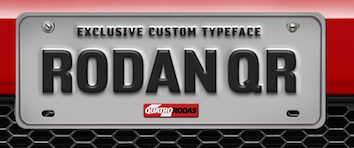 Promodesign is a Brazilian graphic design company of Crystian Cruz in Sao Paulo. Crystian Cruz and Beto Shibata used to run the Tipos Maléficos foundry. He is also associated with Agencia Africa, where he was type director at Africa Propaganda. Alternate URL. Since 1999 he has been working as art director for a major Brazilian magazines and as type consultant for publishing companies and design studios. Crystian is currently located in Newcastle, Australia. He specializes in commissioned type design.
Promodesign is a Brazilian graphic design company of Crystian Cruz in Sao Paulo. Crystian Cruz and Beto Shibata used to run the Tipos Maléficos foundry. He is also associated with Agencia Africa, where he was type director at Africa Propaganda. Alternate URL. Since 1999 he has been working as art director for a major Brazilian magazines and as type consultant for publishing companies and design studios. Crystian is currently located in Newcastle, Australia. He specializes in commissioned type design. He obtained an MA in typeface design from The University of Reading (2009), based on his type family Quartzo, a typeface system for magazines. He lectured at IED Sao Paulo and is currently undertaking a PhD and teaching at the University of Newcastle, Australia. His fonts: - His award winning vernacular (wall writing or graffiti) font Brasilero (1998). First prize at the Tipografia Brasilis in display typography 2001. Released in 2003 as a free font. In 2009, he was still improving and extending Brasilero to include optional characters with typical mistakes or alternate forms used for graffiti. At ATypI 2009 in Mexico City, he spoke on the Brasilero project.
- Cruz Sans (2002). Designed during a workshop led by Bruno Maag
- Rodan QR (2002). A custom typeface for Quatro Rodas magazine.
- Smoking (2004). A custom design for the headlines of Brazil's VIP magazine to accompany the text typeface Stainless designed by Font Bureau.
- Quartzo (2009) comes in Display, Text, Pocket and Cyrillic sets. Its outlines are slightly "broken" to enhance readability at small sizes for magazines. Also, his use of Opentype features to make barchart and ratings characters is quite clever. It is a complete typeface system for magazines.
- In 2014, Crystian Cruz and Marina Chaccur co-designed the sans custom typeface UOL for the Brazilian internet provider.
- In 2003, Beto Shibata and Crystian Cruz co-designed a beautiful Casa Dings font for the Brazilian home decor monthly magazine Casa Claudia.
- For Nova, the Brazilian version of Cosmopolitan, he designed Nova Dings (2003).
- Acremist (2017, by Crystian Cruz and Milton Trajano) is a free cryptographic font based on glyphs created by Bruno Borges, whoch are in turn based Manual do Escoteiro Mirim, a collection of books for childen published in the 1970s.
Behance link. Speaker at ATypI 2016 in Warsaw. [Google]
[More] ⦿
|
Promphan Suksumek
|
Boom Promphan Suksumek is a type designer at Cadson Demak, a type foundry based in Bangkok, Thailand. She also currently teaches courses at local universities on typography and the fundamentals of type design. Suksumek studied type design while doing a master's in communication design at the Basel School of Design in Switzerland. She wrote a master's thesis on variable fonts (emotionaltype.org). Speaker at ATypI 2019 in Tokyo on the topic of The Evolution of Thai Loopless Script. She writes: Thai script is divided into the looped and the loopless. Loopless Thai is generally considered to be the modern form of Thai script. However, loopless Thai has its own history. This presentation examines the evolution of the Thai loopless form and attempts to map its development. Originating with the Thai Naris typeface in 1863, the Thai loopless form was initially constructed using a broad-nib pen. Later on, it was adopted and transformed by the locals. It initially appeared mainly in headlines; it was also used in books, newspapers, and local consumer products to make a bold statement. In the 1940s, it began to be embraced by local calligraphers and sign painters. The dry-transfer era saw even more experimentation with the loopless form---it showed up on the posters of the 1976 student-activist uprising in Thailand, for example. It is currently part of daily life there. Cultural influence has simplified the loopless form over time. Loopless Thai raises many questions about what we consider modern versus what we deem outdated. She has been working on custom Thai typeface projects for local and international brands such as Singha Estate, Grab, and Mercedes Benz. [Google]
[More] ⦿
|
ps type (was: ppwrkstudio)
[Mark Caneso]
|
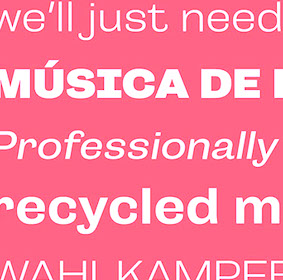 Mark Caneso is a graphic and type designer who lived in Garden Grove, CA, Kapolei, HI, Beaverton, OR, Austin, TX, and now, Mount Pleasant and/or Charleston, SC. He founded ppwrkstudio (or: ps type) in 2004.
Mark Caneso is a graphic and type designer who lived in Garden Grove, CA, Kapolei, HI, Beaverton, OR, Austin, TX, and now, Mount Pleasant and/or Charleston, SC. He founded ppwrkstudio (or: ps type) in 2004. His typefaces include the free sans Quatro and the commercial contemporary sans FB Ratio (2009, Font Bureau, a sans family in 6 styles that grew out of ps Ratio and ps Ratio Headline). In 2009, Quatro became commercial. It was followed by ps Quatro Slab and Quatro Ultra Black in 2010 and Quatro Sans in 2012. Other typefaces include Campaign Grotesk (2015, FontShop), ps Caneso (2010, monoline sans), Runda, ps Untitled, ps Untitled Sans, ps Turiya Light (2009, organic sans), ps Runda (2010, sans), ps Neplus Ultra (2010, ultra thick slab), ps Dot Test (dot matrix face), and ps Fovea (2009, contemporary slab). Also in the works is the dot matrix typeface FF Diode (2009). Typefaces from 2016: Hatch (slab serif, which can be bought here). Typefaces from 2017: Ditch (a great inline typeface), Blue Sky (a sans family for branding). Typefaces from 2019: Pika Ultra (an ultra fat script). Typefaces from 2020: Campaign (Sans, Serif, Slab). Typefaces from 2021: Decoy (a 12-style soft inky serif), Hoss Grotesk (Hoss Sharp and Hoss Round: grotesques), Condenser (a 36-style condensed sans family), Hegante (a fat brush typeface), Naylor Stencil (a custom typeface for Brooklyn-based artist Jason Naylor). Cargocollective link. Adobe link. [Google]
[More] ⦿
|
Public Type
|
Public is a collective of typeface and graphic designers. Its members include the experienced type designers Michael Cina, Stefan Kjartansson, Karl Engebretson, and Matt Desmond. Their retail typefaces: - Ghostly Gothic (Michael Cina).
- Query (Michael Cina).
- Ramsey (Michael Cina). Squarish, ink-trapped and techno.
- Stadt (Michael Cina).
Custom fonts include Disney Matterhorn Sans and Serif, Top Golf, Scatter NYC Blackout, Kate Spade, NBC Golf Channel, Vera (for IOT). [Google]
[More] ⦿
|
Quelle Interstate
|
The house font of Quelle, based on Interstate (1993, Tobias Frere-Jones). [Google]
[More] ⦿
|
Quentin Schmerber
[Schmerber Type (was: JazzMaType)]

|
 [MyFonts]
[More] ⦿
[MyFonts]
[More] ⦿
|
Rainer Erich Scheichelbauer
[Schriftlabor]

|
[MyFonts]
[More] ⦿
|
Ralf Herrmann
[Traffic Sign Typefaces: Netherlands]
|
[More] ⦿
|
Ralph du Carrois
[Carrois Type Design]
|
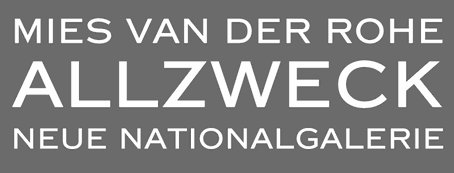 [More] ⦿
[More] ⦿
|
Ralph Oliver du Carrois

|
 Berlin-based designer at Primetype of these typefaces:
Berlin-based designer at Primetype of these typefaces: - The simple sans family PTL Maurea (2004).
- The free sans/techno fonts Share and Share-TechMono (2005) and the large Pro family Share, which was designed as a corporate type family for Typo3.
- The techno family PTL Highbus (2006).
- The quirky serif family PTL Sadgirl (2006).
- With Jenny Horn, he designed the pixel typefaces PiPaA35, PiPaB35, PiPaC35, PiPaD35 (2002).
- Colaborate (2003) is free.
- Axel (2009): developed jointly with Erik Spiekermann and Erik van Blokland, it is a system font with these features:
- Similar letters and numbers are clearly distinguishable (l, i, I, 1, 7; 0, O; e, c #).
- Increased contrast between regular and bold.
- High legibility on the monitor via Clear Type support.
- Seems to outperform Courier New, Verdana, Lucida Sans, Georgia, Arial and Calibri, according to their tests (although I would rank Calibri at or above Axel for many criteria).
- In 2012-2013, Ralph du Carrois and Erik Spiekermann co-designed Fira Sans and Fira Mono for Firefox / Mozilla. Google Web Font link. This typeface is free for everyone. Open Font Library link. Dedicated web page. CTAN download page. Mozilla download page. It is specially designed for small screens, and seems to do a good job at that. I am not a particular fan of a g with an aerodynamic wing and the bipolar l of Fira Mono, though. Google web Fonts published Fira Sans Condensed and Fira Sans Extra Condensed (2012-2016) in 2017.
- Real Text Regular is a corporate font designed in 2014 by Ralph du Carrois in close cooperation with Erik Spiekermann, for the monograph by Gestalten Hello I am Erik. In 2015, Fontfont finally published the full family FF Real, in 13 weights each for FF Real Head and FF Real Text. The typeface family is influenced by the German grotesques from ca. 1900 by foundries such as Theinhardt and H. Berthold AG. In 2017-2018, that family was extended to 52 styles in all thanks to a new set of italics. The designers are listed as Erik Spiekermann, Ralph du Carrois and Anja Meiners. They write: The design of FF Real is rooted in early static grotesques from the turn of the century. Several German type foundries---among them the Berlin-based foundries Theinhardt and H. Berthold AG---released such designs between 1898 and 1908. The semi-bold weight of a poster-size typeface that was lighter than most of the according semi-bolds in metal type at the time, gave the impetus to FF Real's regular weight. In the words of Spiekermann, the historical example is "the real, non-fake version, as it were, the royal sans serif face", thus giving his new typeface the name Real (which is also in keeping with his four-letter names, i.e. FF Meta, FF Unit). FF Real is a convincing re-interpretation of the German grotesque style, but with much more warmth and improved legibility. With a hint towards the warmer American grotesques, Spiekermann added those typical Anglo-American features such as a three-story g and an 8 with a more defined loop. To better distinguish characters in small text sizes, FF Real Text comes in old style figures, f and t are wider, the capital I is equipped with serifs, as is the lowercase l. What's more, i-dots and all punctuation are round.
- Quist (2015).
- Belbo (2016). A sans family. Belbo Two is perhaps one of the thinnest hairline sans fonts ever made.
- In 2022, Erik Spiekermann, Anja Meiners, and Ralph du Carrois published the neo-grotesque superfamily Case at Fontwerk. It includes Micro and Text subfamilies.
Around 2011-2012, he set up Carrois Type Design in Berlin. He also co-founded bBox Type with Anja Meiners some time between 2016 and 2018. Old Dafont link. FontShop link. Klingspor link. Abstract Fonts link. [Google]
[MyFonts]
[More] ⦿
|
Rama Typo
|
The house font of Rama, developed by FontShop. [Google]
[More] ⦿
|
Rasmus Lund Mathisen
[Overtone]
|
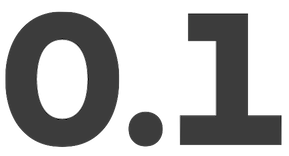 [More] ⦿
[More] ⦿
|
Rasselbock
|
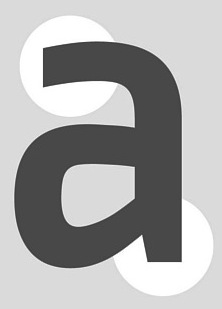 During his studies in Trier, Germany, Rasselbock created FK Hoc (2015), FK Cut (2012, a cut paper dada typeface), FK Zeugma 2012, (an irregular eerie sans inspired by bad movie titling fonts from the 1930s), FK Futhark (2012, Germanic runes), FK Epiphany (2013, blackletter), FK Permutata (2013, an angular octagonal corporate typeface) and FK Neoz (2012, a smooth sans display family). In 2011, he designed FK Beo. [Google]
[More] ⦿
During his studies in Trier, Germany, Rasselbock created FK Hoc (2015), FK Cut (2012, a cut paper dada typeface), FK Zeugma 2012, (an irregular eerie sans inspired by bad movie titling fonts from the 1930s), FK Futhark (2012, Germanic runes), FK Epiphany (2013, blackletter), FK Permutata (2013, an angular octagonal corporate typeface) and FK Neoz (2012, a smooth sans display family). In 2011, he designed FK Beo. [Google]
[More] ⦿
|
Ray Cruz
[Cruz Fonts]

|
 [MyFonts]
[More] ⦿
[MyFonts]
[More] ⦿
|
René Verkaart
[Characters (or: Character Type)]

|
[MyFonts]
[More] ⦿
|
Revolver Type Foundry
[Lukas Schneider]

|
 German type designer born in Frankfurt in 1973. He studied in Offenbach at the Hochschule für Gestaltung. He assisted Akira Kobayashi with some projects, and still lives in Frankfurt. In 2017, Lukas Schneider set up Revolver Type Foundry.
German type designer born in Frankfurt in 1973. He studied in Offenbach at the Hochschule für Gestaltung. He assisted Akira Kobayashi with some projects, and still lives in Frankfurt. In 2017, Lukas Schneider set up Revolver Type Foundry. At Typeoff.de, he created the Western billboard typeface Jeans (2004), AT Stencil (2004) and the kitchen tile typeface Disco3000 (2004). At the Hochschule, he created Gazoline, a grotesk face. Lukas Schneider has free-lanced for companies in Frankfurt as well as for the magazine form and for Linotype. He runs his own studio in Frankfurt, called Protago Graphic, and most recently started Snider Inc, also in Frankfurt. In 2007-2008, his masterpiece appeared in the FontFont collection: FF Utility, 15 styles of Bank Gothicalized alphabets specially made for information design. See also YB Utility Slab. He custom designed in 2006-2007, under the supervision of Prof. Johannes Bergerhausen and Prof. Ulysses Voelker at Fachhochschule Mainz the Plus family (for the Plus supermarket). In particular, one font is called Plus Exklusiv Medium. Another custom design is DRAFTFB for Eikes Grafischer Hort, a hand-printed typeface that covers Latin and Cyrillic. In 2013, he graduated from the Type and Media program at KABK in Den Haag. His graduation typeface was the delicate and quite readable text family Damien, which was created for editorial design. In 2016, Lukas published Expose at Indian Type Foundry. This 4-style sans typeface is "constructed" or "engineered" for use in headlines. Free version at Fontshare. Typefaces at Revolver Type Foundry: Damien (2017, in Display and Text subfamilies), Dinamit (2016: a terrific DIN Breitschrift, abandoned by the German DIN norming institute around 1936), Mondial Text (2016: a striking didone based on Hans Bohn's Mondial from 1930), Mondial Display (2016), Newson (a low contrast wayfinding sans with plenty of dingbats---hey, Frankfurt Airport managers, is anyone paying attention?). Designer of DTL Gros Canon at Dutch Type Library, which writes: The first part of the DTL [Gros] Canon Project included the digitization of three types by the Flemish Renaissance punchcutter Hendrik van den Keere (ca.1540-1580): Gros Canon Flamande (textura type, 1571), Gros Canon Romain (roman type, 1573), and Canon d'Espaigne (rotunda type, 1574). The latter is almost ready for release. Typecache link. Klingspor link. FontShop link. Type Network link. Old Snider Inc link. [Google]
[MyFonts]
[More] ⦿
|
Reymund Schroeder
[Zeugler]
|
 [More] ⦿
[More] ⦿
|
Reza Bakhtiarifard
|
 Graphic and type designer in Tehran, Iran, b. 1990, who has been showered with type design awards. Creator of the nine weight Arabic / Persian typeface Milad (2013), Novin Web (203, with Hirbod Lotfian), Ravi (2013, published by 29LT, Sheed (2014), Shafigh Bakh (2014), and Roya Bakh (2014).
Graphic and type designer in Tehran, Iran, b. 1990, who has been showered with type design awards. Creator of the nine weight Arabic / Persian typeface Milad (2013), Novin Web (203, with Hirbod Lotfian), Ravi (2013, published by 29LT, Sheed (2014), Shafigh Bakh (2014), and Roya Bakh (2014). In 2015, he made Yekan Bakh, Chista UI and the handcrafted Leila. In 2017, together with Omid Emamiam, he designed the wonderful Farsi font Vazeh Quranic. Ray (by Reza Bakhtiarifard and Omid Emamiam) won an award at Granshan 2017. Both Ray and Vazeh won awards at TDC Typeface Design 2018. In 2017, he designed Nian for Arabic, Urdu, Kurdish and Jawi. Typefaces from 2018: Khameneir, MTN Irancell (with Omid Emamiam), Dabestan (a rounded monoline Arabic typeface by Reza Bakhtiarifard and Omid Emamiam). Typefaces from 2020: Ayendeh Bank Typeface (commissioned; with Mahdi Ershadi). Typefaces from 2021: Alibaba Travels Co Typeface (custom; with Mahdi Ershadi). Behance link. Newest Behance link. [Google]
[More] ⦿
|
Ricardo Esteves Gomes
[Outras Fontes]

|
 [MyFonts]
[More] ⦿
[MyFonts]
[More] ⦿
|
Richard Crediton-Hughes
|
Designer in London, UK. Designer of this art nouveau-ish face (2006). He explains its genesis: [This is] a font I designed for OMEC (Orange Musical Electronic Company). The background is simple---Orange Amplifiers designed the word 'Orange' as a brand. I was working with the CEO, Cliff Cooper, who asked me to develop a full font based on the Orange branding. When this was complete I gave sole rights to the font to Cliff but retained the designer credit. There were a number of variations, outlined, stand off outline, embossed etc. Cliff was also the owner of a group of stores (World of Music) in Denmark Street London where you can still see signs I designed using this face. Cliff got out of retail in 2006. [Google]
[More] ⦿
|
Rick Banks
[F37 (or: Face37)]

|
 [MyFonts]
[More] ⦿
[MyFonts]
[More] ⦿
|
Rie Hueg-Davidsen
|
Aarhus, Denmark-based designer of the corporate sans typeface Energi Danmark (2017). [Google]
[More] ⦿
|
Rob Clarke
|
 London-based designer who made many logotypes and custom / corporate typefaces. Examples: Air Asia, Ampligo, Brainfood, Brynild, Capita, Carluccio's Confectionery, Carluccio's Condiments, Conran, Dulux, Fortis, Kite Display, Mercator (logotype), PC World Text, Raison d'être, Ruby Blue, Sea Life, Tiger Beer, Ubizen. [Google]
[More] ⦿
London-based designer who made many logotypes and custom / corporate typefaces. Examples: Air Asia, Ampligo, Brainfood, Brynild, Capita, Carluccio's Confectionery, Carluccio's Condiments, Conran, Dulux, Fortis, Kite Display, Mercator (logotype), PC World Text, Raison d'être, Ruby Blue, Sea Life, Tiger Beer, Ubizen. [Google]
[More] ⦿
|
Rob Pratley
|
 Type designer from the UK who graduated from the MATD program in Type Design at the University of Reading in 2016. His graduation typeface was Ikkat, a flexible type system for all European languages. At URW++ in 2017, Rob Pratley and Eben Sorkin designed a condensed sans typeface for use in Youtube logos. [Google]
[More] ⦿
Type designer from the UK who graduated from the MATD program in Type Design at the University of Reading in 2016. His graduation typeface was Ikkat, a flexible type system for all European languages. At URW++ in 2017, Rob Pratley and Eben Sorkin designed a condensed sans typeface for use in Youtube logos. [Google]
[More] ⦿
|
Robert Slimbach

|
 After a start at Autologic in Newbury Park in 1983, this prolific American master craftsman (b. Evanston, IL, 1956) helped pioneer digital type design at Adobe (which he joined in 1987) and created
After a start at Autologic in Newbury Park in 1983, this prolific American master craftsman (b. Evanston, IL, 1956) helped pioneer digital type design at Adobe (which he joined in 1987) and created - ITC Slimbach (1987).
- ITC Giovanni Book (1988).
- Adobe Garamond (1989-1991).
- Adobe Jenson (1996) and Adobe Jenson Pro. Combining Nicolas Jenson's roman designs with Ludovico degli Arrighi's italics.
- Utopia (1989-1991) [Utopia Opticals was released in 2002].
- Minion (1990-1991): Minion was first released in 1990, and became later the first Adobe Opentype font. It has support for Greek and Cyrillic, including polytonic Greek. Minion Cyrillic is from 1992. By 2021, this text typeface featured 32 styles, and was published as Minion3.
- Myriad (1992, with Carol Twombly). Myriad Arabic and Myriad Hebrew were first published in 2011.
- Poetica (1992). In 2010, Paulo Heitlinger compared Poetica, in its smooth perfection, with P22 Operina, which is closer to the original chancery models of the 20th century, and he thinks Poetica lacks the vigor and dynamism of the originals (and P22 Operina does not).
- Sanvito (1993).
- Caflisch Script (1993, not my favorite script).
- Cronos (1996). Image by Jamie Groenestein). modeled after Kuester's Today Sans. Image of Cronos Pro Display.
- Kepler (1996).
- Warnock Pro (2000), which won an award at the Type Directors Club (TDC2) 2001 competition.
- Brioso (2002). A calligraphic/renaissance family comprised of over 40,000 glyphs. Images of Brioso: A poster by Kristina Reinholds, a poster by Nick di Stefano.
- Garamond Premier Pro (2005), based on originals found in the Plantin Museum in Antwerp. Weights include GaramondPremPro-BdItalic, GaramondPremPro-Bold GaramondPremPro-Italic, GaramondPremPro-Medium, GaramondPremPro-MediumIt, GaramondPremPro-Regular, GaramondPremPro-SbIt, GaramondPremPro-Semibold. Greek, Latin and Cyrillic are covered.
- Arno Pro (2007: typophile discussion) is in the style of Adobe Jenson Pro. Review by Typographica Thomas Phinney: Arno is what you might call a modernized Venetian oldstyle. I think of it as having the same relationship to Adobe Jenson that Minion has to Garamond Premier.
- Adobe Clean (2009). David Lemon: After more than 25 years in the type development business, Adobe decided to have its own corporate typeface family. The Creative Suite uses were early versions of a family designed by Robert Slimbach. Now that it has been officially adopted at Adobe, I can tell you about our latest design, called Adobe Clean. There is no plan to make it available for licensing, but you will be seeing more of it in Adobe materials and products as time goes on. Our initial question was "Why not just keep using Myriad Pro and Minion Pro?" These typefaces were designed to be timeless, and they are among our most popular families. But that second part points to the catch in this situation: Myriad, in particular, is used to represent many other companies, including businesses close to Adobe's (such as Apple and Verizon). Adobe wanted a fresh look that could remain unique. While some typeface designers do much of their work for corporate clients, this area was new to us. Robert&I met with the leaders of Adobe's Experience Design and Brand teams to develop a design brief. They wanted a 21st-century feel combined with an earnest readability. As the project grew, Christopher Slye led regular follow-up meetings with the client teams to keep them up to date and tease more input out of them. Robert's accustomed to aiming his work at the more general case, so it was an interesting challenge to have a very specific set of design goals. What he produced is as classic as all his other designs, but with an uncharacteristic blend of contemporary touches for on-screen rendering and a more progressive feel.
- Adobe Text (2010), a transitional family included in the standard font set for Adobe Creative Suite 5. Adobe Text won an award at Modern Cyrillic 2014.
- Adobe Hand (2012). Adobe Hand also won an award at Modern Cyrillic 2014.
- Trajan Pro 3 (2011, with Carol Twombly) and Trajan Sans (1989). The Trajan Sans family comprises six weights, ranging from Extra Light to Black (matching the weight range in Trajan Pro 3), with language coverage for Pan-European Latin, Cyrillic, and Greek. Maxim Zhukov advised on the design of the Cyrillic portion of the family, and Gerry Leonidas advised on the Greek, while Frank Grießhammer provided technical production support. Trajan Sans won an award at Modern Cyrillic 2014.
- Ryoko Nishizuka designed Ten Mincho (2017), a Japanese typeface in the Adobe Originals collection. Ten Mincho also features a full set of Latin glyphs, collectively known as Ten Oldstyle and designed by Robert Slimbach.
- Pelago (2017). A semi-formal sans family that won an award at TDC Typeface Design 2018.
- Acumin. A 90-style neo-grotesque typeface family.
For Warnock Pro, he got an award at the Type Directors Club (TDC2) 2001 competition. In 1991, he received the Prix Charles Peignot for excellence in type design. Minion Pro Greek, Minion Pro Cyrillic&Greek and Brioso Pro won awards at the TDC2 Type Directors Club's Type Design Competition 2002. At TDC2 2006, he won an award for Garamond Premier Pro. Arno Pro won an award at the TDC2 2007 competition. In 2018, he received the Frederic W. Goudy Award for Typographic Excellence at Rochester Institute of Technology. Bio at Linotype. Minion Pro now ships with Acrobat Reader and covers all European languages, including Greek and Cyrillic. View Robert Slimbach's typefaces. FontShop link. [Google]
[MyFonts]
[More] ⦿
|
Roberto Mannella
[German Appeal]

|
 [MyFonts]
[More] ⦿
[MyFonts]
[More] ⦿
|
Roberto Quiñones
|
Comerio, Puerto Rico-based graphic designer. His type designs include Movant Barks (2009, techno family), and many logotypes. OC Bold and Light (2009) were commissioned by Original Cred, a clothing brand. With Drew Rios, he published the art deco typeface Gandhi in 2010. [Google]
[More] ⦿
|
Robin Mientjes
[Tiny Type Co]
|
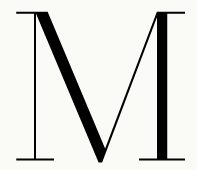 [More] ⦿
[More] ⦿
|
Rodney Mylius
[Rodney Mylius]
|
 Mylius is the British Airways font. It was designed by Rodney Mylius at Newell and Sorell (a branding consultancy firm), and finished by Agfa/Monotype. [Google]
[More] ⦿
Mylius is the British Airways font. It was designed by Rodney Mylius at Newell and Sorell (a branding consultancy firm), and finished by Agfa/Monotype. [Google]
[More] ⦿
|
Rodney Mylius
[Rodney Mylius]
|
[More] ⦿
|
Rodrigo Rocha Saiani
[Plau (was: Niramekko)]

|
 [MyFonts]
[More] ⦿
[MyFonts]
[More] ⦿
|
Roland Henß
|
German designer at Plazm of Capitalis Pirata (2001-2004), a free typeface in which each letter represents a well-known logo. For example, the capital M is in the shape of McDonald's golden arches. As reported by Stanley Moss in 2013, McDonald's lawyers wanted that M removed. Plazm wrote: As designers, educators, and artists, we are interested in better understanding the power of corporate iconography in the world today. In an effort to explore the meaning of corporate icons in our world, type designer Roland Henss has created an alphabet called Capitalis Pirata. By placing fragments of corporate icons into the form of an alphabet, Henss challenges the notion of ownership of letterforms. Since a copyright can not be placed on the alphabet itself, this typeface raises issues about the boundaries of ownership and the proprietary nature of letterforms in the public domain. Capitalis Pirata is a fully functioning digital typeface available strictly for education and discussion purposes. Capitalis Pirata is for free distribution only and may not be sold. Roland Henss-Dewald (b. Bonn, 1952, d. 2015) taught at the Peter Behrens School of Arts (Fachbereiche Architektur und Design) ofthe University of Applied Sciences in Düsseldorf, Germany. [Google]
[More] ⦿
|
Romain Belotti
|
Graphic designer in Lyon, France, who created Robotto (2016, with Sandro Salomone), a font designed for Aldebaran's identity. It is based on the original Aldebaran Futura-style logo. [Google]
[More] ⦿
|
Romain Diant
[Asenso]

|
[MyFonts]
[More] ⦿
|
Roman Shchyukin
[Zerotoohero]

|
 [MyFonts]
[More] ⦿
[MyFonts]
[More] ⦿
|
Roman Sumtsov
|
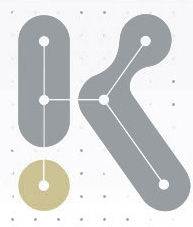 Moscow-based designer of the decorative inline (Cyrillic) typeface Amperiya Deko (2018) for IQ Goods. Behance link. [Google]
[More] ⦿
Moscow-based designer of the decorative inline (Cyrillic) typeface Amperiya Deko (2018) for IQ Goods. Behance link. [Google]
[More] ⦿
|
Ron Carpenter

|
 Designer (b. 1950, Dorking, UK), who worked first as a letter draughtsman in Monotype's type drawing office, before becoming a full-fledged type designer in 1982. He worked for Monotype for 25 years before joining Dalton Maag as a type designer in 1996. Linotype link. FontShop link. Klingspor link. His typefaces:
Designer (b. 1950, Dorking, UK), who worked first as a letter draughtsman in Monotype's type drawing office, before becoming a full-fledged type designer in 1982. He worked for Monotype for 25 years before joining Dalton Maag as a type designer in 1996. Linotype link. FontShop link. Klingspor link. His typefaces: - His Monotype typefaces: Monotype Bullmer (redrawn in 1994), Cantoria (1986), Amasis MT (1990, slab serif; see also the 2013 release Amasis eText by Linotype: it has wider spacing and larger x-height) and CalistoMT (1987). In 1991, he redrew Dante and added variants. He assisted Robin Nicholas with the design of Nimrod Italic.
- His typefaces done at Dalton Maag: Plume (2007, with Bruno Maag), Co Text (2006), Co Headline (2007), King's Caslon (2007, with Marc Weymann), Stroudley (2007), Viato (2007), Lexia (1999-2007) and Lexia Typographic Advertising (2007, an extra bold weight with macho slabs), Aller (2008, a humanist sans co-designed with Marc weymann and Bruno Maag). In 2010, Dalton Maag made a big deal out of Ron Carpenter's mega-sans family Aktiv Grotesk, which it labeled a Helvetica killer.
- Codesigner with Bruno Mello, Fabio Haag, Rafael Saraiva and Fernando Caro of Soleto (2014, Dalton Maag), a sans typeface that won an award at Tipos Latinos 2014.
- In 2014, Bruno Maag, Ron Carpenter, Fernando Caro and Rafael Saraiva co-designed the rounded organic sans typeface Oscine (Dalton Maag).
View Ron Carpenter's typefaces. [Google]
[MyFonts]
[More] ⦿
|
Rony Koch
|
Rony Koch is a graphic designer based in Tel-Aviv. Her main work includes branding, logo design, print design, UX and UI. Her typefaces include Obege (2021), the Jimbo J branding typeface (2021) and the free Latin / Hebrew Google font Karantina (2021). Github link for Karantina. [Google]
[More] ⦿
|
Ross Milne
[Working Format]
|
 [More] ⦿
[More] ⦿
|
Roxaboxen
[Graham Bradley]
|
 A Lebanese American, Graham Bradley grew up in Pasadena, CA. He studied twentieth-century European history at the University of California, Berkeley, and graduated in 2009. He also graduated from the Type@Cooper program at The Cooper Union in New York. Graham designs printed materials, lettering, typefaces, and the occasional website. He is located in California. Before founding Roxaboxen, Graham was the first employee at Frere-Jones Type, where he worked with Tobias Frere-Jones on Mallory and Retina. He is an instructor at Type West at the Letterform Archive.
A Lebanese American, Graham Bradley grew up in Pasadena, CA. He studied twentieth-century European history at the University of California, Berkeley, and graduated in 2009. He also graduated from the Type@Cooper program at The Cooper Union in New York. Graham designs printed materials, lettering, typefaces, and the occasional website. He is located in California. Before founding Roxaboxen, Graham was the first employee at Frere-Jones Type, where he worked with Tobias Frere-Jones on Mallory and Retina. He is an instructor at Type West at the Letterform Archive. During his studies at Type@Cooper in 2012, he designed Anacapa, and writes: Anacapa is an attempt to subtly express, in type, the identity of my home state: the cool, gray calm of beach volleyball courts in the early morning, the dispersed energy of Los Angeles, the warmth of the sunlight on the rocky Central Coast... It is an imagined piece of California's vernacular, designed to be as flexible and complex as the emotional range it seeks to capture. His typeface Madtown (2019, Future Fonts) is inspired by letters from the American West, in particular the styles that have a capital oh with wedge-shaped serifs. In 2019, he also released the arts and crafts-inspired Mara des Bois at Future Fonts. Other typefaces by Graham include Ogilvy Serif (2021, with Jeremy Mickel), and Bacterium (2014, a molecular typeface done for Alexander Issey Inc; it has multiple versions for each glyph). Graham also helps with type design at MCKL Type, Jeremy Mickel's type foundry in Los Angeles. Future Fonts link. Home page. [Google]
[More] ⦿
|
RR Donnelley
|
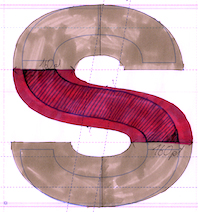 Design studio. In 2015, Mateusz Machalski and RR Donnelley joined forces to produce the 42-style corporate superfamily Tupper Pro and Tupper Serif for Latin, Greek, Cyrillic, Hebrew and Arabic. [Google]
[More] ⦿
Design studio. In 2015, Mateusz Machalski and RR Donnelley joined forces to produce the 42-style corporate superfamily Tupper Pro and Tupper Serif for Latin, Greek, Cyrillic, Hebrew and Arabic. [Google]
[More] ⦿
|
R-Type (or: Rui Abreu)
[Rui Abreu]

|
 R-Type was founded by Rui Abreu in 2008. Rui graduated from FBAUP (Faculdade de Belas Artes da Universidade do Porto) in 2003. He has been working as an interactive media designer in different design agencies, and he has been designing typefaces. Based in Porto, he created Tirana (2006, sans family at T26), Catacumba (2007, a gorgeous bold didone titling face, T26; in 2009 at Fountain/PsyOps), Cifra (2006, a lovely ten weight sans family, T26), Nomada (2007, a monoline slab serif), Salto Alto (2006, avant garde sans family, with octagonal influences), Foral (2008, monoline slab serif; published by Fountain in 2010), and Forma (2006, stencil family, T26).
R-Type was founded by Rui Abreu in 2008. Rui graduated from FBAUP (Faculdade de Belas Artes da Universidade do Porto) in 2003. He has been working as an interactive media designer in different design agencies, and he has been designing typefaces. Based in Porto, he created Tirana (2006, sans family at T26), Catacumba (2007, a gorgeous bold didone titling face, T26; in 2009 at Fountain/PsyOps), Cifra (2006, a lovely ten weight sans family, T26), Nomada (2007, a monoline slab serif), Salto Alto (2006, avant garde sans family, with octagonal influences), Foral (2008, monoline slab serif; published by Fountain in 2010), and Forma (2006, stencil family, T26). In 2008, he published Orbe (Fountain), an exotic all-caps blackletter inspired by Portuguese and Lombardic calligraphy [it deservedly won an award at TDC2 2009; Orbe Pro at MyFonts], Gesta (2008, sans family), Gesta Condensed (2012), Gesta Semi Condensed (2012), Gira Sans (2012, a grotesque family), Foral Pro (2011, an elliptical slab serif), Catacumba (2011, a high-contrast ball terminal wedge serif family), Aria Pro (2011, a delicate high-contrast transitional serif family), Forma Solid (T26). In 2013, Rui published Aria Text (a rational (transitional) toned-down version of Aria that comes in three sets of optical sizes, G1, G2, and G3), the geometric sans family Azo Sans and Azo Sans Uber, a geometric sans with a humanist element. Grafolita Script (2013) is a connected typeface family that borrows ideas from signage scripts. Typefaces from 2014: Litania (medieval-style typeface with roman capitals, Lombardic capitals, and Carolingian minuscules; nice fists accompany the type), Signo (a dynamic sans serif with reverse contrast, designed for editorial and branding). Signo won an award in the TDC 2015 Type Design competition. Typefaces from 2015: Montblanc (a custom sans for the Montblanc company that won the IF Design award in 2015), Usual (a neutral sans with large x-height). In 2010, Peter Bruhn started a typeface but he died before it was finished. In 2015, Rui Abrey and Göran Söderström finished it as Bruhn Sans (Fountain Type). In 2010 Peter was commissioned to design a wordmark for the documentary Harbour of Hope. The type was to ellicit Malmö's harbor, and Peter found inspiration from the painted type of industrial tankers docked in his hometown. Typefaces from 2016: Grifo, Symbio and Symbio Arabic (at Typotheque; prize winner at Granshan 2016), Sul Sans (a geometriclly constructed sans with features frequently seen on signs and buildings in Portugal). Typefaces from 2017: Sul Mono (a typewriter style), Grifito, Grifinito (condensed versions of the sharp-edged display typeface Grifo), Aquino (by Rui Abreu and Ricardo Santos; a display calligraphic stencil typeface inspired by a liturgic book made by Portuguese friar Tomas Aquino in 1735). Typefaces from 2018: Gliko Modern (an award winner at the Type Directors Club's Type Design Competition 2019). Typefaces from 2019: Flecha (a sharp and streamlined old-style typeface made for editorial design that won an award at 23TDC in 2020), Staff (a neo-grotesk from X Wide to XXX Condensed). Typefaces from 2020: Flecha Bronzea (M, L: the condensed version of Flecha). Typefaces from 2021: Azo Super (a heavy display font), Staff Grotesk (a low key sans family derived from Abreu's 2019 font, Staff), Gineto (a grotesque developed from the brevier size of Gothic no. 4, a nineteen century design by the New York type foundry Farmer, Little & Co), Chassi (in three optical sizes, S, M and L: a revival of Garamond as a genre, slightly reinterpreted for our times; I duisagree though with the word "slightly"). MyFonts interview in August 2013. MyFonts page. T-26 page. Old home page. Klingspor link. Fountain Type link. View Rui Abreu's typefaces. [Google]
[MyFonts]
[More] ⦿
|
Rudi de Wet
|
Illustrator, typographer and graphic designer in Cape Town, South Africa. Rudi writes about himself: Hailing from Cape Town, South Africa, Rudi de Wet draws his inspiration from the region's hand-painted typographic signs, African fabrics and loves decoration. Presently, he works his magic as a freelance illustrator and graphic designer in Melbourne, Australia. He studied a BA in Fine Arts, with majors in Graphic Design and Illustration from the University of Stellenbosch, where, besides studying, he spent much of his time drinking the town's famous selection of rich, amazing wine. Rudi was one of the founding members of the Am I Collective, a now well-respected and highly sought-after design and illustration studio in Cape Town. He spent three years there, where an average day consisted primarily of hand typography jobs for the likes of Ogilvy&Mather, Saatchi&Saatchi, Network BBDO and Y&R Paris. His outlined 3d face Mzansi (2009) was custom-made for Lowe Bull Cape Town. He designed Unilever in 2010. In 2013, he drew a typographic poster for Husqvarna. Behance link. [Google]
[More] ⦿
|
Ruedi baur
[Integral Ruedi Baur]
|
[More] ⦿
|
Rui Abreu
[R-Type (or: Rui Abreu)]

|
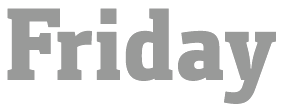 [MyFonts]
[More] ⦿
[MyFonts]
[More] ⦿
|
Russell Poore
|
Designer of Mazda-Bold-Oblique, Mazda-Bold, Mazda-Condensed-Oblique, Mazda-Condensed, Mazda-Extended-Oblique, Mazda-Extended, Mazda-Oblique, Mazda, Suzuki-Italic, Suzuki. Download them here. [Google]
[More] ⦿
|
Ruth Amstutz
|
Co-founder in 2000 of the Zurich-based design studio Moiré. With Dominik Huber at Grilli Type, she designed GT Pressura (+Mono) in 2013. In 2008, she made the corporate typeface Regina for Regina Gallery in London and Moscow. [Google]
[More] ⦿
|
RWE Corporate
|
The house font of RWE, developed on the basis of Thordis Sans. [Google]
[More] ⦿
|
Ryan Bugden
|
 Ryan Bugden is an independent graphic and type designer based in Brooklyn. Before graduating from Type Media at the KABK in Den Haag, The Netherlands (class of 2019), he received his BFA in Graphic Design from RISD (Rhode Island School of Design), completed the Type@Cooper Extended Program, and worked as a senior designer at Pentagram and Red Antler. He currently runs R&M with Michelle Ando and releases typefaces independently and through Future Fonts. He is an adjunct professor of typography at School of Visual Arts in New York City.
Ryan Bugden is an independent graphic and type designer based in Brooklyn. Before graduating from Type Media at the KABK in Den Haag, The Netherlands (class of 2019), he received his BFA in Graphic Design from RISD (Rhode Island School of Design), completed the Type@Cooper Extended Program, and worked as a senior designer at Pentagram and Red Antler. He currently runs R&M with Michelle Ando and releases typefaces independently and through Future Fonts. He is an adjunct professor of typography at School of Visual Arts in New York City. His typefaces: - The angular serif typeface Fez (2014). Designed under the supervision of Cyrus Highsmith of Font Bureau while Ryan was studying at the Rhode Island School of Design, it was meant for the menu of The Red Fez, a restaurant in Providence.
- Memoire (2016). A typeface that degrades with each use. It was designed for the fifth issue of Sub Rosa's biannual publication La Petite Mort.
- Meek Display (2018-2019).
- His graduation typeface at KABK was the experimental Spec (2019). Spec won an award at 23TDC.
- Arcane. A custom typeface for the original Netflix series Arcane, based on the world of League of Legends.
- Strawberry Western. A custom type for Kisa Shiga's independent anti-waste fashion label Strawberry Western. The identity is bilingual, drawn for both English and Japanese readers.
- Getaway. A custom variable font for an alcohol-free bar in Greenpoint, Brooklyn.
- Kato Sake Works. iA custom typeface family for Kato Sake Works, a local sake brewery in Bushwick, Brooklyn run by Shinobu Kato. It includes Kato Mono.
[Google]
[More] ⦿
|
Sam Dunn
|
London-based illustrator. In 2015, he created a happy-go-lucky scriptish typeface for Vodafone. Behance link. [Google]
[More] ⦿
|
Sander Bullynck
|
Graphic designer in Ghent, Belgium, who created the modular octagonal bespoke typeface Fabrication (2014) for Fabrik. It was inspired by wrenches, nuts, bolts and old factory signage. Still in 2014, he created the Peignotian all caps sans typeface Magnus. Behance link. [Google]
[More] ⦿
|
Sandra Garcia

|
 Sandra Garcia (b. Bogota, Colombia) first studied at the Universidad del Area Andina, Bogota and then obtained a Masters in typography from Centro de Estudios Gestalt in Veracruz, Mexico. Freelance designer and teacher at Universidad de la Comunicacion, in Mexico City.
Sandra Garcia (b. Bogota, Colombia) first studied at the Universidad del Area Andina, Bogota and then obtained a Masters in typography from Centro de Estudios Gestalt in Veracruz, Mexico. Freelance designer and teacher at Universidad de la Comunicacion, in Mexico City. Sandra created the wayfinding sans typeface Colectiva in 2017 together with Tipas Type, a type foundry she co-founded. Colectiva was originally designed for Mexico City's subway system. In 2019, she published Emperatriz at Latinotype. She collaborated on the design of the typographic family Woun Iek for the native Wounaan Colombian language. In 2017, she received the Clap international award for the project Xantolo, a font for children's publications. Xantolo was part of Tipas Type, a space created by women to promote female work in the typographic field. For a Mexican beer brand, Sandra Garcia and Tipas Type designed the splendid blackletter typeface Corona (2018) and the copperplate calligraphic typeface Especial (2019). In 2019, Dafne Martinez, Monica Munguia, and Sandra Garcia finally released the roundish informal children's book typeface Xantolo and the wood type / slab serif typeface Xihtli. In 2019, Dafne Martinez and Sandra Garcia designed the copperplate calligraphic typeface Especial for a common Mexican beer brand In 2021, Dafne Martinez and Sandra Garcia published Achtli (Book, Didactic), a rounded sans typeface for early readers. In 2022, Sandra Garcia released the ultra-condensed reverse stress Western typefaces Extra C and Extra C Variable at Tipastype. Speaker at ATypI 2019 in Tokyo. Co-author of the book Elementype, a practical guide to typographic use. [Google]
[MyFonts]
[More] ⦿
|
Sandro Salomone
|
Graphic designer in Paris, France, who created Robotto (2016, with Romain Belotti), a font designed for Aldebaran's identity. It is based on the original Aldebaran Futura-style logo. Behance link. [Google]
[More] ⦿
|
Sanket Avlani
|
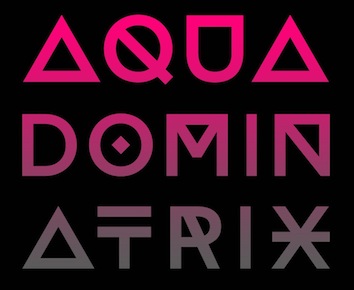 Art director in London. He created a forceful hipster display typeface for the identity of Aqua Dominatrix in 2015. [Google]
[More] ⦿
Art director in London. He created a forceful hipster display typeface for the identity of Aqua Dominatrix in 2015. [Google]
[More] ⦿
|
Sansless Xyz
[Martzi Hegedüs]
|
 Martzi (or Marton) Hegedüs (Budapest) created the gridded trompe l'oeil typeface Frustro (2012), which is based on the optical illusion created by the Penrose triangle. In 2014, it evolved into a 6-style mulilayer font. Frustro can be bought at Gestalten.
Martzi (or Marton) Hegedüs (Budapest) created the gridded trompe l'oeil typeface Frustro (2012), which is based on the optical illusion created by the Penrose triangle. In 2014, it evolved into a 6-style mulilayer font. Frustro can be bought at Gestalten. Typefaces from 2018: Bardi Sans (a custom type family for administrative purposes commissioned by leading Hungarian auto parts dealer Bardi), Kozma (based on the hand letterings of early 20th century Hungarian architect and graphic artist Lajos Kozma, with new fat didone style lowwer case characters). [Google]
[More] ⦿
|
Sarang Kulkarni
[White Crow]
|
 [More] ⦿
[More] ⦿
|
Sarang Kulkarni
[EK Type]
|
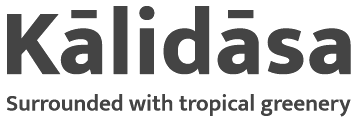 [More] ⦿
[More] ⦿
|
Sasha Lobe
|
Sascha Lobe of Stuttgart design studio L2M3 designed a new visual identity and typeface, Bayer Next, for the Bauhaus-Archiv museum in Berlin, ca. 2014. Lobe and his team expanded on Herbert Bayer's universal typeface from 1925 by adding more than 555 glyphs. The new typeface will be used in print materials, on the website and on location at the museum. Wired link. [Google]
[More] ⦿
|
Sawdust

|
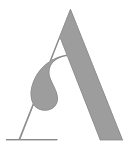 Design studio of Rob Gonzalez and Jonathan Quainton located in London's Hoxton area. Creators in 2009 of two art deco custom typefaces for Middle Boop magazine, and of many other types for visual identities and projects. One, the art deco typeface New Modern, can be bought exclusively from HypeForType. They also created this type poster for The Last Days of Decadence (2008).
Design studio of Rob Gonzalez and Jonathan Quainton located in London's Hoxton area. Creators in 2009 of two art deco custom typefaces for Middle Boop magazine, and of many other types for visual identities and projects. One, the art deco typeface New Modern, can be bought exclusively from HypeForType. They also created this type poster for The Last Days of Decadence (2008). In 2012, Sawdust published Ivory, a stencilish typeface. Shanghai Ranking Numerals (2013) is a multiline typeface commissioned by Shanghai Ranking for Shanghai Jiao Tong's Top 200 Research Universities book. Wired UK (2013) is a commissioned hipster typeface. Lunetta (2013, Hype For Type) is a great multilined labyrinthine headline typeface. Fast Company (2014) is geometric and experimental. In 2015, they created the custom typefaces Kobe Bryant and Kevin Durant for Nike / Jordan and NBA basketball player Kevin Durant, and the spring-themed typeface Electric Word for an issue of Wired. Still in 2015, they published a geometric alphabet in Nylon, a book curated by Bernstein and Andriulli. Still in 2015, Jonathan Quainton and Rob Gonzalez created a custom typeface for LeBron James. In 2016, they designed the successful display typeface Audi for Audi Magazine, UK, in which the letters themselves are adapted to the sleek lines of the Audi Quattro. The fashion mag typeface Quainton (2008) was first published as a retail typeface in 2016. Hype For Type link. Typefaces from 2020: Neuro X (ultra-condensed, in 12 styles). [Google]
[MyFonts]
[More] ⦿
|
Schick Toikka
|
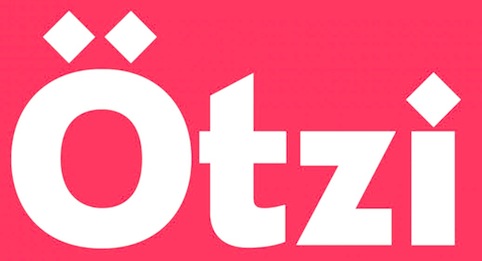 German/Finnish design studio and type foundry in Berlin, est. 2012 by Florian Schick and Lauri Toikka, two KABK graduates. Their typefaces:
German/Finnish design studio and type foundry in Berlin, est. 2012 by Florian Schick and Lauri Toikka, two KABK graduates. Their typefaces: - Noe Display (2013, Lauri Toikka). Characterized by high contrast and sharp triangular serifs.
- Trio Grotesk (2011, Florian Schick). A revival of the warm rounded sans typeface Kaart Antieke (1909, Piet Zwart) which was also published by Bold Monday, and in 2020 by Type Network.
- Saol (Text, Display), 2012. an interpretation of the Victorian inclination to add exaggerations to text typefaces.
- Custom typefaces from 2012 until 2013: Nrgm Grotesk (for a Finnish online music magazine), Rapala (for a fishing and outdoor equipment company), Ylioppilaslehti (Finnish university magazine), Ghostwriter Mono (a monospaced rounded sans for the visual identity of the content creation agency Mrs. Muir & Ghostwriters), Zeitschrift der Straße (headline type for a street mag in Bremen, Germany), Tapio Grotesk (for Tapio Anttila's visual identity).
- Spot Mono (2014). They write: Spot Mono is a monospaced type family inspired by contemporary Japanese display typefaces and classic typewriter typefaces such as Courier. It has a monolinear contrast, rounded terminals and simplified letter construction that lends the typeface a distinctively naïve and characteristic appearance. Even though its shapes and proportions are balanced for harmonious and legible body text, Spot Mono is also ideal for big, chunky headlines. Additionally, Spot Mono features a very generous character set including a set of icons and support for extended Latin, Greek, and Cyrillic scripts.
- FCINY (2014), a custom Peignotian typeface done for The Finnish Cultural Institute in New York.
- The contrast-rich typeface family Dia (2014) was made by Florian Schick.
- Krana Fat (2016) is a peculiar display typeface inspired by the letterings of Finnish graphic designer and illustrator Erkki Toukolehto. The original all capital letterings were done in mono line with a big flat brush. Krana Fat appeared first in the German street magazine Die Zeitschrift der Strasse.
- Scto Grotesk. The Schick Toikka take on the turn of the century grotesks.
- Lyyra (Standard, Extended, Expanded). Strong-willed, angular, and almost neurotic. A sans that is not happy with the world.
- Chap: Initially designed for the Finnish Culture Institute in New York, Chap pays tribute to the contrasted sans tradition.
- Custom fonts: Nike Unlaced, Nora Turato, Instrumentarium, Sennheiser, Flow Festival, Dia Dans, Receptor, Skatta Sans, Demi, Futurice.
[Google]
[More] ⦿
|
Schmerber Type (was: JazzMaType)
[Quentin Schmerber]

|
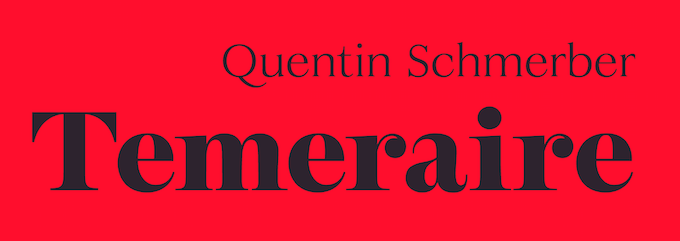 Type designer presently based in Berlin (and before that, London). Graduate of the Ecole Nationale Supérieure des Arts Décoratifs (ENSAD) in Strasbourg, France (BA) and the Ecole Supérieure d'Art et Design (ESAD) in Amiens, France (MA), class of 2016. His graduation typeface family Temeraire pays tribute to the English letter ca. 1800, and includes some Clarendon-ish features. Each of its styles addresses a specific part of 19th century British lettering tradition, such as gravestone cutting, fat faces, master penmanship, copperplates, Egyptians, and Italians. Temeraire was published in 2018 by Typetogether.
Type designer presently based in Berlin (and before that, London). Graduate of the Ecole Nationale Supérieure des Arts Décoratifs (ENSAD) in Strasbourg, France (BA) and the Ecole Supérieure d'Art et Design (ESAD) in Amiens, France (MA), class of 2016. His graduation typeface family Temeraire pays tribute to the English letter ca. 1800, and includes some Clarendon-ish features. Each of its styles addresses a specific part of 19th century British lettering tradition, such as gravestone cutting, fat faces, master penmanship, copperplates, Egyptians, and Italians. Temeraire was published in 2018 by Typetogether. Between 2016 and 2019, he was a type designer at Production Type, working on the retail catalog and custom projects. In 2018, he cooperated there with Jean-Baptiste Levée and Yoann Minet on Cardinal Classic and Cardinal Fruit, a large transitional typeface family. The tightly set and high impact photojournalism typeface family Cardinal Photo was added in 2020. At Future Fonts, he published Leonardo Fascia (an outgrowth of Temeraire) and the angular chiseled type Framboisier (with Dorine Sauzet; inspired by Jacno's work) in 2018. Leonardo Fascia was redrawn and expanded, and a variable font was added, in 2021. Fontstructor (aka styk) who made Greedo Unicase (2012, octagonal). He collaborated briefly with Feliciano Type and did some bespoke type design projects that are still to be revealed. Since July 2019, he has been working exclusively with Swiss Typefaces as a type designer. Home page. Future Fonts link. Future Fonts link for Schmerber Type. [Google]
[MyFonts]
[More] ⦿
|
Schriftgestaltung
[Georg Seifert]

|
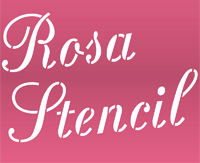 Georg Seifert (Schriftgestaltung) is a Bitterfeld-Wolfen and/or Jena, Germany-based designer, born in Halle in 1978. He was a student at the Bauhaus University Weimar and runs Schriftgestaltung.de. He is best known for the free font editor Glyphs, released in 2011. Seifert lives and works in Berlin. His typefaces include
Georg Seifert (Schriftgestaltung) is a Bitterfeld-Wolfen and/or Jena, Germany-based designer, born in Halle in 1978. He was a student at the Bauhaus University Weimar and runs Schriftgestaltung.de. He is best known for the free font editor Glyphs, released in 2011. Seifert lives and works in Berlin. His typefaces include - Olive Green Mono (2008). A monospaced typeface designed for his own use in email and programming code. Covers Greek and Cyrillic. Published by Schriftgestaltung.
- Rosa Stencil (2008). A calligraphic stencil typeface. Published by Schriftgestaltung.
- Azuro (2011). A 4-style screen family developed by Georg Seifert and fine-tuned by Jens Kutilek.
- Graublau Sans (2005), GrauBlau Sans Kursiv. Has a Cyrillic style. The design of Graublau Sans Pro (20 styles with over 1000 glyphs each) took Georg Seifert over 5 years. Graublau Sans Web is free. Retail versions at MyFonts: Graublau Sans Pro (2008, FDI), Graublau Slab Pro (2012, FDI).
- Pen (2006). A handwriting font.
At ATypI 2009 in Mexico City, he introduced his (free) font editor Glyphs to the world. Speaker at ATypI 2013 in Amsterdam. Speaker at ATypI 2016 in Warsaw. Klingspor link. Behance link. Older German URL. [Google]
[MyFonts]
[More] ⦿
|
Schriftlabor
[Rainer Erich Scheichelbauer]

|
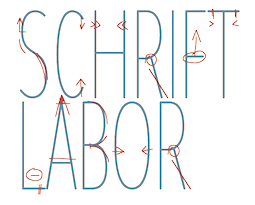 Schriftlabor was established by Rainer Erich Scheichelbauer in Vienna in 2014, with offices in Vienna, Porto, and soon also in Jakarta. The Schriftlabor team includes Miriam Suranyi, Chiara Mattersdorfer, Franziska Hubmann, and Igor Labudovic. They specialize in all aspects of type design and typography, including custom type design. One of their nicest custom design, done for Mucca design, Sephora (2015-2017, in sans and serif versions). I Love Typography link. [Google]
[MyFonts]
[More] ⦿
Schriftlabor was established by Rainer Erich Scheichelbauer in Vienna in 2014, with offices in Vienna, Porto, and soon also in Jakarta. The Schriftlabor team includes Miriam Suranyi, Chiara Mattersdorfer, Franziska Hubmann, and Igor Labudovic. They specialize in all aspects of type design and typography, including custom type design. One of their nicest custom design, done for Mucca design, Sephora (2015-2017, in sans and serif versions). I Love Typography link. [Google]
[MyFonts]
[More] ⦿
|
Sébastien Delobel
|
 French designer, b. 1972, Lille. He graduated from the École Supérieure des Arts décoratifs de Strasbourg, and cofounded Atelier Telescopique in Lille in 1998. This became Ainsifont in 2007.
French designer, b. 1972, Lille. He graduated from the École Supérieure des Arts décoratifs de Strasbourg, and cofounded Atelier Telescopique in Lille in 1998. This became Ainsifont in 2007. Designer of these typefaces: Acopik (2000), Bizeau (2002), Byme (2007), Beye (2007), Fish (2001), Fisher (2007), Kune (2008), Lailuya (2007), Equinox (2000, a liquid font), Delory (2002), Lanne (2001, typefaces), Stronote (2002), Nuk (2002), Normal (2000), Merik (2002), Mulette (2005), Normal (2007), Raoul (2007), Rondie (2003), Lienne (with Xavier Meurice, 2001), SV01 (2002, dingbat), the pixel and dot fonts Kune (2002), Le Dixca (2000), and the free dot fonts Steroid (2002), Vabo (2002), Bepierre (2002), LeCicerond (2000-2001). He participates in the type cooperative Ainsifont in Lille. His typefaces there include - The rounded sans typeface Fluo (2012-2014, with Xavier Meurice).
- Rijsel (2013, sans).
- Tomica (2012). A geometric sans that was influenced by Futura. Designed in 2009 for the corporate visual identity of a digital television channel, Tomica was completely redesigned in 2011.
- Rubal (2010-2011). A bold stencil face. Originally designed by Atelier Télescopique for College Lévi-Strauss, a secondary school in Lille.
- Screenex (2011). A pixel typeface done in memory of the hated Minitel (1980-2012).
- AF Singolo (2012, with Xavier Meurice). A stencil typeface created for Lille Design.
- Mento (2015, with Xavier Meurice). Original from 2007. Raoul (2007, with Xavier Meurice). Original created for the Kursaal in Dunkirk, and named in honor of Lille-based singer Raoul de Godewarsvelde.
- Playtime (2012-2018). A stackable sans typeface by Xavier Meurice and Sébastien Delobel.
- Unida (2016, Ainsifont). Sans serif typeface designed in 2012 for the signage system of the international Campus of Hautes Ecoles d'Ingénieurs in Lille, France. The character set of the font has been optimized and extended between 2013 and 2016.
- Mona Mono (2018-2020). Originally designed in 2018 for the Riffy International Animation Film Festival in Korea, the 5-style inktrapped Mona Mono family is now used exclusively used by Mecanorma brand to be printed on clothes by letterpress transfer.
[Google]
[More] ⦿
|
Sean Sebastian Donohoe
[Type Five Studio]
|
[More] ⦿
|
SeatMeta
|
The house font of SEAT, developed on the basis of Meta. [Google]
[More] ⦿
|
Sebastián Gagin
|
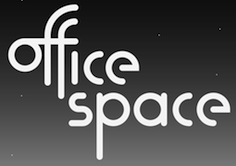 Graphic designer and illustrator in Buenos Aires (b. 1985, Buenos Aires). In 2009, he experimented with mechanical letters in Mech Type.
Graphic designer and illustrator in Buenos Aires (b. 1985, Buenos Aires). In 2009, he experimented with mechanical letters in Mech Type. In 2011, he made the nearly-blackletter typeface Güten Tag (which was started in 2006), and the rounded sans typeface Seattle. At Tipos Latinos 2012, Sebastián Gagin won an award in the display type category for Kiwi Extendida, which was inspired by the blackboard signs found in grocery stores around Buenos Aires. In 2012, he created the connected upright Lara Script, and the beautiful monoline rounded sans typeface Seattle (which was inspired by Bauhaus). He created a number of vernacular typefaces for the Masticar food fair in Buenos Aires in 2012. In 2017, he designed the stencil typeface Faena Art for the Faena Art foundation, which has chapters in Buenos Aires and Miami Beach. Behance link. Another Behance link. [Google]
[More] ⦿
|
Sebastian Castellanos De La Hoz
[Bastarda Type (was: No Name Type Foundry)]
|
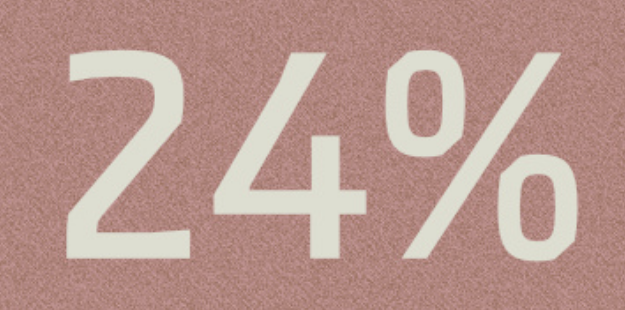 [More] ⦿
[More] ⦿
|
Sebastian Fischer
[Hubert and Fischer]
|
 [More] ⦿
[More] ⦿
|
Sebgarry Design
[Tapiwanashe Sebastian Garikayi]
|
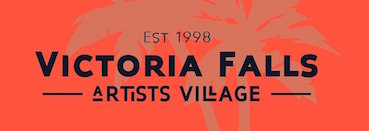 Victoria Falls, Zimbabwe-based designer of the free pixelish typeface New Time Nerd (2017), and the free slab serif typefaces Mused (2017) and SebSlab (2017).
Victoria Falls, Zimbabwe-based designer of the free pixelish typeface New Time Nerd (2017), and the free slab serif typefaces Mused (2017) and SebSlab (2017). In 2018, he designed Magz Slab, Debut Sans, the octagonal typeface family TSG Actie, the slab serif typeface Legacy17 (and Legacy Pro, which has two free weights), the display typeface Afrofusion, the free text typeface Beau, and the free chiseled roman typeface Romulus. Typefaces from 2019: Afronik (a great interlocking squarish typeface), Gamine (a free Peignotian sans), Seb Neue (sans), Paste (a sans in 8 styles), Famba, BigBro, Tuckshop Titling (a free font inspired by Tuckshop sign writing in Chinotimba, Victoria Falls). Typefaces from 2020: Mwangwego Script (a script invented in Malawi in 1979 by Nolence Mwangwego to replace the Latin alphabet), Mutapa (a tribal font), Orinique (a custom modulat sans family for Orinique Design Studio), Chico (a free wide sans). Fontspace link. Graphicriver link. Fontspace link. [Google]
[More] ⦿
|
Serebryakov Type Foundry (or: Serebryakov TF, S TF; was Onetypethree Foundry, or: Dzianis Serabrakou)
[Denis Serebryakov]

|
Denis Serebryakov's Design studio in Minsk, Belarus creates logotypes and identity based on original lettering and own production fonts. Appetite (2011) is a black upright script family. It was followed by Appetite Contrast (2012) and the italic version, Appetite New (2012), the sketched version, Appetite Sketch (2013), and Appetite Rounded (2014). In 2016, it was updated to Appetite Pro. In 2017, it was extended to Appetite Pro Rounded. Myster (2012) is a random font in which each glyph has three alternatives. General (2012) is an elegant casual sans family. Germes (2012) is a grotesk family with some contrast and with some reverse serifs added sparingly. Germes Sans (2012) is the sans version. Statut (2012) is an elegant thin typeface that is based on calligraphic work by Belarusian artist Pavel Semchenko. Oldsman No. 1 (2012) is a fashion mag typeface. Displace (2013, +Displace Cut, +Displace 2.0 in 2019, +Displace Serif in 2019) is a sans typeface drawn with a tilted nib. Ultratype (2013) is an angular typeface designed for Ultralab. Typefaces from 2014: Bouquet (a fat brushy script, with Cyrillic). Typefaces from 2015: Ultratype Beta. Typefaces from 2016: Nature Product. Typefaces from 2017: Canapa (humanistic sans), Rozza (a curvy decorative stencil typeface). Typefaces from 2018: Epos. Typefaces from 2019: AMDG (a sans commissioned by Artox Media design Group). Typefaces from 2020: Nekst (a 7-style geometric sans with a reference to bent metal tubing; +a variable style). Typefaces from 2021: Taler (a 7-style avant-garde slab serif featuring plastic stiffness). Type Tomorrow link. [Google]
[MyFonts]
[More] ⦿
|
Serge Cortési
|
 French graphic and type designer who makes mainly typefaces for companies. His oeuvre:
French graphic and type designer who makes mainly typefaces for companies. His oeuvre: - Freisz (1990).
- In 2002, he was awarded the Trophée d'Or by Agfa Monotype for his typeface Carrefour.
- With Sylvie Chokroun he designed the new Gaz de France typeface, called Dolcevita, for the studio Plan Créatif. It is organic with a big O.
- Shiseido, an avant-garde typeface done with Adrian Frutiger. A hint of Peignot perhaps.
- Scripte Bonne Maman, which every Frenchman recognizes from the jars of "confiture".
- CMI, or Cockerill Maintenance et Ingénierie, an organic industrial typeface.
- Luxerine.
- Ticker Restaurant.
- Accor (a hotel chain).
- Gamm Vert.
- Petit Bateau, grunge.
- Citroën (2008): corporate sans typeface. See also here.
- DS (2017). A didone typeface family for DS Atomobiles. By Serge Cortési and Christophe Badani.
Serge Cortesi's Studio Cortesi also has typefaces by Christophe Badani and Stéphane Gabrielli. Typecache link. Klingspor link. [Google]
[More] ⦿
|
Sergiy Tkachenko
[4th February]

|
 [MyFonts]
[More] ⦿
[MyFonts]
[More] ⦿
|
Seth Bohlken
|
Art director in Minneapolis, MN, who created the corporate techno typeface EPI Headline in 2016. [Google]
[More] ⦿
|
Setup (was: Urtd)
[Ondrej Jób]

|
 Bratislava-based type and graphic designer (b. 1984, Czechoslovakia). He graduated from AFAD Bratislava, and in 2009 from the Type and Media program at KABK, where he designed Doko, a serifed text family derived from handlettering. Earlier, he created the Preissig-look family Kompilat (2007), and the monospace font Monoxil (2007).
Bratislava-based type and graphic designer (b. 1984, Czechoslovakia). He graduated from AFAD Bratislava, and in 2009 from the Type and Media program at KABK, where he designed Doko, a serifed text family derived from handlettering. Earlier, he created the Preissig-look family Kompilat (2007), and the monospace font Monoxil (2007). In 2008, Peter Bilak, Eike Dingler, Ondrej Jób, and Ashfaq Niazi created the 21-style family History at Typotheque: Based on a skeleton of Roman inscriptional capitals, History includes 21 layers inspired by the evolution of typography. These 21 independent typefaces share widths and other metric information so that they can be recombined. Thus History has the potential to generate thousands of different unique styles. History 1, e.g., is a hairline sans; History 2 is Peignotian; History 14 is a multiline face; History 15 is a stapler face, and so forth. He founded Urtd in 2009 in Liptovsky Hradok, Slovakia, and renamed it Setup in 2016. He sells these fonts: the ION family (2010, LED simulation typefaces), Outliner (2008, architectural lettering), and the icon sets Ico Weather (2010), Ico Time (2010) and Ico Phone (2010). Klimax Bold (2008) is in the ultra-ultra-fat art deco category, and won an award at TDC2 2009 for display face. See also Klimax Plus (2009). Creations in 2011: Clip (2011) is a 4-style Opentype-feature-loaded paperclip family. Typefaces made in 2012: Remi (useful monospaced geometric sans family), Bismuth (angular techno family), Bismuth Stencil. In 2013, Ondrej Job published the script typeface Odesta. Odesta won an award at TDC 2014. Typefaces from 2014: Woodkit (a series of grungy wood emulation typefaces for Latin, Greek and Cyrillic published at Typotheque; Woodkit won second prize in the TDC 2015 Type Design competition), Pexico and Pexico Micro (pixel typefaces). Woodkit won an award at Modern Cyrillic 2014. In 2020, he designed the warm sligtly flared typeface family Clarinet. See also Clarinet Wide (2020). Corporate typefaces by Ondrj Job include Milkface, About Face and Fox Sports Netherlands. MyFonts link. Typedia link. Behance link. Klingspor link. Village link. Future Fonts link. [Google]
[MyFonts]
[More] ⦿
|
SFB Fonts (or: Studio Fabio Biesel)
[Fabio Biesel]
|
Ravensburg (was: Konstanz), Germany-based designer of the experimental sans typeface families Increase (2018) and Güggeli (2018). In 2019, he released the sans typeface Pedalo. In 2020, he designed the custom hipster typeface Knoblauch Jubilee. [Google]
[More] ⦿
|
Shawn Hight
|
Vancouver, BC-based motion designer. For a children's TV channel, she designed the bicolored rounded sans typeface families Fun and sans Fun in 2018. [Google]
[More] ⦿
|
Sherif Eid
|
Medina, Saudi Arabia-based creator of the custom stencil font Areen (2017) for the Areen Artistic Solutions Company. [Google]
[More] ⦿
|
Shila Latiff
|
Singapore-based student-designer of the custom typeface Dainty (2014), which was created for Bath & Body Works Shila has a Bachelors from Nanyang Technological University School of Art, [Google]
[More] ⦿
|
Shinn Type
[Nick Shinn]

|
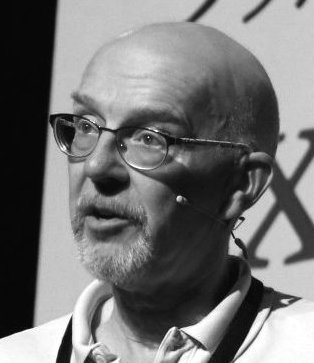 Nick Shinn (b. London, 1952) is an art director and type designer. He teaches at York University in Toronto, and is a founding member of the Type Club of Toronto. He writes regularly for Graphic Exchange magazine, and has contributed to Applied Arts, Marketing, Design, and Druk. He founded Shinn Type in 1999, and made fifteen type families. Interview by Jan Middendorp, in which he describes himself as a contrarian. Pic by Isaias Loaiza. Pic by Chris Lozos at Typo SF in San Francisco in 2012. Custom typefaces have been produced for newspapers such as The Birmingham News (Alabama), The Chicago Tribune, The Daily Express (London), The Daily Mail (London), The Globe and Mail (Toronto), The Montreal Gazette, and The St. Petersburg Times (Florida). Custom fonts, with exclusive rights, have been created for corporations such as Thomson Nelson, Enbridge, Rogers Communications Inc., and Martha Stewart Living. Nick organizes type evenings in Toronto all year long.
Nick Shinn (b. London, 1952) is an art director and type designer. He teaches at York University in Toronto, and is a founding member of the Type Club of Toronto. He writes regularly for Graphic Exchange magazine, and has contributed to Applied Arts, Marketing, Design, and Druk. He founded Shinn Type in 1999, and made fifteen type families. Interview by Jan Middendorp, in which he describes himself as a contrarian. Pic by Isaias Loaiza. Pic by Chris Lozos at Typo SF in San Francisco in 2012. Custom typefaces have been produced for newspapers such as The Birmingham News (Alabama), The Chicago Tribune, The Daily Express (London), The Daily Mail (London), The Globe and Mail (Toronto), The Montreal Gazette, and The St. Petersburg Times (Florida). Custom fonts, with exclusive rights, have been created for corporations such as Thomson Nelson, Enbridge, Rogers Communications Inc., and Martha Stewart Living. Nick organizes type evenings in Toronto all year long. Shinn Type fonts at MyFonts. Behance link. He is the designer of Fontesque (a wild family of curly glyphs), the monospaced font Monkey Mono, Artefact (1999), Beaufort (a sharply serifed family done in 1999; in 2008, he published a 10-style extension called Beaufort Pro), Bodoni Egyptian (1999), Alphaville (2000, techno typeface with straight mono-width strokes), Brown, Brown Gothic, Duffy Script (2008, in 4 styles: an interpretation of the lettering of contemporary illustrator Amanda Duffy, aka Losergirl), Handsome (1999, cursive handwriting family, since 2005 available in OpenType), Merlin, Oneleigh (1999, masterful!!), Paradigm (1995, updated in 2008, inspired by 15th century letterforms), Shinn, Walburn (1996) [note: Walburn and Brown were originally commissioned for the 2000 redesign of the Globe and Mail. Walburn is an adaptation of a didone typeface by Erich Walbaum, c.1800], Worldwide (1999). In 2001, he designed the Richler font in honour of the memory of Mordecai Richler. The Richler font was only available to the Giller Prize, Random House and the Richler family until its public release in May 2013 at MyFonts, where Richler (+Cyrillic, +Greek) is advertised as a 21st century antiqua book face. In 2002, he published Goodchild (a Jenson revival; see also Goodchild Pro (2017). Goodchild is a Venetian with clean (not antiqued!) outlines and a larger-than-Jensonian x-height. It comes in 4 styles and is targeted at sophisticated academic typography) and the liquid lettering family Morphica, exclusively at Veer. In 2003, he released the absolutely gorgeous "modern" sans Eunoia (which has a unicase weight), and the quirky sans family Preface (2003; Preface Thin is a hairline weight; Preface Light is free at FontShop). In 2003, he also published the mmonowidth unicase family Panoptica (2003), which includes styles called Regular, Sans, Egyptian, Doesburg and Octagonal, to name a few. In 2004, he released Nicholas, a Jensonian serif family, which is the headline version of Goodchild. Additions in 2006 include Softmachine (VAG Rounded/comic book style family). Sexy type from Toronto is an article by Erin Kobayashi about Shinn's work published in the Toronto Star on April 15, 2007. Nick Shinn designed the type for the redesign of The Globe and Mail in April 2007: Globe and Mail Text [look at the f], Globe and Mail Sans (or GM Sans), Globe and Mail News (or GM News). In 2008, these typefaces went retail. One typeface is called Pratt, named after David Pratt, the design director at The Globe and Mail who commissioned the typeface for his redesign of the paper. The companion typeface will be called Pratt Sans. Additions in 2008: Figgins Sans (4 styles), Scotch Modern (a 5 style didone family that revives the typeface used in New York State Cabinet of Natural History), Scotch Micro. Paul Shaw writes: Scotch Roman, beloved by D.B. Updike and W.A. Dwiggins, was a standard in the typographic repertoire of pre-World War II printers but fell out of favor after the war, supplanted by Bodoni. Nick Shinn of Shinntype has made a bid to resurrect this oft-maligned typeface with Scotch Modern. Scotch Modern is not a revival of the familiar Scotch Roman of Linotype and Monotype, but of a more modern design attributed to George Bruce, the great 19th-century New York punchcutter. Shinn used a sample of the typeface from the New York State Cabinet of Natural History's 23rd Annual Report for the Year 1869 (printed in 1873) as a model. He drew it by eye, aided by a sharp loupe: no photographic enlargements, no scans, no tracing. The ends of the strokes are slightly rounded, to capture the effect of metal type being impressed into soft paper. Shinn contends that the 19th-century Scotch types were "eminently readable" and a factor in the rise of modern literacy. His rendition, an OpenType font, aims for readability in all situations with display, regular, and microtype versions. The display roman includes a unicase font-a nod to Bradbury Thompson's Alphabet 26 experiment-and the italic has elegant swash caps. Scotch Roman has never been a typeface for those seeking eternal beauty or anyone desperate for typographic kicks. Dwiggins gave it a 10 for legibility (where 10 was "reasonable human perfection") but only 4 for grace and 0 for novelty. Shinn's Scotch Modern, with its many OpenType extras, scores well on all three counts. It's a typeface for those who prefer a mature single malt: simple at first, but more complex as it is savored. Photograph. At ATypI 2008 in St. Petersburg, his talk was entitled Scotch Modern. Several catalogs have been published by Shinntype. Particularly noteworthy is The Modern Suite (2008, Nick Shinn, Coach House Press, Toronto), which showcases Figgins Sans and Scotch Modern. Sample of some Scotch Modern dingbats. Production in 2010: Sensibility (a humanist sans superfamily), Sense (a modernist sans superfamily), Bodoni Egyptian Pro (a monoline slab Bodoni experiment---the Pro version of a 1999 family by him). In 2011, he created Checker, an all caps 3d black and white-tiled typeface, and Parity (a roman unicase pair). Naiad (2013) is a didone, or neoclassical, typeface with Victorian curlicues thrown in to create a Victorian look. Pratt Nova (2014) is a 17-style large x-height typeface family that attempts to achieve visual and semantic opulence, equipping the typographer with a comprehensive array of harmonized fonts, all rigorously drawn, superbly fitted iterations of a single, profoundly original design. Neology (2014) is a 15-style sans family subdivieded into Deco, Grotesque and plain sans subfamilies. Brown Pro (2016) is a classic grotesque, distinguished by its semi-condensed proportions and slight flaring of the edges and some ink traps. Figgins Standard (2016) is a take on the low-contrast original sans typefaces designed in the 1830s in industrial London. Gambado (2016). This is a collection of shaken typefaces with bouncing letters. Particular fonts include Gambado Sans and Gambado Scotch. Dair (2017) is a revival of Canada's first home-grown typeface, Cartier, which was completed by Carl Dair in 1967 and named after 16th century explorer Jacques Cartier, who mapped the Gulf of St. Lawrence in the 1530s. Dair 67 and Dair 67 Italic are facsimiles of the original fonts. Dair and Dair Italic are fully-featured 21st century fonts. In 2018, Nick Shinn published Phiz, a diverse suite of 27 decorative fonts based on Figgins Sans Extra Bold. Designer of Boxley (2016), a superelliptical sans typeface family. At the end of 2020, he published the 14-style condensed rounded sans typeface family Aptly. o Typefaces from 2021: Buslingthorpe (a tall-necked typeface in which the x-height is only 29% of the ascender height, beating classic tall fonts such as Rudolf Koch's Koch Antiqua, and Lucian Bernhard's Lucian and Bernhard Modern). Speaker at ATypI 2017 Montreal. MyFonts interview. I Love Typography link. FontShop link. Klingspor link. View Nick Shinn's typeface library. [Google]
[MyFonts]
[More] ⦿
|
Silas Dilworth
[Dilworth Typographics Inc]

|
 [MyFonts]
[More] ⦿
[MyFonts]
[More] ⦿
|
Simi Mahtani
|
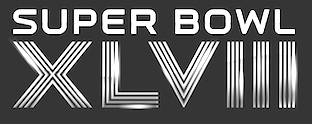 Brooklyn, NY-based designer of custom typefaces for SuperBowls 48, 49 and 50 in 2014-2016, on commission for the NFL. Behance link. [Google]
[More] ⦿
Brooklyn, NY-based designer of custom typefaces for SuperBowls 48, 49 and 50 in 2014-2016, on commission for the NFL. Behance link. [Google]
[More] ⦿
|
Simi Mahtani
|
 Brooklyn NY-based designer of the fine all-caps typeface Shadow Sans (2014). In 2014 and 2015, she designed custom sans headline fonts for the NFL's Super Bowls 48 and 49. In 2016, she designed a custom sans headline font for the NFL's Super Bowl 50. Behance link. [Google]
[More] ⦿
Brooklyn NY-based designer of the fine all-caps typeface Shadow Sans (2014). In 2014 and 2015, she designed custom sans headline fonts for the NFL's Super Bowls 48 and 49. In 2016, she designed a custom sans headline font for the NFL's Super Bowl 50. Behance link. [Google]
[More] ⦿
|
Simone Gonzalez
|
Digital and graphic designer in Australia who was commissioned to make the typeface Live Wire (2010). [Google]
[More] ⦿
|
Smart Courier
|
The 2001 house font of the company Smart, based on Courier. The copyright string mentions both Linotype and MCC Smart GmbH. [Google]
[More] ⦿
|
Smörgåsbord
|
 Cardiff, Wales-based studio Smöråsbord (under director David Burdus) released a typographic system for Wales tourist brand in 2015. A close collaboration with Colophon Foundry led them to develop Cymru Sans, a sans serif with numerous ligatures and a slight medieval touch. Later the studio produced Cymru Serif, a pairing Scotch Roman. The subtle chamfered edges of the serif's terminals reference the rich stone letter carving tradition in Wales. [Google]
[More] ⦿
Cardiff, Wales-based studio Smöråsbord (under director David Burdus) released a typographic system for Wales tourist brand in 2015. A close collaboration with Colophon Foundry led them to develop Cymru Sans, a sans serif with numerous ligatures and a slight medieval touch. Later the studio produced Cymru Serif, a pairing Scotch Roman. The subtle chamfered edges of the serif's terminals reference the rich stone letter carving tradition in Wales. [Google]
[More] ⦿
|
Snøhetta Design
|
Studio in Oslo. Creators of the corporate typeface Avinor Sans (2014) for Avinor, a company that owns and operates 46 airports in Norway. Behance link. [Google]
[More] ⦿
|
So Type
|
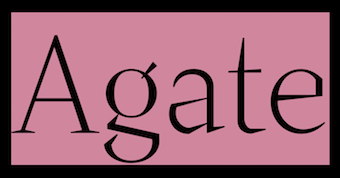 Stockholm-based type foundry closely related to design studio Söderhavet. Their typefaces:
Stockholm-based type foundry closely related to design studio Söderhavet. Their typefaces: - Agate. By Baptiste Guesnon. It was originally designed to be used as a display font for Strates, an architecture magazine edited by Baptiste Gerbelot Barillon who took part in the early days of the project.
- Elroy. By Oscar Bauer. Leroy is based on a technical drawing found in a 60s model car magazine. The type was drawn with a lettering set, a system used around that time to letter maps and other precision drawings. It was presumably similar to Keuffel & Esser's Leroy set, hence the name.
- So Ray (2017-2018). By the Söderhavet design team: Stefan Hattenbach, Tobias Eriksson, Jesper Robinell, Oscar Bauer. This grotesque family includes a variable type.
- So Sargo (2017-2018). By Stefan Hattenbach and Jesper Robinell. They write: A typeface inspired by the eastern german typefaces. A quite brutal sans serif---a flirt with the late 1950s and 1960s and the sans serif typefaces that went very popular due to the release of Helvetica, Neue Haas Grotesk, Univers, Norma and others. So Sargo have a feel of being slightly condensed compared to Helvetica. It's a bit less geometric and carry some organic flavour in the details. Other sources of inspiration comes from the typeface Maxima (designed by Gert Wunderlich in 1963 an distributed by Typoart, Dresden). So Sargo shows good readability and can therefor be used for both text- and headline purposes.
- So Wrasse (2017-2018). By Stefan Hattenbach and Jesper Robinell. A playful modern geometric sans.
[Google]
[More] ⦿
|
Socker One
[Hector Ramirez]
|
 Located in Ciudad de Mexico, Hector Ramirez (Socker One) created Street Helvetica (2013), a script version of Helvetica. He also designed the pixel typeface Tetris Sans (2013) and the geometric Latin/Cyrillic sans typeface Fontmaker (2013).
Located in Ciudad de Mexico, Hector Ramirez (Socker One) created Street Helvetica (2013), a script version of Helvetica. He also designed the pixel typeface Tetris Sans (2013) and the geometric Latin/Cyrillic sans typeface Fontmaker (2013). In 2015, they published Materiam Bold (a geometric industrial all caps sans), Fuencarral (a sans typeface family) and the tweetware font Librofest Stencil. [Google]
[More] ⦿
|
Sofia Bandini
|
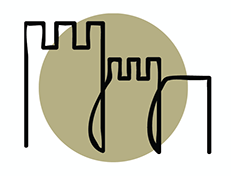 Florence, Italy-based typeface designer active at Zetafonts. Her typefaces:
Florence, Italy-based typeface designer active at Zetafonts. Her typefaces: - Amazing Slab (2021). A 20-style typeface family designed by Francesco Canovaro, Mario de Libero (who did the inline versions), Sofia Bandini and Andrea Tartarelli, developed from the Amazing Grotesk family designed by Cosimo Lorenzo Pancini. Characterized by outward-pointing top serifs, this typeface is designed for use in athletic lettering, logos and titling. Zetafonts writes: Mixing an Egyptian serif, low contrast approach with the curved endings and open shapes of humanist sans grotesques, it was developed to embody the energetic and friendly nature of the startup scene---a feeling of innovation, information and energy, with a desire for simplicity and straightforward communication. The basic design shapes for the font come from the strong personality of the extrabold letterforms drawn by Francesco Canovaro for his StartupItalia logo, that informed the display design of the four darkest weights (from medium to black).
- Crk (2019). A typeface designed for the rebranding of Cirk Fantastik.
[Google]
[More] ⦿
|
Soft Machine (or: Open Studio)
[Mark Niemeijer]
|
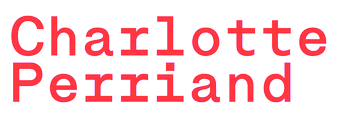 Soft Machine (part of Open Studio) is a digital type foundry based in Deventer, The Netherlands, set up in 2017 by Mark Niemeijer. He writes: Architectural and industrial design movements are a big influence on the work of Soft Machine---De Stijl, Union des Artistes Modernes, Congrès Internationaux d'Architecture Moderne, Neues Bauen, structuralism, metabolism, and post-modernism. These are also reoccuring themes in the visual output.
Soft Machine (part of Open Studio) is a digital type foundry based in Deventer, The Netherlands, set up in 2017 by Mark Niemeijer. He writes: Architectural and industrial design movements are a big influence on the work of Soft Machine---De Stijl, Union des Artistes Modernes, Congrès Internationaux d'Architecture Moderne, Neues Bauen, structuralism, metabolism, and post-modernism. These are also reoccuring themes in the visual output. Typefaces by Soft Machine: - Jos (2012).
- Fade (2016). Commissioned.
- Ijssel (2016). Commissioned.
- Hauser (2017). A stick stencil typeface.
- SM Maxeville (2017). A (ten style) compact typeface family inspired by Gerrit Rietveld, Jean Prouvé, De Stijl and Union des Artistes Modernes. Contains stencil styles. Followed by Maxeville Mono (2021).
- Marres (2019). Commissioned.
- Solaris (2020). A 6-style neo-grotesk with modulated contrast.
- Stellage (2020). A 5-style wedge serif family that includes a few stencil styles.
- Affairs (2021, +Monospace).
Instagram link for Soft Machine. Instagram link for Open Studio. Fonts in Use link. Github link. [Google]
[More] ⦿
|
Solvita Marriott
|
Designer in Modesto, CA, who created the ornamental caps typeface Native Voices (2012). She also made beautiful typographic posters entitled Berlin (2012) and Languages Matter (2012). For Trattortia Sorrent Panini, she made a custom art deco typeface. [Google]
[More] ⦿
|
Sony Design
[Akira Kobayashi]
|
In 2013-2014, Sony Design and Akira Kobayashi (Monotype) created the SST typeface family for corporate use. It is a sharp-edged universal sans that can be used in 93 languages, including Japanese, Arabic, Thai, Russian and Greek, to name a few. Interesting to see that Chinese is not covered, and that the design of a sharp-cornered typeface comes at a time when just about everybody else is into rounded sans typefaces. Akira Kobayashi, Monotype type director and primary designer on the project, turned to a network of local designers around the world for their individual language expertise. Subfamilies include SST Hebrew (2017), SST Arabic, SST Thai, SST Vietnamese, SST Japanese (which is a cooperation of Kobayashi with Isao Suzuki, Hideyo Ryoken and Saori Ooshima of Type Project). The typophiles complain that the Arabic is out of place and wonder what the utility is of yet another Frutiger. [Google]
[More] ⦿
|
Spencer Cathcart
|
Graphic designer in Ontario. Bruce Mau Design asked Spencer to help with a new identity for Unilever in 2011-2012. It included the development of DIN Unilever, and of a fat roundish Unilever Illustrative Type. [Google]
[More] ⦿
|
Stéphane Gabrielli
|
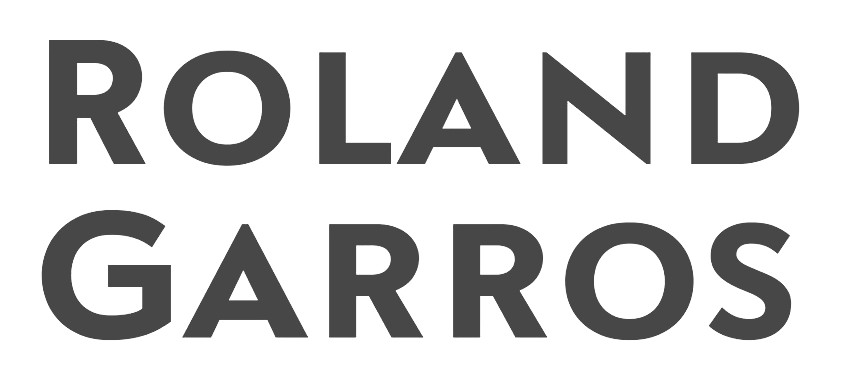 Born in 1983 in Lyon, he obtained arts degrees from Sèvres and Ecole Estienne. He is presently located in Plaisir, France. Stéphane cooperates on type design projects with Christophe Badani, with whom he co-designed the custom typefaces Darty (2013), Elior (2011), Kwixo (2010), Rolland Garros (2009), Rhodia (2009), Dassault Systèmes (2009), Alstom (2007, a sans family), Eurodatacar (2007, stencil), Graphèmes (2007), Peugeot (2007) and Vinci Sans and Vinci Serif (2007).
Born in 1983 in Lyon, he obtained arts degrees from Sèvres and Ecole Estienne. He is presently located in Plaisir, France. Stéphane cooperates on type design projects with Christophe Badani, with whom he co-designed the custom typefaces Darty (2013), Elior (2011), Kwixo (2010), Rolland Garros (2009), Rhodia (2009), Dassault Systèmes (2009), Alstom (2007, a sans family), Eurodatacar (2007, stencil), Graphèmes (2007), Peugeot (2007) and Vinci Sans and Vinci Serif (2007). In 2018, he co-designed Veuve Clicquot Ponsardin (2018) with Christophe Badani for the champagne company. [Google]
[More] ⦿
|
Stefan Ellmer
[Ellmer Stefan & Johannes Lang]

|
 [MyFonts]
[More] ⦿
[MyFonts]
[More] ⦿
|
Stefan Hattenbach
[Mac Rhino Fonts (MRF)]

|
 [MyFonts]
[More] ⦿
[MyFonts]
[More] ⦿
|
Stefan Knezevic
|
Graphic designer in Belgrade, Serbia, who obtained a Masters degree in graphic design from the Faculty of Applied Arts in Belgrade. In 2015, he created a custom typeface for the Belgrade Week Of Art 2015. Behance link. [Google]
[More] ⦿
|
Stefano Torregrossa
|
Stefano Torregrossa is a creative director in Verona, Italy, who is associated with Onice Design. In 2017, Stefano Torregrossa and Lorenzo Ballarini co-designed the custom sans typeface Salvagnini for the sheet metal company by that name. Behance link. [Google]
[More] ⦿
|
Sterenn Bourgeois
|
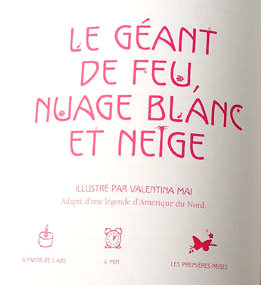 Sterenn Bourgeois (Trait pour trait, France) studied graphic and type design at Ecole Estienne in Paris. She created several typefaces, including Nature (a great children's book typeface created for Mille Ans de Contes, ed. Milan), Québec (same purpose as Nature), Titi (hand-drawn), Super Héros, Ariol (comic book face), Gabri, PLR (license plate sans) and a set of initial caps done for Editions Ex Nihilo in 2011. [Google]
[More] ⦿
Sterenn Bourgeois (Trait pour trait, France) studied graphic and type design at Ecole Estienne in Paris. She created several typefaces, including Nature (a great children's book typeface created for Mille Ans de Contes, ed. Milan), Québec (same purpose as Nature), Titi (hand-drawn), Super Héros, Ariol (comic book face), Gabri, PLR (license plate sans) and a set of initial caps done for Editions Ex Nihilo in 2011. [Google]
[More] ⦿
|
Stockholm Design Lab
[Thomas Eriksson]
|
 Stockholm Design Lab is a multidisciplinary design agency in Sweden, founded in 1998 by Björn Kusoffsky and Thomas Eriksson. They do custom type work. These logotypes and custom types include:
Stockholm Design Lab is a multidisciplinary design agency in Sweden, founded in 1998 by Björn Kusoffsky and Thomas Eriksson. They do custom type work. These logotypes and custom types include: - Stadium AB (for Norrk&oum;ping-based Stadium AB, the largest sporting goods retailer in Scandinavia). Done in 2007, and somehow connected with Monotype, the sturdy sportsy Stadium Sans family includes Stadium Sans Pictograms.
- K-World, a logotyoe for an educational TV channel in Sweden.
- SAS. A logotype.
- Vin&Sprit. A corporate identity tye family called V&S and Monoline VS for the booze group that markets Absolut Vodka.
- Kapp Ahl. A logotype for the clothing brand.
- Moderna Museet. Stockholm Design Lab, together with Henrik Nygren and Greger Ulf Nilson, created a comprehensive identity program for Moderna Museet. It included a new graphic identity. The typeface is called Gridnik MM (2004, octagonal). [Gridnik is the nickname of Wim Crouwel.]
- IKEA Food. The typeface is called IKEA Sans.
- UKK. An interesting 3d cubic type design for UKK, Uppsala Konsert Kongress.
- Agnette. A serifed logotype.
- Astoria. A modular headline design for the Astoria cinemas and restaurants, and a sans and serif type family.
- DICE. DICE or Digital Illusions Creative Entertainment is a proud member of the EA Games Group. DICE creates top-quality computer games and is the leading game development studio in Scandinavia. They produced award-winning games such as the Battlefield series. Stockholm Design Lab has created a comprehensive design program that covers a corporate identity and product development.
- Morphic. Corporate identity and logotype for the wind generator company.
- Cubus. New corporate identity done in 2007 for this women's fashion brand.
- Magnusson Fine Wine. Magnusson Fine Wine offers first class wine valuation, consultancy and storage services. Stockholm Design Lab has together with TEA created a visual identity program and interiors for the facility in Stockholm.
- Peak Performance. Identity and logotype for this sportswear company.
- Bonnier. Bonnier is a multi-channel media company. SDL created a design program covering corporate identity, imagebank, website and the annual report 2008.
- Linnéuniversitetet (2010). Corporate identity for Linnaeus University.
- Norrlandsoperan. A logotype for this opera ensemble.
- Ohmine Shuzou. A logotype and identity for a sake brand in Japan, Takeshi Akiyama.
- Hemtex. A logotype.
- The Swedish Institute (SI) is a public agency that promotes interest and confidence in Sweden around the world. Stockholm Design Lab has been involved in updating the identity and refining the logotype. The font used is Akkurat SI.
- Spritmuseum is the new name for Vin och Sprithistoriska Museet which is constructing its new home in a beautiful location in Kungl, with a finish date of 2012. Identity and logotype.
- Bella Sky is part of Comwell and is Scandinavia's largest hotel---it is located in Copenhagen. SDL has created the new identity and signage system for the 814 room hotel. The new (octagonal) typeface is called Bella Sky.
- KMH (Royal College of Music) is one of the oldest and most prestigious music colleges in Sweden. Its new visual identity has been developed by Stockholm Design Lab in 2011.
- Ahlens (2011). The type family Ahlens Sans is part of the visual identity SDL did for Åhléns Klubb.
[Google]
[More] ⦿
|
Stuart Brown
[HamburgerFonts Type Foundry]

|
[MyFonts]
[More] ⦿
|
Studio Feed (or: Feedtype)
[Anouk Pennel]
|
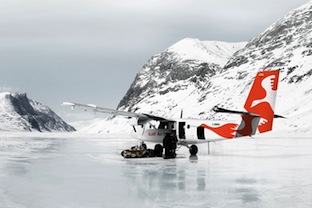 Studio Feed (or: Feedtype) is a Montreal-based studio, est. 1999. Its typefaces:
Studio Feed (or: Feedtype) is a Montreal-based studio, est. 1999. Its typefaces: - Vells Mono (2017). Originally designed for the visual identity of SSSVLL, but now a retail typeface. Designer unknown.
- In 2011, it published the retail typeface Wigrum, a sans serif with strong references to both geometrical sans of the thirties, and to their current influence. It can be bought from BAT Foundry. The designers, Anouk Pennel and Raphaël Daudelin, explain: Wigrum was born in 2011, when Anouk Pennel and Raphaël Daudelin, from Montréal-based design studio Feed, were preparing the book design for Daniel Canty's latest novel. Canty, a contemporary writer from Québec, writes in Wigrum about a mysterious character who moves at the border between fiction and reality, between Second World War time and present time, between Eastern and Western Europe.
- Ottomono (2014). A monospaced font developed for the Ottopapax project: A collaboration between designers Patrick Bisson, Étienne Hotte and Anouk Pennel, the idea behind Pliage No1 was to develop a product combining object and graphic design, with the potential for mass production while remaining affordable. Pliage No1 consists of a single sheet of cardboard worked in an industrial manner. In the same way, Ottomono is formed by sturdy yet simples shapes, both industrial and familiar.
- Atelier Mono (2014): a custom monospaced all caps font for the branding of Atelier Général, an architecture agency based in Montreal.
- Guillon (2016: manufactured by Coppers and Brasses). They write: Guillon, a Montreal-minded sans serif influenced by the international style, is named in honour of designer Jacques Guillon. It was created for the rebranding of GSM Project. After designing the Cord Chair (1953), Mr. Guillon lent his initial to GSM Project, the multidisciplinary design agency he started with Morley Smith and Laurent Marquart. Right from the beginning, GSM has breathed a modernist, international life into Montreality, with notable contributions to Expo 67, the design of the Montreal Metro, and the furnishings of the head office of Alcan aluminium corporation. Guillon was also adopted as the official typeface for the identity of the ATypI conference in Montreal in 2017.
- Feed Mono.
- Multiplex.
- Adaptive (octagonal).
- More Gothic (2017): the loud and loutish font with a crooked tongue for the project A Book About, commissioned by Corinn Gerber and Benjamin Thorel at Art Metropole, in Toronto. This display font presents an assortment of boxy and rowdy letterforms, whose common denominator is their vernacular brashness.
- Infrafonte.
- Toxstruct. A modular typeface possibly made with Fontstruct.
- MML Mono.
- Uno (2014): A custom rounded sans typeface done for the Canadian Centre for Architecture in Montreal. The shapes of the characters are directly inspired by the stencils formerly used for architectural blueprints.
- Citerne (2021). The tough face with leakproof joints, this no-nonsense sans was conceived in 2017 as part of the new visual identity for Reservoir, a gourmet brew pub on Montreal's Duluth Street.
- Youth Grotesque (2021). Feedtype writes: This razor-edged family of seven weights was first developed as an artistic proposition for the project Dans un monde post: un événement post-punk. Sharp angles and hijacked historical references lend a bombastic individuality to the typeface.
- E8888 No 001 (2022). A sans developed during the COVID pandemic and Putin's invasion of Ukraine. Studio Feed writes: E/8888 No001 was designed in 2019 for Editions 8888, the Montreal-based collective creating the accoutrements of a dystopian optimism. E/8888 No001, the very first Editions 8888 product and spearhead of its visual identity. One weight, its italics, that's all. E/8888 No001, an all-purpose Grotesque. Rough shapes, solid width, dissonant details, a fusion of historical references and industrial strategies, the raw material of an approach devoid of artifice. E/8888 No001, the very first Brutaluxe font, offers no apologies and has no regrets.
Old Studio Feed link. Behance link. Newest Behance link. [Google]
[More] ⦿
|
Studio Karamemet
[Erkin Karamemet]
|
German type designer active at Dinamo who is based in Berlin. In 2015, he set up Studio Karamemet. Since 2020, he teaches design at FH Bielefeld. His typefaces: - Pareto (2016). A Western typeface family designed by Johannes Breyer, Fabian Harb & Erkin Karamemet.
- Prophet (2016). Prophet is designed in 2016 by Johannes Breyer, Fabian Harb & Erkin Karamemet. Technical support and mastering by Chi-Long Trieu. It is inspired by Joseph Churchward's Georgina.
- Whyte and Whyte Inktrap (2019, Dinamo). In 2019, Johannes Breyer, Fabian Harb and Erkin Karamemet released Whyte and Whyte Inktrap at Dinamo.
- In 2022, Erkin Karamemet developed a Wingdings / Webdings-inspired typeface for the rebrand of Stink Studios.
[Google]
[More] ⦿
|
Studio Manuel Schibli
[Manuel Schibli]
|
Studio Manuel Schibli is a creative direction and design studio founded by Manuel Schibli in 2012. Based in Paris and Berlin, they work for a wide range of clients in fashion, arts and culture. Manuel Schibli designed some custom fonts such as MSC Max Werner (2013) and MSC Pyrit (2013). In 2012, Manuel Schibli created the custom typeface family Derzeit for Derzeit, the Berlin Fashion Week Daily. It was designed in collaboration with Yassin Baggar at Fatype. [Google]
[More] ⦿
|
Studio Type (or: Typojo)
[Jo de Baerdemaeker]
|
 Belgian type designer (b. Brussels, 1974) who lived in Kessel-Lo, and is now based in Antwerp.
Belgian type designer (b. Brussels, 1974) who lived in Kessel-Lo, and is now based in Antwerp. For his M.A. in Reading in 2004, he designed Lungta (2004). At ATypI 2006 in Lisbon, he spoke about Tibetan letterforms. In 2009, he obtained his doctoral degree from Reading on a topic entitled Tibetan Typeforms: from their inception in 1738 up to the present day. Jo taught at the Department of Typography & Graphic Communication (University of Reading). He presently teaches at the Plantin Institute of Typography (Antwerp), at the European Lettering Institute (Bruges) and at LUCA (campus Sint-Lucas Gent). Earlier he taught at LUCA (campus Sint-Lukas Brussels), and at KASK School of Arts (HO Gent). In 2012, Jo De Baerdemaeker founded Studio Type in Antwerp (Belgium), and collaborates with international design studios and type foundries. He received the title Nieuwe Vlaamse Meester in de Kunst in 2017 from the Flemish Government. Author of Tibetan Typeforms (De Buitenkant). His typefaces: - Antwerpen. A custom titling font commissioned by Today, exclusively available for the visual identity of the City of Antwerp. Antwerpen consists of 3 weights (Antwerpen Regular, Antwerpen Small, and Antwerpen Tall).
- Colard Mansion (2017). This custom font family was designed in light of Haute Lecture by Colard Mansion: innovation text and image in medieval Bruges, a unique exhibition on the oeuvre of Colard Mansion, at the Groeningemuseum Bruges which ran in 2018. The remarkable typography of Mansion inspired De Baerdemaeker to carry out detailed research into the work of the master and to develop a new digital font family for the City of Bruges. It consists of Colard Mansion Bastarda, and an angular sans typeface family.
- Construct. An experimental geometric typeface in which the initial lowercase letters were extended with a horizontal headline as in Devanagari: graduation project at St Lukas College of Art and Design, Brussels.
- Dolma (2018) (Tibetan Petsug). Dolma is a Tibetan font in the headless Umed Petsug style. This handwritten style is often used in Tibetan publications. Petsug was frequently used in the Kham Province of East Tibet. Dolma was designed for the 40th anniversary celebrations of Karma Sonam Gyamtso Ling, the Tibetan Institute in Schoten (Antwerp) in 2018.
- Elegant Contemporary (2009). A 4-style grotesque done for an arts center in Nottingham, inspired by Hans Möhring's Elegant Grotesk, 1928.
- Flanders Art. A 27-style sans serif & serif font family, custom designed for the visual identity of the Flemish Government.
- KdG. The KdG font was designed for the new visual identity of the Karel de Grote Hogeschool (KdG) which is located in Antwerp.
- Ken Broeders. This custom comic book typeface is designed exclusively for the renowned graphic novel designer Ken Broeders. Based on his unique handwriting, Ken uses this font for the lettering of the numerous translations of his beautifully hand illustrated and originally concepted graphic novels Apostata, Driftwereld, and other projects.
- Lungta (2004). an unbelievably gracious bicephalic typeface with Latin text serif and Tibetan components. He says that the design was influenced by Dwiggins. Lungta is currently in use by The Oxford University Press, and was used for the Tibetan portion of the book In the forest of faded wisdom: 104 poems by Gendun Chopel. This book, edited and translated by Donald S. Lopez Jr, was published in November 2009 by The University of Chicago Press.
- Nirmala Bengali. Nirmala UI is a modern Indic typeface family commissioned by Microsoft. It was first released with Windows 8 in 2012 as a UI font and supports languages using Bengali, Devanagari, Kannada, Gujarati, Gurmukhi, Malayalam, Odia, Ol Chiki, Sinhala, Sora Sompeng, Tamil and Telugu. It also has support for Latin, with glyphs matching Segoe UI. It is also packaged with Microsoft Office 2013 and later versions of Windows. The typeface was art-directed by Fiona Ross, produced by John Hudson, and hinted by Ross Mills. Fiona Ross and John Hudson also designed the Devanagari and Odia, David Brezina designed the Gujarati, Valentin Brustaux the Telugu, Jo De Baerdemaeker the Bengali and Fernando de Mello Vargas the Malayalam and Tamil. The Latin from Segoe UI is by Steve Matteson.
- Noto Javanese. A Javanese font for the Monotype / Google Noto Sans project.
- Sherpa, part of the Sherpa font project. The project started with the study and design of the Sherpa typeface for the Lantsa (Ranjana) script, and will continue with other scripts fro the Himalayan region, like Tibetan, Phags-pa, Lepcha, Mongolian, Soyombo, and Devanagari scripts.
- Typo Belgieque (2021). A project to revive some old and typically Belgian typefaces. Times New Belgian: The latest reading technology with centuries-old Belgian letters is an article about this project that appeared in de Tijd, February 2021.
- Wiels (2008). A sans typeface designed for the Centre of Contemporary Art in Brussels, Belgium.
At ATypI 2006 in Lisbon, he spoke about Tibetan letterforms. Speaker at ATypI 2010 in Dublin: The Javanese typefaces of Johannes Enschedé en Zonen and Lettergieterij Amsterdam voorheen N. Tetterode. Speaker at ATypI 2011 in Reykjavik on The Mongolian script. Speaker at ATypI 2013 in Amsterdam. Speaker at ATypI 2016 in Warsaw (on reverse italics). Speaker at ATypI 2019 in Tokyo on the topic of Ferdinand Theinhardt's Legacy in Tibetan Typography. [Google]
[More] ⦿
|
Studio8 Design
|
 Studio8 Design is an independent graphic design studio in central London, that was established in 2005 by Matt Willey and Zoé Bather. In 2009, they created B-Word, an old typewriter face, for the identity of literary website Blazingword. In 2011, they added a squarish 3d shadow typeface for Wired Magazine. [Google]
[More] ⦿
Studio8 Design is an independent graphic design studio in central London, that was established in 2005 by Matt Willey and Zoé Bather. In 2009, they created B-Word, an old typewriter face, for the identity of literary website Blazingword. In 2011, they added a squarish 3d shadow typeface for Wired Magazine. [Google]
[More] ⦿
|
Suitcase Type Foundry
[Tomás Brousil]

|
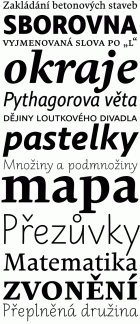 Suitcase Type is a Czech foundry, est. 2003 by Tomas Brousil (b. 1975), who lives in Prague. He graduated from the Prague Academy of Arts, Architecture and Design (Type Design and Typography, MgA. 2009) where his graduation project was the 96-family Tabac typeface system, published in 2010. He teaches in the Type Design and Typography department of the Prague Academy of Arts, Architecture and Design.
Suitcase Type is a Czech foundry, est. 2003 by Tomas Brousil (b. 1975), who lives in Prague. He graduated from the Prague Academy of Arts, Architecture and Design (Type Design and Typography, MgA. 2009) where his graduation project was the 96-family Tabac typeface system, published in 2010. He teaches in the Type Design and Typography department of the Prague Academy of Arts, Architecture and Design. The Tabac family started with Tabac Sans in 2010. It was augmented in 2012 with Tabac Slab and Tabac Mono, which have a full range of weights from Hairline to Black. Tabac Glam, a fashionable Peignotian high contrast sans, was added in 2016, and Tabac Micro in 2018. In 2019, he published Tabac Big Glam, Tabac Big Sans, Tabac Big Slab and Tabac Big. Other typefaces from 2008-2010 include Monopol (a six-weight condensed sans that includes a hairline weight), Idealista (2010, organic, a mix of styles), Nudista (2009, a multistyle take on DIN with a superb fashion mag hairline, Nudista Thin), Kulturista (2009, a part slab part serif extension of Nudista), Comenia Sans (2008, a 12-style complementary family to Storm's Comenia Serif for school textbooks), Metalista (2008, unicase octagonal metallic face). 2007 was a successful year. Brousil created Bistro Script (2007, fifties diner style script), Corpulent (2007), and Gloriola (2007, a sans in 14 styles, including a hairline. The last typeface family won an award at TDC2 2008 and at Typographica's Best of 2007. Stephen Coles likes its position between the cool sterility of de Groot's monolinears and the warmth of Latin designers: With a broad range of weights, a complete Western character set, and a sack of ligatures and alternates, Gloriola has the depth required for complex identity systems and publication design. This shrewd response to the fashions of today is going to be useful for many years to come.). The year 2007 also saw Purista (a 10-style cousin of Eurostile), which includes hairline weights. Ellen Lupton says this about Purista: I've been feeling hungry for a stylish, edgy sans who enjoys evenings out on the town and long mornings of crisp conversation. In other words, I've been craving a font who likes to party but who can also help out with the dishes. Production in 2005-2006: Teimer's Antiqua (2006: a didone family based onn unpublished 1967 design by Pavel Teimer), Rokoko (2006, an octagonal custom typeface for the Rokoko Theatre in Prague), Sandwich (2006, a lively display caps set), Vafle (2006: based on an original concept by Marek Pistora from 1997, with minor adaptations and 11 new weights), Dederon Sans and Serif (2005, the sans version being inspired by TypoArt's Liberta; see also here for a comparison with Underware's Dolly), Dederon Serif. Typefaces from 2004 or earlier include Fishmonger (2004, a sans family), RePublic (a 2004 revival, done with Radek Sidun, of Public by Stanislav Marso, 1955. Note that Public was used to set the text of a Czechoslovak Communist party newspaper, Rudé Právo), Botanika (2005, a sans family including many typewriter styles and several mono weights), Atrament (2003, a narrowed grotesque inspired by the lettering used on the title of the almanac "Devetsil - Revolucni slovnik" (1922) edited by Karel Teige, in 30 styles!), Magion (2004, a simple geometric font), Fishmonger (2004, a broad 50-weight futuristic family), Katarine (2004, a warm sans family with appropriate dingbats added in), and Orgovan (2004-2005, a punk/brush family). Typefaces from 2013 include the roundish sans family Ladislav: The Ladislav font revitalises Sutnar's legacy, while not explicitly copying any of his original fonts. It however keeps true to their technicist character and initial principles of character creation - a simple modular system of combined geometrical segments. This approach affects all round shapes of capital and lowercase letters, as well as the shapes of the majority of numbers. The g consists of two disjoint circles. Typefaces from 2014: Urban Grotesk (a very airy, open grotesque typeface with large x-height and uniform grayness). Typefaces from 2015: Pacifista (stencil). Typefaces from 2016: BC Novatica (by Tomas Brousil and Marek Pistora (Briefcase Type): Novatica was created based on a commission from the Czech commercial television station Nova in 2007. Marek Pistora worked with Tomas Brousil to create an alternative to a readable, simply designed sans. They naturally called the typeface Novatica. In 2014 TV Nova decided to abandon Novatica for good, and in so doing it released the exclusive licence it had been using. Novatica thus became a new typeface offered by Briefcase Type Foundry. Typefaces from 2017: Jaroslav (monolinear sans, named after Jaroslav Benda, followed in 2020 by Benda), Pepi and Rudi (a sans and slab pair based on basic shapes such as circles, rectangles and triangles). Typefaces from 2020: Atyp BL (+variable), Atyp (+variable). A 25-style sans family remotely influenced by Bauhaus. Typefaces from 2021: Crabath (a 72-style transitional typeface family based on the 1761 specimen book of Czech typefounder Vaclav Jan Krabat; this family covers several optical ranges, from Subhead to Display to Text, and features wonderful initial caps). Typefaces from 2022: Atyp Kido (a 6-weight and variable rounded sans family for Latin, Greek and Cyrillic). Brousil made many corporate or identity fonts. Examples include Brzda (a custom font for Czech artist Pavel Brazda), Budovatel (a custom font for the Bohemian National Hall in New York), and Union (custom webfonts for the Czech graphic design union). MyFonts page. Behance link. Klingspor link. MyFonts interview. View Tomas Brousil's typefaces. [Google]
[MyFonts]
[More] ⦿
|
Sulekha Rajkumar
|
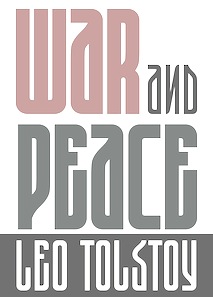 Senior designer in Banagalore. Creator of the Latin / Cyrillic constructivist typeface Privet (2013). Other fonts by her include Earth Song (2013, a recycling-themed typeface) and Multiplicity (2013, a counterless geometric sans), both done for a commercial project.
Senior designer in Banagalore. Creator of the Latin / Cyrillic constructivist typeface Privet (2013). Other fonts by her include Earth Song (2013, a recycling-themed typeface) and Multiplicity (2013, a counterless geometric sans), both done for a commercial project. Designer of Anek Bangla as part of Ek Type's award-winning family Anek (2022). [Google]
[More] ⦿
|
Suleyman Yazki
|
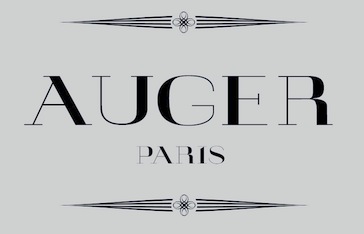 Istanbul-born graphic designer and typographic researcher, now located in Geneva, Switzerland. During his studies in the Master of Graphic Design program in Rennes (France), he created Lita (2012), a thin grotesk typeface. L'Atelier (2012) is an experimental typeface designed with Colophon Foundry (UK) for the international Chaumont graphic design festival.
Istanbul-born graphic designer and typographic researcher, now located in Geneva, Switzerland. During his studies in the Master of Graphic Design program in Rennes (France), he created Lita (2012), a thin grotesk typeface. L'Atelier (2012) is an experimental typeface designed with Colophon Foundry (UK) for the international Chaumont graphic design festival. In 2013, he created the distinctive typeface Auger for Auger Paris: Created by Raymond Jacquet in 1946, the studio, which has the distinction of being one of the last existing typography and wood engraving studios, has been managed by the typographer and engraver Vincent Auger since 2004, who perpetuates this prestigious studio. To improve the image of the studio, the aim of the new identity was to think up a character relating to the book and its history. The design is based on a more contemporary didone, while strongly influenced by Art Deco aesthetics. He joined Studio Dumbar in Rotterdam. Graduate of the School of Applied Arts of Rennes (France) and of DSAA LAAB Academy in 2014. In 2014, he started work at Prologue Films in Los Angeles. At Fontfabric, he published the free Latin / Cyrillic stencil font Rafale (2014) and the art deco font Auger. Behance link. Old URL. Another Behance link. [Google]
[More] ⦿
|
Sulki and Min
[Sulki Choi]
|
 This type team consists of Sulki Choi and Min Choi, graphic designers in Seoul, Korea, who first met in 2001 while studying for an MFA at Yale. Sulki is teaching at Kaywon School of Art&Design, and Min at the University of Seoul. Their typefaces include identities (Now Jump [for the exhibition at Nam June Paik Art Center, Yongin, 2008], Arko Pix [dingbats for the Arko Art Center, 2008]), experimental typefaces (FF Tronic [2003: a grunge typeface done with Hyun Cho], Stealth [2002], Blitz [2001: grunge]), pixel typefaces (Bmap) and more or less standard typefaces (Zephyr (2001, a humanist monospace family), Politie (2001), Transport Text [light-weight adaptation of the British road sign letterform, originally designed by Jock Kinneir and Magaret Calvert, 2003], Vitra Thin [2002: hairline sans], Bask Sans [2003]). Politie (2002) is a monospace adaptation of the typeface Wim Crouwel designed in the 1960s for the typewriter manufacturer Olivetti, which was released after decades as a digital font by the Foundry in London (Foundry Gridnik). Sulki and Min explain: Although neither the original nor the Foundry's interpretation were designed as fixed-width typefaces, its rigid, modular letterform seemed apt for a monospace adaptation. [Google]
[More] ⦿
This type team consists of Sulki Choi and Min Choi, graphic designers in Seoul, Korea, who first met in 2001 while studying for an MFA at Yale. Sulki is teaching at Kaywon School of Art&Design, and Min at the University of Seoul. Their typefaces include identities (Now Jump [for the exhibition at Nam June Paik Art Center, Yongin, 2008], Arko Pix [dingbats for the Arko Art Center, 2008]), experimental typefaces (FF Tronic [2003: a grunge typeface done with Hyun Cho], Stealth [2002], Blitz [2001: grunge]), pixel typefaces (Bmap) and more or less standard typefaces (Zephyr (2001, a humanist monospace family), Politie (2001), Transport Text [light-weight adaptation of the British road sign letterform, originally designed by Jock Kinneir and Magaret Calvert, 2003], Vitra Thin [2002: hairline sans], Bask Sans [2003]). Politie (2002) is a monospace adaptation of the typeface Wim Crouwel designed in the 1960s for the typewriter manufacturer Olivetti, which was released after decades as a digital font by the Foundry in London (Foundry Gridnik). Sulki and Min explain: Although neither the original nor the Foundry's interpretation were designed as fixed-width typefaces, its rigid, modular letterform seemed apt for a monospace adaptation. [Google]
[More] ⦿
|
Sulki Choi
[Sulki and Min]
|
[More] ⦿
|
Sumotype Foundry
[Oscar Fernando Guerrero Cañizares]

|
 Born in 1981 in Colombia, Oscar Guerrero lives in Pasto, Narino, in the southwest of Colombia. His graduation work in 2012 at FADU UBA (University of Buenos Aires) is the Venetian text typeface Epica. Epica was first released in 2014 at Sumotype and later, in 2020, by Sudtipos as Epica Pro.
Born in 1981 in Colombia, Oscar Guerrero lives in Pasto, Narino, in the southwest of Colombia. His graduation work in 2012 at FADU UBA (University of Buenos Aires) is the Venetian text typeface Epica. Epica was first released in 2014 at Sumotype and later, in 2020, by Sudtipos as Epica Pro. In 2014, he set up Sumotype Foundry in Bogota, Colombia. The Sumotype fonts include Proyecta (2014: a great wedge-serifed ultra-fat stencil typeface), Septima (2014, sans family for urban signage), Epica (2014 release: this typeface won an award at Tipos Latinos 2014), Farma (2014, a roundish headline sans), Republica del Diseño (2014, stencil), Moira (2014). Typefaces from 2015: Babar (an inspiring heavy poster typeface also headed for stardom). Typefaces from 2016: Pacha (free square-shaped tribal typeface with plenty of ligatures). In 2018, he published the creamy fashion mag italic headline font Vala (Monotype). In 2019, he added the retro script typeface Playland (Monotype). Typefaces from 2021: June (a variable font by Fer Cozzi and Oscar Guerrero), Fuga (an experimental hybrid sans). Typefaces from 2022: Gregor (a hybrid sans serif typeface family with two variants, Upright and Slanted; the design is inspired by some advertising graphic designs used in the United States during the 60's and 70's; published at Bastardatype), The Irish Pub (identity and custom typeface in a Celtic / beer bottle / German expressionist style). Typeface developer at Omnibus Type. Future Fonts link. [Google]
[MyFonts]
[More] ⦿
|
Sumpatha Jadee

|
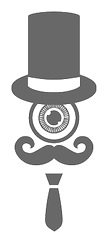 Bangkok-based designer of Kannika, a fat didone display typeface in 2012, to be published at Katatrad. He also made the experimental typeface Judeka (2012) and the fat poster typeface MMFK (2013, a great free dingbat-laden typeface dedicated to Mamafaka from Farmgroup).
Bangkok-based designer of Kannika, a fat didone display typeface in 2012, to be published at Katatrad. He also made the experimental typeface Judeka (2012) and the fat poster typeface MMFK (2013, a great free dingbat-laden typeface dedicated to Mamafaka from Farmgroup). He creates typefaces for the Bangkok-based type foundry, Produce. In 2013, he co-designed Etch with Vorathit Kruavanichkit. Etch combines art deco, tattoo style and blackboard bold in a stylish display family. In 2014, Produce published the monospaced family Fixed (Vorathit Kruavanichkit, Sumpatha Jadee) which comes with a stencil style. They took the decorative stencil style to new heights in the six-font family Punch Pro (2014: Slab, Bracketed, Wedge, Deco, Hairline and Sans; by Vorathit Kruavanichkit and Sumpatha Jadee). Tech (2014, Vorathit Kruavanichkit, Sumpatha Jadee, Produce) is a techno / sci-fi typeface with a circuit-inspired sub-style, Tech 7000. In 2015, Vorathit Kruavanichkit and Sumpatha Jadee co-designed the street art typeface Lam. Talad Noi (2015) is a Latin & Thai signage and wayfinding system done for the Arsom Silp Institute of the Art Landscape (Architect: Shma SoEn). For Groove, Sumpatha created the wayfinding dot matrix typeface Groove, also in 2015. In 2015, he designed the fingerprint-inspired bespoke typeface Demark 2015. In 2017, he designed the custom Latin / Thai typeface Mogu Mogu, the custom FA Thailand Sans for the Football Association of Thailand (FAT), and the neo deco typeface Drouwel (Jadee was type director; the actual font was designed by Milan Pietaerents). In 2018, he published Satra (Latin / Thai) for the movie. Home page. Behance link. [Google]
[MyFonts]
[More] ⦿
|
Superstorefont
[Mongao Monglok]
|
Thai type designer. His typefaces: - Retail: Galileo, Silplapawatanathum, Kilogram, Pesto, Superstore, Vanilla, Croissant, Oxygen, London, Anatomy, Arunsawad, Ballet, Edison.
- Free: Kruengprung, Supermarket, Kunlasatri, Arabica, Jean.
- Custom: She He Us Me, Zaan, Blackdonut, Unilamp. [Google]
[More] ⦿
|
Susana Carvalho

|
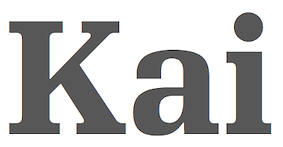 Portuguese designer (b. 1979), who studied communication design at the Faculty of Fine Arts at the University of Lisbon (FBAUL), and obtained her Master's degree at the Royal Academy of Fine Arts (2004) and still lives in Den Haag. She created the experimental sans typeface Vertigo (2004). At the Piet Zwart Institute in Rotterdam, she obtained an MEd with a thesis entitled Counterspace: Classroom Space as a Pedagogic Tool in 2019. She founded Atelier Carvalho Bernau in 2005 with her partner Kai Bernau. She is a guest lecturer at KABK, the Royal Academy of Arts in The Hague (since 2011).
Portuguese designer (b. 1979), who studied communication design at the Faculty of Fine Arts at the University of Lisbon (FBAUL), and obtained her Master's degree at the Royal Academy of Fine Arts (2004) and still lives in Den Haag. She created the experimental sans typeface Vertigo (2004). At the Piet Zwart Institute in Rotterdam, she obtained an MEd with a thesis entitled Counterspace: Classroom Space as a Pedagogic Tool in 2019. She founded Atelier Carvalho Bernau in 2005 with her partner Kai Bernau. She is a guest lecturer at KABK, the Royal Academy of Arts in The Hague (since 2011). At Atelier Carvalho Bernau in Den Haag, one can look at their commercial type families Atlas Grotesk (2012), Atlas Typewriter (2012), Neutraface Slab, Lyon Text, Lyon Display, and Neutral. Bespoke typefaces were designed for Esquire, Internazionale, and Munich Re. Atlas was released in 2020 at Commercial Type, where a Cyrillic version was added by Ilya Ruderman. The slab of the famous Neutraface family at House Industries was co-designed by Christian Schwartz, Kai Bernau and Susan Carvalho: Neutraface Slab Text, Neutraface Slab Display. Susana Carvalho published the bellbottom slab serif Plinc Tuggle at House Industries. It is a digitization of an earlier font by Photo Lettering Inc. In 2016, Susana Carvalho and Kai Bernau published Algebra (Commercial Type): Algebra evolved from Granger, a headline typeface designed by Susana Carvalho and Kai Bernau for the US edition of Esquire. Algebra is a broad-shouldered slab serif typeface built on superelliptical forms. Its loose spacing gives a remarkably comfortable texture in text, and its crisp detailing gives a distinctive and serious feeling at display sizes, particularly with some negative tracking. Algebra references Adrian Frutiger's Egyptienne, Georg Trump's Schadow, and Hermann Zapf's Melior. [Google]
[MyFonts]
[More] ⦿
|
Swell Type
[John Roshell]

|
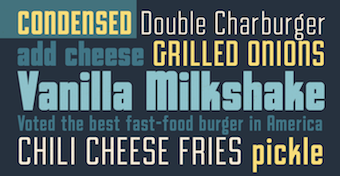 Type foundry set up in 2020 by Comicraft's John Roshell, who is based in California. In 2020, he released the squarish all caps family Silver Streak (+variable font), the futuristic typeface Hyperspace Race and the 25-style (variable) display family Paradise Point.
Type foundry set up in 2020 by Comicraft's John Roshell, who is based in California. In 2020, he released the squarish all caps family Silver Streak (+variable font), the futuristic typeface Hyperspace Race and the 25-style (variable) display family Paradise Point. Typefaces from 2021: Beardstown (a gritty hardworking retro all caps font), Goodland (49 styles; inspired by painted signs on industrial buildings in the town of Goleta, California; +a variable font with width, weight and slant axes). Typefaces from 2022: Beachwood (an 81-style (+variable) chamfered font based on vintage street signs in Los Angeles, and named for Beachwood Drive which leads to the famous Hollywood sign), Beachwood (an 81-style (+variable) chamfered font based on vintage street signs in Los Angeles, and named for Beachwood Drive which leads to the famous Hollywood sign). Custom fonts, many of them done for Rovio: Angry Birds, AB Flock, AB Stella, Avatar, Bad Piggies, Clash Royale, Fairy Tale Twist, Looney Tunes Dash, Marvel Strike Force, Rovio Game. [Google]
[MyFonts]
[More] ⦿
|
Sylvie Chokroun

|
French designer in Paris (b. 1977) who graduated at the École Estienne there. She won an award at Bukvaraz 2001 for Nathan (Sephardi Hebrew). This font was published as Nathan MF in 2003 at Masterfont. Co-designer with Serge Cortesi of the new Gaz de France typeface, called Dolcevita, produced for the studio Plan Créatif. Klingspor link. [Google]
[MyFonts]
[More] ⦿
|
Taisiya Lushenko

|
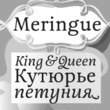 Aka Taya. Russian designer at Art Lebedev Studio of these typefaces:
Aka Taya. Russian designer at Art Lebedev Studio of these typefaces: - The sans family ALS Story (2008, together with Zakhar Yaschin).
- The text family ALS Meringue (2009, with Olga Balina).
- The antiqua typeface Flai (2015, with Vera Evstafieva).
- Yandex (2013). A corporate typeface by Ksenia Erulevich, Taisiya Lushenko, and Elena Novoselova.
- Zaryadye (2017). A humanistic grotesque, created specifically for Zaryadye park.
- Ivolga (2018). A playful yet conservative formal script.
- The elliptical sans typeface ALS Horizon (2019).
[Google]
[MyFonts]
[More] ⦿
|
Tal Leming
[Type Supply]

|
 [MyFonts]
[More] ⦿
[MyFonts]
[More] ⦿
|
Taler & Turner
|
Taler and Turner is a Delhi-based team of branding professionals. For the branding of The Laundry House (Delhi), they added a bubble element to Gotham Bold. [Google]
[More] ⦿
|
Tankboys
[Marco Campardo]
|
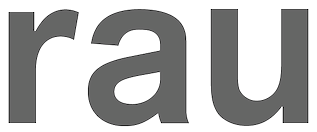 Tankboys is a design studio based in Venice, Italy, founded in 2005 by Marco Campardo and Lorenzo Mason. In 2015, they published the geometric / grotesk sans typeface TT Gigi, a custom typeface done for Maikii, and mention that Aldo Novarese's Recta has served as inspiration. Earlier, they created Forma Nova (after the 1965 Nebiolo typeface, Forma) and Kant (2012), yet another sans. [Google]
[More] ⦿
Tankboys is a design studio based in Venice, Italy, founded in 2005 by Marco Campardo and Lorenzo Mason. In 2015, they published the geometric / grotesk sans typeface TT Gigi, a custom typeface done for Maikii, and mention that Aldo Novarese's Recta has served as inspiration. Earlier, they created Forma Nova (after the 1965 Nebiolo typeface, Forma) and Kant (2012), yet another sans. [Google]
[More] ⦿
|
Tapiwanashe Sebastian Garikayi
[Sebgarry Design]
|
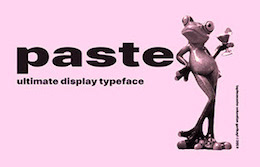 [More] ⦿
[More] ⦿
|
Tarek Atrissi
|
Arabic type site by Tarek Atrissi, a Beirut-born Lebanese professional designer, who is located in Hilversum, The Netherlands. He holds a BA in Graphic Design from the American University of Beirut, Masters of Arts in Interactive Multimedia from Utrecht School of Arts in Holland and an MFA in Design from the School of Visual Arts in NY. A Designer of the 6-weight Arabic family called AT, The Spirit of Doha (2004, for the Asian Games 2006), Al-Ghad (for the Jordanian newspaper Al-Ghad), the Ghad TV font (for the Jordanian station ATV), Etisalat (custom type for Etisalat Communications), Ayna (a squarish typeface done for Ayna.com), and Ambesque (2006, for the Amwaj Islands of Bahrain). He manages Arabtypography.com, a site dedicated solely to Arab typography. In 2008, he created Atrissi Sans. In 2007, he embarked on a project with Peter Bilak to develop Fedra Arabic to accompany Bilak's Fedra family. In 2010, he designed a custom Arabic font for the new BBC Arabic TV channel and custom Farsi face for the new BBC Farsi TV channel. [Google]
[More] ⦿
|
TeGeType
[Thierry Gouttenègre]

|
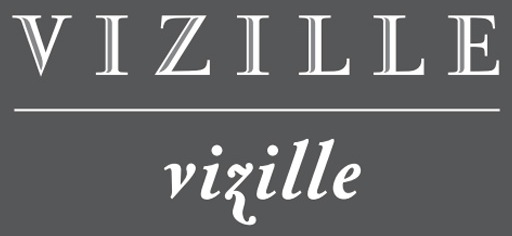 Thierry Gouttenègre is a Belgian designer (b. 1961), who is located in Tullins-Fures, France. After a stint as type director of Alfac-Decadry in Belgium, Thierry Gouttenègre moved to the south of France and started his own Design Studio in the mid 90s. In 2007, he set up TeGeType. He is one of my favorite type designers. His fonts:
Thierry Gouttenègre is a Belgian designer (b. 1961), who is located in Tullins-Fures, France. After a stint as type director of Alfac-Decadry in Belgium, Thierry Gouttenègre moved to the south of France and started his own Design Studio in the mid 90s. In 2007, he set up TeGeType. He is one of my favorite type designers. His fonts: - Aldogizio (2013). The name gives the font away, an amalgamation of Aldo Novarese and Egizio---this is a slab serif fest.
- Batarde Bourguignonne: a medieval blackletter.
- Carcel (2009): striped letters.
- Cinio (2009): used for signage by several French cities. For use on screen, he slightly rounded the corners and released the result as Cinio Text in 2019.
- David Aubert (1992, Alfac): a bastarda (bâtarde bourguignonne) named after David Aubert, the calligrapher of Philippe Le Bon and Charles Le téméraire, both dukes of Burgundy who worked and lived in Brussels in the 1500s.
- Dickens (1995, Fonderie Barthélémy).
- Dilectus (2019). Originally intended for musea, this lapidary typeface takes inspiration from paleochristian engravings.
- Falace (2008): a contemporary interpretation of the Didone typefaces.
- Firmin Didot (1989, Alfac).
- Fournier (1990, Alfac).
- Fraktur (1990, Alfac).
- Grégoire (1994, Fonderie Barthélémy).
- Alipe Script (2014). A calligraphic connected (wedding, chancery, greeting card, divrce) script.
- Hugo (1995, Fonderie Barthélémy).
- Kafka (1994, Fonderie Barthélémy).
- Limine (2008), a 3D beveled typeface family in styles called Creux and Relief.
- LouisJou (2000).
- Majuscule (1991, Alfac).
- Neutre (1997, Fonderie Barthélémy). A sans family specially designed for signposting applications. This type family is used by several cities in France.
- Oculi Magni (2020). Specially designed for small and tight texts, the glyphs have maximal x-height.
- Otsu Sans (2011) and Otsu Slab (2013).
- Poltrone (2010), a great titling family inspired by 19-th century public inscriptions.
- Rome (1995, Fonderie Barthélémy).
- Rosart (1991, Alfac), named after the 18th century Belgian typefounder, J.-F. Rosart.
- Sand (1996, Fonderie Barthélémy).
- Sursum (2009): a roman almost-typewriter family.
- Tolstoï (1994, Fonderie Barthélémy).
- Varvara (2017: a weathered all caps constructivist typeface created as a tribute to Barbara Stepanova (1894-1958)).
- Vizille (1998-2009): a phenomenal Fournier text family made for the Musée de la Revolution Française in Vizille.
- WebType (2002): a techno family.
Klingspor link. View Thierry Gouttenègre's typefaces. [Google]
[MyFonts]
[More] ⦿
|
Tegut Sans
|
The house font of Tegut. It is based on Officina Sans. [Google]
[More] ⦿
|
Teo Tuominen
[LetterMaker]

|
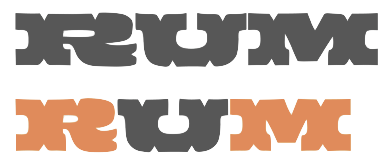 [MyFonts]
[More] ⦿
[MyFonts]
[More] ⦿
|
Terminal Design
[James Montalbano]

|
 Terminal Design is the company of James Montalbano in Brooklyn, New York, est. 1990. He was the President of the Type Directors Club, 2002-2003. He teaches type design at the School of Visual Arts in New York City. Feature on him by John Berry. In 2019, he declared at Typedrawers: I'm so tired of type design, so we must assume that threw in the towel. James designed these fonts:
Terminal Design is the company of James Montalbano in Brooklyn, New York, est. 1990. He was the President of the Type Directors Club, 2002-2003. He teaches type design at the School of Visual Arts in New York City. Feature on him by John Berry. In 2019, he declared at Typedrawers: I'm so tired of type design, so we must assume that threw in the towel. James designed these fonts: - In an earlier life as part of Fonthaus, ca. 1994-1995, I believe that Montalbano designed fonts like DidotDisplayAntiqueTdi, DidotDisplayRegularTdi, ProgressivePsychoOneTdi (through Six) and SenzaTDI (many weights).
- 718 (2010). A clean 24-style sans family influenced by as many typefaces as there are immigrants in Brooklyn. Named after the non-Manhattan area code.
- Alfon (2003). Montalbano calls it a muscular text typeface. It has chamfered corners and cupped serifs.
- Badinage. A connected retro script.
- Cappella (2013). It is a direct result of the work done on the Fordham Chapel custom font commission. A one weight, all caps design based on wood carved lettering from a Fordham University chapel honoring fallen alumni.
- Choice Sans, Choice Sans Compressed, Choice Sans Condensed (2014).
- ClearviewADA, ClearviewADA Condensed, ClearviewHwy, ClearviewText, ClearviewText Compressed, ClearviewText Condensed. The legible sans serif family ClearviewOne, designed for highway signs, and used for US highway signs starting in 2002. The highway sign font family is called ClearviewHwy), and is further explored here. ClearviewHwy is used for highways in the USA starting in 2004 (see the discussion here). The OpenType version of ClearviewOne is called ClearviewText (2007). ClearviewADA (2007) is a family of Clearview fonts that conform to the letterform specifications for signage outlined in the Americans with Disabilities Act legislation. Free download. Clearview was discontinued in 2016 by the US Federal Highway Administration, in favor of the older Highway Gothic from the 1940s: Report by Citylab.
- Consul Caption, Consul Deck, Consul Display, Consul Text (2009). A 48-style text family. Optically sized, it emerged from a Gustave Mayeur design done by Montalbano for Mens Vogue. Consul has a hint of didone, but the brackets are rounded and the stems gently flared. In Montalbano's palette, this is one of the beauties.
- Enclave (2007): A sixteen font slab serif family.
- Fervent (2013). A sans version of Badinage.
- Giacomo 2.0. a well-balanced and interesting sans-serif family. Includes Cyrillics.
- Insouciant (2011). An upright connected script family..
- At ITC: ITC Orbon 2020, ITC Orbon (1995-1996: a strange experimental typeface), ITC Nora (1997), ITC Freddo (1996, a fat poster typeface).
- Kaboodle (2018). A wood type with extended Latin, Greek and Cyrillic.
- Kinney (2011). A type family for tables and information design. James's self-proclaimed attempt at creating a neutral serif.
- Latin 512, Latin 512 Compressed, Latin 512 Condensed, Latin 512 Expanded. An 80-style didone family with triangular or wedge serifs typical of the Latin style.
- Moraine (2009). A serif family with a wide generous feel. Stems are flexed and tapered and serifs are cupped.
- Notary (2017).
- Now Playing (2007): A digital revival of the naïve plastic lettering that was used on the marquee of the Apollo Theater in Harlem.
- Quotient (2015). An elegant sans typeface family without italics. Montalbano describes it as trajan Sans because of its classical roman proportions. many details such as the rhombic dots on the i's are inscriptional in nature.
- Rawlinson 2.0, Rawlinson 2.0 Condensed, Rawlinson Roadway (2003). A serif family, which includes a Condensed sub-family). NPS Rawlinson Roadway is an old style serif typeface currently used for the United States National Park Service's road signs. It was created to replace Clarendon and uses James Montalbano's wife's last name.
- Shenandoah. A display type based on the wood letters at Shenandoah National park.
- Social (2012). A rounded sans family for on-line use.
- Tangent (2007): A geometric sans in sixteen styles.
- Trilon, Trilon Compressed, Trilon Condensed, Trilon Expanded (2009): A sans typeface family. Montalbano calls it a 21st century gothic.
- VF Sans, VF Sans Condensed (2011). An avant-garde family with 32 styles. James explains its release: Back in the late 90s I designed a family of sans serif fonts for Vanity Fair magazine. I based them on various sans serif designs from the 1930s with nothing particular in mind. They have been compared to Intertype's Vogue, and I do see the connection, but it wasn't my intention of doing a Vogue revival. They have been kept out of circulation these last many years at Vanity Fair's request, but it appears that during the last few years Vanity Fair has lost interest in them. They no longer grace the front cover of the magazine, and they appear with less and less frequency inside the publication. I've also noticed several pirated uses of them as they have popped up on some book jacket designs. So with Vanity Fair's permission I felt it time to set them free.
- Yo Andy, Yo Frankie, Yo Lucy, Yo Sophie, Yo Zelda. The Yo series (2010) consists of 200 didone styles. It is subdivided into Yo Andy, Yo Frankie, Yo Lucy, Yo Sophie and Yo Zelda. This didone family has two axes (weight, extension) with 100 regular members finished in 2010 and 100 italics added in 2014. They reach in alphabetical order from condensed (Andy) to extended (Zelda).
Montalbano designed custom corporate fonts for Condé Nast Publications, Warner Music, The American Medical Association, the U.S. National Park Service, Vanity Fair, Brides, Gourmet, Mademoiselle, Sassy, Details, Glamour, Jane, Self and Book. The list of font names, with links: - Collins Geometric.
- DM Marquee. A dot matrix all caps design created for Mother NY for their client, Daily Motion.
- Early Learning Sans. A family of 12 fonts designed for MeadWestvaco's Early Learning Products division for use in educational products teaching young students the basics of letter construction.
- Fordham Chapel. Based on wood carved lettering from a Fordham University chapel honoring fallen alumni.
- Fortune Titling. Based on the Fortune logo.
- Glamour Display, Glamour Script. The latter is a roundhand script. Both were done for Glamour magazine.
- JCP News Gothics. Created for DDB Chicago, for use in the It's all in there campaign for JC Penney. Should work with existing Monotype News Gothic fonts.
- Johan Gothic. A condensed sans serif designed for Conde Nast Sports for Women, which changed its name to Women's Sports, which then changed its name to Women's Sports and Fitness. The type was named for the art director who commissioned it.
- Lucky Gothic.
- Mens Vogue-Mayeur. Mayeur Display, an original design created in 2005 for Men's Vogue. Based on 19th Century French text types from the Parisian foundry of Gustave Mayeur.
- Now Playing. As part of the renovation of The Apollo Theatre, Now Playing was designed to reflect the plastic marquee lettering of the 1940s.
- NPS Roadway. Montalbano writes: Designed to replace the Clarendon road guide sign typeface that the U.S National Park Service used as part of their identity. NPS Roadway was tested by Pennsylvania Transportation Institute and was found to decrease legend length by 10-15% while increasing readability by 11%. Part of a total redesign of the Park Service identity (that included the Rawlinson series of fonts) the font has been approved by FHWA (Federal Highway Administration) for use on all Federal roads.
- Skinny Eric. A painfully thin version of Gill Sans, designed for Self Magazine.
- Social. Two weights of a rounded sans serif design to compliment the Living Social logo design.
- VF Didot, VF Sans, VF Sans Condensed, VF Script. All done for Vanity Fair. VF Didot is a slightly condensed design based on the many New York didot alphabets drawn during the 1940s and 50s. VF Sans is Vanity Fair's workhorse. VF Script is an original script created for Vanity Fair Magazine in 1999, loosely based on lettering found on a French Automobile Poster from the mid-1920s.
- Vogue AG, Vogue Didot Extended. Vogue AG is a nine-weight sans serif design mixing elements of Futura and Avant Garde Gothic. The Extra Light weight was designed for Vogue magazine in 2004 while the remaining weights were added in 2007 and updated in 2011.
Klingspor link. FontShop link. Linotype link. Behance link. View James Montalbano's typefaces done at ITC. [Google]
[MyFonts]
[More] ⦿
|
Terrance Weinzierl

|
 Grand Rapids, MI-based graphic designer trained in Chicago. Terrance worked as a graphic designer for the university book store while earning a bachelor of fine arts degree with an emphasis in graphic design from Grand Valley State University in 2008. After graduation, he joined Ascender Corporation where he worked closely with Steve Matteson. After Ascender folded, he became an in-house type designer at Monotype where most of his time is dedicated to custom fonts.
Grand Rapids, MI-based graphic designer trained in Chicago. Terrance worked as a graphic designer for the university book store while earning a bachelor of fine arts degree with an emphasis in graphic design from Grand Valley State University in 2008. After graduation, he joined Ascender Corporation where he worked closely with Steve Matteson. After Ascender folded, he became an in-house type designer at Monotype where most of his time is dedicated to custom fonts. His early typefaces include TW Geo Slab (2007), Dux (2007, ornamental Victorian type), Wingman (2006, handwriting) and Weinzierl Slab (2006, see also here). He joined Ascender and created there the stencil blackletter typeface Stenblak (2010), informal script typeface Rebus Script (2009, with Steve Matteson) and Romany (2009), a non-connecting script which was originally designed by A.R. Bosco and released by American Type Founders in 1934. In 2012, he created Feldman Engraver and JMC Engraver. Fonts from 2015: Kairos (Monotype: an octagonal typeface based on 19th century Grecian wood type). In 2015, Monotype set out to remaster, expand and revitalize Eric Gill's body of work, with more weights, more characters and more languages to meet a wide range of design requirements. As part of that project, Terrance Weinzierl designed Joanna Sans Nova (2015: sixteen fonts, loosely based on Gill's slab serif, Joanna, so technically, this is not a Gill revival, but a Gill extension. A well-balanced family with a medium-to-large x-height. But the italic g is disturbing). Fonts from 2016: Terry Junior Basic (free), Kairos Sans (which accompanies his 2015 typeface Kairos; both cover Latin and Greek). The octagonal typeface Kairos Sans became Monotype's first variable font---it is free at GitHub. Also in 2016, he added some Greek, Cyrillic, weights and widths to Kobayashi's Eurostile Next, for a grand total of 50 styles in this popular Linotype font family. Pizza Press (2013) won an award at TDC 2014. In 2017, Jeong-Sook Lee, John Pompa, Terrance Weinzierl and the Monotype team won a Red Dot award for the 72-style typeface family 72 designed for SAP Fiori. Fonts from 2018: Terry Junior (Monotype; a brush script perhaps with uses for children's books). Typefaces from 2019: Monarda (Monotype), Terrance Weinzierl's take on the loud and splashy brush scripts of the 1950s. Typefaces from 2020: Futura Now (a 107-style family by Steve Matteson, Terrance Weinzierl, Monotype Studio and Juan Villanueva, that includes variable fonts as well as subfamilies called Text, Display, Headline, Inline, Outline, Shadow and Script). Typefaces from 2021: Tellumo (a 12-style humanist geometric sans with a tidy look and large x-height) and Tellumo Variable. Klingspor link. Linotype link. [Google]
[MyFonts]
[More] ⦿
|
The Ivy Foundry
[Jan Maack]

|
 Aarhus, Denmark-based designer (b. 1968) who worked as an art director and graphic designer since 1990. He started making typefaces in 2006. Ten years later he established The Ivy Foundry and wrote: The Ivy Foundry is committed to helping brands and corporations fine-tuning their visual voice. In 2018, The Ivy Foundry joined Type Network. In 2021, The Ivy Foundry joined The Type Founders.
Aarhus, Denmark-based designer (b. 1968) who worked as an art director and graphic designer since 1990. He started making typefaces in 2006. Ten years later he established The Ivy Foundry and wrote: The Ivy Foundry is committed to helping brands and corporations fine-tuning their visual voice. In 2018, The Ivy Foundry joined Type Network. In 2021, The Ivy Foundry joined The Type Founders. At The Ivy Foundry, he published - Ivy Epic (2021).
- Ivy Presto (2019: +Display, +Headline).
- Ivy Journal (2018). This transitional serif face is loosely based on both the seminal Roman inscriptional capitals and classic movable type in the style of Bembo, Baskerville, and Times New Roman.
- Swing King (2017). Hand-crafted.
- IvyStyle TW (2016). A friendly slab serif with ball terminals. Unlike the typewriter faces it takes its cues from, IvyStyle TW is a proportional design with a large number of weights.
- IvyStyle Sans (2016). Type Network analyzes: IvyStyle Sans is the sans serif component, a Scandinavian design reminiscent of the classic American Gothics. With open apertures and clean lines, the slightly narrow neohumanist letterforms abandon geometric rigidity in favor of improved reading comfort.
- Swing King (2018). Type Network writes that it is a casual sans serif created in collaboration with Danish illustrator Erik Sørensen. Throughout his decades-long career, Sørensen always had a hard time finding the right typographic voice to complement his drawings. He teamed up with Maack to produce a useful typeface that was neither cartoonish nor handwritten, but a joyful illustrated font imbued with the warmth and charm of his drawings.
- Ivy Mode (2018). A fashion mag sans family.
Creator of these typefaces at FontFont / FontShop: - FF Speak (2007). A 17-style rounded geometric sans family which includes a hairline weight, Speak-Light. A relative of Eurostile.
- FF Cube (2008). A large geometric sans with the industrial design feel of Eurostile and a large x-height.
- FF Marselis (2012). A sans serif family. He also designed FF Marselis Serif (2016) and FF Marselis Slab (2013). FF Marselis was chosen in 2016 for large letteing at Brussels Airport in 2016.
FontShop link. Klingspor link. Type Network link. [Google]
[MyFonts]
[More] ⦿
|
The Klen
|
Branding studio in Moscow, which created a special Cyrillic typeface for Theater Na Maloy Bronnoy in 2015. [Google]
[More] ⦿
|
The Metropolitan Museum of Art - The Met
|
Museum in New York City. In 2015, Klim was commissioned by them to make a typeface family for their identity. This custom version of Klim Metric is called The Met Sans. Review by Mark Kingsley of the logo and identity by Wolff Olins. Armin Vit about the new logo: The first time I saw it, my gut reaction was to smash the banana I was eating into my eyes and then put my face in front of a hungry monkey. The Met Serif, in contrast, is nearly equal to Commercial Type's Austin Text. The museum itself put some weights of these fonts up for free download: The Met Serif Web-Roman, The Met Serif Web-Italic, The Met Serif Web-Semibold, The Met Serif Web-Bold. [Google]
[More] ⦿
|
The New York Times
|
 The custom fonts used, as of 2018, by the New York Times include Fact Display (Commercial Type, Christian Schwartz: 2018), Graphik (Christian Schwartz: 2008), Graphik XCond (Christian Schwartz: 2011), Kippenberger (Commercial Type, Christian Schwartz: 2018), NYT Cheltenham (2001, 2008-2014: Carter and Cone), NYT Franklin (2012-2014: Carter and Cone), NYT Imperial (2007, 2008-2014: Carter and Cone), NYT Karnak (1993-2014: Font Bureau and later Carter and Cone), NYT Mag Sans, NYT Mag Serif (2015: Henrik Kubel), NYT Mag Slab (2015: Henrik Kubel), NYT Stymie (1990-2014: Carter and Cone), and Schnyder M Cond (Berton Hasebe and Christian Schwartz: 2013). [Google]
[More] ⦿
The custom fonts used, as of 2018, by the New York Times include Fact Display (Commercial Type, Christian Schwartz: 2018), Graphik (Christian Schwartz: 2008), Graphik XCond (Christian Schwartz: 2011), Kippenberger (Commercial Type, Christian Schwartz: 2018), NYT Cheltenham (2001, 2008-2014: Carter and Cone), NYT Franklin (2012-2014: Carter and Cone), NYT Imperial (2007, 2008-2014: Carter and Cone), NYT Karnak (1993-2014: Font Bureau and later Carter and Cone), NYT Mag Sans, NYT Mag Serif (2015: Henrik Kubel), NYT Mag Slab (2015: Henrik Kubel), NYT Stymie (1990-2014: Carter and Cone), and Schnyder M Cond (Berton Hasebe and Christian Schwartz: 2013). [Google]
[More] ⦿
|
The Pyte Foundry
[Ellmer Stefan]
|
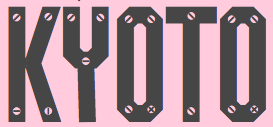 The Pyte Foundry was established in 2015 by Ellmer Stefan in Oslo, Norway. During the course of the year 2016 Ellmer Stefan released a new free display font every consecutive Monday. They explain: Paying tribute to the typographic diversity of the 19th century, this project's aim is not historical accuracy---none of the typefaces are strict revivals of specific typefaces produced in the Victorian era. It is rather a revival in spirit---indulging into stylistic manifoldness and idiosyncratic hyperbolism. The digital fonts are generated using a component-based system that globally applies changes made to independently adjustable letter parts, such as stems or serifs. This approach mirrors the production methods envisioned for the making of wood types around 1880: in American Wood Type 1818-1900 (Van Nostrand Reinhold Company, New York; 1969) historian Rob Roy Kelly refers to a series of inventions by William H. Page using interchangeable modules in the creation of wood type letters enabling the rapid manufacturing of new styles.
The Pyte Foundry was established in 2015 by Ellmer Stefan in Oslo, Norway. During the course of the year 2016 Ellmer Stefan released a new free display font every consecutive Monday. They explain: Paying tribute to the typographic diversity of the 19th century, this project's aim is not historical accuracy---none of the typefaces are strict revivals of specific typefaces produced in the Victorian era. It is rather a revival in spirit---indulging into stylistic manifoldness and idiosyncratic hyperbolism. The digital fonts are generated using a component-based system that globally applies changes made to independently adjustable letter parts, such as stems or serifs. This approach mirrors the production methods envisioned for the making of wood types around 1880: in American Wood Type 1818-1900 (Van Nostrand Reinhold Company, New York; 1969) historian Rob Roy Kelly refers to a series of inventions by William H. Page using interchangeable modules in the creation of wood type letters enabling the rapid manufacturing of new styles. The list of typefaces from 2016: Prhyme, Alcove, Mortar, Plakat, Cabaret, Antique, Galore (piano key style), Lyrics, Protocol, RoutineA, RoutineB, Routine C, KinkA, Kink B, Moloch, Symptom, Residue (ultra-condensed), Perdu (Western, Italian), Turmoil, Polymer, Houdini (wide slab serif), Umbra (shaded style), Montage (mechano style), Flounce (Tuscan Western font), Throng (piano key style), Italian (reversed stress style), Epitome (ultra-condensed didone), Overdose (Italian), Overdone, Gyrator, Henry I, Plumb A, Blockage, Seryph (stitching font), Octango (a chiseled typeface), Potpourri (decorative caps), Persiflage, Radiator Italic, Ortho (octagonal), Nihilist, Errata, Dosage, Radiator, Vulture, Filocalus, Latency, Postulate, Syzygy, Cuneiform, Cuneimorf, Absolu (a great decorative titling typeface family), QFWFQ. In 2016, he designed Levvel Script (brushy), and Sentralen Oslo. Skald (2017) is a set of three typefaces designed for a series of classics issued by Norwegian publishing house Skald Forlag. In 2018, he designed the custom type system Diller Scofidio + Renfro (for the New York-based architecture firm). In 2019, they released Triptych (Roamn, Italick, Grotesque). He writes: Triptych consists of three distinct styles amplifying the notion of structural differentiation within a typeface family. The triplet of Roman, Italick [sic] and Grotesque is designed to take on clearly defined hierarchical functions in a typographic system. Roman and /Italick are irreverently free interpretations of the sturdiest of all sturdy book faces ever produced, namely O.S. (Old Style Antique No.7 by Miller & Richard of Edinburgh first issued in 1858). Most probably not designed by Miller & Richard's prime punchcutter Alexander Phemister. Despite its name, Triptych is of secular, utilitarian nature: its unsentimental, at times mechanical drawing makes for a stubbornly robust and economic design. Bare any bourgeois flamboyance it is suited for confident and hardworking typography. Where other typefaces are promoted as workhorses, this one is a mule. Also, for the celebration of Norwegian sculptor Gustav Vigeland's 150th birthday in 2019, he released the wedge serif roman inscriptional capital typeface Gustav Display. Still in 2019, he added the bespoke flared lapidary typeface Hamran and the custom typeface Aurlands Display. In 2020, he designed the economical sans family Oslo Sans for the City Council of Oslo. He also released Compagnie, a set of three typefaces that are a digest of various French and Swiss wood type Grotesques from the second half of the 19th century. [Google]
[More] ⦿
|
The Yarza Twins
[Marta Yarza]
|
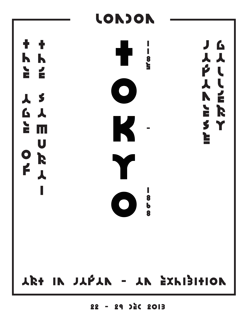 The Yarza Twins, born in Vigo (Spain), are Eva and Marta Yarza. Marta graduated in 2012 with a degree in construction engineering. In 2014, she studied communication design (MA program) at Central Saint Martins (University of the Arts, London (UK)). During her studies in London, Marta Yarza created Square Print (2014, a free artsy typeface), Japanica (2014, a free experimental Asian simulation typeface, with her twin sister Eva Yarza), and Plastic Crowds (2013, with Eva Yarza), about which they write: Inspired by old cinema marquees and by the 60s advertisements of NASA, we created this unique upper case typeface for the art collective Plastic Crowds. In 2015, they designed Horas, Orchid (a decorative didone), Haustraks, and Sound Reactive.
The Yarza Twins, born in Vigo (Spain), are Eva and Marta Yarza. Marta graduated in 2012 with a degree in construction engineering. In 2014, she studied communication design (MA program) at Central Saint Martins (University of the Arts, London (UK)). During her studies in London, Marta Yarza created Square Print (2014, a free artsy typeface), Japanica (2014, a free experimental Asian simulation typeface, with her twin sister Eva Yarza), and Plastic Crowds (2013, with Eva Yarza), about which they write: Inspired by old cinema marquees and by the 60s advertisements of NASA, we created this unique upper case typeface for the art collective Plastic Crowds. In 2015, they designed Horas, Orchid (a decorative didone), Haustraks, and Sound Reactive. In 2016, Eva and Marta Yarza designed the almost polygonal typeface Batavier. In 2017, they published the industrial sans typeface FIA Formula E and the wide sans typeface Hilario YT. The Yarza Twins shop (where one can buy some of their fonts). Behance link for Eva Yarza. Behance link for Marta Yarza. [Google]
[More] ⦿
|
Thiago Bellotti
[Gestu]

|
 [MyFonts]
[More] ⦿
[MyFonts]
[More] ⦿
|
Thiago Bellotti
[Mushroom]

|
 [MyFonts]
[More] ⦿
[MyFonts]
[More] ⦿
|
Thibaut Abou Mrad
|
 Based in Rennes, France, Thibaut Abou Mrad created the logotype typeface Dantek (2014) for Zit Dantes, a web service company. His layered rounded stencil typeface family Normograph (2014) is created for wayfinding applications. Trix (2014) is a triangulated typeface. Miron (2014), designed for the Miron Rivoli gallery, is a hybrid of Filosophia Grand and Gravur Condensed. Behance link. [Google]
[More] ⦿
Based in Rennes, France, Thibaut Abou Mrad created the logotype typeface Dantek (2014) for Zit Dantes, a web service company. His layered rounded stencil typeface family Normograph (2014) is created for wayfinding applications. Trix (2014) is a triangulated typeface. Miron (2014), designed for the Miron Rivoli gallery, is a hybrid of Filosophia Grand and Gravur Condensed. Behance link. [Google]
[More] ⦿
|
Thierry Fétiveau

|
 French freelance graphic and type designer who started his own commercial type foundry in 2014. Now based in Nantes, Thierry was educated in Nantes and studied Typography & Language at ESAD in Amiens, France, class of 2014. His typefaces:
French freelance graphic and type designer who started his own commercial type foundry in 2014. Now based in Nantes, Thierry was educated in Nantes and studied Typography & Language at ESAD in Amiens, France, class of 2014. His typefaces: - Andersen. His graduation project from Nantes.
- Batutah (2013-2014). A Latin / Arabic bicephalic typeface family for his graduation project at ESAD. "Batutah" refers to the Arab pilgrim Ibn Batutah who traveled from Spain to China in the thirteenth century. This Latin / Arabic typeface is intended primarily for magazines.
- Futago (2013). A fashion mag hiragana and katakana didone. Thierry: Futago is a Japanese typeface of 141 glyphs intended to go with Latin typefaces from Didot family. Its name, which means twin, expresses clearly its objective: to be used in bilingual texts in order to create a graphic unity. This typeface has been selected by the website Typography Served in 2013.
- Wilson (2013). A visit by Laura Mesaguer led Thierry to the development of a 3-style Tuscan stencil typeface called Wilson (2013).
- Dark Times (2013). An extra-light revival of a gothic textura.
- Lewis (2014). A Tuscan stencil typeface.
- For the comic book artist Milena Picard, he custom-designed the comic book typeface family Anelim (2017).
- The art deco all caps Utopiales (2018): This typeface has been tailor-made for the Utopiales, an international science-fiction festival at the Cité des Congrès in Nantes. The Cité des Congrès in Nantes asked me to create a new titling typeface only in capitals following their art deco inspirations. I based it on the letters of this period found in the streets of Nantes that are part of the history and identity of the city.
- In 2019 he made a typeface, Bouclard, on commission for the publishing house Bouclard in Nantes.
Creative Market link. Behance link. [Google]
[MyFonts]
[More] ⦿
|
Thierry Gouttenègre
[TeGeType]

|
 [MyFonts]
[More] ⦿
[MyFonts]
[More] ⦿
|
Think Work Observe (TWO)
|
 Design studio and type foundry set up by Piero Di Biase and Alberto Moreu in Udine, Italy. Creator of these typefaces (all are by Di Biase unless explicitly mentioned):
Design studio and type foundry set up by Piero Di Biase and Alberto Moreu in Udine, Italy. Creator of these typefaces (all are by Di Biase unless explicitly mentioned): - Airport Mono (2013-2017). Airport Mono is a monospaced sans-serif typeface inspired by military airports signage, with chamfered octagonal corners.
- BJ Headline (2013).
- Corsivo (2015, an italic sans by Alberto Moreu).
- Dot (2009, dot matrix).
- Falafel Grotesque. Malingue Grotesque (2015) is a custom version of Falafel Grotesque they created in collaboration with Swedish studio Lundgren+Lindqvist for their rebranding of Edouard Malingue Gallery in Hong Kong. Tacchini Grotesque (2015) is another custom sans.
- Figures (2009).
- Futwora Pro (2010-2017). A geometric sans, with a name that refers to Futura.
- Kane and Kane Stencil (2013).
- Metal (2011). A hipster typeface.
- Regola (2018). A sans workhorse.
- Studio Pro (2015-2018, by Alberto Moreu). A neutral typeface.
- The monospaced VWK Mono (2009).
- Wagon (2009, soft octagonal face).
[Google]
[More] ⦿
|
Thomas Bizzarri
|
 In 2012, Parisian graphic designers Thomas Bizzarri and Alain Rodriguez co-designed Feu (a sans face) and Thermidor (a revival based on the work of French type designer Charles Beaudoire (end of the nineteenth century), custom designed for the Feu Sacré books). Feu is an original typeface designed for the visual identity and the books of the publishing house Le Feu Sacré. [Google]
[More] ⦿
In 2012, Parisian graphic designers Thomas Bizzarri and Alain Rodriguez co-designed Feu (a sans face) and Thermidor (a revival based on the work of French type designer Charles Beaudoire (end of the nineteenth century), custom designed for the Feu Sacré books). Feu is an original typeface designed for the visual identity and the books of the publishing house Le Feu Sacré. [Google]
[More] ⦿
|
Thomas Eriksson
[Stockholm Design Lab]
|
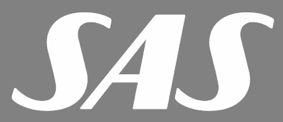 [More] ⦿
[More] ⦿
|
Thomas Foley

|
 Or Tom Foley. Graphic and type designer in London. Foley obtained an MA in Communication Design Central from Saint Martins in 2009. Visiting lecturer on The MA Communication Design course at Central Saint Martins and the BA Visual Communications Course at Bristol University of Art&Design. In 2018, he became Creative Type Director at Monotype.
Or Tom Foley. Graphic and type designer in London. Foley obtained an MA in Communication Design Central from Saint Martins in 2009. Visiting lecturer on The MA Communication Design course at Central Saint Martins and the BA Visual Communications Course at Bristol University of Art&Design. In 2018, he became Creative Type Director at Monotype. His typefaces: - The transitional text typeface Nib (2010). Developed under the guidance of Freda Sack.
- The sans family Hewitt (2010).
- Intel Clear Cyrillic, for which Dalton Maag, Tom Foley, Mary Faber, Stuart Brown and Hanna Donker won a Granshan 2014 award.
- Bressay (2015). A Scotch roman designed by Stuart Brown and the Dalton Maag team (including Tom Foley, Selma Losch, and Spike Spondike). Bressay won an award at TDC 2016.
- Tom Foley and Selma Losch published the rounded slab serif typeface family Gelo at Dalton Maag in November 2017.
- Cotford and Cotford Variable (2021, Monotype). A 16-style text and display serif family, accompanied by a variable font. Monotype writes: Cotford is a languid serif that ranges from delicate thins, bending and reaching like flower stems, to bold heavy weights that command the page and screen with confidence and vintage charm.
Speaker at ATypI 2010 in Dublin, where he discussed the history of Irish type and the roots of his book family, Nib. [Google]
[MyFonts]
[More] ⦿
|
Thomas Milo
[DecoType]

|
[MyFonts]
[More] ⦿
|
Tibor Szikora
[Cinketype]
|
[More] ⦿
|
Till Wiedeck
[HelloMe]
|
[More] ⦿
|
Tim Girvin
|
Principal of GIRVIN / Strategic Branding&Design, Seattle, involved in branding for the entertainment industry (e.g., the movie The Matrix). He studied calligraphy with Lloyd Reynolds at Reed College in Portland, Oregon. Speaker at ATypI in Rome in 2002. He designed many custom typefaces, some of which with the creative director at Girvin Seattle, Chie Sharp Masuyama. A partial list of Girvin's commissioned typefaces: - 1201 Third Ave. A typeface for a neo classicist skyscraper in Seattle. Done with Jon Runstad, this is a roman caps typeface for a building by Kohn Pedersen Fox.
- 48 Hours. A titling font done for CBS.
- Bardessono. A curvy deco typeface.
- Castalia.
- Girvalia. Girvin's in-house corporate font.
- Girvenza. A font for FIFA's posters.
- Girvpetua. An lapidary typeface based on the stone-cutting style of Eric Gill's Perpetua.
- A custom typeface for Kettie Brand.
- A roman display typeface for Nordstrom.
- Projetto Italiano. One of several campaign fonts for windows, shopping bags, merchandising and print advertising at Nordstrom.
- A custom typeface for Travel & Leisure. This was done with his long time collaborator in the early part of his career, Bob Ciano at Life Magazine.
- A custom techno / speed typeface for Viathon.
- Vignelli: a custom type (with Massimo Vignelli and Michael Bierut) for a building.
[Google]
[More] ⦿
|
Tim Hutchinson
[Tim Hutchinson Design]
|
[More] ⦿
|
Tim Hutchinson Design
[Tim Hutchinson]
|
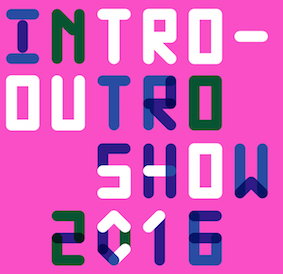 Britsh graphic, branding and type designer. His typefaces:
Britsh graphic, branding and type designer. His typefaces: - THD Reel 2019). A bespoke movie typeface.
- THD Lava (2019). Experimental and geometric.
- THD Servo (2018). A monolinear sans.
- THD Mondo (2018). A geometric stencil typeface in the kitchen tile style.
- THD Claw (2017). A geometric stencil typeface.
- THD Hexline (2017). An octagonal stencil typeface.
- THD Sentient (2017). An all-capitals monolinear rounded proportionally spaced all caps sans type family in four weights, designed by Tim Hutchinson in collaboration with MuirMcNeil. It was originally created in 2017 in a single weight for Beyond 2001: New Horizons, a celebration of the 10th anniversary of the Stanley Kubrick archive at the London College of Communication. Hutchinson based THD Sentient's characters on the forms of numerals used to display telemetric data on the screen of HAL 9000, the intelligent computer that controls the systems of the Discovery One spacecraft in Stanley Kubrick's 2001: A Space Odyssey. These characters were re-appropriated from an original typewriter font created for the IBM Selectric II System at two fixed sizes specifically for financial settings. Hutchinson writes: Although Kubrick's meticulous research and attention to detail in his films are known to extend to the minutiae of letterforms, whether he was directly involved in the implementation of HAL's display has not been established. However, it is evident that HAL's designer enlisted the IBM numerals more for their subtle evocation of an otherworldly computer language than for any technological accuracy.
- THD Slam (2017).
- THD Reporto (2017). A bespoke typeface design for a cultural publication.
- THD California (2016).
- THD OCX (2016). An OCR font.
- THD Connect (2015). A modular display typeface.
- THD Flexi (2015).
[Google]
[More] ⦿
|
Tim Lane
|
Creator of a new logo and branding typeface for Buzzfeed UK in 2018. It was inspired by the trending arrow. [Google]
[More] ⦿
|
Tina Gabriel
|
Co-designer with fabian Harb (Dinamo) of The Monthly (2017-2021), a sans family custom designed for Australia's socially critical periodical, The Monthly. [Google]
[More] ⦿
|
Tiny Type Co
[Robin Mientjes]
|
 Tiny Type Co. was established by Dutch graphic and type designer Robin Mientjes in 2016, in Oslo, Norway. Robin writes about herself: Robin Mientjes is a genderqueer feminist type designer, with an obsession for baking, cooking, and thoughtful graphic design. She's been designing for print and web for fifteen years, and studied at the KABK. Her typefaces:
Tiny Type Co. was established by Dutch graphic and type designer Robin Mientjes in 2016, in Oslo, Norway. Robin writes about herself: Robin Mientjes is a genderqueer feminist type designer, with an obsession for baking, cooking, and thoughtful graphic design. She's been designing for print and web for fifteen years, and studied at the KABK. Her typefaces: - She contributed to the open source font project Open Baskerville (2009).
- Dover Display in Sans and Serif versions (2012-2016), with some contrast, sharp edges, and historic influences from the British types Caslon and Gill Sans. Dover Text (Sans and Serif) followed in 2017. Mientjes: Dover Serif Text is a modern Caslon, and Dover Sans Text is the Gill Sans you've always wanted to pair it with. Together, they do it all.
- Hume (2016): a collection of sans and display typefaces for the redesign of BNordaaker.
- Peaches. A pixel font designed for a comic book artist.
- Charlotte Greeven. A high-contrast didone typeface created for fashion designer and illustrator Charlotte Greeven.
- Antikva. An angular design based on Oldrich Menhart's Manuskript Antikva (1943). It was developed during her studies at KABK.
- Monumental Grotesk (2016). Based on the architectural lettering of Piet Zwart for his friend, Hendrik Berlage.
Home page. [Google]
[More] ⦿
|
Tipas Type
|
 Type foundry in Mexico City run by Dafne Martinez, Monica Munguia (until 2020), and Sandra Garcia. Together, they designed the wayfinding sans typeface Colectiva in 2017. This typeface was originally designed for Mexico City's subway system. For a Mexican beer brand, Sandra Garcia and Tipas Type designed the splendid blackletter typeface Corona (2018) and the copperplate calligraphic typeface Especial (2019).
Type foundry in Mexico City run by Dafne Martinez, Monica Munguia (until 2020), and Sandra Garcia. Together, they designed the wayfinding sans typeface Colectiva in 2017. This typeface was originally designed for Mexico City's subway system. For a Mexican beer brand, Sandra Garcia and Tipas Type designed the splendid blackletter typeface Corona (2018) and the copperplate calligraphic typeface Especial (2019). In 2019, the three founders finally released the roundish informal children's book typeface Xantolo and the wood type / slab serif typeface Xihtli. [Google]
[More] ⦿
|
Tipiblu

|
Graphic design studio in Milan that only uses hues of blue on its site. Their typefaces: - Frusino (2015). The official font of the county of Frosinone, near Lazio. Project by Andrea Amato.
- Artypodia (2014). A decorative modular typeface family by Aurora Biancardi.
- Orti (2014). A decorative caps typeface by Aurora Biancardi.
- Sempione Grotesk and Sempione Modern (2009-2019). A Swiss style sans family published at CAST.
[Google]
[MyFonts]
[More] ⦿
|
Tipitos Argentinos
[Aldo de Losa]

|
 Tipitos Argentinos is Aldo de Losa's foundry in Argentinaa, and Estudio Digit is his graphic design studio. His undergraduate studies were carried out at the University of Buenos Aires, Argentina. Since 1996 he is professor of typography at University of Buenos Aires.
Tipitos Argentinos is Aldo de Losa's foundry in Argentinaa, and Estudio Digit is his graphic design studio. His undergraduate studies were carried out at the University of Buenos Aires, Argentina. Since 1996 he is professor of typography at University of Buenos Aires. He designed Goudald Serif (1996-1999) based on Goudy's work. It was published in 2006 at Tipo. He also designed Matutina Serif (2005). At Tipos Latinos 2012, Aldo de Losa won an award in the display type category for Papusa Ultra. Pituca Rounded won an award at Tipos Latinos 2014. He drew the striong all caps sans typeface Malba for the Museo de Arte Latinoamericano de Buenos Aires (MALBA). This was extended and modified in 2017 by Yevgeniy Anfalov and called Malba Sans. In 2018, he published the creamy inktrapped Nougat Script at Sudtipos. Codesigner with Pablo Cosgaya of Sansita Swashed (2018). Github link. Google Fonts link. Aka Aldus de Losa. [Google]
[MyFonts]
[More] ⦿
|
Tipografies
[Jordi Embodas]

|
 Jordi Embodas is a Barcelona-based graphic designer, b. 1977. After studying at ELISAVA (1995-1999) and at GH Essen, Germany, he started working at Estudi Juste Calduch in Barcelona (from 2001 onwards). He designs type since 2005 and set up Tipografies in Barcelona for that purpose in 2010. Jordi teaches typography at the design schools from Barcelona Elisava and Idep. His typefaces:
Jordi Embodas is a Barcelona-based graphic designer, b. 1977. After studying at ELISAVA (1995-1999) and at GH Essen, Germany, he started working at Estudi Juste Calduch in Barcelona (from 2001 onwards). He designs type since 2005 and set up Tipografies in Barcelona for that purpose in 2010. Jordi teaches typography at the design schools from Barcelona Elisava and Idep. His typefaces: - Orenga (2005-2008).
- Pona (2009, text face). Pona can be considered as a a calligraphic sans family, with flared glyphs. Pona Display followed in 2011.
- Bulo (2012, a legible sans family, from Hair Blond to Ultra Black). Noe Blanco has helped with the development of Bulo Rounded, and Max Saladrigas with Bulo Extreme.
- Trola (2013, a text serif family). Trola Text was co-designed with Noe Blanco. In 2017, the Trola family was updated, improved, and expanded to Cyrillic. The Cyrillic version was designed by Letterjuice (Pilar Cano & Ferran Millan) under the supervision of Ilya Ruderman and Yury Ostromentsky.
- Nomada (2014). A 4-style sans family specially designed for the web and screens. Followed in 2018 by Nomada Incise, a solemn typeface family with flared stems, and one of the best lapidary typefaces of the past five years. Still in 2018, Maria Ramos and Jordi Embodas co-designed Nomada Didone, and Jordi Embodas added Nomada Slab (2019), Nomada Sans and Nomada Serif (2019).
- For Universitat Oberta de Catalunya, he designed UOC Sans and UOC Serif in 2016.
- Cuatrecasas (2017). A flared custom sans and serif typeface family done for Mucho.
- Folha Grafico (2018) and Folha Texto (2018).
- Kymco (2019). A wide all caps sans family done for the motorcycle company Kymco.
- Tinta Broken Coated, Tinta Broken Uncoated, Tinta Coated (2021). A 12-style flared sans. Followed by Tinta Uncoated (2021).
Behance link. Village link. Another link. Klingspor link. Interview by Unostiposduros. Juste Calduch link. [Google]
[MyFonts]
[More] ⦿
|
Tive Inc
[Kidon Bae]
|
Kidon Bae is a multi-disciplinary designer from Los Angeles, California, currently residing in Seoul, South Korea. In 2017, Kidon created a custom modular typeface for Tive Inc's branding. Behance link. [Google]
[More] ⦿
|
Tom Geismar
|
Graphic designer, b. 1931, Glen Ridge, NJ. After studying at Rhode Island School of Design and Brown University, he founded Brownjohn, Chermayeff & Geismar (which became Chermayeff & Geismar) with Robert Brownjohn and Ivan Chermayeff. His typefaces include A&S Gallatin (1986, Linotype), which was originally designed as a corporate font for Abraham & Straus, a department store based in New York. The photocomposition font A&S Gallatin was done in 1976. [Google]
[More] ⦿
|
Tom Tor
|
 Tom Tor Studios has offices in Los Angeles and Tokyo. Designer in Tokyo (was: Los Angeles) (b. 1985) of the themed display typefaces Tom Tor (2008, geometric sans), Pavadee (2008, free upright script), Khmer (2008, Khmer simulation face), Fugue (2008), Kampuchea (2008). He also made the pixel typeface Silom (2008). He writes: Formally trained in Communication Design and type designer, Tom Tor is visual rather the verbal. This is especially evident in Tor's Landmine Awareness poster design. Stark but symbolic images are used as the sole means of conveying the malicious cruelty brought on by leftover landmines. His work is strongly inspired by the Avant Garde art movements of Europe.
Tom Tor Studios has offices in Los Angeles and Tokyo. Designer in Tokyo (was: Los Angeles) (b. 1985) of the themed display typefaces Tom Tor (2008, geometric sans), Pavadee (2008, free upright script), Khmer (2008, Khmer simulation face), Fugue (2008), Kampuchea (2008). He also made the pixel typeface Silom (2008). He writes: Formally trained in Communication Design and type designer, Tom Tor is visual rather the verbal. This is especially evident in Tor's Landmine Awareness poster design. Stark but symbolic images are used as the sole means of conveying the malicious cruelty brought on by leftover landmines. His work is strongly inspired by the Avant Garde art movements of Europe. He was commissioned in 2009 to design S-21, a modernist face (in his own words). Sisamouth was designed in 2009 in honor by Cambodian singer Sinn Sisamouth. Typefaces from 2010: Black Bees (a fat stencil pair). In 2013, he designed the Latin typeface Chams and the geometric sans typeface Enso. [Google]
[More] ⦿
|
Tomás Brousil
[Suitcase Type Foundry]

|
 [MyFonts]
[More] ⦿
[MyFonts]
[More] ⦿
|
Toni Hurme
[Hurme Design]

|
 [MyFonts]
[More] ⦿
[MyFonts]
[More] ⦿
|
Tor Weibull
[Kanon Foundry]
|
[More] ⦿
|
Torsten Lindsø Andersen
|
Graduate of the The Danish Royal Academy of Fine Arts---School of Design, who works as a type designer at ABC Design, a type foundry he cofounded with Rasmus Michaelis in Copenhagen. His typefaces: - In November 2011, he showed Academy Bold to the world---a virile sans typeface for texts. It morphed into the wonderful Juli Sans (2016), which he made in collaboration with Rasmus Michaelis at ABC Design.
- Together with Kontrapunkt, ABC Design created the new global brand typeface family for Nissan under direction from and in close collaboration with Bo Linnemann.
- He designed an organic display typeface for his mother.
- He created a custom typeface for the Strøm film festival in 2016.
- Typefaces from 2016: Barbu (octagonal), Razor (at Playtype).
Behance link. [Google]
[More] ⦿
|
Total Identity
[Aad van Dommelen]
|
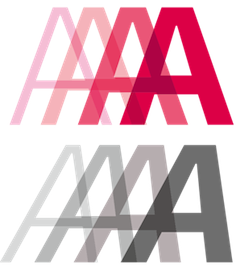 Total Identity (est. 2000 out of Total Design, itself founded in 1963) is a major design firm in the Netherlands which in the 60s and 70s employed people such as Wim Crouwel. Its first type design was by graphic and type designer Aad van Dommelen (b. 1956), who was taught by Gerrit Noordzij and worked briefly at URW in Hamburg. Aad, who went on to the Witvorm studio in Amstelveen, The Netherlands. Aad is based in Exloo, The Netherlands. His typefaces:
Total Identity (est. 2000 out of Total Design, itself founded in 1963) is a major design firm in the Netherlands which in the 60s and 70s employed people such as Wim Crouwel. Its first type design was by graphic and type designer Aad van Dommelen (b. 1956), who was taught by Gerrit Noordzij and worked briefly at URW in Hamburg. Aad, who went on to the Witvorm studio in Amstelveen, The Netherlands. Aad is based in Exloo, The Netherlands. His typefaces: - Many corporate typefaces for companies such as Daum, LG Electronics [the typeface LG Smart, 2013], Heungkuk Insurance (together with Christoph Dunst), SK Telecom (together with André Mol), Total Impact, JTBC Television, MMRO Industries, Stern Groep, Vigilius Mountain Resort, Friesland Campina, Gaffel and Lotte Duty Free.
- Oneliner (2002). The firm's sans typeface for its corporate identity, which was built around a simple skeleton.
- The commercial typeface Lowland (2013---or possibly called Vestula Light?).
- The sans typeface family FF Aad (2015, at FontFont) for annual reports, corporate brochures, wayfinding and branding.
- Romaine (2020, at Fontwerk). A 4-style revival of Ascendonica (Robert Granjon, 1570). He writes: There are two digitizations of Granjon Ascendonica available: the previously mentioned Granjon LT [by Linotype: it deviates too much from the original and shows some inconsistencies] and Matthew Carter's ITC Galliard. Carter's version is quite rightly very popular and widespread, but he allowed himself significantly more freedom, especially with the italic. The fine details of the template led to a special feature of Romaine. While all other digital Garamonds or Granjons have rounded or cut serifs, Romaine has sharp ends.
Behance link. Behance link for Witvorm. Fontwerk link. [Google]
[More] ⦿
|
Total Impact
|
Founded in 2004, total impact is a global design company that manages offices located in Seoul and Amsterdam. Their typefaces: Behance link. [Google]
[More] ⦿
|
totwo (or: Atelier Otadoya)
|
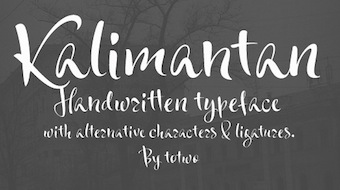 Yana Kutyina and Andrey Belonogov together form totwo (or Atelier Otadoya), a studio in Moscow. Their typefaces include the award-winning calligraphic Latin / Cyrillic font Kalimantan (2012-2013) by Yana Kutyina. In 2014, they designed the counterless display typeface Nerpa. In 2016, they cooperated with Valery Golyzhenkov on the great vintage typeface system Triplet in Erste, Zweite and Dritte styles. Triplet won an award at Granshan 2017. [Google]
[More] ⦿
Yana Kutyina and Andrey Belonogov together form totwo (or Atelier Otadoya), a studio in Moscow. Their typefaces include the award-winning calligraphic Latin / Cyrillic font Kalimantan (2012-2013) by Yana Kutyina. In 2014, they designed the counterless display typeface Nerpa. In 2016, they cooperated with Valery Golyzhenkov on the great vintage typeface system Triplet in Erste, Zweite and Dritte styles. Triplet won an award at Granshan 2017. [Google]
[More] ⦿
|
Traffic Sign Typefaces: Netherlands
[Ralf Herrmann]
|
Ralf Herrmann discusses Dutch traffic typefaces. Quoting some passages: Until recently the organization being in charge of the traffic signs was the ANWB. It was founded as a Dutch bikers(!) society ("Algemeene Nederlandsche Wielrijders Bond") in 1883 and later became the royal tourist society. [...] The typeface used since the 1960s is called ANWB-Ee (also RWS-Ee) and it is based on FHWA series E (Modified) from the United States. A condensed version (ANWB-Cc) is also available and it is based on the FHWA series C design. In the late 1990s Gerard Unger was commissioned to design a new typeface called ANWB-Uu. [Google]
[More] ⦿
|
Tré Seals
[Vocal Type Co (or: Studio Seals)]
|
 [More] ⦿
[More] ⦿
|
Truly Type
[Philip Cronerud]
|
 Designer from Stockholm, Sweden, who moved to Amsterdam in 2011 where he founded the type foundry mediumextrabold in 2013. His collection of typefaces is characterized by conceptual design, clean aesthetics and functional form in the Scandinavian tradition. His typefaces are treated like real objects, i.e., each family comes in editions and consists of 50 to 1000 copies. When sold out, they are no longer available. The catalog of mediumextrabold:
Designer from Stockholm, Sweden, who moved to Amsterdam in 2011 where he founded the type foundry mediumextrabold in 2013. His collection of typefaces is characterized by conceptual design, clean aesthetics and functional form in the Scandinavian tradition. His typefaces are treated like real objects, i.e., each family comes in editions and consists of 50 to 1000 copies. When sold out, they are no longer available. The catalog of mediumextrabold: Atelier (2015) Blanche (2015) D1 Models (2015). A bespoke typeface. Deursen Duplex Edie Everyday (2015) Galleri Grotezk (2015) Inkwell Maud North Pavillion Practice System Tilda Wired In 2016, Cronerud set up Truly Type, and writes: We are a San Francisco based type publisher, founded in 2016. Trulytype is used as a platform to produce and distribute typefaces made in close collaboration with a growing number of artists, institutions, writers and designers. The typefaces at Truly Type: - Afrika Sans (2017).
- Blanche Sans (2015).
- Dakota Serif (2019).
- Dooijes Sans (2018). They write: In the mid-1950s Dick Dooijes had started the development of a typeface that would come to be known as Mercator, the dutch Helvetica. First presented it proved to be an immediate, sensational success. The years passed, and yet, there was still no legitimate version around. When we started our research we wanted to be true to the bolder weights and modernize the lighter ones. Finding cues in archival specimens the result was a subtle refinement to the original. Dooijes Sans, named after its creator has been entirely reworked and expanded from multiple weights, including italics and alternative character styles.
- Everyday Sans (2014).
- Faux Sans (2017).
- Grotex Sans (2013).
- Kawara Sans (2017).
- Maud Serif (2016).
- North Serif (2019).
- Ordinary Sans (2014).
- Practice Sans (2018).
- Tilda Sans (2019).
- Tilt Sans (2017).
- Ulrich Serif (2018).
- Werk Sans (2015). A display sans influenced by mid-20th century architecture journals.
- Winona Sans (2015).
- Yoko Sans (2017). Characterized by square counters.
Home page of Philip Cronerud. [Google]
[More] ⦿
|
Two Times Elliott
|
Creative agency in London. In 2018, they designed the square block custom typeface Kish Kash. [Google]
[More] ⦿
|
TwoPoints.net
[Martin Lorenz]

|
 Design bureau in Barcelona, Hamburg and Berlin, est. 2007, with fonts that are mainly due to German type designer Martin Lorenz. The list of typefaces:
Design bureau in Barcelona, Hamburg and Berlin, est. 2007, with fonts that are mainly due to German type designer Martin Lorenz. The list of typefaces: - TpFloral (2006) is a modular typeface inspired by Kombinationsschrift (1926, Josef Albers). It is based upon two basic elements, a quarter circle and a square.
- TpStretch (2002).
- TpKurier Sans and Serif (2006). A redesign of Courier. Followed by TpKurier-Contrast (2008), TpKurier-Filled (2009) and TpKurier-Calligraphic (2010). In 2013, Vette Letters published VLNL Tp Kurier (2013, a monospaced typewriter face; + Serif, + Callig Regular).
- TpMartini (2008) is a didone family that was used for the identity of Bambi Mint. It was published in 2013 by Vette Letters as VLNL Tp Martini.
- TpLlum (2008) is a typeface that was designed for the festival Montjuïc de Nit. It was published in 2012 by Vette Letters.
- TpDuro (2010) is a blackletter typeface.
- In 2017, TwoPoints was commissioned to design a typeface for ESPN The Magazine's NBA Preview issue.
- At Vette Letters, he published VLNL TpDuro (2019: a blackletter inspired by an Albrecht Dürer design from 1525; with Juanra Pastor).
- VLNL Tp Bar Paco (2014, inspired by the vernacular type found in traditional Spanish bars in Barcelona).
- Tp Rawkost (2019), Tp Marte (2019), Tp Luna (2019).
- In 2019, they were commissioned by ESPN to make a special display font, ESPN Next. In 2018, they designed the arc-and-circle typeface Gold Rush for an ESPN Magazine issue about the female athletes participating in the Winter Olympics in Pyeong Yang.
In 2019, TwoPoints published On The Road To Variable (Victionary). [Google]
[MyFonts]
[More] ⦿
|
Tyler Yeo
|
 Pretoria, South Africa-based designer of the clear thin sans typeface Let's Connect (2016), which was custom-made for Singularity. Behance link. [Google]
[More] ⦿
Pretoria, South Africa-based designer of the clear thin sans typeface Let's Connect (2016), which was custom-made for Singularity. Behance link. [Google]
[More] ⦿
|
Type Curitiba Foundry
[Jackson Alves]

|
 Jackson Fausto Alves (Type Curitiba foundry) is a Brazilian graphic and type designer, illustrator and teacher located in Curitiba. He also designs exclusive lettering for clients around the world.
Jackson Fausto Alves (Type Curitiba foundry) is a Brazilian graphic and type designer, illustrator and teacher located in Curitiba. He also designs exclusive lettering for clients around the world. In 2012, he published the pointy calligraphic typeface Bispo---free at MyFonts and at Fontspring. Nova Bispo (2013) and Bispo Pro (2013) are available from MyFonts. In 2015, he designed a custom typeface for the Brazilian beer Kaiser. Behance link. [Google]
[MyFonts]
[More] ⦿
|
Type Five Studio
[Sean Sebastian Donohoe]
|
Sean Donohoe was born and raised in Frederiksberg, Denmark, where he runs Type Five Studio and specializes in typography, graphic design and sign painting. Graduate of the TypeMedia program at KABK, 2017-2018. His graduation typeface is SuperBlue, a brush-based concave and flared sans serif. SuperBlue was created for the typographic identity of the clothing brand Hexar Ltd, including editorial layouts, product packaging, business papers and collateral. [Google]
[More] ⦿
|
Type Initiative
[Michail Semoglou]

|
Type Initiative is a typefounding and design collective based in Canada and Greece. It was co-founded by type designers Michail Semoglou and Keith Chi-hang Tam, who are both graduates of the Department of Typography and Graphic Communication at the University of Reading, UK, in 2005. In 2005, they joined the type coop Village, where you can buy their typeface Arrival (2005). Michail Semoglou, who is based in Thessaaloniki, was commissioned in 2005 by The Secretariat of Research and Development (EDET), at the Greek Ministry of Industry, to design a serif and a sans for the Greek Open Source Community to be used by all the Greek public administration. Michail Semoglou works as a calligrapher and type designer. [Google]
[MyFonts]
[More] ⦿
|
Type Mates

|
 German type foundry, est. 2015 by Jakob Runge and Nils Thomsen, and based in Hamburg. Their typefaces:
German type foundry, est. 2015 by Jakob Runge and Nils Thomsen, and based in Hamburg. Their typefaces: - Comspot and Comspot Tec (2015): Comspot is a rounded and characterful typeface mixed with some typewriter flavour and human touch. The font is especially designed for hard- and software dealer who need some attractive figures to sell their products. In June 2015 Nils Thomsen designed this font as a corporate font for the Hamburg based hard- and software reseller CPN Cooperation Network GmbH and its Partner Comspot. The client wants an individual typeface for all media. It should work in reading sizes and of course also display very distinctive in larger sizes. Comspot can do!
- The Conto family by Nils Thomsen: Conto Compressed, Conto Narrow, Conto Condensed, all made in 2015.
- Jabana by Nils Thomson, 2014-2015. This includes Jabana Alt (2015) and Jabana Extras (2015). A compressed rounded font family, with dingbats, designed for menus. It is the first font in his own foundry, Nils Types, est. 2013. It was inspired by having a Schorle at Hamburg's coffee bars.
- Pensum Pro (2016). An 18-style text family with large x-height and considerable contrast. Followed in 2017 by Pensum Display, its wedge serif sharp-edged flashy companion. Pensum Stencil was added in 2021.
- Urby Basic (2017).
- Cherry (2017). A custom typeface designed for the brand new MX Board 5.0 keyboard for gaming enthusiasts.
- In 2019, Jakob Runge, Nils Thomsen and Lisa Fischbach released Halvar and wrote: Halvar, a German engineered type system that extends to extremes. With bulky proportions and constructed forms, Halvar is a pragmatic grotesk with the raw charm of an engineer. A type system ready to explore, Halvar has 81 styles, wide to condensed, hairline to black, roman to oblique and then to superslanted, structured into three subfamilies: the wide Breitschrift, regular Mittelschrift and condensed Engschrift. Halvar Stencil, which was released simultaneously, is a German engineering stencil font family.
- Gratimo Classic and Grotesk (2021), and Grato Classic and Grotesk (2021). Four sans families, with Classic referring to more humanist forms; Grato is the geometric twin, while Gratimo is more economic. Design by Jakob Runge, with contributions by Mona Franz, Irene Vlachou (consukting on Greek), Ilya Ruderman and Yury Ostromentsky (consulting on Cyrillic), Donny Truong (consulting on Vietnamese), Christoph Koeberlin (hinting) and Igino Marini (spacing and kerning). Grato Marker was added by Teja Smrekar in 2022.
- In 2022, Philipp Neumeyer released Juneau, a friendly geometric workhorse sans for Latin and Curillic, at TypeMates.
Creative Market link. [Google]
[MyFonts]
[More] ⦿
|
Type Network
|
In 2016, Font Bureau launched Type Network in partnership with Carter & Cone, Typetr (Petr van Blokland), DJR (David Jonathan Ross), Occupant Fonts (Cyrus Highsmith), Richard Lipton, Cabarga Type, Victoria Rushton, and Greg Thompson. TN Custom: a sub-site for custom type design. As of 2020, Type network had 30 partners: Bold Monday, Brody Fonts, CabargaType, Carter & Cone, CJ Type, CSTM Fonts, DJR, Font Bureau, Frere-Jones Type, Garage Fonts, Greg Thompson, The Ivy Foundry, Kerns & Cairns, Kontour, Lipton Letter Design, LudwigType, Mark Simonson, Monokrom, Newlyn, Occupant Fonts, Plau, Retype, Revolver Type Foundry, Roger Black, Supertype, Type-o-Tones, Typetr, Underware, Victoria Rushton, XYZ Type. In 2024, Matthew Rechs became its CEO, while Roger Black remains one of its key leaders. [Google]
[More] ⦿
|
Type Republic
[Andreu Balius Planelles]

|
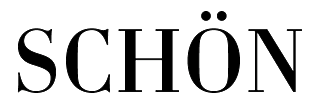 Catalan foundry headed by Andreu Balius (b. 1962), who is based in Barcelona and Son (Alt Aneu), Lleida. Balius holds a PhD in Design from the University of Southampton (UK) and teaches typography and type design at EINA, University School of Design and Art, in Barcelona.
Catalan foundry headed by Andreu Balius (b. 1962), who is based in Barcelona and Son (Alt Aneu), Lleida. Balius holds a PhD in Design from the University of Southampton (UK) and teaches typography and type design at EINA, University School of Design and Art, in Barcelona. Balius set up Garcia Fonts in 1989. He co-founded Typerware in 1996 (which existed until 2001), where he managed type-related projects for La Vanguardia newspaper, La Fura dels Baus and Primavera Sound Festival. In 2003, he launched Type Republic, catering to clients such as SEAT/Wolkswagen group, Victoria's Secret, Acciona, Ferrovial, and designed text typefaces for newspapers such as La Gaceta, Tribuna (Salamanca, Spain) and La Discusion (Chile). Some fonts sold through MyFonts: - Pradell (2003). This is a Latin text family based on original Spanish 18th century type specimens cut by Catalan punchcutter Eudald Pradell (1721-1788). Balius won a Bukvaraz 2001 award for Pradell. Pradell also won an award at the TDC2 Type Directors Club's Type Design Competition 2002. He added Pradell Arabic some time later.
- In 2008, Balius designed the curly dance-fest themed Carmen for the new edition of Prosper Merimée's drama. In 2012, Type Republic designed the fashion didone typeface Carmen Fine Display for Victoria's Secret.
- Mecano (2007, geometric sans).
- Taüll (2007, Basque meets blackletter).
- Czeska (after woodcuts by Vojtech Preissig).
- Super Veloz (2005, with Alex Trochut). This fantastic layered type system is based on Joan Trochut-Blanchard's modular typeface. SV Marfil (2004) and SV Fauno were created from Superveloz modules. In 2020, Andreu Balius and Ricard Garcia released The Superveloz Centenary Collection at Type Republic to honor Joan Trochut's 1942 masterpiece. It consists of SV Mambo, SV Jazz, SV Bebop, SV Bolero, SV Swing and SV Twist. In 2021, Ricard Garcia and Andreu Balius added the large family SuperVeloz Caps which consists of SV Caps Bebop SV Caps Bolero SV Caps Jazz SV Caps Mambo SV Caps Swing and SV Caps Twist.
- Barna (2011), a slightly humanist textbook sans, and Barna Stencil (2011).
- Trochut.
- Matilde (connected pixel script).
- Proximus (2014). A corporate typeface for the Belgian communication company.
- Patufet (2018-2019). By Andreu Balius and Ricard Garcia. A warm text family inspired by Catalan folk tales. For hairlines, one can't go thinner than Patufet Finet. In 2020, they added Patufet Mono.
- Poblet (2018: Solid, Diamond, Bevel). By Andreu Balius and Ricard Garcia. A stylish titling or display typeface that includes a vintage inline style.
- Rioja (2014-2015). This sans typeface family was first designed for the identity of University of La Rioja, in Logroño, and it was further developed in 2014 for commercial distribution.
- Tuqbal Pro (2015-2019, by Andreu Balius and Juan Luis Blanco). Tubqal Pro is a tri-script type family based on its previous Tubqal typeface commissioned by the Khatt Foundation as part of the Typographic Matchmaking in the Maghrib 3.0, the 3rd edition of the multi-script typographic research project of the Khatt Foundation. It includes Latin, Arabic (+Farsi) and Tifinagh (for the Tifinagh based languages: Tamazight (Central Atlas), Kabyle, Tamazight (Standard Moroccan), Tachawit, Tachelhit, Tagdal, Tamahaq, Tahaggart, Tamasheq, Tarifit, Tamajaq, Tawallammat, Tamajeq, Tayart, Tumzabt, Zenaga).
- Aloma (2017-2020). A delicate fashion mag typeface best suited for titling, Aloma is inspired by Aloma, a novel written in 1938 by Catalan writer Mercè Rodoreda. The typeface refers slightly to art deco headlines and to the Catalan Noucentisme movement.
- Groundbeat (2020). A stencil family by Andreu Balius and Ricard Garcia.
Custom / bespoke typefaces include Carmen VS (for Victoria's Secret, New York), Ferrovial, Dsignes (a wayfinding sans), VLC (for Valencia Tourism Bureau), Lladro (sans), Forum. Behance link. Old URL. [Google]
[MyFonts]
[More] ⦿
|
Type Supply
[Tal Leming]

|
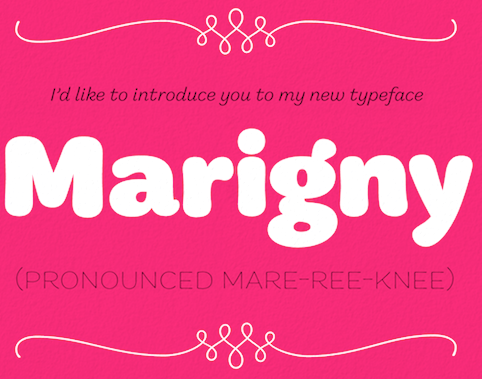 Tal Leming is a graphic designer, type designer and letterer who lived in Wilmington, DE, but moved his stakes to Baltimore, MD. He graduated from Louisiana State University in 1997. As a Python scripting guru, he worked with Letterror and House Industries on projects using FontLab and Robofab. An avid RoboFog scripter, he joined Erik van Blokland and Just van Rossum to initiate the RoboFab project in 2003. After graduation in 1997 from the Louisiana State University Graphic Design program, he worked as a designer at two agencies in south Louisiana. In September of 2001, Tal joined the House Industries staff as a designer in the Type Development, Product Promotions and Python Systems Implementation Department. He worked on the Ed Benguiat collection, for example.
Tal Leming is a graphic designer, type designer and letterer who lived in Wilmington, DE, but moved his stakes to Baltimore, MD. He graduated from Louisiana State University in 1997. As a Python scripting guru, he worked with Letterror and House Industries on projects using FontLab and Robofab. An avid RoboFog scripter, he joined Erik van Blokland and Just van Rossum to initiate the RoboFab project in 2003. After graduation in 1997 from the Louisiana State University Graphic Design program, he worked as a designer at two agencies in south Louisiana. In September of 2001, Tal joined the House Industries staff as a designer in the Type Development, Product Promotions and Python Systems Implementation Department. He worked on the Ed Benguiat collection, for example. In 2005, he left House and started his own company eventually called Type Supply. Type Supply designs typefaces for corporations and publications. Their typefaces: - Baxter. An informal typeface used as a casual typeface in MyPublisher's BookMaker software. Commissioned by Christian Schwartz.
- Bullet (House). Bullet is based on a bit of lettering drawn by Ken Barber for the House Industries Pop Art package.
- Burbank (2006-2007, House Industries), a bouncy signage, animation, and package lettering family, about which Christian Schwartz writes: Well-drawn one-off display typefaces are easy to find, especially bouncy sans serifs. Complete suites of typefaces in this genre, however, are nearly impossible to find, especially families that are crafted with as much care as Burbank. I really appreciate seeing the attention to detail that usually goes into serious text family put into a family primarily intended for display use.
- House Gothic 23. Tal Leming writes: The family was originally designed by Allen Mercer for use on the company's commissions, most notably the legendary promotions for Custom Papers Group. In 1995, House released the family to the public with modest success, but it was largely relegated to the back of House's catalogs. House went through a bit of a sans serif obsession in the early 2000s and decided that it was time to give House Gothic its time in the spotlight. Rich Roat asked me to polish up House Gothic and make it a bit more usable. I completely reworked Allen's original drawings, making the letterforms work better in headlines, added accented glyphs, reorganized the styles and more. Once that was done, I added completely new Extended and Text styles. The family more than doubled its size into 23 total fonts and was rechristened House Gothic 23.
- Marigny (2014). He writes about this pleasant casual roundish typeface: Marigny, designed by Tal Leming, is a casual typeface that was drawn with serious typography in mind. It has the same basic proportions as classical oldstyle typefaces (think of Garamond and friends) and these give it a similar typographic rhythm to one that we have known for several hundred years. The hand-rendered forms transform this familiar texture into something very warm and pleasant. In a way, dipping into a block of text set in Marigny is like putting on your favorite pair of comfortable slippers.
- Mission and Control. An athletic lettering family commissioned by Reebok for their 2008 NFL Sideline and NHL Center Ice collections.
- Ohm (2009). A neon type family.
- Queue and Queue Mono (2021). A sans typeface family.
- Runway (House). Runway is an ode to House's sans serif obsession of the early 2000s.
- Shag Lounge. a signage family: When I was working at House Industries, we decided that we should develop a font kit inspired by the work of Josh "Shag" Agle. Josh hadn't done much lettering work so we asked him to send us samples of lettering that he liked. Many of the things he sent featured whimsical, hand-cut lettering from the 1960s. We were really into this as well, so that formed the starting point for Shag Lounge. The typeface evolved into an amalgamation of a neo-grotesque style sans serif and hand-cut lettering.
- Timonium (2012) can be bought from Type Supply.
- Torque. An octagonal family with a great inline style. Torque (2009) began its life as an amalgamation of an American athletic lettering style and classic space lettering styles. There were also references to the video games, laser games and 1980s pre-teen sci-fi action movies of my youth.
- United Ark. A military stencil face: Clint Schultz hired me to create a custom version of United for use on props in a Paramount feature film. The main goal of the project was to perfectly match stenciled lettering seen in a film released 27 years earlier. How exciting was it to make a typeface for a sequel to a classic film that I grew up with? Very, very, very, very exciting. This font is not, and will never be, available for relicensing, so please don't ask.
- United. House industries commissioned me to develop the United family as an homage to stereotypical U.S. Military lettering styles. [...] United has become quite popular since its release and it has been seen just about everywhere from NFL coverage on FOX to the New York Times editorial page.
- Balto (2007-2014) is a large American Gothic family.
- In 2016, Tal Leming created 90 Minutes, a typeface that is exclusive licensed to the United States Soccer Federation in perpetuity. He writes: I wanted to introduce some more American typographic and lettering influences. We have a rich history from Morris Fuller Benton's iconic work to the impactful lettering on Works Progress Administration posters to the bluntness of wood type on letterpressed event posters. I wanted to subtly reference these to make the typeface as distinctively American as possible. The typeface her 37 unique styles partitioned over three families, 90 Minutes Display, 90 Minutes Kit (a set of styles developed exclusively for use on uniforms, taking into account FIFA regulations), and 90 Minutes Text (drawn specifically for use in small sizes, paragraphs and tables of statistics).
- Stoneleigh. A fashion mag Caslon revival done for Martha Stewart Living. Stoneleigh is licensed exclusively to Martha Stewart Living through October 2019.
- Smoosh (2015-2020). A super-compressed high-contrast typeface with thorny serifs designed to work in very big sizes.
- Iota (2021). A geometric sans family that he made only because of his fear of not being innovative. And not because every other foundry is making its own geometric sans. But he could not resist throwing in some distractions that make Iota a geometric with a tantrum.
- Epoxy (2022). An experimental sans with odd shapes.
At ATypI 2008 in St. Petersburg, his talk (shared with Ken Barber) was entitled Pac-Man fever, quantum mechanics and the design of digital type. Tal Leming's personal web site. Village link. Author of Letters. [Google]
[MyFonts]
[More] ⦿
|
Type Together
[Veronika Burian]

|
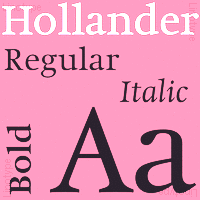 Foundry est. in 2005 by Veronika Burian (Czechia) and José Scaglione (Argentina). TypeTogether's library of retail fonts includes
Foundry est. in 2005 by Veronika Burian (Czechia) and José Scaglione (Argentina). TypeTogether's library of retail fonts includes - Karmina (Veronika Burian / José Scaglione, a text typeface for newspapers, winner of the ED Awards) and Karmina Sans (12 styles). Award winner at Tipos Latinos 2010. Karmina, Bree and Ronnia were selected as part of the travelling exhibition Tipos Latinos 2008.
- Athelas (José Scaglione / Veronika Burian, 2008, a calm and balanced 4-style book type family, winner of the first prize at the Granshan 2008 competetion).
- Ronnia (Veronika Burian / José Scaglione, a flexible sans serif for editorial use with 28 styles).
- Maiola (an award-winning calligraphic serif family by Burian).
- Crete (Veronika Burian, 2007, inspired by lettering in a chapel in Crete, winner of the Gransham 2008 competition; ideal for posters). Followed by Crete Round (2011).
- Bree (Veronika Burian / José Scaglione, 2008). A 10-style upright italic with a matchting oblique for display usage. In the years that followed, Bree was substantially expanded: Bree is available in Greek (by Irene Vlachou), Cyrillic (by by Veronika Burian, with expert support by Vera Evstafieva), Arabic (by Azza Alameddine) and Thai (by Cadson Demak's Panuwat Usakulwattana). Bree Latin now supports Pinyin and features improved Vietnamese diacritics (with the help of Donny Truong). Bree Devanagari (by Pooja Saxena) is in the works.
- Adelle Sans. A 12-style slab serif family made in 2009. Award winner at Tipos Latinos 2010. Adelle Condensed followed in 2013. With the help of Erin McLaughlin and Vaibhav Singh, Adelle Sans Devanagari was finished in 2017. Adelle Mono was added in 2020.
- Abril (2010) is a didone font family engineered mainly for newspapers and magazines that features friendly and elegant styles for headlines and robust and economic styles for text. It won an award at Tipos Latinos 2012. Abril Fatface is free at Google Font Directory. Abril Titling was published in 2013-2014.
- Jockey One (2011) is a free sans typeface at Google Font Directory.
- Birdy (2011). A free angular inline typeface by Veronika Burian.
- Fonts by third party designers: Cora (by Bart Blubaugh), Alizé (2009, by Tom Grace) and Givry (by Tom Grace: a bastarda typeface), Iskra (2012, by Tom Grace; not to be confused with Iskra by Edgar Reyes, 2009), Gitter (a modular type with letters built up of triangles).
- Tablet Gothic (2012). A joint design of Veronika Burian and José Scaglione, it is a grotesque meant for titling. Tablet Gothic won an award at Tipos Latinos 2014.
- Alverata (2013). A lapidary flared typeface with a huge x-height influenced by roman ("romanesque") lettering from the XIth and XIIth centuries. Alverata consists of three different fonts: Alverata, Alverata Irregular and Alverata Informal. For the development of the Greek letterforms, Unger collaborated with Gerry Leonidas (University of Reading) and Irene Vlachou (Athens). He cooperated with Tom Grace for the Cyrillic letterforms. Alverata was published by Type Together in 2014 and 2015. It appears to have Vesta's skeleton and dimensions. PDF file.
- In 2015, Veronika Burian and José Scaglione finally published the 18-style editorial sans typeface family Ebony, which won an award at Tipos Latinos 2016.
- TypeTogether and Design Sessions Studio collaborated in the development of a logotype and an associated type family for the government-owned TV channel and Radio station of Puerto Rico, WIPR Unicase.
- Protipo (2018) is a 52-font information design sans family designed by Veronika Burian and José Scaglione. This was a major team effort. Irene Vlachou will soon finish the variable font production. The information icons were designed by Luciana Sottini. Kerning by Radek Sidun and engineering by Joancarles Casasin.
- In 2019, Type Together released Catalpa (Veronkia Burian, Jose Scaglione, Azza Alameddine) and wrote: Primed for headlines, Catalpa is designed to give words bulk and width and gravity itself. The Catalpa font family is José Scaglione and Veronika Burian's wood type inspired design for an overwhelming headline presence.
- Postea (2021). A geometric sans with some eccentric details and variable font support. Noemi Stauffer writes: Postea comes with a collection of Bauhaus-inspired geometric patterns and ornaments and a suite of icons that can be called up simply by enclosing their names between a pair of colons, and choosing the correct stylistic set. Now that is typographic magic!
- Type Together made many custom typefaces. These include Abril Almeria(for Spanish newspaper La Voz de Almeria), Athelas Apple Books (for Apple iBooks), Bodoni Stencil (for Levi's---based on ParaType Bodoni), Clarín Titulos(for Argentine newspaper Clarin), Karmina Cyrillic (for Bible Society in Russia), Spore (for Electronic Arts), Twinkl Cursive (for Twinkl educational materials), Twinkl Sans, WIPR (for Puerto Rican broadcaster WIPR), NRK Etica Super and Slab, Bree Peru, Literata Book, Qlikview Sans.
- In 2021, Veronika Burian and José Scaglione designed Belarius, a three-axis variable family that shifts from sans to slab serif, from condensed to expanded widths, and includes every possibility in between. Published by Type Together in 2021, it was developed under the guidance of Veronika Burian and José Scaglione, with type design by Azza Alameddine and Pooja Saxena, and additional kerning and engineering help from Radek Sidun, Joancarles Casasin and Irene Vlachou.
Speaker at ATypI 2017 Montreal. MyFonts link. Klingspor link. Type Together occasionally published educational books as well. In 2022, they released Building Ligatures The Power of Type. MyFonts interview. Catalog of the Type Together typeface library. Adobe link. [Google]
[MyFonts]
[More] ⦿
|
Typecuts
[Andrea Tinnes]

|
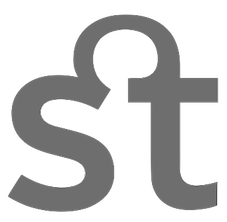 Andrea Tinnes is a German type designer who occasionally teaches type design. She is associated with the Das Deck agency in Berlin. Through her own label, Typecuts, which she founded in 2004, she publishes as well as promotes all her type designs. After several years of teaching at Norway's Bergen Academy of the Arts she took on a professorship of type and typography at Burg Giebichenstein University of Art and Design in Halle in 2008. She has a degree in communication design from the University of Applied Sciences Mainz and an MFA in graphic design from the California Institute of the Arts. Klingspor link. Her fonts:
Andrea Tinnes is a German type designer who occasionally teaches type design. She is associated with the Das Deck agency in Berlin. Through her own label, Typecuts, which she founded in 2004, she publishes as well as promotes all her type designs. After several years of teaching at Norway's Bergen Academy of the Arts she took on a professorship of type and typography at Burg Giebichenstein University of Art and Design in Halle in 2008. She has a degree in communication design from the University of Applied Sciences Mainz and an MFA in graphic design from the California Institute of the Arts. Klingspor link. Her fonts: - PTL Roletta Ornaments, PTL Roletta Slab, PTL Roletta Sans, 2004-2010. A rounded family published at Primetype.
- PTL Skopex Gothic (5 weights) and Serif (3 weights) for a total of 96 fonts, published at Primetype and Typecuts (2000-2006) (see also here). She says: Spektro (now PTL Skopex) was customized for the new identity system of the Minneapolis College of Art and Design. Under the supervision of Jan Jancourt and Matthew Rezac several new weights were added to the original family. In addition, the letters of the word MCAD were slightly altered and turned into a logotype font that works with the whole Spektro family.
- DasDeck (2001), a family ranging from thin octagonal to thick stencil.
- WeddingSans (2002), a contemporary sans family, quite useful.
- Haircrimes No. 1 through 4 (2001), a modular and slightly crazy set of fonts.
- Switch (2002): geometric and unicase.
- Stitch-Me (2001).
- Mimesis (2001), a typographic experiment.
- Volvox (2001), five caleidoscopic fonts.
- Custom fonts such as Burg Grotesk (2011-2013, for Burg Giebichenstein University of Art and Design, Halle, Germany), Burg Mono (2014, its monospaced version), Eastern Columbia (2005, commissioned by Reverb Studio), Los Angeles, Viceroy (2007; with Verena Gerlach; for the Viceroy Hotel in-house style), Broadway Hollywood Script (2005, commissioned by Reverb Studio), Los Angeles, and Trivium (2005, commissioned by Anne Burdick, the Offices of Anne Burdick, Los Angeles).
[Google]
[MyFonts]
[More] ⦿
|
Typejockeys
[Michael Hochleitner]

|
 Typejockeys is a graphic and type design company based in Vienna, Austria, established in 2008 by Anna Fahrmaier, Thomas Gabriel and Michael Hochleitner. Stephan Kirsch and Franziska weitgruber joined the team later. They do posters, editorial and book design, web and screen design, corporate design and signage, and custom type and lettering. Michael Hochleitner obtained an MA in typeface design from the University of Reading in 2008.
Typejockeys is a graphic and type design company based in Vienna, Austria, established in 2008 by Anna Fahrmaier, Thomas Gabriel and Michael Hochleitner. Stephan Kirsch and Franziska weitgruber joined the team later. They do posters, editorial and book design, web and screen design, corporate design and signage, and custom type and lettering. Michael Hochleitner obtained an MA in typeface design from the University of Reading in 2008. His graduation typeface was Ingeborg, a readable didone text family created specifically for periodicals and books. I predict that Ingeborg will win many awards. [Note: Well, a year after my prediction, Ivo Grabowitsch declared it to be the best typeface of 2009, and TDC2 2010 awarded it as well] Other typefaces include Drunk Type (2008) and Tender (2008). Premiera (2009) is a type family made for small print. Henriette (2012) is a beautiful slab serif revival family motivated and developed as follows: In the 1920s the Viennese government decided to standardize the street signs across the city. A typeface was especially constructed for the purpose. It was available in a Heavy and a Bold Condensed version, to support short street names as well as longer ones. As the years went by, the typeface was adopted and redrawn by several enamel factories. These adaptations lead to variations on the design, and to the fact that there isn't a Viennese street sign font but 16 different versions. Henriette is not a digitization of any of those versions; rather, it is influenced by all of them. The italic versions are completely original and designed to accompany the Roman. Typefaces from 2014: Carabelle (roundish upright script based on Nebiolo's Calipso), Sauber Script (a warm signage script; for Cyrillic, see here), Freude (roundish script). Typefaces by Typejockeys in 2015: Vito (60 style sans family by Thomas Gabriel described by them as follows: Masculine and sporty for adrenaline junkies, reliable and elegant for serious typographers, but with a touch of bling for high snobiety). In 2018, Michael Hochleitner, Christoph Schütz, Simon Liesinger and Franziska Weitgruber co-designed Gretel Script at Typejockeys. This optically sized three-style typeface is based on the hand of calligrapher Natascha Safarik. Typefaces from 2019: Antonia (a crisp variable headline text typeface by Franziska Weitgruber and Michael Hochleitner at Typejockeys; a 64-style font family with optical sizing from headline H1, H2, and H3 to Text, with a variable font added to the mix), Post Sans (for Austrian Post; by Michael Hochleitner, Anna Fahrmaier and Stephan Kirsch). Corporate typefaces besides those mentioned above: Mautner Script (for Mautner Markhof), The Bank Script, Johannes Trapl (typographic development), Cafe Am Hof (lettering), Piatnik (lettering), Drei Script (a variable font for Three Hutchison), OMV Highlight (an inline font for Latin and Cyrillic). Typefaces from 2021: Win2Day (a lotto jackpot font). MyFonts interview in 2014. Flickr page. [Google]
[MyFonts]
[More] ⦿
|
Typematters.de
[Jürgen Weltin]

|
 The German type designer Jürgen Weltin was born in 1969 in Konstanz, and lives in Pullach, Bavaria. He designed Balega (2003, Linotype: a stencil typeface based on Resolut (1937, H. Brünnel, Nebiolo)), Linotype Finnegan (1997, his first typeface designed as a student in Würzburg under Reinhard Haus), Agilita (2006, Linotype, a humanist sans family including Agilita Hairline), Yellow (award-winning exclusive font family in 1999 for the yellow pages at British Telecommunications), and Mantika Informal (2010, an organic sans family that covers Latin, Greek and Cyrillic; Linotype). Mantika Book, the serifed text version, was published by Monotype in 2014. Mantika News followed in 2016.
The German type designer Jürgen Weltin was born in 1969 in Konstanz, and lives in Pullach, Bavaria. He designed Balega (2003, Linotype: a stencil typeface based on Resolut (1937, H. Brünnel, Nebiolo)), Linotype Finnegan (1997, his first typeface designed as a student in Würzburg under Reinhard Haus), Agilita (2006, Linotype, a humanist sans family including Agilita Hairline), Yellow (award-winning exclusive font family in 1999 for the yellow pages at British Telecommunications), and Mantika Informal (2010, an organic sans family that covers Latin, Greek and Cyrillic; Linotype). Mantika Book, the serifed text version, was published by Monotype in 2014. Mantika News followed in 2016. Since 1997, he worked with Freda Sack and David Quay at The Foundry in London. Then he worked at Stankowski + Duschek in Stuttgart. Currently, he runs Typematters.de. Yellow is an exclusive yellow pages typeface for British Telecom. it received awards from D&AD in 1999 and Bukvaraz in 2001. In 2015, he made the heavy extended titling typeface Assai. His typeface Julius Roman won an award at ProtoType in 2016. Mantika Sans won Third Prize at Granshan 2010 in the Greek text typeface category. FontShop link. I Love Typography link. Klingspor link. CV at Linotype. [Google]
[MyFonts]
[More] ⦿
|
Typograma
[César Puertas]

|
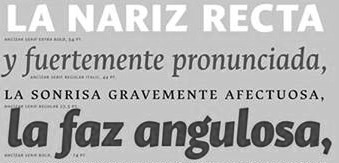 Cesar Puertas is the Bogotá, Colombia-based designer, who teaches typography at Jorge Tadeo Lozano University (2005-2007) and National University of Colombia (2009-). He is the co-founder of ADG Colombia (Colombian Association of Graphic Designers). He graduated from the National University of Colombia in 1999, and got an MA in Type and Media from KABK in 2009. He is currently associate professor at Universidad Nacional de Colombia and type designer at Typograma, his own design studio. His typefaces:
Cesar Puertas is the Bogotá, Colombia-based designer, who teaches typography at Jorge Tadeo Lozano University (2005-2007) and National University of Colombia (2009-). He is the co-founder of ADG Colombia (Colombian Association of Graphic Designers). He graduated from the National University of Colombia in 1999, and got an MA in Type and Media from KABK in 2009. He is currently associate professor at Universidad Nacional de Colombia and type designer at Typograma, his own design studio. His typefaces: - Puertas Sans (2005).
- ITC Obliqua (2007), a humanist sans family with handwritten influences, discussed here.
- Urbana (2007). A humanist sans family having a few odd glyphs such as a very wide "w". Monotype link. Review by Typographica.
- Bolívar (2007) and Bolívar Dingbats (2007). A contemporary calligraphic display typeface inspired in the handwriting of Simón Bolívar, the liberator of South America.
- Buendia (2009). His graduation type family at KABK was Buendía. Available from Bold Monday and Fontshop.
- La Republica (2010). Custom high-contrast didone typeface for a Colombian newspaper. Review by The Case & Point.
- Robofan (2010, techno; +Symbols).
- Legitima (2011) is a text font family inspired by the types found in the third edition of the Italian book La Cicceide Legitima, printed in 1695. It was originally developed in 2009 during his studies in the Type & Media program. Its weight and x-height, optimized for 10 point-size, makes it an ideal choice for book design and anything with running text.
- Ancizar (2013). A family of 26 sans and serif fonts designed for the National University of Colombia. Ancizar won an award at Tipos Latinos 2016.
- Bufalino Display (2014) is a custom design for El Malpensante. Jointly designed by Cesar Puertas and Juan Sebastian Cuestas, it won an award at Tipos Latinos 2016.
- In 2016, Cesar Puertas and Jan Filipek co-designed the newspaper typeface Bagatela for La Republica.
- Translation (2017) is a typeface designed to teach the strokes and stroke order to calligraphy students.
Puertas received many awards at Tipos Latinos 2012: Legitima Regular and Italica won in the text category; while Buendia and La Republica won in the typeface family category. La Republica also won an award at TDC 2012. Speaker at ATypI 2013 in Amsterdam: Algorithm for the assessment of text typefaces using design parameters. Dafont link. Klingspor link. Monotype link. Flickr page. Behance link. Home page. [Google]
[MyFonts]
[More] ⦿
|
Typolar (was: Jarno Lukkarila Type Foundry, or: Format Design)
[Jarno Lukkarila]

|
 Jarno Lukkarila (b. 1978) works mainly in graphic design. As the author of the typography reference book Tekstuuri: typografia julkaisijan työvälineenä (2001, Helsinki: CredoNet) he is one of the few writing about the subject in the Finnish language. He ran a typography-oriented design studio called Format Design in Helsinki and lectures part time on typography in Finnish design schools. Lukkarila was recognized as a type designer in the Morisawa Awards 2002, where his Xtra Sans typeface received the bronze prize in the Latin category. Lukkarila studied type design at the Royal Academy of Art, the Hague, in the postgraduate course Type&Media highlighted by the writing and letter design workshop of Gerrit Noordzij in 2000. Before this he graduated as graphic designer in Finland. Format Design became Jarno Lukkarila Type Foundry, and in 2010 morphed into Typolar, which is based in London. Typolar is run with Teemu Ollikainen and Saku Heinänen.
Jarno Lukkarila (b. 1978) works mainly in graphic design. As the author of the typography reference book Tekstuuri: typografia julkaisijan työvälineenä (2001, Helsinki: CredoNet) he is one of the few writing about the subject in the Finnish language. He ran a typography-oriented design studio called Format Design in Helsinki and lectures part time on typography in Finnish design schools. Lukkarila was recognized as a type designer in the Morisawa Awards 2002, where his Xtra Sans typeface received the bronze prize in the Latin category. Lukkarila studied type design at the Royal Academy of Art, the Hague, in the postgraduate course Type&Media highlighted by the writing and letter design workshop of Gerrit Noordzij in 2000. Before this he graduated as graphic designer in Finland. Format Design became Jarno Lukkarila Type Foundry, and in 2010 morphed into Typolar, which is based in London. Typolar is run with Teemu Ollikainen and Saku Heinänen. His type families, most of which start with an extreme hairline weight. - Xtra Sans: this won an award at TDC2 2007.
- In 2009, he finally published his 66-style Egyptian family Tanger Serif. Images: Medium Heavy, Narrow, Wide Ultra light.
- Calypso E (2010, E for Egyptian): a slab serif. Calypso I (2010, I for Italian) is a Victorian face.
- Vinkel (Typolar) was not designed by Lukkarila---it is a mini-slab serif family by Saku Heinänen.
- Altis (2011, Typolar). A readable sans family from Hairline to Black---ideal for information design.
- In 2012, he designed the custom Suunto UI Sans for the sports watch company Suunto.
- Typefaces from 2013 include the extensive Neuvos family. He writes about this small-serifed large-x-height family: Its large x-height, vertical stress and snug serifs make Neuvos an upfront and tough headliner. Although it has a hard-boiled cover, one can find hints of noble Transitional type like Baskerville underneath. Neuvos assures in editorial work and brings its Frutiger inherent calmness into branding or even signage systems. Neuvos Condensed was added in 2020.
- In 2014, he designed Walmer Marker (for signage applications).
- Typefaces from 2016: Etihad (a bespoke family for Etihad Airways), Alku Handwriting, motivated in this manner: The Finnish National Board of Education published a new recommendation for teaching handwriting in 2015. New letterforms were designed by Jarno Lukkarila (of Typolar) who participated in a committee set up for the renewal. This writing model will be used in virtually every Finnish primary and pre-primary school across the country from August 2016 on. Only a so called print writing will be provided by FNBE leaving the joined-up cursive writing as we've known it in the past.
- Era Grotesk (2020). A grotesk in the style of the early 1900s.
Klingspor link. Behance link. [Google]
[MyFonts]
[More] ⦿
|
Typophage
[Christophe Badani]

|
 Christophe Badani (b. 1969, Marseilles) is a French type designer. He resides in Boulogne-Billancourt, France. His typefaces:
Christophe Badani (b. 1969, Marseilles) is a French type designer. He resides in Boulogne-Billancourt, France. His typefaces: - Ambre Script (1999). Based on Carolingian forms.
- Berto (2000, +Decoration). A digitization of a 1950s Cyrillic simulation typeface by Joseph Bertocchio (1907-1978), which has, in addition, nice ornaments.
- IndexLT (1998).
- Romaine.
- Linotype Rough (1998).
- Theo.
- Transilienne.
- Trevor.
- Custom fonts: Akerys, Alstom (2007, a sans typeface done with Stephane Gabrielli), BD Asterix (2003-2005), Ciboulette (2006, script done for Auchan), Darty Sans (for Darty; with Stephane Gabrielli), Eurodatacar (2007: a stencil typeface done with Stephane Gabrielli), Fédération Française de Basketball (or FFBB; read about it here), Graphèmes (2007, a sans typeface done with Stephane Gabrielli), Lacoste Sans (2002, for Lacoste; The typophiles find it too close to TheSans), Lancômes (2004, a hairline connected script), Lune de Miel (handwriting, 2002, for YSA; has many alternate double and triple letter combinations, and tries to simulate real handwriting), MAAF, Peugeot (done in 2009 with Stephane Gabrielli), Pimkie, Roland Garros (+Serif) (2015; the stunning family is also called just RG), Seenk (2005, with J.-B. Levée), Sogea, Ubisoft (2003, developed in collaboration with the Seenk agency (design&MixMedia studio) for the video game company Ubisoft: it won the "Trophée d'Or" award at the Intergraphic Congress in Paris in January 2004, and consists of Ubisoft Imagine, Ubisoft Petz, Ubisoft Text, Ubisoft Title One & Ubisoft Title Two), Vinci Sans and Vinci Serif (2007, with Stephane Gabrielli), Weber.
- Jo (2013). A swashy set of capitals.
- VTF Mister Pixel and VTF Mister Pixel Tools (2003-2011, at Velvetyne).
- Elior (2014). A corporate typeface.
- GACD (2016): custom type.
- Vinci Script (2016). A custom script for Vinci. The Arabic was designed by Mathieu Réguer.
- Trends Tag (2016). A custom sans.
- Eurodatacar (2016). A rounded stencil typeface.
- Cloche d'Or (2016). Custom all caps alphabets for Minale Design Strategy Brussels. Designed by Christophe Badani (lead), Maha Mouidine, and Léo Guibert. It includes Normal, Hatch, Inline Bright, Inline Dark, Stencil and Outline styles.
- DS (2017). A didone typeface family for DS Atomobiles. By Serge Cortési and Christophe Badani.
- Veuve Clicquot Ponsardin (2018). A commissioned typeface foor the champagne company--by Christophe Badani and Stéphane Gabrielli.
- Pllafont (2018). A bespoke typeface for Palladium.
Christophe runs Typophage, a type activity center. Interview with Planete Typographie. Some of his fonts are also at Typotek. In 2004, he joined Ultra Pixel Fonts, where he made the pixel typeface Mr. Pixel. His historical pages explain about things such as Quadrata (first century roman lettering). Dafont link. Klingspor link. FontShop link. Linotype link. Badani's personal site. Behance link. Christophe Badani at Velvetyne. [Google]
[MyFonts]
[More] ⦿
|
Typotheque
[Peter Bilak]

|
 Typotheque is an initiative of Peter Bilak and ui42 out of Bratislava (Slovakia), and later, The Netherlands: Typotheque is an Internet-based independent type foundry. It offers quality fonts for PC and Macintosh platforms in standard European character set and in CE (central european) character set. All fonts have full (european) character sets, are thoroughly tested and manually kerned.
Typotheque is an initiative of Peter Bilak and ui42 out of Bratislava (Slovakia), and later, The Netherlands: Typotheque is an Internet-based independent type foundry. It offers quality fonts for PC and Macintosh platforms in standard European character set and in CE (central european) character set. All fonts have full (european) character sets, are thoroughly tested and manually kerned. Typotheque also offers its own type utilities: AccentKernMaker and FontAgent. In 2000, with Stuart Bailey, Peter Bilak co-founded art and design journal Dot Dot Dot. Along with Andrej Kratky he co-founded Fontstand.com, a font rental platform. Peter is teaching at the Type & Media postgraduate course at the Royal Academy of Arts, The Hague. Free fonts: Remix Typotheque and RaumSüd. Commercial fonts: Fedra Sans (2001, 30 weights), Holy Cow (2000), Champollion (2000), Eureka (2000), Eureka Phonetik (2000), Eureka Arrows (2000), Eureka Glyphs (2000), Jigsaw (Light and Stencil, 2000, by Johanna Balusikova), Fedra Mono (2002), Fedra Bitmaps (2002), Fedra Serif (2003, 48 weights, with a characteristic shy female A, toes pointing inwards), Fedra Serif Display (2006) and Fedra Arabic (2006) . Greta (2006-2007, Greta Text and Greta Display) is a newspaper type family designed initially for the main Slovak newspaper, SME. Greta Text won an award at TDC2 2007. It is also being used by the Sunday Times (along with Sunday Times Modern by Emtype and Flama by M. Feliciano). Greta Symbol (2012) is a 10-style 1200-glyphs-per-style superfamily of symbols commonly used in newspapers, magazines and online publications. Finally, Greta Mono (by Peter Bilak and Nikola Djurek) saw the light in 2015. Codesigner with Daniel Berkovitz of Greta Sans Hebrew (2015), which won an award at TDC 2016 and was released in 2017. Greta Sans supports Latin, Greek, Cyrillic, Armenian, Arabic, Hebrew, Devanagari, Thai and Hangul. Greta Sans was designed by Peter Bilak, produced together with Nikola Djurek. Irina Smirnova designed the Cyrillic version. The Latin part has been published in 2012, the Cyrillic and Greek in 2015. In 2015, Greta Sans was recognised by the Tokyo TDC. The Arabic version was designed by Kristyan Sarkis and published in 2015. Greta Sans Devanagari was published in 2017, designed by Hitesh Malaviya at ITF under the supervision of Satya Rajpurohit. The Thai version was designed by Smich Smanloh from Cadson Demak, and published in 2019. This Hangul version was designed by Sandoll designers Yejin We and Jinhee Kim, and directed by Chorong Kim. In 2005, Collins Fedra Sans and Serif were published for use in the Collins dictionaries. A slightly modified version of Fedra Sans is used by the Czech Railways. In 2008, Peter Bilak, Eike Dingler, Ondrej Jób, and Ashfaq Niazi created the 21-style family History at Typotheque: Based on a skeleton of Roman inscriptional capitals, History includes 21 layers inspired by the evolution of typography. These 21 independent typefaces share widths and other metric information so that they can be recombined. Thus History has the potential to generate thousands of different unique styles. History 1, e.g., is a hairline sans; History 2 is Peignotian; History 14 is a multiline face; History 15 is a stapler face, and so forth. In 2009, Bilak published the extensive Irma (Sans, Slab) family, which includes a hairline. Typotheque's other designer is Johanna Balusikova. Collection of over 90 articles on type design by by Stuart Bailey, Michael Bierut, Peter Bilak, Andrew Blauvelt, Erik van Blokland, Max Bruinsma, David Casacuberta, Andy Crewdson, Paul Elliman, Peter Hall, Jessica Helfand, Steven Heller, Roxane Jubert, Emily King, Robin Kinross, Rosa Llop, Ellen Lupton, Martin Majoor, Rick Poynor, Michael Rock, Stefan Sagmeister, and Dmitri Siegel. In 2011, he created Julien, a playful geometric display typeface loosely inspired by the early 20th century avant-garde. It is based on elementary shapes and includes multiple variants of each letter. It feels like a mix of Futura, Bauhaus, and geometric modular design. Julien (2012) is a playful geometric display typeface loosely inspired by the early 20th century avant-garde. Karloff (2012, Typotheque: Positive, Negative, Neutral) is a didone family explained this way: Karloff explores the idea how two extremes could be combined into a coherent whole. Karloff connects the high contrast Modern type of Bodoni and Didot with the monstrous Italians. The difference between the attractive and repulsive forms lies in a single design parameter, the contrast between the thick and the thin. Neutral, the offspring, looks like a slab face. They were made by Peter Bilak, Nikola Djurek and Peter van Rosmalen. Lumin (2013) is a family that includes slab-serif, sans serif, condensed and display typefaces, and no attept is made to make them uniform in style. Lava (2013) is a magazine typeface originally designed for Works That Work magazine. It was extended to a multilingual workhose typeface family. It as extended in 2021 to Lava 2.0, at which time they added a variable version of Lava that does this size-specific tracking optimization automatically---Typotheque calls it optical spacing. By 2021, Lava covered Latin, Greek, Cyrillic, Devanagari, Telugu and Kannada. Typotheque collaborated with type designers Parimal Parmar, who drew the Devanagari; and Ramakrishna Saiteja, who drew Kannada and Telugu companions for Lava Latin, designed by Peter Bilak. For Musée des Confluences in Lyon, France, Typotheuqe designed the custom sans typeface Confluence (2014). For Buccellati Jewellery and Watches in Milan, Typotheque made the classy sans typeface Buccellati in 2013. In 2016, Peter Bilak, Nikola Djurek and Hrvoje Zivcic published the Uni Grotesk typeface family at Typotheque. It is based on Grafotechna's 1951 typeface Universal Grotesk, which in turn is based on 1934 design by Vladimir Balthasar. Noteworthy also is the prismatic style Uni Grotesk Display. In 2016, Peter Bilak designed the wayfinding sans typeface family November for Latin, Greek, Cyrillic and Hebrew. Its rounded version is October. November, co-designed by Peter Bilak, Irina Smirnova and Kristyan Sarkis, won two awards at Granshan 2017. November Stencil was published in 2018. The Q Project was conceived in 2016 by Peter Bilak, and published in June 2020. Nikola Djurek produced the Q Shape 01, loosely based on the Edward Catich's basic brush strokes from his book The Origin of the Serif: Brush Writing and Roman Letters. Bilak explains: The Q Project is a game-like [modular] type system that enables users to create a nearly infinite number of variations. Inspired by toys like Lego or Meccano, Q invites you to explore its vast creative space and discover not only new solutions, but also new problems. Q consists of ix uppercase Base fonts and 35 attachments that can be added as individual layers (Q Base and Serifs). It also comes with a variable font with a motion axis (Q Mechanic), as well as three levels of basic shapes that can be combined into new forms (Q Shapes). In 2021-2022, Typotheque custom-designed the humanist sans typeface NRK Sans for the Norwegian broadcaster, NRK. History won an award at ProtoType in 2016. Behance link. Typedia link. [Google]
[MyFonts]
[More] ⦿
|
Ultra Types
[Joan Ramon Pastor Rovira]

|
 Wete, or Wete Cacahuete, or Joan Ramon Pastor Rovira, or Juanra Pastor, or Juanra Wete Pastor, is a Barcelona-based graphic and type designer, b. 1984. He set up Ultra Types in 2012.
Wete, or Wete Cacahuete, or Joan Ramon Pastor Rovira, or Juanra Pastor, or Juanra Wete Pastor, is a Barcelona-based graphic and type designer, b. 1984. He set up Ultra Types in 2012. Typefaces created by him include the useless monstrosity called Combo (2009), the hand-printed Deibi (2009, free), the text typeface Alba Serif (2010), and the fantastic geometric/mathematical caps face Roke 1984 (2010). TP Duro (2011) is a blackletter typeface inspired by an Albrecht Dürer design from 1525. It was published in 2019 at Vette Letters in cooperation with Martin Lorenz: VLNL TpDuro. Favela (2011) is a free tattoo face. In 2012, he designed an experimental / futuristic set of numbers for a Yorokobu magazine section called Numerografia. Still in 2012, he created the Alexander Grotesk typeface family (which can be bought at Ten Dollar Fonts), and Ut One (modular, arc-based). In 2013, he designed the sans typeface Reefont Condensed on commission for Reebok [under the creative direction of Manuel Lemus]. 4YFN (4 Years Fro Now, 2013) is a minimilaist custom typeface created for an event organized by Mobile World Congress. He also designed Stela UT (a layered stencil font) in 2013. Cairo Slab UT (2013) is based on an alphabet found in 100 alphabets publicitaires (1946). In 2014, he made an experimental connect-the-dots typeface with Drawbot. Intangibles is a custom-designed didone titling face. UT Rounded is free. In 2015, Wete made the angular brutalist display typeface UT Nickel. In 2018, Oscar Cobo and Wete co-designed the piano key variable font UT Morph, which was inspired by Wim Crouwel's Nagasaki poster. In 2019, Wete designed the logotype for TCM (Turner Classic Movies) and the identity and wayfinding symbols for Hotel El Call. Typefaces from 2021: UT Barrel (a fat face with serious ink traps). Behance link. Dafont link. Abstract Fonts link. Personal home page. Klingspor link. [Google]
[MyFonts]
[More] ⦿
|
Underware

|
 Underware is a (typo)graphic design-studio which is specialized in designing and producing typefaces. These are published for retail sale or are specially tailor-made. The company was founded in 1999 by Akiem Helmling, Bas Jacobs and Sami Kortemäki. Since 2002 Hugo Cavalheiro d'Alte is also part of the studio. They are based in Den Haag, Helsinki and Amsterdam. In 2017, they joined Type Network.
Underware is a (typo)graphic design-studio which is specialized in designing and producing typefaces. These are published for retail sale or are specially tailor-made. The company was founded in 1999 by Akiem Helmling, Bas Jacobs and Sami Kortemäki. Since 2002 Hugo Cavalheiro d'Alte is also part of the studio. They are based in Den Haag, Helsinki and Amsterdam. In 2017, they joined Type Network. Bas Jacobs and Akiem Helmling designed Dolly (2001), a 4-font book typeface with flourishes, brushy, sturdy, Dutch. They created Sofa, a precursor of Sauna (2002; +Sauna Mono Pro), which won an award at the TDC2 2003 competition. In 2002, they made Stool for a Finnish printing house, Salpausselän Kirjapaino Ltd. Ulrika is a custom display typeface designed for Proidea Oy (a Finnish film and video production company). Unibody 8 and 10 (2003) is a free OpenType pixel font optimized for FlashMX. In 2004, they created Auto, about which they write: Auto is a sans serif typeface which has three different models of italics, each with its own flavour. The font family consists of 3 x 24 fonts. With its three italics, Auto creates a new typographic palette, allowing the user to drive through unknown typographic and linguistic possibilities. Auto is fully loaded with both full Western and Eastern European character sets. Auto won an award at the TDC2 2005 type competition. Additional material on the web page: a wonderful intro to type basics, and an intro to OpenType. In 2004, they published the comic book / signage family Bello, which won an award at the TDC2 2005 type competition. In 2005, Underware joined the type coop Village. In 2006, they published Fakir, a blackletter family with Hindi inspirations. Fakir won an award at TDC2 2007. Interview in 2008. In 2009, they published the connected script brush typeface Liza (+Text, Display, Caps, Ornaments), which has several versions for each letter. In 2015, Bas Jacobs, Akiem Helmling and Sami Kortemäki published the stencil family Tripper Pro. Zeitung Pro (2016) is a substantial sans family, designed for micro and macro use, with optical sizes, and a Zeitung Flex variable Opentype font to boot. Custom types: Stockmann Sans (2012, with Kokoro & Moi: for the Scandinavian department store), Kone (2012: for the elevator company), Mr. Porter (script with a dozen alternatives for each glyph to better simulate real handwriting; it was awarded at TDC 2012 and at Tokyo TDC 2012), Stool (Headline, Thin, Grand), Sauna Mono (for the Danish Jyske Bank), Fated (fat), Ulrika (rounded and informal, slightly plump: for Proidea Ltd, a Finnish video production company), Suunto (2012; for sports watches, i.e., Suunto's Cobra2, Vyper2 and Elementum). Underware received a prize in the TDC Tokyo Type Directorts Club 2020 awards for Grammato, a contribution in the area of animated and automated typography. Their typeface Y (2020) is an OpenType Variable Display typeface, based on higher order interpolation. It won an award at 23TDC. In 2021, Underware released Plakato Pro, a stencil family that expanded into the neon, outline, inline, video game, grunge, kitchen tile and prismatic versions. MyFonts interview. Type Network link. View Underware's typeface library. Speaker(s) at ATypI 2019 in Tokyo, where they introduce the notion of grammatography: writing with letters that are not prefabricated, but that react to the user and reader---grammatos. [Google]
[MyFonts]
[More] ⦿
|
Universal Thirst
[Kalapi Gajjar-Bordawekar]

|
Indian graduate of the MATD program at the University of Reading in 2012. Co-founder of Universal Thirst, a company located in Bangalore and Reykjavik. Gajjar's graduation typeface is Mila (2012), a Latin / Gujarati / Tamil multi-script typeface specifically designed for children's books. Kalapi works at the London office of Dalton Maag. Aktiv Grotesk, a Dalton Maag typeface, was extended to cover Indic languages by Selma Losch and Kalapi Gajjar-Bordawekar. It won an award at Granshan 2016. Kalapi contributed in 2016 to Vernon Adams's Oswald, one of the Google Web Fonts. In 2019, Gunnar Vilhjalmsson, Kalapi Gajjar and the Linotype design Studio developed the 5-style Linotype Gujarati for use in print and on the screen. Custom typefaces by Universal Thirst: [Google]
[MyFonts]
[More] ⦿
|
UP Comunicazione
[Mark Tamagnini]
|
UP Comunicazione (Mark Tamagnini, Reggio nell Emilia, Italy) created the elliptical sans typeface family UP TM and the corporate branding typeface Aquila Italiana in 2013. Behance link. [Google]
[More] ⦿
|
URW++: Corporate house fonts
|
Corporate fonts made by URW++ for major companies include Dräger, Gardena, Endress+Hauser, Simon-Kucher & Partners, PageTech, real,-, MAN, Schalke 04, NOMOS Glashütte, Warema, Warema Nimbus (2017), Weidmüller, StateFarm, Bankinter, Daimler AG, Deutsche Bahn, DB Type/DB Office, Deutsche Telekom, HDI-Gerling, HILTI, Igepa group, Körber-Stiftung, SIEMENS, Thieme Verlagsgruppe, TOSHIBA, WMF, Würth, ZF Friedrichshafen. [Google]
[More] ⦿
|
URW Type Foundrty (was: urw++)

|
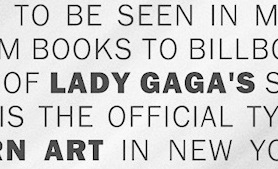 URW++ Design&Development GmbH is a Hamburg-based foundry established in 1995 by Svend Bang, Hans-Jochen Lau, Peter Rosenfeld, and Jürgen Willrodt. URW stands for Unternehmensberatung Rubow Weber, named after Gerhard Rubow and Rudolf Weber, cofounders of the original URW company from which urw++ evolved. It offers a whole range of font services and has an extensive (7000+) font library. At the basis of the early development of many classy PostScript fonts. For example, in 1999, URW++ donated the 35 core PostScript fonts (renamed) under the GNU GPL license to the Ghostscript project. The great 3000-font CD costs about 2000DM. Other CDs are more expensive: on the ITF CD, each font is about 100DM! URW sells fonts and font families with complete rights (you can change, resell, embed, anything, except use the original name), with examples ranging from 2k for a complete family of 12 to 5k for a collection of 250 fonts. This practice continues until today: URW++ thus provides a great service to software developers who want to include high-quality typefaces in their software applications. URW has offices in many countries. In the first decade of the 21st century, freelance type designer Ralph M. Unger contributed most frequently to the URW library. OpenType collection guide (in PDF).
URW++ Design&Development GmbH is a Hamburg-based foundry established in 1995 by Svend Bang, Hans-Jochen Lau, Peter Rosenfeld, and Jürgen Willrodt. URW stands for Unternehmensberatung Rubow Weber, named after Gerhard Rubow and Rudolf Weber, cofounders of the original URW company from which urw++ evolved. It offers a whole range of font services and has an extensive (7000+) font library. At the basis of the early development of many classy PostScript fonts. For example, in 1999, URW++ donated the 35 core PostScript fonts (renamed) under the GNU GPL license to the Ghostscript project. The great 3000-font CD costs about 2000DM. Other CDs are more expensive: on the ITF CD, each font is about 100DM! URW sells fonts and font families with complete rights (you can change, resell, embed, anything, except use the original name), with examples ranging from 2k for a complete family of 12 to 5k for a collection of 250 fonts. This practice continues until today: URW++ thus provides a great service to software developers who want to include high-quality typefaces in their software applications. URW has offices in many countries. In the first decade of the 21st century, freelance type designer Ralph M. Unger contributed most frequently to the URW library. OpenType collection guide (in PDF). Selected releases: URW Egyptienne, URW Grotesk (1985, Hermann Zapf), Anzeigen Grotesk (2009), Clarendon No 1 URW, Saa Series (an industrial sans: the official typeface for Australian road signage), Nimbus Sans (1987, a Helvetica clone), Nimbus Sans Novus, Nimbus Sans Europa (covering Latin, Greek, Baltic, Cyrillic, Central European, Turkish, Romanian, and so forth), Nimbus Roman No 9 (2001), Nimbus Sans Global and Nimbus Roman Global, each at about 2000 Euros, and each containing 35,000 glyphs, from kanji/Chinese/Korean to all European languages. House typefaces done for corporations: DaimlerChrysler Corporate ASE (after the Corporate ASE series for Daimler-Benz by Kurt Weidemann), Gardena Sans (2015, for Gardena), Siemens Schriftfamilie, Deutsche Telekom Schriftfamilie, ZF Friedrichshafen, Körber Argo, URW++ SelecType Raldo (2001, for Igepa). MyFonts lists their bestsellers. Catalog of their typefaces [large web page warning]. Another catalog of URW's typefaces. Eight-minute corporate movie produced in the summer of 2014. Adobe link. [Google]
[MyFonts]
[More] ⦿
|
Valeria Caro
|
French graphic designer who graduated in 2014 from ECV in Paris. Her typefaces include Le Bretonne (2014, with Timothé Chiron and Camille Bardes) and the corporate typeface Craftdom (2014, a hybrid of Novecento Wide and Bluu). [Google]
[More] ⦿
|
Valerio Di Lucente
[Julia]
|
 [More] ⦿
[More] ⦿
|
Valter Costa
|
 Brazilian graphic designer at Plau (Rio de Janeiro, Brazil).
Brazilian graphic designer at Plau (Rio de Janeiro, Brazil). In 2021, Ana Laura Ferraz, Valter Costa, Carlos Mignot and Rodrigo Saiani designed the handcrafted black poster and branding typeface Vinila for the identity of grammar teacher Eduardo Valladares' personal brand EDU VLLD (Edu stands for Eduardo and Education while VLLD represents Valladares and Vulnerability). [Google]
[More] ⦿
|
Vasava Fonts
[Bruno Selles]

|
 Catalan designer Bruno Selles (b. 1976) set up Vasava Artworks (and later, Vasava Fonts) in Barcelona in 1997. In 2018, he joined the faculty in the Masters in typographic design program at Elisava in Barcelona.
Catalan designer Bruno Selles (b. 1976) set up Vasava Artworks (and later, Vasava Fonts) in Barcelona in 1997. In 2018, he joined the faculty in the Masters in typographic design program at Elisava in Barcelona. Selles created fonts like VSV-Alergia-Bold, VSV-Alergia-Regular, VSV-ByPass-StencilBold, VSV-Epidermis-Black, VSV-Leila-Bold, VSV-Leila-Medium, VSV-Melon (Light and Regular), VSV-DingDong (I and II), VSV-Lengua-RoundedRegular, VSV-Pachuca-Regular, VSV-Pachuca-Suau, VSV-Romina-Bold, VSV-Romina-Light, VSV-Romina-Regular, VSV-RominaRounded-Light, VSV-RominaRounded-Regular, VSV-Rotula-Regular (2001, by Toni Selles, used to be a free stencil font), VSV-Tirania-Caps, VSV-Tirania-RoundedCaps, ADN, ADN-katakana (pixel fonts, 1998), Neurona, Neurona-katakana (pixel fonts, 1999) and Retina. Some fonts used to be free (but they have gone totally commercial now, it seems). Custom typefaces include the official Nike Barca font used by the Barcelonba soccer team. Typefaces from 2015: Matchpoint (a scoreboard or sports jersey typeface), Amaretta (a Suetterlin script-style typeface renamed Amarissima after a few days), Synopsis (a classic small caps or titling typeface). Typefaces from 2017: Kröwn (3d, beveled). Typefaces from 2018: Parca (a grotesk sans). Typefaces from 2019: Abu Dhabi (a custom typeface for Etihad Airlines' magazine Atlas). [Google]
[MyFonts]
[More] ⦿
|
Vasilis Tanos
|
Vasilis Tanos (b. 1984) grew up in Schongau, Germany, and studied at the Technological Institute of Athens (2011). He created the corporate typeface Skroutz (Latin and Greek) in 2012 for Skroutz SA. Behance link. [Google]
[More] ⦿
|
Vegrande
|
Branding studio in Mexico City. In 2019, they created the rounded sans typeface Dogdrop. [Google]
[More] ⦿
|
Ventislav Dzhokov

|
 Sofia, Bulgaria-based type designer associated with Fontfabric, aka Djo Venci, Ventsislav Dzhokov and Ventsislav Djokov. His typefaces:
Sofia, Bulgaria-based type designer associated with Fontfabric, aka Djo Venci, Ventsislav Dzhokov and Ventsislav Djokov. His typefaces: - Intro Script (2019, FontFabric). A monoline school script font family.
- Silverstone (Display, Text) (2021). A custom type system for the Silverstone raceway and British Motorsports by Plamen Motev and Ventislav Dzhokov at Fontfabric.
- He was a member of the Fontfabric team that designed and later updated the 26-font type system Nexa in 2020. That team consisted of Svetoslav Simov, Plamen Motev, Mirela Belova, Stan Partalev, Nikolay Petroussenko, and Ventislav Dzhokov.
- Member of the Fontfabric team (Plamen Motev, Stan Partalev and Ventislav Dzhokov) that designed the 72-font Panton Rust and Panton Rust Script in 2019. This weathered typeface family accompanies Fontfabric's popular Panton family.
- Fester (2022, Fontfabric). A semi-condensed 16-style (+variable) semi-futuristic grotesque typeface developed under the direction of Plamen Motev.
[Google]
[MyFonts]
[More] ⦿
|
Veronika Burian
[Type Together]

|
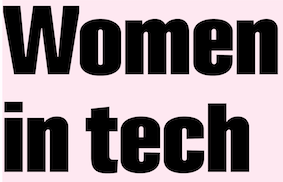 [MyFonts]
[More] ⦿
[MyFonts]
[More] ⦿
|
Victoria Rushton
|
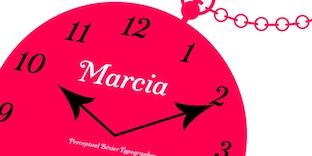 After attending high school in Singapore, Victoria Rushton (New York City) studied at RISD (the Rhode Island School of Design) and graduated in 2013 with a degree in Illustration. In 2014 she joined Font Bureau and later Type Network as a staff designer, and lived in Boston. Under the guidance of Cyrus Highsmith at RISD, she created the text typeface Sylvia in 2012 for the poems of Sylvia Plath who committed suicide in 1963.
After attending high school in Singapore, Victoria Rushton (New York City) studied at RISD (the Rhode Island School of Design) and graduated in 2013 with a degree in Illustration. In 2014 she joined Font Bureau and later Type Network as a staff designer, and lived in Boston. Under the guidance of Cyrus Highsmith at RISD, she created the text typeface Sylvia in 2012 for the poems of Sylvia Plath who committed suicide in 1963. In 2015, she designed the Font Bureau font Marcia, a didone with many quirks and curvy surprises. In 2016, she designed Embury Text. Victoria explains: Contrasting characteristics like soft round curves, sharp end strokes, exaggerated oval counters, punched in slab-like serifs, and swelling swashes play subtly off of each other, offering an unexpectedly immersive experience to the reader. In 2017, she designed the connected script typeface Gautreaux, which is inspired by a lettering style from Tommy Thompson's The Script Letter called "free style lettering." In 2021, Victoria, together with Type Network and Kerns&Cairns, designed the corporate typeface Peacock Sans for NBC. At Future Fonts in 2021, she released the Spencerian script typeface Kadabra, which was started by (her late partner) Dai Foldes, who in turn was inspired by the work of calligrapher Jean Larcher. Lovegrove (2021) is a display typeface designed by Dai Foldes and Victoria Rushton for their wedding invitations. It was inspired by the calligraphy of Raymond DaBoll and has been expanded into a variable font with a swash axis. Interview in 2015 by Type Thursday. Font Bureau link. Type Network link. Future Fonts link. [Google]
[More] ⦿
|
Viktor Vukasinovic
|
 Besançon, France-based designer of Aspirat (2018) and Re:Caravelle (2018), which were inspired by Enric Crous Vidal's Caravelle (1957). Aspirat's lower case a though suffers from a bad bout of midriff atrophia. He also designed the high-contrast didone Comté (2018), and the sans typeface Valdamour (2018), which was commissioned by the Communauté de Communes du Val d'Amour.
Besançon, France-based designer of Aspirat (2018) and Re:Caravelle (2018), which were inspired by Enric Crous Vidal's Caravelle (1957). Aspirat's lower case a though suffers from a bad bout of midriff atrophia. He also designed the high-contrast didone Comté (2018), and the sans typeface Valdamour (2018), which was commissioned by the Communauté de Communes du Val d'Amour. In 2019, he published Franche. [Google]
[More] ⦿
|
Vince Serecin
|
Graphic designer in Staten Island, NY, who created the techno typeface Reinauer in 2015. This typeface was commissioned and is based on the characters in the Reinauer Logo [Reinauer is a tug boat company]. Behance link for Flying Pie Design. [Google]
[More] ⦿
|
Vincent Lacombe
[Marginal Type]
|
[More] ⦿
|
Vitaly Kuzmin
|
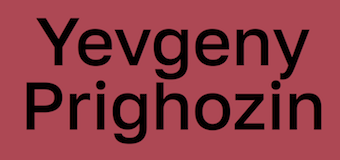 Designer at ParaType of the free 4-weight typeface family PT Root. Intended for screen reading, interfaces, websites, as well as wayfinding systems, PT Root UI is a modern uniwidth sans serif whose individual character widths are constant across all weights. It covers Latin and Cyrillic. See also the free extension Retni Sans (2018-2019).
Designer at ParaType of the free 4-weight typeface family PT Root. Intended for screen reading, interfaces, websites, as well as wayfinding systems, PT Root UI is a modern uniwidth sans serif whose individual character widths are constant across all weights. It covers Latin and Cyrillic. See also the free extension Retni Sans (2018-2019). In 2019, Vitaly Kuzmin and Alexandra Korolkova co-designed the free sans serif typeface Golos Text at Paratype. It was originally commissioned by Smena (AIC Group) for state and social service websites. [Google]
[More] ⦿
|
VJ Type (was: Violaine & Jérémy)
[Jérémy Schneider]
|
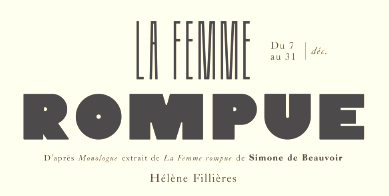 In 2011, Violaine Orsoni and Jérémy Schneider set up their studio, Violaine & Jérémy, in Paris. Schneider studied at Ecole Professionnelle Supérieure d'Arts graphiques et d'Architecture de la Ville de Paris (EPSAA). Their work is fashionable, elegant, unique, ground-breaking and delightfully experimental.
In 2011, Violaine Orsoni and Jérémy Schneider set up their studio, Violaine & Jérémy, in Paris. Schneider studied at Ecole Professionnelle Supérieure d'Arts graphiques et d'Architecture de la Ville de Paris (EPSAA). Their work is fashionable, elegant, unique, ground-breaking and delightfully experimental. In 2015 Schneider designed Nord and Sud for Théâtre des Bouffes du Nord. In 2016, they designed the (custom) Tuscan typeface Tribute, the gorgeous deco poster typeface Dida and the tall typeface Scali for Théâtre des Bouffes du Nord. Schneider added the expressive and frivolous display typeface Canopée in 2016 as well. In 2017, Violaine Orsoni and Jérémy Schneider published the stylish typeface Traviata. In 2018, Jérémy Schneider designed the stylish typeface family Kobe, and the exquisite but delicate all caps typeface Love. In that same year, VJ Type released the corporate art deco type Archibald, Les Gros mots, Big Fernand, Art Team, Napoleon Stratege, Lukas Dong, and Cage. In 2019, they created the identity, illustrations, fonts and menus for the Parisian restaurants Baba and Mamie (art deco), and the angular display typeface Cako. Jérémy Schneider designed the luxurious fashion mag typeface Voyage in 2019 as well. Typefaces from 2020: Jäger (by Jérémy Schneider), a tribute to fine craftsmanship. Jäger is a display typeface for headlines and short texts. Its first drawings were developed for an exhibition in 2015 at the Musée des Arts Décoratifs in Paris. Jäger is inspired by techniques mastered by craftsmen in their work, such as hollowed-out counter forms reminiscent of engravings, sculptures or chisel work. The angles give the impression of having been cut in wood, while the contours are rounded. Typefaces from 2021: Dahlia (an art nouveau serif by Jérémy Schneider that was influenvced by Italian lake posters from ca. 1910), Mun (a samurai sword caps typeface for the identity of Japanese restaurant Mun Camps Elysées), Kobe (experimental). [Google]
[More] ⦿
|
Vladimir Alexandrowitsch Pavlikov

|
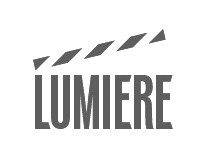 Russian type designer and graphic artist (b. Kaluga, Russia, 1978) who won awards at Bukvaraz 2001 for Zentra and Quadrat Grotesk. He graduated from Kaluga Art School (1993) and Moscow Printing Institute (2000) and is based in Moscow. His typefaces:
Russian type designer and graphic artist (b. Kaluga, Russia, 1978) who won awards at Bukvaraz 2001 for Zentra and Quadrat Grotesk. He graduated from Kaluga Art School (1993) and Moscow Printing Institute (2000) and is based in Moscow. His typefaces: - Quadrat Grotesk (2001, ParaType), and Quadrat Grotesk New (ParaType), which is based on old Russian wooden types that were used for placard display composition at large sizes.
- Flox (2000, ParaType) and Flox Rounded (2000, ParaType). Flex (2005) is a variation of Flox.
- Smena (2006, ParaType). A 1940s advertising family originally designed in 1999-2001. Smena was awarded at the TypeArt (Moscow) type design competition in 2001.
- The Cyrillic version of AdLib at ParaType in 1999. The original is by Freeman Craw, 1961, ATF.
- The Pi font Zentra (2000). This typeface was a winner at the TDC2 2001 competition (Type Directors Club).
- Dotage (2004, ParaType). A pixel family that features Shadow Left and Shadow Right sub-styles.
- At Paratype, he did cyrillizations of fonts such as Ad Lib, FF Confidential, FF Dynamoe, FF Karton and FF OCR-F (with Tagir Safaev, 1999-2001).
- The custom typeface Ruflex (2004).
- In 2011, he co-designed Rationale One with Alexei Vanyashin and Olexa Volochay.
- Lumiere (2012) is a custom typeface designed exclusively for Hollywood Reporter magazine's Russian edition. It was art-directed by Anton Aleynikov. It is based on The Font Bureau typeface Vonness Bold Compressed by David Berlow.
FontShop link. Klingspor link. Behance link. Paratype link. Behance link. [Google]
[MyFonts]
[More] ⦿
|
Vladimir Stankovic
|
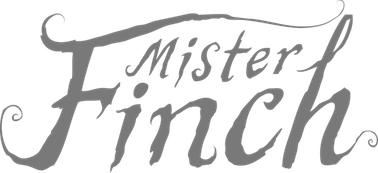 Successful illustrator and graphic designer in Odense, Denmark. In 2014, he created a logo and designed a font for Mister Finch and a book about his textile sculptures published by Glitterati Incorporated. This font, Mister Finch, is curly and can be regarded as a vampire script. Behance link. [Google]
[More] ⦿
Successful illustrator and graphic designer in Odense, Denmark. In 2014, he created a logo and designed a font for Mister Finch and a book about his textile sculptures published by Glitterati Incorporated. This font, Mister Finch, is curly and can be regarded as a vampire script. Behance link. [Google]
[More] ⦿
|
Vocal Type Co (or: Studio Seals)
[Tré Seals]
|
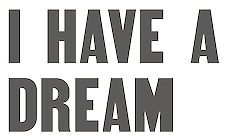 During his studies at Stevenson University in Washington, DC, Tré Seals (Baltimore, MD) created the Kesura bitmap typeface (2013), the sheared techno typeface Seized (2013), and the free vector format ribbon typeface Unveil (2013). In 2014, Tre Seals designed the vector font Mixed Media.
During his studies at Stevenson University in Washington, DC, Tré Seals (Baltimore, MD) created the Kesura bitmap typeface (2013), the sheared techno typeface Seized (2013), and the free vector format ribbon typeface Unveil (2013). In 2014, Tre Seals designed the vector font Mixed Media. In 2015, he created a lower case stencil font for Wink. In 2016, he published a few socially responsible typefaces and set up the activist type foundry Vocal Type Co. Early activist typefaces by Tré Seals include Draft (based on a banner carried by a group of students marching against conscription (1972)), Mom's Stencil (inspired by the image of the Civil Rights Movement of the 1960s, in which a child carries a sign at Jefferson Bank and Trust Co. in a demonstration against alleged discrimination in hiring practices at the bank in St. Louis on Aug. 31, 1963), and Martin (a unique sans serif typeface based on the placards carried by followers of Dr. Martin Luther King Jr. during the Memphis Sanitation Strike of 1968). Washington (2016) and Bayard (2018) are civil rights era sans-serif fonts, inspired by the-hand painted advertisements created for the momentous March on Washington in 1963. Typefaces from 2017: S Thing (a display family based on various condensed S's), VTC James (a stencil font family inspired by signs carried during one of the demonstrations that led to Title VII of the Civil Rights Act). Typefaces from 2018: VTC Eva (Duarte, Peron, Maria) (inspired by banners carried during a 1957 women's demonstration in Buenos Aires in front of the National Congress By Law For Universal Suffrage), VTC Du Bois (based on infographics by William Edward Burghardt Du Bois, an American sociologist, historian, civil rights activist, Pan-Africanist, author, writer, and editor. After completing graduate work at the University of Berlin and Harvard, where he was the first African American to earn a doctorate, he became a professor of history, sociology, and economics at Atlanta University). Typefaces from 2019: VTC Ruben (inspired by journalist Ruben Salazar and remnants of the 1970 National Chicano Moratorium), VTC Ruby, VTC Marsha Bold (inspired by the vertical sign that once hung outside of Stonewall, and named after Marsha P. Johnson, an African-American transgender woman from New Jersey, whose activism in the 1960's and 70's made her one of the most prominent figures in the Stonewall uprising of 1969). Typefaces from 2020: Carrie (inspired by the October 23, 1915, march by 25,000 women up Fifth Avenue in New York City to advocate for women's suffrage), Broome (a bespoke typeface for Umber Magazine), The Neue Black (a free gaspipe font based on the signage of Martin Luther King Jr's and the Southern Christian Leadership Conference (SCLC) Chicago Freedom Movement). Typefaces from 2021: VTC Spike (a custom typeface for Spike Lee's book, Spike). Behance link. Older Behance link. Creative Market link. Seals Studio. Youtube video by Naresh Ramchandani on Tré Seals (2021). [Google]
[More] ⦿
|
Voith Helvetica
|
The house font of J.M. Voith AG, based on Helvetica. [Google]
[More] ⦿
|
Vormplatform
[Guido de Boer]
|
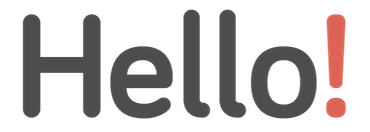 Founded by Guido de Boer (Utrecht), Vormplatform is a Dutch studio in which Roosmarijn ten Hoopen, Studio Airport, Ferry Booms and Jeroen van Loon participate. This is an eye candy site, where one can also find their free twitterware typeface Bariol (2012, +Italic), a rounded sans monoline with a large set of icons. This typeface was published by Atipo in Spain.
Founded by Guido de Boer (Utrecht), Vormplatform is a Dutch studio in which Roosmarijn ten Hoopen, Studio Airport, Ferry Booms and Jeroen van Loon participate. This is an eye candy site, where one can also find their free twitterware typeface Bariol (2012, +Italic), a rounded sans monoline with a large set of icons. This typeface was published by Atipo in Spain. In 2013, Guido designed the rounded sans typeface 225 Rounds. In 2016, for the city of Utrecht, he designed the daptive typeface U-Type. Personal web site. Behance link. [Google]
[More] ⦿
|
Wally Olins
[Wolff Olins]

|
[MyFonts]
[More] ⦿
|
Wayne Thompson
[Australian Type Foundry (ATF)]

|
[MyFonts]
[More] ⦿
|
WDR Minion
|
The house font of the TV chain WDR, which also uses FF Meta 1 and FF Meta Black, as well as an on-screen font called WDR TV. [Google]
[More] ⦿
|
Weidmüller
|
 A corporate URW studio sans family published in 2012. The six-font family sells for over 4000 dollars and covers Turkish, Baltic, Romanian, Cyrillic, Greek, Chinese Simplified, Chinese Traditional, Japanese, Korean, Thai, Arabic, and Hebrew. [Google]
[More] ⦿
A corporate URW studio sans family published in 2012. The six-font family sells for over 4000 dollars and covers Turkish, Baltic, Romanian, Cyrillic, Greek, Chinese Simplified, Chinese Traditional, Japanese, Korean, Thai, Arabic, and Hebrew. [Google]
[More] ⦿
|
Weinblum & Stahl GmbH
|
Design studio in Berlin and London run by Ani Weinbaum and Nina Stahl. Their typefaces include these: - Tape (2015). A straight-edged typeface done for a concept music festival in Berlin.
- Bialik (2015, for Hebrew). Based on the Bauhaus principles of contrast, abstraction and geometry, Bialik is a clear, modern and highly readable typeface. The font takes its name from Bialik Street, a key thoroughfare in Tel Aviv, designated a UNESCO World Heritage Cultural site for having the largest number of Bauhaus style structures anywhere in the world.
Behance link. [Google]
[More] ⦿
|
Welcome FIFA
|
The house fonts of FIFA. [Google]
[More] ⦿
|
Werklig
|
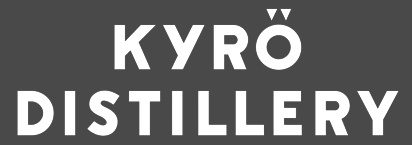 Helsinki-based design studio. Creators of the display sans typeface Altai (2014). This is a bespoke typeface for the Altai glass series, designed by Finnish designer Mari Isopahkala. For the Kyrö Distllery Company in Isokyrö, they made the custom typeface Napue Sans (2014), which is based on memorial monument engravings.
Helsinki-based design studio. Creators of the display sans typeface Altai (2014). This is a bespoke typeface for the Altai glass series, designed by Finnish designer Mari Isopahkala. For the Kyrö Distllery Company in Isokyrö, they made the custom typeface Napue Sans (2014), which is based on memorial monument engravings. Behance link. [Google]
[More] ⦿
|
White Crow
[Sarang Kulkarni]
|
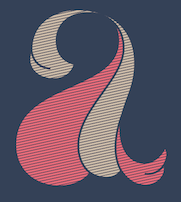 WhiteCrow is a type foundry and design studio founded by Sarang Kulkarni in Mumbai in 2005. It specializes in multilingual branding, type design and calligraphy. A collective of type designers, the White Crow team creates customized typefaces for all Indian scripts, including Devanagari, Bangla, Gujarati, Tamil, Telugu, Kannada, Malayalam, Gurmukhi, Meitei Mayek (Manipuri), Oriya and Urdu. Their typefaces:
WhiteCrow is a type foundry and design studio founded by Sarang Kulkarni in Mumbai in 2005. It specializes in multilingual branding, type design and calligraphy. A collective of type designers, the White Crow team creates customized typefaces for all Indian scripts, including Devanagari, Bangla, Gujarati, Tamil, Telugu, Kannada, Malayalam, Gurmukhi, Meitei Mayek (Manipuri), Oriya and Urdu. Their typefaces: - Life OK. A Devanagari custom type designed for the new Hindi entertainment channel- Life OK. It consists of 3 weights and is hinted for television use.
- Painter Kafeel and Painter Suhail. Digital typefaces based on letterforms that were originally handpainted by Kafeel. In collaboration with Hanif Kureshi at Handpainted Type.
- Star Jalsha. Custom logo type and typeface in Bengali script for a regional TV channel- Star Jalsha. It consists of 3 weights and is hinted for television use.
- Vodafone India. Regional language logos, corresponding text type design as per the existing Latin type and 'power to you' taglines in 11 Indian languages.
- Modak. Modak is an open source chubby Devanagari/Latin display typeface.
- The Economist. Six sets of Latin characters were designed to resemble other scripts like Sinhala, Tibetan, Hebrew, Cyrillic, Chinese and Urdu for the Economist magazine's outdoor campaign.
- Being Human. A handwriting based display typeface that carries forward the look of the Being Human logotype.
- TATA AIA. Custom typeface designed for TATA AIA.
- Anek Gurmukhi (2022, Ek Type).
[Google]
[More] ⦿
|
Will Scobie

|
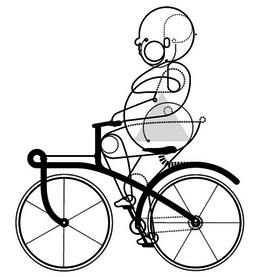 Über-talented and original illustrator based in Brighton, UK. Creator of Faced (2007-2008, T-26), a circle-enclosed facial expression dingbat typeface. He also made a commissioned display typeface for Audi Magazine in 2011.
Über-talented and original illustrator based in Brighton, UK. Creator of Faced (2007-2008, T-26), a circle-enclosed facial expression dingbat typeface. He also made a commissioned display typeface for Audi Magazine in 2011. Formation (2012) is an ornamental techno all caps typeface. Enjoy Will Scobie's drawings. [Google]
[MyFonts]
[More] ⦿
|
Will Silva
[Will Silva Design]
|
 [More] ⦿
[More] ⦿
|
Will Silva Design
[Will Silva]
|
 Art director in Sao Paulo, who designed the logotype Soul (2016). In 2019, he designed the free display typefaces Jack Russel (sic) (squarish), Boxer, Bolton (piano key style), Pointer, Husky, and Yorkshire (trilined). [Google]
[More] ⦿
Art director in Sao Paulo, who designed the logotype Soul (2016). In 2019, he designed the free display typefaces Jack Russel (sic) (squarish), Boxer, Bolton (piano key style), Pointer, Husky, and Yorkshire (trilined). [Google]
[More] ⦿
|
Willem Van Lancker
|
Willem Van Lancker is a designer and writer. He works for Google and lives in San Francisco's Mission District. Between 2009-2011, Willem Van Lancker designed ODD (an ultra fat face, done for RISD), Nads Slab (a slab stencil typeface done for the athletic teams of RISD) and Medgadget (a squarish typeface designed for but never used by the online journal of medical technologies, Medgadget). Behance link. [Google]
[More] ⦿
|
William Berkson

|
 Philosopher, typophile and type designer, who obtained a PhD in the history and philosophy of science from the London School of Economics in 1970. He lives in Reston, VA. Berkson designed Williams Caslon Text (2010) for Font Bureau in 2010, to better capture the readability, friendliness, and authority of Caslon for modern presses and readers. This font was used as a basis for William Caslon Small in September 2013 as a bespoke text typeface for The New Yorker, to replace Sabon.
Philosopher, typophile and type designer, who obtained a PhD in the history and philosophy of science from the London School of Economics in 1970. He lives in Reston, VA. Berkson designed Williams Caslon Text (2010) for Font Bureau in 2010, to better capture the readability, friendliness, and authority of Caslon for modern presses and readers. This font was used as a basis for William Caslon Small in September 2013 as a bespoke text typeface for The New Yorker, to replace Sabon. Author of Fields of Force (Routledge), Learning from Error (Open Court) and the Becoming a Mentsh workshops (Mentsh.com) and the forthcoming Avot: Ancient Wisdom for Modern Life. Berkson led a panel at Typecon '05 (NYC) on subway type, and gave a talk about his work reviving Caslon at Typecon '06 (Boston). He was also a speaker at TypeCon 2009 in Atlanta. Home page. [Google]
[MyFonts]
[More] ⦿
|
William Fonteneau
|
During his studies in Paris, William Fonteneau created a logo and a typeface called Meridians (2014). [Google]
[More] ⦿
|
Wilo Plus
|
The house font of Wilo AG, developed in 2005 by FontShop after an adaptation of FF Plus. [Google]
[More] ⦿
|
Wim Crouwel

|
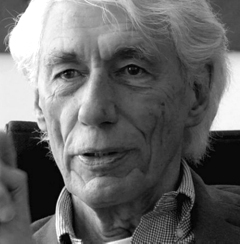 Willem Hendrik Crouwel is a Dutch graphic designer who was born in Groningen in 1928, and died in Amsterdam in 2019. He studied at the Academy Minerva from 1947-1949. In 1952, he founded his design agency, and in 1963, he created the Total Design agency together with four others. In 1967, he created his New Alphabet for cathode ray tubes---it had only vertical and horizontal strokes. It was used in the Dutch pavillon at the World Exhibition in Osaka in 1970. Crouwel became professor of industrial graphic design in 1973 at the Technical University of Delft and was also professor of art at the Erasmus University in Rotterdam. From 1963 until 1984, Crouwel managed all posters and catalogs for Stedelijk Museum Amsterdam. In 1981, he became director of Museum Boijmans-Van Beuningen, and remained director until 1991.
Willem Hendrik Crouwel is a Dutch graphic designer who was born in Groningen in 1928, and died in Amsterdam in 2019. He studied at the Academy Minerva from 1947-1949. In 1952, he founded his design agency, and in 1963, he created the Total Design agency together with four others. In 1967, he created his New Alphabet for cathode ray tubes---it had only vertical and horizontal strokes. It was used in the Dutch pavillon at the World Exhibition in Osaka in 1970. Crouwel became professor of industrial graphic design in 1973 at the Technical University of Delft and was also professor of art at the Erasmus University in Rotterdam. From 1963 until 1984, Crouwel managed all posters and catalogs for Stedelijk Museum Amsterdam. In 1981, he became director of Museum Boijmans-Van Beuningen, and remained director until 1991. Besides New Alphabet (1967), he also designed Stedelijk (1968, for his poster for Stedelijk Museum Amsterdam), and the Fodor Alphabet (1969, pixelish). He led Total Design in the 70s. His typeface Gridnik (1974), an octagonal typeface made for a typewriter, was never released as a font. Crouwel's love for grids had earned him the nickname Gridnik or Mr. Gridnik. This name is well-deserved: he once stated, I am a functionalist troubled by aesthetics. Creator of Dutch postage stamps in 1976. In 2009, Crouwel won the Gerrit Noordzij prize. In 2019, he won the TDC Medal. Biography. In 2007, there was a special Crouwel event in Paris. Pictures of Crouwel by Michael Levy: Crouwel with Pierre Bernard, Crouwel and Étienne Robial, Crouwel signing books, portrait. Many have continued along the path shown by Crouwel: - Jay Vidheecharoen made the font Atmosphere based on Wim Crouwel's New Alphabet.
- Architype New Alphabet 1 through 3 by The Foundry are also based on Crouwel's New Alphabet. The Foundry also made Architype Stedelijk and Architype Fodor based on Crouwel's work.
- A free version of New Alphabet was made by Matt McInerney (2008). As mattmc over at FontStruct, he made a number of New Alphabet lookalikes in 2008 such as Neuescreen, Pentagrid Alkphabet, and Pentagrid v2.
- Klean Regular (2011, Gershon Paul) is an octagonal take on New Alphabet.
- Funk King used FontStruct in 2008 to make a series of fonts based on posters by Wim Crouwel: Edgar Fernhout (based on a 1963 poster), Amsterdamse School (1975, art deco lettering), Kalender 1976 Letters (octagonal), Kalender 1976, Brusselmans, Rabobank.
- The pixel typeface Amsterdam (2008, Fizgig at FontStruct) was based on Wim Crouwel's hand lettering for the 1968 Vormgevers poster.
- Jonathan Hill's LineWire (2009) is an octagonal typeface influenced by Crouwel's work.
- Nate Navasca's piano key typeface Shima (2011) is based on Wim Crouwel's Hiroshima poster (1957). So are Oscar Cobo and Wete's UT Morph (2018), Sean Kane's Suzuka (2012), Hello Muller's Nagasaki, and Sasha Iacob's Nagasaki (2012, free font).
- Igor Rossi used FontStruct in 2009 to make Crouwel's Paper Cuts and Crouwel's Stedelijk Alphabet.
- Antonio Morata fontstructed ztedelijk-Crouwel eYe/FS (2011) based on the same Stedelijk Museum poster.
- Michael Hernan's 1996 typeface New Alphabet is also influenced by Crouwel.
- In 2011, Boris de Vries weighed in with two typefaces. Wim Crouwel's Hiroshima poster (2011) served as a model for Boris's unnamed piano key typeface created in 2011. And a 1968 poster for Stedelijk Museum Amsterdam was the model for another typeface created by Boris in 2011.
- Paul Hunt designed New Alpha BBit, New Alpha 1 Line, New Azbuka, and New Alpha Dot using FontStruct.
- Mrman created New Alphabet Substance Style (2008, FontStruct).
- Shawn Grima's squarish typeface Architect (2012) was inspired by Crouwel as well.
- Duncan Robertson developed a 42-cut typeface family called New Alphabet 13, in one of the best researched attempts to date to push Crouwel's ideas even further.
- Fabio Furlanis made the octagonal C-Alphabet (2013, collaboration with Roberto Duse).
- Tom Seddon's typeface The Empty Space (2013) was inspired by Wim Crouwel's New Alphabet.
- th3lonius created Gendai Block and Gendai round in 2013 based on Crouwel's Hiroshima poster.
- Darren O'Driscoll's Newer Alphabet (2013) is based on New Alphabet.
- Foundry Gridnik (2016, by David Quay at The Foundry): Foundry Gridnik was developed from the single weight monospaced typewriter face, originally created by Dutch designer Wim Crouwel in the 1960s.
- For FIFA's World Cup 2014, the Dutch team played in Case Crouwel, a bespoke octgaonal and inline typeface by Wim Crouwel done for Nike.
Flickr group on Wim Crouwel. Wim Crouwel Exhibition at the Stedelijk Museum Amsterdam, 28 September 2019-22 March 2020. [Google]
[MyFonts]
[More] ⦿
|
Winterthur and Winterthur Serif
|
The house fonts of Winterthur, based on Syntax. [Google]
[More] ⦿
|
Wisit Potiwat
|
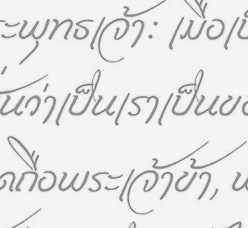 Or Wisit Po. Graphic designer in Bangkok and lecturer at BanSomdejchaopraya Rajabhat University (BSRU). Creator of these typefaces, nearly all for both Latin and Thai:
Or Wisit Po. Graphic designer in Bangkok and lecturer at BanSomdejchaopraya Rajabhat University (BSRU). Creator of these typefaces, nearly all for both Latin and Thai: - The eroded Wabi Sabi Marker typeface (2016).
- The free Latin / Thai script typeface Mi Teiying Script (2016).
- The free Latin / Thai sans display typeface WP Domino Novel (2015).
- The free Latin / Thai sans typeface BSRU Bansomdej (2015).
- Sri Sury Wongse (2016). For Latin and Thai.
- Chalom (2017). For Latin and Thai. A rounded poster sans published by Ziam Type.
- Mumchak (2017).
- Jack Rough (2017). Published at Ziam Type as ZT Jack.
- Bukan Rustic Script (2017).
- Tone (2018). A Latin / Thai sans typeface family.
- ZT Yos (2018, at Ziam Type). For Latin and Thai, ZT Yos is being promoted as Bangkok Deco.
- The organic sans typeface ZT SomChan (2018).
- The bespoke typeface Akkara (2019) for a clothing line.
- The bespoke typeface Chann (2019).
- Sukh (2020). For Latin and Thai.
- Plearn Slip (2020). Hand-printed.
- Laph (2020).
- San Sern (2019). An award-winning halftone font.
- BSRU Pro (2020).
- Calm (2020).
- The bespoke typeface Wu (2020) for Wu Restaurant.
- Kin (2022). A Latin / Thai typeface.
[Google]
[More] ⦿
|
Wolfe Hall
[Jason Wolfe]
|
Wolfe Hall is Jason Wolfe's studio in London, UK. Jason's typefaces include: - Typefaces released at Apfel Foundry in 2021: Marquis, Lining, Asia Art Archive, the various Camper typefaces, Friedel.
- Typefaces released at Wolfe Hall: WH Aldine Mono (2021).
- Custom typefaces at Wolfe Hall: Bradley Dam (2021, after Fann Street's Viennese from 1874), WH Flatpack (2021, caps only and monospaced), Dickies (an inktrapped blue collar sans), Boiler House (a bold headline typeface).
[Google]
[More] ⦿
|
Wolff Olins
[Wally Olins]

|
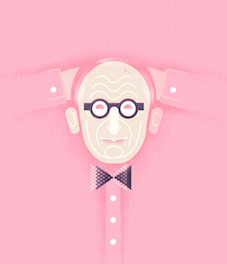 Wallace "Wally" Olins (b. 1930, London; d. 2014) co-founded the famous design company Wolff Olins in 1965. Presently, it has offices in London, San Francisco, Barcelona, New York and Tokyo. This company is guilty of many custom typefaces, and employed at some point people such as Jeremy Tankard.
Wallace "Wally" Olins (b. 1930, London; d. 2014) co-founded the famous design company Wolff Olins in 1965. Presently, it has offices in London, San Francisco, Barcelona, New York and Tokyo. This company is guilty of many custom typefaces, and employed at some point people such as Jeremy Tankard. WO specializes in brand typing. One of their custom typefaces is Renault (1972). It is a somewhat industrial transitional typeface family. Digital versions include R690 Roman (on the SoftMaker MegaFont XXL CD, 2002), Renault (URW) and Renault EF (Elsner and Flake). In 1993, National Westminster contracted them to make the NatWest corporate family, which was then drawn by David Quay and Freda Sack, and digitized by Bruno Maag. Wolff also designed the beautiful Tate Gallery Corporate Typeface. During his employment at Wolff Olins (UK), Michael Barbosa started work on Metroplis (1995) for Metroplisboa, the Lisbon subway. This typeface was subsequently drawn by Freda Sack and David Quay at The Foundry, London. Typedia link. Linotype link. FontShop link. Wikipedia link. [Google]
[MyFonts]
[More] ⦿
|
Wolfgang Schmittel
|
German graphic designer and photographer, b. 1930, Frankfurt, d. 2013, Kronberg im Taunus. Creator of the compass-and-ruler typeface Braun (1952) for the logo of Braun, the company for which he worked from 1952 until 1981. He is considered as the pater familias of corporate design. Author of these books at ABC Verlag, Zurich: - Design, Concept, Realisation (1975).
- Process Visual (1978).
- Corporate Design International (1984).
[Google]
[More] ⦿
|
Working Format
[Ross Milne]
|
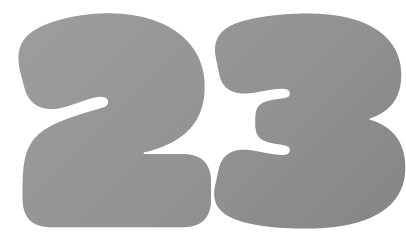 Ross Milne (b. 1985) works and lives in Vancouver, Canada where he studied at the Emily Carr University. After graduating with a degree in Communication Design (2007), he moved to Den Haag, where he studied type design at the KABK, and graduated in 2008. In early 2009, he returned to Vancouver. He works as a contributing designer with Commercial Type while pursuing his own projects in graphic design and type design. His foundry and studio is called Working Format. His typefaces:
Ross Milne (b. 1985) works and lives in Vancouver, Canada where he studied at the Emily Carr University. After graduating with a degree in Communication Design (2007), he moved to Den Haag, where he studied type design at the KABK, and graduated in 2008. In early 2009, he returned to Vancouver. He works as a contributing designer with Commercial Type while pursuing his own projects in graphic design and type design. His foundry and studio is called Working Format. His typefaces: This Nice image of ribbon letters shows his talent. See also this neat b. Alternate URL. Klingspor link. [Google]
[More] ⦿
|
Würth
|
A corporate geometric URW studio sans family published in 2012. The three-font family sells for over 5000 dollars and covers Turkish, Baltic, Romanian, Cyrillic, Greek, Chinese Simplified, Chinese Traditional, Japanese, Korean, Thai, Arabic, and Hebrew. URW++ is authorized by the Adolf Würth GmbH & Co. KG to deliver the new corporate fonts to external service providers of Würth on the basis of royalty payment. Würth covers Turkish, Baltic, Romanian, Cyrillic, Greek, Chinese Simplified, Chinese Traditional, Japanese, Korean, Thai, Arabic, and Hebrew. [Google]
[More] ⦿
|
Xavier Meurice
[Ainsifont (was: Atelier Telescopique, or: Fonderie Nordik)]
|
 [More] ⦿
[More] ⦿
|
Xsellize
|
Links to corporate fonts, such as Dendra New (Canon), Allianz Sans, AudiType, TelefonList, Yellow, Adobe Clean. [Google]
[More] ⦿
|
xyz.ch
[Alexander Colby]
|
 Alexandfer Meyer is the Zürich-based designer (b. 1977) who started publishing his typefaces at Die Gestalten. In 2008, he set up xyz.ch where he sells his own creations. Some typefaces have recently been released under the name Alexander Colby. Designer of these typefaces:
Alexandfer Meyer is the Zürich-based designer (b. 1977) who started publishing his typefaces at Die Gestalten. In 2008, he set up xyz.ch where he sells his own creations. Some typefaces have recently been released under the name Alexander Colby. Designer of these typefaces: Since 2010, partner with Timo Gaessner in Milieu Grotesque. [Google]
[More] ⦿
|
Yaa Yaa
|
Or Yandi AA. Jakarta, Indonesia-based designer of Nutriture (2016: for Pt Nutrifood Indonesia), Decruiser (2017) and Kaha (2017, a paperclip typeface). [Google]
[More] ⦿
|
Yaniguille
[Guillermo Vizzari]

|
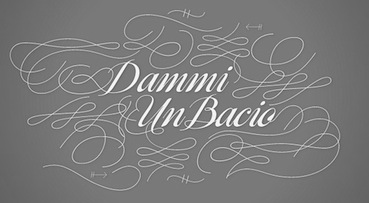 Guille Vizzari is the Argentinian designer of the gorgeous experimental pixel-script typeface Beautiful Pixel (2006). He also created the equally gorgeous connected copperplate script typeface Ragazza Script (2012, Latinotype). His graduation work in 2012 at FADU-UBA (University of Buenos Aires) is the Trajan / roman caps typeface Esmeralda.
Guille Vizzari is the Argentinian designer of the gorgeous experimental pixel-script typeface Beautiful Pixel (2006). He also created the equally gorgeous connected copperplate script typeface Ragazza Script (2012, Latinotype). His graduation work in 2012 at FADU-UBA (University of Buenos Aires) is the Trajan / roman caps typeface Esmeralda. In 2013, he published the lapidary flared serif typeface Esmeralda Pro at Sudtipos. Esmeralda Pro won an award at Tipos Latinos 2014. In 2014, Yani Arabena and Guille Vizzari published Abelina Pro at Sudtipos. It is based on Yanina's thesis project in 2011-2012 at FADU/UBA simply called Abelina, which was mentored by Ale Paul and Ana Sanfelippo. Abelina won an award at Tipos Latinos 2016. For the 3rd edition of Masticar (2014), an Argentine Gourmet fair, an exclusive hand-drawn poster typeface was developed by Yani Arabena and Guille Vizzari for use in the identity of the fair. In 2015, Alejandro Paul, Yani Arabena and Guille Vizzari combined forces in the signage script typeface Quotes (Script+Caps) (2015, Sudtipos). Envelove (2017) is a script typeface family consisting of Script, Icons, and Caps, designed at Sudtipos by Yani Arabena, Guille Vizzari, and Alejandro Paul. Winner at Tipos Latinos 2018 of a type design award for Envelove. Still in 2017, Guille Vizzari designed the great Moleskine notebook-inspired typeface family Proprietor at Sudtipos. Proprietor comes in Script, Icon, Deco, Wide, Open and Roman styles. Co-designed with Alejandro Paul, it won an award at Tipos Latinos 2018. In 2018, Yani Arabena and Guille Vizzari published the lively vernacular signage typeface family No Molestar, which won an award at the Type Directors Club's Type Design Competition 2019. Typefaces from 2019 include Buddies, a retro brush lettering font released by Sudtipos. Designer of the vintage handcrafted typeface Espiritu (2021, Sudtipos), together with Agus Pizarro Maire. Typefaces from 2022 by Yaniguille: Maison Maioli Text (a custom typeface for a floral boutique in London). Old URL. Facebook page. Behance link (joint page with Yani Arabena). Joint web page with Yani Arabena. [Google]
[MyFonts]
[More] ⦿
|
Yanina Arabena

|
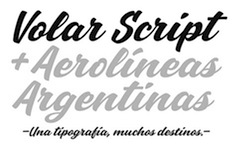 Yani Arabena (b. 1985, Buenos Aires) graduated from the University of Palermo in 2007 and then from FADU-UBA in Buenos Aires in 2012. Her graduation typeface in 2012 at FADU UBA (University of Buenos Aires) is the signage script typeface Abelina. Along with Guille Vizzari, she runs the studio Yani & Guille based in Buenos Aires. Still with Guille Vizzari, she created Volar Script (2014, a signage script custom created for Aerolineas Argentinas) and Cafecito (2014), and was involved in several lettering and calligraphic projects.
Yani Arabena (b. 1985, Buenos Aires) graduated from the University of Palermo in 2007 and then from FADU-UBA in Buenos Aires in 2012. Her graduation typeface in 2012 at FADU UBA (University of Buenos Aires) is the signage script typeface Abelina. Along with Guille Vizzari, she runs the studio Yani & Guille based in Buenos Aires. Still with Guille Vizzari, she created Volar Script (2014, a signage script custom created for Aerolineas Argentinas) and Cafecito (2014), and was involved in several lettering and calligraphic projects. In 2014, Yani Arabena and Guille Vizzari published Abelina Pro at Sudtipos. It is based on Yanina's thesis project in 2011-2012 at FADU/UBA simply called Abelina, which was mentored by Ale Paul and Ana Sanfelippo. Abelina won an award at Tipos Latinos 2016. For the 3rd edition of Masticar (2014), an Argentine Gourmet fair, an exclusive hand-drawn poster typeface was developed by Yani Arabena and Guille Vizzari for use in the identity of the fair. For the 2015 edition of the fair, Masticar Bold was added. In 2015, Alejandro Paul, Yani Arabena and Guille Vizzari combined forces in the signage script typeface Quotes (Script+Caps) (2015, Sudtipos). Envelove (2017) is a script typeface family consisting of Script, Icons, and Caps, designed at Sudtipos by Yani Arabena, Guille Vizzari, and Alejandro Paul. Winner at Tipos Latinos 2018 of a type design award for Envelove. In 2018, Yani Arabena and Guille Vizzari published the lively vernacular signage typeface family No Molestar, which won an award at the Type Directors Club's Type Design Competition 2019. Behance link, jointly with Guille Vizzari. Another Behance link. Facebook link. Joint web page with Guillermo Vizzari. [Google]
[MyFonts]
[More] ⦿
|
Yevgeniy Anfalov
[Kyiv Type Foundry]
|
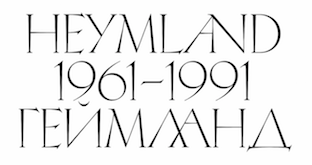 [More] ⦿
[More] ⦿
|
Yiannis Karlopoulos
|
 Or John Karlopoulos, b. 1967, Thessaloniki. He studied graphic design in Athens and type design at Ecole Estienne in Paris.
Or John Karlopoulos, b. 1967, Thessaloniki. He studied graphic design in Athens and type design at Ecole Estienne in Paris. At Cannibal, he designed CF Block (1997), Bodoni Greek CF, CF Charlemagne (1996), Delta Carlo (2000, for Delta D Magazine), FF DIN (2002), Franklin Gothic ITC Hell (1999), CF Kaveros (1997), Klak CF (designed by Vassilis Georgiou, Yiannis Karlopoulos and Panos Haratzopoulos, based on Greek movie posters from the 40s, 50s and 60s), CF Leftism (1996), CF Matrix Dot (1999), CF Salamis (designed by Vassilis Georgiou, Yiannis Karlopoulos and Panos Haratzopoulos), CF Serpentine (1998), CF Suprematica (1998), and CF XRay (1995). In 2013, John Karlopoulos, Vassilis Georgiou, and Panos Haratzopoulos co-designed the Latin / Greek signage typeface CF Majestic (2013, Cannibal). In 2016, Vassilis Georgiou, Yiannis Karlopoulos and Panos Haratzopoulos co-designed the calligraphic script typeface CF Ariston and the connected script typeface CF Astir. In 2017, Vassilis Georgiou, Yiannis Karlopoulos and Panos Haratzopoulos co-designed the Greek brush script typeface CF Splendid (with two substyles, Serano and Special). [Google]
[More] ⦿
|
Yiannis Kouroudis
|
Greek designer (b. 1962, Soufli) of Greek versions of FontFont fonts, such as FF Providence Greek (2000) and FF Providence Office Greek (2001). In 1995, he cofounded Cannibal Fonts with Panagiotes (Panos) Haratzopoulos. At Cannibal, in 1995, he created CF Meneloas (children's font), CF Kouroudis Select (display face), CF Kouroudis Graffiti, CF Stamp, CF Urania, CF Venus (a wide caps face), CF Eteocles (1996), CF Criton and CF Compacta (a Greek version of Compact). Delta Kouroudis is a custom font done in 2000 for Delta Magazine. Klingspor link. [Google]
[More] ⦿
|
Yigit Uyrac
|
Graphic designer in Istanbul. Yigit created an avant garde custom typeface for Dogu Biricik in 2014. It was based on Galliadis. He also created the Hakenkreuz-inspred typeface Fuck You Natzi (2014) (sic). Behance link. [Google]
[More] ⦿
|
Yoann Minet

|
 Graduate of Ecole Estienne in Paris, who lives in Paris, where is the lead designer at Production Type. Yoann Minet (b. 1988, Tulle) created many typefaces:
Graduate of Ecole Estienne in Paris, who lives in Paris, where is the lead designer at Production Type. Yoann Minet (b. 1988, Tulle) created many typefaces: - Typefaces from 2015: Zahrah (a ten-style didone published by Indian Type Foundry), Granville (a Peignotian sans by Jean-Baptiste Levée).
- Typefaces from 2014: Minotaur [Minotaur won an award in the TDC 2015 Type Design competition], Minotaur Sans (extended in 2017 to Minotaur Lombardic and Minotaur Lombardic Sans), Countach (Countach, the tough compact sans supercharged with brawn & brains. Developed for The Crew, a critically acclaimed auto racing video game, Countach evokes the muscular and mechanical dynamics of fast cars and urban adventure. ; developed by Superscript2, J.-B. Levée, Sandra Carrera and Irina Smirnova).
- 2013, DSAA Design Typographique, Ecole Estienne, Paris: Traulha (wedge serif with horizontal stress), Ostia. Traulha is available from Extra Brut.
- 2012-2013, DSAA2 Design Typographique, Ecole Estienne, Paris: De Malfête (after a roman by Garamond in 1530, and an italic buy Simon de Collines), Grotique Gothesque.
- 2012, apprenticeship with Ludovic Balland: Stanley (a retail typeface at Optimo co-designed with Ludovic Balland), Theater Basel (a bespokle typeface done with Ludovic Balland), Swiss Art Awards (a font developed with Ludovic Balland for the identity of the Swiss Art Awards).
- 2011-2012, DSAA1 Design Typographique, Ecole Estienne, Paris: Capitale (a sans done under the direction of Franck Jalleau), Forez (a high-contrast wayfinding font for the chalet de François Mauriac in Saint-Symphorie).
- 2007-2011, Ecole de Communication Visuelle or (ECV) in Bordeaux, France: Bernadette (handwriting font based on the writing of Yoann's mother), Oxymore (2010, slab serif).
- 2012-2013: Ostia Antica is commissioned by Maquettes et Mise en pages designed and is co-designed bt Hugo Anglade, Laure Afchain and Thomas Petitjean for the exhibition catalogue Pasolini Roma in 2013. Extended in 2018 to a large retail family, which is available from Extra Brut.
- In 2014, he created Clifton Regular, a revival of Athenian (1896, British Type Foundry). This type is similar to Fantail (ATF, and Franklin Type Foundry, 1889). Published at 205 Corp.
- In 2014, he made the bespoke typeface Stratos with art direction by Emmanuel Labard. Stratos was retailed in 2016 and won an award in the TDC Typeface Design competition in 2017.
- In 2016, as Black Foundry, Jeremie Hornus, Gregori Vincens, Yoann Minet, and Roxane Gataud (and possibly Riccardo Olocco) designed the free Google web font Atma for Latin (in comic book style) and Bengali.
- In 2016, Google Fonts published the free Latin / Bengali signage font Galada (2015). It is based on Pablo Impallari's Lobster (for Latin). The Bengali was developed as a studio collaboration by Jeremie Hornus, Yoann Minet, and Juan Bruce at Black Foundry in France. Github link.
- Dr (2017, Production Type). A display sans typeface family that is deliberately weird.
- Droulers (2017). A monospaced display type for Bureau Brut.
- Totentanz (2017). A playful didone done for Bureau Brut.
- At Production Type in 2018, he cooperated with Jean-Baptiste Levée and Quentin Schmerber on Cardinal Classic and Cardinal Fruit, a large transitional typeface family. With Quentin Schmerber's help, he also published the 5-style text typeface Sainte Colombe in 2018. The tightly set and high impact photojournalism typeface family Cardinal Photo was added in 2020.
Interview by Ligature.ch. Personal home page. Behance link. [Google]
[MyFonts]
[More] ⦿
|
Yoann Minet
[Bureau Brut (was: Extra Brut)]
|
[More] ⦿
|
Yohanna-My Nguyen
|
 Born in France in 1985, Yohanna-My Nguyen is a graduate of the Masters program in type design at KABK, 2010. Her final project there was a typeface called Luciaan (2010). Before KABK, she did a DSAA Création Typographie at the École Estienne. She taught typography and typeface design at the Strasbourg School of Design (HEAR) and is now based in Paris.
Born in France in 1985, Yohanna-My Nguyen is a graduate of the Masters program in type design at KABK, 2010. Her final project there was a typeface called Luciaan (2010). Before KABK, she did a DSAA Création Typographie at the École Estienne. She taught typography and typeface design at the Strasbourg School of Design (HEAR) and is now based in Paris. Other typefaces by her include Pension (2011, a text family done for a French editor), Tipote (2011, a monolinear unicase typeface), Métropoli (2011), and the angular typeface Eddie (2008). At Production Type, she cooperated on the designs of Tesseract (+Display), Proto (including Slab Condensed and Grotesk), Kessler, Signal, Gemeli Mono and the upright script typeface Enfantine. Typecache link. [Google]
[More] ⦿
|
Yomar Augusto
[Bric Type]

|
 [MyFonts]
[More] ⦿
[MyFonts]
[More] ⦿
|
Zak Design
[Zakariya Saleh]
|
 Arabic font foundry based in Ramallah, Palestine, and run by Zakariya Saleh, a graduate of Palestine Polytechnic University. They made Osama (2013), Exo Sans (2013, a free Latin sans typeface---not to be condfused with Gama's Exo font), Asmaa (2013, Latin and Arabic), Ourtilane (2013), Oday (2013), AraSym Ramadan (2010, a family) which can be downloaded here.
Arabic font foundry based in Ramallah, Palestine, and run by Zakariya Saleh, a graduate of Palestine Polytechnic University. They made Osama (2013), Exo Sans (2013, a free Latin sans typeface---not to be condfused with Gama's Exo font), Asmaa (2013, Latin and Arabic), Ourtilane (2013), Oday (2013), AraSym Ramadan (2010, a family) which can be downloaded here. In 2013, he extrapolated the Sony Walkman logo into his Sony Walkman organic font. He also made the Arabic typefaces Bon Font, Saramah, Aqeeq, Graphici, Asri, Ink Drip, Arabic Script, Ink Stream, Alqusair, and Diana Extra, and the octagonal Latin / Arabic typeface Shohadaa. Typefaces from 2014: Ara Hala Bo She'sha, Ara Hamah 1964 B Bold, Ara Hamah 1964 R Light, Ara Hamah 1982, Ara Hamah AlFidaa, Ara Hamah AlHorra, Ara Hamah AlThawra, Ara Hamah Alislam, Ara Hamah Homs, Ara Hamah Kilania, Ara Hamah Sahet AlAssi, Ara Hamah Zanki, Ara Hamah City, Assaf, Haneen (signage script), Sally (with Sally Alzaza), Bondoq, Amal (art deco for Latin and Arabic), Lamis, Hilary, Saba, Mary (piano key typeface), Nisreen, Hajar, Kufi, Muslimah (free), Ahrar, Ghang Tachkili and Djadli Tachkili (designed by Jadli Zein Alabedeen (Algeria) and programmed by Zakaria Saleh), Al Hadari, El Maidan, Israr Syria, Etab AmMoniee, Hala, Hamah, Al Bayan, Assaf, Baghdad. Typefaces from 2015: Handmade (custom Latin/Arabic font for a Palestinian store), K24 (a corporate font for Kurdistan 24 channel), Hattan (Latin and Arabic), Nicole, Natalie, MasterFont, Naskh, Moscow (constructivist Arabic typeface). Typefaces from 2016: Joory, Twitter Headline Type, TV Sans, Corporative Sans (Latin and Arabic), Eliyaa Pro, Yasmin, Feather, Bein Sports Network typeface. Typefaces from 2017: Halimah. Typefaces from 2018: Media Pro, Maghfira. Behance link. [Google]
[More] ⦿
|
Zakariya Saleh
[Zak Design]
|
 [More] ⦿
[More] ⦿
|
ZeCraft
[Jean-François Porchez]

|
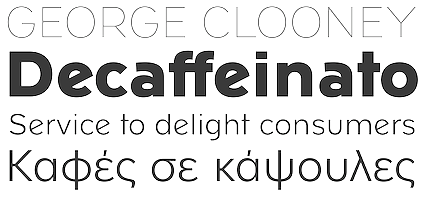 ZeCraft (Clamart, France) was founded by Jean-François Porchez as a vehicle for bespoke typefaces. An outgrowth of Typofonderie Porchez, it has created fonts for Arjowiggins, the Baltimore Sun, Beyoncé Knowles, Le Monde, Louis Vuitton, Public Transport in Paris (RATP) and Yves Saint Laurent Beauté. Some samples:
ZeCraft (Clamart, France) was founded by Jean-François Porchez as a vehicle for bespoke typefaces. An outgrowth of Typofonderie Porchez, it has created fonts for Arjowiggins, the Baltimore Sun, Beyoncé Knowles, Le Monde, Louis Vuitton, Public Transport in Paris (RATP) and Yves Saint Laurent Beauté. Some samples: - Retiro was specially designed for the Madriz magazine in Madrid. Based on the stereotypical Didot masthead of women's magazines like Tatler, L'Officiel and Vogue, and named after a park in Madrid, Retiro is a daring interpretation of Spanish typography. Retiro is a Castilian and Andalusian vernacular didone. Started in 2006, it became a retail font at Typofonderie in 2015. It won a Granshan award in 2012 and a certificate of excellence at the Type Directors Club 2010 competition.
- Parisine is a large family used for maps and external communication in the Parisian train network, the RATP. It comprises the dot matrix family Parisine Girouette, the 4-style sans family Parisine Office, and the 12-style sans family Parisine Plus. This is Porchez's main sans workhorse family, and was being updated and extended almost annually between 1998 and 2016. Currently it has 32 fonts, including Compressed and Narrow subfamilies. Porchez: It can be considered as a more human alternative to the industrial-mechanical DIN.
- Déreon was custom made for Beyoncé.
- Henderson BCG was created for the Boston Consulting Group.
- Vuitton Persona and Vuitton Malletier are layered typefaces done for Vuitton. This was completed by adding Vuitton Cabinet d'Ecriture.
- AW Conqueror was done for Arjowiggins.
- Singulier is a beautiful geometric sans family created for Yves Saint Laurent.
- The Costa typeface family began life as a corporate typeface for Costa Crociere, an Italian cruise company which still uses it. Costa is based on ligatured logotype Costa designed by Landor Associates. In 2000, Costa won a TDC award for bespoke typefaces.
- Bienvenue is an exclusive corporate typeface designed for France Telecom in conjunction with Landor Associates, which was in charge of a new corporate identity.
- Endless Story is an exclusive corporate typeface designed in 2007 by Jean-François Porchez for the Russian Vozrast group. It was inspired by Eric Gill's Perpetua, and developed in conjunction with Aaron Levin and Stories Design. It covers Latin and Cyrillic.
- Alpha Poste is custom sans typeface designed by Jean-François Porchez in January 2005 for the identity and logotype of La Banque Postale launched in January 2006 in France as a subdivision of Groupe La Poste.
- Macif is an all caps exclusive bespoke typeface designed by Jean-François Porchez in April 2006 for the new identity and logotype of the insurance company Macif launched in 2006 by BETC Design group.
- Lion is a corporate typeface designed in 1999 by Jean-François Porchez for Automobiles Peugeot. The bespoke typeface, developed in conjunction with EuroRSCG Design, Paris, is used by Peugeot for all the brand names used on their cars.
- It is possible to work for two enemies. After Peugeot in 1999, JFP did a custom typeface for its arch-enemy Renault, called Renault Identité in 2004. This was done in cooperation wirth Eric de Berranger.
- Tron Uprising is a bespoke inline all caps typeface designed in 2012 for the American animated science fiction television series for excluse use by Walt Disney Company.
- Script Fleury Michon (2013) is a bespoke typeface done for the ready-meals products created by Fleury Michon (France & Canada).
- Hinduja (2013) is a wide all caps custom font for the Indian conglomerate Hinduja.
- Nespresso (2014) for the Nespresso brand. An elegant art deco geometric monowidth sans family, wasted on poor coffee---especially the Nespresso capsules are quite bad, but marketing and good brand design does miracles.
- GL Bader (2015) is rooted in the long history of the Galeries Lafayette which was founded in 1894 by Théophile Bader and Alphonse Kahn in Paris. This neo-grotesque sans serif family, along with GL Kahn, accompanies the new visual identity and communication campaign launched in September 2015. The design of GL Bader is influenced by the brand created by Peter Knapp and Jean Widmer in 1958. Accompanied by GL Kahn.
- For the Boston Consulting Group, ZeCraft developed BCG Henderson.
- TypeCon Counter for TypeCon 2017 in Boston. Creative director: Bobby C. Martin, extremely contrasted stencil didone typeface designed by Zecraft on the basis of AW Conqueror Didot.
Behance link. [Google]
[MyFonts]
[More] ⦿
|
Zeitype
[Kara Zichittella]
|
Kara Zichittella runs Zeitype, a Berlin-based studio. She studied visual communication in Arizona and completed a Master's degree at Leeds Arts University in 2016. Her work focuses on typography and graphic design within the cultural field. In 2018, she released Rockbox, a squarish display typeface, at The Designers Foundry. Rockbox was originally designed for a poster to promote the MIC LP release by Dane Close on the Power Station record label. Her Mabgate font from 2018 is pure hipsterism, at the peak of that social fad. Dial Mono (2018) is a rounded sans design, while Genesis (2018) is squarish. Custom typefaces for clients and projects include Dice Conference and Festival (2018). [Google]
[More] ⦿
|
Zerotoohero
[Roman Shchyukin]

|
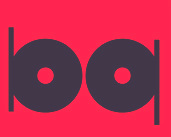 Bryansk, Russia-based cofounder in 2011 with Valery Zaveryaev of the Russian type foundry Gaslight.
Bryansk, Russia-based cofounder in 2011 with Valery Zaveryaev of the Russian type foundry Gaslight. Typefaces from 2011: Bad Script (Google Web Fonts: an informal hand-printed typeface). Typefaces from 2012: Quadratish Serif, Quadratish Solid, Rock Logo (a metal band font co-designed with Valery Zaveryaev), Delgado (an elegant tall and thin fashion mag typeface for Latin and Cyrillic), Teco, Teco Sans (an octagonal military typeface family), Teco Symbol, Teco Sans Stencil, Teco Serif, Wide Display and Wide Display Ribbon (unicase headline typefaces), Actio (a spurred inline typeface), Roz, Wary (a pop art typeface that won an award at Modern Cyrillic 2014), Typefaces from 2013: Delgado Sans, MNSTR Shadow and MNSTR Line (free inline typefaces), Gen (techno), Tesla (+Round). Typefaces from 2014: Sofya (a monoline script font, released by Gaslight). Typefaces from 2015: Aorta (a piano key stencil typeface), MxMy (Peignotian caps). Typefaces from 2016: Fada (all caps sans for titling), Barbecue (a circle-themed deco typeface first called BarBQ), Fada (by Roman Shchyukin), Pleinair, Rawer (sans, +stencil, +outline), Misty (by Valery Zaveryaev), Agio (by Valery Zaveryaev). Typefaces from 2019, done at his own new foundry Zerotoohero Design: Premium (for the Russian channel Premium), Shock Sans (a weathered typeface done for the Russian channel Shoking), Harvest (for the Russian restaurant Urojai), Grotesque (One, Two: for Plates Studio), Comedy (a custom cartoon font for Shandesign Studio). Typefaces at Zerotoohero, not identified with Roman Shchyukin: Lovely (by Shandesign, for the Russian channel Lubimoe), Wolf Sans (created for a Russian IT company). Behance link for Zerotoohero. [Google]
[MyFonts]
[More] ⦿
|
Zetafonts (or: Studio Kmzero, or: ZeroFont)
[Francesco Mistico Canovaro]

|
 Italian design firm in Firenze consisting of three graphic designers, Francesco Canovaro, Debora Manetti, and Cosimo Lorenzo Pancini. It has evolved into Italy's premier and most prolific type foundry. Canovaro's Behance link. Also called ZeroFont and Zetafonts, this type foundry exhales joy---in every design and presentation, the passion of the designers bubbles to the surface. Blending a delicious sense of humour and a great aesthetic taste, Zetafonts is a typographic delight. Their typefaces:
Italian design firm in Firenze consisting of three graphic designers, Francesco Canovaro, Debora Manetti, and Cosimo Lorenzo Pancini. It has evolved into Italy's premier and most prolific type foundry. Canovaro's Behance link. Also called ZeroFont and Zetafonts, this type foundry exhales joy---in every design and presentation, the passion of the designers bubbles to the surface. Blending a delicious sense of humour and a great aesthetic taste, Zetafonts is a typographic delight. Their typefaces: - Adlibitum (2018). A textura blackletter typeface family.
- Anaphora (2018). Anaphora is a contemporary serif typeface designed by Francesco Canovaro (roman), Cosimo Lorenzo Pancini (italic) and Andrea Tartarelli. It features a wedge serif design with nine weights from thin to heavy. Its wide counters and low x-height make it pleasant and readable at text sizes while the uncommon shapes make it strong and recognizable when used in display size. Anaphora covers Latin, Greek and Cyrillic.
- Aliens and Cows (2016). An ultra-condensed all aps sans family by Canovaro.
- Arturo (2018), by Francesco Canovaro.
- Atlantica (2017). A signage script family.
- Lightstrike (2016). A thin (and free) brush font by Canovaro.
- Byom (2016). A tweetware organic sans typeface family by Francesco Canovaro.
- Adlery (2016, +Cyrillic). A brush script by Cosimo Lorenzo Pancini.
- Adlibitum (2016). A blackletter typeface by Cosimo Lorenzo Pancini and Francesco Canovaro.
- Morbodoni (2016). A display didone by Cosimo Lorenzo Pancini and Francesco Canovaro.
- Altair (2016). A display sans by by Francesco Canovaro based on Digitalino.
- Aquawax (2015). A sans family by Canovaro and the Zetafonts team. Extended in 2019 to Aquawax Pro by Francesco Canovaro, Cosimo Lorenzo Pancini and Andrea Tartarelli.
- Armonioso (2014). A creamy connected signage script.
- A Day Without Sun (2014, by Cosimo Lorenzo Pancini).
- Another Shabby (2014, a primitive script by Francesco Canovaro).
- Antipasto (2007, by Matteo Di Iorio). A clean elegant sans by Canovaro.
- Arista (2007) and Arista 2.0 (2010). A simple rounded bold sans typeface designed by Francesco Canovaro and Adolfo Monti. In 2017, Francesco Canovaro updated these to Arista Pro.
- Arsenale White and Arsenale Blue (2009). Children's hands, done by Cosimo Lorenzo Pancini, Francesco Canovaro, Andrea Mi, Debora Manetti, Katiuscia Mari, and Jonathan Calugi.
- Beatrix Antiqua (2016, by Francesco Canovaro, Cosimo Lorenzo Pancini and Andrea Tartarelli). This humanist sans-serif typeface is part of the Beatrix family (Beatrix Nova, etc.) that takes its inspiration from the classic Roman monumental capital model. Its capitals are directly derived from the stone carvings in Florence's Santa Croce Cathedral. Beatrix keeps a subtle lapidary swelling at the terminals suggesting a glyphic serif, similar to Hermann Zapf's treatment in Optima. Some weights are free.
- Bimbo >(2018). A child emulation handwriting font developed as an extension and redesign of the original Arsenale White typeface created with italian illustrator Jonathan Calugi.
- Bistecca (2005). A bellissima extra-condensed serif font created for ego[n] 5 and for the cover of ego[n] 4.
- Braciola (2006). Monospaced and octagonal, with stencil styles added.
- Brushstrike (2015). By Canovaro.
- Byron (2006). Handwriting.
- In 2010, Canovaro designed the plumpish bubblegum typefaces Bubblebody Fat and Bubbleboddy Extra Light. These fonts were discontinued in 2016 and replaced by Bubbleboddy Neue.
- Bulletto (2015). A retro baseball script.
- Cibreo. A basic sans typeface by Canovaro and Monti.
- Cinematografica (2017). An ultra condensed small caps movie typeface used in the advertising campaign for Lucca Comics 2017 Festival. This film noir family features eight weights from thin to heavy with open type alternate glyphs and some full word ligatures.
- The rounded geometric sans family Cocomat (2015, Zetafonts, by Cosimo Lorenzo Pancini, Debora Manetti and Francesco Canovaro) was inspired by the style of the twenties and the visions of Italian futurists like Fortunato Depero, Giacomo Balla and Antonio Sant'Elia. Updated in 2019 as Cocomat Pro.
- Cocosignum (2017). Cocosignum Corsivo Italico and Cocosignum Maiuscoletto are both based on Italian art deco styles.
- Codec (2018) by Cosimo Lorenzo Pancini, Francesco Canovaro and Andrea Tartarelli is a geometric sans typeface family in which all terminal cuts are horiontal or vertical. See also Codec Pro (2019).
- Delizioso (2008). Art deco.
- Digitalino (2013).
- Docporn (comic book style).
- Duepuntozero Pro (2006-2008). A condensed rounded sans famly by Adolfo Monti and Francesco Canovaro. The Pro version was released in 2019.
- Filetto (2009). A sans modeled after DIN 1451 done by Canovaro, Debora Manetti and Katiuscia Mari.
- Florentia (2017). An 18-style lapidary typeface family influenced by the renaissance and luxury.
- In 2018, Debora Manetti and Francesco Canovaro designed the brush handwriting font Freehand Brush.
- Handvetica (2005). Arched.
- Happy Frush Zero (2014). A random note font.
- Happy Funghetto (2015). Fifties style lettering.
- Heading Pro (2017). A condensed sans typeface by Francesco Canovaro. Followed in 2018 by Heading Pro Ultra Compressed, Heading Pro Extended, and Heading Pro Text.
- Hello Script (2015). Curly and calligraphic.
- Modulo3 (2008). An artsy beauty.
- New Romantic (curly grunge).
- Panforte (2013) and Panforte Serif (2013): hand-drawn typefaces. Panforte Pro followed in 2017.
- Prozak. Consists of zProzak-Bold, zProzak and zProzakLight (2006). A basic sans typeface by Canovaro and Monti.
- Sala de Fiestas (2005-2006). Free download at OFL.
- Square80 (2009).
- Studio Gothic (2017, by Francesco Canovaro, Cosimo Lorenzo Pancini and Andrea Tartarelli) is an 8-style geometric sans family based on Alessandro Butti's geometric sans classic, Semplicita.
- Sugo (2007). By Canovaro and Monti.
- Taller (2009, ultra-condensed), Taller Evolution (2009), Tallest (2009, ultra-condensed).
- Targa Monospace. Inspired by license plate lettering.
- Targa (2002), TargaMS (2002), TargaMSHand (2002). Cosimo Lorenzo Pancini, who developed Targa in 2002, based his design on the peculiar sans serif monospace typeface with slightly rounded corners and a geometric, condensed skeleton that Italy had been using for its license plates. In 2022, Francesco Canovaro redesigned this font into a versatile multi-weight typeface, Targa Pro, which includes Targa Pro Mono (which keeps the original monospace widths), Targa Pro Roman (with proportional widths), both in five weights plus italics, the handmade version Targa Hand, and Targa Pro Stencil.
- Tutor (2006). Rectangular, pixelish---what I call a piano key font.
- Zerocalcare is a typeface family created for the branding of Lucca Comics & Games Festival 2016. It is based on the digitised handwriting of italian comic artist Zerocalcare, and it uses open type substitutions to mimick the flow of real handwriting. Free at Dafont.
- Double Bass (2018): A jazzy 4-style typeface family that pays tribute to Saul Bass's iconic hand lettering for Otto Preminger's The Man with the Golden Arm film title sequence and other movies, Bass's vibrating, almost brutal cut-out aestethics, and the cartoonish lettering and jazzy graphics of the fifties.
- Another Shabby (2018) is a brush script typeface family designed by Francesco Canovaro for Zetafonts with Cyrillic letters designed by Alina Golovan.
- Sugo Pro (2018, Francesco Canovaro, Andrea Tartarelli). It was designed in 2006 by Francesco Canovaro in two weights (regular and extralight) and later used by Cosimo Lorenzo Pancini as base inspiration for the design of the successful Zetafonts' Cocogoose Pro typeface. In 2018 the family was completely redesigned by Andrea Tartarelli, expanding the original glyph set to include Cyrillic and Greek and adding three extra weights and italics. The restored and revamped version is named Sugo Pro Classic. In 2020, Cosimo Pancini, Andrea Tartarelli and Mario De Libero drew the 60-style Cocogoose Pro Narrows family, which features many compressed typefaces as well as grungy letterpress versions.
- Extenda (2018) is a thin-to-wide grotesque advertising or movie credit family with some of the DNA of Impact or Compacta. By Francesco Canovaro and Andrea Tartarelli.
- In 2019, Blacker Sans (Francesco Canovaro, Andrea Tartarelli) and Blacker Pro (Cosimo Lorenzo Pancini and Andrea Tartarelli) were released. The 63-strong fashion mag powerhouse Blacker Sans Pro (Francesco Canovaro, Andrea Tartarelli) followed in 2020. Zetafonts writes: Blacker Pro is the revised and extended version of the original wedge serif type family designed by Cosimo Lorenzo Pancini and Andrea Tartarelli in 2017. Blacker was developed as a take on the style that Jeremiah Shoaf has defined as the "evil serif" genre: typefaces with high contrast, oldstyle or modern serif proportions and sharp, blade-like triangular serifs.
- The extreme wedge serif and reverse stress typeface family Blackest (2018, Andrea Tartarelli and Francesco Canovaro).
- In 2019, Cosimo Lorenzo Pancini, Francesco Canovaro and Andrea Tartarelli published the monolinear geometric rounded corner amputated "e" sans typeface family Cocogoose Classic and the condensed rounded monoline techno sans typeface family Iconic.
- Klein (2019) is (in their words) Zetafonts' love letter to the grandmother of all geometric sans typefaces, Futura. Starting from a dialogue with Paul Renner's iconic letterforms and proportions, Francesco Canovaro and Andrea Tartarelli decided to depart from its distinctive modernist shapes with slight humanist touches and grotesque solutions---with some design choices evoking the softness of humanist sans serifs like Gill Sans. The end result is a workhorse superfamily of 54 fonts with full coverage of Latin, Cyrillic and Greek. The original display-oriented family, developed in nine weights with matching italics (from the hairline thin to the sturdy black), has been paired with a text version (with slightly higher x-height, better readability and maximum legibility at small point size) and with a condensed version, to be used for space-saving display solutions in editorial and advertising formats. With a name that is both a nod to its humble functionality and an homage to French nouveau realiste artist Yves Klein, this typeface aims to become your next trusted companion in all your adventures in print, digital and motion design.
- Kitsch (2019, Francesco Canovaro, Andrea Tartarelli and Maria Chiara Fantini) mixes angular medieval elements and old style letterforms. Thicker (2020, by Francesco Canovaro and Andrea Tartarelli). They write: A geometric sans typeface on steroids, it was first designed in the muscular extrablack weight with the aesthetics of high-power dynamic typefaces used in sports communication, and then developed in the lighter weights where the shapes show some vintage-inspired proportions and the slightly squared look that nods to Novarese famous Eurostile, eponymous with retro-futurism..
- Stinger (2020, a 42-style reverse contrast family by Francesco Canovaro, Cosimo Pancini, Andrea Tartarelli and Maria Chiara Fantini).
- As part of the free font set Quarantype (2020), Francesco Canovaro designed Quarantype Chillout and Quarantype Sunshine. Sunshine Pro (2020, Zetafonts) was designed by Cosimo Lorenzo Pancini and Solenn Bordeau expanding the original Quarantype Sunshine design by Francesco Canovaro, which in turn was designed as a typeface for good vibes against Covid-19. Sunshine Pro is an experimental Clarendon-style font with variable contrast along the weight axis---contrast is reversed in light weight, minimized in the regular weight and peaks in the bold and heavy weights.
- Eastman (2020, by Francesco Canovaro and Andrea Tartarelli with help from Solenn Bordeau) is a 178-font geometric sans workhorse family with Bauhaus genes developed for maximum versatility both in display and text use, with a wide weight range and a solid monolinear design featuring a tall x-height. It comes with a two axis variable font (weight, italic angle). It was followed by the 46-style font Eastman Grotesque (2020, by Francesco Canovaro, Cosimo Pancini and Andrea Tartarelli), which comprises an interesting Eastman Grotesque Alternate subfamily with daring and in-your-face glyphs, and the 88-style Eastman Condensed (2021, by Francesco Canovaro, Cosimo Pancini and Andrea Tartarelli).
- Garbata (2020). A round typeface loosely based on Windsor and Cooper Black, having a variable type option that offers many weights. Between sans and serif.
- Bogart (2020, Francesco Canovaro and Andrea Tartarelli). An homage to the low-contrast oldstyle fat faces, like Cooper Black (Oswald Bruce Cooper, 1922), Windsor and Goudy Heavy Face (Frederic W. Goudy and Sol Hess, 1925-1932), and more recently, Bookman.
- Stadio Now (2020). A revival by the Zetafonts team of Aldo Novarese's Stadio (1974), a reverse contrast sans that was published only as a rub-on transfer typeface. It comes with a multi-axis variable font that greatly enlarges the design space.
- Amazing Slab (2021). A 20-style typeface family designed by Francesco Canovaro, Mario de Libero (who did the inline versions), Sofia Bandini and Andrea Tartarelli, developed from the Amazing Grotesk family designed by Cosimo Lorenzo Pancini. Characterized by outward-pointing top serifs, this typeface is designed for use in athletic lettering, logos and titling. Zetafonts writes: Mixing an Egyptian serif, low contrast approach with the curved endings and open shapes of humanist sans grotesques, it was developed to embody the energetic and friendly nature of the startup scene---a feeling of innovation, information and energy, with a desire for simplicity and straightforward communication. The basic design shapes for the font come from the strong personality of the extrabold letterforms drawn by Francesco Canovaro for his StartupItalia logo, that informed the display design of the four darkest weights (from medium to black).
- Coco Sharp (2021). A 62-style sans feast, and two variable fonts with variable x-height, by Francesco Canovaro, Cosimo Pancini and Andrea Tartarelli.
- Arsenica (2021). A 43-style decorative serif by Francesco Canovaro for Zetafonts, and developed by a design team that included Mario De Libero, Andrea Tartarelli and Cosimo Lorenzo Pancini. It comprises two variable fonts and subfamilies Display, Text, Alternate and Antiqua.
- Asgard (2021). A 72-strong experimental display sans superfamily with a 3-axis (weight, width, slant) variable font, designed by Francesco Canovaro, Andrea Tartarelli ans Mario De Libero.
- Heading Now (2021). A 160-strong titling font (+2 variable fonts) by Francesco Canovaro, Cosimo Pancini, Andrea Tartarelli and Mario De Libero that provides an enormous range of widths.
- Salad and Salad Interlock (2021-2022). These typefacea are based on vernacular signpainting, extending Debora Manetti's Sala de Fiestas.
- Bakemono (2021). Canovaro writes: the design space of fixed vs. proportional width, mixing the lessons of mechanical typewriter technology with the intuitions of eastern brush calligraphy. The name of the typeface comes from the Japanese shape-shifter monsters that could change their form freely between human and animal, and aptly describes the metamorphic nature of this wide superfamily coming in proportional, monospace and intermediate subfamilies. bakemono supports Latin, Cyrillic, Aarabic and kana, and comes with a variable font option.
Corporate typefaces were designed for Lucca Comics and Games, Digitalic Magazine, Kair, Unicoop, and Istituto Europeo di Design. Behance link. Zetafonts home page. View the Zetafonts library. Abstract Fonts link. I Love Typography link. MyFonts link. Type Department link. [Google]
[MyFonts]
[More] ⦿
|
Zeugler
[Reymund Schroeder]
|
 Award-winning German type designer, who co-founded Forgotten Shapes in 2017. NaN descibes him as a type Janus with a two-sided practice, one oriented towards the past as a meticulous archivist-historian, the other towards alternate history called Typographic Uchronias. His typefaces:
Award-winning German type designer, who co-founded Forgotten Shapes in 2017. NaN descibes him as a type Janus with a two-sided practice, one oriented towards the past as a meticulous archivist-historian, the other towards alternate history called Typographic Uchronias. His typefaces: - Tempel Grotesk (2021, Production Type). Tempel Grotesk takes inspiration from old wood types. It is a blocky black sans in four widths. He writes: All that ink creates a fantastically heavy page with rich texture popping through the counterforms.
- Lector FSL (2017, Forgotten Shapes). A text typeface family about which he writes: Lector FSL (originally named Lector Gewoehnlich and Lector Kursiv) is the digital rework of an original type design by Gert Wunderlich, drawn between 1963-1990. Lector was designed for, but never released by former Typoart (GDR). Published in cooperation with and permission of Gert Wunderlich.
- Friedlaender. After Elisabeth Friedlaender's Elizabeth (1934).
- Consul (with Stephan Müller). A revival of Wilhelm Woellmer's Consul (1903-1907).
- Polja (2013-2014). Polja won an award in the Latin category at the Morisawa Type Design Competition 2014.
- Edna (2016). He received an Honorable Mention in the Latin category for Edna in 2016 at the Morisawa Type Design Competition 2016. A revival of Schmale Fette Renaissance (Wilhelm Woellmer's Schriftgiesserei Berlin, ca. 1895).
- Edna Text (2017). A Victorian typeface that revives Halbfette Etienne (Schriftgiesserei Flinsch, 1908).
- Haiti. A revival of the wood type Dumbria (1885, Holztypenfabrik Sachs).
- Huber. A revival of the wood type Christina (1885, Holztypenfabrik Sachs).
- Zeit Tiemann Italic (2013). A custom font for Die Zeite.
- NaN Hyena (2022). He writes: NaN Hyena is a crisp look at the humanist sans sub-genre, conceived as a sculptural exercise. [...] Hyena started as an extrapolation of the work of 20th century calligrapher and type designer Hildegard Korger. [...] NaN Hyena challenges the idea of type hierarchies. It's thought as a mood spectrum, a subtle play between sharp and soft, as if the shifting light of the sun would cast different shadows on the same object throughout the day bringing familiarity and the unexpected within the same room. Call it Type Impressionism if you like.
[Google]
[More] ⦿
|


 131 (Barcelona and Lleida) is a collaborative project between Pau Llop and Esteve Padilla. Their typefaces include Equilibrio (2019: a bespoke typeface for Proyectos Euiamor and Museo del Prado) and La Pionera (2019: for Ajuntament de Barcelona). [
131 (Barcelona and Lleida) is a collaborative project between Pau Llop and Esteve Padilla. Their typefaces include Equilibrio (2019: a bespoke typeface for Proyectos Euiamor and Museo del Prado) and La Pionera (2019: for Ajuntament de Barcelona). [ Madrid (and before that, Lebanon)-based Arabic type designer who runs the Arab type news and blog site called Arabic Typography.
Madrid (and before that, Lebanon)-based Arabic type designer who runs the Arab type news and blog site called Arabic Typography. 

 2013:
2013: 
 [
[ ABC ETC INC. is a font and logo design service (est. 2018) based in New York City, run by Nazareno Crea. Nazareno Crea (b. Cinquefrondi near Reggio Calabria, 1983) is a Brooklyn, NY-based book and type designer, who studied at ECAL/University of Art and Design Lausanne (class of 2006) and the Royal College of Art in London (class of 2010). His typefaces:
ABC ETC INC. is a font and logo design service (est. 2018) based in New York City, run by Nazareno Crea. Nazareno Crea (b. Cinquefrondi near Reggio Calabria, 1983) is a Brooklyn, NY-based book and type designer, who studied at ECAL/University of Art and Design Lausanne (class of 2006) and the Royal College of Art in London (class of 2010). His typefaces:  [
[ Adicto Multichannel Agency is a studio located in Sankt Gallen, Switzerland. For the new restaurant Werk 1 in a renovated industrial building built in 1900 Adicto created the new typeface Werk1 (2014). For this typeface, they used the art nouveau font Quaint as a model. The font was developed by
Adicto Multichannel Agency is a studio located in Sankt Gallen, Switzerland. For the new restaurant Werk 1 in a renovated industrial building built in 1900 Adicto created the new typeface Werk1 (2014). For this typeface, they used the art nouveau font Quaint as a model. The font was developed by  Fatnobrain was Adrien Midzic's design studio in Paris. Born in 1982, he co-founded
Fatnobrain was Adrien Midzic's design studio in Paris. Born in 1982, he co-founded  Andrej Dienes is a type designer in Bratislava, Slovakia. He set up the commercial type foundry Adtypo in 2013. Creator of these typefaces:
Andrej Dienes is a type designer in Bratislava, Slovakia. He set up the commercial type foundry Adtypo in 2013. Creator of these typefaces:  Graphic designer in Trinidad, who co-founded Unqueue, a mobile app designed to improve retail experiences in the Caribbean. Past clients include Google, RISD, the Government of Trinidad and Tobago, and the Caribbean Mental Health Foundation. He designed a few, mostly custom, typefaces. These include Crispy (2020: an angular design started in 2017 that has mushroomed into an 8-axis variable font, built based on David Berlow's proposal for parametric variations, combining axes such as X-Transparency, X-Opacity, and Y-Opacity to generate masters for styles such as widths, weights, grades, and optical sizes; it is planned as a Google Font), and Ephemeral (2018: a layered color font based on the lettering style of Bruce Cayonne). [
Graphic designer in Trinidad, who co-founded Unqueue, a mobile app designed to improve retail experiences in the Caribbean. Past clients include Google, RISD, the Government of Trinidad and Tobago, and the Caribbean Mental Health Foundation. He designed a few, mostly custom, typefaces. These include Crispy (2020: an angular design started in 2017 that has mushroomed into an 8-axis variable font, built based on David Berlow's proposal for parametric variations, combining axes such as X-Transparency, X-Opacity, and Y-Opacity to generate masters for styles such as widths, weights, grades, and optical sizes; it is planned as a Google Font), and Ephemeral (2018: a layered color font based on the lettering style of Bruce Cayonne). [ French digital type foundry, est. 2007, located in Lille. The type coop includes Stéphane Meurice, Xavier Meurice, Sébastien Delobel (the three founders), as well as Jérémie Perrin and Baptiste Servais.
French digital type foundry, est. 2007, located in Lille. The type coop includes Stéphane Meurice, Xavier Meurice, Sébastien Delobel (the three founders), as well as Jérémie Perrin and Baptiste Servais.  Fonderie Nordik was a French type foundry in Wasquehal near Lille, which published some fonts such as
Fonderie Nordik was a French type foundry in Wasquehal near Lille, which published some fonts such as  In 2012, Parisian graphic designers Thomas Bizzarri and Alain Rodriguez co-designed Feu (a sans face) and Thermidor (a revival based on the work of French type designer Charles Beaudoire (end of the nineteenth century), custom designed for the Feu Sacré books). Feu is an original typeface designed for the visual identity and the books of the publishing house Le Feu Sacré. [
In 2012, Parisian graphic designers Thomas Bizzarri and Alain Rodriguez co-designed Feu (a sans face) and Thermidor (a revival based on the work of French type designer Charles Beaudoire (end of the nineteenth century), custom designed for the Feu Sacré books). Feu is an original typeface designed for the visual identity and the books of the publishing house Le Feu Sacré. [ Paris-based designer of the free comic book typeface ACL (2020) and the commissioned typeface Club Med Pictograms (2017). [
Paris-based designer of the free comic book typeface ACL (2020) and the commissioned typeface Club Med Pictograms (2017). [ [
[ [
[ Graduate of Moscow University of Printing Arts in 2006 where she studied under Alexander Tarbeev. She teaches type design and typography there. In 2007, her book for Russian students on typography was published (English title: Alive Typography). She received many awards for her work and is a frequent speaker at type design conferences. In particular, she received the prestigious Prix Charles Peignot in 2013. After that she became Type Director at ParaType in Moscow.
Graduate of Moscow University of Printing Arts in 2006 where she studied under Alexander Tarbeev. She teaches type design and typography there. In 2007, her book for Russian students on typography was published (English title: Alive Typography). She received many awards for her work and is a frequent speaker at type design conferences. In particular, she received the prestigious Prix Charles Peignot in 2013. After that she became Type Director at ParaType in Moscow.  The
The  Malmö, Sweden-based designer, who set up Kanon Foundry in 2019 together with
Malmö, Sweden-based designer, who set up Kanon Foundry in 2019 together with  Designer from Siberia who graduated from Ladislav Sutnar Faculty of Design and Art, University of West Bohemia and is now based in Prague, Czechia. Type, graphic and motion graphics designer who created these typefaces:
Designer from Siberia who graduated from Ladislav Sutnar Faculty of Design and Art, University of West Bohemia and is now based in Prague, Czechia. Type, graphic and motion graphics designer who created these typefaces:  Since 2003,
Since 2003,  [
[ French type and graphic designer (b. 1974) who lives in Asnières-sur-Seine and works in Paris. Educated at Ecole Estienne, Paris, and ANRT, Nancy, he designs custom-made typefaces and has released several commercial fonts including
French type and graphic designer (b. 1974) who lives in Asnières-sur-Seine and works in Paris. Educated at Ecole Estienne, Paris, and ANRT, Nancy, he designs custom-made typefaces and has released several commercial fonts including  Graduate of the Rietveld Academie in Amsterdam. Born in Syracuse, Sicily, he spent half of his life in New York City, and studied for four years in The Netherlands. He worked in Lithuania with a group called Alfa60, and is now based in Turin.
Graduate of the Rietveld Academie in Amsterdam. Born in Syracuse, Sicily, he spent half of his life in New York City, and studied for four years in The Netherlands. He worked in Lithuania with a group called Alfa60, and is now based in Turin.  [
[ [
[ Alice Savoie is an independent typeface designer and researcher, b. 1984, based in Lyon. She studied graphic design and typography in Paris at Ecole Duperré and Ecole Estienne, and in 2006 graduated from the MA in typeface design from the University of Reading (UK). In 2014 she was awarded a PhD from the University of Reading for the research she carried out in collaboration with the Musée de l'imprimerie in Lyon (France). Her research focuses on the design of typeface in France, the UK and the USA in the postwar period, and for phototypesetting technologies in particular: International cross-currents in typeface design: France, Britain, and the US in the phototypesetting era, 1949-1975. She collaborates with international type foundries such as Monotype, Process Type Foundry, and Tiro Typeworks, and specializes in the design and development of typefaces for editorial and identity purposes. She also designs multi-script type families, including Latin, Greek, Cyrillic and Hebrew. She intends to sell her typefaces via
Alice Savoie is an independent typeface designer and researcher, b. 1984, based in Lyon. She studied graphic design and typography in Paris at Ecole Duperré and Ecole Estienne, and in 2006 graduated from the MA in typeface design from the University of Reading (UK). In 2014 she was awarded a PhD from the University of Reading for the research she carried out in collaboration with the Musée de l'imprimerie in Lyon (France). Her research focuses on the design of typeface in France, the UK and the USA in the postwar period, and for phototypesetting technologies in particular: International cross-currents in typeface design: France, Britain, and the US in the phototypesetting era, 1949-1975. She collaborates with international type foundries such as Monotype, Process Type Foundry, and Tiro Typeworks, and specializes in the design and development of typefaces for editorial and identity purposes. She also designs multi-script type families, including Latin, Greek, Cyrillic and Hebrew. She intends to sell her typefaces via 
 [
[ Brazilian graphic designer at Plau (Rio de Janeiro, Brazil), who lives in Köln, Germany.
Brazilian graphic designer at Plau (Rio de Janeiro, Brazil), who lives in Köln, Germany.  Vilnius-based designer of
Vilnius-based designer of  [
[ Graphic and type designer in Monterrey, Mexico. In 2012, he created the rounded monoline sans typeface
Graphic and type designer in Monterrey, Mexico. In 2012, he created the rounded monoline sans typeface  Copenhagen-based designer of the rounded sans headline typeface
Copenhagen-based designer of the rounded sans headline typeface  Aka Ando Karambo. Illustrator and graphic designer in Düsseldorf, Germany, who designed Samson (2013) and Aquazoo (2014: a rounded sans and paperclip typeface rolled into one; designed together with g31 for the Aquazoo Löbbecke Museum Branding).
Aka Ando Karambo. Illustrator and graphic designer in Düsseldorf, Germany, who designed Samson (2013) and Aquazoo (2014: a rounded sans and paperclip typeface rolled into one; designed together with g31 for the Aquazoo Löbbecke Museum Branding).  [
[ [
[ Born in Barcelona in 1962,
Born in Barcelona in 1962,  Andrew Byrom was born in Liverpool, England in 1971. After Graduating from the University of East London in 1996 he opened his own design studio and worked for various clients including Penguin Books, The British Academy of Composers and Songwriters, The Industrial Design Centre, Time Out Online and The Guardian Newspaper. Around this time he also began teaching graphic design at The University of Luton and Central Saint. Martins. Byrom moved to the USA in 2000 to teach at Northern Illinois University in DeKalb, IL. He has recently been commissioned to design typefaces and type treatments for Elle Decoration, The New York Times Magazine, McGraw-Hill, and Turner Classic Movies. In 2006 he moved to Long Beach to take up an Associate Professor position at California State University, where he is currently the Area Head of the Graphic Design Department. He created the experimental typeface
Andrew Byrom was born in Liverpool, England in 1971. After Graduating from the University of East London in 1996 he opened his own design studio and worked for various clients including Penguin Books, The British Academy of Composers and Songwriters, The Industrial Design Centre, Time Out Online and The Guardian Newspaper. Around this time he also began teaching graphic design at The University of Luton and Central Saint. Martins. Byrom moved to the USA in 2000 to teach at Northern Illinois University in DeKalb, IL. He has recently been commissioned to design typefaces and type treatments for Elle Decoration, The New York Times Magazine, McGraw-Hill, and Turner Classic Movies. In 2006 he moved to Long Beach to take up an Associate Professor position at California State University, where he is currently the Area Head of the Graphic Design Department. He created the experimental typeface  [
[ Russian designer of the rounded Latin / Cyrillic sans typeface family Inglobal (2014), together with Denis Davydov and Evgeny Yurtaev. This typeface was either commissioned for
Russian designer of the rounded Latin / Cyrillic sans typeface family Inglobal (2014), together with Denis Davydov and Evgeny Yurtaev. This typeface was either commissioned for  Graphic designer and illustrator in Yerevan, Armenia. Creator of a
Graphic designer and illustrator in Yerevan, Armenia. Creator of a  Anne Ulku is an established designer based in Minneapolis, MN. She graduated from Minneapolis College of Art&Design in 2007. Her typefaces include
Anne Ulku is an established designer based in Minneapolis, MN. She graduated from Minneapolis College of Art&Design in 2007. Her typefaces include  [
[ [
[ Mexico City-based designer, b. Huauchinango. He studied graphic design at Universidad del Valle de Mexico in Queretaro City, and received a diploma in corporate identity from LISAVA in Barcelona in 2005. He opened his own graphic design studio in Mexico City in 2016.
Mexico City-based designer, b. Huauchinango. He studied graphic design at Universidad del Valle de Mexico in Queretaro City, and received a diploma in corporate identity from LISAVA in Barcelona in 2005. He opened his own graphic design studio in Mexico City in 2016.  [
[ In September 2014, Apple announced the imminent arrival of the Apple Watch, which came with a new neo-grotesque sans-serif typeface developed in house. It has a legible, open DIN-like look, but the name of its designer was not released. The 35 fonts are grouped into subfamilies San Francisco Text and San Francisco Display, and are available to designers of Apple Watch applications
In September 2014, Apple announced the imminent arrival of the Apple Watch, which came with a new neo-grotesque sans-serif typeface developed in house. It has a legible, open DIN-like look, but the name of its designer was not released. The 35 fonts are grouped into subfamilies San Francisco Text and San Francisco Display, and are available to designers of Apple Watch applications  Danish graphic and type designer in Copenhagen, who studied at The Royal Danish Academy of Fine Arts, School of Design (2010-2016) and The Royal Academy of Art, The Hague (2014-15). In 2020, he set up Approximate Type. His typefaces:
Danish graphic and type designer in Copenhagen, who studied at The Royal Danish Academy of Fine Arts, School of Design (2010-2016) and The Royal Academy of Art, The Hague (2014-15). In 2020, he set up Approximate Type. His typefaces:  [
[ Måns Grebäck (Aring Typeface, Örebro, Sweden) is a prolific Swedish designer (b. Lindesberg, Sweden, 1990), who lives in Borlänge, Sweden. Måns Grebäck has a bachelor's degree in graphic design from the University of Dalarna (2012). In 2010, he went commercial, and started selling fonts through
Måns Grebäck (Aring Typeface, Örebro, Sweden) is a prolific Swedish designer (b. Lindesberg, Sweden, 1990), who lives in Borlänge, Sweden. Måns Grebäck has a bachelor's degree in graphic design from the University of Dalarna (2012). In 2010, he went commercial, and started selling fonts through  Andrew Footit (b. 1984) runs his own type foundry in Johannesburg, South Africa. He is also known as Arkitype. Until 2014, his type studio was called Virtue Creative and before that, Virtue84. In 2017, he set up
Andrew Footit (b. 1984) runs his own type foundry in Johannesburg, South Africa. He is also known as Arkitype. Until 2014, his type studio was called Virtue Creative and before that, Virtue84. In 2017, he set up  Head of Cina Associates, Michael Cina (Minneapolis, MN), has started many a typographic and graphic design enterprise in his long career. Associated Typographics was founded in 2012.
Head of Cina Associates, Michael Cina (Minneapolis, MN), has started many a typographic and graphic design enterprise in his long career. Associated Typographics was founded in 2012.  Vienna, Austria-based design studio, est. 2002 by Peter Olschinsky and Verena Weiss. They published the type family Ato (2012), which has
Vienna, Austria-based design studio, est. 2002 by Peter Olschinsky and Verena Weiss. They published the type family Ato (2012), which has  Design studio in Gijon, Spain, set up by Asturian designers Raul Garcia del Pomar and Ismael Gonzalez. One of them studied graphic design in Salamanca. Atipo produced the donationware typeface
Design studio in Gijon, Spain, set up by Asturian designers Raul Garcia del Pomar and Ismael Gonzalez. One of them studied graphic design in Salamanca. Atipo produced the donationware typeface  [
[ Ayako Ito is based in New York City and Tokyo, and graduated from Type@Cooper. She creates brand identities, books & magazines, typefaces, and illustratis in the fields of art, lifestyle and fashion. Ayako Ito set up
Ayako Ito is based in New York City and Tokyo, and graduated from Type@Cooper. She creates brand identities, books & magazines, typefaces, and illustratis in the fields of art, lifestyle and fashion. Ayako Ito set up  Babelfont is a design studio located in Paris and Casablanca that was co-founded by Gia Tran and Brahim Boucheikha. They were later joined by Salaheddine Bellizi. Their typefaces, mostly bespoke, include:
Babelfont is a design studio located in Paris and Casablanca that was co-founded by Gia Tran and Brahim Boucheikha. They were later joined by Salaheddine Bellizi. Their typefaces, mostly bespoke, include:  Type designer and kinetic graphic designer born in Tehran, Iran (1985). He holds a BA in graphic design with emphasis on typography from the University of Tehran. Since 2005 he has been working with advertising agencies and specializes in graphical animation. Winner at the
Type designer and kinetic graphic designer born in Tehran, Iran (1985). He holds a BA in graphic design with emphasis on typography from the University of Tehran. Since 2005 he has been working with advertising agencies and specializes in graphical animation. Winner at the  Jacques Le Bailly (b. Thionville, France, 1975) is the "Baron von Fonthausen", located in Den Haag, and the self-proclaimed German-French specialist in the fields of both beer and type design. From 1999 to 2003, Le Bailly lived in Berlin, working at Moniteurs graphic design studio and as an independent graphic designer. Having returned to the Netherlands in 2003, Jacques did type production work for The Enschedé Font Foundry. He is now a typographic designer at Bau Winkel's studio in The Hague. He worked for type foundries like Lineto, Monotype, House Industries, and Bold Monday, as well as on custom projects for several brand design agencies. He has been teaching at the WdKA art academy in Rotterdam and Sint Joost in Den Bosch.
Jacques Le Bailly (b. Thionville, France, 1975) is the "Baron von Fonthausen", located in Den Haag, and the self-proclaimed German-French specialist in the fields of both beer and type design. From 1999 to 2003, Le Bailly lived in Berlin, working at Moniteurs graphic design studio and as an independent graphic designer. Having returned to the Netherlands in 2003, Jacques did type production work for The Enschedé Font Foundry. He is now a typographic designer at Bau Winkel's studio in The Hague. He worked for type foundries like Lineto, Monotype, House Industries, and Bold Monday, as well as on custom projects for several brand design agencies. He has been teaching at the WdKA art academy in Rotterdam and Sint Joost in Den Bosch.  Barcelona-based foundry involved in custom font work, est. 2005. Original fonts: Inclusive (2007), Urbanium (2005, a bold display face), Handwritten, Eixample (2008, octagonal and rounded), Screech (2008) and Begyptienne. Modified fonts (or re-fonts in their words) include Le Grand Palais (stencil, for La Force de l'Art, Paris, 2006), BeTV (for a Belgian TV channel), and VijfTV (a modification of Chalet for a Flemish TV station). Their custom types include
Barcelona-based foundry involved in custom font work, est. 2005. Original fonts: Inclusive (2007), Urbanium (2005, a bold display face), Handwritten, Eixample (2008, octagonal and rounded), Screech (2008) and Begyptienne. Modified fonts (or re-fonts in their words) include Le Grand Palais (stencil, for La Force de l'Art, Paris, 2006), BeTV (for a Belgian TV channel), and VijfTV (a modification of Chalet for a Flemish TV station). Their custom types include  Bogota, Colombia-based outfit, est. 2017 by Jason Guzman, Sebastian Castellanos and Federico Parra. Type designers associated with Bastardatype in 2022 included Oscar Guerrero, Julian Moncada and Fer Cozzi. Sebastian Castellanos graduated from the MATD program at the University of Reading in 2015. His graduation project was
Bogota, Colombia-based outfit, est. 2017 by Jason Guzman, Sebastian Castellanos and Federico Parra. Type designers associated with Bastardatype in 2022 included Oscar Guerrero, Julian Moncada and Fer Cozzi. Sebastian Castellanos graduated from the MATD program at the University of Reading in 2015. His graduation project was  Eran Bacharach (Bee Creations) created
Eran Bacharach (Bee Creations) created  Graduate of the type design program at the University of Reading, who joined House Industries (Wilmington, DE) in 2006 to work as a typeface designer, director, and developer. He also worked with Ken Botnick at
Graduate of the type design program at the University of Reading, who joined House Industries (Wilmington, DE) in 2006 to work as a typeface designer, director, and developer. He also worked with Ken Botnick at  [
[ Creative art direction studio in Hamburg, Germany. They created the corporate typeface family Wempe in Antiqua and Grotesque styles. The fonts are called GDW Antiqua and GDW Grotesque (2015).
Creative art direction studio in Hamburg, Germany. They created the corporate typeface family Wempe in Antiqua and Grotesque styles. The fonts are called GDW Antiqua and GDW Grotesque (2015). 

 Type foundry in Paris, est. 2016 by Jérémie Hornus, who is the design lead. Type designers associated with Black Foundry include Alisa Nowak and Ilya Naumoff. They initially bought the font collection of FontYou. Typefaces not included in the original FontYou collection:
Type foundry in Paris, est. 2016 by Jérémie Hornus, who is the design lead. Type designers associated with Black Foundry include Alisa Nowak and Ilya Naumoff. They initially bought the font collection of FontYou. Typefaces not included in the original FontYou collection:  Brazilian type designer Daniel Sabino de Souza studied under Laura Meseguer at the Eina-Escuela Superior de Disseny in Barcelona. His foundry in Sao Paulo is called Blackletra (est. 2012). He has taught type design at IED/Sao Paulo.
Brazilian type designer Daniel Sabino de Souza studied under Laura Meseguer at the Eina-Escuela Superior de Disseny in Barcelona. His foundry in Sao Paulo is called Blackletra (est. 2012). He has taught type design at IED/Sao Paulo.  Blondina lived and worked in Martinique, France for eight years. She graduated in 1999 from Insitut régional d'art visuel de la Martinique (IRAVM). Blondina founded Atelier Elms in Cave Hill, Barbados, in 2002. Her clients can be found in the United States, the British Virgin Islands, Martinique, Dominica and Barbados. She returned to settle in Barbados in November 2003.
Blondina lived and worked in Martinique, France for eight years. She graduated in 1999 from Insitut régional d'art visuel de la Martinique (IRAVM). Blondina founded Atelier Elms in Cave Hill, Barbados, in 2002. Her clients can be found in the United States, the British Virgin Islands, Martinique, Dominica and Barbados. She returned to settle in Barbados in November 2003.  British designer of these typefaces:
British designer of these typefaces:  Bold Monday is an independent font foundry established by Paul van der Laan and Pieter van Rosmalen and based in Eindhoven, The Netherlands (and before that, The Hague). Pieter van Rosmalen (Eindhoven, The Netherlands) studied advertising and graphic design at Sint Lucas in Boxtel and graduated from the postgraduate Type & Media program at the Royal Academy of Art (KABK) in The Hague in 2002. He runs Bold Monday's Eindhoven office.
Bold Monday is an independent font foundry established by Paul van der Laan and Pieter van Rosmalen and based in Eindhoven, The Netherlands (and before that, The Hague). Pieter van Rosmalen (Eindhoven, The Netherlands) studied advertising and graphic design at Sint Lucas in Boxtel and graduated from the postgraduate Type & Media program at the Royal Academy of Art (KABK) in The Hague in 2002. He runs Bold Monday's Eindhoven office.  Lucas Descroix is graphic and type designer based in France. After researching at the National Institute for Typographic Research in Nancy, France, and graphic design degrees at Ecole Estienne (2012) and at HEAR (Haute Ecole des Arts du Rhin) in Strasbourg (2015, Masters), he started designing typefaces, books, posters and visual identities. His typefaces:
Lucas Descroix is graphic and type designer based in France. After researching at the National Institute for Typographic Research in Nancy, France, and graphic design degrees at Ecole Estienne (2012) and at HEAR (Haute Ecole des Arts du Rhin) in Strasbourg (2015, Masters), he started designing typefaces, books, posters and visual identities. His typefaces:  Parisian designer of these fonts:
Parisian designer of these fonts:  Borutta (or Duce Type) is the creative studio of über-talented Warsaw-based designer Mateusz Machalski (b. 1989), a graduate of Wydziale Grafiki ASP in 2014, and of Warsaw Academy of Fine Arts. His oeuvre is simply irresistible, charming and a worthy representative of the Polish poster style---witness Alergia (2016), Magiel Pro (2017) and Madiso (2017).
Borutta (or Duce Type) is the creative studio of über-talented Warsaw-based designer Mateusz Machalski (b. 1989), a graduate of Wydziale Grafiki ASP in 2014, and of Warsaw Academy of Fine Arts. His oeuvre is simply irresistible, charming and a worthy representative of the Polish poster style---witness Alergia (2016), Magiel Pro (2017) and Madiso (2017).  Alberto Romanos is a Zaragoza, Spain-based type designer who is co-located in London. First he founded the type foundry
Alberto Romanos is a Zaragoza, Spain-based type designer who is co-located in London. First he founded the type foundry  Bric Type is a typography consultant company based in Brazil and The Netherlands, run by
Bric Type is a typography consultant company based in Brazil and The Netherlands, run by 
 [
[ [
[ Graphic and type designer from Portugal who studied at the University of Algarve. He created Double Typeface (2012, outlined caps), Memoria (2013, a modular typeface done with Joao Miranda), Big (2013, a headline sans done with Joao Miranda), Silo (2013), Mutant Sans Sense (2014, made at Burocratik), Angles (2015, a shadow typeface), Arquivo Typeface (2015, a set of custom condensed industrial sans typefaces done for Terry Allen), Nomada Typeface (2015, also made at Burocratik).
Graphic and type designer from Portugal who studied at the University of Algarve. He created Double Typeface (2012, outlined caps), Memoria (2013, a modular typeface done with Joao Miranda), Big (2013, a headline sans done with Joao Miranda), Silo (2013), Mutant Sans Sense (2014, made at Burocratik), Angles (2015, a shadow typeface), Arquivo Typeface (2015, a set of custom condensed industrial sans typefaces done for Terry Allen), Nomada Typeface (2015, also made at Burocratik).  Mauro Paolozzi (b. 1975) studied at Luzern School of Art and Design and graduated from the Royal Academy of Art in The Hague in 2000. After completing the postgraduate class Type & Media (2000-2001), he maintained a platform for audio and visual art in The Hague (2001-2006). He has also been teaching at Fachklasse Grafik in Luzern since 2001. At the Swiss type foundry
Mauro Paolozzi (b. 1975) studied at Luzern School of Art and Design and graduated from the Royal Academy of Art in The Hague in 2000. After completing the postgraduate class Type & Media (2000-2001), he maintained a platform for audio and visual art in The Hague (2001-2006). He has also been teaching at Fachklasse Grafik in Luzern since 2001. At the Swiss type foundry  Graphic design bureau in Oslo. In 2015, Ludvig Bruneau Rossow created the geometric sans titling typeface BB Perfume exclusively for Formulae Perfume.
Graphic design bureau in Oslo. In 2015, Ludvig Bruneau Rossow created the geometric sans titling typeface BB Perfume exclusively for Formulae Perfume.  Bureau Brut was founded in 2015 by Julia Joffre, Yoann Minet and Camille Prandi. In 2017 Bureau Brut opened up Extrabrutshop to sell their typefaces. Both are located in Montreuil, France. The original collection of typefaces were all done by
Bureau Brut was founded in 2015 by Julia Joffre, Yoann Minet and Camille Prandi. In 2017 Bureau Brut opened up Extrabrutshop to sell their typefaces. Both are located in Montreuil, France. The original collection of typefaces were all done by  Graphic designer in Sydney, Australia. In 2015, he spruced up the old corporate typeface MC Saatchi. [
Graphic designer in Sydney, Australia. In 2015, he spruced up the old corporate typeface MC Saatchi. [ During her studies in Stavanger, Norway, Camilla Høgemark created the bilined typeface Futuristic Font (2014) and as a student in Brisbane, Australia, she created the trilined custom typeface Tres Kokks Sportifs (2016).
During her studies in Stavanger, Norway, Camilla Høgemark created the bilined typeface Futuristic Font (2014) and as a student in Brisbane, Australia, she created the trilined custom typeface Tres Kokks Sportifs (2016).  Carles Rodrigo (Mucho) won a D&AD 2011 award in the typeface design competition for his
Carles Rodrigo (Mucho) won a D&AD 2011 award in the typeface design competition for his  Graphic designer in Rio de Janeiro associated with Plau Design. At Miami Ad School, as a student, he created Minimal Fraktur (2015). In 2018, he designed the corporate art deco typeface Chez Lalu 70. In 2019, he co-designed Muda, a corporate typeface for the fashion brand Oficina Muda with Ana Laura Ferraz, Gabriel Menezes and Rodrigo Saiani. In 2020, still at Plau, he designed the custom all caps sports company typeface Brio. With Rodrigo Saiani, Carlos Mignot designed the video game font family (+stencil, +Cyrillic) either called Killing Sans or Nine to Five (2020). Still in 2020, Mignot designed the flared Koch Antiqua-style custom typeface Xilo.
Graphic designer in Rio de Janeiro associated with Plau Design. At Miami Ad School, as a student, he created Minimal Fraktur (2015). In 2018, he designed the corporate art deco typeface Chez Lalu 70. In 2019, he co-designed Muda, a corporate typeface for the fashion brand Oficina Muda with Ana Laura Ferraz, Gabriel Menezes and Rodrigo Saiani. In 2020, still at Plau, he designed the custom all caps sports company typeface Brio. With Rodrigo Saiani, Carlos Mignot designed the video game font family (+stencil, +Cyrillic) either called Killing Sans or Nine to Five (2020). Still in 2020, Mignot designed the flared Koch Antiqua-style custom typeface Xilo.  [
[ Carrois Type Design (Berlin, Germany) started up officially ca. 2010, although Ralph du Carrois has been designing typefaces since ca. 2002. This dynamic company in Germany has three art directors, Jenny du Carrois, Anja Meiners and Botjo Nikoltchev. All three also design typefaces, as well as Adam Twardoch, Andreas Eigendorf and Ralph du Carrois himself. The company specializes in custom type.
Carrois Type Design (Berlin, Germany) started up officially ca. 2010, although Ralph du Carrois has been designing typefaces since ca. 2002. This dynamic company in Germany has three art directors, Jenny du Carrois, Anja Meiners and Botjo Nikoltchev. All three also design typefaces, as well as Adam Twardoch, Andreas Eigendorf and Ralph du Carrois himself. The company specializes in custom type.  [
[
 [
[ [
[ With just one name (the other one was lost in an accident!), Chester, the type designer, was born in Montreal in 1971. In 1995 Chester moved to Chicago to work with Rick Valicenti and eventually become a partner in his digital type foundry, Thirstype. In 2004, he started up the type coop
With just one name (the other one was lost in an accident!), Chester, the type designer, was born in Montreal in 1971. In 1995 Chester moved to Chicago to work with Rick Valicenti and eventually become a partner in his digital type foundry, Thirstype. In 2004, he started up the type coop  Chiharu Tanaka was born and raised in Japan. She completed her Bachelor's degree of Textile Design in Tokyo and worked at design companies for a few years. She subsequently received her MFA in Graphic Design from the Academy of Art University in San Francisco in 2009, and remained in San Francisco area ever since. She worked as a graphic and type designer for John McNeil Studio (2009-2010), Landor Associates (2009-2010), Psy/Ops (2010-present) and Morisawa (2016-present). Her typefaces:
Chiharu Tanaka was born and raised in Japan. She completed her Bachelor's degree of Textile Design in Tokyo and worked at design companies for a few years. She subsequently received her MFA in Graphic Design from the Academy of Art University in San Francisco in 2009, and remained in San Francisco area ever since. She worked as a graphic and type designer for John McNeil Studio (2009-2010), Landor Associates (2009-2010), Psy/Ops (2010-present) and Morisawa (2016-present). Her typefaces:  Creative Director for Interbrand Australia. For Melbourne Theatre Company (MTC) he created
Creative Director for Interbrand Australia. For Melbourne Theatre Company (MTC) he created  [
[ [
[ Tibor Szikora is a Budapest, Hungary-based type designer specializing in custom typefaces and lettering. He runs Cinketype. His typefaces:
Tibor Szikora is a Budapest, Hungary-based type designer specializing in custom typefaces and lettering. He runs Cinketype. His typefaces:  Colophon Foundry was a London and Los Angeles-based digital type foundry established in 2009. Its members comprised Benjamin Critton (US), Edd Harrington (UK), and Anthony Sheret (UK). The foundry's commissioned work in type design was complemented by independent and interdependent initiatives in editorial design, publishing, curation, and pedagogy. It grew out of the Brighton-based design studio, The Entente (Anthony Sheret&Edd Harrington) in April 2009. Benjamin Critton (Brooklyn, NY) joined them later. In December 2023, it was
Colophon Foundry was a London and Los Angeles-based digital type foundry established in 2009. Its members comprised Benjamin Critton (US), Edd Harrington (UK), and Anthony Sheret (UK). The foundry's commissioned work in type design was complemented by independent and interdependent initiatives in editorial design, publishing, curation, and pedagogy. It grew out of the Brighton-based design studio, The Entente (Anthony Sheret&Edd Harrington) in April 2009. Benjamin Critton (Brooklyn, NY) joined them later. In December 2023, it was  Foundry, est. 2009 or 2010 by Paul Barnes (London and New York) and Christian Schwartz (New York). Their own blurb: Commercial Type is a joint venture between Paul Barnes and Christian Schwartz, who have collaborated since 2004 on various typeface projects, most notably the award winning Guardian Egyptian. The company publishes retail fonts developed by Schwartz and Barnes, their staff, and outside collaborators, and also represents the two when they work together on typedesign projects. Following the redesign of The Guardian, as part of the team headed by Mark Porter, Schwartz and Barnes were awarded the Black Pencil from the D&AD. The team were also nominated for the Design Museum's Designer of the Year prize. In September 2006, Barnes and Schwartz were named two of the 40 most influential designers under 40 in Wallpaper.
Foundry, est. 2009 or 2010 by Paul Barnes (London and New York) and Christian Schwartz (New York). Their own blurb: Commercial Type is a joint venture between Paul Barnes and Christian Schwartz, who have collaborated since 2004 on various typeface projects, most notably the award winning Guardian Egyptian. The company publishes retail fonts developed by Schwartz and Barnes, their staff, and outside collaborators, and also represents the two when they work together on typedesign projects. Following the redesign of The Guardian, as part of the team headed by Mark Porter, Schwartz and Barnes were awarded the Black Pencil from the D&AD. The team were also nominated for the Design Museum's Designer of the Year prize. In September 2006, Barnes and Schwartz were named two of the 40 most influential designers under 40 in Wallpaper.  [
[ Art director, designer and consultant who grew up in Colorado and is now based in Heber City (was: Park City and before that Salt Lake City), UT. In 2021, he joined
Art director, designer and consultant who grew up in Colorado and is now based in Heber City (was: Park City and before that Salt Lake City), UT. In 2021, he joined  Constellation is a creator and publisher of contemporary typefaces and is run by its two partners, Chester Jenkins (based in New York, born in Montreal) and Tracy Jenkins. They also feature typefaces by Magnus Rakeng, Patrick Giasson, Kris Sowersby, Rick Valicenti, and Jeremy Mickel. Constellation contains the main elements of the previous Village and Thirstype foundries. Typefaces including
Constellation is a creator and publisher of contemporary typefaces and is run by its two partners, Chester Jenkins (based in New York, born in Montreal) and Tracy Jenkins. They also feature typefaces by Magnus Rakeng, Patrick Giasson, Kris Sowersby, Rick Valicenti, and Jeremy Mickel. Constellation contains the main elements of the previous Village and Thirstype foundries. Typefaces including  Contrast Type Foundry (London) was a joint venture of Maria Doreuli, Krista Radoeva and Lisa Rasskazova (Moscow). In 2019, now based in Moscow, the team members are Maria Doreuli, Lisa Rasskazova, Anna Khorash and Nikita Sapozhkov. They do custom and retail type design. Their client list includes Tretyakov Gallery, Strelka Institute, Théâtre de Belleville, The Art Newspaper, Mail.ru, Fader Magazine, Tsaritsino Museum, Weber Grills, Naked Heart Foundation, LaModa, Kaspersky, Rambler&Co, Gosha Rubchinsky, White Russian and Tsentsiper.
Contrast Type Foundry (London) was a joint venture of Maria Doreuli, Krista Radoeva and Lisa Rasskazova (Moscow). In 2019, now based in Moscow, the team members are Maria Doreuli, Lisa Rasskazova, Anna Khorash and Nikita Sapozhkov. They do custom and retail type design. Their client list includes Tretyakov Gallery, Strelka Institute, Théâtre de Belleville, The Art Newspaper, Mail.ru, Fader Magazine, Tsaritsino Museum, Weber Grills, Naked Heart Foundation, LaModa, Kaspersky, Rambler&Co, Gosha Rubchinsky, White Russian and Tsentsiper.  Quebec-based type type foundry Coppers & Brasses was set up in 2011 by
Quebec-based type type foundry Coppers & Brasses was set up in 2011 by  Studio in Moscow. In 2015, it created the fat rounded display sans typeface Smartfont for Latin and Cyrillic. It has Inline and Outline versions. [
Studio in Moscow. In 2015, it created the fat rounded display sans typeface Smartfont for Latin and Cyrillic. It has Inline and Outline versions. [ [
[
 [
[ Foundry, est. ca. 2009 in Johannesburg, South Africa, by Jan Erasmus. Jan currently resides in Johannesburg and taught font design for 10 years at University of Johannesburg and Stellenbosch University. His professional activities include typography, websites, brochure design, packaging, branding and type design. He also designed custom fonts for corporations of which Menyaka (for the FIFA world cup soccer 2010) and Nando's fast foods (1999; done together with Cross Colours) are the most noted.
Foundry, est. ca. 2009 in Johannesburg, South Africa, by Jan Erasmus. Jan currently resides in Johannesburg and taught font design for 10 years at University of Johannesburg and Stellenbosch University. His professional activities include typography, websites, brochure design, packaging, branding and type design. He also designed custom fonts for corporations of which Menyaka (for the FIFA world cup soccer 2010) and Nando's fast foods (1999; done together with Cross Colours) are the most noted. 
 Daan Spangenberg (Den Haag, the Netherlands) created the identity, the (hipster) typeface and the web site for Bar Faux Amsterdam, to be opened in 2015. The work was carried out in cooperation with Borre Akkersdijk. As art director, he created many other identities as well. [
Daan Spangenberg (Den Haag, the Netherlands) created the identity, the (hipster) typeface and the web site for Bar Faux Amsterdam, to be opened in 2015. The work was carried out in cooperation with Borre Akkersdijk. As art director, he created many other identities as well. [ Letterer and designer in Mexico City. In 2017, she designed the text typeface Tessitura especially for small print sizes. Co-founder of the
Letterer and designer in Mexico City. In 2017, she designed the text typeface Tessitura especially for small print sizes. Co-founder of the  The Daimler Benz font series by Kurt Weidemann, created from 1985-1989 for Stuttgart's Daimler Chrysler company which markets Mercedes, is
The Daimler Benz font series by Kurt Weidemann, created from 1985-1989 for Stuttgart's Daimler Chrysler company which markets Mercedes, is  Swiss designer Bruno Maag (b. Zürich) founded Dalton Maag in 1991, and set up shop in Brixton, South London. He serves the corporate market with innovative type designs, but also has a retail font line. Ex-Monotype designer Ron Carpenter designs type for the foundry. In the past, type designers Veronika Burian worked for Dalton Maag. A graduate of the Basel School of Design, who worked at Stempel and was invitedd by Rene Kerfante to Join Monotype to start up a custom type department. After that, he set up Dalton Maag with his wife Liz Dalton. He has built the company into a 40-employee enterprise with offices in London, Boston, Brazil (where the main type designer is Fabio Luiz Haag), Vienna and Hong Kong.
Swiss designer Bruno Maag (b. Zürich) founded Dalton Maag in 1991, and set up shop in Brixton, South London. He serves the corporate market with innovative type designs, but also has a retail font line. Ex-Monotype designer Ron Carpenter designs type for the foundry. In the past, type designers Veronika Burian worked for Dalton Maag. A graduate of the Basel School of Design, who worked at Stempel and was invitedd by Rene Kerfante to Join Monotype to start up a custom type department. After that, he set up Dalton Maag with his wife Liz Dalton. He has built the company into a 40-employee enterprise with offices in London, Boston, Brazil (where the main type designer is Fabio Luiz Haag), Vienna and Hong Kong.  [
[ Web designer in Milano, Italy (and before that, Lugano, Switzerland, and Catania, Sicily), who created the didone typeface Rachel and the
Web designer in Milano, Italy (and before that, Lugano, Switzerland, and Catania, Sicily), who created the didone typeface Rachel and the  Berlin, Germany-based designer of Loqi (2016, an organic circle-based monoline sans custom-designed for a brand of bags), Moe (2015, decorative hipster caps), Satellites (2014, outlined geometric font inspired by the logo of DLR---the Deutsche Gesellschaft für Luft und Raumfahrt), Turna Round (2014, a roundish display alphabet), and Living Rooms (2014, an interlocking square-shaped blocky alphabet inspired by floor tiling).
Berlin, Germany-based designer of Loqi (2016, an organic circle-based monoline sans custom-designed for a brand of bags), Moe (2015, decorative hipster caps), Satellites (2014, outlined geometric font inspired by the logo of DLR---the Deutsche Gesellschaft für Luft und Raumfahrt), Turna Round (2014, a roundish display alphabet), and Living Rooms (2014, an interlocking square-shaped blocky alphabet inspired by floor tiling).  Design and type design studio in Paris founded in 2007 by Vadim Bernard, Aurélie Gasche and Benjamin Gomez (who is the main type designer in this group). Their typefaces are mostly commissioned, but include a few retail typefaces as well:
Design and type design studio in Paris founded in 2007 by Vadim Bernard, Aurélie Gasche and Benjamin Gomez (who is the main type designer in this group). Their typefaces are mostly commissioned, but include a few retail typefaces as well: 

 Scottsdale, AZ-based creator of the hand-lettered tattoo typeface Xibalba (2014) and the squarish De Stijl-related typeface family Adaptype (2016). In cooperation with
Scottsdale, AZ-based creator of the hand-lettered tattoo typeface Xibalba (2014) and the squarish De Stijl-related typeface family Adaptype (2016). In cooperation with  Graphic and lettering designer in Istanbul, who created these typefaces:
Graphic and lettering designer in Istanbul, who created these typefaces:  [
[ [
[
 Dinamo is a Swiss type foundry in Heiden established by Johannes Breyer and Fabian Harb after graduation from schools in Zurich, Basel and Amsterdam. Johannes and Fabian were visiting teachers at the Estonian Academy of the Arts, Tallinn. Johannes is teaching type design at University of the Arts Berlin (UDK) and HfG Offenbach. Fabian is lecturing typography at the School of Design St. Gallen. Their typefaces:
Dinamo is a Swiss type foundry in Heiden established by Johannes Breyer and Fabian Harb after graduation from schools in Zurich, Basel and Amsterdam. Johannes and Fabian were visiting teachers at the Estonian Academy of the Arts, Tallinn. Johannes is teaching type design at University of the Arts Berlin (UDK) and HfG Offenbach. Fabian is lecturing typography at the School of Design St. Gallen. Their typefaces:  [
[ Maastricht, The Netherlands and now, Antwerp, Belgium-based designer of the commercial typeface
Maastricht, The Netherlands and now, Antwerp, Belgium-based designer of the commercial typeface  Displaay is Martin Vacha's type foundry in Prague set up in 2014. Martin Vacha studied at the Academy of Arts, Architecture and Design in Prague. His early fonts were designed during his studies at UMPRUM in Prague. His typefaces:
Displaay is Martin Vacha's type foundry in Prague set up in 2014. Martin Vacha studied at the Academy of Arts, Architecture and Design in Prague. His early fonts were designed during his studies at UMPRUM in Prague. His typefaces:  Ukrainian type designer (b. 1977, Buryn) who graduated from Sumy State University in 1999. Since 2002, he creates digital fonts. He also works at Dancor advertising in Sumy, Ukraine, since 1997. Very prolific, his work includes a substantial number of commissioned typefaces for magazines and companies.
Ukrainian type designer (b. 1977, Buryn) who graduated from Sumy State University in 1999. Since 2002, he creates digital fonts. He also works at Dancor advertising in Sumy, Ukraine, since 1997. Very prolific, his work includes a substantial number of commissioned typefaces for magazines and companies.  Graphic designer in Vienna, Austria. In 2015, he created the Lobo Lumitel typeface for the launch of a camera.
Graphic designer in Vienna, Austria. In 2015, he created the Lobo Lumitel typeface for the launch of a camera.  Curitiba-based Brazilian digital type foundry, est. in 2008 by the successful and talented type designer
Curitiba-based Brazilian digital type foundry, est. in 2008 by the successful and talented type designer  Belgian designer who has a bachelors in graphic design from St. Lucas, Gent (Belgium) and ArtEZ Arnhem (The Netherlands), and a Masters in the same area from both places. He lives in Gent and
Belgian designer who has a bachelors in graphic design from St. Lucas, Gent (Belgium) and ArtEZ Arnhem (The Netherlands), and a Masters in the same area from both places. He lives in Gent and  Established in 1994, dstype used to offer free fonts but has gone commercial now. It is run by
Established in 1994, dstype used to offer free fonts but has gone commercial now. It is run by 
 [
[ [
[ Designer in Vancouver who specializes in corporate identities. His typefaces include:
Designer in Vancouver who specializes in corporate identities. His typefaces include:  Type and graphic design pages by Edgar Walthert, b. Sursee, Switzerland. In 2007, he graduated from the TypeMedia program at KABK in Den Haag. Since then he is free-lancing. He completed TazIII in 2008 for Lucas de Groot in Berlin. In 2008, he moved to Amsterdam to work as an independent graphic and type-designer. In Amsterdam, he hosts
Type and graphic design pages by Edgar Walthert, b. Sursee, Switzerland. In 2007, he graduated from the TypeMedia program at KABK in Den Haag. Since then he is free-lancing. He completed TazIII in 2008 for Lucas de Groot in Berlin. In 2008, he moved to Amsterdam to work as an independent graphic and type-designer. In Amsterdam, he hosts 
 [
[ [
[ Eifoni is the studio of Eivind Fonnaas Nilsen in Oslo. Elvind has done
Eifoni is the studio of Eivind Fonnaas Nilsen in Oslo. Elvind has done  Type design collective in Mumbai, India, est. 2013, managed by Mumbai-based Sarang Kulkarni (b. 1980). Sarang studied at the Sir J J Institute of Applied Art in Mumbai, class of 2002. He worked with R.K. Joshi at the National Centre for Software Technology and Design Temple in 2002. In that same year, he assisted R.K. Joshi with the design of the Jana Gurmukhi typeface. In 2008 and 2009, he created 11 Indic typefaces for Vodafone India. In 2009-2010, he created an additional eight typefaces for Virgin Mobile India. Kulkarni also runs
Type design collective in Mumbai, India, est. 2013, managed by Mumbai-based Sarang Kulkarni (b. 1980). Sarang studied at the Sir J J Institute of Applied Art in Mumbai, class of 2002. He worked with R.K. Joshi at the National Centre for Software Technology and Design Temple in 2002. In that same year, he assisted R.K. Joshi with the design of the Jana Gurmukhi typeface. In 2008 and 2009, he created 11 Indic typefaces for Vodafone India. In 2009-2010, he created an additional eight typefaces for Virgin Mobile India. Kulkarni also runs  Bilbao, Spain-based of the modular typeface McDonald's Custom Type (2014). [
Bilbao, Spain-based of the modular typeface McDonald's Custom Type (2014). [ [
[ Stefan Ellmer is a Norwegian type designer based in Oslo. In 2014, he set up the commercial type foundry
Stefan Ellmer is a Norwegian type designer based in Oslo. In 2014, he set up the commercial type foundry  Paris-based designer of the Bodoni revival Hello (2015), the warm rounded text typeface Zebu (2016) and the modular condensed sans typeface ModuloOuLipo (2016). For Citroen, she co-designed the wide sans typeface Cabrio (2016) with Philippe Gauthier. She also did a Bodoni revival called Bodoni 1818 (2016). [
Paris-based designer of the Bodoni revival Hello (2015), the warm rounded text typeface Zebu (2016) and the modular condensed sans typeface ModuloOuLipo (2016). For Citroen, she co-designed the wide sans typeface Cabrio (2016) with Philippe Gauthier. She also did a Bodoni revival called Bodoni 1818 (2016). [ Emtype is the foundry in Barcelona that was founded in 1997 (in Buenos Aires) by Eduardo Manso. Eduardo was born in Buenos Aires in 1972 and studied graphic design at the Escuela de Artes Visuales Martín A. Malharro and at the Universidad Nacional de Mar del Plata, both in Mar del Plata. Art director of the Argentinian graphic design mag "el Huevo". He currently lives in Barcelona. His typefaces include the pixel font family
Emtype is the foundry in Barcelona that was founded in 1997 (in Buenos Aires) by Eduardo Manso. Eduardo was born in Buenos Aires in 1972 and studied graphic design at the Escuela de Artes Visuales Martín A. Malharro and at the Universidad Nacional de Mar del Plata, both in Mar del Plata. Art director of the Argentinian graphic design mag "el Huevo". He currently lives in Barcelona. His typefaces include the pixel font family  Design studio of Ben Wittner, Sascha Thoma and Daniel Fürst, located in Berlin. Custom fonts made by them include
Design studio of Ben Wittner, Sascha Thoma and Daniel Fürst, located in Berlin. Custom fonts made by them include  French designer (b. 1973) whose early fonts could be bought from 2Rebels in Montreal, and at La Fonderie. These are now available via
French designer (b. 1973) whose early fonts could be bought from 2Rebels in Montreal, and at La Fonderie. These are now available via  Helsinki, Finland-based Erik Bertell graduated from Lahti Institute of Design. His fonts include Neon, Mama and Mama Round. Born in Helsinki in 1980, Erik was at first a type designer for
Helsinki, Finland-based Erik Bertell graduated from Lahti Institute of Design. His fonts include Neon, Mama and Mama Round. Born in Helsinki in 1980, Erik was at first a type designer for  [
[ German type designer and graphic designer par excellence, born in 1947 in Stadthagen. He set up MetaDesign in Berlin in 1979. In 1988 he set up FontShop, home of the FontFont collection. He holds an honorary professorship at the Academy of Arts in Bremen, is board member of ATypI and the German Design Council, and president of the ISTD (International Society of Typographic Designers). In July 2000, Erik left MetaDesign Berlin. He now lives and works in Berlin, London and San Francisco, designing publications, complex design systems and more typefaces. He collaborated on the publication of the comprehensive
German type designer and graphic designer par excellence, born in 1947 in Stadthagen. He set up MetaDesign in Berlin in 1979. In 1988 he set up FontShop, home of the FontFont collection. He holds an honorary professorship at the Academy of Arts in Bremen, is board member of ATypI and the German Design Council, and president of the ISTD (International Society of Typographic Designers). In July 2000, Erik left MetaDesign Berlin. He now lives and works in Berlin, London and San Francisco, designing publications, complex design systems and more typefaces. He collaborated on the publication of the comprehensive  ErlerSkibbeTönsmann is an agency for corporate, editorial and typeface design in Hamburg, Germany. Its main type designer is Henning Hartmut Skibbe, a German communications designer located in Potsdam and/or or Hamburg,
ErlerSkibbeTönsmann is an agency for corporate, editorial and typeface design in Hamburg, Germany. Its main type designer is Henning Hartmut Skibbe, a German communications designer located in Potsdam and/or or Hamburg, 
 Santiago, Chile-based studio consisting of Tono Luis Rojas Herrera, Pato Patricio Arellano Lufi, Kote José Soto Buzzetti, and Paulina Reyes Naranjo. Kote Soto is the designer of the upright pencil script (school font) typeface TCL Grafito (2016, with Felipe Cceres, ca. 2005) following instructions of the Chilean Minister of Education. They made a corporate typeface called BCH for use by Banco de Chile (2016).
Santiago, Chile-based studio consisting of Tono Luis Rojas Herrera, Pato Patricio Arellano Lufi, Kote José Soto Buzzetti, and Paulina Reyes Naranjo. Kote Soto is the designer of the upright pencil script (school font) typeface TCL Grafito (2016, with Felipe Cceres, ca. 2005) following instructions of the Chilean Minister of Education. They made a corporate typeface called BCH for use by Banco de Chile (2016).  Étienne is a graduate of the graphic and type design program at UQAM in Montreal. Cofounder in 2011 of
Étienne is a graduate of the graphic and type design program at UQAM in Montreal. Cofounder in 2011 of  Design and corporate identity studio in Lisbon. Creators of the elegant sans headline typeface
Design and corporate identity studio in Lisbon. Creators of the elegant sans headline typeface  Textaxis was Spanish/Catalan foundry run by Barcelona-based Iñigo Jerez Quintana since 1995. In 2015 it was renamed Extratype. Iñigo Jerez's beautiful typefaces
Textaxis was Spanish/Catalan foundry run by Barcelona-based Iñigo Jerez Quintana since 1995. In 2015 it was renamed Extratype. Iñigo Jerez's beautiful typefaces  Eyal Holtzman (Den Haag, The Netherlands) is a graphic and type designer who was born in Haifa, Israel in 1969. He studied at the Royal Academy of Art in The Hague, and teaches typography and graphical arts in various places. He set up Studio Eyal and Myrthe together with Myrthe Stel.
Eyal Holtzman (Den Haag, The Netherlands) is a graphic and type designer who was born in Haifa, Israel in 1969. He studied at the Royal Academy of Art in The Hague, and teaches typography and graphical arts in various places. He set up Studio Eyal and Myrthe together with Myrthe Stel. 
 Dinamo is a Swiss type foundry established by Johannes Breyer and Fabian Harb after graduation from schools in Zurich, Basel and Amsterdam. Johannes and Fabian are visiting teachers at the Estonian Academy of the Arts, Tallinn and regularly teach at UDK Berlin and University of Applied Sciences, St. Gallen. Their typefaces:
Dinamo is a Swiss type foundry established by Johannes Breyer and Fabian Harb after graduation from schools in Zurich, Basel and Amsterdam. Johannes and Fabian are visiting teachers at the Estonian Academy of the Arts, Tallinn and regularly teach at UDK Berlin and University of Applied Sciences, St. Gallen. Their typefaces:  Fabio Haag Type is Fabio Haag's type foundry in Brazil. Earlier, he ran
Fabio Haag Type is Fabio Haag's type foundry in Brazil. Earlier, he ran  [
[ [
[ Fabrizio Schiavi was born in Ponte dell'Olio in the Piacenza province in 1971. FSD Fabrizio Schiavi Design in Piacenza was opened in 1998. With Alessio Leonardi, he co-founded Fontology. He also co-launched the experimental graphics magazine Climax in 1994.
Fabrizio Schiavi was born in Ponte dell'Olio in the Piacenza province in 1971. FSD Fabrizio Schiavi Design in Piacenza was opened in 1998. With Alessio Leonardi, he co-founded Fontology. He also co-launched the experimental graphics magazine Climax in 1994.  Foundry, est. in 2012 by Anton Koovit and Yassin Baggar in Berlin, and in Neuchatel, Switzerland. Fatype has designed typefaces for GQ France (such as GQ Baton),
Foundry, est. in 2012 by Anton Koovit and Yassin Baggar in Berlin, and in Neuchatel, Switzerland. Fatype has designed typefaces for GQ France (such as GQ Baton),  For a branding project for BIG4 streetball, a 3x3 basketball tournament based in La Spezia/East Coast Liguria, Federico Salesi (Florence, Italy) designed the cool custom font Big 4 Streetball (2018). [
For a branding project for BIG4 streetball, a 3x3 basketball tournament based in La Spezia/East Coast Liguria, Federico Salesi (Florence, Italy) designed the cool custom font Big 4 Streetball (2018). [ Feliciano Type was established in 2001 by Mario Feliciano. The foundry's main design studio in Lisbon, Portugal, with two additional offices, in Povoa de Varzim, Portugal, and in The Hague, Netherlands. Mário Feliciano (b. 1969, Caldas da Rainha, Portugal). Feliciano studied graphic design at IADE, Lisbon, and began working as a graphic designer at Surf Portugal magazine in 1993, where he stayed as art director until 2000. In 1994 he founded the design studio Secretonix in Lisbon. He has been heavily involved in type design since. In 2005, he joined the type coop
Feliciano Type was established in 2001 by Mario Feliciano. The foundry's main design studio in Lisbon, Portugal, with two additional offices, in Povoa de Varzim, Portugal, and in The Hague, Netherlands. Mário Feliciano (b. 1969, Caldas da Rainha, Portugal). Feliciano studied graphic design at IADE, Lisbon, and began working as a graphic designer at Surf Portugal magazine in 1993, where he stayed as art director until 2000. In 1994 he founded the design studio Secretonix in Lisbon. He has been heavily involved in type design since. In 2005, he joined the type coop  Brazilian graphic and type designer, who co-founded Naipe Foundry with Alvaro Franca in Rio de Janeiro in 2018. A graduate of ESDI Cartapaccio, Felipe has interned at Coppers & Brasses in Montreal. He is also associated with Rodrigo Saiani's type foundry
Brazilian graphic and type designer, who co-founded Naipe Foundry with Alvaro Franca in Rio de Janeiro in 2018. A graduate of ESDI Cartapaccio, Felipe has interned at Coppers & Brasses in Montreal. He is also associated with Rodrigo Saiani's type foundry  Italian design studio run by
Italian design studio run by  In 2016, Firebelly Design, Will Miller and Ross Burwell, all located in Chicago, co-designed the corporate identity font Flor Mono.
In 2016, Firebelly Design, Will Miller and Ross Burwell, all located in Chicago, co-designed the corporate identity font Flor Mono.  [
[ Jason Smith is the British corporate typeface designer who founded Fontsmith in 1997, where he retailed his own designs from his office in London. He has created a typographic identity for the Post Office in the UK. Phil Garnham was one of the in-house type designers. In January 2020, Fontsmith was acquired by Monotype.
Jason Smith is the British corporate typeface designer who founded Fontsmith in 1997, where he retailed his own designs from his office in London. He has created a typographic identity for the Post Office in the UK. Phil Garnham was one of the in-house type designers. In January 2020, Fontsmith was acquired by Monotype.  [
[ [
[ Digital type studio in Santiago de Chile run by by Francisco Galvez Pizarro and Rodrigo Ramirez. Their typefaces:
Digital type studio in Santiago de Chile run by by Francisco Galvez Pizarro and Rodrigo Ramirez. Their typefaces:  During his studies at the Metropolitan Technological University of the State of Chile, Santiago (2013-2017), Chile-based Franco Jonas Hernandez created the lively text typeface
During his studies at the Metropolitan Technological University of the State of Chile, Santiago (2013-2017), Chile-based Franco Jonas Hernandez created the lively text typeface  [
[ Chilean type designer, also named Gasper Muñoz. His typefaces include:
Chilean type designer, also named Gasper Muñoz. His typefaces include:  German design studio located in Hennef. In 2013, they created the corporate sans typeface
German design studio located in Hennef. In 2013, they created the corporate sans typeface  Brazilian type foundry, est. 2016 by Thiago Bellotti. The first typeface by Bellotti at Gestu is the calligraphic pointed brush script
Brazilian type foundry, est. 2016 by Thiago Bellotti. The first typeface by Bellotti at Gestu is the calligraphic pointed brush script  Gianluca Sandrone is a graphic designer in Perugia and Bolzano. He started working at LaMatilde Studio in Turin, and obtained an MA in communication and graphic design from ISIA in Urbino, Italy, in 2014. In 2015 he started working as a collaborator at Bcpt and CoModo coop. in Perugia. In 2018 he began teaching editorial and graphic design at IID in Perugia.
Gianluca Sandrone is a graphic designer in Perugia and Bolzano. He started working at LaMatilde Studio in Turin, and obtained an MA in communication and graphic design from ISIA in Urbino, Italy, in 2014. In 2015 he started working as a collaborator at Bcpt and CoModo coop. in Perugia. In 2018 he began teaching editorial and graphic design at IID in Perugia.  [
[ [
[
 Grilli Type is Noël Leu and Thierry Blancpain, graduates of the University of the Arts in Bern, Switzerland. Grilli Type is an independent Swiss type foundry, founded in 2009, and located in Zürich. They offer a range of display and text typefaces, based either on historical sources or with an experimental background.
Grilli Type is Noël Leu and Thierry Blancpain, graduates of the University of the Arts in Bern, Switzerland. Grilli Type is an independent Swiss type foundry, founded in 2009, and located in Zürich. They offer a range of display and text typefaces, based either on historical sources or with an experimental background.  Creators of
Creators of  [
[ Bordeaux, France-based designer of the rounded stencil typeface Libournavelo (2015, +icons). This font is used to promote bicycling in the city of Libourne. He also made a flowing hand-printed typeface for La Table de Josephine, a restaurant in the Hotel Kyriad in Bègles, France.
Bordeaux, France-based designer of the rounded stencil typeface Libournavelo (2015, +icons). This font is used to promote bicycling in the city of Libourne. He also made a flowing hand-printed typeface for La Table de Josephine, a restaurant in the Hotel Kyriad in Bègles, France.  [
[ Graduate of the
Graduate of the  Type foundry in London, est. 2004 by
Type foundry in London, est. 2004 by  Graduate of the College of Architecture and Fine Arts, Batangas State University, The Philippines, who has been working as a graphic designer since 2005. He is currently located in Dubai, UAE and is a prolific type designer. His typefaces:
Graduate of the College of Architecture and Fine Arts, Batangas State University, The Philippines, who has been working as a graphic designer since 2005. He is currently located in Dubai, UAE and is a prolific type designer. His typefaces:  Graphic designer in Brisbane who was born in Norway. Creator of the roundish logo typeface
Graphic designer in Brisbane who was born in Norway. Creator of the roundish logo typeface  Designer from Düsseldorf, who made Seriph (at fontgrube) and
Designer from Düsseldorf, who made Seriph (at fontgrube) and  For Nike Consept Store in Oslo, Hans Christian Øren (Oh Yeah Studio, Oslo) designed the prismatic typeface Oslo (2018), which takes a bit after the logo font for the Mexico City Olympics. Earlier, he designed a hipster font for Nike USA. [
For Nike Consept Store in Oslo, Hans Christian Øren (Oh Yeah Studio, Oslo) designed the prismatic typeface Oslo (2018), which takes a bit after the logo font for the Mexico City Olympics. Earlier, he designed a hipster font for Nike USA. [ Dutch science journalist who has published extensively in the Volkskrant. He is also into fine arts and illustration, and has even designed a few fonts.
Dutch science journalist who has published extensively in the Volkskrant. He is also into fine arts and illustration, and has even designed a few fonts.  Henrique Beier (Harbor Type, Porto Alegre, Brazil) is the designer of the excellent angular semi-calligraphic text typeface
Henrique Beier (Harbor Type, Porto Alegre, Brazil) is the designer of the excellent angular semi-calligraphic text typeface  Graduate of Ecole Supérieure Estienne, Paris, 2010 who works as a graphic designer, sign painter and lettering artist in Paris. She works for clients from French cultural institutions to American national sport league, and collaborates actively with members of the Parisian experimental music scene. She also teaches lettering at Paris City Hall Graphic Arts School (Epsaa).
Graduate of Ecole Supérieure Estienne, Paris, 2010 who works as a graphic designer, sign painter and lettering artist in Paris. She works for clients from French cultural institutions to American national sport league, and collaborates actively with members of the Parisian experimental music scene. She also teaches lettering at Paris City Hall Graphic Arts School (Epsaa).  [
[ HelloMe is Till Wiedeck's Berlin-based studio. They created the following typefaces in 2011: HM Extra (the visual identity for HipHop musician Exzem is based around the custom alchemic typeface HM Extra),
HelloMe is Till Wiedeck's Berlin-based studio. They created the following typefaces in 2011: HM Extra (the visual identity for HipHop musician Exzem is based around the custom alchemic typeface HM Extra),  Finnish commercial type foundry, est. 2013 by Niklas Ekholm, Juho Hiilivirta, Jungmyung Lee and Jaakko Suomalainen. The typefaces:
Finnish commercial type foundry, est. 2013 by Niklas Ekholm, Juho Hiilivirta, Jungmyung Lee and Jaakko Suomalainen. The typefaces:  [
[ [
[ [
[ Jörg Hemker is a graduate of the Fachhochschule Dortmund, Germany. He worked as type designer and designer at Hesse Designstudios, and was art director at Claus Koch Corporate Communications. He lives and works in Hamburg, where he is mainly involved in corporate identity and corporate type (such as for Bosch Blaupunkt, Harry, dm, Metabo, Jette Joop, Deutsche Telekom, ARD, rbb, Rheinische Post, Fresenius SE, Mainova, Mercedes-Benz, Allianz, Commerzbank, State Government of North Rhine-Westphalia, Würth, Alperi and, REW). In 2005, he set up Herr Hemker. His typefaces:
Jörg Hemker is a graduate of the Fachhochschule Dortmund, Germany. He worked as type designer and designer at Hesse Designstudios, and was art director at Claus Koch Corporate Communications. He lives and works in Hamburg, where he is mainly involved in corporate identity and corporate type (such as for Bosch Blaupunkt, Harry, dm, Metabo, Jette Joop, Deutsche Telekom, ARD, rbb, Rheinische Post, Fresenius SE, Mainova, Mercedes-Benz, Allianz, Commerzbank, State Government of North Rhine-Westphalia, Würth, Alperi and, REW). In 2005, he set up Herr Hemker. His typefaces:  Tokyo-based designer of the thin decorative didone advertising typeface Ginza Mitsukoshi 2015 (2015, for the department store chain).
Tokyo-based designer of the thin decorative didone advertising typeface Ginza Mitsukoshi 2015 (2015, for the department store chain). 
 Hoodzpah is a branding and design studio headquartered in Southern California, and run by Amy and Jennifer Hood. Their fonts in 2020 include Lone Pine (a reverse contrast Western font by Amy Hood inspired by Route 395 in California, Beverly Drive (a left-leaning script by Amy Hood), Beale (a display font by Amy Hood inspired by Memphis, TN), and Palm Canyon Drive (a retro monoline script by Amy Hood inspired by Palm Springs, CA).
Hoodzpah is a branding and design studio headquartered in Southern California, and run by Amy and Jennifer Hood. Their fonts in 2020 include Lone Pine (a reverse contrast Western font by Amy Hood inspired by Route 395 in California, Beverly Drive (a left-leaning script by Amy Hood), Beale (a display font by Amy Hood inspired by Memphis, TN), and Palm Canyon Drive (a retro monoline script by Amy Hood inspired by Palm Springs, CA).  Founded by Philipp Hubert (based in New York) and Sebastian Fischer (based in Stuttgart), Hubert & Fischer is a design studio with offices in New York and Stuttgart, Germany with a global client base. The studio specializes in creating editorial design, type design, visual identity, print, application, websites and e-commerce design from concept to production.
Founded by Philipp Hubert (based in New York) and Sebastian Fischer (based in Stuttgart), Hubert & Fischer is a design studio with offices in New York and Stuttgart, Germany with a global client base. The studio specializes in creating editorial design, type design, visual identity, print, application, websites and e-commerce design from concept to production.  German über-type designer (b. 1965, Memmingen) who studied graphic design in Augsburg (Germany) and Preston (England). His degree project dealt with the history of the italic type of the renaissance and the relationship between roman and italic. In 1998 he moved to London to work for Henrion, Ludlow and Schmidt in corporate branding. He worked at one point for Frank Magazine in London. Today
German über-type designer (b. 1965, Memmingen) who studied graphic design in Augsburg (Germany) and Preston (England). His degree project dealt with the history of the italic type of the renaissance and the relationship between roman and italic. In 1998 he moved to London to work for Henrion, Ludlow and Schmidt in corporate branding. He worked at one point for Frank Magazine in London. Today  Art director in Versailles, France. For the visual identity of L'Espace Andrée Chedid, Hubert Munier designed an elegant bi-lined typeface family, L'Autre (2016). For a Luxemburg-based African food truck, he created Afrikan Gourmet (2016), a deco typeface with African tribal themes worked in. He also created the fun art deco logotype Le Popcorn Bar (2016), which hearkens back to old Hollywood. For the music label LSM, he created the hipster typeface Les Sales Mômes (2016). For ESAM (Ecole Superieure des Arts Modernes), he designed a piano key stencil typeface, ESAM. He designed a squarish typeface for the fitness club Aqualoft (2016). With Emilie Rad, he created L'Esperluette in 2016. Other typefaces from 2016: Retro Futura (avant-garde), Neo Gothic (hexagonal), Sweet, Tarot (bi-colored and origami), Fitness Type, Now Bretonne (dot matrix), Massive (shadow pixel font). Earlier typefaces include the vertically-striped Riley Type (2012), LSM (2014: a hipster typeface).
Art director in Versailles, France. For the visual identity of L'Espace Andrée Chedid, Hubert Munier designed an elegant bi-lined typeface family, L'Autre (2016). For a Luxemburg-based African food truck, he created Afrikan Gourmet (2016), a deco typeface with African tribal themes worked in. He also created the fun art deco logotype Le Popcorn Bar (2016), which hearkens back to old Hollywood. For the music label LSM, he created the hipster typeface Les Sales Mômes (2016). For ESAM (Ecole Superieure des Arts Modernes), he designed a piano key stencil typeface, ESAM. He designed a squarish typeface for the fitness club Aqualoft (2016). With Emilie Rad, he created L'Esperluette in 2016. Other typefaces from 2016: Retro Futura (avant-garde), Neo Gothic (hexagonal), Sweet, Tarot (bi-colored and origami), Fitness Type, Now Bretonne (dot matrix), Massive (shadow pixel font). Earlier typefaces include the vertically-striped Riley Type (2012), LSM (2014: a hipster typeface).  Born in Porto, Portugal, in 1975. From 1994 until 1999 he studied graphic design at the Escola Superior de Artes e Design. In 2000 he became a postgraduate student at the KABK where he wrote a Masters thesis entitled "Type&Media". He joined Underware in the same year. At ATypI 2005 in Helsinki, he spoke on On the edge of legibility, which in fact is a talk about blackletter. Affiliated since 2002 with Underware. He lives in Finland. Also doing business at
Born in Porto, Portugal, in 1975. From 1994 until 1999 he studied graphic design at the Escola Superior de Artes e Design. In 2000 he became a postgraduate student at the KABK where he wrote a Masters thesis entitled "Type&Media". He joined Underware in the same year. At ATypI 2005 in Helsinki, he spoke on On the edge of legibility, which in fact is a talk about blackletter. Affiliated since 2002 with Underware. He lives in Finland. Also doing business at  Graduate of the
Graduate of the  Graduate of ESAD in Amiens, France. His graduation typeface there is the Latin / Bengali typeface
Graduate of ESAD in Amiens, France. His graduation typeface there is the Latin / Bengali typeface  Adam Katyi, who hails from Sopron, Hungary, has three degrees. He has a BA from the University of West Hungary at Institute of Applied Arts, Sopron in 2010, and an MA from Moholy-Nagy Art and Design University, Budapest in 2012. In 2013, he graduated from the
Adam Katyi, who hails from Sopron, Hungary, has three degrees. He has a BA from the University of West Hungary at Institute of Applied Arts, Sopron in 2010, and an MA from Moholy-Nagy Art and Design University, Budapest in 2012. In 2013, he graduated from the  Toni Hurme (Hurme Design, Helsinki) started publishing fonts in 2013. His first series, numbered 1 through 4, is
Toni Hurme (Hurme Design, Helsinki) started publishing fonts in 2013. His first series, numbered 1 through 4, is  A large free font family created by Mike Abbink and Bold Monday (Paul van der Laan and Pieter van Rosmalen) for IBM's new corporate identity in 2017. It includes the IBM Plex Sans, IBM Plex Serif, IBM Plex Sans Variable, and IBM Plex Mono subfamilies.
A large free font family created by Mike Abbink and Bold Monday (Paul van der Laan and Pieter van Rosmalen) for IBM's new corporate identity in 2017. It includes the IBM Plex Sans, IBM Plex Serif, IBM Plex Sans Variable, and IBM Plex Mono subfamilies.  [
[ Ivan Petrov is based in Saint Petersburg, Russia. Bulgarian codesigner with Julia Zhdanova of the free typeface
Ivan Petrov is based in Saint Petersburg, Russia. Bulgarian codesigner with Julia Zhdanova of the free typeface  Brooklyn, NY-based designer, who created several typefaces, such as
Brooklyn, NY-based designer, who created several typefaces, such as  [
[ [
[ [
[ Madrid-based art director, who graduated from the School of Arts and Crafts of Navarra in 2004. Designer of the crayon font Lipstick (2014). For Nevada Loft, she made the 3d custom font Loft (2009, silver award winer at Laus 2009).
Madrid-based art director, who graduated from the School of Arts and Crafts of Navarra in 2004. Designer of the crayon font Lipstick (2014). For Nevada Loft, she made the 3d custom font Loft (2009, silver award winer at Laus 2009).  [
[ [
[ [
[ [
[ [
[ [
[ [
[ [
[ Jekyll&Hyde is an Italian studio founded in Milan in 1996 by Marco Molteni and Margherita Monguzzi. Mainly involved in corporate logos, this studio also produced some typefaces, notably Contaminato (1997),
Jekyll&Hyde is an Italian studio founded in Milan in 1996 by Marco Molteni and Margherita Monguzzi. Mainly involved in corporate logos, this studio also produced some typefaces, notably Contaminato (1997),  [
[ Originally from North Carolina (b. 1979), Jesse Ragan studied type design at Rhode Island School of Design. After college, Jesse designed typefaces at Hoefler&Frere-Jones, where he had a hand in Gotham, Archer, and several other families. Since 2005, he has worked independently in Brooklyn, developing typefaces and lettering for a variety of clients. His work can be found at Font Bureau, House Industries, and Darden Studio. He also teaches typeface design at Pratt Institute and Cooper Union. He won an award at
Originally from North Carolina (b. 1979), Jesse Ragan studied type design at Rhode Island School of Design. After college, Jesse designed typefaces at Hoefler&Frere-Jones, where he had a hand in Gotham, Archer, and several other families. Since 2005, he has worked independently in Brooklyn, developing typefaces and lettering for a variety of clients. His work can be found at Font Bureau, House Industries, and Darden Studio. He also teaches typeface design at Pratt Institute and Cooper Union. He won an award at  [
[ [
[ Catalan type designer (b. Barcelona, 1969). In 2018, he joined the faculty in the Masters program in typographic design at
Catalan type designer (b. Barcelona, 1969). In 2018, he joined the faculty in the Masters program in typographic design at  Jörn Oelsner (b. 1981, Flensburg, Germany) is a German type and graphic designer based first in Antwerp, Belgium, and later in Vegby, Sweden, and Ulricehamn, Sweden. He graduated at the Design Factory International in Hamburg, Germany. While studying he worked for URW++, Hamburg. After graduation he worked in several graphic design studios in Europe. His own design studio is
Jörn Oelsner (b. 1981, Flensburg, Germany) is a German type and graphic designer based first in Antwerp, Belgium, and later in Vegby, Sweden, and Ulricehamn, Sweden. He graduated at the Design Factory International in Hamburg, Germany. While studying he worked for URW++, Hamburg. After graduation he worked in several graphic design studios in Europe. His own design studio is  [
[ [
[ Jonas Hecksher holds a degree from The Royal Danish Academy of Fine Arts and The School of Design and Ecole supérieure d'arts graphiques et d'architecture in Paris, where he specialized in graphic design and typography design. Heckscher is Partner and Creative Director at design agency e-Types which he co-founded in 1997 and co-founder of type foundry and type design brand Playtype. He is a 5-time recipient of the Danish Design Award, a winner of two gold Creative Circle awards, a silver award winner at the Britsh D&AD, a winner in 2014 of the Knud V. Engelhardt Memorial Award, and the recipient of a certificate of excellence in type design from Type Directors Club N.Y. Playtype is currently based in Vesterbro, Denmark.
Jonas Hecksher holds a degree from The Royal Danish Academy of Fine Arts and The School of Design and Ecole supérieure d'arts graphiques et d'architecture in Paris, where he specialized in graphic design and typography design. Heckscher is Partner and Creative Director at design agency e-Types which he co-founded in 1997 and co-founder of type foundry and type design brand Playtype. He is a 5-time recipient of the Danish Design Award, a winner of two gold Creative Circle awards, a silver award winner at the Britsh D&AD, a winner in 2014 of the Knud V. Engelhardt Memorial Award, and the recipient of a certificate of excellence in type design from Type Directors Club N.Y. Playtype is currently based in Vesterbro, Denmark.  Type and graphic designer from Italy, who he holds a BA in graphic design and visual communication from the ISIA Urbino and an MA in Type and Media from the Royal Academy of Arts (
Type and graphic designer from Italy, who he holds a BA in graphic design and visual communication from the ISIA Urbino and an MA in Type and Media from the Royal Academy of Arts ( [
[ Rovaniemi, Finland-based type designer at
Rovaniemi, Finland-based type designer at  Julia is Valerio Di Lucente (Italy), Erwan Lhuissier (France) and Hugo Timm (Brazil). They met at the Royal College of Art in London having come from different professional backgrounds in editorial design, web and art direction. The studio Julia was founded in 2008 upon their graduation. Together, they work on books, typefaces, posters, websites, identities and exhibition design. They teach as visiting lecturers at Kingston University. Typefaces:
Julia is Valerio Di Lucente (Italy), Erwan Lhuissier (France) and Hugo Timm (Brazil). They met at the Royal College of Art in London having come from different professional backgrounds in editorial design, web and art direction. The studio Julia was founded in 2008 upon their graduation. Together, they work on books, typefaces, posters, websites, identities and exhibition design. They teach as visiting lecturers at Kingston University. Typefaces:  Art director who studied at San Diego State University and California State University. In 2014, she created the dadaist typeface Fat Julia for the Yogurtland brand . [
Art director who studied at San Diego State University and California State University. In 2014, she created the dadaist typeface Fat Julia for the Yogurtland brand . [ Julius Hui (Chinese name Hon Man Hui) is a type designer in Hong Kong who studied at Hong Kong Polytechnic University in the late 2000s. He worked for some time at the Hong Kong branch of Dalton Maag and at Monotype Hong Kong as type designer. When COVID broke out, he started his own foundry in Hong Kong. He designed these typefaces:
Julius Hui (Chinese name Hon Man Hui) is a type designer in Hong Kong who studied at Hong Kong Polytechnic University in the late 2000s. He worked for some time at the Hong Kong branch of Dalton Maag and at Monotype Hong Kong as type designer. When COVID broke out, he started his own foundry in Hong Kong. He designed these typefaces:  [
[ Kamil Kurzajewski is an independent Art Director. In 2008 he obtained an MA in typography from the Academy of Fine Arts in Poznan. He lives in Poznan (Poland) and specializes in visual communication, typeface and graphic design. He created the slabby typewriter typeface
Kamil Kurzajewski is an independent Art Director. In 2008 he obtained an MA in typography from the Academy of Fine Arts in Poznan. He lives in Poznan (Poland) and specializes in visual communication, typeface and graphic design. He created the slabby typewriter typeface  Kamimura & Co (or Detail Type Foundry, and earlier, Studio Antwork) are Makoto Kamimura's studios in Shibuya, Tokyo. Makoto created the compass-and-ruler roman corporate typeface
Kamimura & Co (or Detail Type Foundry, and earlier, Studio Antwork) are Makoto Kamimura's studios in Shibuya, Tokyo. Makoto created the compass-and-ruler roman corporate typeface  [
[ [
[ Japanese graphic designer in Barcelona, where he studied at Eina. His typefaces:
Japanese graphic designer in Barcelona, where he studied at Eina. His typefaces: 
 Talented art director in Salt Lake City, UT. Kevin earned a BFA in Graphic Design from Brigham Young University in 2008. He has worked with clients such as M&RL, Neenah Paper, Fetcham Park (UK), Harvard University, Princeton University, Phillips Exeter Academy and Cottonhouse Hotel (Barcelona). In 2016, he designed the art deco typeface Tom's Town, and wrote: Tom's Town Distilling Co. is downtown Kansas City's first legal distillery since Prohibition. Drawing inspiration from the country's most polarizing and corrupt political boss, Tom Pendergast, Tom's Town brings to life the glamorous magnetism of the Gatsby-era. Rooted in a deco optimism, Kansas City flouted Prohibition under the Pendergast machine. Today as Kansas City experiences its second cultural rebirth, the people are still thirsty. Welcome to Tom's Town, where free spirits reign. KCS created a comprehension branding identity system including a proprietary font, designed exclusively for Tom's Town. His typefaces are available from
Talented art director in Salt Lake City, UT. Kevin earned a BFA in Graphic Design from Brigham Young University in 2008. He has worked with clients such as M&RL, Neenah Paper, Fetcham Park (UK), Harvard University, Princeton University, Phillips Exeter Academy and Cottonhouse Hotel (Barcelona). In 2016, he designed the art deco typeface Tom's Town, and wrote: Tom's Town Distilling Co. is downtown Kansas City's first legal distillery since Prohibition. Drawing inspiration from the country's most polarizing and corrupt political boss, Tom Pendergast, Tom's Town brings to life the glamorous magnetism of the Gatsby-era. Rooted in a deco optimism, Kansas City flouted Prohibition under the Pendergast machine. Today as Kansas City experiences its second cultural rebirth, the people are still thirsty. Welcome to Tom's Town, where free spirits reign. KCS created a comprehension branding identity system including a proprietary font, designed exclusively for Tom's Town. His typefaces are available from  [
[
 KLIM is a type and graphic design studio run by Wellington, New Zealand-based designer
KLIM is a type and graphic design studio run by Wellington, New Zealand-based designer  [
[ [
[ [
[

 Born in Kyiv, Ukraine, in 1986, Yevgeniy Anfalov moved to Germany in 2003. He studied Visual Communication at Hannover University of Applied Sciences and Arts, and he launched his own design practice in 2010, two years before graduation. From 2015 to 2017, he completed the MA Art Direction at ECAL/University of Art and Design Lausanne, with a major in Type Design. He obtained an award of excellence for his graduation book project on the history of electronic music, ROTARY. Geschichte des Studios für elektronische Musik WDR Köln 1951-1981. Yevgeniy is working primarily in the fields of editorial design, visual identities, bespoke typefaces and online projects.
Born in Kyiv, Ukraine, in 1986, Yevgeniy Anfalov moved to Germany in 2003. He studied Visual Communication at Hannover University of Applied Sciences and Arts, and he launched his own design practice in 2010, two years before graduation. From 2015 to 2017, he completed the MA Art Direction at ECAL/University of Art and Design Lausanne, with a major in Type Design. He obtained an award of excellence for his graduation book project on the history of electronic music, ROTARY. Geschichte des Studios für elektronische Musik WDR Köln 1951-1981. Yevgeniy is working primarily in the fields of editorial design, visual identities, bespoke typefaces and online projects.  Creative director in Sheffield, UK. He designed the experimental (photographic?) alphabet
Creative director in Sheffield, UK. He designed the experimental (photographic?) alphabet  Laudon Type Design is a one woman type studio dedicated to typography, type design and type education. Carolina Laudon is a Swedish typographer and type designer living in Gothenburg, Sweden. After art studies in Stockholm and London she finalized her MA in Graphic Design at the University of Goteborg in 2000. Since then she has worked in her own type studio, focusing on type design and typographic work. For seven years she was responsible for all typographic tutoring at the Konstfack University of Arts in Stockholm. She taught typography at the Forsberg School in Stockholm and Goteborg. She currently teaches at Berghs School of Communication in Stockholm. In 2012, Carolina Laudon received The Berling Prize, Sweden's most prestigious typographic design-prize.
Laudon Type Design is a one woman type studio dedicated to typography, type design and type education. Carolina Laudon is a Swedish typographer and type designer living in Gothenburg, Sweden. After art studies in Stockholm and London she finalized her MA in Graphic Design at the University of Goteborg in 2000. Since then she has worked in her own type studio, focusing on type design and typographic work. For seven years she was responsible for all typographic tutoring at the Konstfack University of Arts in Stockholm. She taught typography at the Forsberg School in Stockholm and Goteborg. She currently teaches at Berghs School of Communication in Stockholm. In 2012, Carolina Laudon received The Berling Prize, Sweden's most prestigious typographic design-prize.  Designer (b. Barcelona, 1968) at
Designer (b. Barcelona, 1968) at  Lebeaux Grobler (Cape Town, South Africa) created the trendy corporate sans typeface
Lebeaux Grobler (Cape Town, South Africa) created the trendy corporate sans typeface  Falmouth, UK-based graphic designer. Creator of TED Font (2014), a bespoke sans typeface for the TED talks.
Falmouth, UK-based graphic designer. Creator of TED Font (2014), a bespoke sans typeface for the TED talks.  Graphic design studio in Paris, est. 2008. Designers include Maxime Tétard and Romain Rachlin. It is mainly involved in corporate identity and occasionally designs fonts for clients. Typefaces as of 2017 include Alsace (2012: modular all caps display typeface), Amsterdam (2012: an exercise in high contrast), Athènes (2009: experimental), Berline (2012: in Grotesk and Calligraphique substyles), Craft (2012: hipster style), Frankfort (2012), Intervalle (2016), Sofia (2011: Peignotian), Linbourg (2013), Rive (2010), and Lorraine (2011). [
Graphic design studio in Paris, est. 2008. Designers include Maxime Tétard and Romain Rachlin. It is mainly involved in corporate identity and occasionally designs fonts for clients. Typefaces as of 2017 include Alsace (2012: modular all caps display typeface), Amsterdam (2012: an exercise in high contrast), Athènes (2009: experimental), Berline (2012: in Grotesk and Calligraphique substyles), Craft (2012: hipster style), Frankfort (2012), Intervalle (2016), Sofia (2011: Peignotian), Linbourg (2013), Rive (2010), and Lorraine (2011). [ Letterjuice is the British type foundry of Pilar Cano, who graduated from the University of Reading, 2006, but started out life in Barcelona. After graduation, still in 2006, she co-founded Mídori, a graphic design studio specialised in editorial design. Letterjuice is based in Brighton, UK.
Letterjuice is the British type foundry of Pilar Cano, who graduated from the University of Reading, 2006, but started out life in Barcelona. After graduation, still in 2006, she co-founded Mídori, a graphic design studio specialised in editorial design. Letterjuice is based in Brighton, UK.  Teo Tuominen is a fearless Finnish type designer and letterer based in Helsinki. Teo has a background in graphic design and has a masters degree in type design from the TypeMedia program in Den Haag, The Netherlands, class of 2013. Designer of
Teo Tuominen is a fearless Finnish type designer and letterer based in Helsinki. Teo has a background in graphic design and has a masters degree in type design from the TypeMedia program in Den Haag, The Netherlands, class of 2013. Designer of 
 British graphic designer and sign painter who was at some point in Tallinn, Estonia. Graduate of
British graphic designer and sign painter who was at some point in Tallinn, Estonia. Graduate of  French type foundry set up by Nicolas Aubert and Romain Oudin in Montpellier. Type designers include Romain Oudin, Aloïs Ancenay, Benoît Hody and Antoine Brun. They made the typeface Parade (2014-2015) in (sometimes textured) sub-styles called One, Two, Three, Four, Five, Hawaii, Leo, Poom, Snoop, Crac, Marble. Other typefaces: Vroum Bold (2015, free), Parade Leo (2015), Ace Lift (2017: but this seems to heve been designed by Aloïs Ancenay), Bouuuuuh Regular (2017: a free Halloween font by Romain Oudin), Gustavo (2019: a sans family by Romain Oudin), Bouuuuuh Revenge (2020), Kaliste (2020: a phantasmagoric typeface by Antoine Brun), Aerobik (2021, by Image Format).
French type foundry set up by Nicolas Aubert and Romain Oudin in Montpellier. Type designers include Romain Oudin, Aloïs Ancenay, Benoît Hody and Antoine Brun. They made the typeface Parade (2014-2015) in (sometimes textured) sub-styles called One, Two, Three, Four, Five, Hawaii, Leo, Poom, Snoop, Crac, Marble. Other typefaces: Vroum Bold (2015, free), Parade Leo (2015), Ace Lift (2017: but this seems to heve been designed by Aloïs Ancenay), Bouuuuuh Regular (2017: a free Halloween font by Romain Oudin), Gustavo (2019: a sans family by Romain Oudin), Bouuuuuh Revenge (2020), Kaliste (2020: a phantasmagoric typeface by Antoine Brun), Aerobik (2021, by Image Format).  Since 1993, Swiss type designer
Since 1993, Swiss type designer  Lisa Fischbach (Kiel, Germany) studied at the Muthesius Academy of Fine Arts and Design in Kiel. She graduated from the MATD program at the University of Reading in 2014. Her graduation typeface there was called
Lisa Fischbach (Kiel, Germany) studied at the Muthesius Academy of Fine Arts and Design in Kiel. She graduated from the MATD program at the University of Reading in 2014. Her graduation typeface there was called  New York City-based design agency (est. 2003) specializing in commissioned fonts and brand design. Their custom typefaces include
New York City-based design agency (est. 2003) specializing in commissioned fonts and brand design. Their custom typefaces include  [
[ Type and graphic designer in Sao Paulo. His typefaces include Arcadum (2018: pixel-based) and Ficus (2017), a typeface family whose shapes are like those of the Figueira Mata-Pau tree in the Brazilian Pantanal.
Type and graphic designer in Sao Paulo. His typefaces include Arcadum (2018: pixel-based) and Ficus (2017), a typeface family whose shapes are like those of the Figueira Mata-Pau tree in the Brazilian Pantanal.  [
[ Swiss typographer and graphic designer, b. Geneva, who creates new typefaces out of old ones. He graduated from the Basel School of Design, and set up Ludovic Balland Typography Cabinet in Basel in 2006. Since 2003, he has been teaching at ECAL in Lausanne. Ludovic Balland created some retail typefaces as well as many corporate typeface families. His typefaces include:
Swiss typographer and graphic designer, b. Geneva, who creates new typefaces out of old ones. He graduated from the Basel School of Design, and set up Ludovic Balland Typography Cabinet in Basel in 2006. Since 2003, he has been teaching at ECAL in Lausanne. Ludovic Balland created some retail typefaces as well as many corporate typeface families. His typefaces include:  Luis Vicente Hernandez (Dos Decadatres, or DDCT) is a Spanish designer in Madrid who created the free pixelish typeface
Luis Vicente Hernandez (Dos Decadatres, or DDCT) is a Spanish designer in Madrid who created the free pixelish typeface  [
[ [
[ Graphic design studio in Geneve, Switzerland, founded by Pedro Julien and Gabriel Comym. Typefaces created by them include Era 21 (2013: a fashion mag high-contrast didone), Quantum (2013: futuristic liquid typeface), She Is Typo (2012: another fashion mag display typeface), Vani (2012).
Graphic design studio in Geneve, Switzerland, founded by Pedro Julien and Gabriel Comym. Typefaces created by them include Era 21 (2013: a fashion mag high-contrast didone), Quantum (2013: futuristic liquid typeface), She Is Typo (2012: another fashion mag display typeface), Vani (2012).  Lux Typographics (Los Angeles, CA) was established in 1996 by Greg Lindy and Michael Rey. It is mainly involved in custom typography. Greg Lindy is the sole type designer for Lux Typographics and is a founding member, along with Michael Rey, of
Lux Typographics (Los Angeles, CA) was established in 1996 by Greg Lindy and Michael Rey. It is mainly involved in custom typography. Greg Lindy is the sole type designer for Lux Typographics and is a founding member, along with Michael Rey, of 
 Wroclaw, Poland-based designer of these typefaces in or just before 2016:
Wroclaw, Poland-based designer of these typefaces in or just before 2016:  French type designer who graduated from l'Ecole Duperré in Paris and the
French type designer who graduated from l'Ecole Duperré in Paris and the  Manchester Type (Manchester, UK) specializes in custom typeface design, font development and typographic consultancy. The business was set up by David Williams, a typeface designer and graphic designer from the city of Manchester. David holds a BA (Hons) Graphic Design from The University of Salford and an
Manchester Type (Manchester, UK) specializes in custom typeface design, font development and typographic consultancy. The business was set up by David Williams, a typeface designer and graphic designer from the city of Manchester. David holds a BA (Hons) Graphic Design from The University of Salford and an  Graphic and type designer in Paris and Marseille, France, who was born in Marseille. He created the
Graphic and type designer in Paris and Marseille, France, who was born in Marseille. He created the  Barcelona-based designer who made the rounded sans typeface familia on commission for Caixa Forum. [
Barcelona-based designer who made the rounded sans typeface familia on commission for Caixa Forum. [ [
[ [
[ [
[ Marina is a Brazilian graphic designer and teacher, who graduated from Fundação Armando Alvares Penteado FAAP. She has an MA from the London College of Communication. In 2011, she obtained a
Marina is a Brazilian graphic designer and teacher, who graduated from Fundação Armando Alvares Penteado FAAP. She has an MA from the London College of Communication. In 2011, she obtained a  [
[ London-based graphic and type designer who graduated from the London College of Communication, but is French and grew up in Amsterdam. In 2020, she released the
London-based graphic and type designer who graduated from the London College of Communication, but is French and grew up in Amsterdam. In 2020, she released the  [
[ [
[ [
[ Princeton, NJ-based designer of the fashionable geometric sans typeface Quadri (2020), the large x-height sans Neue June (2019), and the low-contrast sans typefaces Chelsey and LAdawn. [
Princeton, NJ-based designer of the fashionable geometric sans typeface Quadri (2020), the large x-height sans Neue June (2019), and the low-contrast sans typefaces Chelsey and LAdawn. [ British creator of a
British creator of a 
 [
[ Matthew Wyne (Wyne Enterpises, San Francisco) designed the distressed wood type typeface custom typeface Be Block Web for The Gap in 2017. He explains how he managed to reduce an existing 600k font to about 100k in size without compromising the effect. In 2018, he published the text typeface Clef, a Venetian-inspired font (loosely based on Centaur) that is optimized for text. It features classical proportions, asymmetrical serifs, moderate contrast and a humanist axis. Cleft is the house font of Wyne Enterprises. [
Matthew Wyne (Wyne Enterpises, San Francisco) designed the distressed wood type typeface custom typeface Be Block Web for The Gap in 2017. He explains how he managed to reduce an existing 600k font to about 100k in size without compromising the effect. In 2018, he published the text typeface Clef, a Venetian-inspired font (loosely based on Centaur) that is optimized for text. It features classical proportions, asymmetrical serifs, moderate contrast and a humanist axis. Cleft is the house font of Wyne Enterprises. [ [
[
 Parisian designer of the display typeface La Super Typo (2015), a custom job for Galerie Sakura. [
Parisian designer of the display typeface La Super Typo (2015), a custom job for Galerie Sakura. [ Mike Abbink (b. 1967) earned a BFA in Fine Arts, and another one in Graphic Design and Packaging from Art Center in Pasadena. Born in 1967, he was a graphic designer at Meta Design San Francisco doing corporate and web design. In March 1999 he co-founded Method, Inc., a San Francisco-based company specializing in communication strategy, interaction and graphic design. Mike Abbink is the Executive Creative Director of the Brand Experience and Design Team within IBM Studios. Before that, he worked as a Creative Director for the Museum of Modern Art, Wolff Olins (New York), Saffron Consultants, Method (also co-founder) and as a Design Director at Apple Computer. His typefaces:
Mike Abbink (b. 1967) earned a BFA in Fine Arts, and another one in Graphic Design and Packaging from Art Center in Pasadena. Born in 1967, he was a graphic designer at Meta Design San Francisco doing corporate and web design. In March 1999 he co-founded Method, Inc., a San Francisco-based company specializing in communication strategy, interaction and graphic design. Mike Abbink is the Executive Creative Director of the Brand Experience and Design Team within IBM Studios. Before that, he worked as a Creative Director for the Museum of Modern Art, Wolff Olins (New York), Saffron Consultants, Method (also co-founder) and as a Design Director at Apple Computer. His typefaces:  [
[ [
[ Visual designer in Milano, who created the (virtual)
Visual designer in Milano, who created the (virtual)  Zurich-based graphic design studio that often work for art and architecture clients. It is run by Marc Kappeler, Markus Reichenbach and Ruth Amstutz.
Zurich-based graphic design studio that often work for art and architecture clients. It is run by Marc Kappeler, Markus Reichenbach and Ruth Amstutz.  Monofonts is the font foundry of
Monofonts is the font foundry of  The
The  Mushroom Type is a Sao Paulo-based foundry established in 2013 by Brazilian graphic designer Thiago Bellotti. Typefaces:
Mushroom Type is a Sao Paulo-based foundry established in 2013 by Brazilian graphic designer Thiago Bellotti. Typefaces: 
 Thuong attended ESAD Amiens for Graphic Design and later pursued a career in type design. In 2018, she received an MFA in Type Design from the Ecole Estienne in Paris. She collaborated with type foundries Coppers and Brasses and Type Network prior to joining New York City-based
Thuong attended ESAD Amiens for Graphic Design and later pursued a career in type design. In 2018, she received an MFA in Type Design from the Ecole Estienne in Paris. She collaborated with type foundries Coppers and Brasses and Type Network prior to joining New York City-based  British autodidact (b. 1983) who worked for or with Neville Brody's Research Studios, and founded NaN in 2020. He is based in Berlin. NaN was co-founded with Sydney-based Markus Piper.
British autodidact (b. 1983) who worked for or with Neville Brody's Research Studios, and founded NaN in 2020. He is based in Berlin. NaN was co-founded with Sydney-based Markus Piper.  Graduate of
Graduate of  Natasha Jen (BFA 2003) and her team at Pentagram designed the stretchable typeface Herita Geo in 2015
Natasha Jen (BFA 2003) and her team at Pentagram designed the stretchable typeface Herita Geo in 2015 
 Negro is a design site where some commercial fonts can be found, all designed by
Negro is a design site where some commercial fonts can be found, all designed by  [
[ Brazilian graphic designer and well-known illustrator in Curitiba, Brazil, b. 1989. Creator of the high-contrast fashion mag typeface Accent (2011,
Brazilian graphic designer and well-known illustrator in Curitiba, Brazil, b. 1989. Creator of the high-contrast fashion mag typeface Accent (2011, 
 Macclesfield, UK-based type designer who has a degree in graphic design from Nottingham Trent University. David Brezina introduces Nick as follows: Nick Job saw my baby steps as a type designer on the Typophile forum and kindly offered advice and new sources of inspiration. That's how I learned about his enthusiasm for British Rail and modernist design in general. He is a sans-serif specialist by heart, exploring mechanical influences (FS Hackney) as well as Englishness in design (FS Elliot).
Macclesfield, UK-based type designer who has a degree in graphic design from Nottingham Trent University. David Brezina introduces Nick as follows: Nick Job saw my baby steps as a type designer on the Typophile forum and kindly offered advice and new sources of inspiration. That's how I learned about his enthusiasm for British Rail and modernist design in general. He is a sans-serif specialist by heart, exploring mechanical influences (FS Hackney) as well as Englishness in design (FS Elliot).  [
[ London-based graphic designer and art director. He studied at Ecole de Condé (Lyon, France), Ecole Normale Superieure des Beaux-Arts de Lyon, and ECAL (Lausanne), where he obtained a Masters of Arts in Art Direction and Type Design. He has worked as a graphic designer at Google Zurich (2014), Sang Bleu (2015-2017), Laurence King Publishing (2017-2019), TTTISM (2019-2020) and Lymited (from 2020 onwards). Designer of élancé (2008,
London-based graphic designer and art director. He studied at Ecole de Condé (Lyon, France), Ecole Normale Superieure des Beaux-Arts de Lyon, and ECAL (Lausanne), where he obtained a Masters of Arts in Art Direction and Type Design. He has worked as a graphic designer at Google Zurich (2014), Sang Bleu (2015-2017), Laurence King Publishing (2017-2019), TTTISM (2019-2020) and Lymited (from 2020 onwards). Designer of élancé (2008,  Danish art director, based in Copenhagen. Creator of Casa Madero (2012, a logotype for the winery), Douwe Egberts (2012),
Danish art director, based in Copenhagen. Creator of Casa Madero (2012, a logotype for the winery), Douwe Egberts (2012),  Nike used or uses a number of commissioned fonts. A partial list:
Nike used or uses a number of commissioned fonts. A partial list:  [
[ Nils Thomsen or Nils Thomsen-Habermann, (Kiel, Germany) is a
Nils Thomsen or Nils Thomsen-Habermann, (Kiel, Germany) is a  Type foundry set up by Noel Pretorius and Maria Ramos in 2017, jointly in Sweden and Spain. Their typefaces:
Type foundry set up by Noel Pretorius and Maria Ramos in 2017, jointly in Sweden and Spain. Their typefaces:  Graduate of the London College of Communication who works in Paris, where he set up No More Faith Fonts. He is presently based in Dubai. His list of typefaces:
Graduate of the London College of Communication who works in Paris, where he set up No More Faith Fonts. He is presently based in Dubai. His list of typefaces:  Nolan Paparelli is a Swiss graphic and type designer currently based in Munich, Germany. His practice focuses mainly in developing editorial design, visual identity, web and type design solutions for clients across the cultural and commercial fields. After graduating from ECAL/University of Art and Design of Lausanne in 2015 with a Bachelor in Graphic Design, he has worked on various commissions in collaboration with Editions Attinger, Herburg Weiland, Kairos Studio and Swiss Typefaces among others.
Nolan Paparelli is a Swiss graphic and type designer currently based in Munich, Germany. His practice focuses mainly in developing editorial design, visual identity, web and type design solutions for clients across the cultural and commercial fields. After graduating from ECAL/University of Art and Design of Lausanne in 2015 with a Bachelor in Graphic Design, he has worked on various commissions in collaboration with Editions Attinger, Herburg Weiland, Kairos Studio and Swiss Typefaces among others.  Ekhornforrss Limited / Non-Format is an Anglo-Scandinavian creative direction and design team. Creative directors and founding partners Kjell Ekhorn (from Norway) and Jon Forss (from the UK) started the company in 2000. In their own words: They work on a range of projects including art direction, design and illustration for arts&culture, music industry and fashion and advertising clients. They also art direct Varoom: the journal of illustration and made images. Nominated for Best Design Team in Music Week's Creative and Design Awards 2001. Non-Format is based in London, UK and Minneapolis, USA. In 2006, Kjell Ekhorn and Jon Forss designed a
Ekhornforrss Limited / Non-Format is an Anglo-Scandinavian creative direction and design team. Creative directors and founding partners Kjell Ekhorn (from Norway) and Jon Forss (from the UK) started the company in 2000. In their own words: They work on a range of projects including art direction, design and illustration for arts&culture, music industry and fashion and advertising clients. They also art direct Varoom: the journal of illustration and made images. Nominated for Best Design Team in Music Week's Creative and Design Awards 2001. Non-Format is based in London, UK and Minneapolis, USA. In 2006, Kjell Ekhorn and Jon Forss designed a  Charles Daoud is a graphic designer and art director in Laval, near Montreal. He was born in Montreal in 1980. He set up Charles Daoud Type, or CD Type, in 2013 and renamed his type foundry North Type in 2018. His typefaces include:
Charles Daoud is a graphic designer and art director in Laval, near Montreal. He was born in Montreal in 1980. He set up Charles Daoud Type, or CD Type, in 2013 and renamed his type foundry North Type in 2018. His typefaces include:  Or Octavio Pardo Virto. Born in Pamplona, Spain, Octavio got his first degree in Fine Arts at the University of Barcelona. After several years working for various design studios and advertising agencies, he moved to UK where he graduated from the MA in Type Design at the
Or Octavio Pardo Virto. Born in Pamplona, Spain, Octavio got his first degree in Fine Arts at the University of Barcelona. After several years working for various design studios and advertising agencies, he moved to UK where he graduated from the MA in Type Design at the  Ogentroost is the typographic wing of Dutch corporate identity designer
Ogentroost is the typographic wing of Dutch corporate identity designer  Aka OGJ Type, Oliver Jeschke is based in Berlin. In November 2022,
Aka OGJ Type, Oliver Jeschke is based in Berlin. In November 2022, 
 [
[ [
[ A custom-made typeface for ABC (the government-funded Australian Broadcast Corporation). In 2016, the cost of 32,750 dollars caused an uproar in Australia when the extravagant amount was questioned by Liberal senator James Paterson to The Australian. It comes soon after the ABC executive behind the typeface resigned. Digital director Angela Clark has left the ABC for the commercial sector.
A custom-made typeface for ABC (the government-funded Australian Broadcast Corporation). In 2016, the cost of 32,750 dollars caused an uproar in Australia when the extravagant amount was questioned by Liberal senator James Paterson to The Australian. It comes soon after the ABC executive behind the typeface resigned. Digital director Angela Clark has left the ABC for the commercial sector.  London-based type designer. Creator of these retail typefaces:
London-based type designer. Creator of these retail typefaces:  Born and raised in Den Haag, Artur Schmal was formed at the
Born and raised in Den Haag, Artur Schmal was formed at the  [
[ Oscar Yáñez (b. Mexico City) has a Bachelor's degree in Graphic Communication Design from the Universidad Autónoma Metropolitana (UAM) and a Master's degree in Typographic Design from the Centro de Estudios Gestalt. He studied Project Management in the Instituto Tecnológico Autónomo de México and a Masters degree in Type Design at Centro de Estudios Gestalt. He was involved and leading designs and redesigns in more than fifty magazines, newspapers and websites like Time Inc Expansion, Editorial Televisa, Reforma, El Universal and Khaleej Times newspapers. Nowadays he is Group Design Director for Harper's Bazaar Arabia and is based in Dubai.
Oscar Yáñez (b. Mexico City) has a Bachelor's degree in Graphic Communication Design from the Universidad Autónoma Metropolitana (UAM) and a Master's degree in Typographic Design from the Centro de Estudios Gestalt. He studied Project Management in the Instituto Tecnológico Autónomo de México and a Masters degree in Type Design at Centro de Estudios Gestalt. He was involved and leading designs and redesigns in more than fifty magazines, newspapers and websites like Time Inc Expansion, Editorial Televisa, Reforma, El Universal and Khaleej Times newspapers. Nowadays he is Group Design Director for Harper's Bazaar Arabia and is based in Dubai.  Philipp Herrmann (Zurich, Switzerland) founded Out of the Dark in 2013. The other designers associated with Out of the Dark include Massimiliano Audretsch, Hammer, Tobias Holzmann, Mirco Schiavone, Philipp Herrmann, Fabio Furlani, and Raphaël de la Morinerie.
Philipp Herrmann (Zurich, Switzerland) founded Out of the Dark in 2013. The other designers associated with Out of the Dark include Massimiliano Audretsch, Hammer, Tobias Holzmann, Mirco Schiavone, Philipp Herrmann, Fabio Furlani, and Raphaël de la Morinerie.  A Brazilian digital type foundry located in Rio de Janeiro. It was founded in 2006 by Vitoria, Brazil-based
A Brazilian digital type foundry located in Rio de Janeiro. It was founded in 2006 by Vitoria, Brazil-based 
 A very innovative graphic design studio based in Matosinhos (Porto), Portugal. In 2015, they custom-designed the Kirimizi typeface for a beach hotel project in Mozambique. [
A very innovative graphic design studio based in Matosinhos (Porto), Portugal. In 2015, they custom-designed the Kirimizi typeface for a beach hotel project in Mozambique. [ [
[ Type designer at Canada Type.
Type designer at Canada Type.  Super-talented Montreal-based illustrator and digital artist.
Super-talented Montreal-based illustrator and digital artist.  Santiago de Chile-based creator of
Santiago de Chile-based creator of  Pedro Cruz (PCZ Design) is an art director in Porto, Portugal. He made the avant garde techno typeface
Pedro Cruz (PCZ Design) is an art director in Porto, Portugal. He made the avant garde techno typeface 
 Pentagram (New York) has about 20 partners, including Michael Bierut. In 2011, Michael Bierut, Daniel Weil and Jennifer Kinon developed a new identity for Benetton. In this project, Gill Sans was replaced by Benetton Sans, a typeface created by them. The partners (in 2011): Lorenzo Apicella, Michael Bierut, Michael Gericke, Luke Hayman, Angus Hyland, Domenic Lippa, Abbott Miller, Justus Oehler, Eddie Opara, Harry Pearce, Naresh Ramchandani, John Rushworth, William Russell, Paula Scher, DJ Stout, Daniel Weil. One of the cofounders was
Pentagram (New York) has about 20 partners, including Michael Bierut. In 2011, Michael Bierut, Daniel Weil and Jennifer Kinon developed a new identity for Benetton. In this project, Gill Sans was replaced by Benetton Sans, a typeface created by them. The partners (in 2011): Lorenzo Apicella, Michael Bierut, Michael Gericke, Luke Hayman, Angus Hyland, Domenic Lippa, Abbott Miller, Justus Oehler, Eddie Opara, Harry Pearce, Naresh Ramchandani, John Rushworth, William Russell, Paula Scher, DJ Stout, Daniel Weil. One of the cofounders was  [
[ [
[ [
[ Type designer who runs Philip Kelly Digital Design in the UK. He worked for Letraset from 1969-1994 as a type designer. His type design work there included Arabic and Hebrew letterforms. From 1994 until 1997, he designed typefaces at Signus, and became an independent designer in 1997. His typefaces:
Type designer who runs Philip Kelly Digital Design in the UK. He worked for Letraset from 1969-1994 as a type designer. His type design work there included Arabic and Hebrew letterforms. From 1994 until 1997, he designed typefaces at Signus, and became an independent designer in 1997. His typefaces:  [
[ During his studies at ECV in Paris, Philippe Gauthier created several typefaces, including Pixfont (2015, pixel font) and Gaulab (2015). In 2015, he revived one of Peter Schoeffer's 15th century typefaces as Schoeffer GP Roman (see also Enschedé English-bodied Roman No. 6).
During his studies at ECV in Paris, Philippe Gauthier created several typefaces, including Pixfont (2015, pixel font) and Gaulab (2015). In 2015, he revived one of Peter Schoeffer's 15th century typefaces as Schoeffer GP Roman (see also Enschedé English-bodied Roman No. 6).  Italian type designer born in Turin in 1937. Designer at Nebiolo from 1956-1959. Freelancer and writer since 1971 at his own De Macchi graphic design studio. Most of his typefaces were commissioned by corporations. In 1992 he set up the calligraphic association Dal Segno alla Scrittura. His typefaces:
Italian type designer born in Turin in 1937. Designer at Nebiolo from 1956-1959. Freelancer and writer since 1971 at his own De Macchi graphic design studio. Most of his typefaces were commissioned by corporations. In 1992 he set up the calligraphic association Dal Segno alla Scrittura. His typefaces: 
 [
[ [
[ Type designer based in Sofia, Bulgaria. As a student working with Fontfabric in Sofia, Bulgaria, Plamen Motev designed the
Type designer based in Sofia, Bulgaria. As a student working with Fontfabric in Sofia, Bulgaria, Plamen Motev designed the  Studio on London founded in 2011 by Jeff Knowles and Nick Hard. It created the bespoke typefaces Soapbox and Dogfight in 2016 for The Seasons Collection book by photographer Matt Alberts (in collaboration with Cadillac). This book peeks into the heart and soul of the people who have dedicated their lives into the skate and surf culture. Dogfight combines octagonal and round, and both typefaces ooze masculinity and strength. Other typefaces include the custom rouned sans Addaction (2016).
Studio on London founded in 2011 by Jeff Knowles and Nick Hard. It created the bespoke typefaces Soapbox and Dogfight in 2016 for The Seasons Collection book by photographer Matt Alberts (in collaboration with Cadillac). This book peeks into the heart and soul of the people who have dedicated their lives into the skate and surf culture. Dogfight combines octagonal and round, and both typefaces ooze masculinity and strength. Other typefaces include the custom rouned sans Addaction (2016). 
 Type foundry in Portland, OR, established in 2010 by Pete McCracken, who headed Plazm before that. McCracken acquired all of the Plazmfonts assets of the type design portion of the company in 2006. The (mostly custom) typefaces:
Type foundry in Portland, OR, established in 2010 by Pete McCracken, who headed Plazm before that. McCracken acquired all of the Plazmfonts assets of the type design portion of the company in 2006. The (mostly custom) typefaces:  Studio based in Barcelona and New York. In 2020, they designed the custom Basque typeface Arbizu for the Basque electronic music company Zetak. Its glyphs are inspired by old funerary inscriptions, engravings, gravestones, and lintels from the Basque Country. The typeface was produced by Jordi Embodas.
Studio based in Barcelona and New York. In 2020, they designed the custom Basque typeface Arbizu for the Basque electronic music company Zetak. Its glyphs are inspired by old funerary inscriptions, engravings, gravestones, and lintels from the Basque Country. The typeface was produced by Jordi Embodas.  Helen Rice and Josh Nissenboim run Pretend Foundry / Fuzzco, as an outlet to try out experimental fonts. Located in South Carlina, their typefaces as of early 2020 include:
Helen Rice and Josh Nissenboim run Pretend Foundry / Fuzzco, as an outlet to try out experimental fonts. Located in South Carlina, their typefaces as of early 2020 include:  Jean-Baptiste Levée is a French type designer based in Paris. He is a co-founder of the Bureau des Affaires Typographiques, and teaches typeface design at ESAD Amiens (and before that, at the Caen-Cherbourg school of Arts & Media and at the University of Corte). His latest work is mostly published at
Jean-Baptiste Levée is a French type designer based in Paris. He is a co-founder of the Bureau des Affaires Typographiques, and teaches typeface design at ESAD Amiens (and before that, at the Caen-Cherbourg school of Arts & Media and at the University of Corte). His latest work is mostly published at  Promodesign is a Brazilian graphic design company of
Promodesign is a Brazilian graphic design company of  Mark Caneso is a graphic and type designer who lived in Garden Grove, CA, Kapolei, HI, Beaverton, OR, Austin, TX, and now, Mount Pleasant and/or Charleston, SC. He founded ppwrkstudio (or: ps type) in 2004.
Mark Caneso is a graphic and type designer who lived in Garden Grove, CA, Kapolei, HI, Beaverton, OR, Austin, TX, and now, Mount Pleasant and/or Charleston, SC. He founded ppwrkstudio (or: ps type) in 2004.  [
[ [
[ Berlin-based designer at Primetype of these typefaces:
Berlin-based designer at Primetype of these typefaces:  [
[ During his studies in Trier, Germany, Rasselbock created FK Hoc (2015), FK Cut (2012, a cut paper dada typeface), FK Zeugma 2012, (an irregular eerie sans inspired by bad movie titling fonts from the 1930s), FK Futhark (2012, Germanic runes), FK Epiphany (2013, blackletter), FK Permutata (2013, an angular octagonal corporate typeface) and FK Neoz (2012, a smooth sans display family). In 2011, he designed FK Beo. [
During his studies in Trier, Germany, Rasselbock created FK Hoc (2015), FK Cut (2012, a cut paper dada typeface), FK Zeugma 2012, (an irregular eerie sans inspired by bad movie titling fonts from the 1930s), FK Futhark (2012, Germanic runes), FK Epiphany (2013, blackletter), FK Permutata (2013, an angular octagonal corporate typeface) and FK Neoz (2012, a smooth sans display family). In 2011, he designed FK Beo. [ [
[ German type designer born in Frankfurt in 1973. He studied in Offenbach at the Hochschule für Gestaltung. He assisted Akira Kobayashi with some projects, and still lives in Frankfurt. In 2017, Lukas Schneider set up Revolver Type Foundry.
German type designer born in Frankfurt in 1973. He studied in Offenbach at the Hochschule für Gestaltung. He assisted Akira Kobayashi with some projects, and still lives in Frankfurt. In 2017, Lukas Schneider set up Revolver Type Foundry.  [
[ Graphic and type designer in Tehran, Iran, b. 1990, who has been showered with type design awards. Creator of the nine weight Arabic / Persian typeface
Graphic and type designer in Tehran, Iran, b. 1990, who has been showered with type design awards. Creator of the nine weight Arabic / Persian typeface  [
[ [
[ London-based designer who made many logotypes and custom / corporate typefaces. Examples:
London-based designer who made many logotypes and custom / corporate typefaces. Examples:  Type designer from the UK who graduated from the
Type designer from the UK who graduated from the  After a start at Autologic in Newbury Park in 1983, this prolific American master craftsman (b. Evanston, IL, 1956) helped pioneer digital type design at Adobe (which he joined in 1987) and created
After a start at Autologic in Newbury Park in 1983, this prolific American master craftsman (b. Evanston, IL, 1956) helped pioneer digital type design at Adobe (which he joined in 1987) and created  [
[ [
[ [
[ Moscow-based designer of the decorative inline (Cyrillic) typeface Amperiya Deko (2018) for IQ Goods.
Moscow-based designer of the decorative inline (Cyrillic) typeface Amperiya Deko (2018) for IQ Goods.  Designer (b. 1950, Dorking, UK), who worked first as a letter draughtsman in Monotype's type drawing office, before becoming a full-fledged type designer in 1982. He worked for Monotype for 25 years before joining
Designer (b. 1950, Dorking, UK), who worked first as a letter draughtsman in Monotype's type drawing office, before becoming a full-fledged type designer in 1982. He worked for Monotype for 25 years before joining  [
[ A Lebanese American, Graham Bradley grew up in Pasadena, CA. He studied twentieth-century European history at the University of California, Berkeley, and graduated in 2009. He also graduated from the Type@Cooper program at The Cooper Union in New York. Graham designs printed materials, lettering, typefaces, and the occasional website. He is located in California. Before founding Roxaboxen, Graham was the first employee at Frere-Jones Type, where he worked with Tobias Frere-Jones on Mallory and Retina. He is an instructor at Type West at the Letterform Archive.
A Lebanese American, Graham Bradley grew up in Pasadena, CA. He studied twentieth-century European history at the University of California, Berkeley, and graduated in 2009. He also graduated from the Type@Cooper program at The Cooper Union in New York. Graham designs printed materials, lettering, typefaces, and the occasional website. He is located in California. Before founding Roxaboxen, Graham was the first employee at Frere-Jones Type, where he worked with Tobias Frere-Jones on Mallory and Retina. He is an instructor at Type West at the Letterform Archive.  Design studio. In 2015, Mateusz Machalski and RR Donnelley joined forces to produce the 42-style corporate superfamily
Design studio. In 2015, Mateusz Machalski and RR Donnelley joined forces to produce the 42-style corporate superfamily  R-Type was founded by
R-Type was founded by  [
[ Ryan Bugden is an independent graphic and type designer based in Brooklyn. Before graduating from
Ryan Bugden is an independent graphic and type designer based in Brooklyn. Before graduating from  Sandra Garcia (b. Bogota, Colombia) first studied at the Universidad del Area Andina, Bogota and then obtained a Masters in typography from Centro de Estudios Gestalt in Veracruz, Mexico. Freelance designer and teacher at Universidad de la Comunicacion, in Mexico City.
Sandra Garcia (b. Bogota, Colombia) first studied at the Universidad del Area Andina, Bogota and then obtained a Masters in typography from Centro de Estudios Gestalt in Veracruz, Mexico. Freelance designer and teacher at Universidad de la Comunicacion, in Mexico City.  Art director in London. He created a forceful hipster display typeface for the identity of Aqua Dominatrix in 2015. [
Art director in London. He created a forceful hipster display typeface for the identity of Aqua Dominatrix in 2015. [ Martzi (or Marton) Hegedüs (Budapest) created the gridded trompe l'oeil typeface
Martzi (or Marton) Hegedüs (Budapest) created the gridded trompe l'oeil typeface  [
[ [
[ Design studio of Rob Gonzalez and Jonathan Quainton located in London's Hoxton area. Creators in 2009 of two art deco custom typefaces for Middle Boop magazine, and of many other types for visual identities and projects. One, the art deco typeface New Modern, can be bought exclusively from
Design studio of Rob Gonzalez and Jonathan Quainton located in London's Hoxton area. Creators in 2009 of two art deco custom typefaces for Middle Boop magazine, and of many other types for visual identities and projects. One, the art deco typeface New Modern, can be bought exclusively from  German/Finnish design studio and type foundry in Berlin, est. 2012 by Florian Schick and Lauri Toikka, two KABK graduates. Their typefaces:
German/Finnish design studio and type foundry in Berlin, est. 2012 by Florian Schick and Lauri Toikka, two KABK graduates. Their typefaces:  Type designer presently based in Berlin (and before that, London). Graduate of the Ecole Nationale Supérieure des Arts Décoratifs (ENSAD) in Strasbourg, France (BA) and the Ecole Supérieure d'Art et Design (ESAD) in Amiens, France (MA), class of 2016. His graduation typeface family Temeraire pays tribute to the English letter ca. 1800, and includes some Clarendon-ish features. Each of its styles addresses a specific part of 19th century British lettering tradition, such as gravestone cutting, fat faces, master penmanship, copperplates, Egyptians, and Italians.
Type designer presently based in Berlin (and before that, London). Graduate of the Ecole Nationale Supérieure des Arts Décoratifs (ENSAD) in Strasbourg, France (BA) and the Ecole Supérieure d'Art et Design (ESAD) in Amiens, France (MA), class of 2016. His graduation typeface family Temeraire pays tribute to the English letter ca. 1800, and includes some Clarendon-ish features. Each of its styles addresses a specific part of 19th century British lettering tradition, such as gravestone cutting, fat faces, master penmanship, copperplates, Egyptians, and Italians. 
 Schriftlabor was established by Rainer Erich Scheichelbauer in Vienna in 2014, with offices in Vienna, Porto, and soon also in Jakarta. The Schriftlabor team includes Miriam Suranyi, Chiara Mattersdorfer, Franziska Hubmann, and Igor Labudovic. They specialize in all aspects of type design and typography, including custom type design. One of their nicest custom design, done for Mucca design,
Schriftlabor was established by Rainer Erich Scheichelbauer in Vienna in 2014, with offices in Vienna, Porto, and soon also in Jakarta. The Schriftlabor team includes Miriam Suranyi, Chiara Mattersdorfer, Franziska Hubmann, and Igor Labudovic. They specialize in all aspects of type design and typography, including custom type design. One of their nicest custom design, done for Mucca design,  French designer, b. 1972, Lille. He graduated from the École Supérieure des Arts décoratifs de Strasbourg, and cofounded
French designer, b. 1972, Lille. He graduated from the École Supérieure des Arts décoratifs de Strasbourg, and cofounded  Graphic designer and illustrator in Buenos Aires (b. 1985, Buenos Aires). In 2009, he experimented with mechanical letters in
Graphic designer and illustrator in Buenos Aires (b. 1985, Buenos Aires). In 2009, he experimented with mechanical letters in  [
[ [
[ Victoria Falls, Zimbabwe-based designer of the free pixelish typeface New Time Nerd (2017), and the free slab serif typefaces Mused (2017) and SebSlab (2017).
Victoria Falls, Zimbabwe-based designer of the free pixelish typeface New Time Nerd (2017), and the free slab serif typefaces Mused (2017) and SebSlab (2017).  French graphic and type designer who makes mainly typefaces for companies. His oeuvre:
French graphic and type designer who makes mainly typefaces for companies. His oeuvre:  [
[ Bratislava-based type and graphic designer (b. 1984, Czechoslovakia). He graduated from AFAD Bratislava, and in 2009 from the
Bratislava-based type and graphic designer (b. 1984, Czechoslovakia). He graduated from AFAD Bratislava, and in 2009 from the  Nick Shinn (b. London, 1952) is an art director and type designer. He teaches at York University in Toronto, and is a founding member of the Type Club of Toronto. He writes regularly for Graphic Exchange magazine, and has contributed to Applied Arts, Marketing, Design, and Druk. He founded Shinn Type in 1999, and made fifteen type families.
Nick Shinn (b. London, 1952) is an art director and type designer. He teaches at York University in Toronto, and is a founding member of the Type Club of Toronto. He writes regularly for Graphic Exchange magazine, and has contributed to Applied Arts, Marketing, Design, and Druk. He founded Shinn Type in 1999, and made fifteen type families.  [
[ Brooklyn, NY-based designer of custom typefaces for SuperBowls 48, 49 and 50 in 2014-2016, on commission for the NFL.
Brooklyn, NY-based designer of custom typefaces for SuperBowls 48, 49 and 50 in 2014-2016, on commission for the NFL.  Brooklyn NY-based designer of the fine all-caps typeface Shadow Sans (2014). In 2014 and 2015, she designed custom sans headline fonts for the NFL's Super Bowls 48 and 49. In 2016, she designed a custom sans headline font for the NFL's Super Bowl 50.
Brooklyn NY-based designer of the fine all-caps typeface Shadow Sans (2014). In 2014 and 2015, she designed custom sans headline fonts for the NFL's Super Bowls 48 and 49. In 2016, she designed a custom sans headline font for the NFL's Super Bowl 50.  Stockholm-based type foundry closely related to design studio Söderhavet. Their typefaces:
Stockholm-based type foundry closely related to design studio Söderhavet. Their typefaces:  Located in Ciudad de Mexico, Hector Ramirez (Socker One) created
Located in Ciudad de Mexico, Hector Ramirez (Socker One) created  Soft Machine (part of
Soft Machine (part of  Born in 1983 in Lyon, he obtained arts degrees from Sèvres and Ecole Estienne. He is presently located in Plaisir, France. Stéphane cooperates on type design projects with Christophe Badani, with whom he co-designed the custom typefaces Darty (2013), Elior (2011), Kwixo (2010), Rolland Garros (2009), Rhodia (2009), Dassault Systèmes (2009),
Born in 1983 in Lyon, he obtained arts degrees from Sèvres and Ecole Estienne. He is presently located in Plaisir, France. Stéphane cooperates on type design projects with Christophe Badani, with whom he co-designed the custom typefaces Darty (2013), Elior (2011), Kwixo (2010), Rolland Garros (2009), Rhodia (2009), Dassault Systèmes (2009),  [
[ [
[ Sterenn Bourgeois (Trait pour trait, France) studied graphic and type design at Ecole Estienne in Paris. She created several typefaces, including Nature (a great children's book typeface created for Mille Ans de Contes, ed. Milan), Québec (same purpose as Nature), Titi (hand-drawn), Super Héros, Ariol (comic book face), Gabri, PLR (license plate sans) and a set of initial caps done for Editions Ex Nihilo in 2011. [
Sterenn Bourgeois (Trait pour trait, France) studied graphic and type design at Ecole Estienne in Paris. She created several typefaces, including Nature (a great children's book typeface created for Mille Ans de Contes, ed. Milan), Québec (same purpose as Nature), Titi (hand-drawn), Super Héros, Ariol (comic book face), Gabri, PLR (license plate sans) and a set of initial caps done for Editions Ex Nihilo in 2011. [ Stockholm Design Lab is a multidisciplinary design agency in Sweden, founded in 1998 by Björn Kusoffsky and Thomas Eriksson. They do custom type work. These logotypes and custom types include:
Stockholm Design Lab is a multidisciplinary design agency in Sweden, founded in 1998 by Björn Kusoffsky and Thomas Eriksson. They do custom type work. These logotypes and custom types include:  Studio Feed (or: Feedtype) is a Montreal-based studio, est. 1999. Its typefaces:
Studio Feed (or: Feedtype) is a Montreal-based studio, est. 1999. Its typefaces:  Belgian type designer (b. Brussels, 1974) who lived in Kessel-Lo, and is now based in Antwerp.
Belgian type designer (b. Brussels, 1974) who lived in Kessel-Lo, and is now based in Antwerp.  Studio8 Design is an independent graphic design studio in central London, that was established in 2005 by Matt Willey and Zoé Bather. In 2009, they created
Studio8 Design is an independent graphic design studio in central London, that was established in 2005 by Matt Willey and Zoé Bather. In 2009, they created  Suitcase Type is a Czech foundry, est. 2003 by
Suitcase Type is a Czech foundry, est. 2003 by  Senior designer in Banagalore. Creator of the Latin / Cyrillic constructivist typeface
Senior designer in Banagalore. Creator of the Latin / Cyrillic constructivist typeface  Istanbul-born graphic designer and typographic researcher, now located in Geneva, Switzerland. During his studies in the Master of Graphic Design program in Rennes (France), he created
Istanbul-born graphic designer and typographic researcher, now located in Geneva, Switzerland. During his studies in the Master of Graphic Design program in Rennes (France), he created  This type team consists of Sulki Choi and Min Choi, graphic designers in Seoul, Korea, who first met in 2001 while studying for an MFA at Yale. Sulki is teaching at Kaywon School of Art&Design, and Min at the University of Seoul. Their typefaces include identities (
This type team consists of Sulki Choi and Min Choi, graphic designers in Seoul, Korea, who first met in 2001 while studying for an MFA at Yale. Sulki is teaching at Kaywon School of Art&Design, and Min at the University of Seoul. Their typefaces include identities ( Born in 1981 in Colombia, Oscar Guerrero lives in Pasto, Narino, in the southwest of Colombia. His graduation work in 2012 at
Born in 1981 in Colombia, Oscar Guerrero lives in Pasto, Narino, in the southwest of Colombia. His graduation work in 2012 at  Bangkok-based designer of
Bangkok-based designer of  Portuguese designer (b. 1979), who studied communication design at the Faculty of Fine Arts at the University of Lisbon (FBAUL), and obtained her Master's degree at the Royal Academy of Fine Arts (2004) and still lives in Den Haag. She created the experimental sans typeface Vertigo (2004). At the Piet Zwart Institute in Rotterdam, she obtained an MEd with a thesis entitled Counterspace: Classroom Space as a Pedagogic Tool in 2019. She founded Atelier Carvalho Bernau in 2005 with her partner Kai Bernau. She is a guest lecturer at KABK, the Royal Academy of Arts in The Hague (since 2011).
Portuguese designer (b. 1979), who studied communication design at the Faculty of Fine Arts at the University of Lisbon (FBAUL), and obtained her Master's degree at the Royal Academy of Fine Arts (2004) and still lives in Den Haag. She created the experimental sans typeface Vertigo (2004). At the Piet Zwart Institute in Rotterdam, she obtained an MEd with a thesis entitled Counterspace: Classroom Space as a Pedagogic Tool in 2019. She founded Atelier Carvalho Bernau in 2005 with her partner Kai Bernau. She is a guest lecturer at KABK, the Royal Academy of Arts in The Hague (since 2011).  Type foundry set up in 2020 by Comicraft's John Roshell, who is based in California. In 2020, he released the squarish all caps family
Type foundry set up in 2020 by Comicraft's John Roshell, who is based in California. In 2020, he released the squarish all caps family  Aka Taya. Russian designer at Art Lebedev Studio of these typefaces:
Aka Taya. Russian designer at Art Lebedev Studio of these typefaces:  [
[ Tankboys is a design studio based in Venice, Italy, founded in 2005 by Marco Campardo and Lorenzo Mason. In 2015, they published the geometric / grotesk sans typeface TT Gigi, a custom typeface done for Maikii, and mention that Aldo Novarese's Recta has served as inspiration. Earlier, they created Forma Nova (after the 1965 Nebiolo typeface, Forma) and Kant (2012), yet another sans. [
Tankboys is a design studio based in Venice, Italy, founded in 2005 by Marco Campardo and Lorenzo Mason. In 2015, they published the geometric / grotesk sans typeface TT Gigi, a custom typeface done for Maikii, and mention that Aldo Novarese's Recta has served as inspiration. Earlier, they created Forma Nova (after the 1965 Nebiolo typeface, Forma) and Kant (2012), yet another sans. [ [
[
 [
[ Terminal Design is the company of
Terminal Design is the company of  Grand Rapids, MI-based graphic designer trained in Chicago. Terrance worked as a graphic designer for the university book store while earning a bachelor of fine arts degree with an emphasis in graphic design from Grand Valley State University in 2008. After graduation, he joined Ascender Corporation where he worked closely with Steve Matteson. After Ascender folded, he became an in-house type designer at Monotype where most of his time is dedicated to custom fonts.
Grand Rapids, MI-based graphic designer trained in Chicago. Terrance worked as a graphic designer for the university book store while earning a bachelor of fine arts degree with an emphasis in graphic design from Grand Valley State University in 2008. After graduation, he joined Ascender Corporation where he worked closely with Steve Matteson. After Ascender folded, he became an in-house type designer at Monotype where most of his time is dedicated to custom fonts.  Aarhus, Denmark-based designer (b. 1968) who worked as an art director and graphic designer since 1990. He started making typefaces in 2006. Ten years later he established The Ivy Foundry and wrote: The Ivy Foundry is committed to helping brands and corporations fine-tuning their visual voice. In 2018, The Ivy Foundry joined
Aarhus, Denmark-based designer (b. 1968) who worked as an art director and graphic designer since 1990. He started making typefaces in 2006. Ten years later he established The Ivy Foundry and wrote: The Ivy Foundry is committed to helping brands and corporations fine-tuning their visual voice. In 2018, The Ivy Foundry joined  The custom fonts used, as of 2018, by the New York Times include Fact Display (Commercial Type, Christian Schwartz: 2018), Graphik (Christian Schwartz: 2008), Graphik XCond (Christian Schwartz: 2011), Kippenberger (Commercial Type, Christian Schwartz: 2018), NYT Cheltenham (2001, 2008-2014: Carter and Cone), NYT Franklin (2012-2014: Carter and Cone), NYT Imperial (2007, 2008-2014: Carter and Cone), NYT Karnak (1993-2014: Font Bureau and later Carter and Cone), NYT Mag Sans, NYT Mag Serif (2015: Henrik Kubel), NYT Mag Slab (2015: Henrik Kubel), NYT Stymie (1990-2014: Carter and Cone), and Schnyder M Cond (Berton Hasebe and Christian Schwartz: 2013). [
The custom fonts used, as of 2018, by the New York Times include Fact Display (Commercial Type, Christian Schwartz: 2018), Graphik (Christian Schwartz: 2008), Graphik XCond (Christian Schwartz: 2011), Kippenberger (Commercial Type, Christian Schwartz: 2018), NYT Cheltenham (2001, 2008-2014: Carter and Cone), NYT Franklin (2012-2014: Carter and Cone), NYT Imperial (2007, 2008-2014: Carter and Cone), NYT Karnak (1993-2014: Font Bureau and later Carter and Cone), NYT Mag Sans, NYT Mag Serif (2015: Henrik Kubel), NYT Mag Slab (2015: Henrik Kubel), NYT Stymie (1990-2014: Carter and Cone), and Schnyder M Cond (Berton Hasebe and Christian Schwartz: 2013). [ The Pyte Foundry was established in 2015 by Ellmer Stefan in Oslo, Norway. During the course of the year 2016 Ellmer Stefan released a new free display font every consecutive Monday. They explain: Paying tribute to the typographic diversity of the 19th century, this project's aim is not historical accuracy---none of the typefaces are strict revivals of specific typefaces produced in the Victorian era. It is rather a revival in spirit---indulging into stylistic manifoldness and idiosyncratic hyperbolism. The digital fonts are generated using a component-based system that globally applies changes made to independently adjustable letter parts, such as stems or serifs. This approach mirrors the production methods envisioned for the making of wood types around 1880: in American Wood Type 1818-1900 (Van Nostrand Reinhold Company, New York; 1969) historian Rob Roy Kelly refers to a series of inventions by William H. Page using interchangeable modules in the creation of wood type letters enabling the rapid manufacturing of new styles.
The Pyte Foundry was established in 2015 by Ellmer Stefan in Oslo, Norway. During the course of the year 2016 Ellmer Stefan released a new free display font every consecutive Monday. They explain: Paying tribute to the typographic diversity of the 19th century, this project's aim is not historical accuracy---none of the typefaces are strict revivals of specific typefaces produced in the Victorian era. It is rather a revival in spirit---indulging into stylistic manifoldness and idiosyncratic hyperbolism. The digital fonts are generated using a component-based system that globally applies changes made to independently adjustable letter parts, such as stems or serifs. This approach mirrors the production methods envisioned for the making of wood types around 1880: in American Wood Type 1818-1900 (Van Nostrand Reinhold Company, New York; 1969) historian Rob Roy Kelly refers to a series of inventions by William H. Page using interchangeable modules in the creation of wood type letters enabling the rapid manufacturing of new styles.  The Yarza Twins, born in Vigo (Spain), are Eva and Marta Yarza. Marta graduated in 2012 with a degree in construction engineering. In 2014, she studied communication design (MA program) at Central Saint Martins (University of the Arts, London (UK)). During her studies in London, Marta Yarza created Square Print (2014, a
The Yarza Twins, born in Vigo (Spain), are Eva and Marta Yarza. Marta graduated in 2012 with a degree in construction engineering. In 2014, she studied communication design (MA program) at Central Saint Martins (University of the Arts, London (UK)). During her studies in London, Marta Yarza created Square Print (2014, a  [
[ [
[ Based in Rennes, France, Thibaut Abou Mrad created the logotype typeface Dantek (2014) for Zit Dantes, a web service company. His layered rounded stencil typeface family Normograph (2014) is created for wayfinding applications. Trix (2014) is a triangulated typeface. Miron (2014), designed for the Miron Rivoli gallery, is a hybrid of Filosophia Grand and Gravur Condensed.
Based in Rennes, France, Thibaut Abou Mrad created the logotype typeface Dantek (2014) for Zit Dantes, a web service company. His layered rounded stencil typeface family Normograph (2014) is created for wayfinding applications. Trix (2014) is a triangulated typeface. Miron (2014), designed for the Miron Rivoli gallery, is a hybrid of Filosophia Grand and Gravur Condensed.  French freelance graphic and type designer who started his own commercial type foundry in 2014. Now based in Nantes, Thierry was educated in Nantes and studied Typography & Language at ESAD in Amiens, France, class of 2014. His typefaces:
French freelance graphic and type designer who started his own commercial type foundry in 2014. Now based in Nantes, Thierry was educated in Nantes and studied Typography & Language at ESAD in Amiens, France, class of 2014. His typefaces:  [
[ [
[ Britsh graphic, branding and type designer. His typefaces:
Britsh graphic, branding and type designer. His typefaces:  Tiny Type Co. was established by Dutch graphic and type designer Robin Mientjes in 2016, in Oslo, Norway. Robin writes about herself: Robin Mientjes is a genderqueer feminist type designer, with an obsession for baking, cooking, and thoughtful graphic design. She's been designing for print and web for fifteen years, and studied at the KABK. Her typefaces:
Tiny Type Co. was established by Dutch graphic and type designer Robin Mientjes in 2016, in Oslo, Norway. Robin writes about herself: Robin Mientjes is a genderqueer feminist type designer, with an obsession for baking, cooking, and thoughtful graphic design. She's been designing for print and web for fifteen years, and studied at the KABK. Her typefaces:  Tipitos Argentinos is Aldo de Losa's foundry in Argentinaa, and Estudio Digit is his graphic design studio. His undergraduate studies were carried out at the University of Buenos Aires, Argentina. Since 1996 he is professor of typography at University of Buenos Aires.
Tipitos Argentinos is Aldo de Losa's foundry in Argentinaa, and Estudio Digit is his graphic design studio. His undergraduate studies were carried out at the University of Buenos Aires, Argentina. Since 1996 he is professor of typography at University of Buenos Aires. 
 Tom Tor Studios has offices in Los Angeles and Tokyo. Designer in Tokyo (was: Los Angeles) (b. 1985) of the themed display typefaces Tom Tor (2008, geometric sans), Pavadee (2008,
Tom Tor Studios has offices in Los Angeles and Tokyo. Designer in Tokyo (was: Los Angeles) (b. 1985) of the themed display typefaces Tom Tor (2008, geometric sans), Pavadee (2008,  [
[ [
[ Total Identity (est. 2000 out of Total Design, itself founded in 1963) is a major design firm in the Netherlands which in the 60s and 70s employed people such as Wim Crouwel. Its first type design was by graphic and type designer Aad van Dommelen (b. 1956), who was taught by Gerrit Noordzij and worked briefly at URW in Hamburg. Aad, who went on to the
Total Identity (est. 2000 out of Total Design, itself founded in 1963) is a major design firm in the Netherlands which in the 60s and 70s employed people such as Wim Crouwel. Its first type design was by graphic and type designer Aad van Dommelen (b. 1956), who was taught by Gerrit Noordzij and worked briefly at URW in Hamburg. Aad, who went on to the  Yana Kutyina and Andrey Belonogov together form totwo (or Atelier Otadoya), a studio in Moscow. Their typefaces include the award-winning calligraphic Latin / Cyrillic font
Yana Kutyina and Andrey Belonogov together form totwo (or Atelier Otadoya), a studio in Moscow. Their typefaces include the award-winning calligraphic Latin / Cyrillic font  [
[ Designer from Stockholm, Sweden, who moved to Amsterdam in 2011 where he founded the type foundry mediumextrabold in 2013. His collection of typefaces is characterized by conceptual design, clean aesthetics and functional form in the Scandinavian tradition. His typefaces are treated like real objects, i.e., each family comes in editions and consists of 50 to 1000 copies. When sold out, they are no longer available. The catalog of mediumextrabold:
Designer from Stockholm, Sweden, who moved to Amsterdam in 2011 where he founded the type foundry mediumextrabold in 2013. His collection of typefaces is characterized by conceptual design, clean aesthetics and functional form in the Scandinavian tradition. His typefaces are treated like real objects, i.e., each family comes in editions and consists of 50 to 1000 copies. When sold out, they are no longer available. The catalog of mediumextrabold:  Design bureau in Barcelona, Hamburg and Berlin, est. 2007, with fonts that are mainly due to German type designer Martin Lorenz. The list of typefaces:
Design bureau in Barcelona, Hamburg and Berlin, est. 2007, with fonts that are mainly due to German type designer Martin Lorenz. The list of typefaces:  Pretoria, South Africa-based designer of the clear thin sans typeface Let's Connect (2016), which was custom-made for Singularity.
Pretoria, South Africa-based designer of the clear thin sans typeface Let's Connect (2016), which was custom-made for Singularity.  Jackson Fausto Alves (Type Curitiba foundry) is a Brazilian graphic and type designer, illustrator and teacher located in Curitiba. He also designs exclusive lettering for clients around the world.
Jackson Fausto Alves (Type Curitiba foundry) is a Brazilian graphic and type designer, illustrator and teacher located in Curitiba. He also designs exclusive lettering for clients around the world.  Catalan foundry headed by Andreu Balius (b. 1962), who is based in Barcelona and Son (Alt Aneu), Lleida. Balius holds a PhD in Design from the University of Southampton (UK) and teaches typography and type design at EINA, University School of Design and Art, in Barcelona.
Catalan foundry headed by Andreu Balius (b. 1962), who is based in Barcelona and Son (Alt Aneu), Lleida. Balius holds a PhD in Design from the University of Southampton (UK) and teaches typography and type design at EINA, University School of Design and Art, in Barcelona.  Tal Leming is a graphic designer, type designer and letterer who lived in Wilmington, DE, but moved his stakes to Baltimore, MD. He graduated from Louisiana State University in 1997. As a Python scripting guru, he worked with Letterror and House Industries on projects using FontLab and Robofab. An avid RoboFog scripter, he joined Erik van Blokland and Just van Rossum to initiate the
Tal Leming is a graphic designer, type designer and letterer who lived in Wilmington, DE, but moved his stakes to Baltimore, MD. He graduated from Louisiana State University in 1997. As a Python scripting guru, he worked with Letterror and House Industries on projects using FontLab and Robofab. An avid RoboFog scripter, he joined Erik van Blokland and Just van Rossum to initiate the  Foundry est. in 2005 by
Foundry est. in 2005 by 
 Typejockeys is a graphic and type design company based in Vienna, Austria, established in 2008 by
Typejockeys is a graphic and type design company based in Vienna, Austria, established in 2008 by  The German type designer Jürgen Weltin was born in 1969 in Konstanz, and lives in Pullach, Bavaria. He designed
The German type designer Jürgen Weltin was born in 1969 in Konstanz, and lives in Pullach, Bavaria. He designed  Cesar Puertas is the Bogotá, Colombia-based
Cesar Puertas is the Bogotá, Colombia-based 
 Christophe Badani (b. 1969, Marseilles) is a French type designer. He resides in Boulogne-Billancourt, France. His typefaces:
Christophe Badani (b. 1969, Marseilles) is a French type designer. He resides in Boulogne-Billancourt, France. His typefaces:  Typotheque is an initiative of Peter Bilak and ui42 out of Bratislava (Slovakia), and later, The Netherlands: Typotheque is an Internet-based independent type foundry. It offers quality fonts for PC and Macintosh platforms in standard European character set and in CE (central european) character set. All fonts have full (european) character sets, are thoroughly tested and manually kerned.
Typotheque is an initiative of Peter Bilak and ui42 out of Bratislava (Slovakia), and later, The Netherlands: Typotheque is an Internet-based independent type foundry. It offers quality fonts for PC and Macintosh platforms in standard European character set and in CE (central european) character set. All fonts have full (european) character sets, are thoroughly tested and manually kerned.  Wete, or
Wete, or  Underware is a (typo)graphic design-studio which is specialized in designing and producing typefaces. These are published for retail sale or are specially tailor-made. The company was founded in 1999 by Akiem Helmling, Bas Jacobs and Sami Kortemäki. Since 2002 Hugo Cavalheiro d'Alte is also part of the studio. They are based in Den Haag, Helsinki and Amsterdam. In 2017, they joined
Underware is a (typo)graphic design-studio which is specialized in designing and producing typefaces. These are published for retail sale or are specially tailor-made. The company was founded in 1999 by Akiem Helmling, Bas Jacobs and Sami Kortemäki. Since 2002 Hugo Cavalheiro d'Alte is also part of the studio. They are based in Den Haag, Helsinki and Amsterdam. In 2017, they joined  URW++ Design&Development GmbH is a Hamburg-based foundry established in 1995 by Svend Bang, Hans-Jochen Lau, Peter Rosenfeld, and Jürgen Willrodt. URW stands for Unternehmensberatung Rubow Weber, named after Gerhard Rubow and Rudolf Weber, cofounders of the original URW company from which urw++ evolved. It offers a whole range of font services and has an extensive (7000+) font library. At the basis of the early development of many classy PostScript fonts. For example, in 1999, URW++ donated the 35 core PostScript fonts (renamed) under the GNU GPL license to the Ghostscript project. The great 3000-font CD costs about 2000DM. Other CDs are more expensive: on the ITF CD, each font is about 100DM! URW sells fonts and font families with complete rights (you can change, resell, embed, anything, except use the original name), with examples ranging from 2k for a complete family of 12 to 5k for a collection of 250 fonts. This practice continues until today: URW++ thus provides a great service to software developers who want to include high-quality typefaces in their software applications. URW has offices in many countries. In the first decade of the 21st century, freelance type designer Ralph M. Unger contributed most frequently to the URW library.
URW++ Design&Development GmbH is a Hamburg-based foundry established in 1995 by Svend Bang, Hans-Jochen Lau, Peter Rosenfeld, and Jürgen Willrodt. URW stands for Unternehmensberatung Rubow Weber, named after Gerhard Rubow and Rudolf Weber, cofounders of the original URW company from which urw++ evolved. It offers a whole range of font services and has an extensive (7000+) font library. At the basis of the early development of many classy PostScript fonts. For example, in 1999, URW++ donated the 35 core PostScript fonts (renamed) under the GNU GPL license to the Ghostscript project. The great 3000-font CD costs about 2000DM. Other CDs are more expensive: on the ITF CD, each font is about 100DM! URW sells fonts and font families with complete rights (you can change, resell, embed, anything, except use the original name), with examples ranging from 2k for a complete family of 12 to 5k for a collection of 250 fonts. This practice continues until today: URW++ thus provides a great service to software developers who want to include high-quality typefaces in their software applications. URW has offices in many countries. In the first decade of the 21st century, freelance type designer Ralph M. Unger contributed most frequently to the URW library.  [
[ Catalan designer Bruno Selles (b. 1976) set up Vasava Artworks (and later, Vasava Fonts) in Barcelona in 1997. In 2018, he joined the faculty in the Masters in typographic design program at
Catalan designer Bruno Selles (b. 1976) set up Vasava Artworks (and later, Vasava Fonts) in Barcelona in 1997. In 2018, he joined the faculty in the Masters in typographic design program at  Sofia, Bulgaria-based type designer associated with Fontfabric, aka Djo Venci, Ventsislav Dzhokov and Ventsislav Djokov. His typefaces:
Sofia, Bulgaria-based type designer associated with Fontfabric, aka Djo Venci, Ventsislav Dzhokov and Ventsislav Djokov. His typefaces:  [
[ After attending high school in Singapore, Victoria Rushton (New York City) studied at RISD (the Rhode Island School of Design) and graduated in 2013 with a degree in Illustration. In 2014 she joined Font Bureau and later Type Network as a staff designer, and lived in Boston. Under the guidance of Cyrus Highsmith at RISD, she created the text typeface
After attending high school in Singapore, Victoria Rushton (New York City) studied at RISD (the Rhode Island School of Design) and graduated in 2013 with a degree in Illustration. In 2014 she joined Font Bureau and later Type Network as a staff designer, and lived in Boston. Under the guidance of Cyrus Highsmith at RISD, she created the text typeface  Besançon, France-based designer of Aspirat (2018) and Re:Caravelle (2018), which were inspired by Enric Crous Vidal's Caravelle (1957). Aspirat's lower case a though suffers from a bad bout of midriff atrophia. He also designed the high-contrast didone Comté (2018), and the sans typeface Valdamour (2018), which was commissioned by the Communauté de Communes du Val d'Amour.
Besançon, France-based designer of Aspirat (2018) and Re:Caravelle (2018), which were inspired by Enric Crous Vidal's Caravelle (1957). Aspirat's lower case a though suffers from a bad bout of midriff atrophia. He also designed the high-contrast didone Comté (2018), and the sans typeface Valdamour (2018), which was commissioned by the Communauté de Communes du Val d'Amour.  Designer at ParaType of the free 4-weight typeface family
Designer at ParaType of the free 4-weight typeface family  In 2011, Violaine Orsoni and Jérémy Schneider set up their studio, Violaine & Jérémy, in Paris. Schneider studied at Ecole Professionnelle Supérieure d'Arts graphiques et d'Architecture de la Ville de Paris (EPSAA). Their work is fashionable, elegant, unique, ground-breaking and delightfully experimental.
In 2011, Violaine Orsoni and Jérémy Schneider set up their studio, Violaine & Jérémy, in Paris. Schneider studied at Ecole Professionnelle Supérieure d'Arts graphiques et d'Architecture de la Ville de Paris (EPSAA). Their work is fashionable, elegant, unique, ground-breaking and delightfully experimental. 
 Successful illustrator and graphic designer in Odense, Denmark. In 2014, he created a logo and designed a font for Mister Finch and a book about his textile sculptures published by Glitterati Incorporated. This font, Mister Finch, is curly and can be regarded as a vampire script.
Successful illustrator and graphic designer in Odense, Denmark. In 2014, he created a logo and designed a font for Mister Finch and a book about his textile sculptures published by Glitterati Incorporated. This font, Mister Finch, is curly and can be regarded as a vampire script.  During his studies at Stevenson University in Washington, DC, Tré Seals (Baltimore, MD) created the
During his studies at Stevenson University in Washington, DC, Tré Seals (Baltimore, MD) created the  Founded by Guido de Boer (Utrecht), Vormplatform is a Dutch studio in which Roosmarijn ten Hoopen, Studio Airport, Ferry Booms and Jeroen van Loon participate. This is an eye candy site, where one can also find their
Founded by Guido de Boer (Utrecht), Vormplatform is a Dutch studio in which Roosmarijn ten Hoopen, Studio Airport, Ferry Booms and Jeroen van Loon participate. This is an eye candy site, where one can also find their  A corporate URW studio sans family published in 2012. The six-font family sells for over 4000 dollars and covers Turkish, Baltic, Romanian, Cyrillic, Greek, Chinese Simplified, Chinese Traditional, Japanese, Korean, Thai, Arabic, and Hebrew. [
A corporate URW studio sans family published in 2012. The six-font family sells for over 4000 dollars and covers Turkish, Baltic, Romanian, Cyrillic, Greek, Chinese Simplified, Chinese Traditional, Japanese, Korean, Thai, Arabic, and Hebrew. [ Helsinki-based design studio. Creators of the display sans typeface Altai (2014). This is a bespoke typeface for the Altai glass series, designed by Finnish designer Mari Isopahkala. For the Kyrö Distllery Company in Isokyrö, they made the custom typeface Napue Sans (2014), which is based on memorial monument engravings.
Helsinki-based design studio. Creators of the display sans typeface Altai (2014). This is a bespoke typeface for the Altai glass series, designed by Finnish designer Mari Isopahkala. For the Kyrö Distllery Company in Isokyrö, they made the custom typeface Napue Sans (2014), which is based on memorial monument engravings.  WhiteCrow is a type foundry and design studio founded by Sarang Kulkarni in Mumbai in 2005. It specializes in multilingual branding, type design and calligraphy. A collective of type designers, the White Crow team creates customized typefaces for all Indian scripts, including Devanagari, Bangla, Gujarati, Tamil, Telugu, Kannada, Malayalam, Gurmukhi, Meitei Mayek (Manipuri), Oriya and Urdu. Their typefaces:
WhiteCrow is a type foundry and design studio founded by Sarang Kulkarni in Mumbai in 2005. It specializes in multilingual branding, type design and calligraphy. A collective of type designers, the White Crow team creates customized typefaces for all Indian scripts, including Devanagari, Bangla, Gujarati, Tamil, Telugu, Kannada, Malayalam, Gurmukhi, Meitei Mayek (Manipuri), Oriya and Urdu. Their typefaces:  Über-talented and original illustrator based in Brighton, UK. Creator of
Über-talented and original illustrator based in Brighton, UK. Creator of  [
[ Art director in Sao Paulo, who designed the logotype Soul (2016). In 2019, he designed the free display typefaces Jack Russel (sic) (squarish), Boxer, Bolton (piano key style), Pointer, Husky, and Yorkshire (trilined). [
Art director in Sao Paulo, who designed the logotype Soul (2016). In 2019, he designed the free display typefaces Jack Russel (sic) (squarish), Boxer, Bolton (piano key style), Pointer, Husky, and Yorkshire (trilined). [ Philosopher, typophile and type designer, who obtained a PhD in the history and philosophy of science from the London School of Economics in 1970. He lives in Reston, VA. Berkson
Philosopher, typophile and type designer, who obtained a PhD in the history and philosophy of science from the London School of Economics in 1970. He lives in Reston, VA. Berkson  Willem Hendrik Crouwel is a
Willem Hendrik Crouwel is a  Or Wisit Po. Graphic designer in Bangkok and lecturer at BanSomdejchaopraya Rajabhat University (BSRU). Creator of these typefaces, nearly all for both Latin and Thai:
Or Wisit Po. Graphic designer in Bangkok and lecturer at BanSomdejchaopraya Rajabhat University (BSRU). Creator of these typefaces, nearly all for both Latin and Thai:  Wallace "Wally" Olins (b. 1930, London; d. 2014) co-founded the famous design company Wolff Olins in 1965. Presently, it has offices in London, San Francisco, Barcelona, New York and Tokyo. This company is guilty of many custom typefaces, and employed at some point people such as Jeremy Tankard.
Wallace "Wally" Olins (b. 1930, London; d. 2014) co-founded the famous design company Wolff Olins in 1965. Presently, it has offices in London, San Francisco, Barcelona, New York and Tokyo. This company is guilty of many custom typefaces, and employed at some point people such as Jeremy Tankard.  Ross Milne (b. 1985) works and lives in Vancouver, Canada where he studied at the Emily Carr University. After graduating with a degree in Communication Design (2007), he moved to Den Haag, where he studied type design at the
Ross Milne (b. 1985) works and lives in Vancouver, Canada where he studied at the Emily Carr University. After graduating with a degree in Communication Design (2007), he moved to Den Haag, where he studied type design at the  [
[ Alexandfer Meyer is the Zürich-based
Alexandfer Meyer is the Zürich-based  Guille Vizzari is the Argentinian designer of the gorgeous experimental pixel-script typeface Beautiful Pixel (2006). He also created the equally gorgeous connected copperplate script typeface
Guille Vizzari is the Argentinian designer of the gorgeous experimental pixel-script typeface Beautiful Pixel (2006). He also created the equally gorgeous connected copperplate script typeface  Yani Arabena (b. 1985, Buenos Aires) graduated from the University of Palermo in 2007 and then from FADU-UBA in Buenos Aires in 2012. Her graduation typeface in 2012 at
Yani Arabena (b. 1985, Buenos Aires) graduated from the University of Palermo in 2007 and then from FADU-UBA in Buenos Aires in 2012. Her graduation typeface in 2012 at  [
[ Or John Karlopoulos, b. 1967, Thessaloniki. He studied graphic design in Athens and type design at Ecole Estienne in Paris.
Or John Karlopoulos, b. 1967, Thessaloniki. He studied graphic design in Athens and type design at Ecole Estienne in Paris.  Born in France in 1985, Yohanna-My Nguyen is a graduate of the
Born in France in 1985, Yohanna-My Nguyen is a graduate of the  [
[ Arabic font foundry based in Ramallah, Palestine, and run by Zakariya Saleh, a graduate of Palestine Polytechnic University. They made Osama (2013),
Arabic font foundry based in Ramallah, Palestine, and run by Zakariya Saleh, a graduate of Palestine Polytechnic University. They made Osama (2013),  [
[ ZeCraft (Clamart, France) was founded by Jean-François Porchez as a vehicle for bespoke typefaces. An outgrowth of Typofonderie Porchez, it has created fonts for Arjowiggins, the Baltimore Sun, Beyoncé Knowles, Le Monde, Louis Vuitton, Public Transport in Paris (RATP) and Yves Saint Laurent Beauté. Some samples:
ZeCraft (Clamart, France) was founded by Jean-François Porchez as a vehicle for bespoke typefaces. An outgrowth of Typofonderie Porchez, it has created fonts for Arjowiggins, the Baltimore Sun, Beyoncé Knowles, Le Monde, Louis Vuitton, Public Transport in Paris (RATP) and Yves Saint Laurent Beauté. Some samples:  Bryansk, Russia-based cofounder in 2011 with Valery Zaveryaev of the Russian type foundry
Bryansk, Russia-based cofounder in 2011 with Valery Zaveryaev of the Russian type foundry  Italian design firm in Firenze consisting of three graphic designers,
Italian design firm in Firenze consisting of three graphic designers,  Award-winning German type designer, who co-founded
Award-winning German type designer, who co-founded